Melicytus dentatus
Melodinus australis
Melodinus guilfoylei
Melodorum leichardtii
Mentha diemenica
Mentha sateioides
Mezoneuron brachycarpum
Micrantheum ericoides
Micrantheum hexandrum
Microlaena stipoides
Micromelum minutum
Micromyrtus ciliata
Microsorum australiense
Microsorum grossum
Microsorum punctatum
Microsorum pustulatum
Microsorum scandens
Microtis parviflora
Microtis unifolia
Millettia pinnata
Mimusops elengi
Mirbelia rubiifolia
Mischarytera lauteriana
Mischocarpus anodontus
Mischocarpus australis
Mischocarpus grandissimus
Mischocarpus pyriformis
Mitrasacme alsinoides
Mitrasacme paludosa
Mitrasacme polymorpha
Molineria capitulata
Momordica balsamina
Momordica charantia
Monococcus echinophorus
Monotoca scoparia
Morinda canthoides
Morinda citrifolia
Morinda jasminoides
Mucuna gigantea
Muehlenbeckia axillaris
Muehlenbeckia gracillima
Muellerina celastroides
Muellerina eucalyptoides
Murdannia graminea
Musa banksii
Myriophyllum crispatum
Myoporum acuminatum
Myoporum betcheanum
Myoporum boninense
Myoporum montanum
Myoporum parvifolium
Myriophyllum alpinum
Myriophyllum gracile
Myriophyllum latifolium
Myriophyllum papillosum
Myriophyllum variifolium
Myriophyllum verrucosum
Myristica globosa
Myristica insipida
Myrmecodia beccarii
Myrsine benthamiana
Myrsine howittiana
Myrsine richmondensis
Myrsine subsessilis
Myrsine variabilis
Melicytus dentatus
Classification:
Unranked: Eudicots
Class: Rosids
Order: Malpighiales
Family: Violaceae
Genus: From Méli/Méllis, which is Ancient Greek for honey, sweet or pleasant and Kytos, which is Ancient Greek for a hollow container. It refers to the staminal nectaries of the flowers, which resemble hollow type tubes.
Specie: From Odoús/Odonta, which is Ancient Greek or Dēns, which is Latin for a tooth or teeth. It refers to the margins of the leaves or at times the calyx lobes, being toothed.
Sub species:
Common Name: Tree Violet.
Distribution:
Melicytus dentatus is found south from Murwillumbah in far north eastern coastal New South Wales to Mount Gambier in far south eastern South Australia. It is found on the Western Slopes, on and east of the Great Dividing Range to the coast.
In South Australia it is found at Aroona Dam then south from Port Augusta to Onkaparinga River south of Adelaide.
In Tasmania it is bounded by Devonport, River, Gould’s Sugar Loaf, Egg Island and Upper Island, in Port Dalrymple, Penquite, Cressy, Ben Lomond National Park and the mouth of Tamar.
https://avh.ala.org.au/occurrences/search?taxa=Melicytus+dentatus#tab_mapView
Habitat Aspect Climate:
Meicytus dentatus prefers light dappled shade to full shade. It grows amongst rocks and boulders, often along creeks or rocky alpine heaths. The altitude ranges from 15 meter ASL to 1420 meters ASL.
The temperatures range from minus 5 degrees in August to 36 degrees in January.
The rainfall ranges from lows of 300mm to an average of 2100mm.
Soil Requirements:
Melicytus dentatus prefers fine sands to light fatty clays. The soils are usually derived from decomposed granites or rarely accumulated beach sands. The soils pH ranges from 5pH to 6pH. It does not tolerate waterlogged soils. Non saline soils to moderately saline soils are tolerated.
Height & Spread:
Wild Plants: 0.5m to 4m by 1.5m to 2m.
Characteristics:
It grows as a straggly shrub to dense shrub or at times a prostrate sub shrub with erect or divaricate and strongly contorted stems. The stems are grey scabrous and while the smaller stems are grey and moderately to densely covered in pale grey horizontal lenticels. The smallest stems are pale olive-green to pale blue-green and are often scabrous or spinescent.
The opposite leaves are usually linear to oblanceolate or at times slightly falcate and measure 5mm to 50mm by 4mm to 7mm in width. The bases are cuneate and sessile while the apexes are bluntly acute. The concolourous laminas are deep green, dull to semi glossy and glabrous. The laminas are flat or recurve slightly upwards from the midvein to the margins, are usually straight or at times gently recurve upwards near the apex or gently decurve downwards near the apex. The margins are entire or obtusely toothed. The mid vein and lateral veins are prominent on the upper laminas and are distinctly visible on the lower laminas.
The inflorescences of Meicytus dentatus are born solitary or in pairs from the lower leaf axils or cauliferous along the stems. The recurved pedicels measure 5mm to 10mm in length. The 5 pale yellow-green, obtuse sepals are glabrous and measure 2mm to 3mm in length. The corolla tube and 5 oblong, strongly recurved lobes are creamy yellow to pale yellow. The corolla tubes measure 4mm to 7mm in length while the lobes measure 3mm to 5mm in length.
There are 5 creamy to pale yellow stamens are inserted. The pistil is inserted. The sweetly scented flowers appear from late September to early February.
The fruits are globose succulent berries. The green berries are glabrous and turn pastel purple almost white to mid purple-blue when ripe. The berries measure 4mm to 5mm in length by 4mm to 5mm in diameter. The small globose fawn seed measures 2.5mm to 3mm in diameter.
Wildlife:
Meicytus dentatus fruits are consumed by Cunningham’s Skink, Egernia cunninghami and small fruitigrove birds. The fruits have a strange taste somewhat reminiscent of Cotoneaster glaucophyllus‘ fruits which in my opinion are best left for the birds unless you have discerning taste buds.
Cultivation:
It makes an excellent plant for light shaded to full sun areas in the garden or as an addition to the understory in open Eucalyptus or dry sclerophyll forest gardens. It is very suitable on sandy to heavy clay soils and are most suitable for small, medium and large gardens close to the coast or high in the mountains in warm temperate, sub-tropical or cool tropical areas. As garden subjects they will grow from 2.5 meters to 3 meters in height by 2.5 meters to 3.5 meters diameter when grown in the open or better quality soils. It is cold tolerant to temperatures as low as minus 4 degrees once established.
It is most suitable for use around semi shaded swimming pools, besides pathways, shady rockeries, along sandy clay banks or along drive ways or adjacent to natural bush gardens. Mass plantings of 5 or more plants even in small areas; really do the plants justification especially when it is in flower so need a prominent position if the perfume is to be fully appreciated. This feature alone makes it ideal for scented gardens and cottage garden themes.
If it is placed brick walls they can either soften the structures or add to the harsh hard lines. By growing them hard so that they drop their leaves to exhibit the bare twisted branches a hard line is created. It would also need to be planted in small groups or scatter planted for a more informal natural look against the walls. Using large rocks and boulders can make the scene harsher again or any medium to large water feature appear like an oasis.
It is a good stand alone plant at the center of a medium rockery when surrounded by small perennials like Viola betonicifolia and Hibbertia linearis or Hibertia scandens which gives great contrast but will detract from the visual affect of the flowers when in flower. Use plants that do not grow more than 150mm in height to emphasize scene and to make the section look larger. Red and deep blue or violet flowers would help contrast the flowers better. If blue and purple is your thing, then try mass plantings of Viola betonicifolia, Viola seiberiana, Viola fuscoviolaceae, Lechenaulta biloba, Ajuga australis or Wahlenbergia stricta if there is a little more sunlight.
Propagation:
Seeds: Melicytus dentatus seeds can be sown directly into a seed raising mix. Cover the seeds with 2mm to 3mm of fine weed free mulch and keep moist. Place the tray in a warm sunny position. When the seedlings are 30mm to 50mm tall, prick them out and plant them into 50mm native tubes using a good organic mix.
Once the seedlings reach 100mm to 150mm in height they can be planted out into their permanent position.
Cuttings: Cuttings must be used if flowering in the following season are required or a particular fruit colour of form is required. Fortunately Meicytus dentatus strikes easy from cuttings. Use 100mm to 150mm long half ripened material when growing from cuttings from the present season’s growth. Take them in warmer months of the year. Remove half the leaves from the bottom section being careful not to tear the bark.
1 Prepare the cutting mix by adding one third sharp clean river sand, one third peat and one third perlite. These ingredients are sterilize,
2 Select good material from non diseased plants,
3 Select semi green stems for cuttings. Look for a stem with two or three nodes,
4 Place the cutting on a flat, hard surface, and make a clean cut down one side of the cutting at the base for 10mm with a sharp sterile knife or razor blade. – This scarification of the node will increase the chances of roots emerging from this spot. Now remove all but one or two the leaves, leaving the apex leaves in tact. If the leaves are very large in proportion to the stem, cut off the apical halves.
5 Fill a saucer with water, and place a little medium strength rooting hormone into another container like a milk bottle top. Dip the node end of the cutting into the water and then into the rooting hormone. Tap off any excess hormone,
6 Use a small dipple stick or old pencil to poke a hole into the soilless potting mix. Ensure the hole is slightly larger than the stem diameter and be careful not to wipe the rooting hormone off the cuttings base, place the cuttings in a pattern ensuring the cuttings are not touching each other,
7 I like to place the pots in Plastic bags to help maintain temperature and moisture. Place in a semi shaded place like under 50mm shade cloth.
8 When the cuttings have struck, open the bag to allow air circulation for a few days to a week,
9 Once hardened off remove the cuttings from the bag and allow to further hardening for a few more days,
10 Transplant into a good potting mix to grow on.
Fertilize using seaweed, fish emulsion or organic chicken pellets soaked in water on an alternate basis. Fertilize every two months until the plants are established then twice annually in early September or March to maintain health, vitality and better flowering.
Further Comments from Readers:
Hi reader, it seems you use The Bible of Botany a lot. That’s great as we have great pleasure in bringing it to you! It’s a little awkward for us to ask, but our first aim is to purchase land approximately 1,600 hectares to link several parcels of N.P. into one at The Pinnacles NSW Australia, but we need your help. We’re not salespeople. We’re amateur botanists who have dedicated over 30 years to saving the environment in a practical way. We depend on donations to reach our goal. If you donate just $5, the price of your coffee this Sunday, We can help to keep the planet alive in a real way and continue to bring you regular updates and features on Australian plants all in one Botanical Bible. Any support is greatly appreciated. Thank you.
In the spirit of reconciliation we acknowledge the Bundjalung, Gumbaynggirr and Yaegl and all aboriginal nations throughout Australia and their connections to land, sea and community. We pay our respect to their Elders past, present and future for the pleasures we have gained.
Melodinus acutiflorus
Melodinus guilfoylei
Classification:
Unranked: Eudicots
Unranked: Asterids
Order: Gentianales
Family: Apocynaceae
Genus: From Méli/Méllis, which is Ancient Greek for honey, sweet or plaeasant and Odōrātum, which is Ancient Greek for an aroma. It refers to the flowers, which have a distinguishable herbal honey scent.
Specie: From Acutatum, which is Latin for sharpened or to sharpen and Flōris, which is Latin for a flower or Flōs, which is the Roman goddess of spring and flowers. It refers to petals, which taper gradually to their base and/or the lobes tapering gradually to their apexes.
Is named in honour of William Robert Guilfoyl; 1783-1786, who was an English born Australian the director of the Melbourne Botanic Gardens.
Confusion exists over this name whether it is 2 distinct specie or a single species. I have described it as a single species under Melodinus acutiflorus. AVH maps are identical for the two species.
Sub species:
Common Name: Bellbird Vine.
Distribution:
Melodinus acutiflorus is found in 4 disjunct populations on and east of the Great Dividing Range. The northern population is found south from Shipton’s flat between the Daintree National Park and the Bloomfield National Park tip of Cape York Peninsula with a single population at Peases Lookout in Eungella National Park and then south from Miriam Vale in southern Queensland to Kyogle and Kempsey to Port Macquarrie in northern New South Wales.
https://avh.ala.org.au/occurrences/search?taxa=Meliodinus+acutiflorus#tab_mapView
https://avh.ala.org.au/occurrences/search?taxa=Melodinus+guilfoylei#tab_mapView
Habitat Aspect Climate:
Melodinus acutiflorus prefers light dappled shade to medium shade. It grows in well-developed rainforests, warm tropical or sub-tropical rainforests. The altitude ranges from 15 meter ASL to 1200 meters ASL.
The temperatures range from minus 3 degrees in August to 40 degrees in January.
The rainfall ranges from lows of 800mm to an average of 3200mm.
Soil Requirements:
It prefers better quality fin
terites, shales or alluvial deposited. The soils pH ranges from 5.5pH to 7pH. It does not tolerate waterlogged soils. Non saline soils to very saline soils are tolerated as are salt laden winds.
Height & Spread:
Wild Plants: 15m to 25m by 10m to 18m.
Characteristics:
It grows as a tall woody climber with twining stems. The main stem and branches are pale grey to mid grey and covered in chartaceous flakes and small circular craters. The stems are usually glabrous or at times are sparsely to moderately covered in soft, fawnish pulverulent hairs or at times in some of the southern populations the hairs are velutinous. All parts of the plants exude a small quantity of milky latex when damaged.
The opposite leaves are usually lanceolate, oblong-elliptic to elliptic or at times ovate and measure 40mm to 180mm in length by 15mm to 30mm in width. There is a raised line usually visible on the twigs between the petiole bases. The petioles measure 2mm to 8mm in length. The bases bend strongly, almost 90 degrees at the petioles and are cuneate to shortly attenuate while the apexes are acute to acuminate. The discolourous laminas are deep green, semi glossy on the upper laminas while the lower laminas are paler to olive-green and sparsely to moderately covered in fine, soft, fawnish pulverulent hairs or at times in some of the southern populations the hairs are velutinous. The laminas are flat to slightly undulating and decurve strongly close to the apexes while the margins are entire. The mid vein is strongly prominent on the lower lamina and is distinctly visible on the upper lamina while the 30 to 36 lateral veins are faintly visible on the lower laminas and are obscure on the upper laminas.
The inflorescence is a small raceme of 2 to 7 individual flowers or a peduncle with 3 to 5 individual flowers or at times born in clusters of 2 to 3 individual flowers from the leaf axils. The peduncle and rachises measure 5mm to 20mm in length while the pedicels measure 7mm to 13mm in length. The individual flowers measure 15mm to 20mm in diameter.
The single clasping, appressed, mid glossy green bract is present just beneath the sepals. The 5 obtuse sepals are glabrous or sparsely covered in soft, white puberulent hairs and measure 2mm to 3mm in length. The white to creamy corolla tube and lobes are glabrous except for an area surrounding the stamens which is covered in white pulverulent hairs. The corolla tube measures 8mm to 1omm in length while the 5 broad linear, contorted lobes are recurved at the apex. The lobes have an acute apex and measure 6mm to 10mm in length.
The 5 white filaments measure 0.4mm to 0.7mm in length while the white anthers measure 1.5mm to 3mm in length. The glabrous green ovary measures 5mm to 6mm in length. The style expands to form a stigma resembling a crow’s nest on a mast. The sweetly scented flowers appear from mid October to early May.
Wildlife:
Melodinus acutiflorus’s wildlife is unknown to the author however the aborigines once ate the fruits.
While the fruits are edible, the white latex exuded from the fruits is toxic as are the leaves and flowers. The fruits must be picked when ripe and stored until the sap ceases to flow.
Cultivation:
Melodinus acutiflorus is a magnificent medium to large creeper that deserves a place in every warm temperate, sub-tropical to tropical native or exotic garden. It is ideal in almost every setting on pool fences, at the edge of a rain forest in court yards, pergolas or larger rockeries where their size is balanced. In cultivation they will grow from 12 meters to 15 meters in height by 12 meters to 15 meters in width.
It grows exceptionally well on lighter soils where deep leaf litter keeps the soil cool and moisture at an even level. If these requirements are met they can cope with temperatures as low as minus 2 degrees and up to 40 degrees. It is moderately drought resistant.
Add to the above, if it is given an adequate supply of native fertilizers on a regular basis the plants will respond with better flowering over a long period.
It often reaches its full potential in just 5 years and flowers from the third year from seed.
Be imaginative when planting on pergolas, fences or other structures. Use the plants in different configurations and with different creepers that flower at different times. Here I think of Pandorea jasminoides, Pandorea pandorana, Mucus gigantea or Kennedia rubicunda to mention a few.
Use curves and light pruning after flowering or tip pruning will help to maintain a bushier more compact vine.
When it is in flower these plants will catch your attention with the fragrance emitted from the flowers.
They would make excellent topiary specimens being quick growing, capable of training into any shape though they would need regular attention.
Propagation:
Seeds: Melodinus acutiflorus seeds can be sown directly into a seed raising mix after thoroughly washing all the flesh from the seeds. Cover the seeds with 2mm to 3mm of fine weed free mulch and keep moist. Place the tray in a warm position beneath 30mm shade cloth. When the seedlings are 30mm to 50mm tall, prick them out and plant them into 50mm native tubes using a good organic mix.
Once the seedlings reach 100mm to 150mm in height they can have the growing tips nipped out and planted out into their permanent position.
Fertilize using seaweed, fish emulsion or organic chicken pellets soaked in water on an alternate basis. Fertilize every two months until the plants are established then twice annually in early September or March to maintain health, vitality and better flowering.
Further Comments from Readers:
Hi reader, it seems you use The Bible of Botany a lot. That’s great as we have great pleasure in bringing it to you! It’s a little awkward for us to ask, but our first aim is to purchase land approximately 1,600 hectares to link several parcels of N.P. into one at The Pinnacles NSW Australia, but we need your help. We’re not salespeople. We’re amateur botanists who have dedicated over 30 years to saving the environment in a practical way. We depend on donations to reach our goal. If you donate just $5, the price of your coffee this Sunday, We can help to keep the planet alive in a real way and continue to bring you regular updates and features on Australian plants all in one Botanical Bible. Any support is greatly appreciated. Thank you.
In the spirit of reconciliation we acknowledge the Bundjalung, Gumbaynggirr and Yaegl and all aboriginal nations throughout Australia and their connections to land, sea and community. We pay our respect to their Elders past, present and future for the pleasures we have gained.
Melodinus australis
Classification:
Unranked: Eudicots
Unranked: Asterids
Order: Gentianales
Family: Apocynaceae
Genus: From Méli/Méllis, which is Ancient Greek for honey, sweet or plaeasant and Odōrātum, which is Ancient Greek for an aroma. It refers to the flowers, which have a distinguishable herbal honey scent.
Specie: From Terra Australis, which is Latin for land of the south. It refers to plants, which were first discovered from the land down under.
Sub species:
Common Name: Southern Melodinus.
Distribution:
Melodinus australis is found on Bathurst and Melville Islands and the Buckingham River near Lake Evella in the Northern Territory.
It is also found south from Bamaga in far north Queensland along the coast, adjacent ranges to Woolongong in central coastal New South Wales.
https://avh.ala.org.au/occurrences/search?taxa=Meliodinus+australis#tab_mapView
Habitat Aspect Climate:
Melodinus australis prefers light dappled shade to full shade. It grows in well-developed rainforests, warm tropical rainforest, sub-tropical rainforests or at times moist gallery forests. The altitude ranges from 15 meter ASL to 1220 meters ASL.
The temperatures range from minus 2 degrees in August to 38 degrees in January.
The rainfall ranges from lows of 900mm to an average of 3200mm.
Soil Requirements:
Melodinus australis prefers better quality light fatty clays to medium clays. The soils are usually derived from decomposed brown Basalts, Black basalts, metamorphic rocks. The soils pH ranges from 5pH to 6pH. It does not tolerate waterlogged soils. Non saline soils to very saline soils are tolerated.
Height & Spread:
Wild Plants: 15m to 25m by 10m to 18m.
Characteristics:
Melodinus australis grows as a tall woody climber with twining stems. The main stem and branches are pale grey to mid grey and covered in rough irregular furrows and ridges. The stems are scabrous while the new growth smooth and glabrous. The plants exude a small quantity of milky latex when damaged from the inner pith and not directly beneath the bark.
The opposite leaves are oblong-lanceolate to narrow-elliptic and measure 40mm to 100mm in length by 10mm to 35mm in width. The pale green, glabrous petioles measure 4mm to 8mm in length. The leaf bases bend at 90 degrees to the petioles and rounded, broad cuneate to cuneate while the apexes are bluntly acute. The discolourous laminas are deep green, semi glossy and glabrous on the upper laminas while the lower laminas are plae green. The laminas recurve slightly upwards from the mid vein to the margins and are slightly undulating or flat and decurve downwards near the apexes. The margins are entire. The mid vein is prominent on both laminas while the lateral veins are obscurely visble on both laminas.
The inflorescence is a small panicle of 5 to 13 individual flowers from the leaf axils. The peduncle and rachises measure 10mm to 15mm in length while the pedicels measure 3mm to 4mm in length. The individual flowers measure 8mm to 12mm in diameter.
The 5 pale yellow-green ovate to deltoid sepals are glabrous, covered in white ciliate hairs and measure 1mm to 1.5mm in length. The usually yellow or yellow-orange or at times white corolla tube and lobes are glabrous. The corolla tube measures 7mm to 8mm in length while the 5 strongly contorted, twisted lobes are divaricate at the base and bend 90 degrees proximally. The lobes have a ruffled broadly lacerate apex and measure 4mm to 6mm in length. There are 5 glandular lobes located just below the throat of the corolla tube.
The 5 yellow or white inserted stamens are attached near the base of the corolla tube. The filaments measure 0.25mm to 0.3mm in length while yellow or white anthers measure 1mm to 1,5mm in length. The pollen is yellow. The ovaries measure 1mm to 1.5mm in length and contain numerous ovules. The pistil measures 3 mm to 4mm in length. The faintly to strongly sweetly scented flowers appear from mid December to February.
The fruits are ovoidal to ellipsoidal berries. The green berries turn orange-red when ripe and ripen from the apex to the base. The berries usually measure 30mm to 60mm in length by 20mm to 30mm in diameter but have been recorded at 100mm in length by 50mm in diameter. The rudimentary style is persistent at the apex. The cut or damaged berries exudes copious quantities of a milky exudate. The numerous irregular shaped seeds are embedded in a pastel pink flesh that becomes a translucent jelly prior to disintegrating. The seeds measure 6mm to 10mm in length by 6mm to 8mm in diameter.
The fruits are spherical to globose berries. The green berries turn orange-red when ripe and ripen from the apex to the base. The berries measure 50mm to 65mm in length by 50mm to 60mm in diameter. The calyx is persistent at the base while the rudimentary style is persistent at the apex. The cut or damaged berries exudes copious quantities of a milky exudate. The numerous irregular shaped seeds are embedded in a pastel pink flesh and measure 8mm to 10mm in length by 8mm to 10mm in diameter.
Wildlife:
Melodinus australis’s wildlife is unknown to the author.
The fruits are edible however the white latex exuded from the fruits is poisonous as are the leaves and flowers. The fruits must be picked when ripe and stored until the sap ceases to flow.
Cultivation:
Melodinus australis is a magnificent medium to large creeper that deserves a place in every warm temperate, sub-tropical to tropical native or exotic garden. It is ideal in almost every setting on pool fences, at the edge of a rain forest in court yards, pergolas or larger rockeries where their size is balanced. In cultivation they will grow from 12 meters to 15 meters in height by 12 meters to 15 meters in width.
It grows exceptionally well on lighter soils where deep leaf litter keeps the soil cool and moisture at an even level. If these requirements are met they can cope with temperatures as low as minus 2 degrees and up to 40 degrees. It is moderately drought resistant.
Add to the above, if it is given an adequate supply of native fertilizers on a regular basis the plants will respond with better flowering over a long period.
It often reaches its full potential in just 5 years and flowers from the third year from seed.
Be imaginative when planting on pergolas, fences or other structures. Use the plants in different configurations and with different creepers that flower at different times. Here I think of Pandorea jasminoides, Pandorea pandorana, Mucus gigantea or Kennedia rubicunda to mention a few.
Use curves and light pruning after flowering or tip pruning will help to maintain a bushier more compact vine.
When it is in flower these plants will catch your attention with the fragrance emitted from the flowers.
They would make excellent topiary specimens being quick growing, capable of training into any shape though they would need regular attention.
Propagation:
Seeds: Melodinus australis seeds can be sown directly into a seed raising mix after thoroughly washing all the flesh from the seeds. Cover the seeds with 2mm to 3mm of fine weed free mulch and keep moist. Place the tray in a warm position beneath 30mm shade cloth. When the seedlings are 30mm to 50mm tall, prick them out and plant them into 50mm native tubes using a good organic mix.
Once the seedlings reach 100mm to 150mm in height they can have the growing tips nipped out and planted out into their permanent position.
Fertilize using seaweed, fish emulsion or organic chicken pellets soaked in water on an alternate basis. Fertilize every two months until the plants are established then twice annually in early September or March to maintain health, vitality and better flowering.
Further Comments from Readers:
Hi reader, it seems you use The Bible of Botany a lot. That’s great as we have great pleasure in bringing it to you! It’s a little awkward for us to ask, but our first aim is to purchase land approximately 1,600 hectares to link several parcels of N.P. into one at The Pinnacles NSW Australia, but we need your help. We’re not salespeople. We’re amateur botanists who have dedicated over 30 years to saving the environment in a practical way. We depend on donations to reach our goal. If you donate just $5, the price of your coffee this Sunday, We can help to keep the planet alive in a real way and continue to bring you regular updates and features on Australian plants all in one Botanical Bible. Any support is greatly appreciated. Thank you.
In the spirit of reconciliation we acknowledge the Bundjalung, Gumbaynggirr and Yaegl and all aboriginal nations throughout Australia and their connections to land, sea and community. We pay our respect to their Elders past, present and future for the pleasures we have gained.
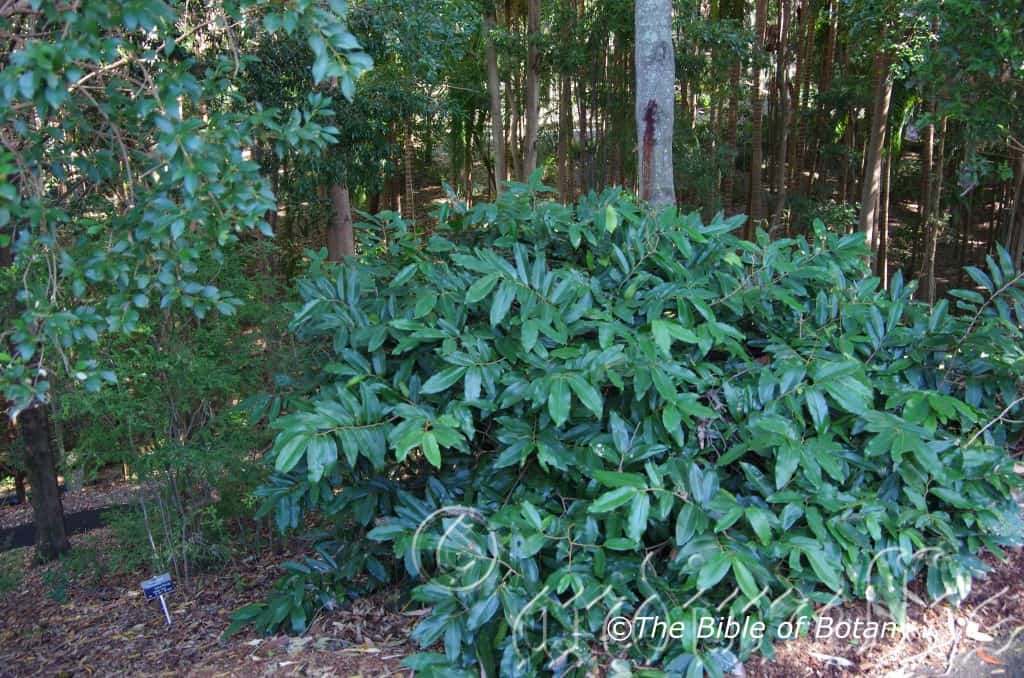
Mount Cootha Botanic Gardens Qld.
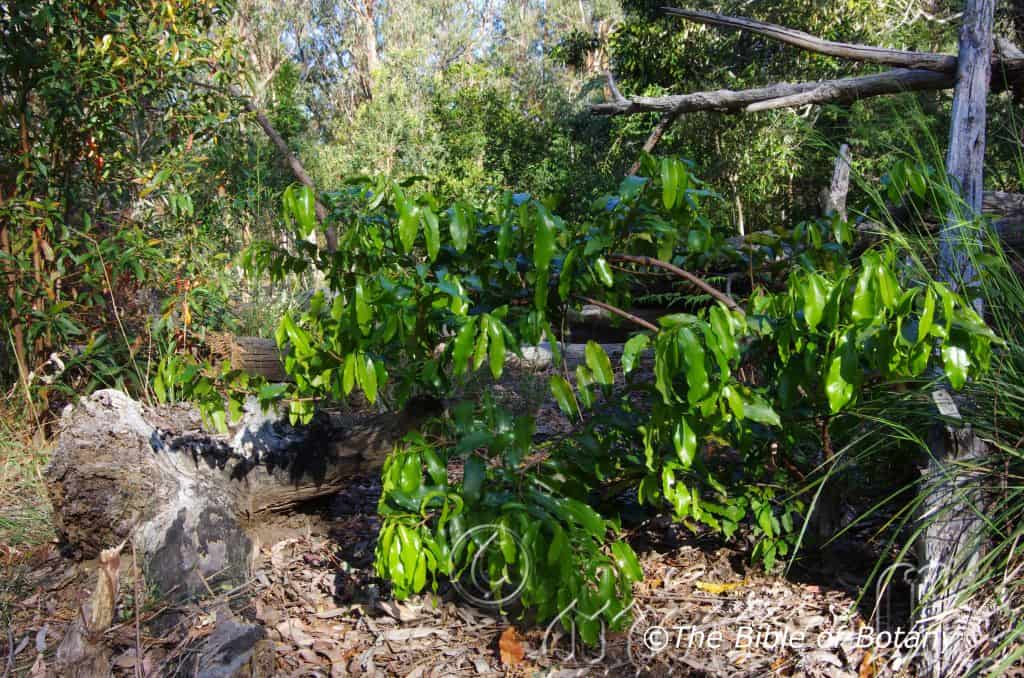
Author’s Garden The Pinnacles NSW
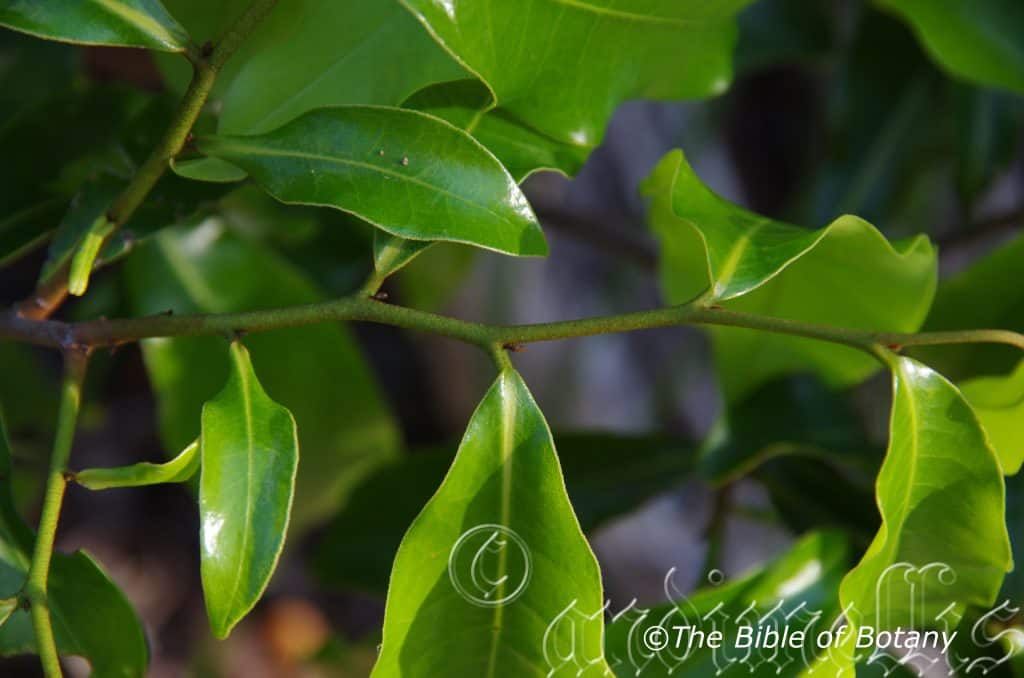
Author’s Garden The Pinnacles NSW
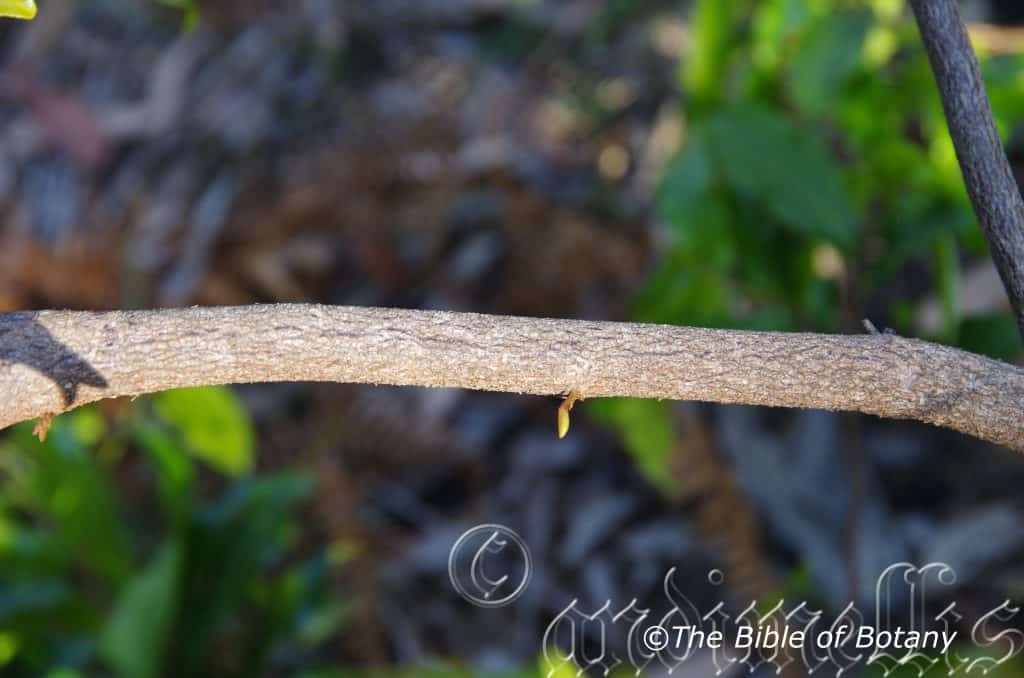
Author’s Garden The Pinnacles NSW
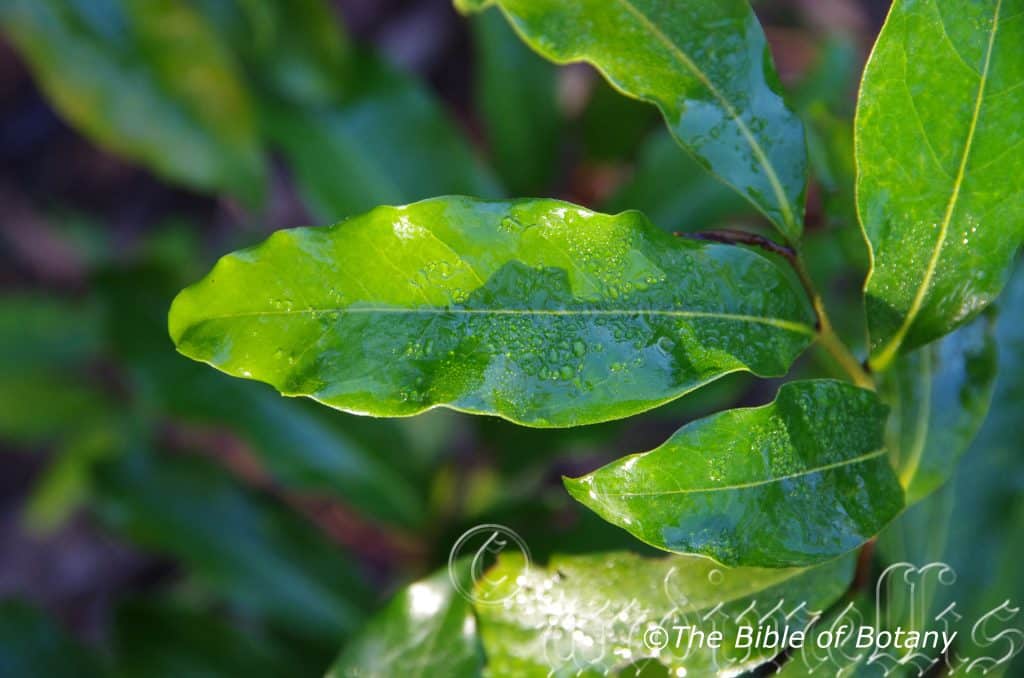
Author’s Garden The Pinnacles NSW
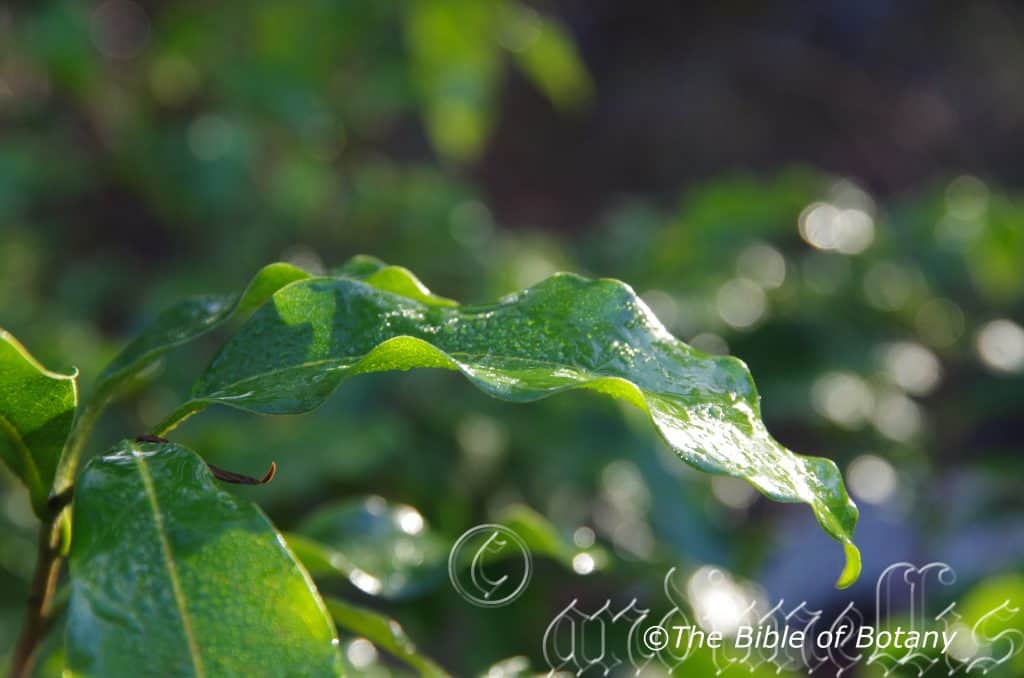
Author’s Garden The Pinnacles NSW
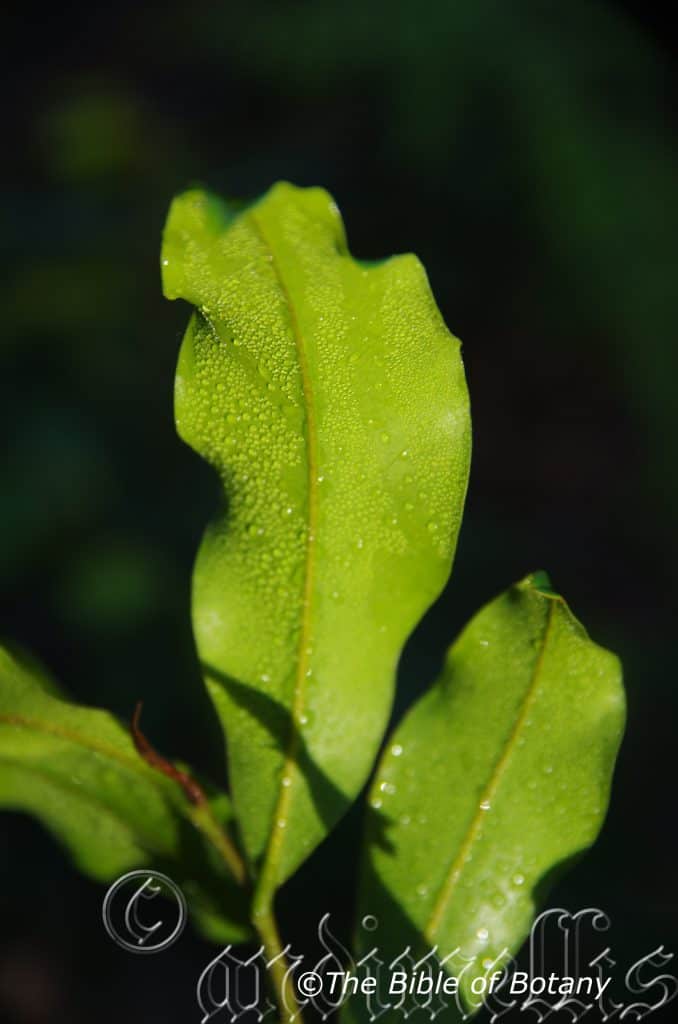
Author’s Garden The Pinnacles NSW

Author’s Garden The Pinnacles NSW

Author’s Garden The Pinnacles NSW
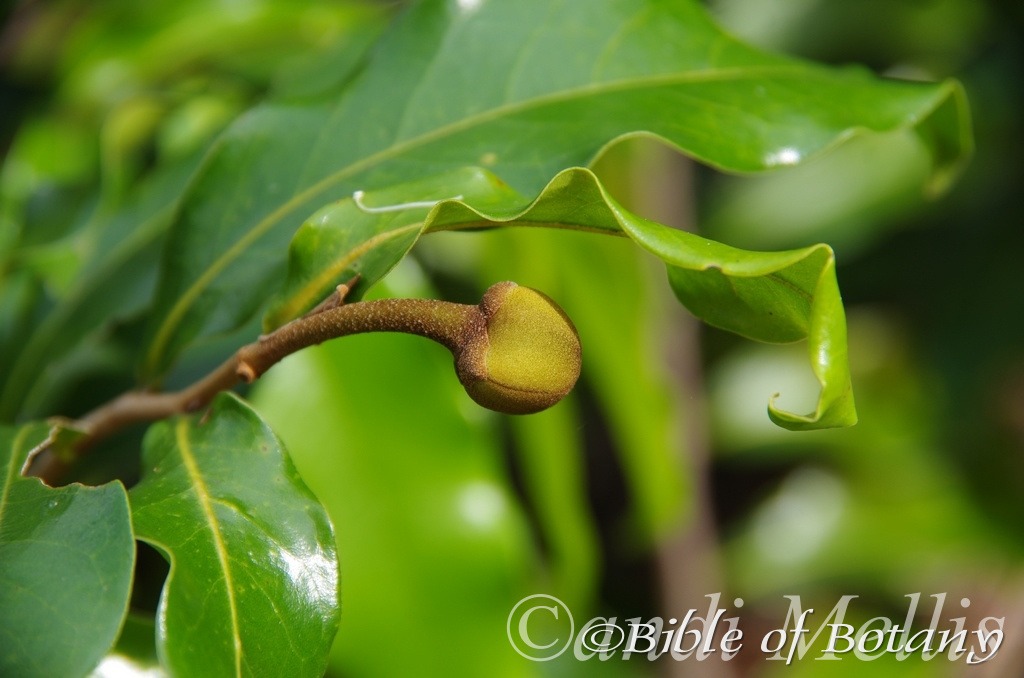
Author’s Garden The Pinnacles NSW
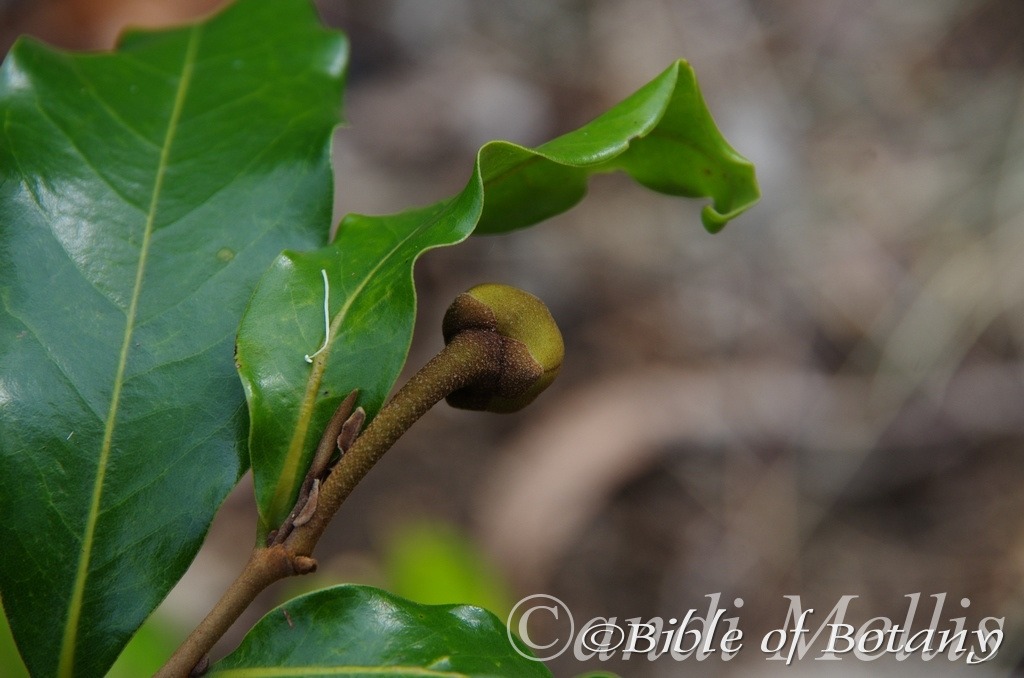
Author’s Garden The Pinnacles NSW
Melodorum leichardtii
Classification:
Unranked:
Unranked: Charophyta
Class: Equisetopsida
Sub Class: Magnoliidae
Order: Magnoliales
Family: Annonaceae
Genus: From Méli/Méllis, which is Ancient Greek for honey, sweet or pleasant and Odōrātum, which is Ancient Greek for an aroma. It usually refers to the flowers, which have a distinguishable herbal honey scent but here it refers to the leaves when crushed having a somewhat honey aroma as the flowers smell somewhat like ripe bananas when they emit an odour. Note: Still widely known as Uvaria leichhardtii.
Specie: Is named in honour of F.W. Ludwig Leichhardt; 1813 – 1848, who was a Prussian born Australian explorer and plant collector.
Sub species:
Common Name: Zig Zag Vine
Distribution:
Melodorum leichardtii is found south from the Toress Strait Islands in far North eastern Queensland to W Andersons Sugarloaf trail, New England National Park in north eastern New South Wales.
It is also found in New Guinee.
https://avh.ala.org.au/occurrences/search?taxa=Meliodorum+leichardtii#tab_mapView
https://avh.ala.org.au/occurrences/search?taxa=Uvaria+leichhardtii#tab_mapView
Habitat Aspect Climate:
Melodorum leichardtii prefers light dappled shade to full shade. It usually grows in moist gallery forests but can be found growing in well-developed rainforests, warm tropical rainforest or sub-tropical rainforests. The altitude ranges from 5 meter ASL to 1000 meters ASL.
The temperatures range from 2 degrees in August to 40 degrees in January.
The rainfall ranges from lows of 800mm to an average of 3200mm.
Soil Requirements:
Melodorum leichardtii prefers light sandy loams to medium clays. The soils are usually derived from brown basalts, black basalts close to the parent rock, accumulated beach sands, accumulated coral sands or at times decomposed granites. The soils pH ranges from 4.5pH to 6pH. It does not tolerate waterlogged soils. Non saline soils to moderately saline soils are tolerated.
Height & Spread:
Wild Plants: 2m to 40m by 4m to 15m depending on whether it growing like a shrub or vine.
Characteristics:
Melodorum leichardtii’s main stems are deep brown to deep grey and black, rough, thick and corky to tessellated. The young stems are pale brown and scabrous and covered in short rusty to ferruginous stellate hairs.
Melodorum leichardtii’s opposite leaves are ovate to lanceolate and measure 60mm to 120mm by 20mm to 50mm in width. The base is cuneate while the apex is obtuse. The concolourous laminas are sea-green, glossy and glabrous while the immature leaves and newly emerging leaves are bright lime green, glabrous and glossy. The margins are entire while the lamina curves upwards from the mid vein. The mid vein is prominent on the lower lamina and is visible on the upper lamina. The petioles are covered in short rusty to ferruginous stellate hairs and measure 2mm to 10mm in length. The middle petiole is the longer than the 2 lateral petioles.
The inflorescence of Melodorum leichardtii born singularly, in pairs, threes or at times four from what appears to be opposite the upper leaf axils. In fact the shoots grow out from the terminal points as the flowers appear. The 4 thick fleshy, brown semi obtuse calyx lobes are covered in ferruginous stellate hairs and measure 3mm to 3.5mm in length. The 6 creamy yellow or creamy yellow-orange broadly obovate petals have a broadly acute apex and are sparsely covered in ferruginous hairs. The petals measure 10mm to 16mm in length by 10mm to 15mm in width. The inner 3 petals are slightly paler in colour and are fused at the base. The petals never fully open instead split and remain semi closed. The pedicels measure 20mm to 30mm in length.
The 4 white stamens are glabrous and measure 2mm to 3mm in length.
The single, short, glabrous style’s stigma is wider than the ovary and measures 4mm to 6mm in length while the stigma measures 1.6 to 2mm in diameter. The 8 to 20 locule ovaries are covered in short brown tortuous hairs. The flowers have the scent reminiscent of very ripe bananas and appear from mid-November right through to early January.
Melodorum leichardtii’s fruits are long chain like carpels. The green carpels are glaucous, and turn soft, yellow-orange and fleshy on ripening. The individual carpels measure 20mm to 40mm in length by 8mm to 12mm in diameter. The capsules are weekly to strongly constrict between the seeds. The pedicel measures 10mm to 16mm in length. The 2 to 5 ellipsoidal, brown seeds are glabrous, semi glossy and measures 4mm to 5mm in length by 2.5mm to 3.5mm in diameter. The bases are truncate while the apexes are acute.
Wildlife:
Melodorum leichardtii’s flowers are popular with many butterflies when in flower and is the host plant for the beautiful Hypolimnas bolina butterfly. http://lepidoptera.butterflyhouse.com.au/faqs/garden.html
In the north of its range it is also the host tree to the larvae of the Fourbar Swordtail (Protographium leosthenes), Blue Tiger (Tirumala hamata), and the Pale Green Triangle (Graphium eurypylus) butterflies. Common & Waterhouse (1989) and Sansky & Waterhouse (2000).
The fruits are also eaten by the Grey Headed Flying Fox (Pteropus poliocephalus) and Little red flying fox (Pteropus scapulatus) while the fallen fruits are eaten by the Native brown Rat (Rattus fuscipes), the White Tailed Rat (Hydromys chrysogaster) and probably the Cassowary (Casuarius casuarius) in the north of its range.
The fruits are also eaten by the Grey Headed Flying Fox (Pteropus poliocephalus) and Little red flying fox (Pteropus scapulatus) while the fallen fruits are eaten by the Native brown Rat (Rattus fuscipes), the White Tailed Rat (Hydromys chrysogaster) and probably the Cassowary (Casuarius casuarius) in the north of its range.
The fruits are edible and have a sweet but a slight acidic lemon sherbet flavour.
Cultivation:
Melodorum leichardtii makes an excellent creeper for larger, sturdy, well built pergolas where there is filtered light. It always looks green and fresh especially where adequate ground moisture is retained in the soil. It is very suitable on medium clays to heavy clay soils and are most suitable for small medium and large gardens close to the coast in warm temperate, warm sub-tropical or tropical gardens. As a garden subject it will grow from 20 meters to 30 meters by 5 meters to 10 meters wide when grown in the open.
It can be grown as a dense scrambling shrub by pruning on a regular basis. It should be more widely grown in cultivation as a niche crop on trellises or as a shrub. Here at the Pinnacles the plants grew for 3 and 4 years as a large shrub before taking off as a rampant climber.
It is cold tolerant to temperatures as low as 1 degree once established.
It can be used as a rainforest vine but will need good well developed trees to climb on and the beauty of the flowers and fruits will be lost high in the trees except for the few fruits which will fall to the ground.
I do not know whether or not fruit fly is a problem. If it is then if it can be overcome then this vine may have good commercial opportunities as the fruit is of good size, quality, quantity and has a reasonable shelf life. Plants can be grown as sub shrubs to produce reasonable quantities of fruit naturally in good seasons so with good maintenance practices this should be duplicated in an agricultural system. Like other crops Davidsonia jams are presently selling for over $1,000 a kilogram, native finger lime jams at $100 a kilogram, Syzygium jam at $35 a kilogram and Syzygium beverages at $110 a litre. These have all been recommended by me in the past without much take up. This could well be the next Davidson’s plum jam.
Propagation:
Seeds: Melodorum leichardtii seeds can be sown directly into a seed raising mix. Cover the seeds with 2mm to 3mm of fine weed free mulch and keep moist. Place the tray in a warm sunny position. When the seedlings are 30mm to 50mm tall, prick them out and plant them into 50mm native tubes using a good organic mix.
Once the seedlings reach 100mm to 150mm in height they can be planted out into their permanent position.
Fertilize using Seaweed, fish emulsion or organic chicken pellets soaked in water and apply the liquid on an alternate basis. Fertilize every 2 months until the plants are well established then on an annual basis in September or March to maintain better health, vitality and flowering.
Cuttings:
Cuttings must be used if fruiting in the following season or a particular fruit quality is required. Fortunately Melodorum leichardtii strikes easy from cuttings. Use 100mm to 150mm long half ripened to fully mature material when growing from cuttings from the present season’s growth. Take them in warmer months of the year. Remove half the leaves from the bottom section being careful not to tear the bark.
1 Prepare the cutting mix by adding one third sharp clean river sand, one third peat and one third perlite. These ingredients are sterilize,
2 Select good material from non diseased plants,
3 Select semi green stems for cuttings. Look for a stem with two or three nodes,
4 Place the cutting on a flat, hard surface, and make a clean cut down one side of the cutting at the base for 10mm with a sharp sterile knife or razor blade. – This scarification of the node will increase the chances of roots emerging from this spot. Now remove all but one or two the leaves, leaving the apex leaves in tact. If the leaves are very large in proportion to the stem, cut off the apical halves.
5 Fill a saucer with water, and place a little medium strength rooting hormone into another container like a milk bottle top. Dip the node end of the cutting into the water and then into the rooting hormone. Tap off any excess hormone,
6 Use a small dipple stick or old pencil to poke a hole into the soilless potting mix. Ensure the hole is slightly larger than the stem diameter and be careful not to wipe the rooting hormone off the cuttings base, place the cuttings in a pattern ensuring the cuttings are not touching each other,
7 I like to place the pots in Plastic bags to help maintain temperature and moisture. Place in a semi shaded place like under 50mm shade cloth.
8 When the cuttings have struck, open the bag to allow air circulation for a few days to a week,
9 Once hardened off remove the cuttings from the bag and allow to further hardening for a few more days,
10 Transplant into a good potting mix to grow on.
Fertilize using seaweed, fish emulsion or organic chicken pellets soaked in water on an alternate basis. Fertilize every two months until the plants are established then twice annually in early September or March to maintain health, vitality and better flowering.
Further Comments from Readers:
Hi reader, it seems you use The Bible of Botany a lot. That’s great as we have great pleasure in bringing it to you! It’s a little awkward for us to ask, but our first aim is to purchase land approximately 1,600 hectares to link several parcels of N.P. into one at The Pinnacles NSW Australia, but we need your help. We’re not salespeople. We’re amateur botanists who have dedicated over 30 years to saving the environment in a practical way. We depend on donations to reach our goal. If you donate just $5, the price of your coffee this Sunday, We can help to keep the planet alive in a real way and continue to bring you regular updates and features on Australian plants all in one Botanical Bible. Any support is greatly appreciated. Thank you.
In the spirit of reconciliation we acknowledge the Bundjalung, Gumbaynggirr and Yaegl and all aboriginal nations throughout Australia and their connections to land, sea and community. We pay our respect to their Elders past, present and future for the pleasures we have gained.
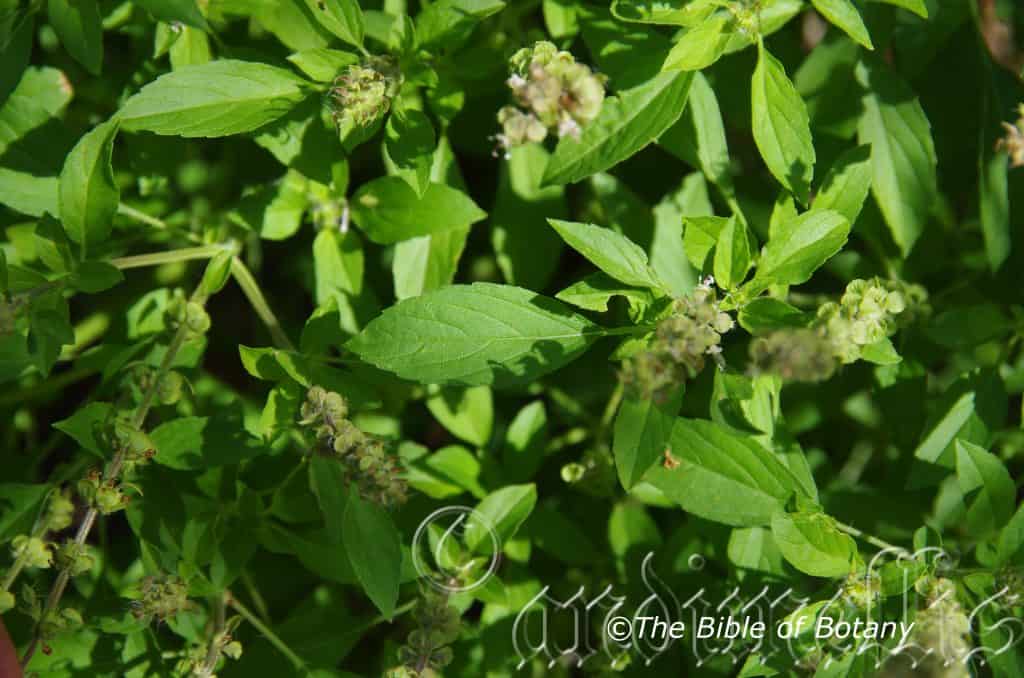
Townsville Botanic Gardens Qld.
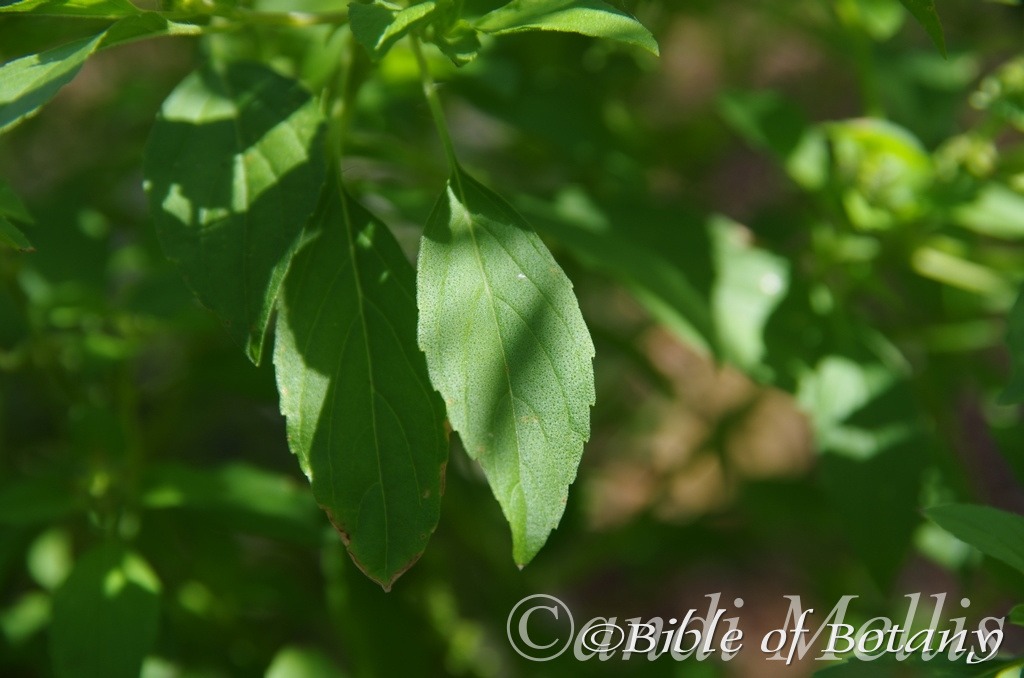
Townsville Botanic Gardens Qld.
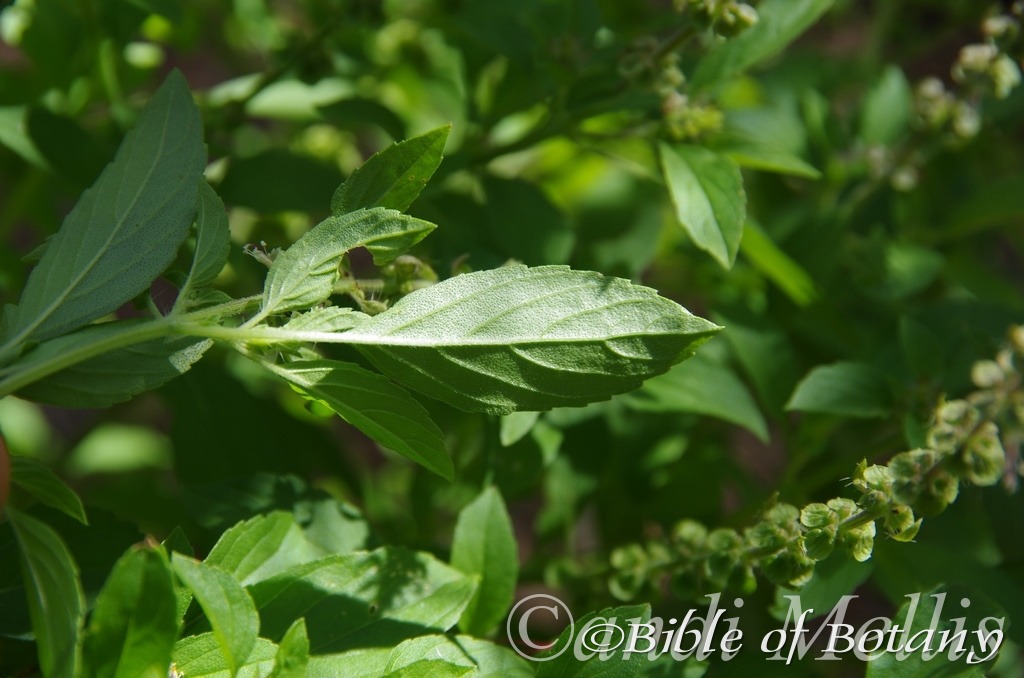
Townsville Botanic Gardens Qld.
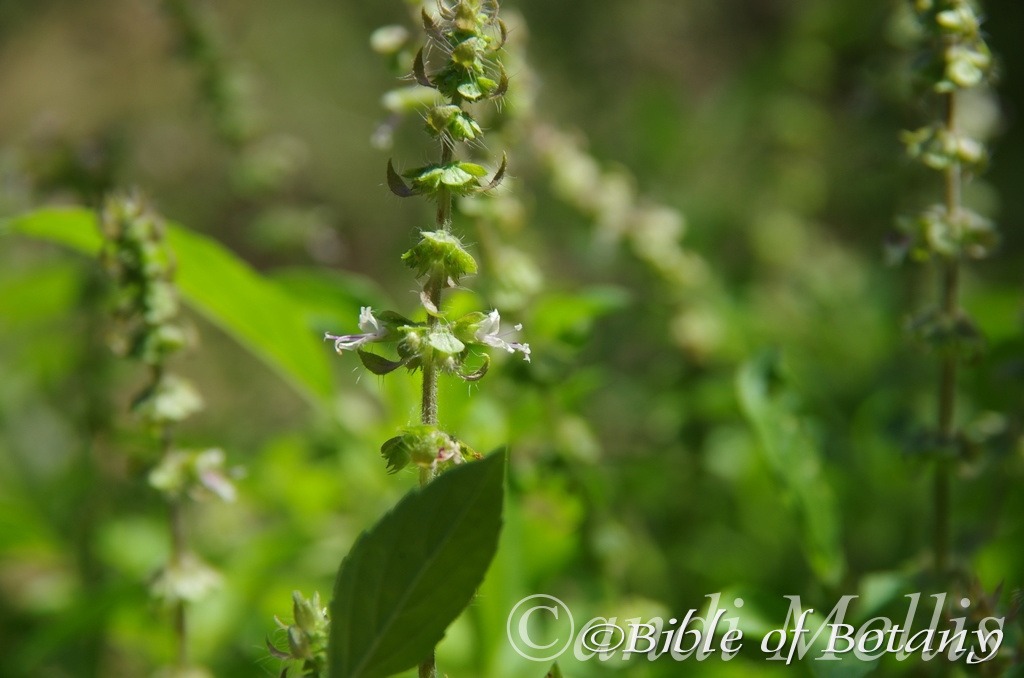
Townsville Botanic Gardens Qld.
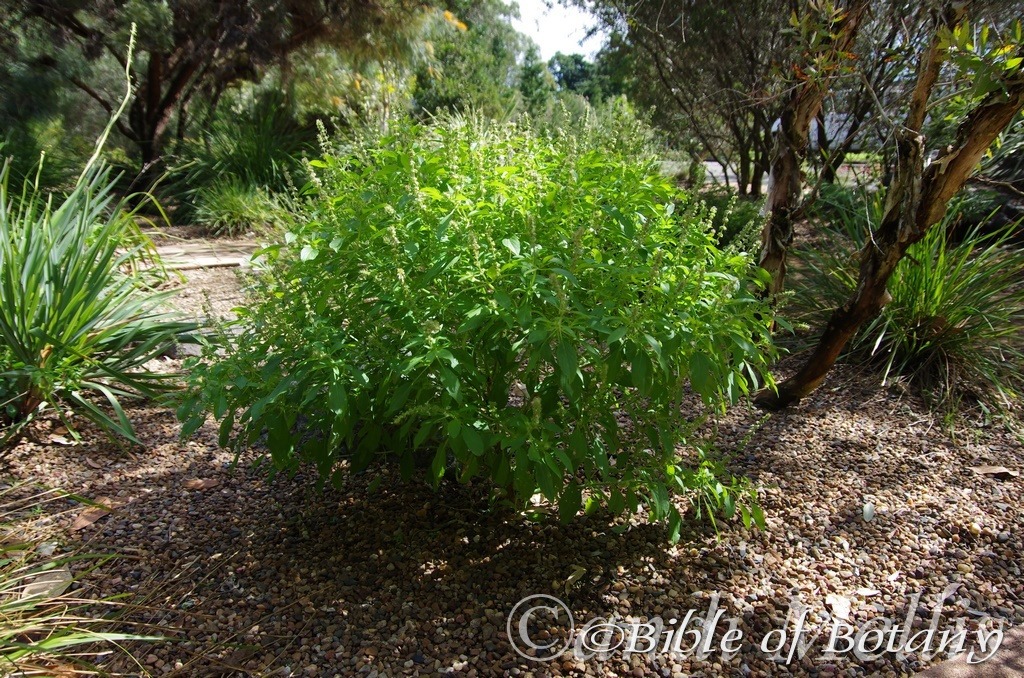
Townsville Botanic Gardens Qld.
Mentha diemenica
Classification::
Unranked: Eudicots
Unranked: Asterids
Order: Lamiales
Family: Lamiaceae
Tribe: Mentheae
Genus: From Mentha, which is Latin for mint. It refers to herbs, which are related to the herb mint and often having a mint like odour.
Specie: From Diemen, which is Latinized from Van Diemen’s Land. It refers to plants, which were first discovered from Tasmania, which was originally known as Van Diemen’s Land.
Sub species:
Common Name: Creeping Mint or Native Pennyroyal.
Distribution:
Mentha diemenica is found south from Herberton in far north Queensland to the Mount Lofty ranges near Adelaide.
In Tasmania it is found on King Island and the Flinders Island, group in Bass Strait while it covers most of the main Island of Tasmania except for the highlands.
There is an isolated population found near York on the Swan River in Western Australia. It is not known whether this is a natural occurrence or a past escapee.
https://avh.ala.org.au/occurrences/search?taxa=Mentha+diemenica#tab_mapView
Habitat Aspect Climate:
Mentha diemenica prefers light dappled shade to full sun. It usually grows in moist Eucalyptus forests, moist open woodlands along creeks and stream banks near swamps, moist heaths or natural shallow depressions. The altitude ranges from 10 meters ASL to 1250 meters ASL.
The temperatures range from minus 5 degrees in August to 40 degrees in January.
The rainfalls range from lows of 150mm to an average of 2100mm.
Soil Requirements:
Mentha diemenica prefers better quality sandy loams to medium clays or light silts to heavy silts. The soils are usually derived from better quality decomposed sandstones, granites brown basalts, black basalts or alluvial deposits. The soils pH ranges from 5pH to 7pH. It tolerates seasonal waterlogged soils that are free draining. Non saline soils to moderately saline soils are tolerated.
Height & Spread:
Wild Plants: 0.5m to 1m by 0.3m to 0.8m.
Characteristics:
Mentha diemenica grows as a broad mat forming rhizomatous herb. It usually produces prostrate stems or at times ascending stems. The stems are moderately to densely covered in short recurved hirsute hairs.
Mentha diemenica’s leaves are usually opposite or at times in whirls of 3 and are ovate are usually angular ovate or rarely narrow ovate or elliptic. The leaves measure 6mm to 20mm in length by 4mm to 12mm in width. The petioles measure 0mm to 3mm in length. The bases are rounded while the apexes are obtuse. The concolourous to discolourous laminas are mid green to grey-green, semi glossy or dull and glabrous on the upper laminas while the lower laminas are similar or slightly paler and sparsely covered in long, white tomentose hairs. The laminas recurve slightly upwards from the mid vein to the margins and are straight while the margins are undulating and entire or with shallow teeth. The mid vein is slightly prominent on the lower lamina and is clearly visible on the upper lamina.
The inflorescences of Mentha diemenica are born in clusters of 3 to 8 individual flowers from the leaf axils. The grass-green calyxes have 13 fine longitudinal ridges. The calyxes are united for at least two-thirds its length and measure 3mm to 5mm in length. The 5 calyx lobes are narrow triangular with narrow acute apexes. The calyx lobes are densely covered in short white ciliate hairs and measure 1.5mm to 3.5mm in length. The white to pale purple or lilac corolla measures 4mm to 7mm in length. The 4 oblong to ovate lobes have obtuse apexes and measure 3mm to 6mm in length.
The 4 white, lilac to pale purple stamens are covered in long, white, proximal, hirsute hairs. The exserted filaments are adjacent to the lobes and measure 8mm to 10mm in length. The cream to pale fawn dorsifixed anthers are ovoidal and dehisce longitudinally. The white, lilac to pale pinkish-purple style has a white or pale pinkish-purple bifid stigma and is exserted and positioned opposite one of the lobes. The pistil measures 8.5mm to 13mm in length. The flowers appear throughout the year under favourable conditions with a peak from November to February.
Mentha diemenica’s fruits are globose capsules surrounded by the persistent calyxes and lobes. The pale green tinged reddish, fleshy capsules turn fawnish-grey when ripe. The minute seeds are black.
Wildlife:
Mentha diemenica’s flowers are popular with the native bees Tetragonula carbonaria and the Blue banded bee Amegilla cingulata.
Cultivation:
Mentha diemenica makes an excellent medium to large rockery or bank stabilizer plants on moist soils in a sunny to medium shaded position. It always look green and fresh especially where adequate ground moisture is retained throughout the year. It is most suitable for small, medium and large gardens close to the coast in sub-tropical gardens or tropical gardens and would be worthwhile trying in semi-arid zones where adequate water can be guaranteed. As garden subjects they will grow from 0.5 meters to 0.8 meter by 1.5 meters to several meters in diameter under favourable conditions.
It is most suitable for use around contained garden beds, besides pathways, shady rockeries, along sandy clay banks, along drive ways, between driveways, adjacent to natural bush gardens paths and riverine restoration. In cultivation it is a very desirable plant between driveway strips, paths or near stepping stones where it trodden on so it can release the fragrance from its aromatic leaves for only then can it be fully appreciated.
Propagation:
Seeds: Mentha diemenica seeds can be sown directly into a seed raising mix. Cover the seeds with 5mm to 10mm of fine weed free mulch and keep moist. Place the tray in a warm sunny position.
When the seedlings are 30mm to 50mm tall, prick them out and plant them into 50mm native tubes using a good organic mix.
Once the seedlings reach 100mm to 150mm in height they can be planted out into their permanent position.
Cuttings: The easiest way to propagate Mentha diemenica is from cuttings taken at any time of the year in frost free areas when the plant is growing vigorously. Take 150mm to 200mm cuttings from the tips and remove the leaves from the lower third of the stem being careful not to tear the stem. A rooting hormone is not required as the cuttings strike easily and within a couple of weeks. Place the cuttings in a cool semi shaded position preferably under 50mm shade cloth and keep moist to wet.
Fertilize using seaweed, fish emulsion or organic chicken pellets soaked in water on an alternate basis. Fertilize every two months until the plants are established then twice annually in early September or March to maintain health, vitality and better flowering.
Further Comments from Readers:
Hi reader, it seems you use The Bible of Botany a lot. That’s great as we have great pleasure in bringing it to you! It’s a little awkward for us to ask, but our first aim is to purchase land approximately 1,600 hectares to link several parcels of N.P. into one at The Pinnacles NSW Australia, but we need your help. We’re not salespeople. We’re amateur botanists who have dedicated over 30 years to saving the environment in a practical way. We depend on donations to reach our goal. If you donate just $5, the price of your coffee this Sunday, We can help to keep the planet alive in a real way and continue to bring you regular updates and features on Australian plants all in one Botanical Bible. Any support is greatly appreciated. Thank you.
In the spirit of reconciliation we acknowledge the Bundjalung, Gumbaynggirr and Yaegl and all aboriginal nations throughout Australia and their connections to land, sea and community. We pay our respect to their Elders past, present and future for the pleasures we have gained.
Mentha sateioides
Classification:
Unranked: Eudicots
Unranked: Asterids
Order: Lamiales
Family: Lamiaceae
Tribe: Mentheae
Genus: From Mentha, which is Latin for mint. It refers to herbs, which are related to the herb mint and often having a mint like odour.
Specie: From Sativa, which is Latin for cultivated and Eîdos/Oides, which is Ancient Greek for alike or similar to. It refers to plants, which resemble the cultivated sativa genus in either appearance or scent.
Many Botanists now consider this to be a subspecie or variety of Mentha diemenica. I am treating it as a separate species until the Australian Virtual Herbarium conclude their research and decides on its position.
Sub species:
Common Name: Creeping Mint or Native Pennyroyal.
Distribution:
Mentha satureioides is found south from Herberton in far north Queensland to the Mount Lofty ranges near Adelaide.
In Tasmania it is found on King Island and the Flinders Island, group in Bass Strait while it covers most of the main Island of Tasmania except for the highlands.
https://avh.ala.org.au/occurrences/search?taxa=Mentha+sateioides#tab_mapView
Habitat Aspect Climate:
Mentha satureioides prefers light dappled shade to full sun. It usually grows in moist Eucalyptus forests, moist open woodlands along creeks, stream banks near swamps, moist heaths or natural shallow depressions. The altitude ranges from 10 meters ASL to 1250 meters ASL.
The temperatures range from minus 5 degrees in August to 40 degrees in January.
The rainfalls range from lows of 150mm to an average of 2100mm.
Soil Requirements:
Mentha satureioides prefers sandy loams to medium clays and light to heavy silts. The soils are usually derived from better quality decomposed sandstones, granites brown basalts, black basalts or alluvial deposits. The soils pH ranges from 5pH to 7pH. It tolerates seasonal waterlogged soils that are free draining. Non saline soils to moderately saline soils are tolerated.
Height & Spread:
Wild Plants: 0.2m to 0.5m by 0.3m to 0.8m.
Characteristics:
Mentha satureioides is a broad mat forming rhizomatous herb. It usually produces prostrate stems or at times ascending stems. The stems are moderately to densely covered in short recurved hirsute hairs.
Mentha satureioides’s leaves are usually opposite or at times in whirls of 3 and are narrow elliptic to linear-elliptic. The leaves measure 5mm to 35mm in length by 2mm to 7mm in width. The petioles measure 0mm to 3mm in length. The bases are rounded while the apexes are obtuse. The concolourous to discolourous laminas are mid green to grey-green, semi glossy or dull and glabrous on the upper laminas while the lower laminas are similar or slightly paler and sparsely covered in long, white tomentose hairs. The laminas recurve slightly upwards from the mid vein to the margins and are straight while the margins are undulating and entire. The mid vein is slightly prominent on the lower lamina and is clearly visible on the upper lamina.
The inflorescences of Mentha satureioides are usually born in clusters of 3 individual flowers from the leaf axils. The grass-green calyxes have 13 fine longitudinal ridges. The calyxes are united for at least two-thirds its length and measure 3mm to 5mm in length. The 5 calyx lobes are deltoid with broad acute apexes. The calyx lobes are moderately covered in short white hirsute hairs with longer ciliate hairs on the margins. The calyx lobes measure 1.5mm to 3.5mm in length. The white to pink corolla measures 3mm to 5mm in length. The 4 oblong to ovate lobes have obtuse apexes and measure 3mm to 6mm in length.
The 4 white, pink stamens are covered in long, white, proximal, hirsute hairs. The exserted filaments are adjacent to the lobes and measure 7mm to 9mm in length. The cream to pale fawn dorsifixed anthers are ovoidal and dehisce longitudinally. The white pink style has a white or pink bifid stigma and is exserted and positioned opposite one of the lobes. The pistil measures 8mm to 12mm in length. The flowers appear throughout the year under favourable conditions with a peak from September to February.
Mentha satureioides’s fruits are globose capsules surrounded by the persistent calyxes and lobes. The pale green tinged reddish, fleshy capsules turn fawnish-grey when ripe. The minute seeds are black.
Wildlife:
Mentha satureioides flowers are popular with the native bees Tetragonula carbonaria and the Blue banded bee Amegilla cingulata.
Cultivation:
Mentha satureioides makes an excellent medium to large rockery or bank stabilizer plants on moist soils in a sunny to medium shaded position. It always look green and fresh especially where adequate ground moisture is retained throughout the year. It is most suitable for small, medium and large gardens close to the coast in sub-tropical gardens or tropical gardens and would be worthwhile trying in semi-arid zones where adequate water can be guaranteed. As garden subjects they will grow from 0.4 meters to 0.5 meter by 1 meter to several meters in diameter under favourable conditions.
It is most suitable for use around contained garden beds, besides pathways, shady rockeries, along sandy clay banks, along drive ways, between driveways, adjacent to natural bush gardens paths and riverine restoration. In cultivation it is a very desirable plant between driveway strips, paths or near stepping stones where it trodden on so it can release the fragrance from its aromatic leaves for only then can it be fully appreciated.
Menthe satureioides appears not be vigorous as Mentha diemenica.
Propagation:
Seeds: Mentha satureioides seeds can be sown directly into a seed raising mix. Cover the seeds with 5mm to 10mm of fine weed free mulch and keep moist. Place the tray in a warm sunny position. When the seedlings are 30mm to 50mm tall, prick them out and plant them into 50mm native tubes using a good organic mix.
Once the seedlings reach 100mm to 150mm in height they can be planted out into their permanent position.
Cuttings: The easiest way to propagate Mentha satureioides is from cuttings taken at any time of the year when the plant is growing vigorously. Take 100mm to 150mm cuttings from the and remove the leaves from the lower third of the stem being careful not to tear the stem. A rooting hormone is not required as the cuttings strike easily and within a couple of weeks. Place the cuttings in a cool semi shaded position preferably under 50mm shade cloth and keep moist to wet.
Another method is to use divisions when rooted suckers appear. These can be easily severed and transplanted directly in the new situation or pots. These new plants must be kept moist after transplanting until the new shoots appear along the stems.
Fertilize using seaweed, fish emulsion or organic chicken pellets soaked in water on an alternate basis. Fertilize every two months until the plants are established then twice annually in early September or March to maintain health, vitality and better flowering.
Further Comments from Readers:
Hi reader, it seems you use The Bible of Botany a lot. That’s great as we have great pleasure in bringing it to you! It’s a little awkward for us to ask, but our first aim is to purchase land approximately 1,600 hectares to link several parcels of N.P. into one at The Pinnacles NSW Australia, but we need your help. We’re not salespeople. We’re amateur botanists who have dedicated over 30 years to saving the environment in a practical way. We depend on donations to reach our goal. If you donate just $5, the price of your coffee this Sunday, We can help to keep the planet alive in a real way and continue to bring you regular updates and features on Australian plants all in one Botanical Bible. Any support is greatly appreciated. Thank you.
In the spirit of reconciliation we acknowledge the Bundjalung, Gumbaynggirr and Yaegl and all aboriginal nations throughout Australia and their connections to land, sea and community. We pay our respect to their Elders past, present and future for the pleasures we have gained.
Mezoneuron brachycarpum
Classification
Class: Eudicots
Class: Equisetopsida
Subclass: Magnoliidae
Order: Fabales
Family: Fabaceae
Genus: From Mezo, which is Ancient Greek for greater than and Neuron, which is Ancient Greek for a nerve. It refers to nerves on one side of the flat pods which are greatly protruded.
Specie: From Brachus, which is Ancient Greek for short and Karpós, which is Ancient Greek for a fruit. It refers to plants which have small fruits.
Sub specie:
Common Name: Corky Prickle Vine.
Distribution:
Mezoneuron brachycarpum is found in several disjunct populations south from the Daintree River and Russel River, ranges near Rockhampton in and Mount Bopple in coastal Queensland then south to north west of Port Macquarrie in north eastern New South Wales. It is found on and east of the Great Dividing Range to the coast.
https://avh.ala.org.au/occurrences/search?taxa=Mezoneuron+brachycarpum#tab_mapView
Habitat Aspect Climate:
Mezoneuron brachycarpum prefer dappled shade to full shade. It grows in or adjacent to littoral rainforests, warm sub-tropical and cool tropical rainforests. The altitude ranges from 6 meters ASL to 440 meters ASL.
The temperatures range from 3 degree in July to 36 degrees in January.
The rainfall ranges from lows of 800mm to 3000mm average per annum.
Soil Requirements:
Mezoneuron brachycarpum prefers better quality, light gravelly clays to medium clays. The soils are usually derived from decomposed basalts. The soils pH ranges from 5.5pH to 7pH. It does not tolerate waterlogged soils, however the soils generally have good water holding capacity. Non saline soils to slightly saline soils are tolerated.
Height & Spread:
Wild Plants: 12m to 20m by 6m to 12m.
Characteristics:
Mezoneuron brachycarpum grows as a tall, woody vine. Juvenile stems and new shoots are semi glossy golden-brown, moderately to densely covered in white pubescent hairs, with scattered prickles, which measure 1mm to 3mm in length. The older, dull, fawn stems have prominent longitudinal, corky flanges, greater than the diameter of the stems.
The adjacent leaves of Mezoneuron brachycarpum measure 60mm to 320mm in length. The rachis is covered in fine prickles that measure 1mm to 3mm in length. There are 3 to 10 pairs of opposite to sub opposite pinnae, which measure 40 to 180mm in length. The 4 to 10 pairs of obovate to oblong subopposite pinnules measure 4mm to 12mm in length by 5mm to 7mm in width. The pinnules are glabrous to sparsely covered in white pubescent hairs. The base is obtuse while the apex is obtuse. The concolourous laminas are mid blue-green to deep green and glabrous. The petiole measures 15mm to 50mm in length.
The inflorescences of Mezoneuron brachycarpum are terminal panicles, which measure 100mm to 200mm in length and diameter. There are 70 to 140 flowers in a panicle. The rachis and pedicels are glabrous to sparsely covered in golden pubescent hairs and are sparsely covered in broad prickles, which measure 1mm to 3mm in length. The pedicels measure 3mm to 4mm in length.
The golden yellow sepals and petals are glabrous and measure 3.5mm to 4.5mm in length.
The glabrous, deep golden yellow filaments measure 5mm to 8mm in length while the linear, basifixed anthers are tan.
The greenish-yellow, bilobed style and stigma measure 3.5mm to 4.5mm in length. The flowers appear from September to February.
The fruits of Mezoneuron brachycarpum are ovate to rhombic flattened, glabrous pods measure 20mm to 30mm in length by 10mm to 20mm in width. The mid green pods turn brown when ripe and have prominent longitudinal venation. There are usually 2 or at times 3 flat, round seeds.
Wildlife:
Mezoneuron brachycarpum is the host to numerous beetles, native flies, midget wasps, butterflies, native bees and pollen flies when in flower and in return attracts many small insectivorous birds.
Cultivation:
Mezoneuron brachycarpum is an attractive large vine suitable for a rainforest garden or to cover a pergola. If it becomes straggly or drops its leaves due to stress cut it back and apply a double dose of our fertilizer and give it a good soaking of water. Repeat the watering and fertilizing again a week later and the plants will recover to their former beauty very quickly. It is ideal for large gardens from the tropics to temperate Australia.
Propagation:
Seeds: Mezoneuron brachycarpum seeds can be sown directly into a seed raising mix after they have been removed from the pod and have been nicked. Cover the seeds with 5mm of fine sand and water keeping the mix moist. Place the trays in a warm airy position under 30% shade.
When the seedlings are 50mm to 70mm tall, prick them out and plant them into 50mm native tubes using a seed raising mix.
Once the seedlings reach 150mm in height nip the growing tips out and plant them out into their permanent position. Mass plantings can be achieved with planting them at 8 to 10 meter centres on a large fence.
Fertilize using Seaweed, fish emulsion or organic chicken pellets soaked in water on an alternate basis. Fertilize every two months until the plants are established then annually in early September or March to maintain health, vitality and better flowering.
Cuttings:
Cuttings are best taken in late winter or early spring.
Use 100mm to 150mm cuttings that are from present season’s growth.
1 Prepare the cutting mix by adding one third sharp clean river sand, one third peat and one third perlite. These ingredients are sterilized,
2 Select good material from non-diseased plants,
3 Select semi green stems for cuttings. Look for a stem with two or three nodes,
4 Place the cutting on a flat, hard surface, and make a clean slice through the middle of the lower node on an angle towards the base, with a sterilized sharp knife or razor blade. – This scarification of the node will increase the chances of roots emerging from this spot. Now remove all but one or two the leaves, leaving the apex leaves in tact. If the leaves are very large in proportion to the stem, cut off the apical halves.
5 Some plants root easily, but a rooting hormone can help others by stimulating the cutting into sending out new roots. Fill a saucer with water, and place some rooting hormone into another container like a bottle top. Dip the node end of the cutting into the water and then into the rooting hormone. Tap off any excess hormone,
6 Use a small dipple stick or old pencil to poke a hole into the soilless potting mix. Ensure the hole is slightly larger than the stem diameter and be careful not to wipe the rooting hormone off the cuttings base, place the cuttings in a pattern ensuring the cuttings are not touching each other,
7 I like to place the pots in Plastic bags to help maintain temperature and moisture. Place in a semi shaded place like under 50% shade cloth.
8 When the cuttings have struck, open the bag to allow air circulation for a few days to a week,
9 Once hardened off remove the cuttings from the bag and allow to further hardening for a few more days,
10 Transplant into a good potting mix to grow on.
Further Comments from Readers:
Hi reader, it seems you use The Bible of Botany a lot. That’s great as we have great pleasure in bringing it to you! It’s a little awkward for us to ask, but our first aim is to purchase land approximately 1,600 hectares to link several parcels of N.P. into one at The Pinnacles NSW Australia, but we need your help. We’re not salespeople. We’re amateur botanists who have dedicated over 30 years to saving the environment in a practical way. We depend on donations to reach our goal. If you donate just $5, the price of your coffee this Sunday, We can help to keep the planet alive in a real way and continue to bring you regular updates and features on Australian plants all in one Botanical Bible. Any support is greatly appreciated. Thank you.
In the spirit of reconciliation, we acknowledge the Bundjalung, Gumbaynggirr and Yaegl and all aboriginal nations throughout Australia and their connections to land, sea and community. We pay our respect to their Elders past, present and future for the pleasures we have gained.
Micrantheum ericoides
Classification:
Unranked: Eudicots
Unranked: Rosids
Class: Sub Class
Order: Sapindales
Family: Rutaceae
Genus: From Mikrós, which is Ancient Greek for small or very small and ántha/ánthos, which are Ancient Greek for the male reproductive organs on a flower or the flower. It refers to flowers, which are much smaller than other species in the genus.
Specie: From Erica, which is Latin for heath and Eîdos/Oides, which is Ancient Greek for alike or similar to. It refers to plants, which have foliage similar to the exotic Erica genus.
Sub species:
Common Name:
Distribution:
Micrantheum ericoides is found south from near Kilpowar in south eastern Queensland Deua National Park in central eastern New South Wales. It is found on the western slopes, on and east of the Great Dividing Range to the coast.
https://avh.ala.org.au/occurrences/search?taxa=Micrantheum+ericiodes#tab_mapView
Habitat Aspect Climate:
Micrantheum ericoides prefers light dappled shade to full shade. It grows in well dry sclerophyll forests or dry woodland heaths. The altitude ranges from 15 meter ASL to 830 meters ASL.
The temperatures range from minus 3 degrees in August to 40 degrees in January.
The rainfall ranges from lows of 800mm to an average of 3200mm.
Soil Requirements:
Micrantheum ericoides usually prefer poorer quality fine sands, light fatty clays or rarely medium clays. The soils are usually derived from decomposed sandstones, granites or at accumulated beach sands or rarely times brown basalts. The soils pH ranges from 5pH to 6.5pH. It does not tolerate waterlogged soils. Non saline soils to moderately saline soils are tolerated.
Height & Spread:
Wild Plants: 0.5m to 0.7m by 0.5m to 0.8m.
Characteristics:
Micrantheum ericoides grows as a small shrub with brown to reddish-brown branchlets. The branchlets are sparsely to moderately covered in long white hirsute hairs. The immature stems are deep pink to pinkish-brown sparsely to moderately covered in long white hirsute hairs.
The linear to narrow elliptic leaves are in small clusters of usually 3 leaves or at times 2 or 4 and appear separately or from a common peduncle. The leaves measure 4mm to 10mm in length by 1mm to 1.5mm in width. The peduncles are sparsely to moderately covered in long white hirsute hairs and measure 0.5mm to 1mm in length while the pedicels measure 0mm to 1mm in length. The bases are cuneate or taper while the apexes are acute. The discolourous laminas are deep green to sea-green, semi glossy and sparsely covered small papillate lumps on the upper laminas awhile the lower laminas are much paler and sparsely to densely covered in fawnish pulverulent hairs. The laminas are flat and straight except for the acute apexes which decurve downwards sharply. The margins are entire and almost revolute. The mid vein is strongly prominent on the lower lamina and is not distinctly visible on the upper lamina.
The monoecious inflorescence are born solitary or in pairs from the leaf axils. The pedicels measure 1mm to 2mm in length. The 3 obtuse white tinged green or tinged pink, cupular calyx lobes are glabrous and measure 1.5mm to 2mm in length. The 3 white orbicular petals measure 2mm to 2.5mm in length by 2mm to 2.5mm in width.
The 3 white stamens on the male flowers are glabrous and measure 1mm to 1.5mm in length. The lime green ovoidal disc measures 1mm in length.
The female flowers pedicels lengthen to 4.5mm to 5mm following anthesis to fruiting. The lime green ovoidal ovary measures 1mm in length. The flowers appear from September to early November.
The fruits are 3 or 4 chambered capsules. The green capsules turn reddish to reddish-orange when ripe. The sepals are persistent on the ripe capsules. The individual glabrous capsules measure 6mm to 7mm in length by 3.5mm to 4.5mm in diameter. The spherical, black, glabrous seeds are glossy
Wildlife:
Micrantheum ericoides’s wildlife is unknown to the author.
Cultivation:
Micrantheum ericoides makes an excellent shade tree for understory shrubs that prefer light filtered light. They always look green and fresh especially where adequate ground moisture is retained in the soil. It is very suitable on sandy to heavy clay soils and are most suitable for small medium and large gardens close to the coast in warm temperate, sub-tropical or tropical gardens. As garden subjects they will grow from 0.4 meters to 0.6 meters in height by 1 meter to 1.2 meters diameter when grown in the open on better quality moist soils.
It is cold tolerant to temperatures as low as minus 3 degrees once established.
It makes an excellent small, medium to large rockery plants on moist soils in a sunny to medium shaded position. It always look green and fresh especially where adequate ground moisture is retained throughout the year. It is most suitable for small, medium and large gardens close to the coast or high in the mountains in sub-tropical gardens or tropical gardens and would be worthwhile trying in semi-arid zones where adequate water can be guaranteed. As garden subjects they will grow from 0.4 meters to 0.5 meter by 1 meter to several meters in diameter under favourable conditions.
It is most suitable for use around contained garden beds, besides pathways, shady rockeries, along sandy clay banks, along drive ways, between driveways, adjacent to natural bush gardens paths and riverine restoration.
Propagation:
Seeds: Micrantheum ericoides seeds need to be treated before sowing to assist in more even germination. Seeds need to be placed in a small calico bag or sock. Place this in with the weekly washing cycle. Allow to dry and repeat the following week. Now place the seeds in a glass of water which has had a pinch of bi carb of soda added. Let them soak for 24 hours. Change the water and add half a tea spoon of vinegar to the water and allow them to soak for 24 hours. Rinse the seeds. Now the seeds can be sown into a seed raising mix. Cover the seeds with 2mm to 3mm of fine weed free mulch and keep moist. Place the tray in a warm sunny position. When the seedlings are 30mm to 50mm tall, prick them out and plant them into 50mm native tubes using a good organic mix.
Once the seedlings reach 100mm to 150mm in height they can be planted out into their permanent position.
Fertilize using seaweed, fish emulsion or organic chicken pellets soaked in water on an alternate basis. Fertilize every two months until the plants are established then twice annually in early September or March to maintain health, vitality and better flowering.
Further Comments from Readers:
Hi reader, it seems you use The Bible of Botany a lot. That’s great as we have great pleasure in bringing it to you! It’s a little awkward for us to ask, but our first aim is to purchase land approximately 1,600 hectares to link several parcels of N.P. into one at The Pinnacles NSW Australia, but we need your help. We’re not salespeople. We’re amateur botanists who have dedicated over 30 years to saving the environment in a practical way. We depend on donations to reach our goal. If you donate just $5, the price of your coffee this Sunday, We can help to keep the planet alive in a real way and continue to bring you regular updates and features on Australian plants all in one Botanical Bible. Any support is greatly appreciated. Thank you.
In the spirit of reconciliation we acknowledge the Bundjalung, Gumbaynggirr and Yaegl and all aboriginal nations throughout Australia and their connections to land, sea and community. We pay our respect to their Elders past, present and future for the pleasures we have gained.
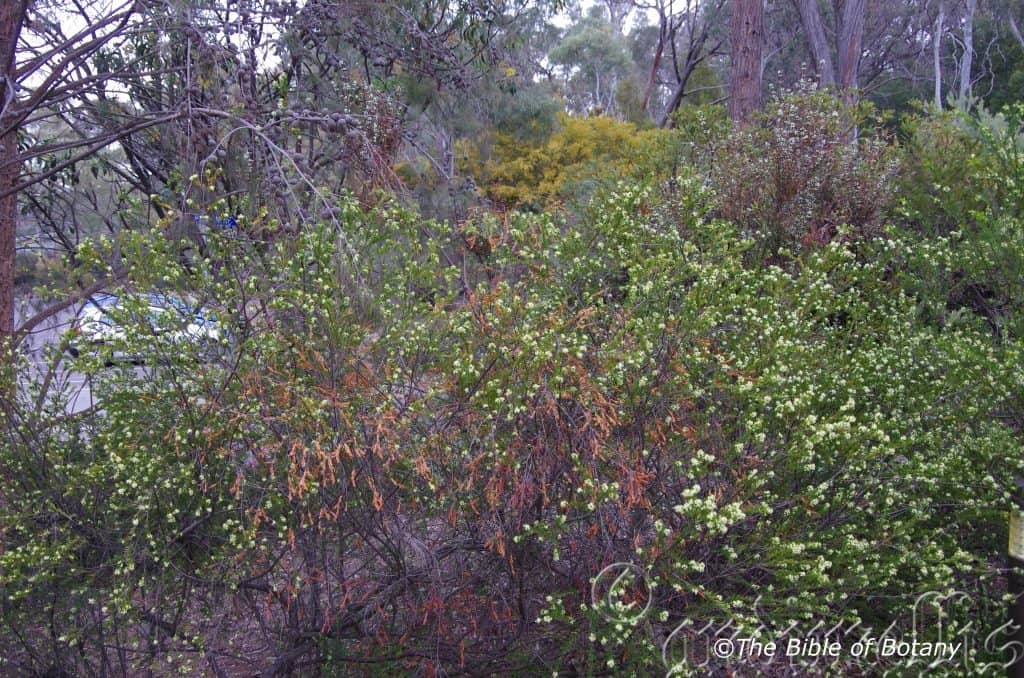
National Botanic Gardens ACT
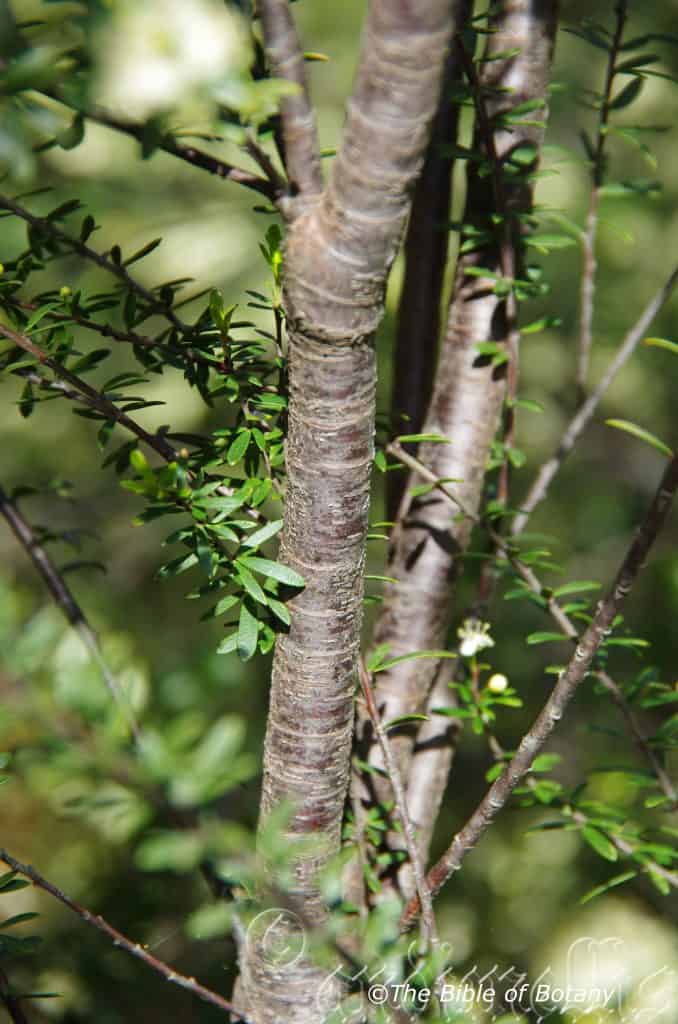
National Botanic Gardens ACT
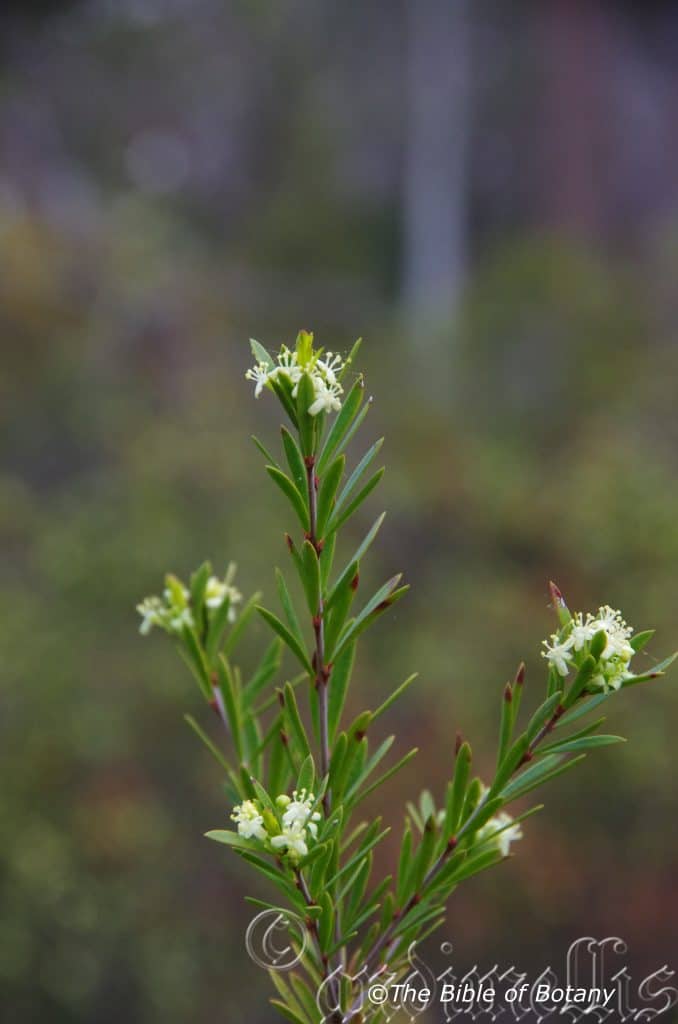
National Botanic Gardens ACT
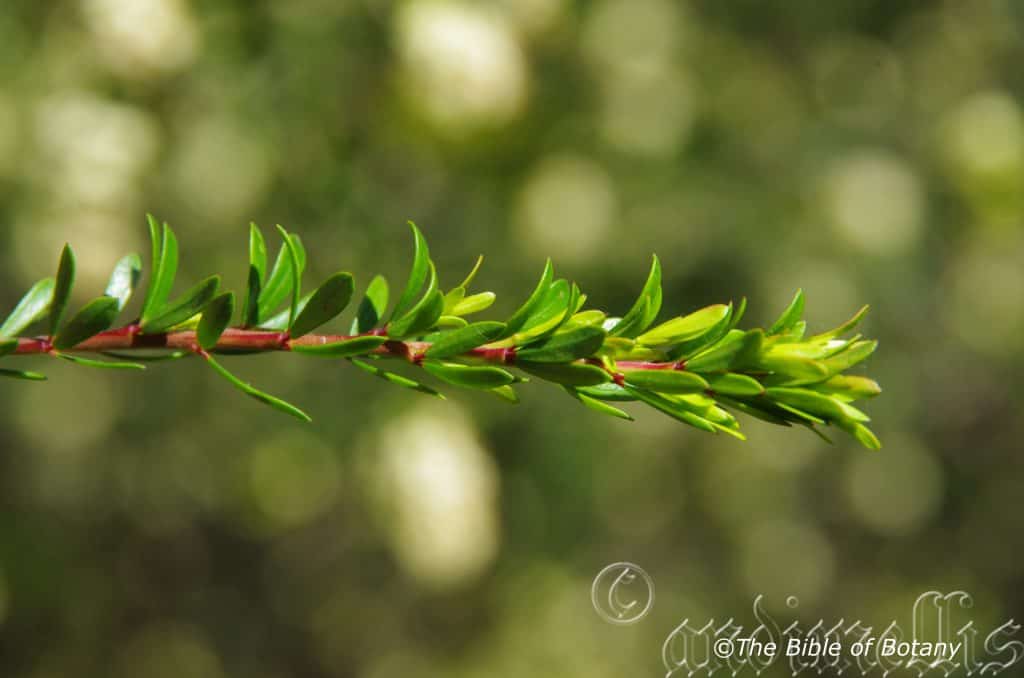
National Botanic Gardens ACT
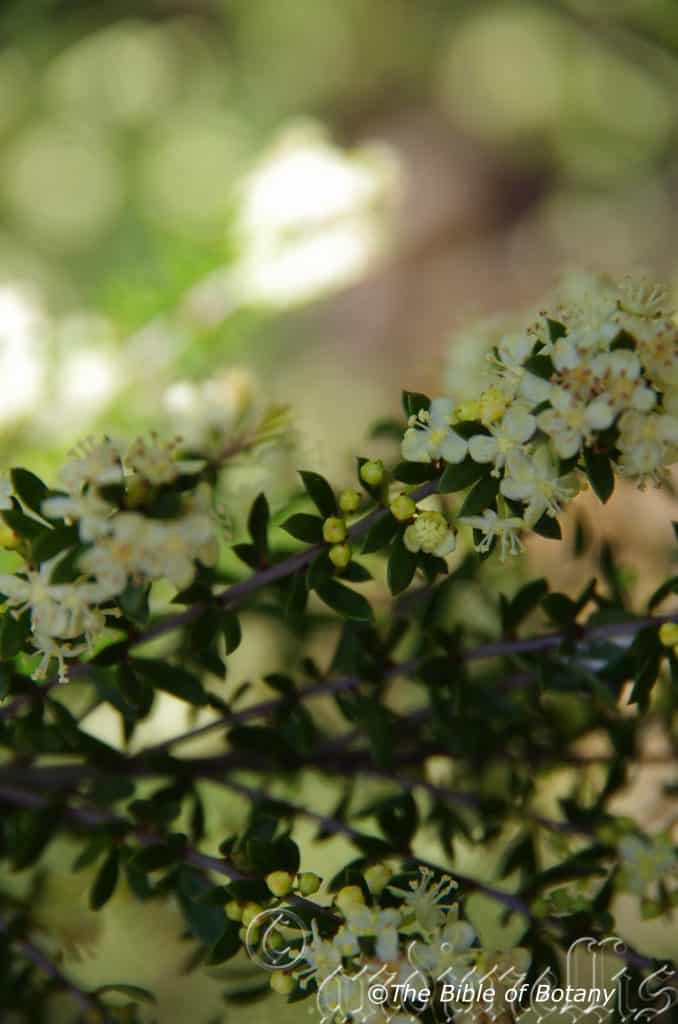
National Botanic Gardens ACT
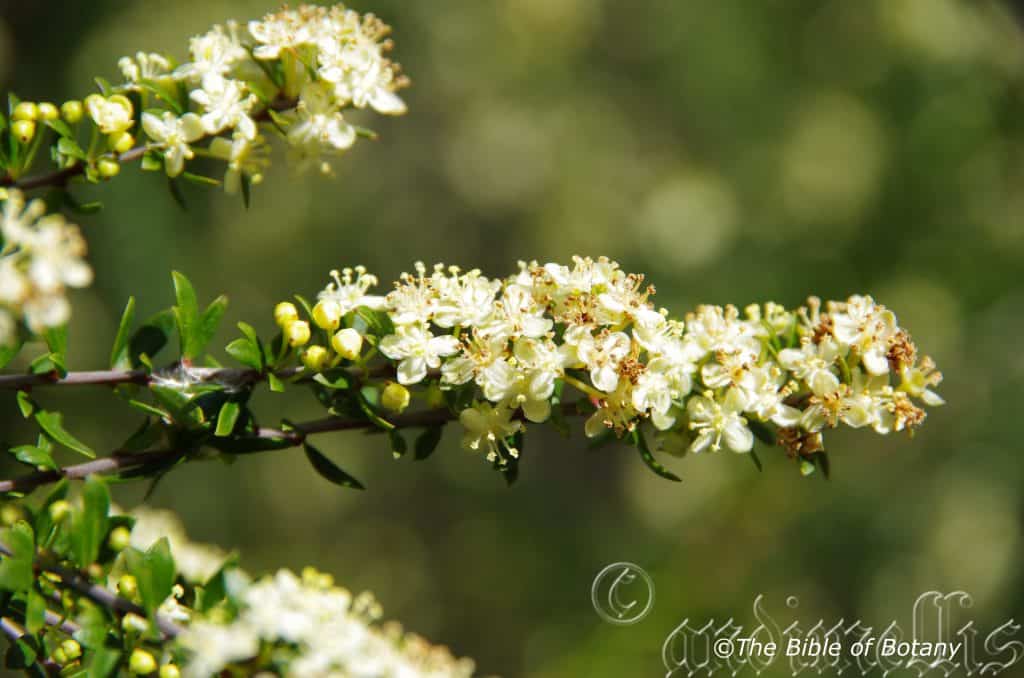
National Botanic Gardens ACT
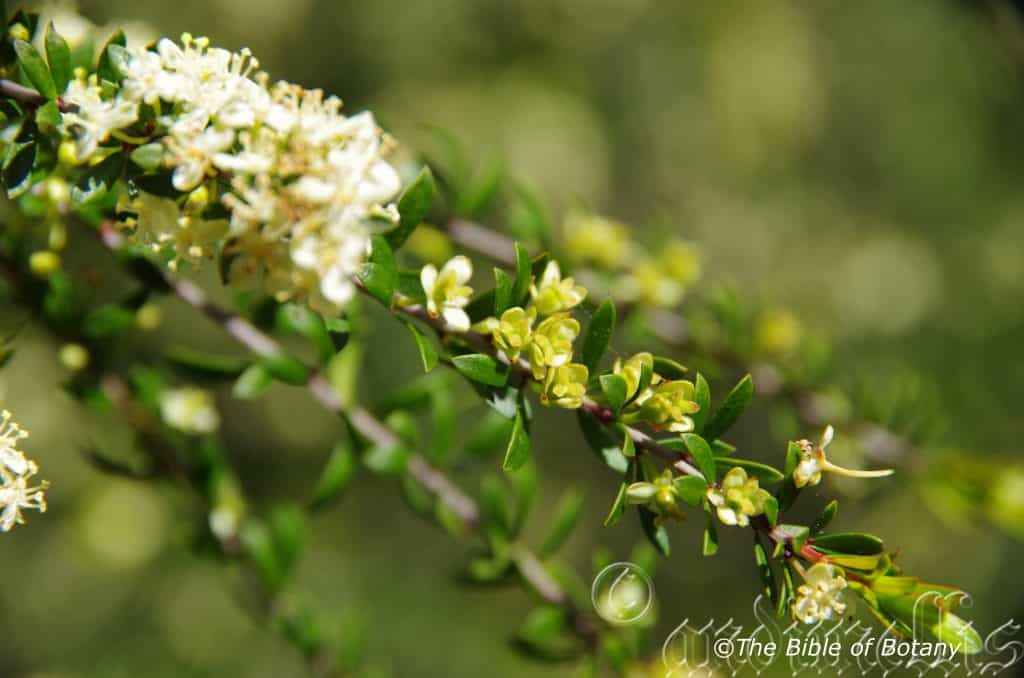
National Botanic Gardens ACT
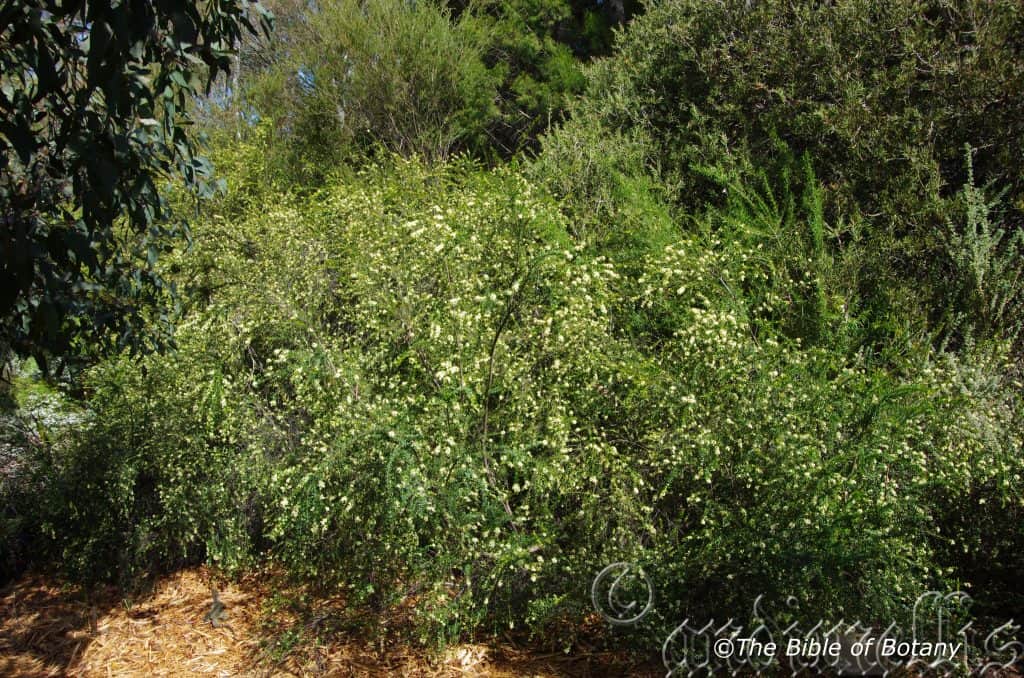
National Botanic Gardens ACT
Micrantheum hexandrum
Classification:
Unranked: Eudicots
Unranked: Rosids
Class: Sub Class
Order: Sapindales
Family: Rutaceae
Genus: From Mikrós, which is Ancient Greek for small or very small and ántha/ánthos, which are Ancient Greek for the male reproductive organs on a flower or the flower. It refers to flowers, which are much smaller than other species in the genus.
Specie: From Hex, which is Ancient Greek for six and Andros, which is Ancient Greek for a man. It refers to plants, which have six stamens.
Sub species:
Common Name:
Distribution:
Micrantheum hexandrum is found south from Stanthorpe in far south eastern Queensland and Mullumbimby in far north eastern northern New South Wales to Powelltown and Tyres Regional Park in south eastern Victoria. It is mainly found on the Western Slopes, on and east of the Great Dividing Range. It is found further west on the upper reaches of the Macquarrie River near Dubbo and at Darlingford on the Goulburne River.
In Tasmania it is found east of a line from Devonport to Tasman Peninsula.
https://avh.ala.org.au/occurrences/search?taxa=Micrantheum+hexandrum#tab_mapView
Habitat Aspect Climate:
Micrantheum hexandrum prefers light dappled shade to full shade. It grows in heaths or open woodland heaths. The altitude ranges from 150 meter ASL to 860 meters ASL.
The temperatures range from minus 3 degrees in August to 40 degrees in January.
The rainfall ranges from lows of 800mm to an average of 3200mm.
Soil Requirements:
Micrantheum hexandrum prefers poorer quality fine sandstone light fatty clays. The soils are usually derived from partially decomposed or decomposed granite. The soils pH ranges from 5.5pH to 6pH. It does not tolerate waterlogged soils. Non saline soils to moderately saline soils are tolerated.
Height & Spread:
Wild Plants: 1m to 2m by 1m to 2m.
Characteristics:
Micrantheum hexandrum grows as a medium shrub with pinkish-grey to pinkish-brown branchlets. The branchlets are glabrous or sparsely to moderately covered in short white pulverulent hairs. The immature stems are deep pinkish-red to pinkish-maroon and glabrous or sparsely to moderately covered in short white puberulent hairs.
The alternate oblong to narrow-oblanceolate or oblanceolate leaves are in small clusters of usually 3 leaves or at times 2 or 4 and appear separately or from a common peduncle. The leaves are appressed at the apexes to semi appressed as they descend down the stems. The leaves measure 8mm to 18mm in length by 2mm to 3mm in width. The peduncles are glabrous or sparsely covered in short white puberulent hairs and measure 0mm to 1mm in length while the pedicels measure 0mm to 1mm in length. The bases are cuneate or taper while the apexes are obtuse mucronate, mucronate or acute with a short mucronate tip. The concolourous laminas are deep green to sea-green, semi glossy and glabrous. The laminas are flat and straight except for the apexes which decurve downwards slightly while the margins are entire and reddish. The mid vein is faintly prominent on the lower lamina and is not distinctly visible on the upper lamina.
The monoecious inflorescence are born solitary, in pairs or threes from the leaf axils. The 3 obtuse white tinged green or tinged pink, cupular calyx lobes are glabrous and measure 1.5mm to 2mm in length. The 3 white orbicular petals measure 2mm to 2.5mm in length by 2mm to 2.5mm in width.
The 6 or at times 9 white stamens on the male flowers are glabrous and measure 1mm to 1.5mm in length. The pedicels measure 5mm to 8mm in length. The creamy yellow ovoidal disc measures 2mm to 3mm in length.
The female flowers pedicels measure 1mm to 2mm in length and lengthens to 4mm to 5mm following anthesis to fruiting. The creamy yellow ovoidal ovary measures 2mm to 3mm in length. The flowers appear from September to early November.
The fruits are obloidal, trigonous capsules with 3 thick divergent lobes at the apex. The green capsules turn reddish to reddish-orange when ripe. The sepals are persistent on the ripe capsules. The individual glabrous capsules measure 6mm to 7mm in length by 5mm to 6mm in diameter. The spherical, black, glabrous seeds are glossy
Wildlife:
Micrantheum hexandrum’s wildlife is unknown to the author.
Cultivation:
Micrantheum hexandrum makes an excellent shade tree for understory shrubs that prefer light filtered light. They always look green and fresh especially where adequate ground moisture is retained in the soil. It is very suitable on sandy to heavy clay soils and are most suitable for small medium and large gardens close to the coast in warm temperate, sub-tropical or tropical gardens. As garden subjects they will grow from 0.4 meters to 0.6 meters in height by 1 meter to 1.2 meters diameter when grown in the open on better quality moist soils.
It is cold tolerant to temperatures as low as minus 3 degrees once established.
It makes an excellent small, medium to large rockery plants on moist soils in a sunny to medium shaded position. It always look green and fresh especially where adequate ground moisture is retained throughout the year. It is most suitable for small, medium and large gardens close to the coast or high in the mountains in sub-tropical gardens or tropical gardens and would be worthwhile trying in semi-arid zones where adequate water can be guaranteed. As garden subjects they will grow from 0.4 meters to 0.5 meter by 1 meter to several meters in diameter under favourable conditions.
It is most suitable for use around contained garden beds, besides pathways, shady rockeries, along sandy clay banks, along drive ways, between driveways, adjacent to natural bush gardens paths and riverine restoration.
Propagation:
Seeds: Micrantheum hexandrum’s seeds need to be treated before sowing to assist in more even germination. Seeds need to be placed in a small calico bag or sock. Place this in with the weekly washing cycle. Allow to dry and repeat the following week. Now place the seeds in a glass of water which has had a pinch of bi carb of soda added. Let them soak for 24 hours. Change the water and add half a tea spoon of vinegar to the water and allow them to soak for 24 hours. Rinse the seeds. Now the seeds can be sown into a seed raising mix. Cover the seeds with 2mm to 3mm of fine weed free mulch and keep moist. Place the tray in a warm sunny position. When the seedlings are 30mm to 50mm tall, prick them out and plant them into 50mm native tubes using a good organic mix.
Once the seedlings reach 100mm to 150mm in height they can be planted out into their permanent position.
Fertilize using seaweed, fish emulsion or organic chicken pellets soaked in water on an alternate basis. Fertilize every two months until the plants are established then twice annually in early September or March to maintain health, vitality and better flowering.
Further Comments from Readers:
Hi reader, it seems you use The Bible of Botany a lot. That’s great as we have great pleasure in bringing it to you! It’s a little awkward for us to ask, but our first aim is to purchase land approximately 1,600 hectares to link several parcels of N.P. into one at The Pinnacles NSW Australia, but we need your help. We’re not salespeople. We’re amateur botanists who have dedicated over 30 years to saving the environment in a practical way. We depend on donations to reach our goal. If you donate just $5, the price of your coffee this Sunday, We can help to keep the planet alive in a real way and continue to bring you regular updates and features on Australian plants all in one Botanical Bible. Any support is greatly appreciated. Thank you.
In the spirit of reconciliation we acknowledge the Bundjalung, Gumbaynggirr and Yaegl and all aboriginal nations throughout Australia and their connections to land, sea and community. We pay our respect to their Elders past, present and future for the pleasures we have gained.
Microlaena stipoides
Classification:
Unranked: Monocots
Unranked: Commelinids
Order: Poales
Family: Poaceae
Genus: From Mikrós, which is Ancient Greek for small or very small and Laina, which is Ancient Greek for a cloak. It refers to the outer glumes being small.
Specie: From Stipitatus, which is Latin for a secondary leaf and Eîdos/Oides, which is Ancient Greek for alike or similar to. It refers to organs, which resemble stalks or slender supports, as the petioles of a fern fronds, the stem supporting the pileus of mushrooms, or a stalk like elongations of the receptacle of a flower.
Sub specie: Microlaena stipoides var. stipoides’s From Stipitatus, which is Latin for a secondary leaf and Eîdos/Oides, which is Ancient Greek for alike or similar to. It refers to organs, which resemble stalks or slender supports, as the petioles of a fern fronds, the stem supporting the pileus of mushrooms, or a stalk like elongations of the receptacle of a flower.
Microlaena stipoides var. breviseta’s From Brevis, which is Latin for short and Sēta, which is Latin for a hair. It refers to organs or structures, which are covered in short usually hirtellous hairs. Here it refers to the hairs being much shorter than the other varieties.
Common Name: Weeping Grass or Weeping Rice Grass.
Distribution:
Microlaena stipoides is found south from the Coomaloo to Bremer Bay within 170 kilometers from the coast with a population further east at Mount Arid in Cape Arid National Park and further West on Easter Island.
It is found south from Davies Creek near Mareeba in far north eastern Queensland to Burr Forest and The Marshes on the Victorian Volcanic Plains in south eastern South Australia in cluding the Bass Strait Islands and mainland Tasmania.
In South Australia it is found from Wilpina in the Flinders Ranges south to the tip of Kangaroo Island. It is found further east on Lord Howe Island and Norfolk Island.
It is also found east from the Philippines, Indonesia, Papua, New Guinee and new Zealand.
https://avh.ala.org.au/occurrences/search?taxa=Microlaena+stipoides#tab_mapView
Habitat Aspect Climate:
Microlaena stipoides prefers full sunlight to very light dappled shade. It grows in exposed situations in open country especially in shallow depressions that remain damp or wet for prolonged periods along seasonal and permanent creek and stream riparian zones. While it is widespread it never dominates its habitat. The altitude ranges from 15 meter ASL to 1160 meters ASL.
The temperatures range from minus 4 degrees in August to 40 degrees in January.
The rainfall ranges from lows of 250mm to 3000mm average per annum.
Soil Requirements:
Microlaena stipoides prefers course sands, fine sharp sands fatty sands, light clays to medium clays. The soils are usually derived from sandstone, granites, metamorphic rocks, brown basalts, black basalts, metamorphic rocks, accumulated peaty beach sands or alluvial deposits. The soils pH ranges from 3.9pH to 5.5pH. It does not tolerate waterlogged soils or seasonal high water tables. Non saline soils to moderately saline soils are tolerated.
Height & Spread:
Wild Plants: 0.5m to 0.7m by 0.25m to 0.8m
Characteristics:
Microlaena stipoides is an open perennial with short rhizomes. The culms are rigid, erect, geniculately ascending or decumbent smooth and glabrous. The culms measure 300mm to 750mmm in length by 0.7mm to 1mm in diameter.
The linear leaves measure 25mm to 250mm in length by 1mm to 10mm in width. The leaf sheaths are absent or with small, hirsute auricles or with silky, white sericeous hairs at the orifice. The ligule is a ciliate membrane with 0.3mm to 0.5mm long hairs. The leaf bases are clasping while the apexes are acute. The concolourous laminas are blue-green to grass-green, smooth and semi glossy. The laminas are flat while the margins are entire.
The inflorescences are compound racemes or a panicle of racemes. The racemes measure 70mm to 190mm in length. The branches and pedicels are mainly on one side.
The spikelets are pedicellate with the fertile spikelets being many flowered. The 2 or more fertile florets have 2 basal sterile florets one of which is fertile without rachilla extension. The linear, laterally compressed florets measure 8mm to 10mm in length. The rachilla internodes are elongated between the glumes. The 3 florets are raised above the glumes on a hairy or glabrous pedicel.
The lower glumes are ovate and are keeled and are nerveless or have a single nerve. The upper glumes are ovate and measure 0.3mm to 3.7mm in length, are keeless and nerveless or have a single nerve.
The basal sterile 2 or more florets are barren, without a significant palea. The lemma of the lower sterile floret is coriaceous, single keeled and has 5 to 7 nerves and a single awn. The upper lemma of the sterile floret measures 8mm to 15mm in length and has a single awn.
The fertile lemmas measure 5.5mm to 11mm in length are keeled and have 5 to 7 nerves. The lemmas apexes are muticous or mucronate. The palea has a single keel which nervless or has a single nerve. The lodicules are present.
The 4 stamens have filiform, white filaments while the white obloidal anthers measure 0.2mm 0.4mm length while the appendage measures 0.5mm to 0.6mm in length. The white style is usually bifid or at times is trifid. The flowers appear from September to March.
Confusing Subspecies Varieties:
Microlaena stipoides var. stipoides, awns are located on the sterile lemmas as long as to more than twice as long as the lemmas. The spikelets are green.
Microlaena stipoide var. breviseta’s awns are located on the sterile lemmas but are much shorter than the fertile lemmas. The awn on upper sterile lemma is sometimes equal to the lemma. The spikelets are usually purplish or have a purplish tinge.
Wildlife:
Microlaena stipoides plays a very important role in the environmental habitats of many species in Australia where it occurs. The leaves consist of 10 to 27mm crude protein and are high in Magnesium.
https://avh.ala.org.au/occurrences/search?q=taxamm3Amm22Microlaena+stipoidesmm22#tab_mapView
While much has been researched and written on it as a valuable fodder crop for cattle, sheep and other domestic animals. Its real value has been lost on our native fauna. Its versatility continues in the environment with Erosion control or outback and beach dune stabilization, land reclamation, revegetation projects and soil conservation and improvement. It gives good quantities of mulch, thus reintroducing carbon to the depleted soils caused by over grazing and extensive agricultural practices using non organic methods.
The leaves are an important for many butterflies including and not limited to the Common Brown Heteronympha Merope, Ringed Xenica Geitoneura acantha, White-banded grass-dart Taractrocera papyria, Southern Dart Ocybadistes walkeri.
Birds that consume the seeds include many of the smaller parrots like the Turquoise parrot Neophema pulchella and the red rump parrot Psephotus haematonotus. Many Finches like the also consume the seeds like the Chestnut breasted manikin Lonchura castaneothorax, Crimson finch Neochmia phaeton and the Plum-headed finch Neochmia modesta the just to mention three, which are all considered vulnerable because of over trapping for the cage bird trade and habitat destruction.
It is an essential and staple grass species for the red Kangaroo Macropus rufus, the Grey Kangaroo Macropus giganteus, the Wallaroo Macropus robustus and the red neck wallaby Macropus rufogriseus to show a small variety in marsupials. It is probably a key species for several other marsupials including Wombats and many native finches, small parrots and pigeons rely on it for its seeds.
It is presently being studied as a valuable fodder crop for domestic stock and human consumption which will unfortunately bring man into conflict with nature and the natural foragers of this important grass species.
Microlaena stipoides can be easily substituted for rice and grown as dry land rice to which it is already adapted to here in Australia. As new improved strains are developed more pressure with greater constraints on the wildlife will surface. While native animals and birds see it as their staple food in a land they once called home, the battle for land rights will rear its ugly head in favour of the dollar and farming pursuits. Unfortunately the animals and plants do not have land rights and will be treated as the enemy of farmers and developers in a new war which they cannot win. At the same time it is alright for man to expand into their territory, but it is wrong for the meek to hold onto the land that was and is rightfully theirs. I see this in exactly the same light as the American Indians being forced to live and exist on Indian Reserves (National Parks) which did not suit everyone nor did it service their desires to move in times of drought, fire or flood. Worse still when Global Warming removes the last sustainable life from their reserves like our aborigines of the past will relinquish their land so a few can destroy, plunder, murder and cause immeasurable depravity. Only those who have been displaced will understand their plight.
Cultivation:
Microlaena stipoides are medium grasses that can be used for a lawn in a sunny to partially shaded areas on moisture problem soils. Because of its adaptability for growing in areas with little rainfall, zones with over 500mm a year will provide good growth rates and seed production. Yields at 375kg to 570kg per hectare in mixed pastures without inputs are the norm.
Propagation:
Seeds: Collecting seeds from mature plants of Microlaena stipoides is not difficult. The seeds can be sown into a seed raising mix. Cover the seeds with 2mm to 3mm of fine weed free mulch and keep moist. Place the tray in a warm sunny position. When the seedlings are 30mm to 50mm tall, prick them out and plant them into 50mm native tubes using a good organic mix.
Once the seedlings reach 100mm to 150mm in height they can be planted out into their permanent position at 200mm to 800mm centers depending on whether it is to be used for rockery plants or as a lawn.
Broad acreage sowing can be achieved with 5kg to 10kg per hectare.
Fertilize using seaweed, fish emulsion or organic chicken pellets soaked in water on an alternate basis. Fertilize every two months until the plants are established then twice annually in early September or March to maintain health, vitality and better flowering.
Further Comments from Readers:
Hi reader, it seems you use The Bible of Botany a lot. That’s great as we have great pleasure in bringing it to you! It’s a little awkward for us to ask, but our first aim is to purchase land approximately 1,600 hectares to link several parcels of N.P. into one at The Pinnacles NSW Australia, but we need your help. We’re not salespeople. We’re amateur botanists who have dedicated over 30 years to saving the environment in a practical way. We depend on donations to reach our goal. If you donate just $5, the price of your coffee this Sunday, We can help to keep the planet alive in a real way and continue to bring you regular updates and features on Australian plants all in one Botanical Bible. Any support is greatly appreciated. Thank you.
In the spirit of reconciliation we acknowledge the Bundjalung, Gumbaynggirr and Yaegl and all aboriginal nations throughout Australia and their connections to land, sea and community. We pay our respect to their Elders past, present and future for the pleasures we have gained.
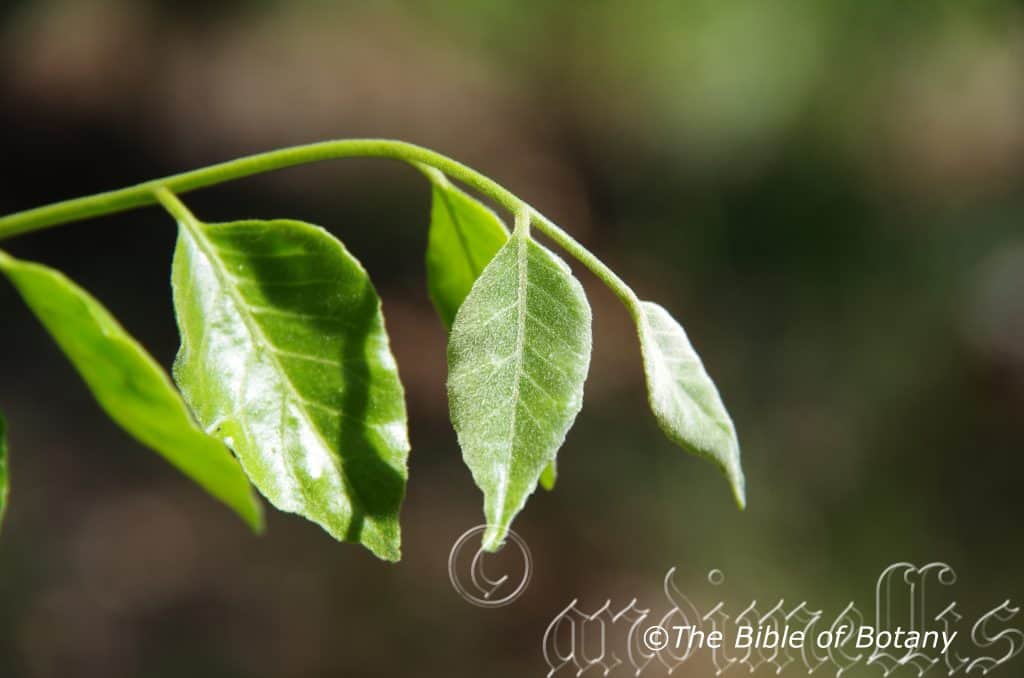
Author’s Garden The Pinnacles NSW
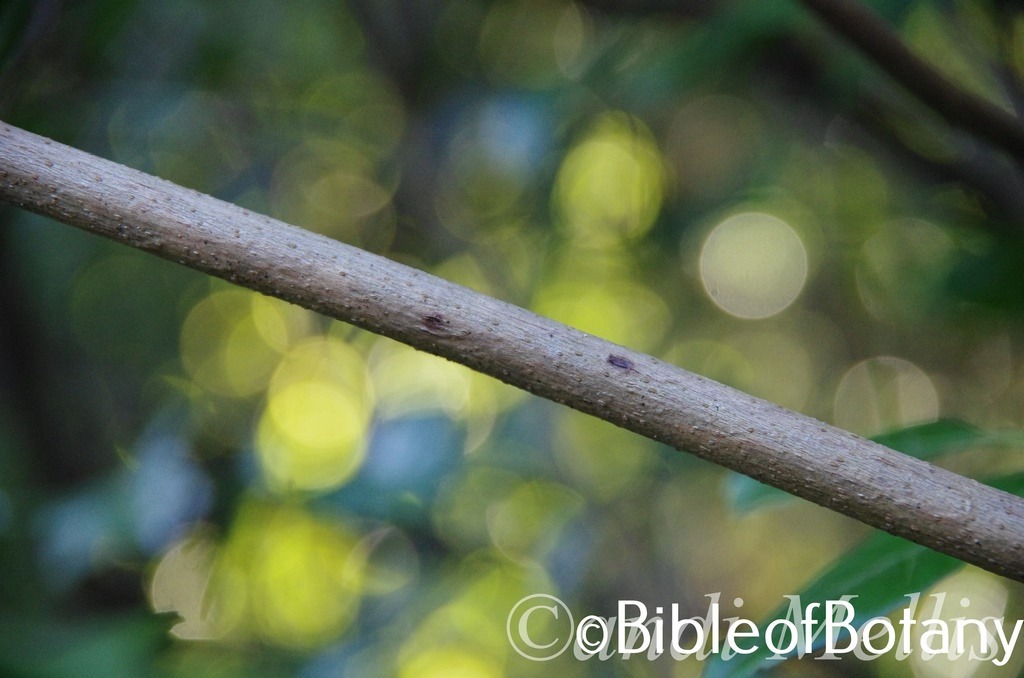
LBG Lismore NSW

LBG Lismore NSW
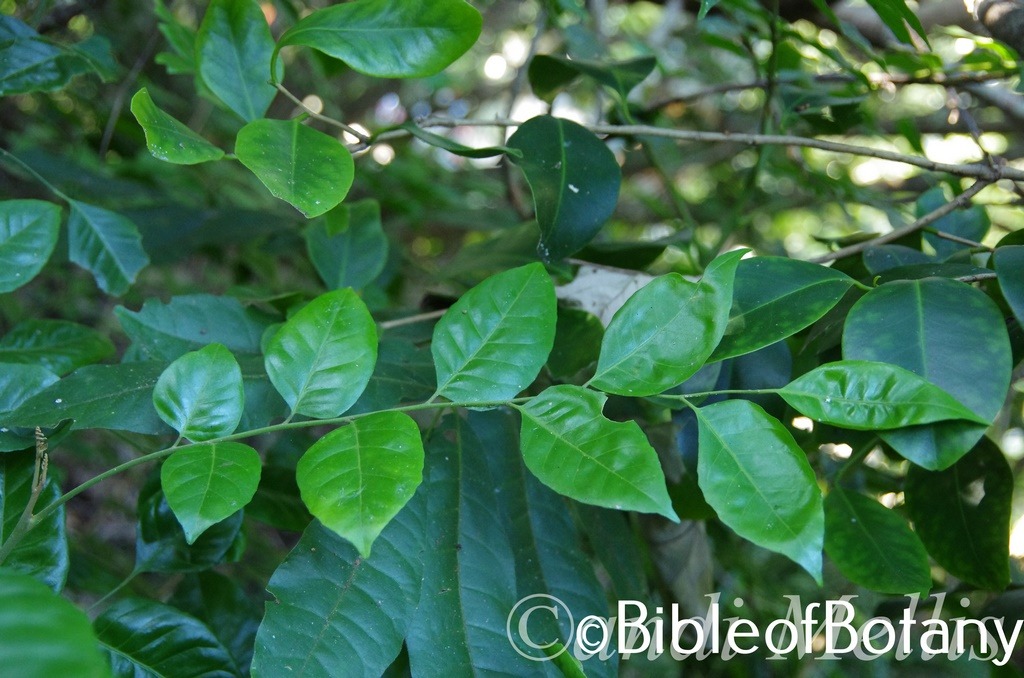
LBG Lismore NSW

Author’s Garden The Pinnacles NSW
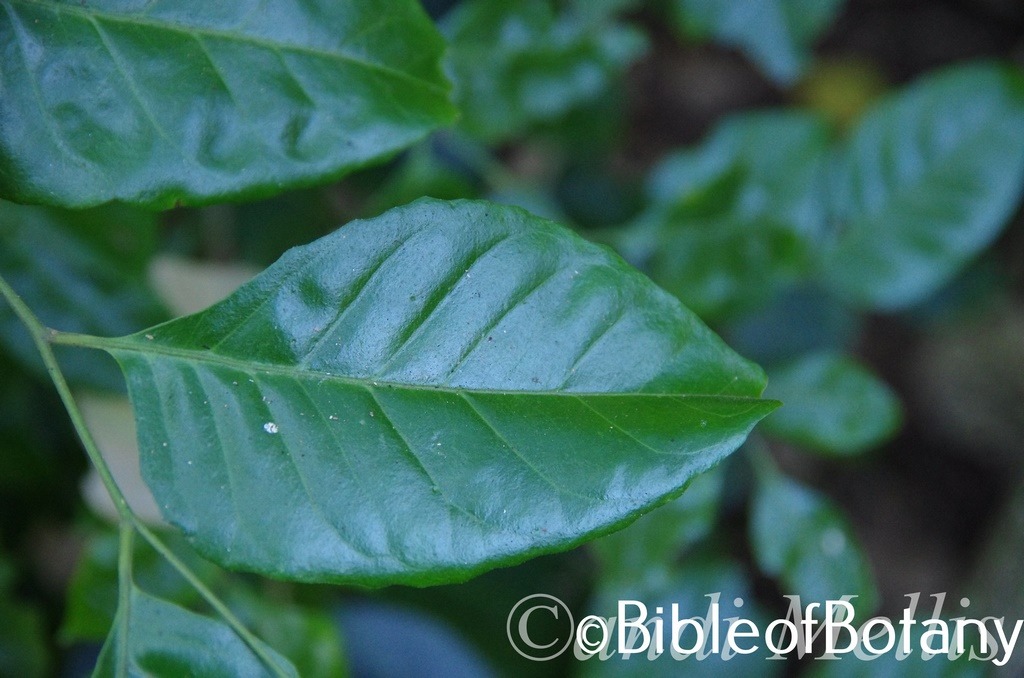
LBG Lismore NSW
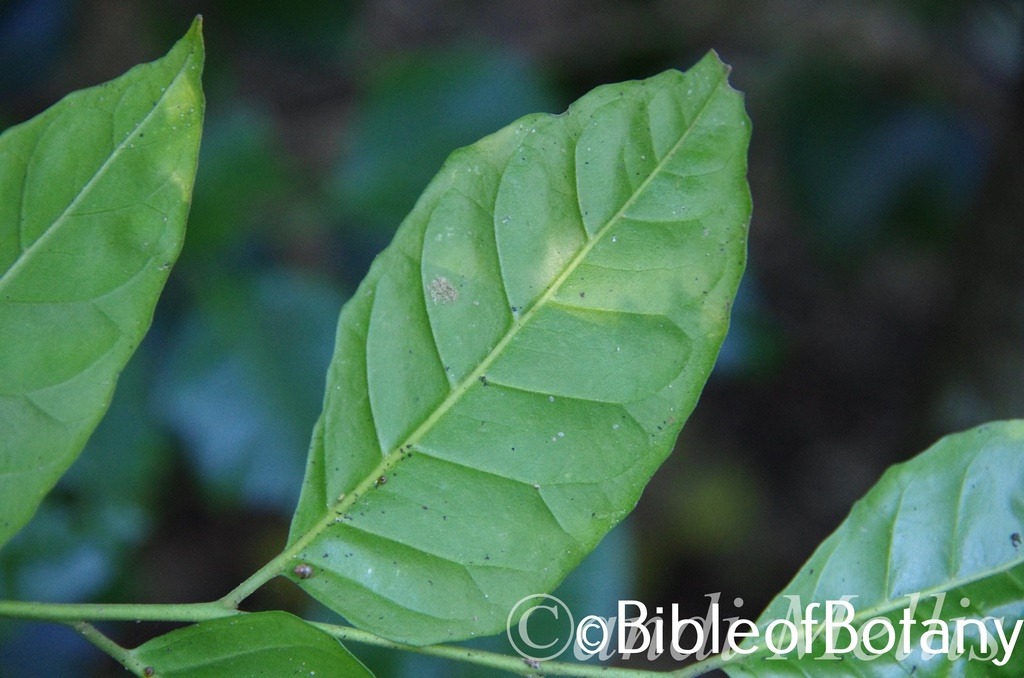
LBG Lismore NSW
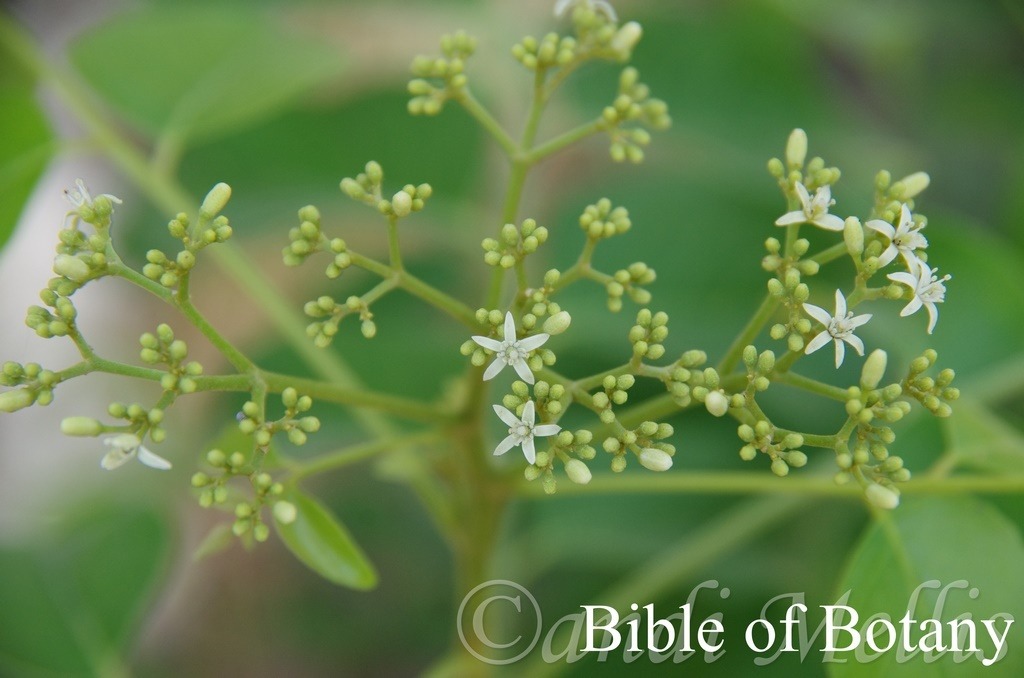
Author’s Garden The Pinnacles NSW
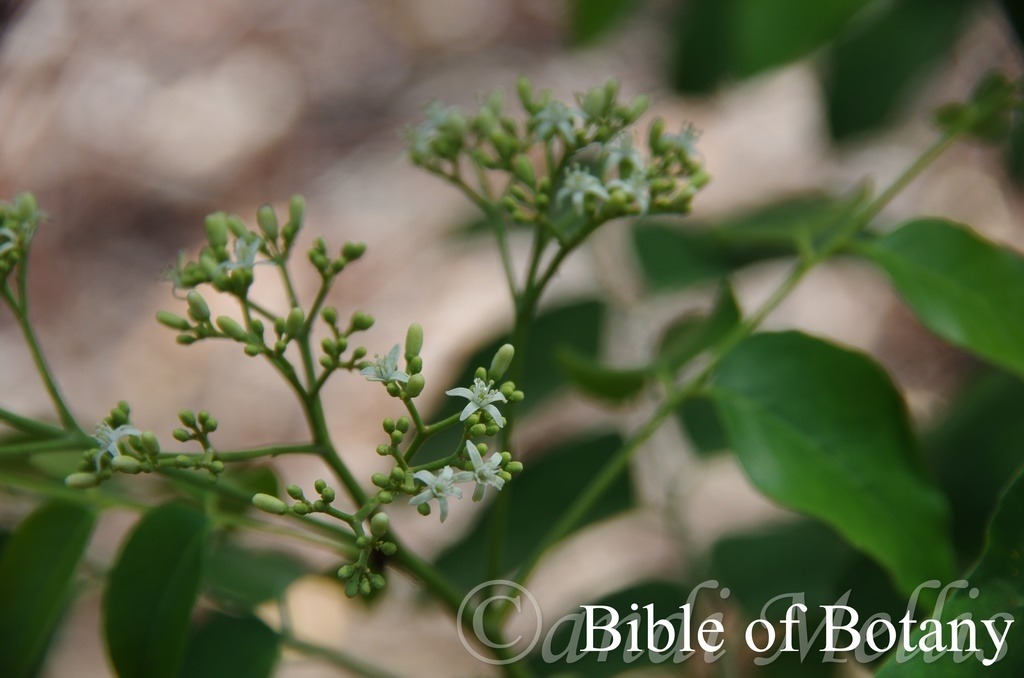
Author’s Garden The Pinnacles NSW
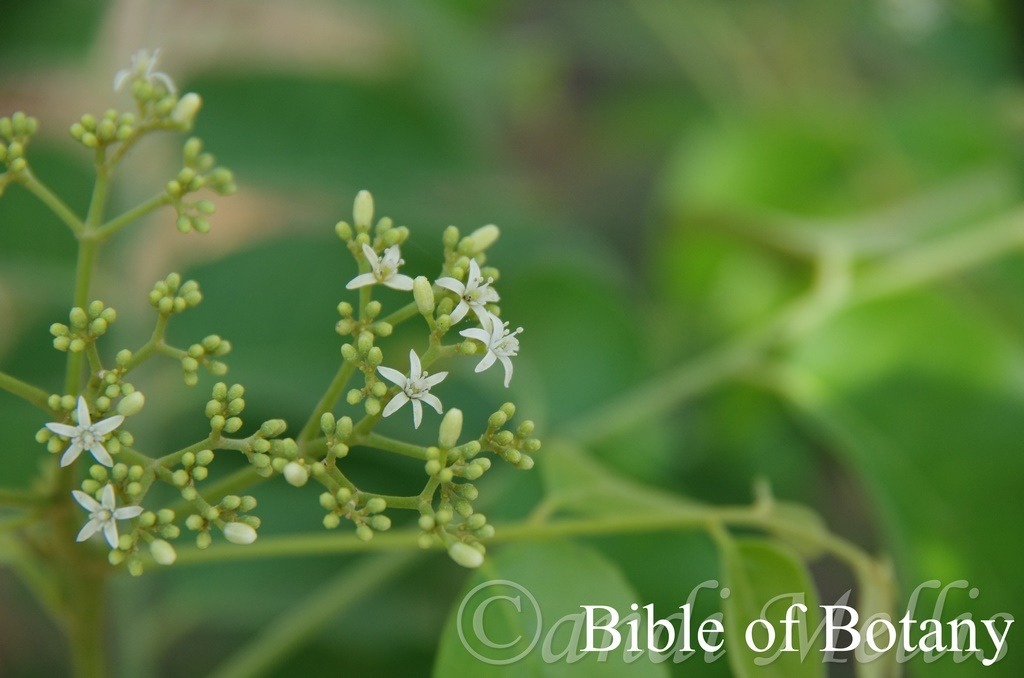
Author’s Garden The Pinnacles NSW
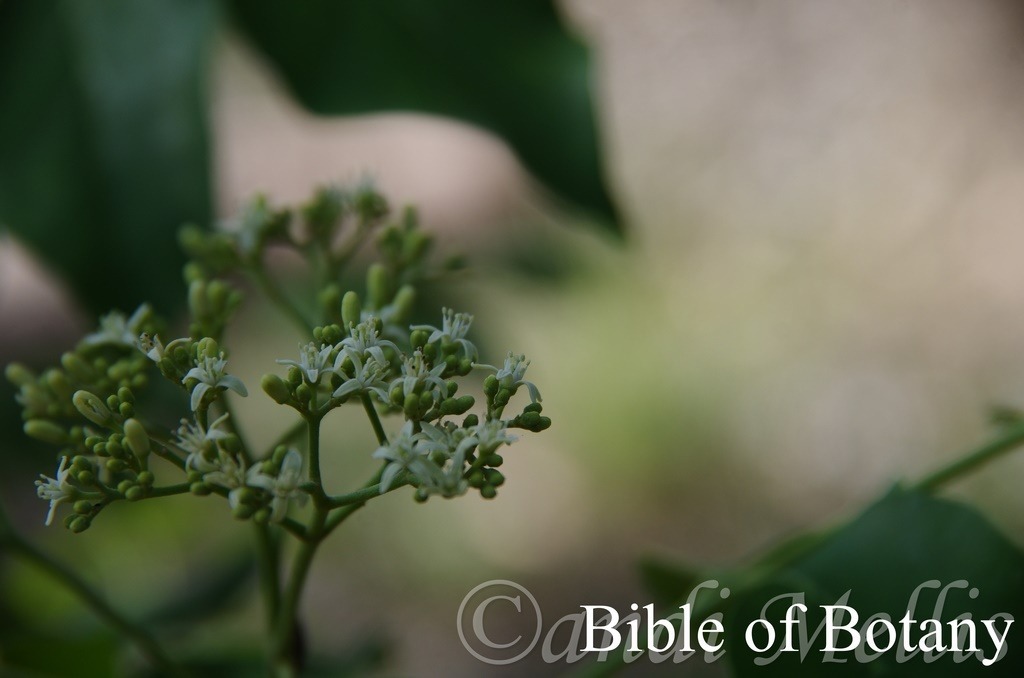

Author’s Garden The Pinnacles NSW
Micromelum minutum
Classification:
Unranked: Eudicots
Unranked: Rosids
Order: Sapindales
Family: Rutaceae
Tribe: Clauseneae
Genus: From Mikrós, which is Ancient Greek for small or very small and Melon, which is AncientG reek for an apple. It refers to fruits, which resemble small melons or apples.
Specie: From Minūtum, which is Latin for to be very small or substantially smaller. It refers to plants, which are much smaller than other species in the genus.
Sub species:
Common Name: Lime Berry.
Distribution:
Micromelum minutum is found north along the coast in far north western Western Australia around to the northern quarter of the Northern territory across to Cape York Peninsula and south on and east of the Great Dividing range to the Queensland, New South wales border. and the northern coastal areas of the Northern Territory
https://avh.ala.org.au/occurrences/search?taxa=Micromelum+minutum#tab_mapView
Habitat Aspect Climate:
Micromelon minutum prefers light dappled shade. It grows in spaces created in drier lowland tropical rainforests and warm sub-tropical rainforests. The altitude ranges from 10 meter ASL to 600 meters ASL.
The temperatures range from 3 degrees in August to 36 degrees in January.
The rainfall ranges from lows of 950mm to an average of 3200mm.
Soil Requirements:
Micromelum minutum prefers to grow on stony and gravelly screes and on lower cliff faces. The soils are usually derived from accumulated sandstones, laterites or basalts close to the parent rock. The soils pH ranges from 5.5pH to 7pH. It does not tolerate waterlogged soils. Non saline soils to moderately saline soils are tolerated.
Height & Spread:
Wild Plants: 2m to 10m by 1.5m to 5m.
Characteristics:
Micromelum minutum’s main trunk is deep grey to deep grey-brown, finely furrowed and scabrous. The bole of the trunk is about a half the height on a mature tree. The young stems are pale brown, terete and covered in short white puberulent hairs. Immature stems blue-green, glabrous, terete and densely covered in short pubescent hairs. The trunk and larger branches are often mottled in green and blue greens of mosses and lichens which will grow there. The trunk is fluted especially near the base on mature trees.
Micromelum minutum’s adjacent odd pinnate leaves have 3 to 7 adjacent pairs of leaflets. The leaves spiral up the stem and measure 100mm to 150mm in length. The leaflets are ovate and measure 20mm to 100mm by 15mm to 60mm in width. The base is strongly asymetrical while the apex is acute. The concolourous laminas are blue-green, glossy and covered in white puberulent hairs. The margins are entire or crenate, flat or curved slightly upwards from the mid vein in plants that are growing in full sun. The leaflets hang down from the rachis. The mid vein is prominent on the lower lamina and is distinctly visible on the upper lamina. The petioles are glabrous to sparsely covered in short white puberulent hairs. The petioles measure 2mm to 7mm in length.
The inflorescence born in a compound umbel from the terminal. There are 120 to 540 flowers in an umbel. The umbels measure 80mm to 110mm in diameter. The umbellasters number 8 to 20 in each umbel with 12 to 33 individual flowers on each umbellaster. The peduncle measures 17mm to 23mm in length while the peduncules measure 14mm to 17mm in length and the pedicels measure 2mm to 3mm in length.
The 4 thick fleshy semi ovate calyx lobes measure 0.1mm to 0.4mm in length. The 5 white oblong petals measure 2.6mm to 3.5mm in length by 1mm to 1.4mm in width. The petals spread widely and are reflexed. It is glabrous externally and internally.
The 10 dimorphic white stamens are glabrous with 5 measuring 2mm in length while the other 5 measure 2.5mm in length. The oblong anthers are creamy yellow turning black after anthesis.
The single, glabrous, white style has a yellow stigma and measures 1mm to 1.5mm in length. The flowers appear from in late September to early November and again in late March to early May.
Micromelum minutum’s fruit is an ovoidal drupe. The green drupes turn yellow to brilliant red or orange when ripe. They measure 8mm to 10mm in length by 6mm to 8mm in diameter. The pedicel measures 3mm to 4mm in length. The ovoidal seeds are brown, glabrous, semi glossy and measures 6mm to 7mm in length by 4mm to 5mm in diameter.
Wildlife:
Micromelum minutum’s flowers are visited by many different specie of butterflies, plus beetles, wasps and native bees. The leaves are the main food source several specie of orchard butterflies including Canopus (Papilio fuscus) and Capanes (Papilio fuscus subsp.capanses) Butterfly. Common & Waterhouse (1989). The fruits are eaten by the Rose Crown Pigeon and probably other specie of pigeons as well. The leaves are edible but personally one needs to be very hungry or to dilute them down with potatoes or rice to be able to enjoy them.
Cultivation:
Micromelum minutum makes an excellent small tree where there is filtered light or dense shade. They always look green and fresh especially where adequate ground moisture is retained in the soil. It is very suitable on medium clays to heavy clay soils provided there is plenty of mulch available at all times. It is most suitable for small medium and large gardens close to the coast in warm temperate, warm sub-tropical or tropical gardens. As garden subjects they will grow from 5 meters to 7 meters in height by 5 meters to 6 meters wide. It is cold tolerant to temperatures as low as 1 degree once established.
They can be used as a rainforest understory shrub but will need good light and will need to be pruned in the early stages to induce several lateral shoots. They will make a tall slender rainforest tree if grown in dense shade. On the edge of a forest they will develop into a large shrub rather than a small tree.
Placed on the edge of a rainforest garden they will develop quickly. The trees are suitable for all orchids and epiphytic ferns especially those that prefer darker conditions like Pyrossia rupestre, Pyrossia longifolia and Asplenium or some of the climbing Microsorum. In a rainforest situation they will also support many different varieties of lichens and mosses.
Propagation:
Seeds: Micromelum minutum seeds can be sown into a seed raising mix. Cover the seeds with 2mm to 3mm of fine weed free mulch and keep moist. Place the tray in a warm sunny position. When the seedlings are 30mm to 50mm tall, prick them out and plant them into 50mm native tubes using a good organic mix.
seeds can be sown into a seed raising mix. Cover the seeds with 2mm to 3mm of fine weed free mulch and keep moist. Place the tray in a warm sunny position. When the seedlings are 30mm to 50mm tall, prick them out and plant them into 50mm native tubes using a good organic mix.
Once the seedlings reach 100mm to 150mm in height they can be planted out into their permanent position.
Fertilize using seaweed, fish emulsion or organic chicken pellets soaked in water on an alternate basis. Fertilize every two months until the plants are established then twice annually in early September or March to maintain health, vitality and better flowering.
Further Comments from Readers:
Hi reader, it seems you use The Bible of Botany a lot. That’s great as we have great pleasure in bringing it to you! It’s a little awkward for us to ask, but our first aim is to purchase land approximately 1,600 hectares to link several parcels of N.P. into one at The Pinnacles NSW Australia, but we need your help. We’re not salespeople. We’re amateur botanists who have dedicated over 30 years to saving the environment in a practical way. We depend on donations to reach our goal. If you donate just $5, the price of your coffee this Sunday, We can help to keep the planet alive in a real way and continue to bring you regular updates and features on Australian plants all in one Botanical Bible. Any support is greatly appreciated. Thank you.
In the spirit of reconciliation we acknowledge the Bundjalung, Gumbaynggirr and Yaegl and all aboriginal nations throughout Australia and their connections to land, sea and community. We pay our respect to their Elders past, present and future for the pleasures we have gained.
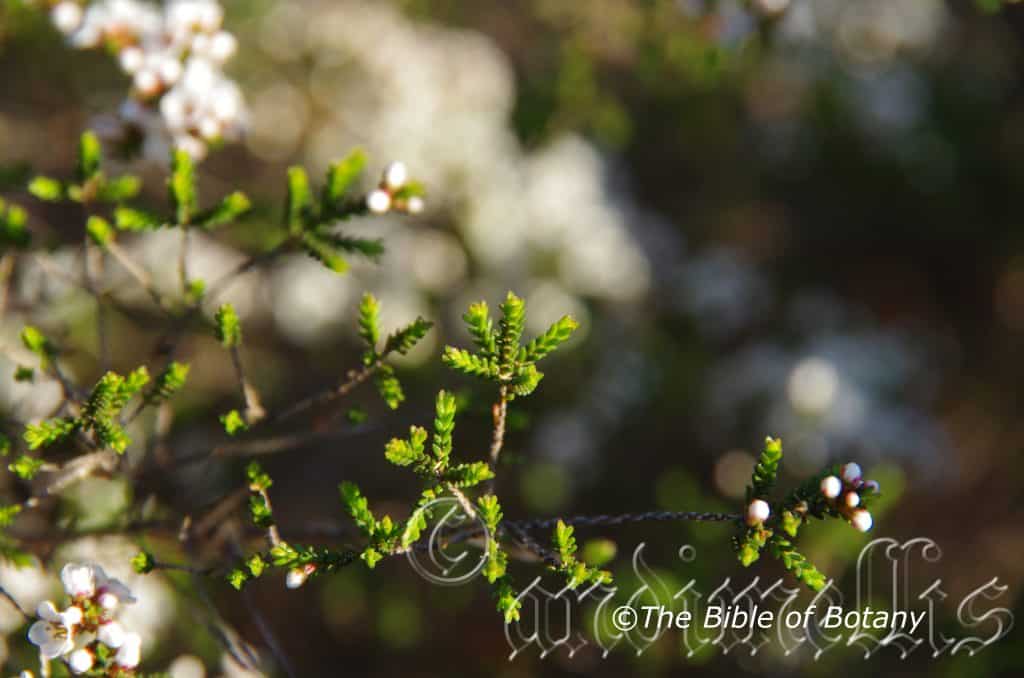
National Botanic Gardens ACT
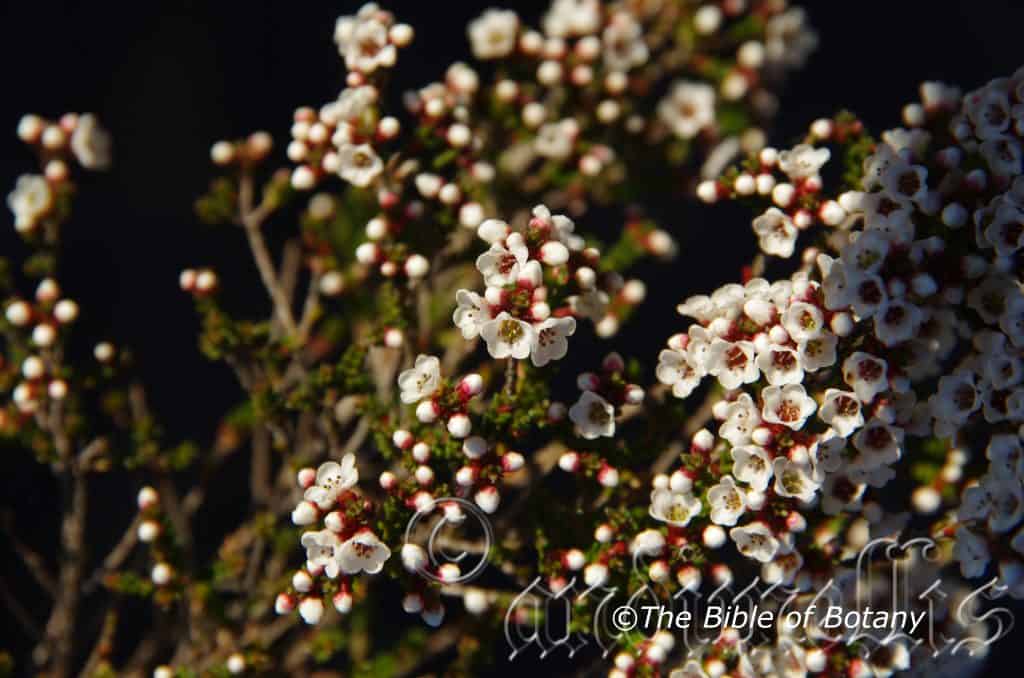
National Botanic Gardens ACT
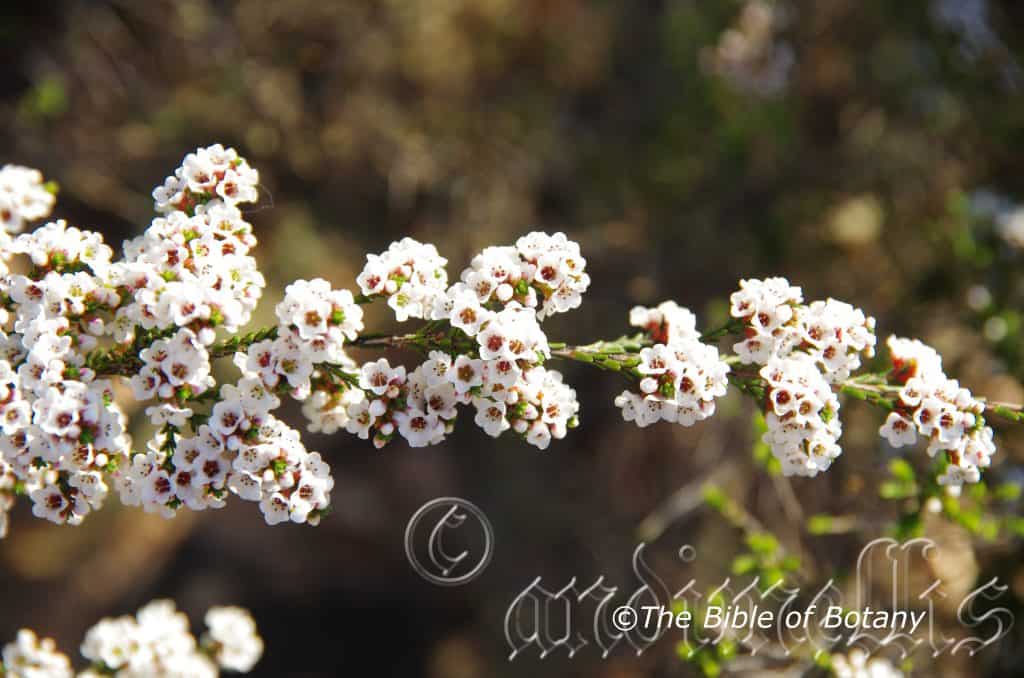
National Botanic Gardens ACT
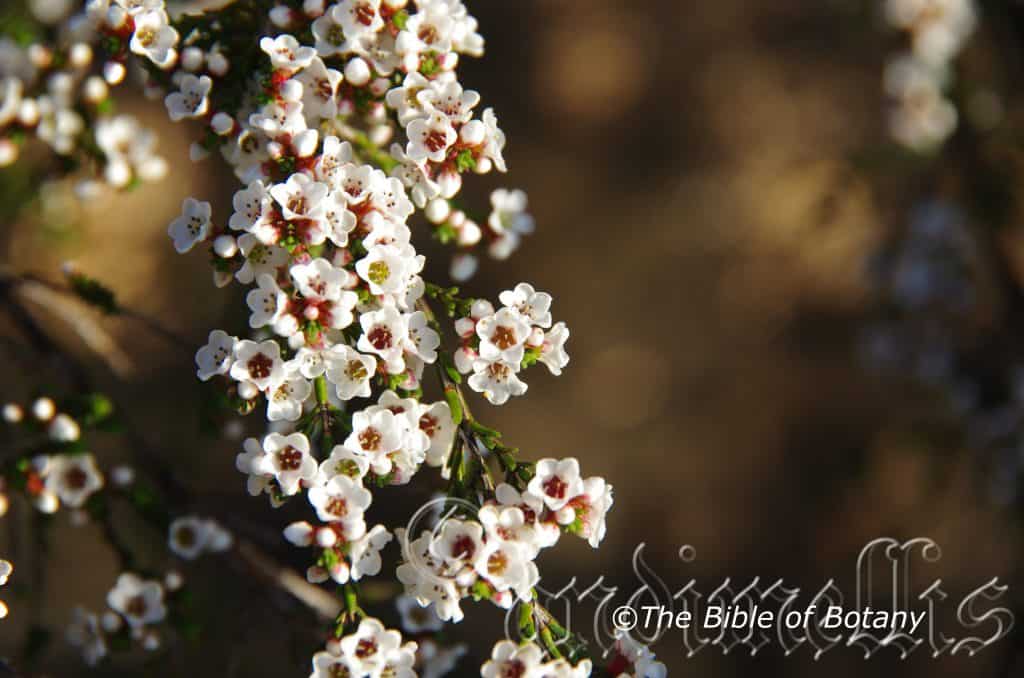
National Botanic Gardens ACT
Micromyrtus ciliata
Classification:
Unranked: Eudicots
Unranked: Rosids
Order: Myrtales
Family: Myrtaceae
Genus: From Mikrós, which is Ancient Greek for small or very small and Múrtos, which is Ancient Greek for a myrtle. It refers to plants, which resemble small myrtle plants of the Mediterranean.
Specie: From Ciliāta, which is Latin for to have cilia. It refers to plants, which have hairs that resemble an eye lash or hairs on the margins.
Sub species:
Common Name:
Distribution:
Micromyrtus ciliata is a widespread species which is found on the eastern half of New South Wales, all of Victoria and the south east corner of South Australia.
https://avh.ala.org.au/occurrences/search?taxa=Micromyrtus+ciliata#tab_mapView
Habitat Aspect Climate:
Micromyrtus ciliata prefers light dappled shade. It grows in moist heaths to moist positions in dry sclerophyll forest. The altitude ranges from 20 meter ASL to 1100 meters ASL.
The temperatures range from minus 5 degrees in August to 36 degrees in January.
The rainfall ranges from lows of 500mm to an average of 1000mm.
Soil Requirements:
Micromyrtus ciliata prefers to grow on deep fine to course sandy soils often shallow over the parent rocks. The soils are usually derived from decomposed or partially decomposed sandstones, or granites. The soils pH ranges from 5.5pH to 7pH. It does not tolerate waterlogged soils and good drainage is imperative. Non saline soils to moderately saline soils are tolerated.
Height & Spread:
Wild Plants: 0.4m to 1.2m by 0.5m to 1.5m.
Characteristics:
Micromyrtus ciliata’s branches and stems are grey to deep greyish-brown, finely furrowed and scabrous. The old dead leaves still adhere to the branches and older leaves. The young stems are pale brown and somewhat terete.
Micromyrtus ciliata’s crowded, thick almost succulent, obovate to oblong or linear leaves measure 1.5mm to 4.5mm in length by 0.5 to 1mm in width. The sub sessile, yellowish petioles are similar to the leaf structure without the ciliate hairs. The apex is obtuse with a short acuminate tip. The concolourous laminas are deep grass green, glossy, flat and glabrous on the upper lamina, while the lower lamina is strongly convex. The margins are entire and covered in short ciliate hairs. The leaflets hang down from the rachis. The mid vein and lateral veins are not visible on either lamina. The sub sessile, yellowish petioles are similar to the leaf structure without the ciliate hairs.
The sessile to sub sessile inflorescence of Micromyrtus ciliata are born singularly from the leaf axils forming compact to loose terminal heads.
The bracteoles measure 2mm to 5mm in length and are discarded shortly after anthesis. The pale yellowish-green hypanthium turns deep red following anthesis, is somewhat obconical and measures 2mm to 5mm in length. The faint ribs sometimes branching just below sepals. The pale lime green, obtuse sepals measure 0.7mm to 1mmin length. The membranous, margins are entire and have minute teeth. The broad elliptic petals measure 1.5mm to 5mm. the white petals turn deep pink to deep orange-red following anthesis.
The 5 white anthers are glabrous and measure 1mm to 1.5mm in length, while the deltoid anthers are basifixed. The anthers are creamy yellow turning brown after anthesis.
The single, erect glabrous style is pinkish at the base, turns white near the green stigma and measures 1mm to 1.5mm in length. The style is off centre on the hypanthium. The flowers appear from in late September to early November.
Micromelum minutum’s fruit is an ovoidal drupe. The green drupes turn brown when ripe. They measure 5mm to 6mm in length by 5mm to 6mm in diameter. The spreading sepals are persistent.
Wildlife:
Micromyrtus ciliata’s flowers are visited by many different specie of butterflies, beetles, wasps and native bees including Tetragonula carbonaria and the Blue banded bee Amegilla cingulata.
Cultivation:
Micromyrtus ciliata is a very difficult plant to establish and have grow for years if it is taken out of its natural habitat. Plants native to dry climates will succumb in more humid areas and vice versa. The form most often found in nurseries is a low, spreading form from the Grampians in western Victoria and while it has the size flower type often wanted by gardeners for a niche position it is generally short lived in areas away from the dry sandy granites found there. It prefers moist, well drained soils in a sunny or lightly shaded position and is tolerant of at least moderate frosts.
As a garden subject it will grow from 0.5 meters to 1.3 meters in height by 0.5 meters to 1 meter in diameter. It is cold tolerant to temperatures as low as minus 5 degrees once established.
Because of its size it is ideal in medium rockeries, on banks and on small, narrow blocks.
Propagation:
Seeds: Micromyrtus ciliata seeds can be sown into a seed raising mix. Cover the seeds with 2mm to 3mm of fine weed free mulch and keep moist. Place the tray in a warm sunny position. When the seedlings are 30mm to 50mm tall, prick them out and plant them into 50mm native tubes using a good organic mix.
Once the seedlings reach 100mm to 150mm in height they can be planted out into their permanent position.
Fertilize using seaweed, fish emulsion or organic chicken pellets soaked in water on an alternate basis. Fertilize every two months until the plants are established then twice annually in early September or March to maintain health, vitality and better flowering.
Cuttings:
Cuttings must be used if flowering in the following season are required or a particular flower colour of form is required. Fortunately Micromyrtus ciliata strikes easy from cuttings but for a happier plant and a more contented gardener seek plants from your locality. Use 100mm to 150mm long half ripened material when growing from cuttings from the present season’s growth. Take them in warmer months of the year. Remove half the leaves from the bottom section being careful not to tear the bark.
1 Prepare the cutting mix by adding one third sharp clean river sand, one third peat and one third perlite. These ingredients are sterilize,
2 Select good material from non diseased plants,
3 Select semi green stems for cuttings. Look for a stem with two or three nodes,
4 Place the cutting on a flat, hard surface, and make a clean cut down one side of the cutting at the base for 10mm with a sharp sterile knife or razor blade. – This scarification of the node will increase the chances of roots emerging from this spot. Now remove all but one or two the leaves, leaving the apex leaves in tact. If the leaves are very large in proportion to the stem, cut off the apical halves.
5 Fill a saucer with water, and place a little medium strength rooting hormone into another container like a milk bottle top. Dip the node end of the cutting into the water and then into the rooting hormone. Tap off any excess hormone,
6 Use a small dipple stick or old pencil to poke a hole into the soilless potting mix. Ensure the hole is slightly larger than the stem diameter and be careful not to wipe the rooting hormone off the cuttings base, place the cuttings in a pattern ensuring the cuttings are not touching each other,
7 I like to place the pots in Plastic bags to help maintain temperature and moisture. Place in a semi shaded place like under 50mm shade cloth.
8 When the cuttings have struck, open the bag to allow air circulation for a few days to a week,
9 Once hardened off remove the cuttings from the bag and allow to further hardening for a few more days,
10 Transplant into a good potting mix to grow on.
Fertilize using seaweed, fish emulsion or organic chicken pellets soaked in water on an alternate basis. Fertilize every two months until the plants are established then twice annually in early September or March to maintain health, vitality and better flowering.
Further Comments from Readers:
Hi reader, it seems you use The Bible of Botany a lot. That’s great as we have great pleasure in bringing it to you! It’s a little awkward for us to ask, but our first aim is to purchase land approximately 1,600 hectares to link several parcels of N.P. into one at The Pinnacles NSW Australia, but we need your help. We’re not salespeople. We’re amateur botanists who have dedicated over 30 years to saving the environment in a practical way. We depend on donations to reach our goal. If you donate just $5, the price of your coffee this Sunday, We can help to keep the planet alive in a real way and continue to bring you regular updates and features on Australian plants all in one Botanical Bible. Any support is greatly appreciated. Thank you.
In the spirit of reconciliation we acknowledge the Bundjalung, Gumbaynggirr and Yaegl and all aboriginal nations throughout Australia and their connections to land, sea and community. We pay our respect to their Elders past, present and future for the pleasures we have gained.
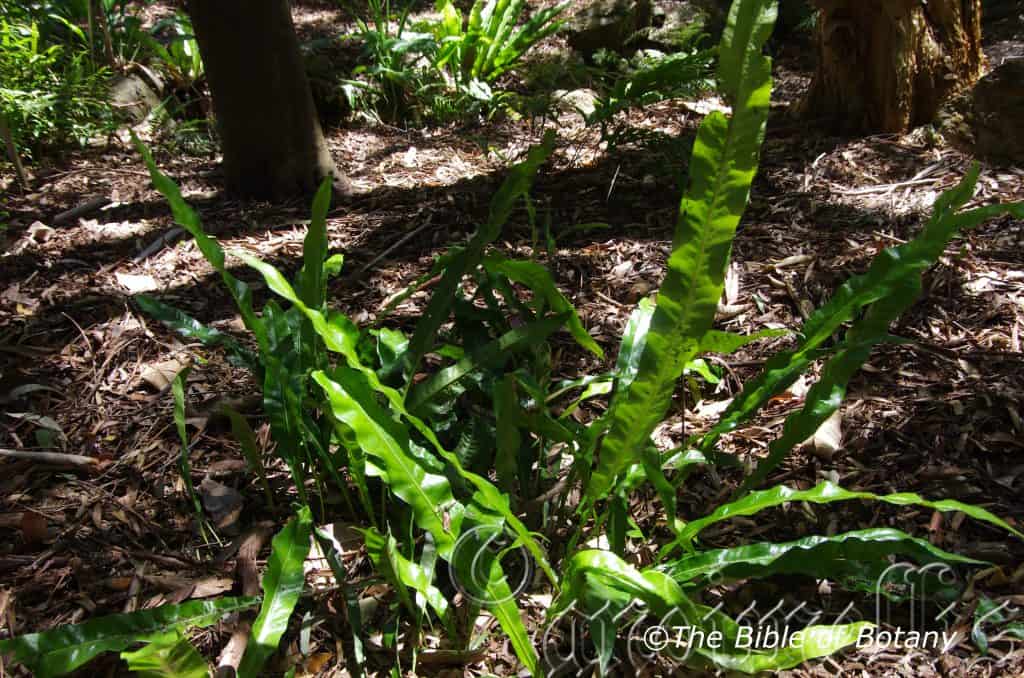
NCBG Coffs Harbour NSW
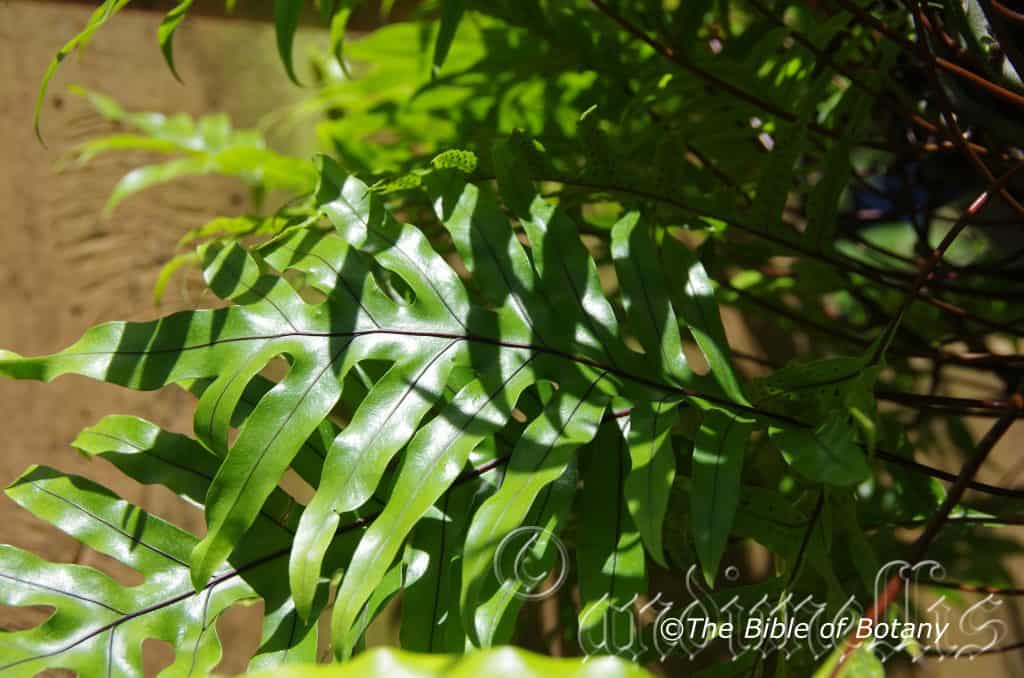
NCBG Coffs Harbour NSW
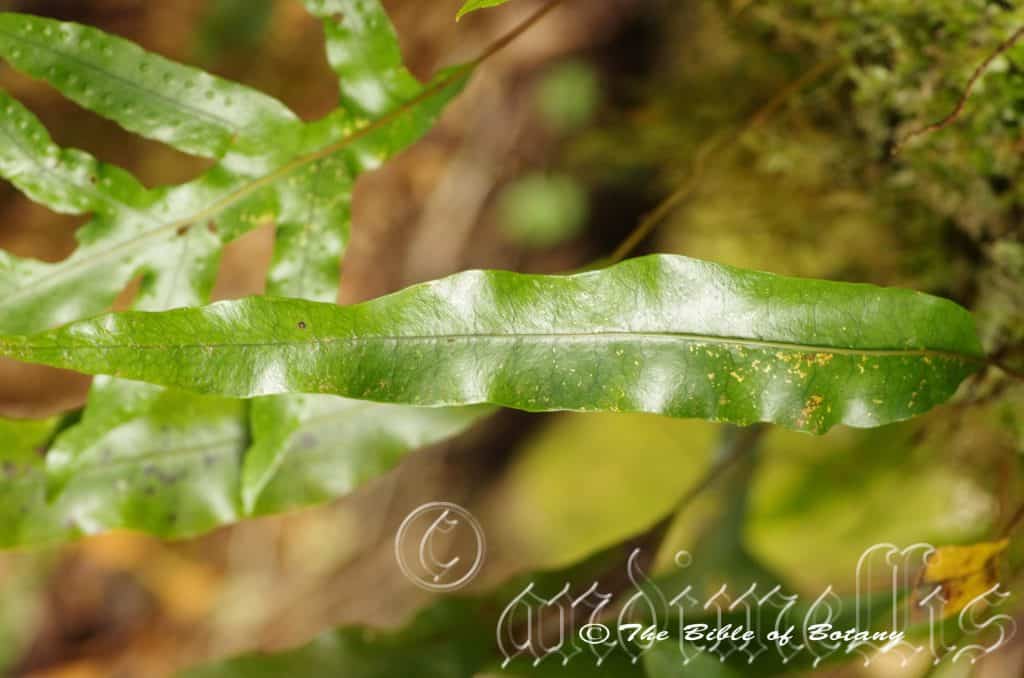
NCBG Coffs Harbour NSW
Microsorum australiense
Classification:
Unranked: Pteridophyta
Class: Pteridopsida
Order: Polypodiales
Family: Polypodiaceae
Genus: From Mikrós, which is Ancient Greek for small or very small and Sorium, which is Ancient Greek for the spore case. It refers to ferns, which have rather small spore cases.
Specie: From Austrāliense, which is Latin for land to the south. (It cn also refer to Southern parts of Africa as that area was known as Australis in Ancient Greek times.) It refers to plants which usually are only found in Australia.
Sub species:
Common Name: Kangaroo Fern.
Distribution:
Microsorum australiense is restricted to an area south from Mount Finnigan to Paluma National Park in in far north eastern Queensland.
It is found on and east of The Great Dividing Range to the coast.
https://avh.ala.org.au/occurrences/search?taxa=Microsorum+australiense#tab_mapView
Habitat Aspect Climate:
Microsorum australiense prefers light dappled shade to dense shade. It grows in well-developed warm tropical rainforests. It is a canopy epiphyte in mesic (high moisture) lower to upper montane rainforest or at times grows as a lithophyte in dryer locations within the rainforest. The altitude ranges from 750 meters ASL to 1100 meters ASL.
The temperatures range from 5 degrees in August to 40 degrees in January.
The rainfall ranges from lows of 1700mm to an average of 3200mm.
Soil Requirements:
Microsorum australiense prefers to grow as an epiphyte or at times on better quality soils growing as a lithophyte on rocks and logs where copious quantities of leaf litter have accumulated. The soils pH ranges from 4.5pH to 6.5pH. It does not tolerate waterlogged soils. Non saline soils to slightly saline soils are tolerated as are salt laden winds.
Height & Spread:
Wild Plants: 0.6m to 1m by several square meters.
Characteristics:
Microsorum australiense grows as a terrestrial, lithophytic or epiphytic fern with very long, thick and fleshy rhizomes. The rhizomes measure 5mm to 8mm in diameter. The blue-green to a mid grey-green rhizomes are glabrous and moderately to densely covered in brown to grey-brown somewhat caduceus, appressed scales. The margins are entire with a hyaline perimeter. The rhizome on Microsorum australiense is short creeping and dorsi-ventrally flattened. The rhizomes are moderately covered in relatively large ovate to broadly ovate scales, which measure 2mm to 5.5mm in length by 1mm to 2mm in width. The blackish-brown scales have finely dentate margins, while the apexes are long acuminate to acute.
Microsorum australiense’s, long, narrow elliptic, fleshy, brittle, bright green or at times bluish green fronds measure 90mm to 520mm in length by 10mm to 42mm width. The obscure stipe measures 5m in length. The base tapers gradually to stipe, while the apex acute. The margins are entire, while the concolorous laminas are slightly undulate or at times flat. The midvein is pale green, prominent on both laminas, while the lateral veins are angled at 45° to 50°. The reticulate veins are obscure. The numerous sori are basically in two rows one either side of the mid vein on the lower lamina on the upper half to two-thirds of the frond. They are only very slightly impressed into lamina and measure 0.5mm to 1.5mm in diameter. The ripe spores are a mid-tan colour.
The fern may be a polypoid meaning that it may have two sets of different chromosomes.
Wildlife:
Microsorum australiense‘s wildlife is unknown to the author.
Cultivation:
Microsorum australiense would make an excellent ground cover for areas where there is filtered light to dense shade. It always looks green and fresh especially where adequate ground moisture is retained in the soil. It is very suitable on medium clays to heavy clay soils and are most suitable for small medium and large gardens close to the coast or high in the mountains. As a garden subject it will colonize over rocks especially those of a more porous nature climbing on tree trunks to give a natural rainforest look or cover the ground on shady banks.
It is most suitable for use as a rainforest understory plant. It likes plenty of leaf litter to help increase soil fertility, maintain soil moisture and to maintain a cool root zone.
It makes a great hanging basket plant when young however due to their long slender rhizomes will eventually become sparse in foliage.
Propagation:
Fern Spores: Most people are put off at the thought of growing ferns from spore. Like all plants that produce their offspring from seed or spore the methods are the similar. Remember nature has been doing this for millions of years and has been very successful. I have had excellent results with almost every fern in Australia so give it a go.
Step 1.Select spore from the Microsorum australiense fronds that is just starting to release its spore. Rinse the fronds under clean running water and dry.
Step 2.Place the dry fronds in a brown paper bag and keep them in a cool dark place like the linen closet for about a week before you are ready to sow the spore.
Step 3.Take a large ice cream container, a small ice cream container and a clean clear plastic bag large enough to cover the large ice cream container.
Step 4.Wash both containers so that it is very clean.
Step 5. Punch some small holes in the small ice cream container.
Step 6. Use a clean fine seed raising mix that has had some clay or crusher added to it about 10mm. Then moisten the mix.
Step 7. Place this mix in the microwave oven for 7 or 8 minutes with a glass of water. Allow them to cool in the oven. You will need the water later so do not tip it out.
Step 8. Take the brown paper bag out of its cupboard. Shake the bag and remove the fronds. You should have a brown powder or small round pepper size spore.
Step 9. Remove the mixture from the oven once it has cooled and place it in the small ice cream container.
Step 10.Sprinkle the spore over the mixture in the small ice cream container.
Step 11.Place the small ice cream container in the large ice cream container.
Step 12.Remove the water from the microwave and tip it into the ice cream container so there is 20mm to 25mm of water in the bottom.
Step 12.Place the ice cream containers in the plastic bag and seal.
Step 13.Place the contents and bag in a warm shady place. Shade houses and some window sills are ideal.
Step 14.Wait until the ferns are 20mm to 30 mm high before you attempt to transplant them. Once it is ready open the bag up and allow the air to flow around them. Every three days open the bag a little further so the ferns get use to their new environment. Allow them a week or two to harden off before you transplant them into 50mm standard tubes. Do not try to transplant them as single plants as it is a little delicate still. Fertilize using Seaweed, fish emulsion or organic chicken pellets soaked in water on an alternate basis. Once they reach 50mm to 60mm start separating the strongest ones and again do not move them far from their original position. After a few weeks the ferns will power away without any set backs.
Step 15. Fertilize using Seaweed, fish emulsion or organic chicken pellets soaked in water and apply the liquid on an alternate basis. Fertilize every 2 months until the plants are established then once a year there after in spring or autumn to maintain health and vigor.
Fertilize using seaweed, fish emulsion or organic chicken pellets soaked in water on an alternate basis. Fertilize every two months until the plants are established then twice annually in early September or March to maintain better colour, health and vitality.
Further Comments from Readers:
Hi reader, it seems you use The Bible of Botany a lot. That’s great as we have great pleasure in bringing it to you! It’s a little awkward for us to ask, but our first aim is to purchase land approximately 1,600 hectares to link several parcels of N.P. into one at The Pinnacles NSW Australia, but we need your help. We’re not salespeople. We’re amateur botanists who have dedicated over 30 years to saving the environment in a practical way. We depend on donations to reach our goal. If you donate just $5, the price of your coffee this Sunday, We can help to keep the planet alive in a real way and continue to bring you regular updates and features on Australian plants all in one Botanical Bible. Any support is greatly appreciated. Thank you.
In the spirit of reconciliation we acknowledge the Bundjalung, Gumbaynggirr and Yaegl and all aboriginal nations throughout Australia and their connections to land, sea and community. We pay our respect to their Elders past, present and future for the pleasures we have gained.
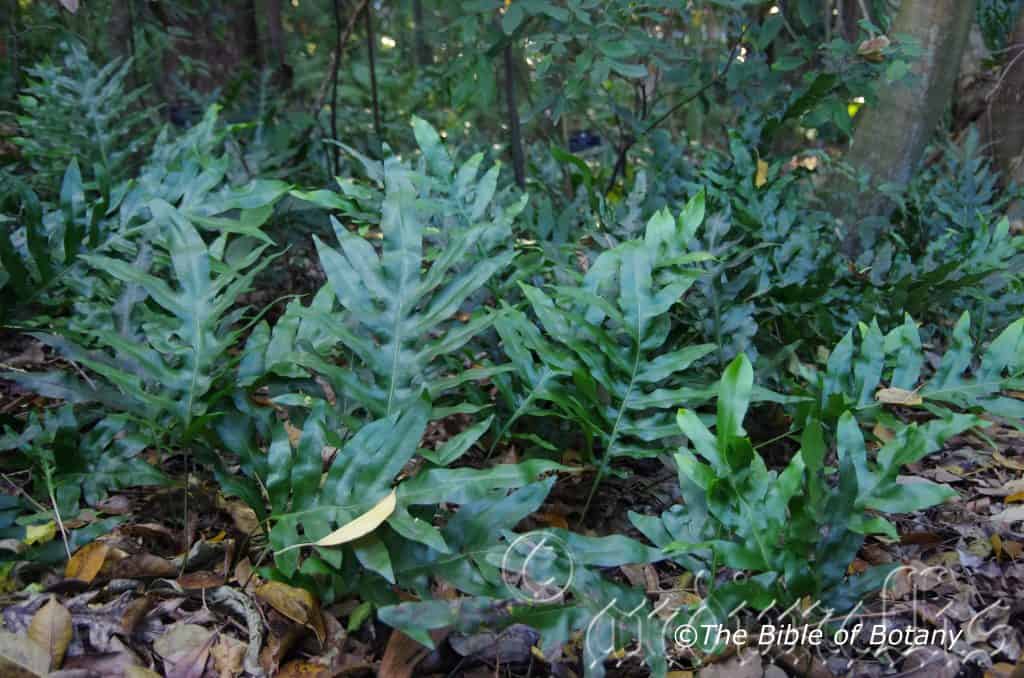
Mount Cootha Botanic Gardens Qld.

Krzyszt of Ziarnek, Kenraiz, CC BY-SA 4.0
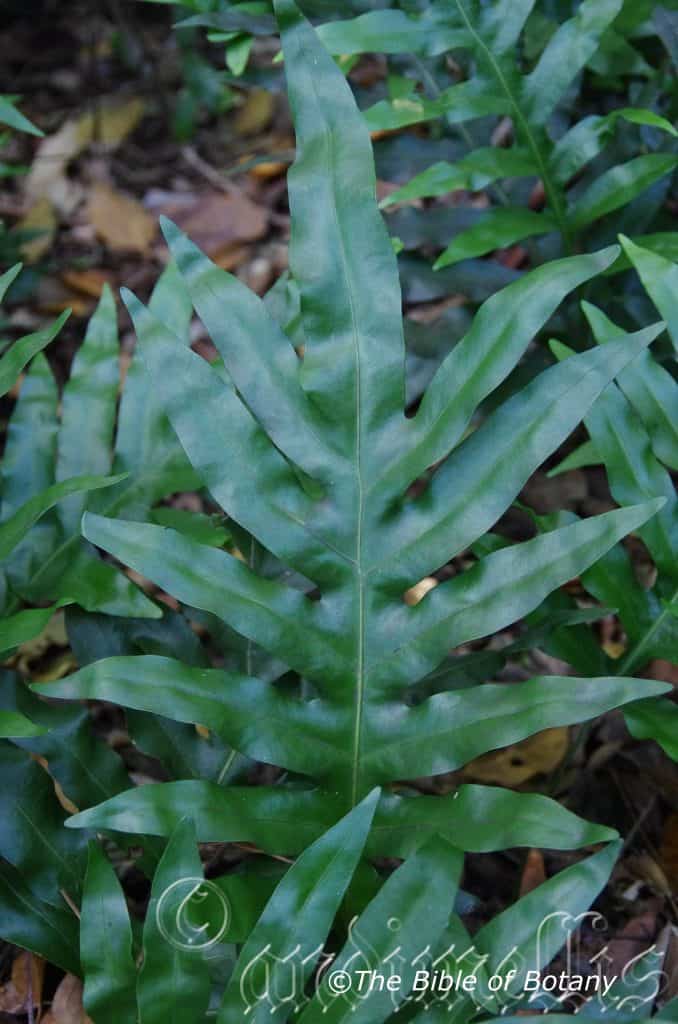
Mount Cootha Botanic Gardens Qld.
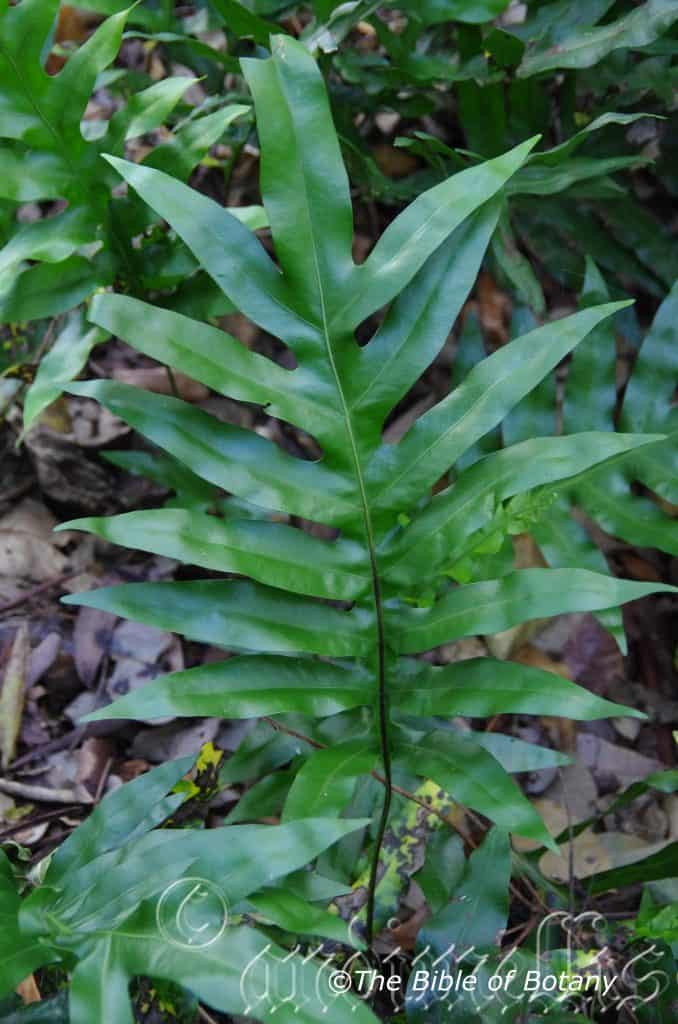
Mount Cootha Botanic Gardens Qld.
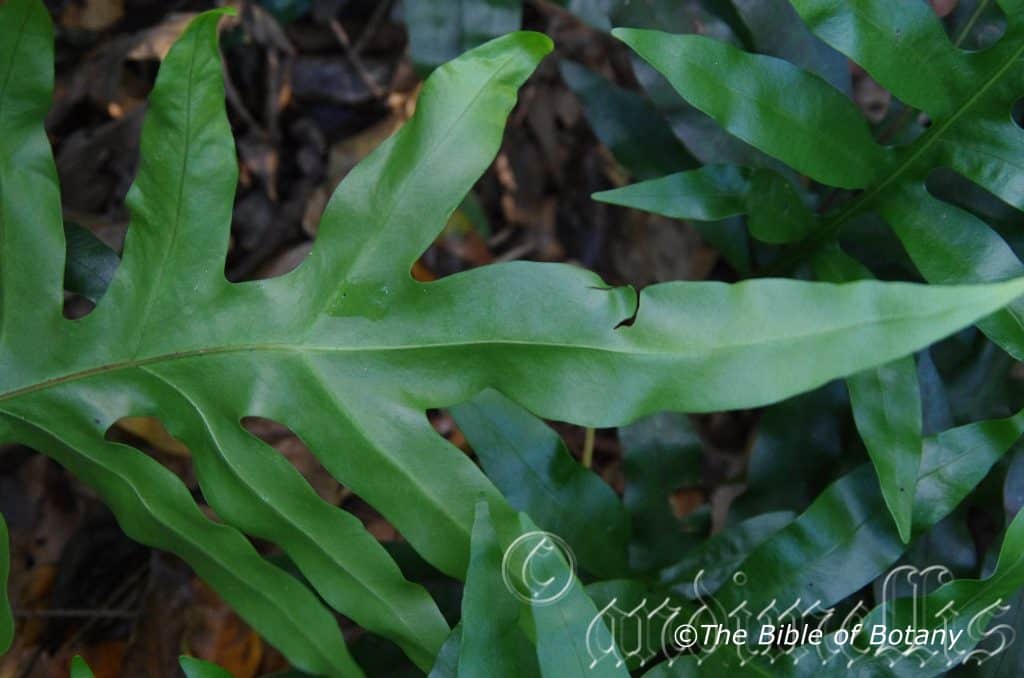
Mount Cootha Botanic Gardens Qld.
Microsorum grossum
Classification:
Unranked: Pteridophyta
Class: Pteridopsida
Order: Polypodiales
Family: Polypodiaceae
Genus: From Mikrós, which is Ancient Greek for small or very small and Sorium, which is Ancient Greek for the spore case. It refers to ferns, which have rather small spore cases.
Specie: From Grossum, which is Latin for thick and large. It refers to structures or organs, which are much thicker than other species in the genus.
Sub species:
Common Name:
Distribution:
Microsorum grossum is a widespread species which is found close to the coast along rivers and streams east from Wyndham in far north west Western Australia, the Northern Territory and south from the Torres Strait Islands in far north east Queensland to Moggill in in far south east Queensland.
It is found in many countries with tropical and subtropical climates which include Borneo, Fiji, Hainan, Marquesas, New Caledonia, New Guinea, Pitcairn Is., Tonga, Tubuai Is., Vietnam and Wallis-Futuna Is.
https://avh.ala.org.au/occurrences/search?taxa=Microsorum+grossum#tab_mapView
Habitat Aspect Climate:
Microsorum grossum prefers light dappled shade to dense shade. It grows in well-developed warm subtropical rainforests and warm to cool tropical rainforests, littoral rainforests, tropical vine forests, back dunes and protected frontal dunes. The altitude ranges from 2 meters ASL to 1000 meters ASL.
The temperatures range from 5 degrees in August to 44 degrees in January.
The rainfall ranges from lows of 700mm to an average of 3200mm. In the lower rainfall areas the plants favour ground where the moisture content of the soil is more even throughout the year and will be found growing as a lithophyte.
Soil Requirements:
Microsorum grossum prefers poor to better quality sands, sandy loams to light medium clays growing as a terrestrial fern or as a lithophyte on rocks and logs or as an epiphyte. Where it grows as a terrestrial fern the soils are derived from decomposed brown basalts, black basalts, granite or sandstone or accumulated beach sands. The soils pH ranges from 5pH to 8pH. It does not tolerate waterlogged soils. Non saline soils to moderately saline soils are tolerated as are salt laden winds.
Height & Spread:
Wild Plants: 0.1m to 0.3m by several square meters.
Characteristics:
Microsorum grossum grows as a terrestrial ,lithophytic or epiphytic fern with very long, thick and fleshy rhizomes. The rhizomes measure 5mm to 8mm in diameter. The blue-green to a mid grey-green rhizomes are glabrous and moderately to densely covered in brown to grey-brown somewhat caduceus, appressed scales. The margins are entire with a hyaline perimeter.
Microsorum grossum’s has odd pinnate fronds usually with 5 to 7 rarely 4 deep lobes. The fronds measure 100mm to 300mm in length. The slender 50mm to 90mm stipes are deep green, glossy and glabrous. The fronds have a sweet smell when fresh.
The lamina on the pinnatifid fronds is deeply divided with alternate lobes that measure 60mm to 120mm in length by 8mm to 30mm wide. The apex lobes are 30mm to 170mm in length by 10mm to 30mm in width. The coriaceous laminas are glabrous except for a few scales along the midrib and costae. The discolourous laminas are sea green to mid green, semi glossy and glabrous on the upper laminas, while the lower laminas are paler. The margins are entire and slightly undulating. The rachis and mid veins on the lobes are prominent on the lower lamina and is distinctly visible on the upper lamina.
The fertile fronds are slightly narrower than the sterile fronds. The tan to brownish-tan sporangia are in 2 rows, one either side of the mid vein.
Wildlife:
Microsorum grossum’s wildlife is unknown to the author.
Cultivation:
Microsorum grossum makes an excellent ground cover for areas where there is filtered light to dense shade. They always look green and fresh especially where adequate ground moisture is retained in the soil. It is very suitable on medium clays to heavy clay soils and are most suitable for small medium and large gardens close to the coast or high in the mountains. As a garden subject it will colonize over rocks especially those of a more porous nature climbing on tree trunks to give a natural rainforest look or cover the ground on shady banks.
It is most suitable for use as a rainforest understory plant. It likes plenty of leaf litter to help increase soil fertility, maintain soil moisture and to maintain a cool root zone.
It makes a great hanging basket plant when young however due to their long slender rhizomes will eventually become sparse in foliage. In saying that it does look very natural if placed in a basket with Platicerium bifurcatum.
Propagation:
Fern Spores: Most people are put off at the thought of growing ferns from spore. Like all plants that produce their offspring from seed or spore the methods are the similar. Remember nature has been doing this for millions of years and has been very successful. I have had excellent results with almost every fern in Australia so give it a go.
Step 1.Select spore from the Microsorum pustulatum fronds that is just starting to release its spore. Rinse the fronds under clean running water and dry.
Step 2.Place the dry fronds in a brown paper bag and keep them in a cool dark place like the linen closet for about a week before you are ready to sow the spore.
Step 3.Take a large ice cream container, a small ice cream container and a clean clear plastic bag large enough to cover the large ice cream container.
Step 4.Wash both containers so that it is very clean.
Step 5. Punch some small holes in the small ice cream container.
Step 6. Use a clean fine seed raising mix that has had some clay or crusher added to it about 10mm. Then moisten the mix.
Step 7. Place this mix in the microwave oven for 7 or 8 minutes with a glass of water. Allow them to cool in the oven. You will need the water later so do not tip it out.
Step 8. Take the brown paper bag out of its cupboard. Shake the bag and remove the fronds. You should have a brown powder or small round pepper size spore.
Step 9. Remove the mixture from the oven once it has cooled and place it in the small ice cream container.
Step 10.Sprinkle the spore over the mixture in the small ice cream container.
Step 11.Place the small ice cream container in the large ice cream container.
Step 12.Remove the water from the microwave and tip it into the ice cream container so there is 20mm to 25mm of water in the bottom.
Step 12.Place the ice cream containers in the plastic bag and seal.
Step 13.Place the contents and bag in a warm shady place. Shade houses and some window sills are ideal.
Step 14.Wait until the ferns are 20mm to 30 mm high before you attempt to transplant them. Once it is ready open the bag up and allow the air to flow around them. Every three days open the bag a little further so the ferns get use to their new environment. Allow them a week or two to harden off before you transplant them into 50mm standard tubes. Do not try to transplant them as single plants as it is a little delicate still. Fertilize using Seaweed, fish emulsion or organic chicken pellets soaked in water on an alternate basis. Once they reach 50mm to 60mm start separating the strongest ones and again do not move them far from their original position. After a few weeks the ferns will power away without any set backs.
Step 15. Fertilize using Seaweed, fish emulsion or organic chicken pellets soaked in water and apply the liquid on an alternate basis. Fertilize every 2 months until the plants are established then once a year there after in spring or autumn to maintain health and vigor.
Fertilize using seaweed, fish emulsion or organic chicken pellets soaked in water on an alternate basis. Fertilize every two months until the plants are established then twice annually in early September or March to maintain better colour, health and vitality.
Further Comments from Readers:
Hi reader, it seems you use The Bible of Botany a lot. That’s great as we have great pleasure in bringing it to you! It’s a little awkward for us to ask, but our first aim is to purchase land approximately 1,600 hectares to link several parcels of N.P. into one at The Pinnacles NSW Australia, but we need your help. We’re not salespeople. We’re amateur botanists who have dedicated over 30 years to saving the environment in a practical way. We depend on donations to reach our goal. If you donate just $5, the price of your coffee this Sunday, We can help to keep the planet alive in a real way and continue to bring you regular updates and features on Australian plants all in one Botanical Bible. Any support is greatly appreciated. Thank you.
In the spirit of reconciliation we acknowledge the Bundjalung, Gumbaynggirr and Yaegl and all aboriginal nations throughout Australia and their connections to land, sea and community. We pay our respect to their Elders past, present and future for the pleasures we have gained.
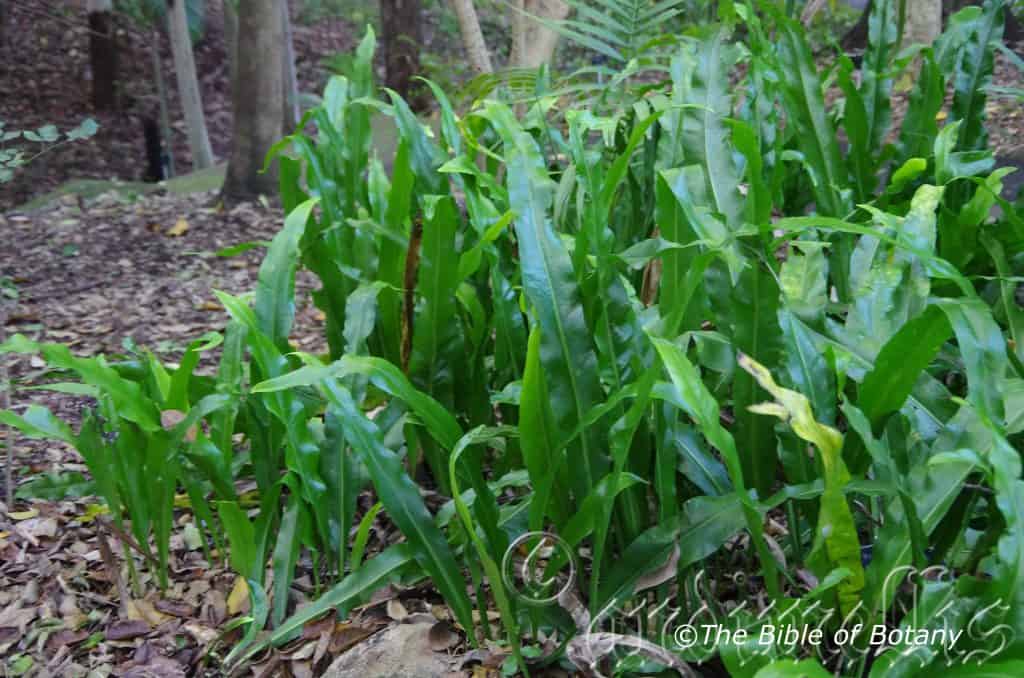
Author’s Garden The Pinnacles NSW
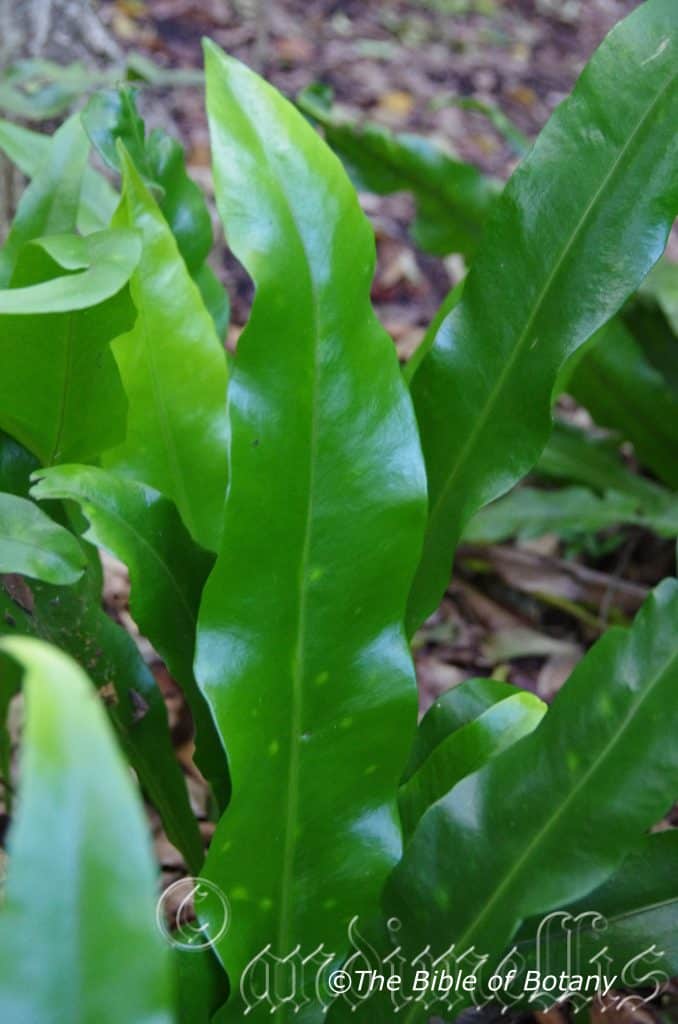
Author’s Garden The Pinnacles NSW
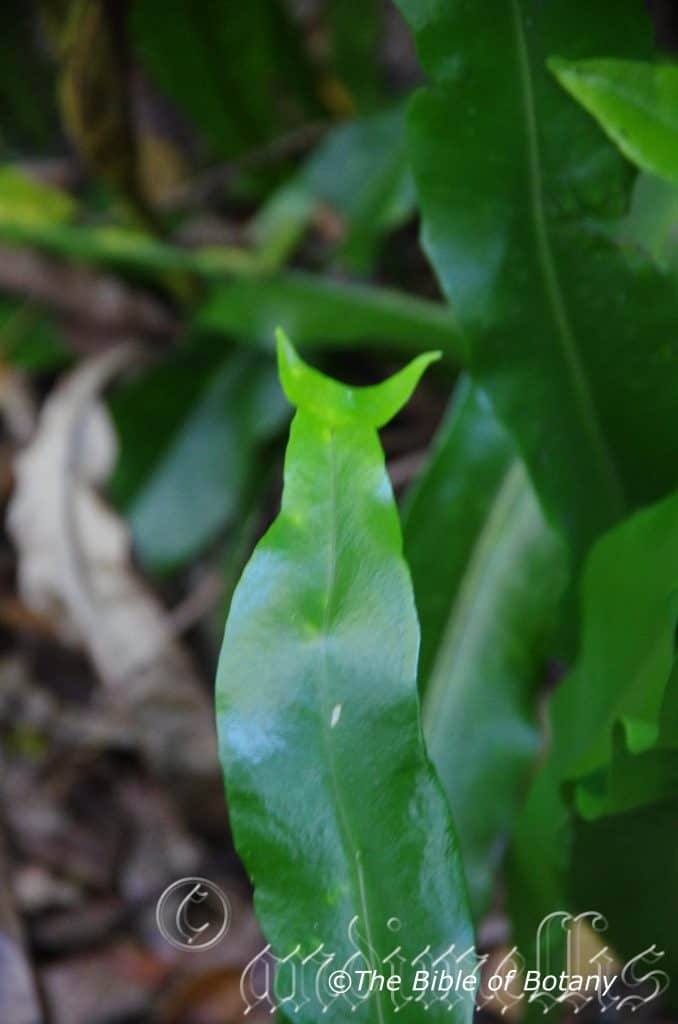
Author’s Garden The Pinnacles NSW
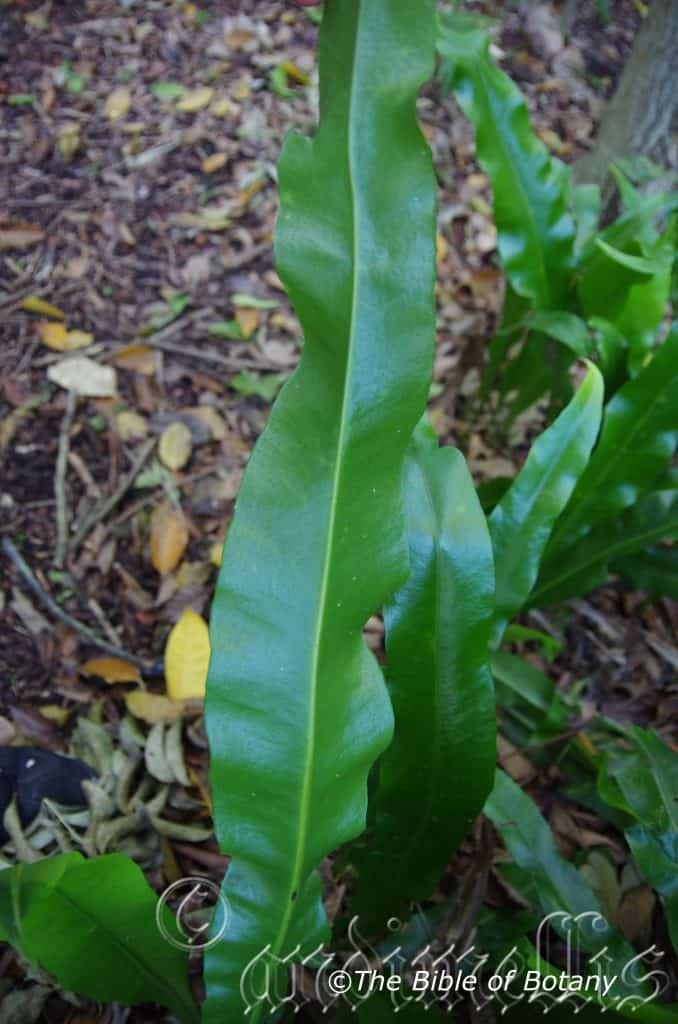
Author’s Garden The Pinnacles NSW
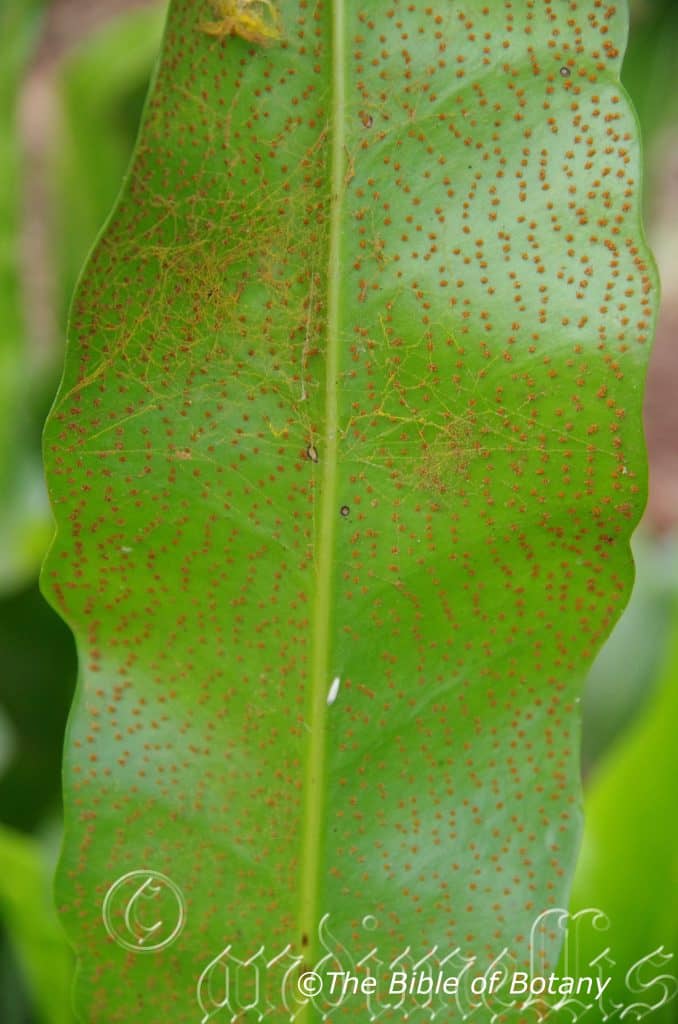
Author’s Garden The Pinnacles NSW
Microsorum punctatum
Classification:
Unranked: Pteridophyta
Class: Pteridopsida
Order: Polypodiales
Family: Polypodiaceae
Genus: From Mikrós, which is Ancient Greek for small or very small and Sorium, which is Ancient Greek for the spore case. It refers to ferns, which have rather small spore cases.
Specie: From Pūnctāta, which is Latin for punctate, spots or dots. It refers to structures or organs, which have small blister like swellings on the surface. Here it refers to the sporangia resembling small dots especially before the spore is released.
Sub species:
Common Name:
Distribution:
Microsorum punctatum is a widespread species which is found south from the Torres Strait Islands to Behanna Creek, a tributary of the Goondiwindi River in south east Queensland.
It is also found in Andaman Is., Angola, Assam, Bangladesh, Bismarck Archipelago, Borneo, Burundi, Cambodia, Cameroon, Cape Provinces, Caroline Is., Central African Republic, China North-Central, China South-Central, China Southeast, Christmas Island., Comoros, Equatorial Guinea, Ethiopia, Fiji, Gabon, Ghana, Guinea, Gulf of Guinea Is., Hainan, India, Ivory Coast, Jawa, Kenya, KwaZulu-Natal, Laos, Lesser Sunda Is., Liberia, Madagascar, Malaya, Maluku, Marianas, Marquesas, Mauritius, Mozambique, Myanmar, Nepal, New Caledonia, New Guinea, Nicobar Is., Nigeria, Northern Provinces, Papua, Philippines, Rwanda, Réunion, Seychelles, Sierra Leone, Society Is., Solomon Is., Sri Lanka, Sulawesi, Sumatera, Taiwan, Tanzania, Thailand, Uganda, Vanuatu, Vietnam, Zambia, Zaïre and Zimbabwe.
https://avh.ala.org.au/occurrences/search?taxa=Microsorum+punctatum#tab_mapView
Habitat Aspect Climate:
Microsorum punctatum prefers light dappled shade to dense shade. It grows in well-developed cool subtropical rainforests and warm to cool temperate rainforests. The altitude ranges from 5 meters ASL to 1,000 meters ASL.
The temperatures range from 5 degrees in August to 38 degrees in January.
The rainfall ranges from lows of 500mm to an average of 2000mm. In the lower rainfall areas the plants favour ground where the moisture content of the soil is more even throughout the year and will be found growing as a lithophyte.
Soil Requirements:
Microsorum punctatum prefers better quality sandy loams to light medium clays. The soils are usually derived from decomposed brown basalts, black basalts or granite close to the parent rock when growing as a terrestrial fern. The soils pH ranges from 4.5pH to 6pH. It does not tolerate waterlogged soils. Non saline soils to slightly saline soils are tolerated.
Height & Spread:
Wild Plants: 0.3m to 0.7m by several square meters.
Characteristics:
Microsorum punctatum grows as an epiphyte or a terrestrial fern, with very long slender and fleshy rhizomes. The rhizomes measure 30mm to 40mm in diameter. The blueish-green and glaucous rhizomes are covered in deep brown somewhat caduceus, appressed scales. The elongated deltoid scales measure 4mm to 7mm in length by 1.5mm to 3mm in width at the base.
The single, simple lanceolate frond measures 400mm to 650mm in length by 50mm to 60mm in width and has an indistinct petiole. The clear leaf bone measures 3mm in diameter. The discolourous fronds are bright green, semi glossy with a cuneate to rounded base, while the apex is tapering or narrow acute or at times forked with acute tips.
The fertile fronds are slightly narrower than the sterile fronds. The sporangia are randomly scattered on the apical half to two third of the frond. The pale fawnish-yellow to yellow spore are extremely small.
Wildlife:
Microsorum punctatum’s wildlife is unknown to the author.
Cultivation:
Microsorum punctatum makes an excellent ground cover for areas where there is filtered light to dense shade. It always looks green and fresh even when adequate ground moisture is lowered for short periods in the soil. It is very suitable on sands to heavy clay soils and is most suitable for small medium and large gardens close to the coast or high in the mountains. As a garden subject it will colonize rocks especially those of a more porous nature climbing on tree trunks in a rainforest situation or cover the ground on shady banks.
It is most suitable for use as a rainforest understory plant. It relishes copious supplies of leaf litter to help increase soil fertility, maintain soil moisture and to maintain a cool root zone.
It makes a great large hanging basket plant when young however due to their long slender rhizomes will eventually become sparse in foliage. In saying that it does look very natural if placed in a basket with Platicerium bifurcatum. Plants in the garden where good supplies of leaf litter will produce fronds from 700mm to 900mm in height by 70mm to 100mm in width.
As an understory fern in a small rainforest garden it looks at home with Adiantum hispidulum or Adiantum aethiopicum and even Asplenium australasicum as a back drop and Platycerium superbum and Platycerium bifurcatum hanging down from above.
Propagation:
Fern Spores: Most people are put off at the thought of growing ferns from spore. Like all plants that produce their offspring from seed or spore the methods are the similar. Remember nature has been doing this for millions of years and has been very successful. I have had excellent results with almost every fern in Australia so give it a go.
Step 1.Select spore from the Microsorum punctatum fronds that is just starting to release its spore. Rinse the fronds under clean running water and dry.
Step 2.Place the dry fronds in a brown paper bag and keep them in a cool dark place like the linen closet for about a week before you are ready to sow the spore.
Step 3.Take a large ice cream container, a small ice cream container and a clean clear plastic bag large enough to cover the large ice cream container.
Step 4.Wash both containers so that it is very clean.
Step 5. Punch some small holes in the small ice cream container.
Step 6. Use a clean fine seed raising mix that has had some clay or crusher added to it about 10mm. Then moisten the mix.
Step 7. Place this mix in the microwave oven for 7 or 8 minutes with a glass of water. Allow them to cool in the oven. You will need the water later so do not tip it out.
Step 8. Take the brown paper bag out of its cupboard. Shake the bag and remove the fronds. You should have a brown powder or small round pepper size spore.
Step 9. Remove the mixture from the oven once it has cooled and place it in the small icecream container.
Step 10.Sprinkle the spore over the mixture in the small icecream container.
Step 11.Place the small icecream container in the large icecream container.
Step 12.Remove the water from the microwave and tip it into the icecream container so there is 20mm to 25mm of water in the bottom.
Step 12.Place the icecream containers in the plastic bag and seal.
Step 13.Place the contents and bag in a warm shady place. Shade houses and some window sills are ideal.
Step 14.Wait until the ferns are 20mm to 30 mm high before you attempt to transplant them. Once it is ready open the bag up and allow the air to flow around them. Every three days open the bag a little further so the ferns get use to their new environment. Allow them a week or two to harden off before you transplant them into 50mm standard tubes. Do not try to transplant them as single plants as it is a little delicate still. Fertilize using Seaweed, fish emulsion or organic chicken pellets soaked in water on an alternate basis. Once they reach 50mm to 60mm start separating the strongest ones and again do not move them far from their original position. After a few weeks the ferns will power away without any set backs.
Step 15. Fertilize using Seaweed, fish emulsion or organic chicken pellets soaked in water and apply the liquid on an alternate basis. Fertilize every 2 months until the plants are established then once a year there after in spring or autumn to maintain health and vigor.
Fertilize using seaweed, fish emulsion or organic chicken pellets soaked in water on an alternate basis. Fertilize every two months until the plants are established then twice annually in early September or March to maintain better colour, health and vitality.
Division: Most ferns cannot be multiplied by division however Microsorum punctatum is an exception. This a good time to divide the plants to maintain good vigour.
1. Water thoroughly the day before you start.
2. Cut back foliage to around 70mm to 100mm in length,
3. Use a garden fork or shovel to dig around the clump you want to divide (about 100mm to 150mm greater circumference than the bulbs) or dig around the rhizome you want to cut and sever it,
4. Lift the whole of the root ball out of the ground,
5. Remove the soil by shaking,
6. Once the rhizomes can be seen clearly it is easier to pry and split the clump apart.
7. Ensure there are a small number of fronds in each new clump,
8. Replant in the prepared bed using half a hand full of blood and bone in the hole and mix,
9. Level off at the same level the bulbs were at the start.
10. Water thoroughly and regularly. Feed fortnightly until the plants have re-established themselves. This should take about three months in the summer or up to 9 months in cooler climates.
Further Comments from Readers:
Hi reader, it seems you use The Bible of Botany a lot. That’s great as we have great pleasure in bringing it to you! It’s a little awkward for us to ask, but our first aim is to purchase land approximately 1,600 hectares to link several parcels of N.P. into one at The Pinnacles NSW Australia, but we need your help. We’re not salespeople. We’re amateur botanists who have dedicated over 30 years to saving the environment in a practical way. We depend on donations to reach our goal. If you donate just $5, the price of your coffee this Sunday, We can help to keep the planet alive in a real way and continue to bring you regular updates and features on Australian plants all in one Botanical Bible. Any support is greatly appreciated. Thank you.
In the spirit of reconciliation we acknowledge the Bundjalung, Gumbaynggirr and Yaegl and all aboriginal nations throughout Australia and their connections to land, sea and community. We pay our respect to their Elders past, present and future for the pleasures we have gained.
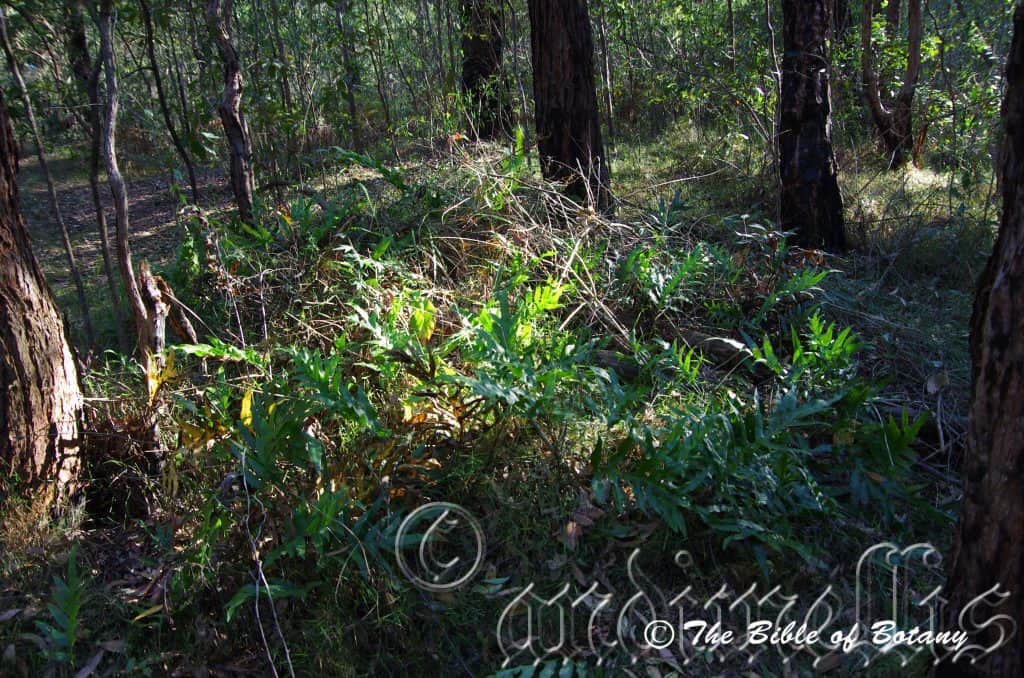
Seven Hills Qld.
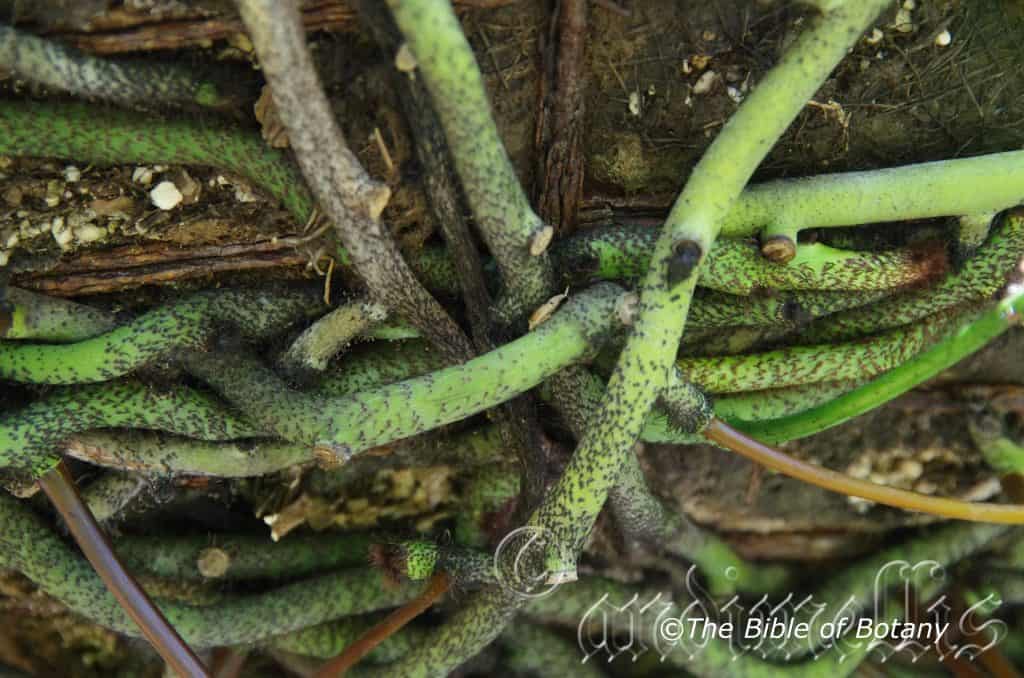
Mount Cootha Botanic Gardens Qld.
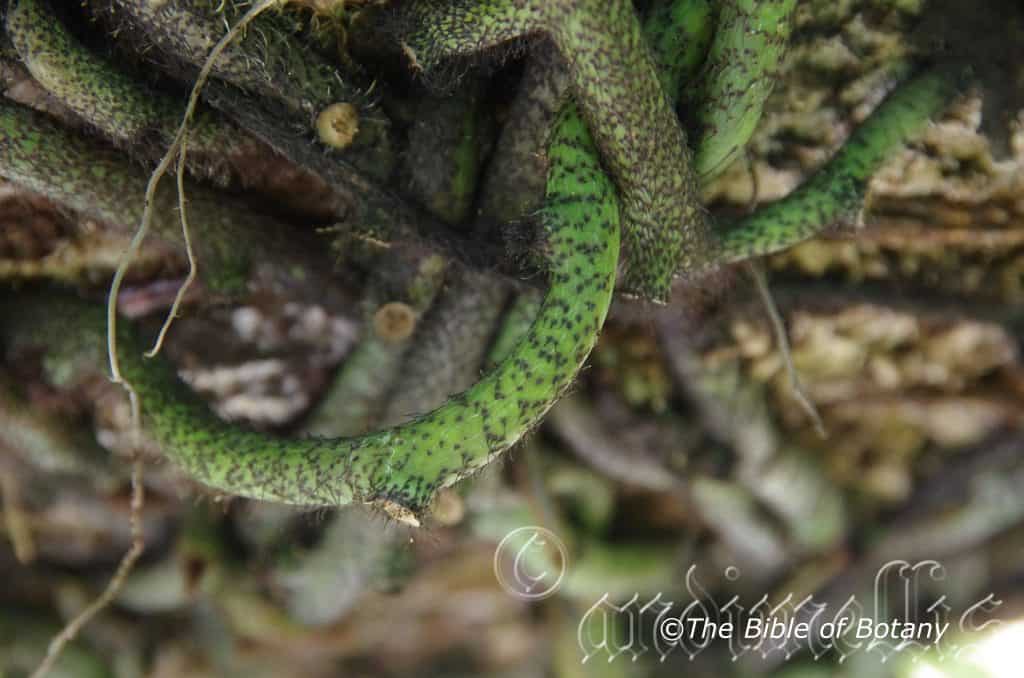
Mount Cootha Botanic Gardens Qld.
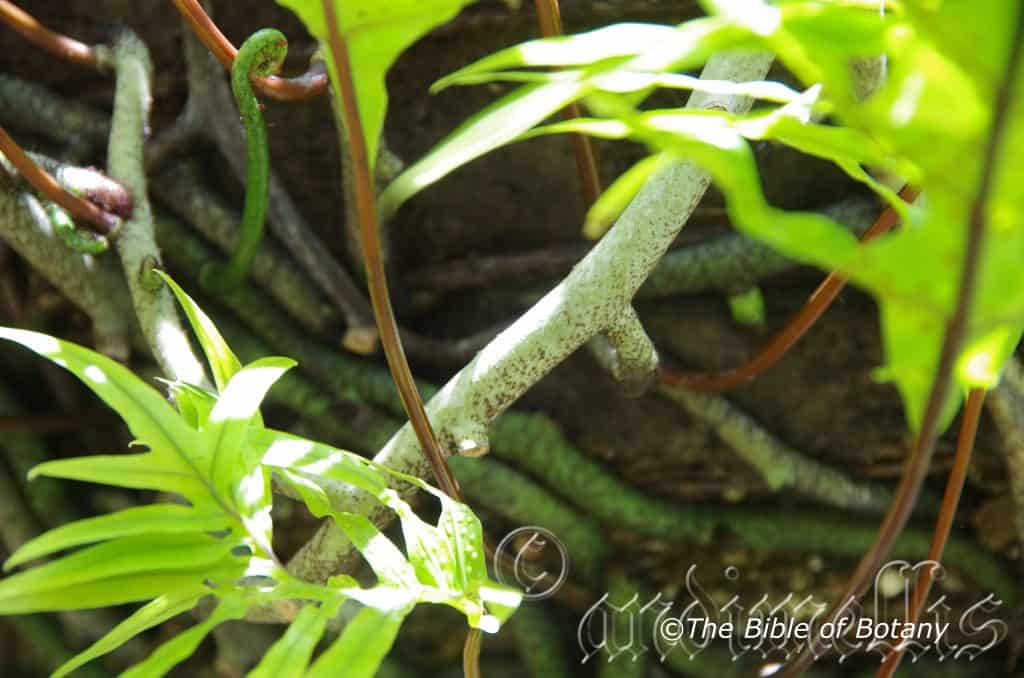
Mount Cootha Botanic Gardens Qld.
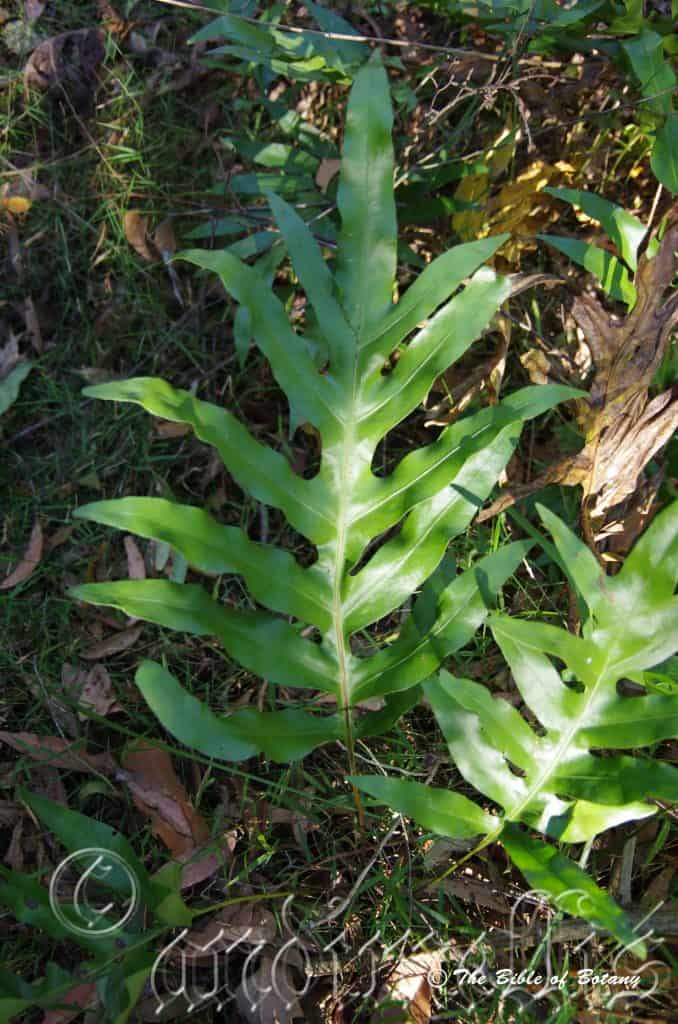
Seven Hills Qld.
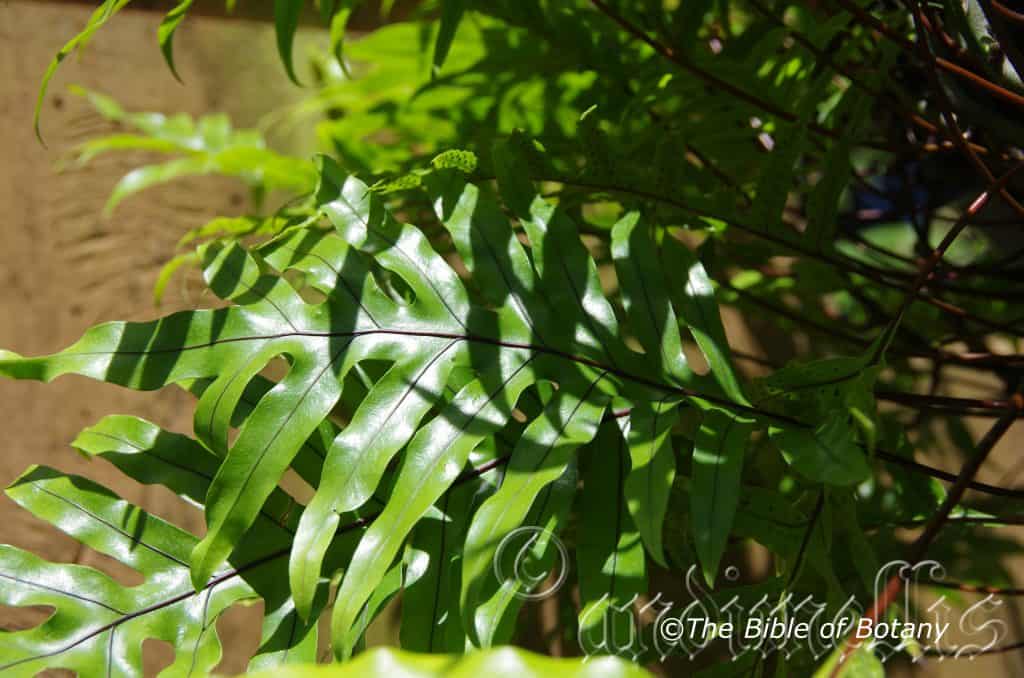
Mount Cootha Botanic Gardens Qld.
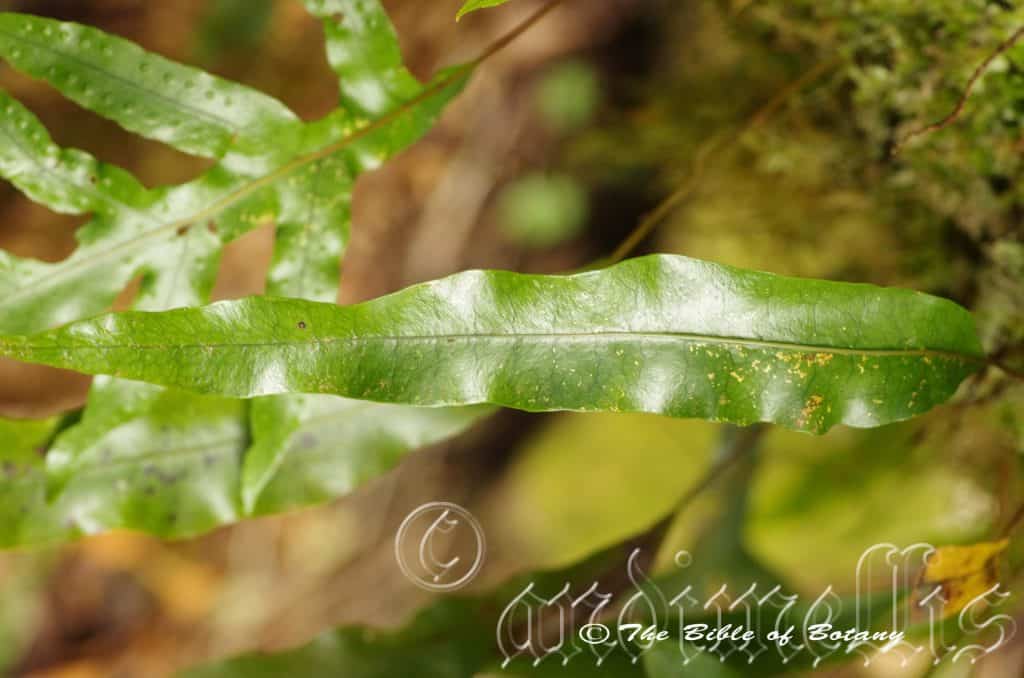
Cathedral Rocks National Park NSW

Seven Hills Qld.
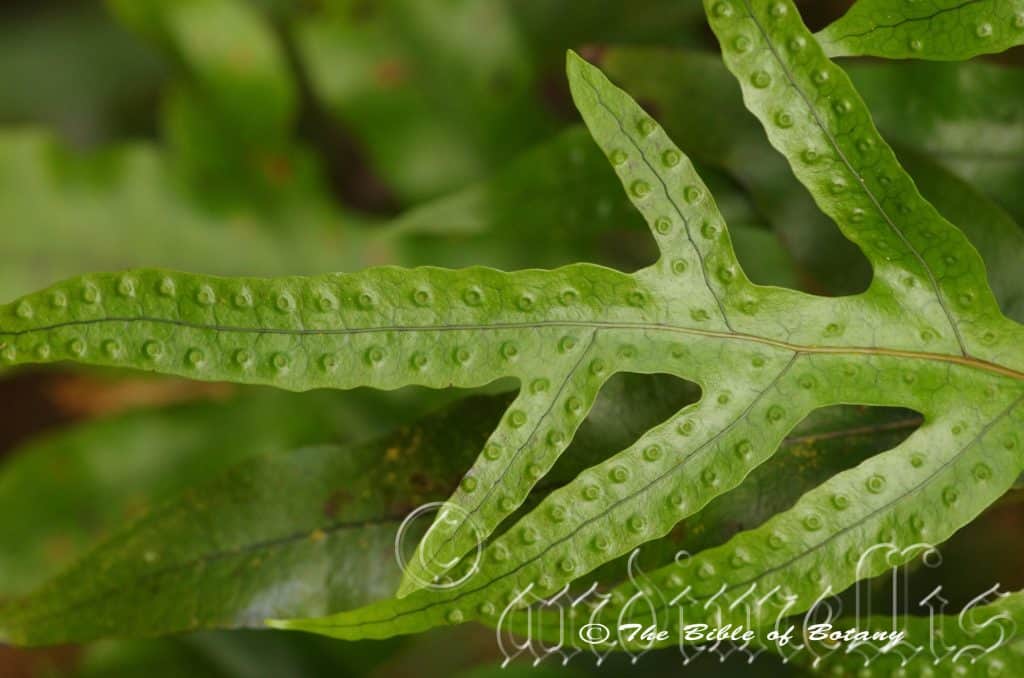
Cathedral Rocks National Park NSW
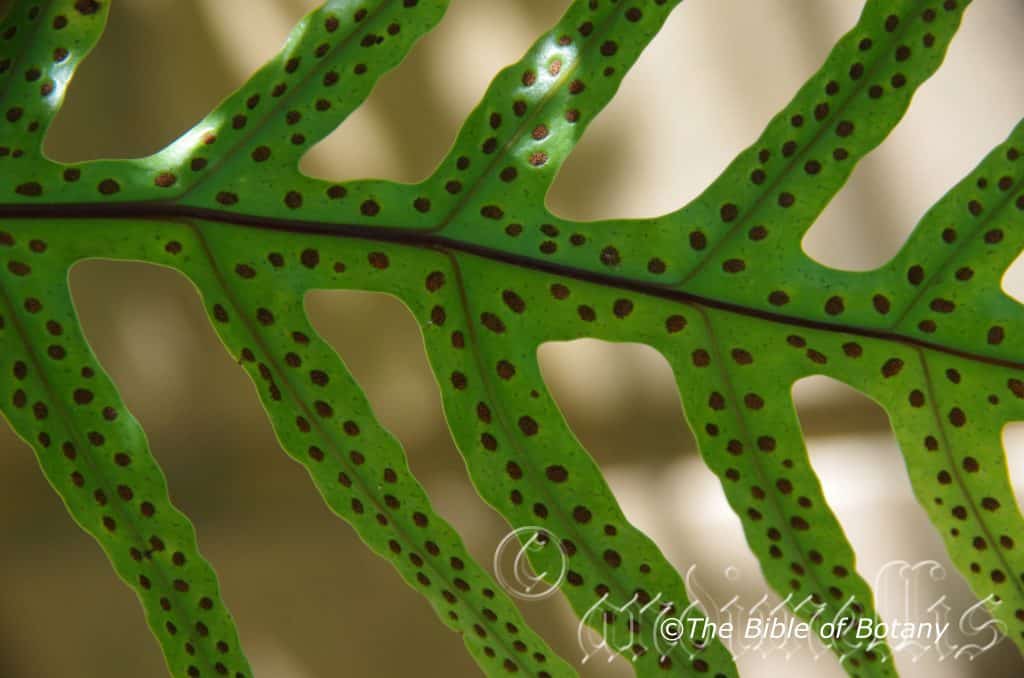
Cathedral Rocks National Park NSW
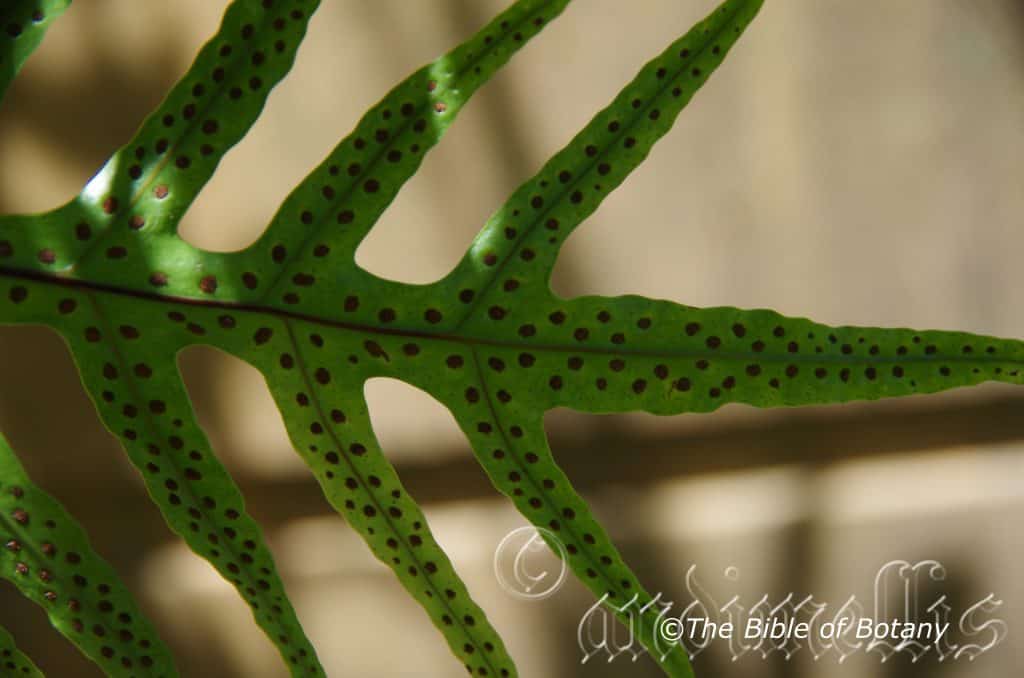
Cathedral Rocks National Park NSW
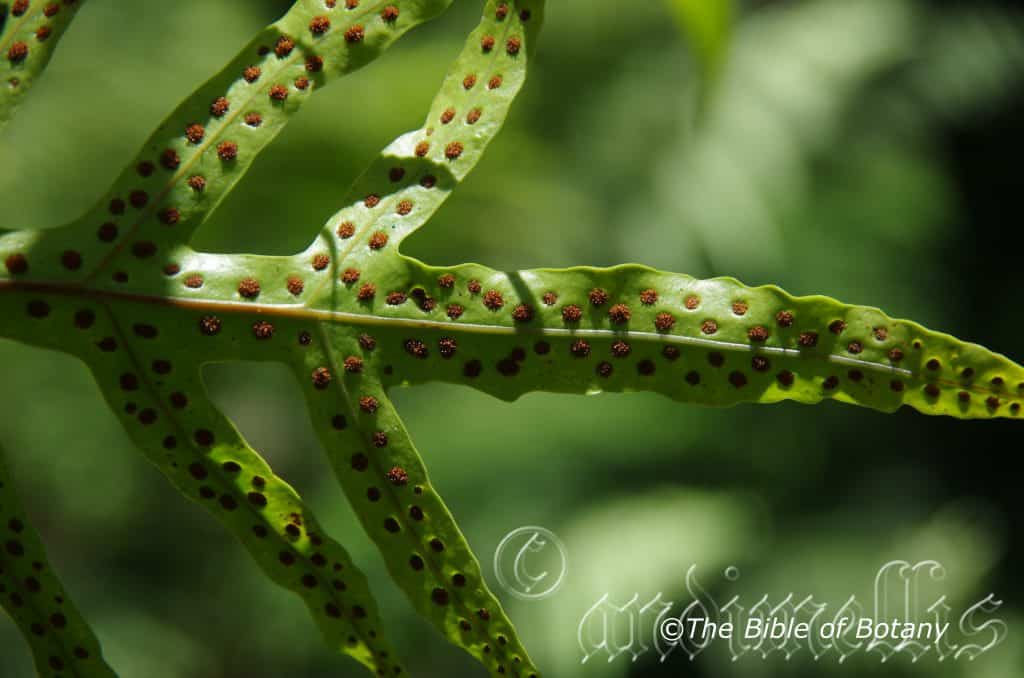
Cathedral Rocks National Park NSW
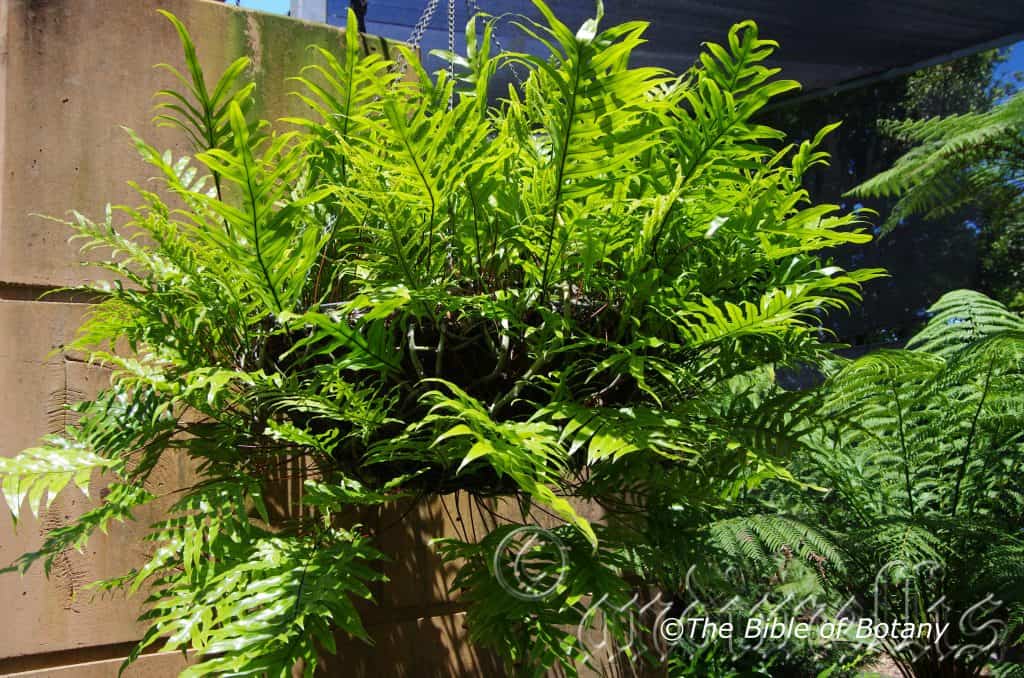
Mount Cootha Botanic Gardens Qld.
Microsorum pustulatum
Classification:
Unranked: Pteridophyta
Class: Pteridopsida
Order: Polypodiales
Family: Polypodiaceae
Genus: From Mikrós, which is Ancient Greek for small or very small and Sorium, which is Ancient Greek for the spore case. It refers to ferns, which have rather small spore cases.
Specie: From Pustularis, which is Latin for blisters. It refers to structures or organs, which have blister like swellings on the surface.
Sub species: Microsorum pustulatum subsp. howense. From Howe, which is Latinized for Lord Howe Island. (Richard Howe, 1st Earl Howe) It refers to plants which were first discovered on Lord Howe Island or are restricted to the Islands.
Sub species: Microsorum pustulatum subsp. pustulatum. From Pustularis, which is Latin for blisters. It refers to structures or organs, which have blister like swellings on the surface.
Common Name: Kangaroo Fern or Pimple Fern.
Distribution:
Microsorum pustulatum subsp. howense is found on Lord Howe Island and Norfolk Island.
Microsorum pustulatum subsp. pustulatum is a widespread species which is found south from the Macpherson Ranges in south east Queensland to the southern tip of Tasmania. It is found on and east of the Great Dividing Range and ranges in Tasmania.
https://avh.ala.org.au/occurrences/search?taxa=Microsorum+pustulatum#tab_mapView
Habitat Aspect Climate:
Microsorum pustulatum prefers light dappled shade to dense shade. It grows in well-developed cool subtropical rainforests and warm to cool temperate rainforests. The altitude ranges from 20 meters ASL to 1386 meters ASL.
The temperatures range from minus 5degrees in August to 34 degrees in January.
The rainfall ranges from lows of 500mm to an average of 2000mm. In the lower rainfall areas the plants favour ground where the moisture content of the soil is more even throughout the year and will be found growing as a lithophyte. Lower rainfall areas are often receive additional moisture through orographic precipitation.
Soil Requirements:
Microsorum pustulatum prefers better quality sandy loams to light medium clays. The soils are usually derived from decomposed brown basalts or black basalts close to the parent rock. The soils pH ranges from 5pH to 6pH. It does not tolerate waterlogged soils. Non saline soils to moderately saline soils are tolerated.
Height & Spread:
Wild Plants: 0.3m to 1m by 1m to 1.5m.
Characteristics:
Microsorum pustulatum grows as a fern with very long slender and fleshy rhizomes. The rhizomes measure3mm to 6mm in diameter. The deep green to a mid grey-green and glaucous rhizome is covered in deep brown to black caduceus, appressed scales. The narrowly-triangular scales are 2.5mm to 7mm in length by 1.5mm to 3mm in width at the base. The margins are paler entire or very minutely dentate near the apex.
Microsorum pustulatum’s has simple to pinnatifid fronds. The simple fronds measure 200mm to 600mm in length while the pinnatifid fronds measure 300mm to 600mm in overall length. The slender 100mm to 250mm stipes are pale brown glossy and glabrous except for a dense covering of scales close to the base. Both simple and pinnatifid fronds may be present together on the same plant. Both forms may be fertile or sterile.
The fertile fronds are slightly narrower than the fertile fronds.
The lamina on the pinnatifid fronds is deeply divided with the lobes measuring 30mm to 120mm in length by 8mm to 30mm wide. The apex lobes are 30mm to 170mm in length by 10mm to 30mm wide. The laminas are coriaceous glabrous except for a few scales along the midrib and costae. The concolourous laminas are pale green to a mid green, semi glossy and glabrous. The margins are entire and slightly undulating. The rachis and mid veins on the lobes are prominent on the upper lamina and is distinctly visible on the lower lamina. There are 2 or 3 series of areoles between the costa and the margins. There are hydrathodes present at the end of the blind veins which are visible on the upper laminas.
Microsorum pustulatum subsp. pustulatum’s fruiting bodies measure 1mm to 1.5mm diameter and are circular sori sunken into the lower lamina forming distinct pimples or blisters on the upper lamina. They form a single row adjacent to the costa with one between each of the main lateral veins. The sori are positioned half way between the margin and the costa.
Spores are very small 45 -62.5um long by 20 to 32.5 um wide with wart like protuberances. (Plantnet NSW) They are pale fawn to pale yellow brown in colour.
Confusing Subspecie or Varieties:
Microsorum pustulatum subsp. pustulatum the sori are positioned half way between the margin and the costa.
Microsorum pustulatum subsp. howensis the sori are positioned one third of the way from the margin to the costa.
Wildlife:
Microsorum pustulatum’s wildlife is unknown to the author however wild plants often have the fronds damaged or the tips of the rhizomes eaten.
Cultivation:
Microsorum pustulatum makes an excellent ground cover for areas where there is filtered light to dense shade. They always look green and fresh especially where adequate ground moisture is retained in the soil. It is very suitable on medium clays to heavy clay soils and are most suitable for small medium and large gardens close to the coast or high in the mountains. As garden subjects they will colonize rocks especially those of a more porous nature climbing on tree trunks in a rainforest situation or cover the ground on shady banks.
It is most suitable for use as a rainforest understory plant. They like plenty of leaf litter to help increase soil fertility, maintain soil moisture and to maintain a cool root zone.
They make great hanging basket plant when young however due to their long slender rhizomes will eventually become sparse in foliage. In saying that they do look very natural if placed in a basket with Platicerium bifurcatum.
Propagation:
Fern Spores: Most people are put off at the thought of growing ferns from spore. Like all plants that produce their offspring from seed or spore the methods are the similar. Remember nature has been doing this for millions of years and has been very successful. I have had excellent results with almost every fern in Australia so give it a go.
Step 1.Select spore from the Microsorum pustulatum fronds that is just starting to release its spore. Rinse the fronds under clean running water and dry.
Step 2.Place the dry fronds in a brown paper bag and keep them in a cool dark place like the linen closet for about a week before you are ready to sow the spore.
Step 3.Take a large ice cream container, a small ice cream container and a clean clear plastic bag large enough to cover the large ice cream container.
Step 4.Wash both containers so that it is very clean.
Step 5. Punch some small holes in the small ice cream container.
Step 6. Use a clean fine seed raising mix that has had some clay or crusher added to it about 10mm. Then moisten the mix.
Step 7. Place this mix in the microwave oven for 7 or 8 minutes with a glass of water. Allow them to cool in the oven. You will need the water later so do not tip it out.
Step 8. Take the brown paper bag out of its cupboard. Shake the bag and remove the fronds. You should have a brown powder or small round pepper size spore.
Step 9. Remove the mixture from the oven once it has cooled and place it in the small icecream container.
Step 10.Sprinkle the spore over the mixture in the small icecream container.
Step 11.Place the small icecream container in the large icecream container.
Step 12.Remove the water from the microwave and tip it into the icecream container so there is 20mm to 25mm of water in the bottom.
Step 12.Place the icecream containers in the plastic bag and seal.
Step 13.Place the contents and bag in a warm shady place. Shade houses and some window sills are ideal.
Step 14.Wait until the ferns are 20mm to 30 mm high before you attempt to transplant them. Once it is ready open the bag up and allow the air to flow around them. Every three days open the bag a little further so the ferns get use to their new environment. Allow them a week or two to harden off before you transplant them into 50mm standard tubes. Do not try to transplant them as single plants as it is a little delicate still. Fertilize using Seaweed, fish emulsion or organic chicken pellets soaked in water on an alternate basis. Once they reach 50mm to 60mm start separating the strongest ones and again do not move them far from their original position. After a few weeks the ferns will power away without any set backs.
Step 15. Fertilize using Seaweed, fish emulsion or organic chicken pellets soaked in water and apply the liquid on an alternate basis. Fertilize every 2 months until the plants are established then once a year there after in spring or autumn to maintain health and vigor.
Fertilize using seaweed, fish emulsion or organic chicken pellets soaked in water on an alternate basis. Fertilize every two months until the plants are established then twice annually in early September or March to maintain better colour, health and vitality.
Further Comments from Readers:
Hi reader, it seems you use The Bible of Botany a lot. That’s great as we have great pleasure in bringing it to you! It’s a little awkward for us to ask, but our first aim is to purchase land approximately 1,600 hectares to link several parcels of N.P. into one at The Pinnacles NSW Australia, but we need your help. We’re not salespeople. We’re amateur botanists who have dedicated over 30 years to saving the environment in a practical way. We depend on donations to reach our goal. If you donate just $5, the price of your coffee this Sunday, We can help to keep the planet alive in a real way and continue to bring you regular updates and features on Australian plants all in one Botanical Bible. Any support is greatly appreciated. Thank you.
In the spirit of reconciliation we acknowledge the Bundjalung, Gumbaynggirr and Yaegl and all aboriginal nations throughout Australia and their connections to land, sea and community. We pay our respect to their Elders past, present and future for the pleasures we have gained.
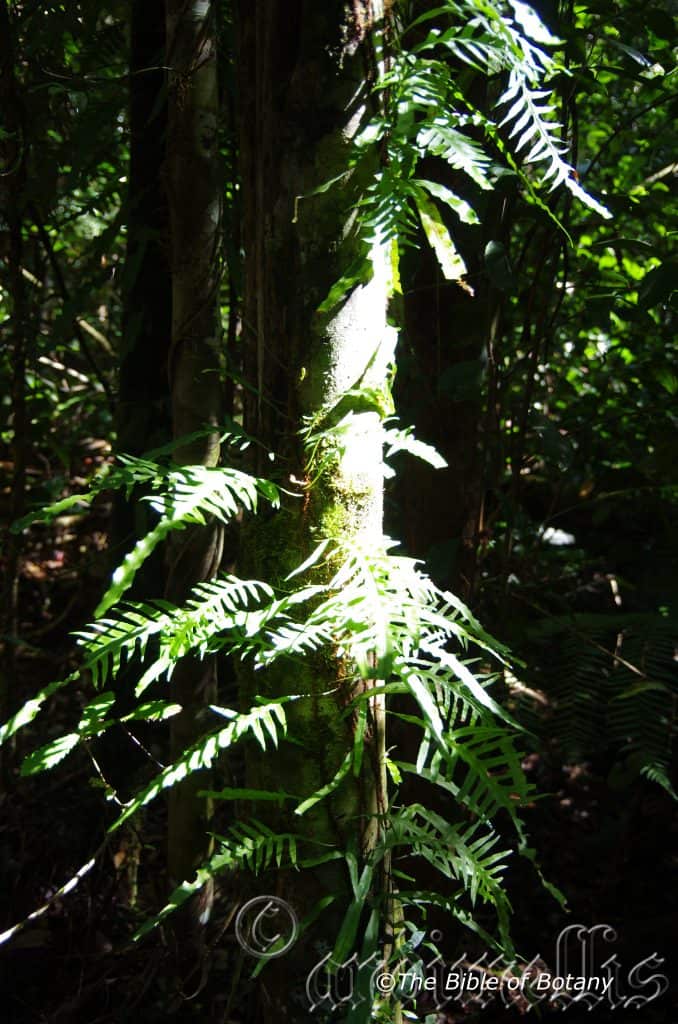
Washpool National Park NSW
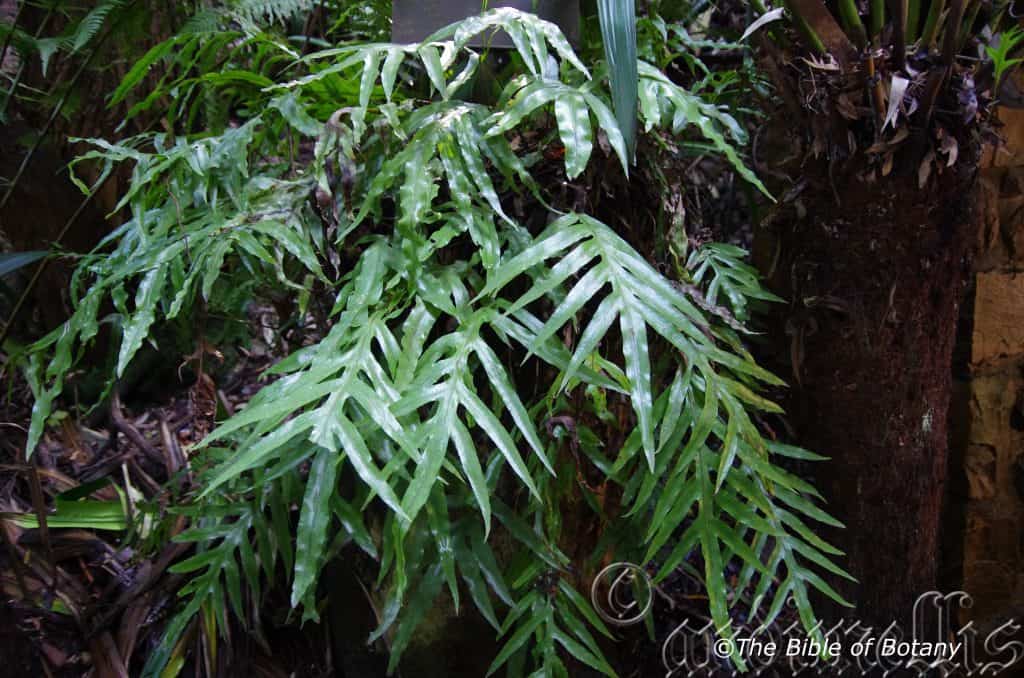
Mount Cootha Botanic Gardens Qld.
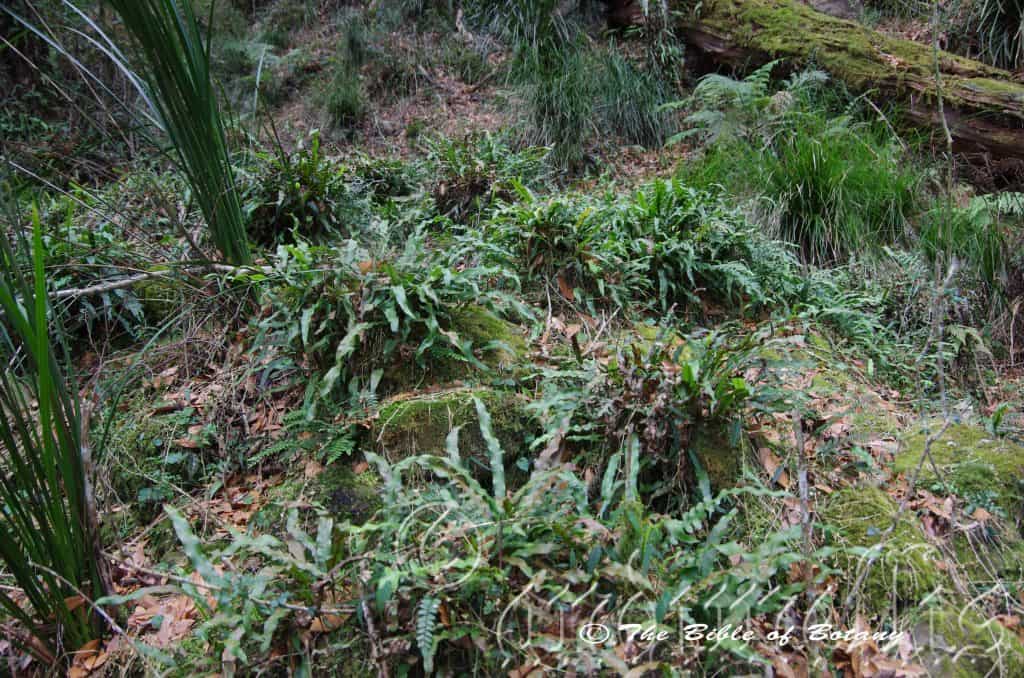
Dangar Falls National Park NSW
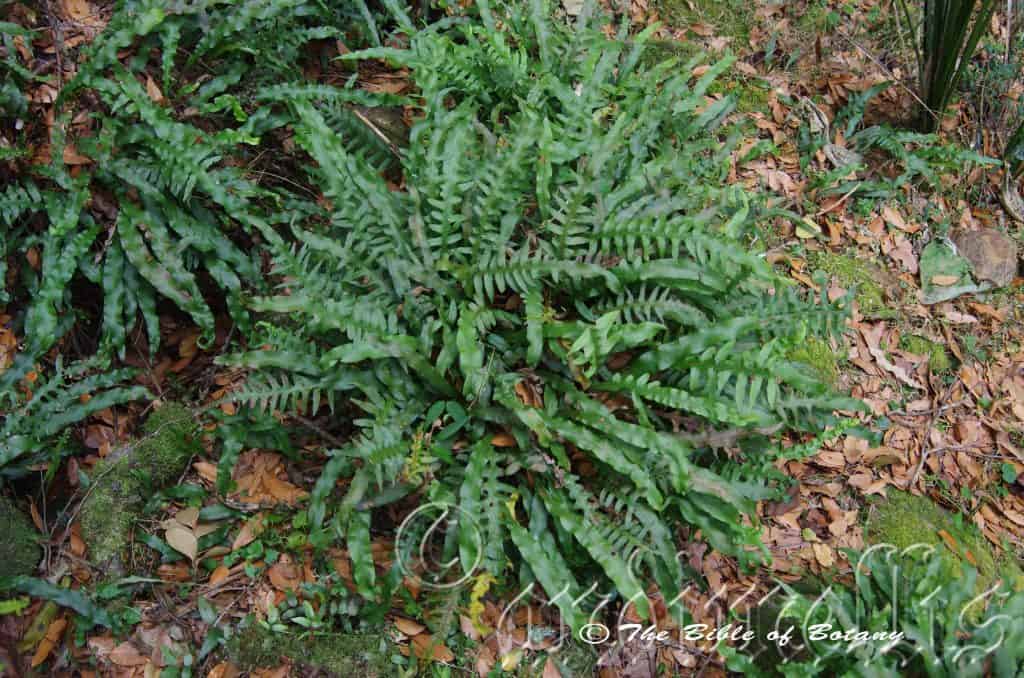
Dangar Falls National Park NSW
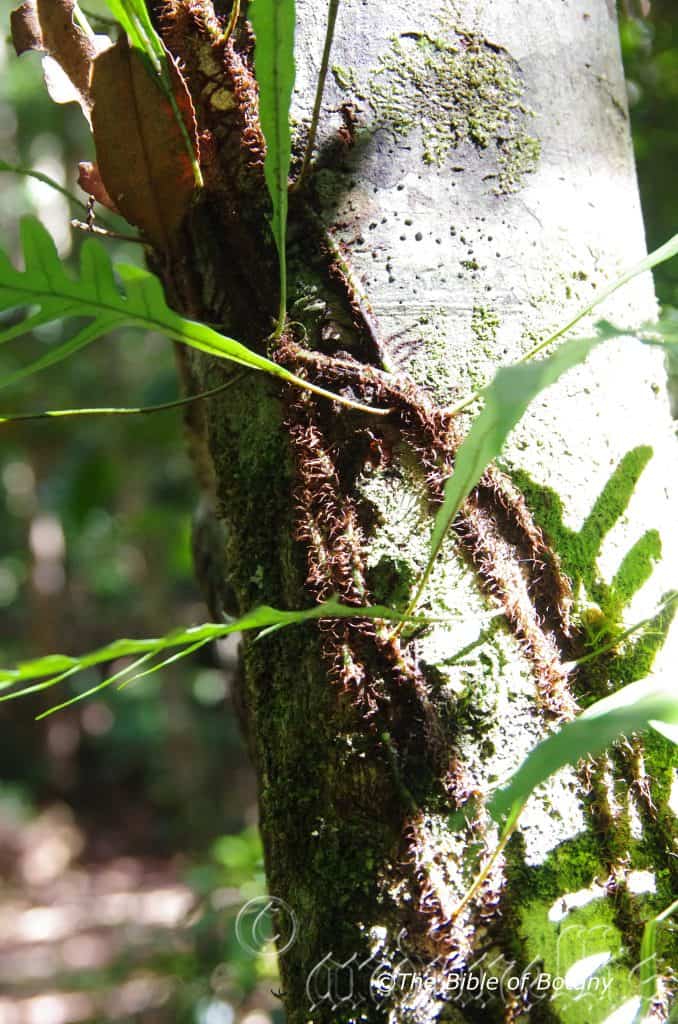
Washpool National Park NSW
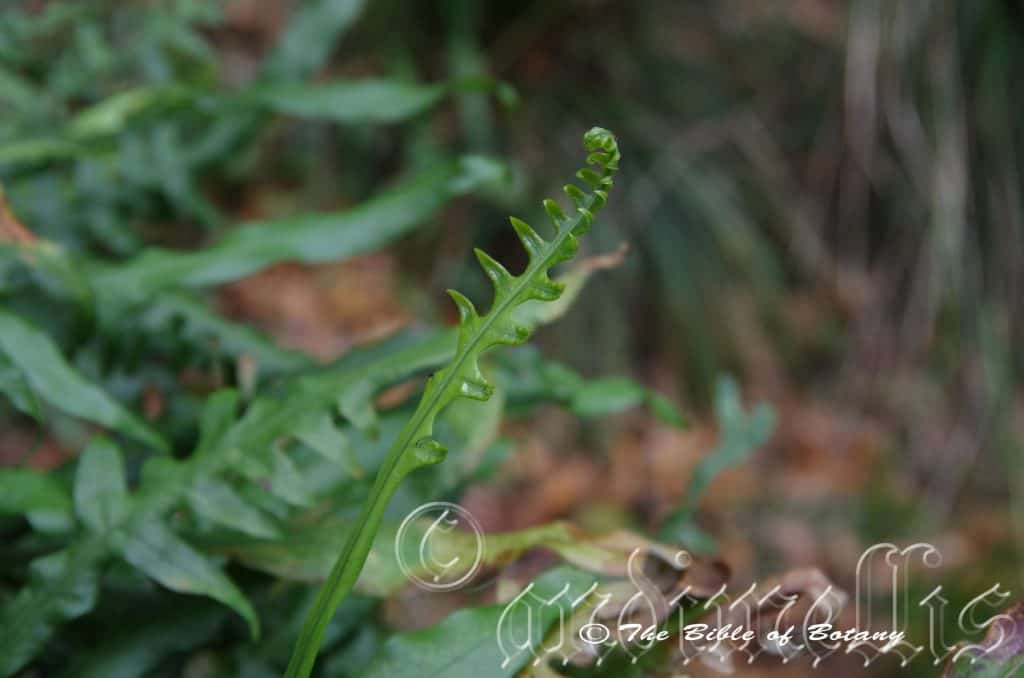
Dangar Falls National Park NSW
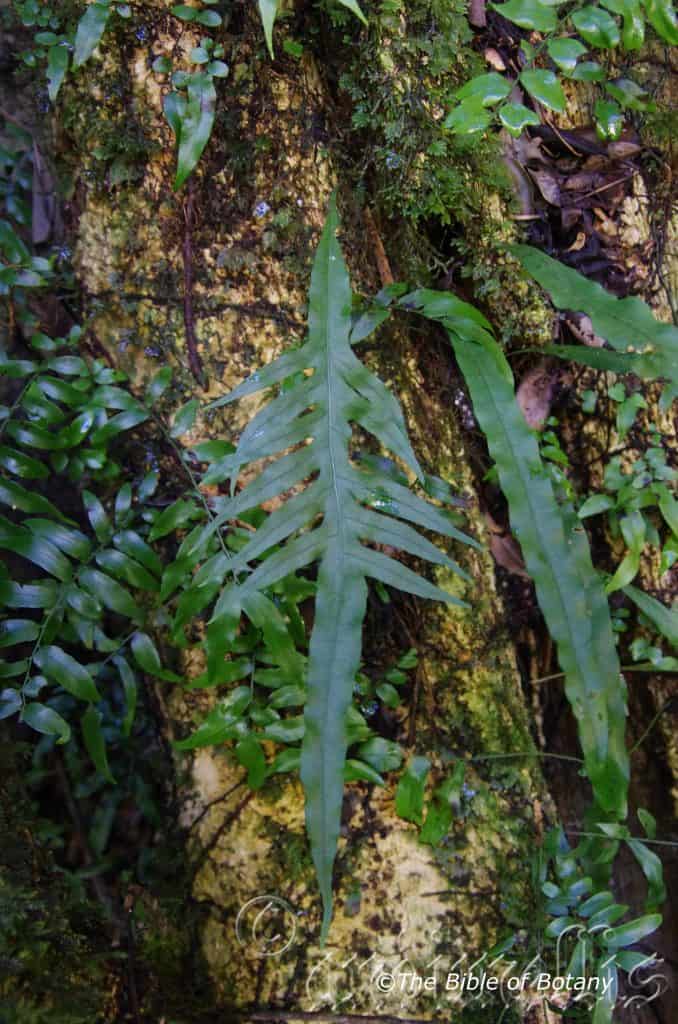
Washpool National Park NSW
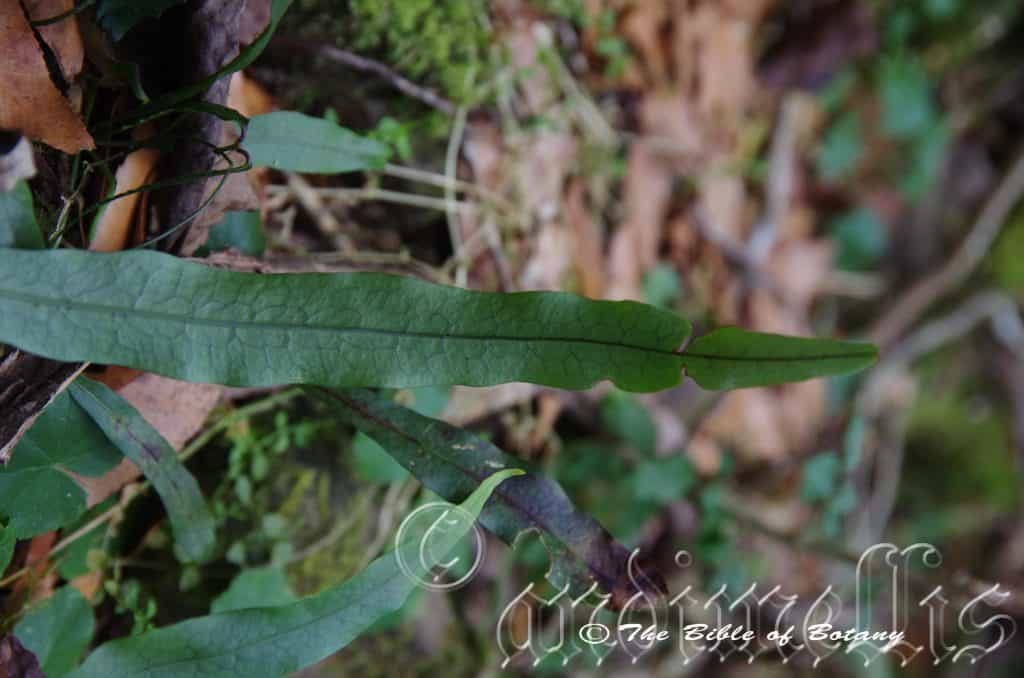
Dangar Falls National Park NSW
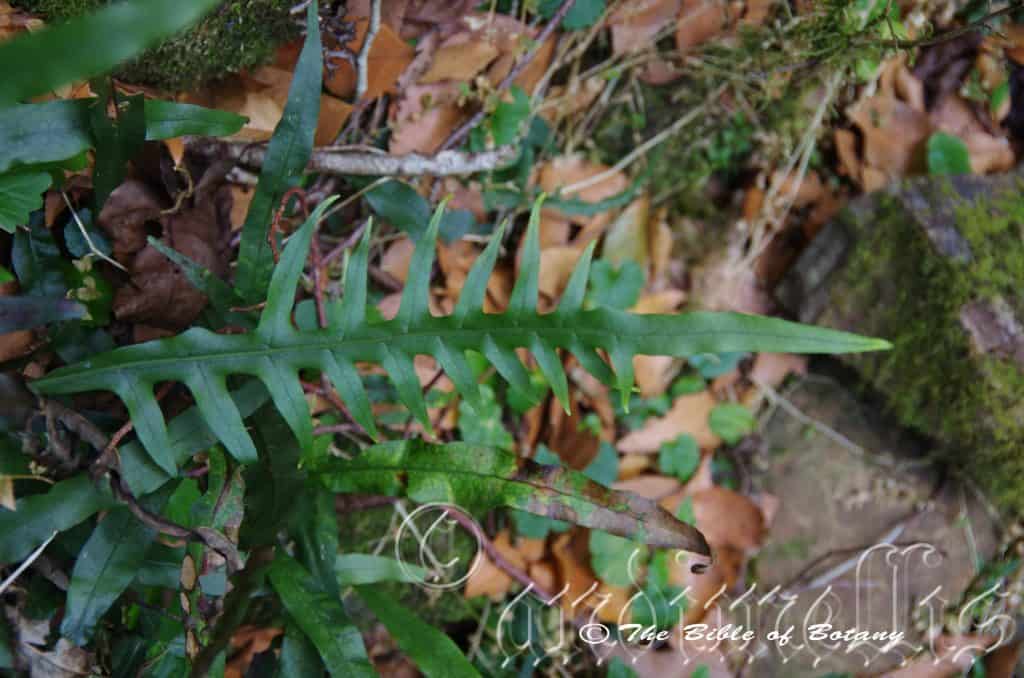
Dangar Falls National Park NSW
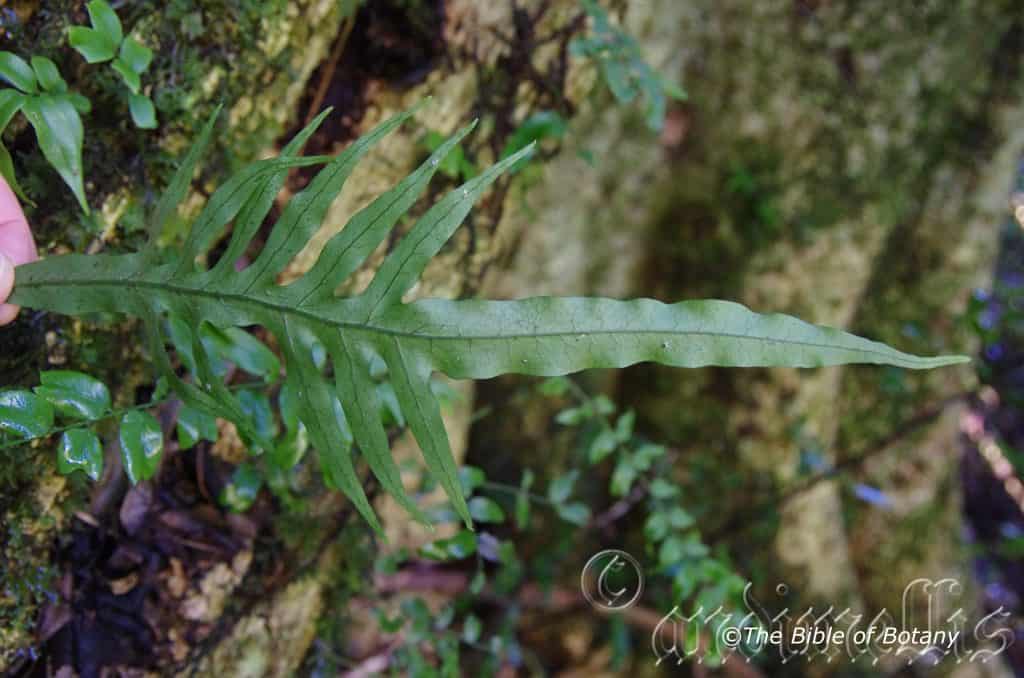
Washpool National Park NSW
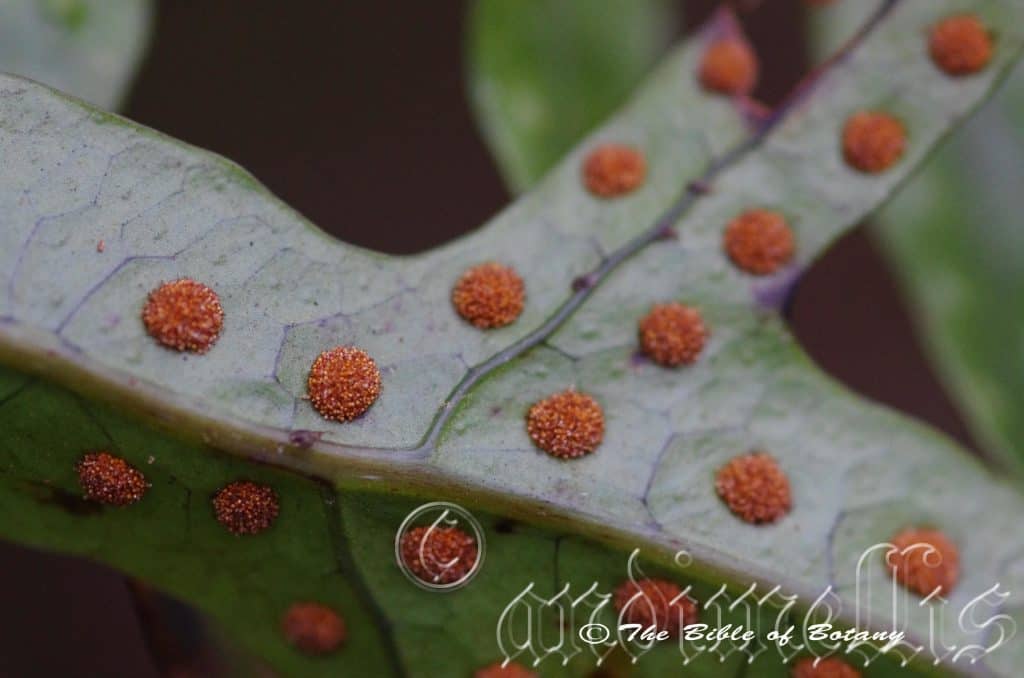
Dangar Falls National Park NSW
Microsorum scandens
Classification:
Unranked: Pteridophyta
Class: Pteridopsida
Order: Polypodiales
Family: Polypodiaceae
Genus: From Mikrós, which is Ancient Greek for small or very small and Sorium, which is Ancient Greek for the spore case. It refers to ferns, which have rather small spore cases.
Specie: From Scandere, which is Latin for the people of Scandere. It refers to people, which are very good climbers from a very mountainous/hilly district.
Sub species:
Common Name: Scented Fern or Fragrant Fern.
Distribution:
Microsorum scandens is a widespread species which is found south from Kennelworth in Queensland to Orbost in Victoria. It is found on and east of the Great Dividing Range. There is an outlying population west of Mackay in the Eungella National Park and also west of Cairns.
https://avh.ala.org.au/occurrences/search?taxa=Microsorum+scandens#tab_mapView
Habitat Aspect Climate:
Microsorum scandens prefers light dappled shade to dense shade. It grows in well-developed tropical rainforests, well-developed sub-tropical rainforests and warm temperate rainforests. The altitude ranges from 50 meter ASL to 1120 meters ASL.
The temperatures range from 3 degrees in August to 36 degrees in January.
The rainfall ranges from lows of 1000mm to an average of 2800mm.
Soil Requirements:
Microsorum scandens prefers deep sandy loams to medium clays. The soils are usually derived from decomposed brown basalts or black basalts close to the parent rock. The soils pH ranges from 5pH to 6pH. It does not tolerate waterlogged soils. Non saline soils to moderately saline soils are tolerated as are salt laden winds.
Height & Spread:
Wild Plants: 1m to 15m by 1m to 0.5m.
Characteristics:
Microsorum scandens rhizome is very long creeping slender and fleshy with a diameter of 3mm to 4.5mm. The deep green to a mid blue-green and glaucous rhizomes are covered in brown to rusty brown appressed scales which curve outwards towards the apex. The scales are persistent. The broadly triangular scales measure 3mm to 6mm in length by 0.5mm to 2mm in width at the base. The margins are paler entire or very minutely dentate near the apex.
Microsorum scandens has simple to pinnatifid fronds. The fronds measure 200mm to 500mm in overall length. The slender 100mm to 200mm stipes are pale brown glossy and glabrous except for a dense covering of scales close to the base. Both simple and pinnatifid fronds may be present together.
The lamina on the pinnatifid fronds is deeply divided with the lobes measuring 40mm to 100mm in length by 8mm to 15mm wide. The apex lobes are 30mm to 120mm in length by 10mm to 20mm wide. The laminas are thick but not coriaceous, glabrous except for a few scales along the midrib and costae. The laminas lobes number 1 to 20 pairs. The concolourous laminas are green to a mid blue-green, dull and glabrous. The lobes measure 15mm to 105mm in length by 3mm to 12mm in width. The margins are entire straight but more often slightly falcat and slightly undulating. The mid vein and main lateral veins on the lobes are prominent on the lower lamina and is visible on the upper lamina. There are 1 or 2 series of areoles between the costa and the margins. The hydrathodes are present at the end of the blind veins which are scaresly visible on the upper laminas.
Both forms may be fertile or sterile. The fertile fronds are identical to the fertile fronds. The fronds have a musky scent when crushed.
Microsorum scandens’s fruiting body is a 1mm to 3mm diameter circular or ovate sori slightly sunken into the lower lamina forming a slight rise on the upper lamina. They form a single row adjacent to the costa with one between each of the main lateral veins.
Spores are very small. It is a pale fawn to pale yellow brown in colour.
Wildlife:
Microsorum scandens’s wildlife is unknown to the author however wild plants often have the fronds damaged or the tips of the rhizomes eaten.
Cultivation:
Microsorum scandens makes an excellent ground cover for areas where there is filtered light to dense shade. They always look green and fresh especially where adequate ground moisture is retained in the soil. It is very suitable on medium clays to heavy clay soils and are most suitable for small medium and large gardens close to the coast in warm temperate, warm sub-tropical or cool tropical gardens. As garden subjects they will colonize rocks especially those of a more porous nature climbing on tree trunks in a rainforest situation or on shady banks. It is cold tolerant to temperatures as low as minus 1 degree once established.
It is most suitable for use as a rainforest understory plant where they can be trained to climb the trunks of nearby trees with suitable barks. They like plenty of leaf litter to help increase soil fertility, maintain soil moisture and to maintain a cool root zone.
It is an ideal hanging basket plant provided even moisture is maintained. They also look very natural if placed in a basket with Platycerium bifurcatum.
Large frog or fish ponds are made the more attractive when surrounded by this fern which can spread over large areas if given the opportunity without becoming problemsome. There size makes for a balance setting.
Propagation:
Fern Spores: Most people are put off at the thought of growing ferns from spore. Like all plants that produce their offspring from seed or spore the methods are the similar. Remember nature has been doing this for millions of years and has been very successful. I have had excellent results with almost every fern in Australia so give it a go.
Step 1.Select spore from the Microsorum scandens’ fronds that is just starting to release its spore. Rinse the fronds under clean running water and dry.
Step 2.Place the dry fronds in a brown paper bag and keep them in a cool dark place like the linen closet for about a week before you are ready to sow the spore.
Step 3.Take a large ice cream container, a small ice cream container and a clean clear plastic bag large enough to cover the large ice cream container.
Step 4.Wash both containers so that it is very clean.
Step 5. Punch some small holes in the small ice cream container.
Step 6. Use a clean fine seed raising mix that has had some clay or crusher added to it about 10mm. Then moisten the mix.
Step 7. Place this mix in the microwave oven for 7 or 8 minutes with a glass of water. Allow them to cool in the oven. You will need the water later so do not tip it out.
Step 8. Take the brown paper bag out of its cupboard. Shake the bag and remove the fronds. You should have a brown powder or small round pepper size spore.
Step 9. Remove the mixture from the oven once it has cooled and place it in the small icecream container.
Step 10.Sprinkle the spore over the mixture in the small icecream container.
Step 11.Place the small icecream container in the large icecream container.
Step 12.Remove the water from the microwave and tip it into the icecream container so there is 20mm to 25mm of water in the bottom.
Step 12.Place the icecream containers in the plastic bag and seal.
Step 13.Place the contents and bag in a warm shady place. Shade houses and some window sills are ideal.
Step 14.Wait until the ferns are 20mm to 30 mm high before you attempt to transplant them. Once it is ready open the bag up and allow the air to flow around them. Every three days open the bag a little further so the ferns get use to their new environment. Allow them a week or two to harden off before you transplant them into 50mm standard tubes. Do not try to transplant them as single plants as it is a little delicate still. Fertilize using Seaweed, fish emulsion or organic chicken pellets soaked in water on an alternate basis. Once they reach 50mm to 60mm start separating the strongest ones and again do not move them far from their original position. After a few weeks the ferns will power away without any set backs.
Step 15. Fertilize using Seaweed, fish emulsion or organic chicken pellets soaked in water and apply the liquid on an alternate basis. Fertilize every 2 months until the plants are established then once a year there after in spring or autumn to maintain health, vigor and better flowering.
Fertilize using Seaweed, fish emulsion or organic chicken pellets soaked in water and apply the liquid on an alternate basis. Fertilize every 2 months until the plants are established then once a year there after in spring or autumn to maintain better colour health and vigor.
Further Comments from Readers:
Hi reader, it seems you use The Bible of Botany a lot. That’s great as we have great pleasure in bringing it to you! It’s a little awkward for us to ask, but our first aim is to purchase land approximately 1,600 hectares to link several parcels of N.P. into one at The Pinnacles NSW Australia, but we need your help. We’re not salespeople. We’re amateur botanists who have dedicated over 30 years to saving the environment in a practical way. We depend on donations to reach our goal. If you donate just $5, the price of your coffee this Sunday, We can help to keep the planet alive in a real way and continue to bring you regular updates and features on Australian plants all in one Botanical Bible. Any support is greatly appreciated. Thank you.
In the spirit of reconciliation we acknowledge the Bundjalung, Gumbaynggirr and Yaegl and all aboriginal nations throughout Australia and their connections to land, sea and community. We pay our respect to their Elders past, present and future for the pleasures we have gained.
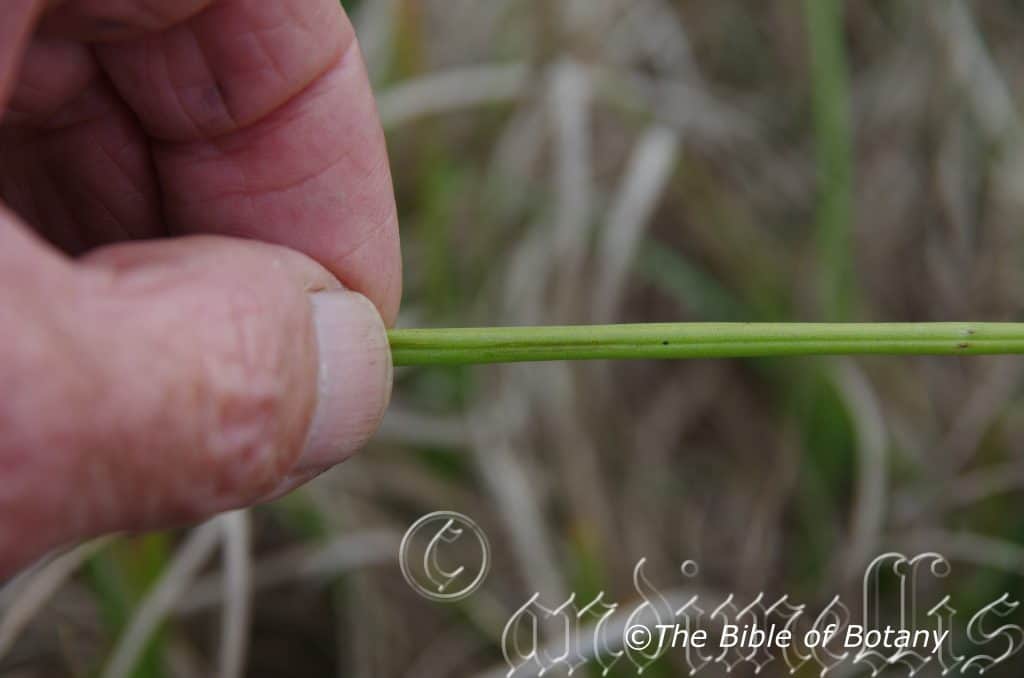
Clarence Valley NSW
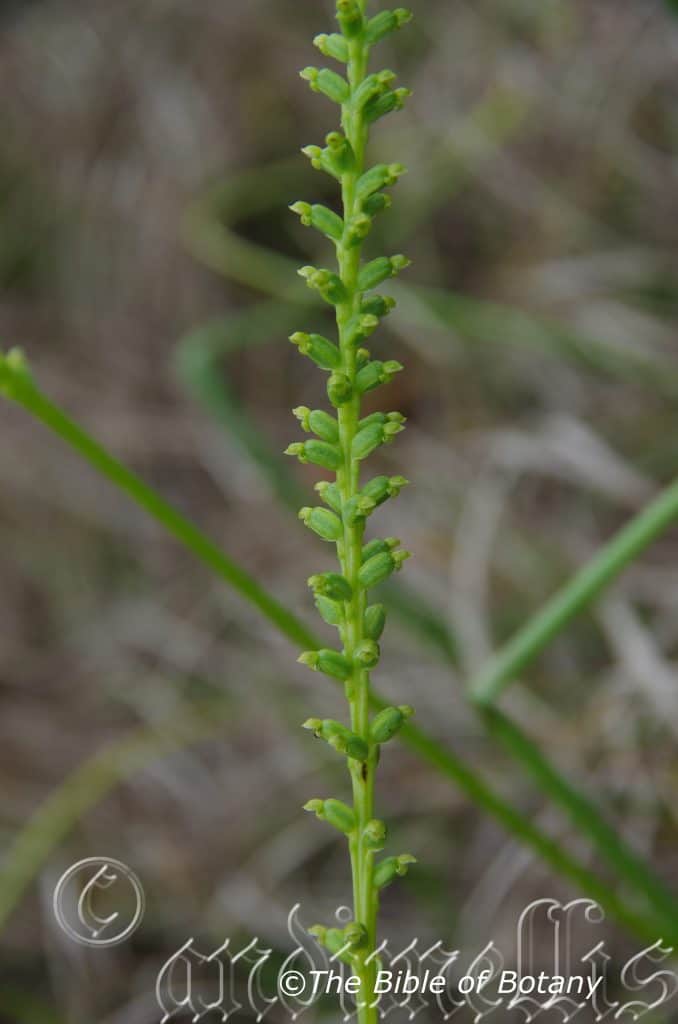
Clarence Valley NSW
Microtis parviflora
Classification:
Class: Equisetopsida
Subclass: Magnoliidae
Superorder: Lilianae
Order: Asparagales
Family: Orcidaceae
Genus: From Mikrós, which is Ancient Greek for small or very small and Otis, which is Ancient Greek for an ear. It refers to a small ear like appendage which appears on the lower, apex side of the column.
Specie: From Paûros, which is Ancient Greek or Parvum which is Latin for small and Flōris which is Latin for a flower or Flōs from the Roman goddess of spring and flowers.
Sub specie:
Common Name: Slender Onion Orchid.
Distribution:
Microtis parviflora is bounded by Mount Magnet, Yalggol, Frog Rock and 300 Mile Rocks with disjunct population further south at King George Sound in south western, Western Australia.
In the east it is found south from the MacIlwraith range in far north Queensland to Mount Gambier in South Australia. It is mainly found on the western slopes, on and east of the Great Dividing Range to the coast. In South Australia it is bounded by the Narracoorte coastal Plains to Wilpena in the Flinders Range, south west to Stamford Hill on south Eyre Peninsula and the coast. It is found further east on Lord Howe Island and Norfolk Island.
In Tasmania it is found north of a line from Macquarie Harbour to Exeter, Pickets Plain and south to Longlei and Eaglehawk Neck including all the Bass Strait Islands.
https://avh.ala.org.au/occurrences/search?taxa=Microtis+parviflora#tab_mapView
Habitat Aspect Climate:
Microtis parviflora prefers medium shade to dappled shade. It grows wet places in dry sclerophyll forest, moist sclerophyll forests, bogs or damp grassland, often forming extensive colonies. Its altitude ranges from 15 meters ASL to 920 meters ASL.
The temperatures range from minus 3 degrees in August to 36 degrees in January.
The rainfall ranges from lows of 500mm to 3200mm average per annum.
Soil Requirements:
Microtis parviflora prefers better quality peaty sands, sandy loams to light fatty sandy clays to gritty, gravelly medium clays or light podsolic soils. The soils are usually derived from decomposed sandstones, granites, brown basalts, black basalts, metamorphic rocks, shale, mudstones, conglomerates, accumulated peaty beach sands behind the back dunes or at times light silty alluviums. The soils pH ranges from 4.5pH to 7pH are preferred where the water can drain freely. It does not tolerate waterlogged soils but appreciates moist soils throughout its growing and flowering season. Non saline soils to slightly saline soils are tolerated.
Height & Spread:
Wild Plants: 0.15m to 0.5m by 0.03m to 0.06m.
Characteristics:
Microtis parviflora grows as a slender terrestrial orchid.
It has a single, erect broad linear, linear to narrow lanceolate leaf. The leafs measures 100mm to 400mm in length by 2mm to 10mm in width. The bases are clasping while the apexes are acute or obtuse. The concolourous, coriaceous leaves are deep green and glabrous.
The inflorescences are long stiff, erect spikes. The spikes usually have 20 to 50 individual flowers. The spikes measure 300mm to 500mm in length. The ovary which appears to be part of the pedicel is slightly swollen at the base. The single loose, ovate floral bract measures 3mm to 4mm in length by 2mm in width. The pedicels measure 0.5mm to 1.5mm in length.
The glabrous dorsal sepal is circular to ovate which is markedly concave on the basal half while the apex is acute. The lime-green dorsal sepal measures 1.5mm to 2.2mm in length by 1.2mm to 2mm in width.
The linear lateral sepals are lime-green glabrous, with acute apexes. The linear to oblong lateral sepals are deflexed or become recurved with age while the margins are entire. The sepals measure 1.2mm to 2mm in length by 0.8mm to 1mm in width.
The linear lateral petals are lime-green, glabrous, with acute apexes. The lateral petals are falcate to lanceolate and measure 1mm to 1.5mm in length by 0.3mm to 0.5mm in width.
The gently decurving cordate labellum is trilobed and measures 1mm to 1.8mm in length by 0.3mm to 0.8mm in width. The basal calli are ovate and smooth, often with a rugulose patch near the apex. The margins are usually entire or at times undulating. The column’s lateral appendages are oblong lime-green with white tips. The sweetly scented or bland flowers appear from September to February.
The ellipsoidal capsules are nodding and turn pale grey-brown when ripe.
Wildlife:
Microtis parviflora’s fertilization is carried out by at least 4 specie of ants according to Jones in Orchids of Australia and New Zealand 1975.
The orchids are also visited by native bees and several species of hover flies and pollen wasps. The exotic honey bee odour marks its flowers which prevents native bees from visiting the flowers like a first in best dress scenario.
Cultivation:
Microtis parviflora is an unusual terrestrial orchid to grow in the garden. If you are lucky enough to have them growing it is worthwhile preserving with in situation. The best method to establish a colony is to mark the area with stakes where the plants are known to occur. Use local mulch to lightly top dress the area on an annual basis.
Orchid enthusiasts have found this orchid to be less temperamental than most ground orchids to keep in the bush house. Microtis parviflora can be grown in pots in a freely draining, sandy mix with organic matter incorporated. It requires good air circulation in a protected position beneath 30mm to 50mm shade cloth during the growing period from mid winter to late summer. During the growing period the plants must be kept moist not wet at all times. After the leaves have died back to the tuber, the pots should be allowed to dry out completely and do not watered again until the end of July.
Propagation:
Seeds: All orchids are protected by Federal and State Laws and must not be removed from the wild unless you are a land developer, mining company or main Roads department etc. This includes bulbs, roots, leaves and flowers. No part of any plant can be removed from Federal, State or Local Government land without the prior permission of the authority and this includes the spore.
1. Obtain relevant materials
The first step in growing orchid from seed will be sourcing and having at the ready all materials that will be required in the propagation process.
This includes all of the following:
Unripe orchid seed capsule. If there are 2 capsules secure the second capsule immediately after the first capsule splits or if only one capsule as soon as it changes colour.
Orchid gelling medium with agar which can be purchased from an orchid society or a specialist nursery.
Distilled water
Cooking pot
Spoon
Oven-safe glass or polypropylene containers with lids
Sealable bags
Clean, sterilized cutting board
Rubber gloves
Paper towels
Tweezers or forceps
70 percent ethanol
Bleach
Scalpel or sharp knife
Planting pot
Orchid compost
Length of wire metal
Plastic spray bottle.
deep petri dishes or sterile jars.
2. Prepare agar medium
The agar medium is a special orchid gelling mixture that distilled water will be added to distilled water.
To prepare the medium, mix equal parts of orchid gelling medium with distilled water in a cooking pot.
Place the pot on a stove and bring the mixture to boil for while stirring continuously for two minutes.
Pour the mixture into the petri dishes glass or propylene containers while ensuring not to fill the containers above 20 percent of their volume.
Loosely replace the lids to the containers. Sterilize the containers by heating them up in a microwave oven for between 2 to 3 minutes.
Spray 70 percent ethanol into a sealable bag to create a sterile environment. Transfer the heated containers into the sealable bag.
Allow the containers to cool a bit before tightening their lids and then sealing the bag. Leave the containers to stand for a few days until the mixture solidifies.
3. Prepare seed capsule and work surface
Place an open pot of water on a stove and bring to boil. Place the cutting board in the oven and sterilize.
Put on rubber gloves and sterilize the forceps, and scalpel with 70 percent ethanol.
Insert the seed capsule into a bowel filled with bleach for about fifteen minutes.
Sterilize seed capsule again with 70 percent ethanol and place on grill.
Using the sterilized scalpel, cut open the seed capsule to reveal the seeds. Using a scalpel or sharp knife, scrape out the seeds from the capsule unto an ethanol soaked paper towel.
4. Flasking of the seed
Take out the petri dishes or glass jars containers holding the agar medium. Over the steam, open up the containers and transfer seeds from the ethanol soaked paper towel into the individual containers using the sterilized forceps.
The amount of seeds will determine the number of containers required. Replace the lid of the containers and place them on a window sill that receives indirect sunlight.
5. Wait and exercise patience
All that can be done at this point is to wait until the seeds germinate. The amount of time that this might take varies and is dependent on the particular species.
Generally, the time can range from a few months to a few years. During this period of waiting, ensure the containers are free from contamination to ensure that germination is not disrupted.
6. Emergence of protocorms
Protocorms are tuber-shaped bodies with rhizoids that are produced by the young seedlings of various orchids. Protocorms represent the embryonic form of the orchid plant.
Their emergence after the period of waiting at an affirmation that everything in the propagation process is on track.
7. Transflask orchid seedlings is done after they have developed roots
Upon the emergence of the protocorms, consistently observe the growth of the seedlings. At the point when the seedlings appear to overcrowd the flask, transflasking should be carried out, typically within 30 and 60 days.
* This is done by removing individual seedlings using sterilized tweezers from the original containers and placing them in new containers also filled, in a proportion similar to the original, with agar medium. 6 to 8 in a standard petri dish or 1or 2 to a test tube
8. Transplant seedlings into planting pots
On the presumption that there are no disruptions to the plant growth, the seedlings will eventually outgrow the containers.
At this point, they are to be transplanted into planting pots. A good rule of thumb to determine when they are ready to be transplanted is when the seedlings have developed roots that have grown up to the length of one-quarter of an inch.
To transplant, prepare a planting pot or other container for receiving the seedling by majorly filling it up with coarse fir bark and possibly some slightly moist orchid compost mixture containing perlite, fine charcoal, redwood bark shavings, etc.
To extract the seedlings, submerge the containers in warm water to help loosen the agar gel.
Once the agar medium is softened, twist a piece of metal to form a loop and in turn, use it to carefully pull out the seedlings from the container. It is best done if the agar and seedling can be removed together.
The seedlings can be further rinsed in lukewarm water to remove any excess agar mixture still stuck to them.
Following this, the seedlings can now be planted into the prepared pot with at least 50mm of space between each individual seedling.
9. Positioning the orchid
The seedling once fully transplanted should be placed in a location that is warm with good indirect sun light.
Slowly position the pots into an area that closely assimilates the conditions it will be growing under.
The choice as to whether the plant should be exposed to full sun or in direct sunlight will be dependent on the particular orchid specie.
10. Subsequent care of the plant
After the first week, the seedling can be misted several times a day and watered just once a week.
A guide in watering the plant will be using the dryness of the fir back that is, water the plant until the fir back is completely moistened and wait till it has completely dried out before watering again.
Do not fertilize until the seedlings have fully established themselves.
Further Comments from Readers:
Hi reader, it seems you use The Bible of Botany a lot. That’s great as we have great pleasure in bringing it to you! It’s a little awkward for us to ask, but our first aim is to purchase land approximately 1,600 hectares to link several parcels of N.P. into one at The Pinnacles NSW Australia, but we need your help. We’re not salespeople. We’re amateur botanists who have dedicated over 30 years to saving the environment in a practical way. We depend on donations to reach our goal. If you donate just $5, the price of your coffee this Sunday, We can help to keep the planet alive in a real way and continue to bring you regular updates and features on Australian plants all in one Botanical Bible. Any support is greatly appreciated. Thank you.
In the spirit of reconciliation we acknowledge the Bundjalung, Gumbaynggirr and Yaegl and all aboriginal nations throughout Australia and their connections to land, sea and community. We pay our respect to their Elders past, present and future for the pleasures we have gained.
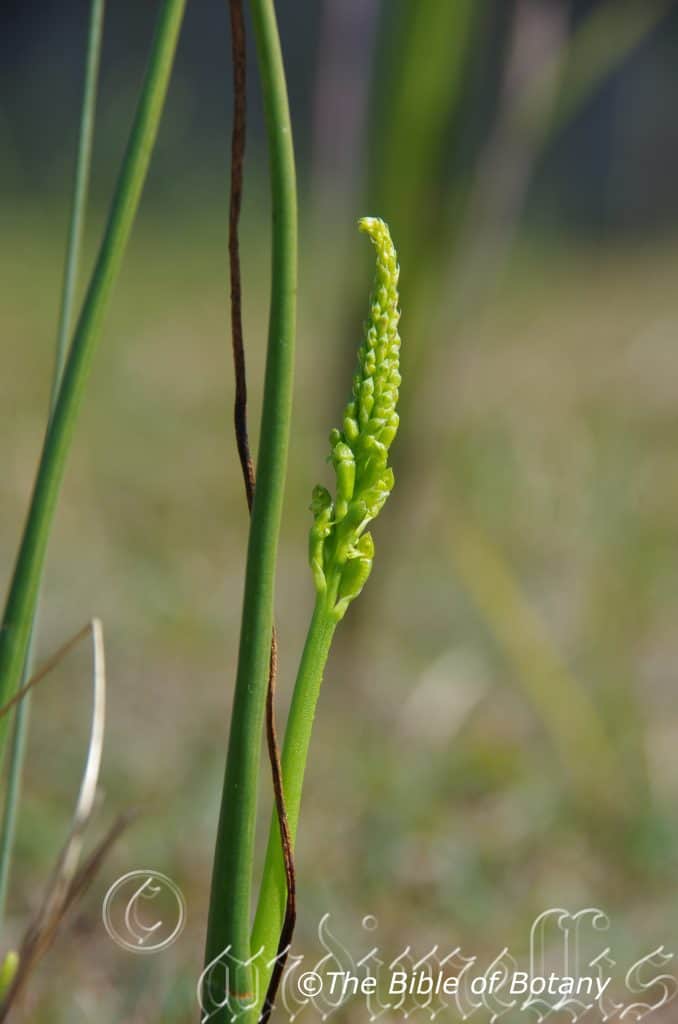
Clarence Valley NSW
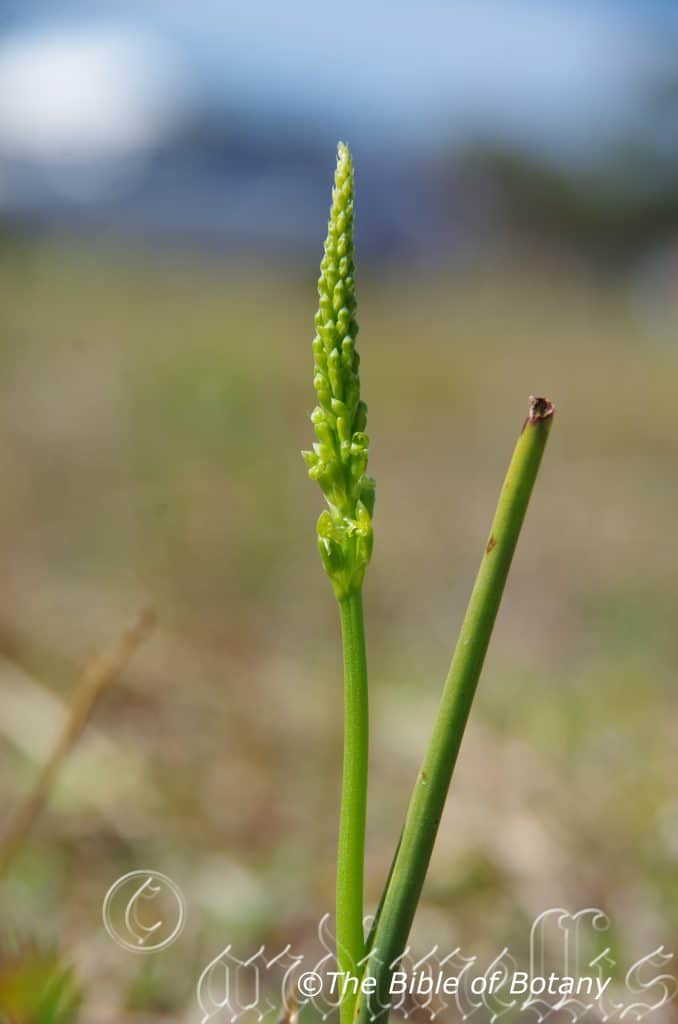
Clarence Valley NSW
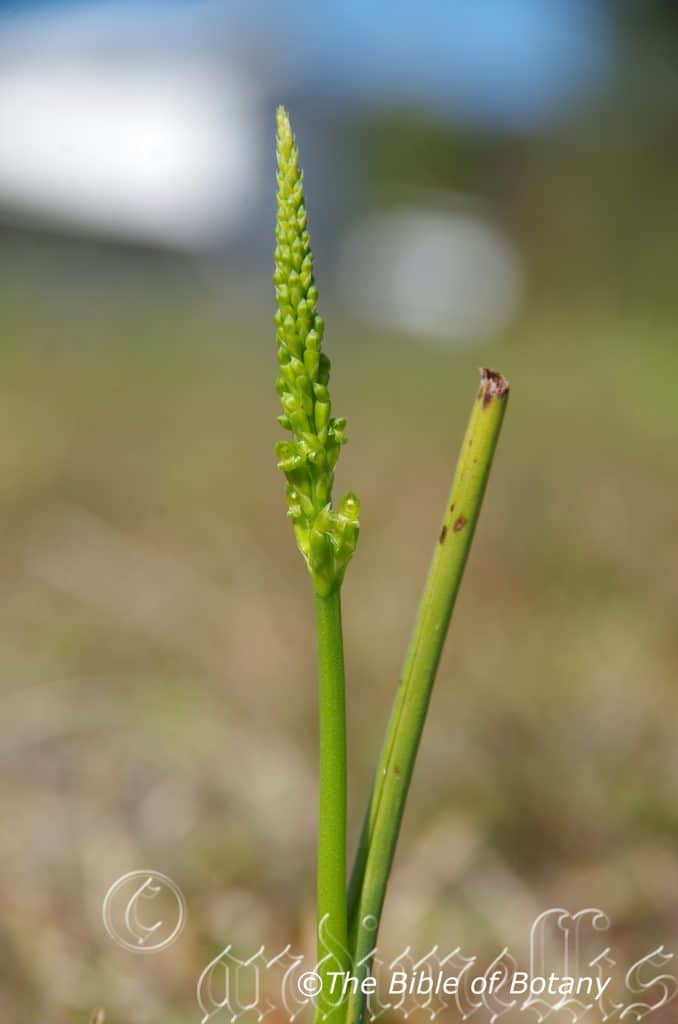
Clarence Valley NSW
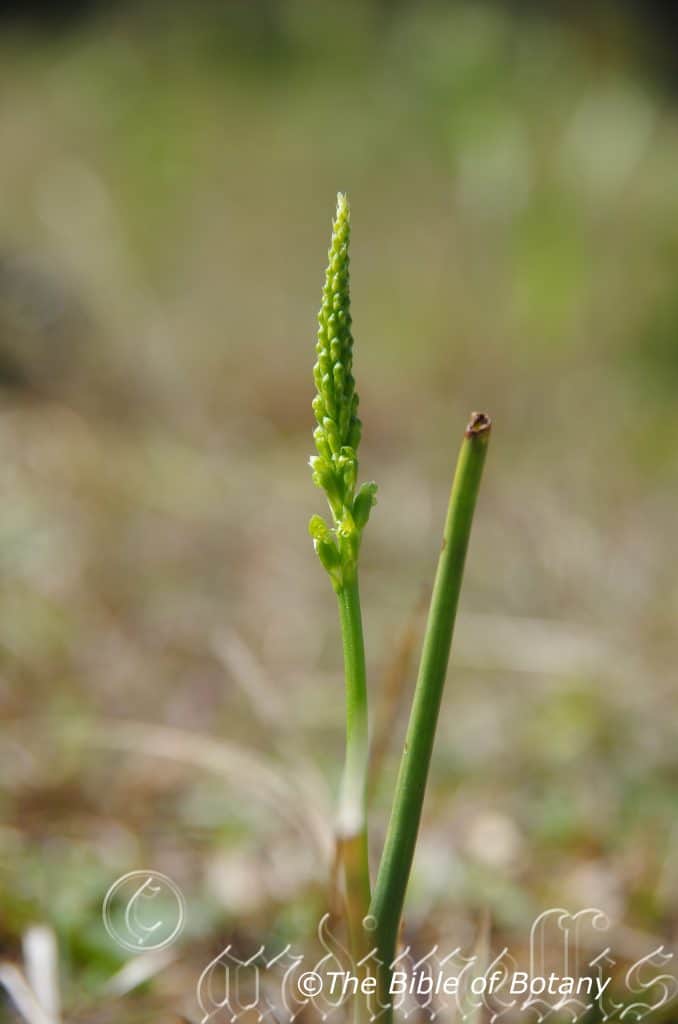
Clarence Valley NSW
Microtis unifolia
Classification:
Unranked: Monocots
Order: Asparagales
Family: Orcidaceae
Genus: From Mikrós, which is Ancient Greek for small or very small and Otis, which is Ancient Greek for an ear. It refers to a small ear like appendage which appears on the lower, apex side of the column.
Specie: From Oîos, which is Ancient Greek or ūnum which is Latin for a single or on and Folia, which is Latin for a leaf or foliage. It refers to plants, which have a single leaf.
Sub specie:
Common Name: Slender Onion Orchid or Green Onion Orchid.
Distribution:
Microtis unifolia is found south west of a line from Kalamund to Barker Inlet in south western, Western Australia.
In the east it is basically found in a line south east from Brisbane in far south eastern Queensland to Streaky Bay in South Australia. It is mainly found on the western slopes, on and east of the Great Dividing Range to the coast.
In Tasmania it is found on all the Bass Strait Islands and throughout mainland Tasmania.
It is also found in the Chatham Island, southern and central China, Japan, Jawa, Kermadec Island, Lesser Sunda Island, Malayasia, Nansei-shoto, Throughout both Islands of New Zealand, Norfolk Island, Philippines, Solomon Island, Sulawesi, Taiwan and Tuamotu,
https://avh.ala.org.au/occurrences/search?taxa=Microtis+unifolia#tab_mapView
Habitat Aspect Climate:
Microtis unifolia prefers medium shade to dappled shade. It grows in moist locations in a wide variety of habitats from coastal wallum margins to rock outcrops in semi-arid areas where moisture is trapped. Its altitude ranges from 5 meters ASL to 1800 meters ASL.
The temperatures range from minus 5 degrees in August to 45 degrees in January.
The rainfall ranges from lows of 500mm to 1600mm average per annum.
Soil Requirements:
Microtis unifolia prefers better quality peaty sands, sandy loams to light fatty sandy clays to gritty, gravelly medium clays or light podsolic soils. The soils are usually derived from decomposed sandstones, granites, brown basalts, black basalts, metamorphic rocks, shale, mudstones, conglomerates, accumulated peaty beach sands behind the back dunes or at times light silty alluviums. The soils pH ranges from 4.5pH to 7pH are preferred where the water can drain freely. It does not tolerate waterlogged soils but appreciates moist soils throughout its growing and flowering season. Non saline soils to slightly saline soils are tolerated.
Height & Spread:
Wild Plants: 0.15m to 0.5m by 0.03m to 0.06m.
Characteristics:
Microtis unifolia grows as a slender, robust terrestrial orchid.
The terete mid to deep green glabrous leaf surround the flowering spike for most of its length and measures 80mm to 600mm in length.
The green, glabrous pedicels measure 1mm to 1.5mm in length. The lanceolate to ovate bract measures 2mm to 4mm in length by 1mm to 1.5mm in width. The individual flowers are lime-green to yellow-green and erect. The ovate to circular dorsal sepal is markedly concave below and measures 2mm to 4mm in length by 1mm to 2mm in width. The broad apex is obtuse to acute, often with an apiculate tip.
The linear to oblong to lanceolate or ovate lateral sepals are recurved or somewhat and measure 1.5mm to 2.5mm in length by 0.8mm to 1.2mm in width.
The petals are falcate, lanceolate or ovate and measure 1.4mm to 1.8mm in length by 0.4mm to 0.8mm in width.
The oblong labellum measures 1.2mm to 2.5mm in length by 0.4mm to 2mm in width. The basal calli are saddle-shaped, rounded or square and smooth. The margins are undulain, crenulate to rugulose, while the column is erect or decurved, with minute ovate lateral appendages. The flowers are often lightly scented. The flowers appear from late August to early February.
Microtis parviflora has erect ellipsoidal capsules, which turn pale grey-brown when ripe.
Wildlife:
Microtis unifolia’s fertilization is carried out by at least 4 specie of ants according to Jones in Orchids of Australia and New Zealand 1975.
The orchids are also visited by the tiny native colony bee Tetragonula carbonaria.
Cultivation:
Microtis unifolia is an unusual terrestrial orchid to grow in the garden. If you are lucky enough to have it growing, it is worthwhile preserving it is situ in the garden. The best method to establish a colony is to mark the area with stakes where the plants are known to occur. Use local mulch to ‘lightly’ top dress the area on an annual basis.
Orchid enthusiasts have found this orchid to be less temperamental than most ground orchids to keep in the bush house. Microtis unifolia can be grown in pots in a freely draining, sandy mix with organic matter incorporated. It requires good air circulation in a protected position beneath 30mm to 50mm shade cloth during the growing period from mid winter to late summer. During the growing period the plants must be kept at all times. After the leaves have died back to the tuber, the pots should be allowed to dry out completely and use top up moisture until the end of July.
Propagation:
Seeds: All orchids are protected by Federal and State Laws and must not be removed from the wild unless you are a land developer, mining company or main Roads department etc. This includes bulbs, roots, leaves and flowers. No part of any plant can be removed from Federal, State or Local Government land without the prior permission of the authority and this includes the spore.
1. Obtain relevant materials
The first step in growing orchid from seed will be sourcing and having at the ready all materials that will be required in the propagation process.
This includes all of the following:
Unripe orchid seed capsule. If there are 2 capsules secure the second capsule immediately after the first capsule splits or if only one capsule as soon as it changes colour.
Orchid gelling medium with agar which can be purchased from an orchid society or a specialist nursery.
Distilled water
Cooking pot
Spoon
Oven-safe glass or polypropylene containers with lids
Sealable bags
Clean, sterilized cutting board
Rubber gloves
Paper towels
Tweezers or forceps
70 percent ethanol
Bleach
Scalpel or sharp knife
Planting pot
Orchid compost
Length of wire metal
Plastic spray bottle.
deep petri dishes or sterile jars.
2. Prepare agar medium
The agar medium is a special orchid gelling mixture that distilled water will be added to distilled water.
To prepare the medium, mix equal parts of orchid gelling medium with distilled water in a cooking pot.
Place the pot on a stove and bring the mixture to boil for while stirring continuously for two minutes.
Pour the mixture into the petri dishes glass or propylene containers while ensuring not to fill the containers above 20 percent of their volume.
Loosely replace the lids to the containers. Sterilize the containers by heating them up in a microwave oven for between 2 to 3 minutes.
Spray 70 percent ethanol into a sealable bag to create a sterile environment. Transfer the heated containers into the sealable bag.
Allow the containers to cool a bit before tightening their lids and then sealing the bag. Leave the containers to stand for a few days until the mixture solidifies.
3. Prepare seed capsule and work surface
Place an open pot of water on a stove and bring to boil. Place the cutting board in the oven and sterilize.
Put on rubber gloves and sterilize the forceps, and scalpel with 70 percent ethanol.
Insert the seed capsule into a bowel filled with bleach for about fifteen minutes.
Sterilize seed capsule again with 70 percent ethanol and place on grill.
Using the sterilized scalpel, cut open the seed capsule to reveal the seeds. Using a scalpel or sharp knife, scrape out the seeds from the capsule unto an ethanol soaked paper towel.
4. Flasking of the seed
Take out the petri dishes or glass jars containers holding the agar medium. Over the steam, open up the containers and transfer seeds from the ethanol soaked paper towel into the individual containers using the sterilized forceps.
The amount of seeds will determine the number of containers required. Replace the lid of the containers and place them on a window sill that receives indirect sunlight.
5. Wait and exercise patience
All that can be done at this point is to wait until the seeds germinate. The amount of time that this might take varies and is dependent on the particular species.
Generally, the time can range from a few months to a few years. During this period of waiting, ensure the containers are free from contamination to ensure that germination is not disrupted.
6. Emergence of protocorms
Protocorms are tuber-shaped bodies with rhizoids that are produced by the young seedlings of various orchids. Protocorms represent the embryonic form of the orchid plant.
Their emergence after the period of waiting at an affirmation that everything in the propagation process is on track.
7. Transflask orchid seedlings is done after they have developed roots
Upon the emergence of the protocorms, consistently observe the growth of the seedlings. At the point when the seedlings appear to overcrowd the flask, transflasking should be carried out, typically within 30 and 60 days.
* This is done by removing individual seedlings using sterilized tweezers from the original containers and placing them in new containers also filled, in a proportion similar to the original, with agar medium. 6 to 8 in a standard petri dish or 1or 2 to a test tube
8. Transplant seedlings into planting pots
On the presumption that there are no disruptions to the plant growth, the seedlings will eventually outgrow the containers.
At this point, they are to be transplanted into planting pots. A good rule of thumb to determine when they are ready to be transplanted is when the seedlings have developed roots that have grown up to the length of one-quarter of an inch.
To transplant, prepare a planting pot or other container for receiving the seedling by majorly filling it up with coarse fir bark and possibly some slightly moist orchid compost mixture containing perlite, fine charcoal, redwood bark shavings, etc.
To extract the seedlings, submerge the containers in warm water to help loosen the agar gel.
Once the agar medium is softened, twist a piece of metal to form a loop and in turn, use it to carefully pull out the seedlings from the container. It is best done if the agar and seedling can be removed together.
The seedlings can be further rinsed in lukewarm water to remove any excess agar mixture still stuck to them.
Following this, the seedlings can now be planted into the prepared pot with at least 50mm of space between each individual seedling.
9. Positioning the orchid
The seedling once fully transplanted should be placed in a location that is warm with good indirect sun light.
Slowly position the pots into an area that closely assimilates the conditions it will be growing under.
The choice as to whether the plant should be exposed to full sun or in direct sunlight will be dependent on the particular orchid specie.
10. Subsequent care of the plant
After the first week, the seedling can be misted several times a day and watered just once a week.
A guide in watering the plant will be using the dryness of the fir back that is, water the plant until the fir back is completely moistened and wait till it has completely dried out before watering again.
Do not fertilize until the seedlings have fully established themselves.
Further Comments from Readers:
Hi reader, it seems you use The Bible of Botany a lot. That’s great as we have great pleasure in bringing it to you! It’s a little awkward for us to ask, but our first aim is to purchase land approximately 1,600 hectares to link several parcels of N.P. into one at The Pinnacles NSW Australia, but we need your help. We’re not salespeople. We’re amateur botanists who have dedicated over 30 years to saving the environment in a practical way. We depend on donations to reach our goal. If you donate just $5, the price of your coffee this Sunday, We can help to keep the planet alive in a real way and continue to bring you regular updates and features on Australian plants all in one Botanical Bible. Any support is greatly appreciated. Thank you.
In the spirit of reconciliation we acknowledge the Bundjalung, Gumbaynggirr and Yaegl and all aboriginal nations throughout Australia and their connections to land, sea and community. We pay our respect to their Elders past, present and future for the pleasures we have gained.
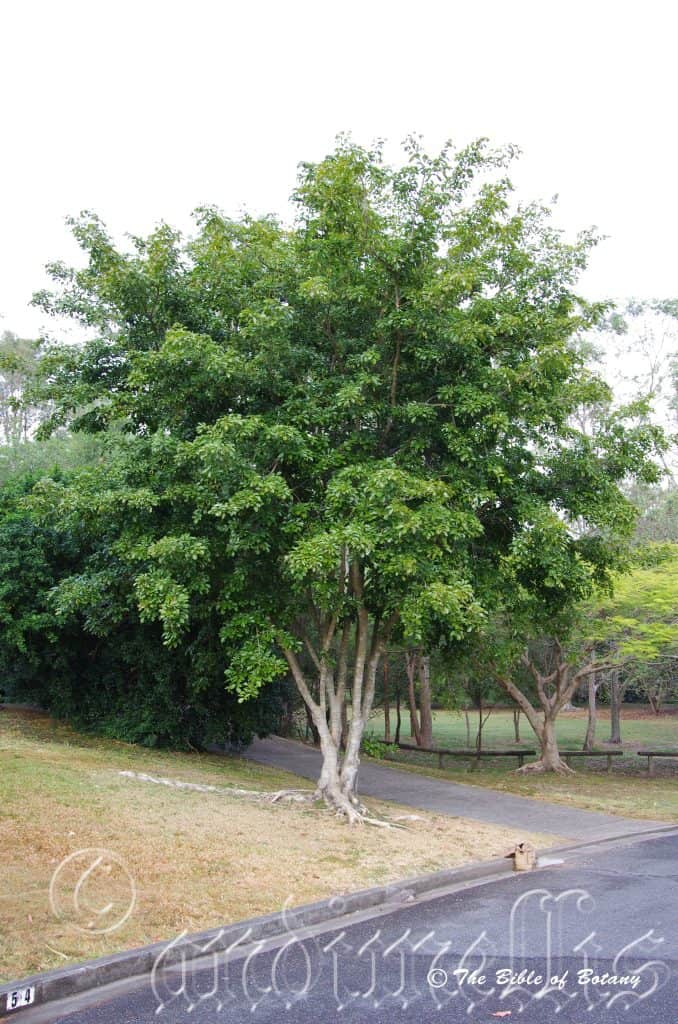
Grange Qld.
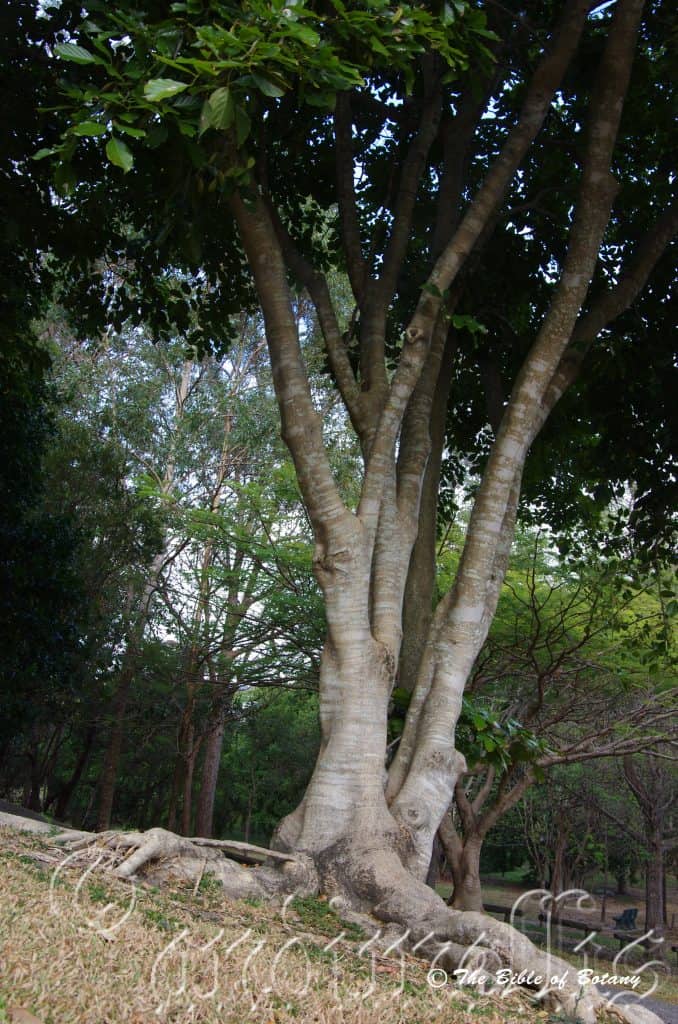
Grange Qld.
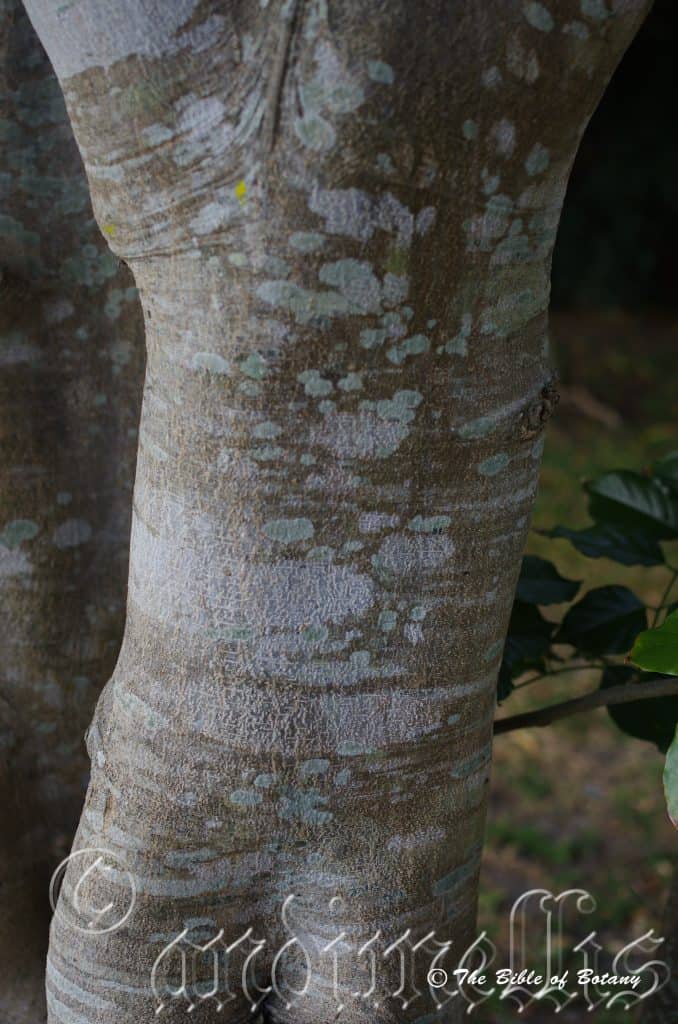
Grange Qld.
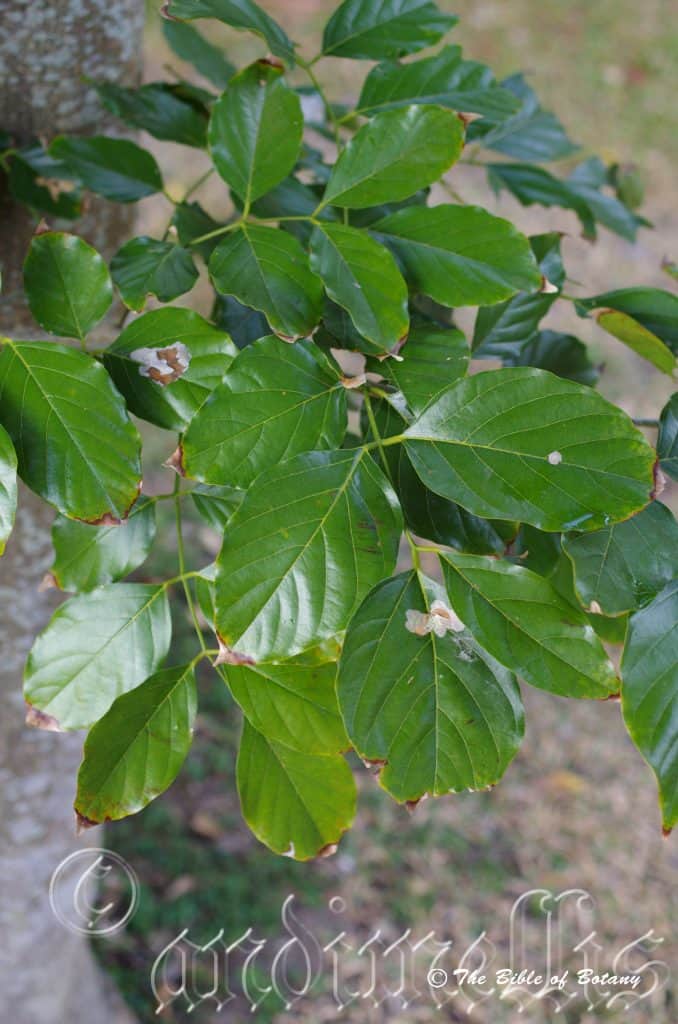
Grange Qld.
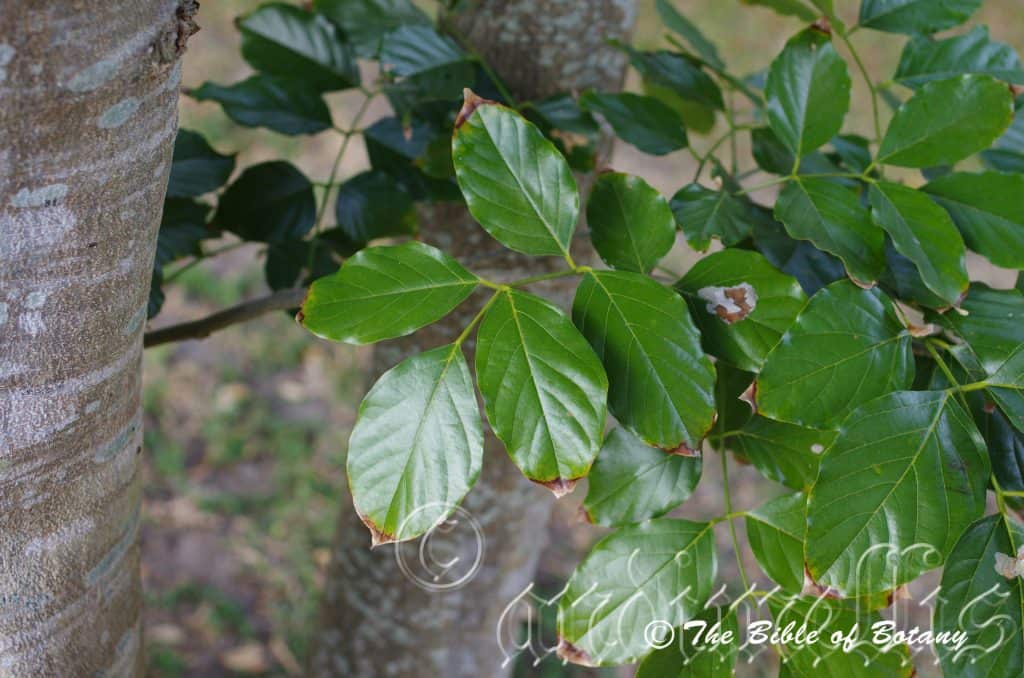
Grange Qld.
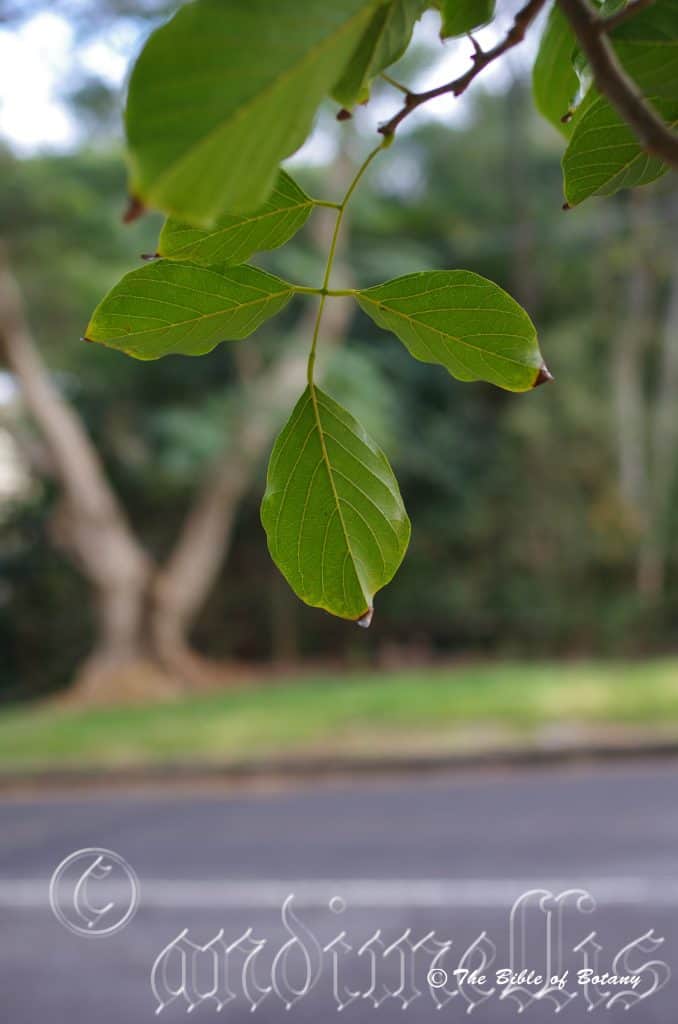
Grange Qld.
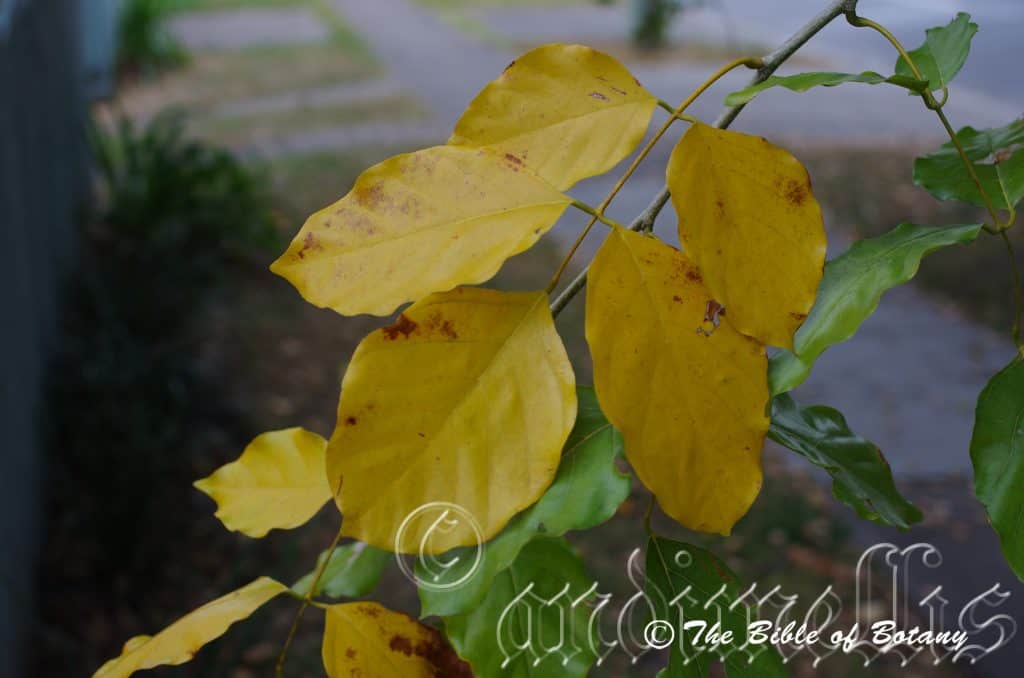
Cooparoo Qld.
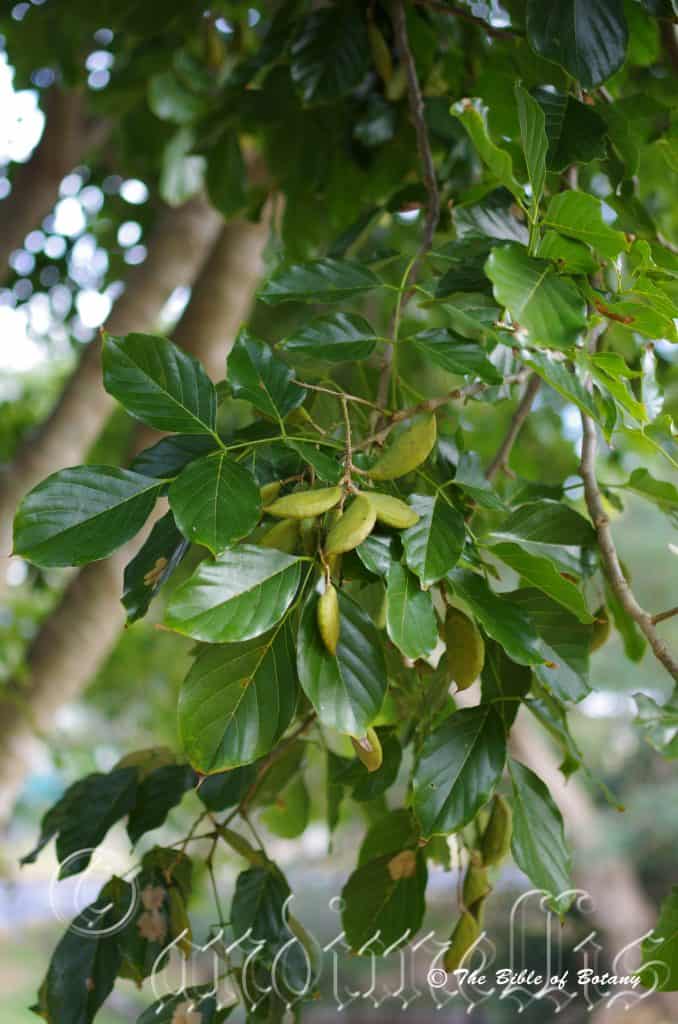
Grange Qld.
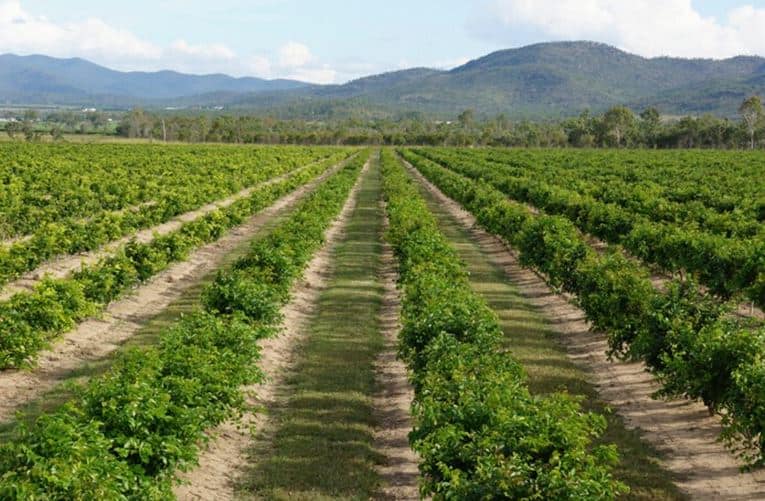
Plantation Q.d
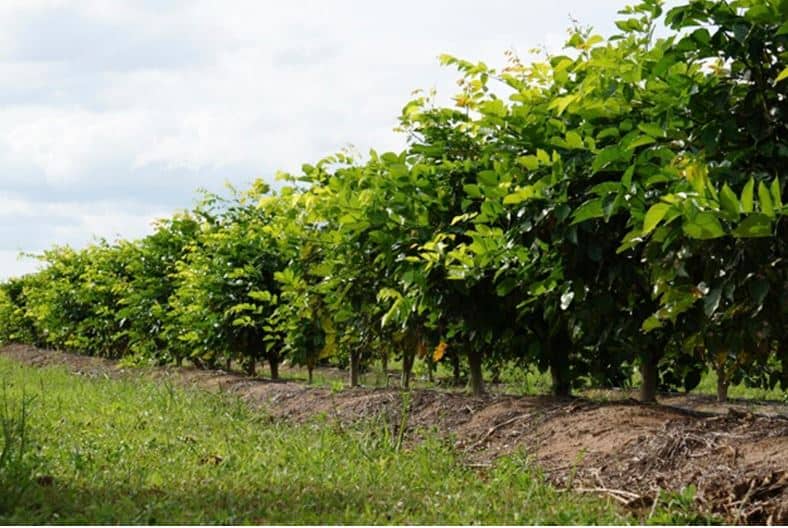
Plantation Qld.
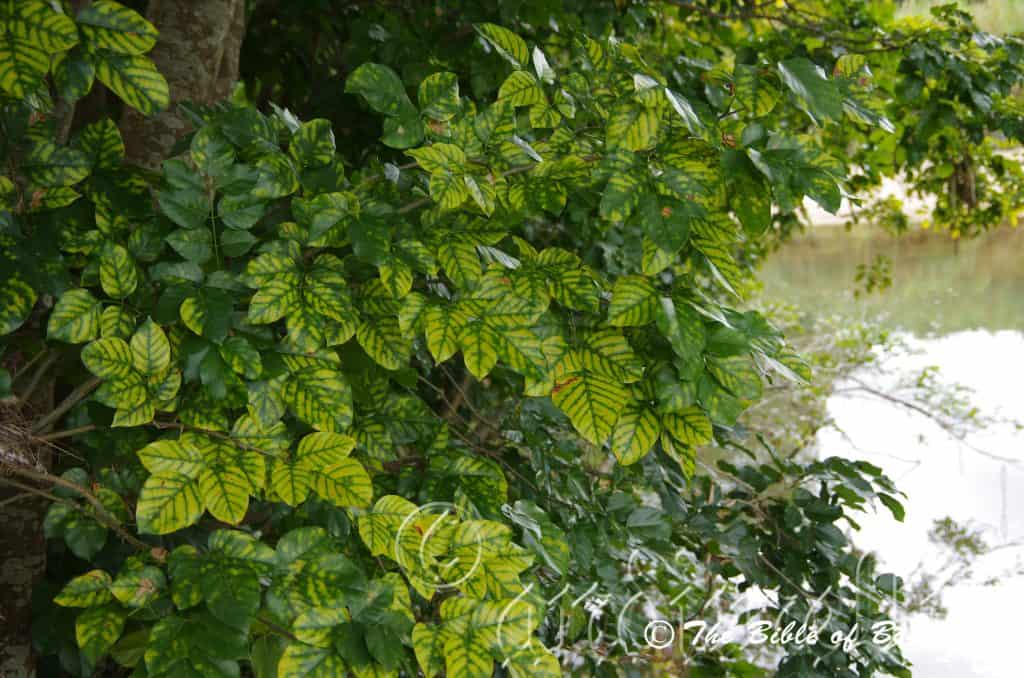
Millettia pinnata
Classification:
Unranked: Eudicots
Unranked: Rosids
Order: Fabales
Family: Fabaceae
Tribe: Mirbelieae
Genus: Is named in honour of Charles Millett; who worked for the East India Company, was a plant collector and sent type specimen to the Edinburgh Botanic Gardens.
Specie: From Pinula, which is Latin for a pinna. It refers to one leaflet of a pinnate leaf.
Sub species:
Common Name: Pongamia.
Distribution:
Millettia pinnata is found south from Melville Bathurst Island and Kakadu National Park to the Fitzmaurice River in north western Northern Territory.
In the east it is found south from the Torres Strait Islands to the Chelona Public State School with 2 disjunct populations further south from Emu Park and Rockhampton and the lower Brisbane River in eastern Queensland. It is mainly found on and east of the Great Dividing Range except in the far north where it is also found down the western side of Cape York Peninsula to Normanton.
It is also native to India, Shi Lanka, Thailand, Vietnam, tropical China, Malaysia, Philippines, Indonesia, Papua, New Guinee and many of the Island Nations in the Pacific Ocean.
https://avh.ala.org.au/occurrences/search?taxa=Millettia+pinnata#tab_mapView
Habitat Aspect Climate:
Millettia pinnata prefers light dappled shade to full sun. It usually grows in littoral rain forests and along brackish estuaries but can be found at higher elevations along open creek lines. The altitude ranges from 5 meter ASL to 500 meters ASL.
The temperatures range from 3 degrees in August to 40 degrees in January.
The rainfall ranges from lows of 850mm to an average of 3200mm.
Soil Requirements:
Millettia pinnata prefers poor quality sand, sandy loams to light clays. The soils are usually derived from decomposed sandstone, granite or accumulated sands. The soils pH ranges from 5pH to 6pH. It does not tolerate waterlogged soils. Non saline soils to very saline soils are tolerated.
Height & Spread:
Wild Plants: 15m to 25 m by 8m to 12m.
Characteristics:
Millettia pinnata’s pale grey glabrous bark turns pale green to grass-green on the branchlets.
Millettia pinnata’s alternate leaves are odd pinnate usually with 5 leaflets. The leaflets are ovate to broad elliptical and measure 55mm to 230mm in length by 40mm to 130mm in width. The pale green petiole and petiolules are glabrous, swell at the bases and are grooved on the upper surface. The bases are rounded while the apexes are broad accuminate. The discolourous laminas are pale yellow-green to mid grass-green, dull to semi glossy and glabrous on the upper laminas while the lower laminas are paler and dull. The laminas are flat to recurve upwards from the mid vein to the margins and straight or gently decurve slightly downwards at the apex. The margins are entire and slightly to moderately undulating. The mid vein is strongly prominent on the lower lamina and is distinctly visible on the upper lamina while the lateral veins are prominent on the lower laminas and clearly visible on the upper lamina. The trees are deciduous for a short period at the end of the dry season.
The inflorescence of Millettia pinnata are long racemes with 1 to 4 racemes with 40 to 120 flowers born in the leaf axils. The rachises measure 60mm to 180mm in length while the pedicels measure 3mm to 8mm in length.
The cupular calyxes are reddish-purple to purple-brown, glabrous and measures 3mm to 5mm in length. The corolla tube measures 8mm to 10mm in length. The petals are moderately to densely covered in fine white appressed hairs on the externally and are glabrous or sparsely covered in fine white appressed hairs internally. The pale pink, lilac or mauve standards measure 8mm to 10mm in height by 10mm to 13mm in width. The pink to deep mauve spathulate wing petals run parallel to the keel and spread slightly near the apex. They measure 8mm to 10mm in height by 7mm to 10mm in width. The pink to deep mauve spathulate keel petals spread slightly near the apex. They measure 7mm to 9mm in height by 6mm to 9mm in width.
The 10 stamen’s filaments of which 9 are fused and 1 stamen is free. The dimorphic stamens are alternatively long and short. The anthers are covered in white pubescent hairs around the connective section on the back of the anther.
The ovary is covered in short white appressed hairs. There are usually 2 ovules or rarely 3 in each ovum. The flowers appear from late September through to December.
Millettia pinnata’s fruits are flattened elliptical to oblong pods. The pale green to grass-green glabrous pods turn grey-brown externally and are creamy white internally when ripe and dehisce along a prominent longitudinal suture. The bases taper to the petiole while the apexes are obtuse with the style remnant attached. The pods measure 55mm to 70mm in length by 20mm to 30mm in width and 8 to 12mm in thickness. The flattish orbicular seeds are creamy yellow and measure 12mm to 14mm in length by 9mm to 10mm in diameter. The testa is glabrous.
Wildlife:
Millettia pinnata’s attracts several small butterflies and the native bee when in flower.
Cultivation:
Millettia pinnata makes an excellent light shade tree for understory shrubs that prefer some winter sun or where an opening is required to let winter warmth through. It always look green and fresh especially where adequate ground moisture is retained. It is very suitable on very poor sandy to heavy clay soils and is most suitable for medium and large gardens close to the coast in warm temperate, sub-tropical or semi-arid gardens. As garden subjects it will grows from 10 meters to 12 meters in height by 7 meters to 10 meters in diameter when grown in the open.
It is cold tolerant to temperatures as low as minus 2 degree once established. It is an excellent tree for semi-arid areas where shade is required around the home stead or along fence lines for stock.
It is best used as a small park tree, placed in the background or planted centrally as a small feature tree in smaller gardens. Placed at the rear of a bush garden, it’s striking display of flowers and perfume will draw your attention so that you will want to investigate further. Plants with small white, pink or lavender flowers and large leaves can be used in the midground while small white, pink or mauve flowering prostrate shrubs are best in the front.
Placed on the edge of a rainforest garden it develops quickly. The trees are suitable for many different orchids and epiphytic ferns in a rainforest situation. Here it supports many different varieties of lichens and mosses.
The trees are proving themselves to be a good commercial tree and have a bright future as a plantation tree as an alternative diesel fuel in biofuel and it also has immense medicinal properties including cures in non-healing wounds, psoriasis, itching, dandruff etc.
* Carbon Sequestration: Millettia pinnata grows into a large tree with a large 10 metre tap root which makes it a very valuable carbon sink. It is capable of sequestrating more than 50 tonnes of CO2 per hectare, per year,
* Interrows: Many other crops can be planted in the interrows offering short term profits until the plants are in full production after fifteen years.
* Resilience: It is resistant to a wide range of adverse climatic conditions including drought, light frost, waterlogged soils moisture stress and salinity,
* Tolerance: Millettia pinnata does not require prime arable land there fore marginal or poor lands can be easily utilized,
* Water and nutrients: Millettia pinnata is a nitrogen fixing legume that can source water and nutrients deep into in the subsoil,
* Carbon credits: Millettia pinnata has good carbon-fixing qualities qualify the tree for carbon credits,
* Millettia pinnata easily surpasses all other plantation oil yields by 45mm to 50mm. Oil yields far superior to other cosmetic oil crops. Good plantations of Palm oil produces 11 tonnes of oil while Jatropha produces 12 tonnes and Millettia pinnata produces 23 tonnes at 6 years of age and will increase thereafter for at least the next ten years.
* Long-term yield: The oil yield from Millettia pinnata plantation continues to increase till the trees reach 15 years of age,
* Long Life Span: Millettia pinnata has a lifespan of 100 years with a productive oil seed lifespan of over 60 years,
* Plantations: Millettia pinnata plantations can be managed by smaller/unskilled farm hands due to lower crop maintenance and ability to utilise mechanical pruning and harvesting equipment,
* Fertilization: Millettia pinnata is a legume therefore it minimizes irrigation and expensive fertilizer requirements,
* Production Rates: Millettia pinnata usually produces 800kg to 1,000kgs of seed, per tree, per year,
* Flexibility: Millettia pinnata thrives in temperatures from 2 degrees Celsius to 40 degrees Celsius but is still fully productive in temperatures down to zero and up to 50 degrees,
* Environmental friendly: Millettia pinnata can be grown in smaller intensive farms or extensive on broad plantation.
Millettia pinnata plantation near Cairns north Queensland – Hopefully the orchardist is using natural organic herbicides along the tree rows as the opportunity exists to be wholly organic. – Plantation 8.1
Millettia pinnata plantation near Cairns north – Hopefully the orchardist is using natural organic herbicides along the tree rows as the opportunity exists to be wholly organic. Plantation 8.2.
For further information on growing Australian Millettia pinnata as
a commercial crop contact http://www.millettiaplantations.com
Propagation:
Seeds: Millettia pinnata fresh seeds can be sown directly into a seed raising mix. Place one seed into a 50mm tube.
Cover the seeds with 5mm of the mix and place the tubes in a warm sunny position. When the seedlings are 150mm to 250mm tall they can be planted out into their permanent position. Group plantings of three to five trees are particularly attractive and will give a good canopy in a few years.
Fertilize using seaweed, fish emulsion or organic chicken pellets soaked in water on an alternate basis. Fertilize every two months until the plants are established then twice annually in early September and March to maintain better health, vitality and flowering.
Further Comments from Readers:
Hi reader, it seems you use The Bible of Botany a lot. That’s great as we have great pleasure in bringing it to you! It’s a little awkward for us to ask, but our first aim is to purchase land approximately 1,600 hectares to link several parcels of N.P. into one at The Pinnacles NSW Australia, but we need your help. We’re not salespeople. We’re amateur botanists who have dedicated over 30 years to saving the environment in a practical way. We depend on donations to reach our goal. If you donate just $5, the price of your coffee this Sunday, We can help to keep the planet alive in a real way and continue to bring you regular updates and features on Australian plants all in one Botanical Bible. Any support is greatly appreciated. Thank you.
In the spirit of reconciliation we acknowledge the Bundjalung, Gumbaynggirr and Yaegl and all aboriginal nations throughout Australia and their connections to land, sea and community. We pay our respect to their Elders past, present and future for the pleasures we have gained.
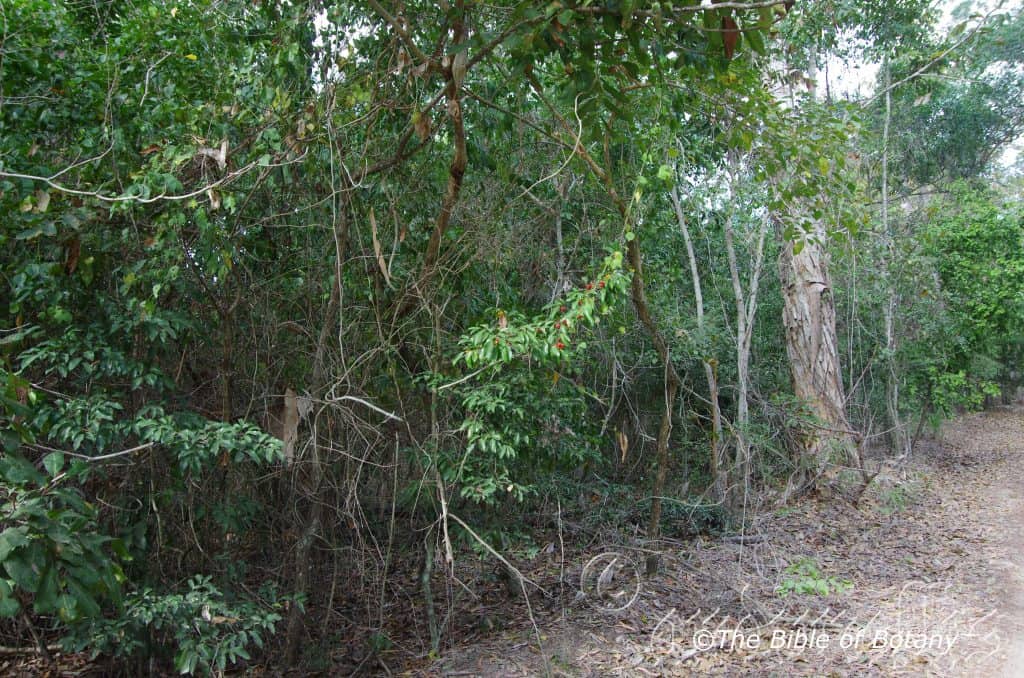
Crystal Creek Foreshore Qld.
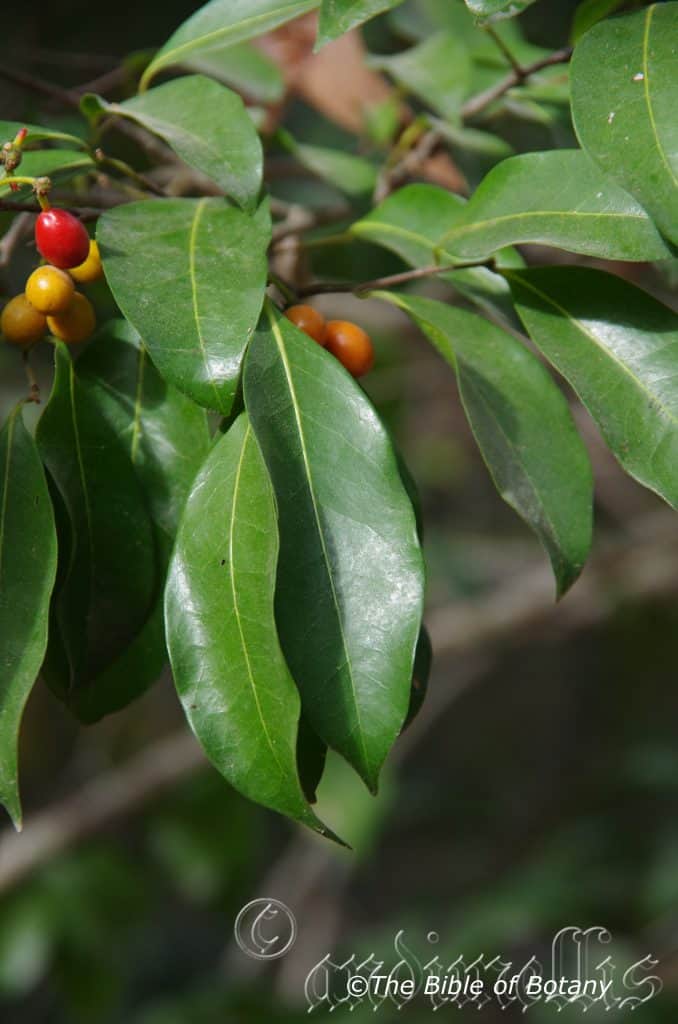
Crystal Creek Foreshore Qld.

Crystal Creek Foreshore Qld.
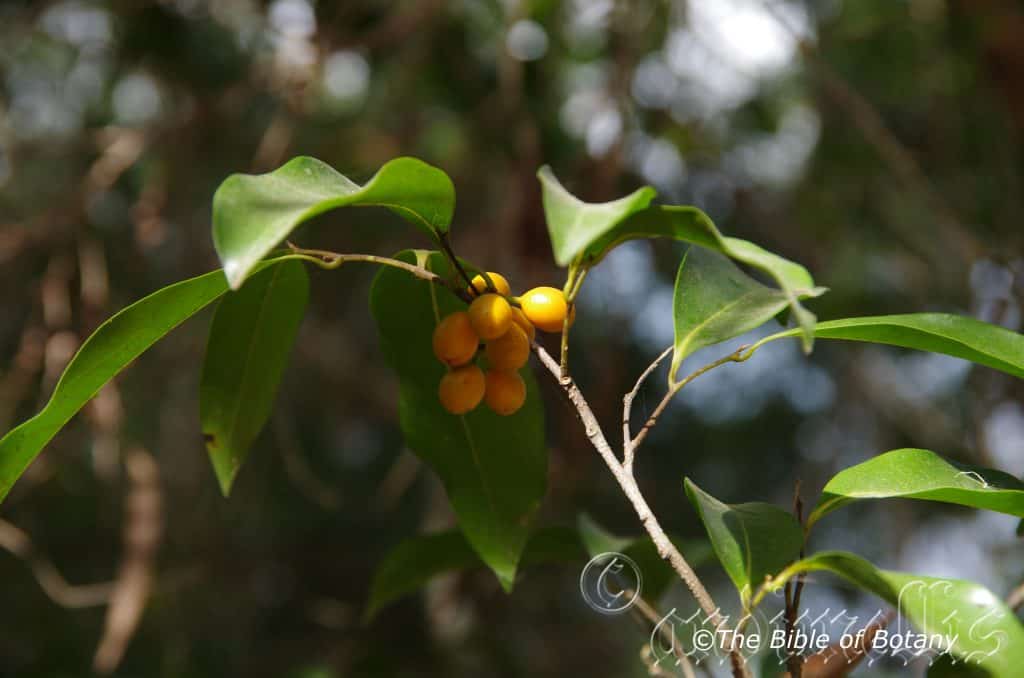
Crystal Creek Foreshore Qld.
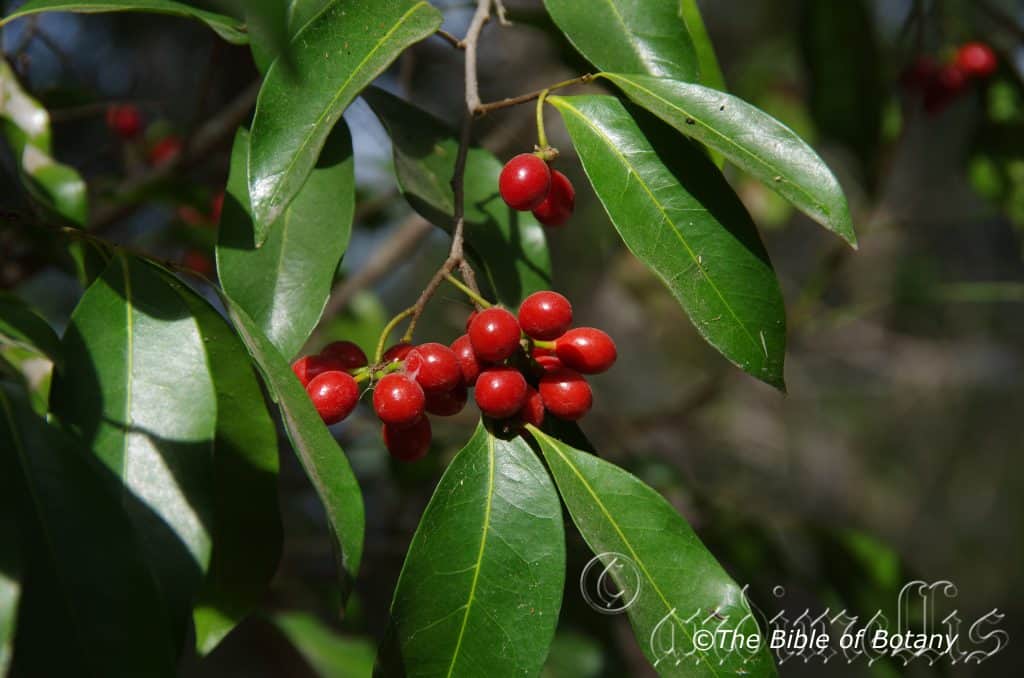
Crystal Creek Foreshore Qld.
Mimusops elengi
Classification:
Unranked: Eudicots
Unranked: Asterids
Order: Ericales
Family: Sapotaceae
Genus: From Mimus, which is Ancient Greek for an imitator and, Opsis, which is Ancient Greek for a face. It refers to the flowers, which somewhat resemble a monkeys face.
Specie: From Elengi/Belengi, which are Latinized from the Malayalam vernacular for the tree. It has references to the fruits, which give pleasure, with a pleasant taste, while being very beautiful.
Sub species: Red Condoo, Medlar, Bulletwood or Spanish Cherry.
Distribution:
Mimusops elengi is found north and east from James price Point in far north west Western Australia around the coast through the Northern Territory to Bicketon Island. In Queensland it is found south from the Torres Strait Islands, on both sides of Cape York Peninsula down to Rockhampton.
There are 2 disjunct populations further south at Double Island point beach and the upper reaches of the Brisbane River in south east Queensland.
Mimusops elengi is naturally found east from east Africa including Ghana, Tanzania, Mozambique, Réunion and Mauritius through the middle east, India, Sri Lanka, Thailand, Vietnam, tropical China, the Andaman Islands, Myanmar, Malaysia, Philippines, Indonesia, Papua, New Guinee and many of the Island Nations in the western Pacific.
https://avh.ala.org.au/occurrences/search?taxa=Mimusops+elengi#tab_mapView
Habitat Aspect Climate:
Mimusops elengi prefers light dappled shade to full sun. It grows in dry littoral forests, drier coastal rainforests and dry sclerophyll forest. The altitude ranges from 5 meter ASL to 200 meters ASL.
The temperatures range from 6 degrees in August to 40 degrees in January.
The rainfall ranges from lows of 500mm to an average of 3200mm.
Soil Requirements:
Mimusops elengi prefers sand, sandy loams to light gritty clays. The soils are usually derived from decomposed sandstone, granite or accumulated sands. The soils pH ranges from 5pH to 8pH. It does not tolerate waterlogged soils. Non saline soils to very saline soils are tolerated as are salt laden winds.
Height & Spread:
Wild Plants: 10m to 30m by 10m to 20m.
Characteristics:
Mimusops elengi’s outer bark is layered, deep grey, with longitudinally fissures and lenticellate. The inner blaze is pink, with White, granular stripes and exudes a milky sap. The smaller branchlets are terete, pale grey and glabrous, while the stems are fawn and densely covered in fawn pubescent hairs.
Mimusops elengi’s petioles and twigs produce a watery, milky sap. The terete, greenish-yellow petioles measure 8mm to 30mm in length. The terminal buds and younger leafy twigs are densely covered in caduceous, fawn to brown pubescent hairs. The narrow, deltoid, caduceous stipules measure 3mm to 5mm in length. The alternate to sub opposite or spiral, broad elliptical to oblong leaves measure 30mm to 110mm in length by 20mm to 50mm in width. The bases are rounded often being abruptly cuneate at the petiole, while the apexes are short to long acuminate. The discolourous laminas are sea-green, dull to semi glossy and glabrous on the upper laminas while the lower laminas are much paler. The laminas curve upwards from the midvein to the entire margins and are undulating. The mid vein is prominent on the upper lamina and is strongly prominent on the lower lamina. The lateral veins are slightly prominent on the lower lamina and form loops just inside the blade margin.
The sweetly scented inflorescences of Mimusops elengi are born in auxiliary fascicles of 2 to 6 flowers born in the leaf axils or umbel like terminal racemes. The pedicels measure 10mm to 20mm in length. The 8 tepals are in two rows and are densely covered in fawn to pale rusty brown pubescent hairs externally and are glabrous internally. The 8 corolla segments, each have 2 dorsal appendages of the same size and shape as the segments themselves, which give the appearance of having 24 individual segments. There are 8 stamens and 8 staminodes. The 8 locular ovary is white. The flowers appear from
The fruits are globular to ellipsoid berries that measure 12mm to 17mm in length by 12mm to 15mm in diameter. The calyxes are persistent on the green berries, which turn yellow then brilliant, glossy red when ripe. The single or 2 seeds in each fruit measures 11mm to 15mm by 7mm to 10mm in diameter.
Wildlife:
Mimusops elengi is a honey source for native bees like Tetragonula carbonaria and the Blue banded bee Amegilla cingulata.
The fruits are sought after by numerous fruitigrove birds including the Woompoo Dove, Ptilinopus magnificus.
Mimusops elengi’s trees are a favourite fruit source for the Spectacled flying fox Pteropus conspicillatus, Little flying fox Pteropus scapulatus and the grey headed flying fox Pteropus poliocephalus.
Cultivation:
Mimusops elengi grows as a well shaped small slow growing tree in the garden. It prefers frosts free areas and copes well with bright sunlight reflected off the ocean or sealed roads. It is also drought resistant once established and can cope with consistently low rainfall and is ideal on dry sandy escarpments, hills and ridge tops.
If it is given a little extra moisture, plenty of mulch for moisture retention and an even soil temperature, applying native fertilizers on a regular basis the plants will respond with heavy flowering crops year after year though the initial growth will still be relatively slow. It can be lightly pruned to induce bushiness closer to the ground and increase flowering in the following season. It naturally will form a dense crown.
Mimusops elengi is ideal as a street tree, park tree or shade tree in small, medium and large gardens. Planted in groups of 5 to 7 plants in larger garden will create that park scene many desire.
Propagation:
Seeds: Mimusops elengi fresh seeds can be sown into a seed raising mix following pre-treatment. Place the seeds in a glass of hot not boiling water and allow to soak for 20 to 24 hours prior to sowing.
Place the seeds into a deep trey or individually into 50mm native tubes and cover the seeds with 5mm to 10mm of fine weed free mulch and keep moist. Place the tray in a warm sunny position. When the seedlings are 50mm to 70mm tall, prick them out and plant them into 50mm native tubes using a good organic mix or into 250mm pots.
Once the seedlings reach 150mm to 300mm in height they can be planted out into their permanent position. Group plantings of three to five trees are particularly attractive and will give a good canopy in years to come.
Cuttings: Cuttings must be used if good quality fruiting or flowering forms are required. Mimusops elengi is not the easiest to strike from cuttings so some patience is needed. Use 200mm to 300mm long hard wood material when growing from cuttings from the previous season’s growth. Take them in warmer months of the year. Remove any leaves present from the bottom section being careful not to tear the bark.
1 Prepare the cutting mix by adding one third sharp clean river sand, one third peat and one third perlite. These ingredients are sterilize,
2 Select good material from non diseased plants,
3 Select semi green stems for cuttings. Look for a stem with two or three nodes,
4 Place the cutting on a flat, hard surface, and make a clean cut down one side of the cutting at the base for 10mm with a sharp sterile knife or razor blade. – This scarification of the node will increase the chances of roots emerging from this spot. Now remove all but one or two the leaves, leaving the apex leaves in tact. If the leaves are very large in proportion to the stem, cut off the apical halves.
5 Fill a saucer with water, and place a little medium strength rooting hormone into another container like a milk bottle top. Dip the node end of the cutting into the water and then into the rooting hormone. Tap off any excess hormone,
6 Use a small dipple stick or old pencil to poke a hole into the soilless potting mix. Ensure the hole is slightly larger than the stem diameter and be careful not to wipe the rooting hormone off the cuttings base, place the cuttings in a pattern ensuring the cuttings are not touching each other,
7 I like to place the pots in Plastic bags to help maintain temperature and moisture. Place in a semi shaded place like under 50mm shade cloth.
8 When the cuttings have struck, open the bag to allow air circulation for a few days to a week,
9 Once hardened off remove the cuttings from the bag and allow to further hardening for a few more days,
10 Transplant into a good potting mix to grow on.
Fertilize using seaweed, fish emulsion or organic chicken pellets soaked in water on an alternate basis. Fertilize every two months until the plants are established then twice annually in early September or March to maintain health, vitality and better flowering.
Further Comments from Readers:
Hi reader, it seems you use The Bible of Botany a lot. That’s great as we have great pleasure in bringing it to you! It’s a little awkward for us to ask, but our first aim is to purchase land approximately 1,600 hectares to link several parcels of N.P. into one at The Pinnacles NSW Australia, but we need your help. We’re not salespeople. We’re amateur botanists who have dedicated over 30 years to saving the environment in a practical way. We depend on donations to reach our goal. If you donate just $5, the price of your coffee this Sunday, We can help to keep the planet alive in a real way and continue to bring you regular updates and features on Australian plants all in one Botanical Bible. Any support is greatly appreciated. Thank you.
In the spirit of reconciliation we acknowledge the Bundjalung, Gumbaynggirr and Yaegl and all aboriginal nations throughout Australia and their connections to land, sea and community. We pay our respect to their Elders past, present and future for the pleasures we have gained.
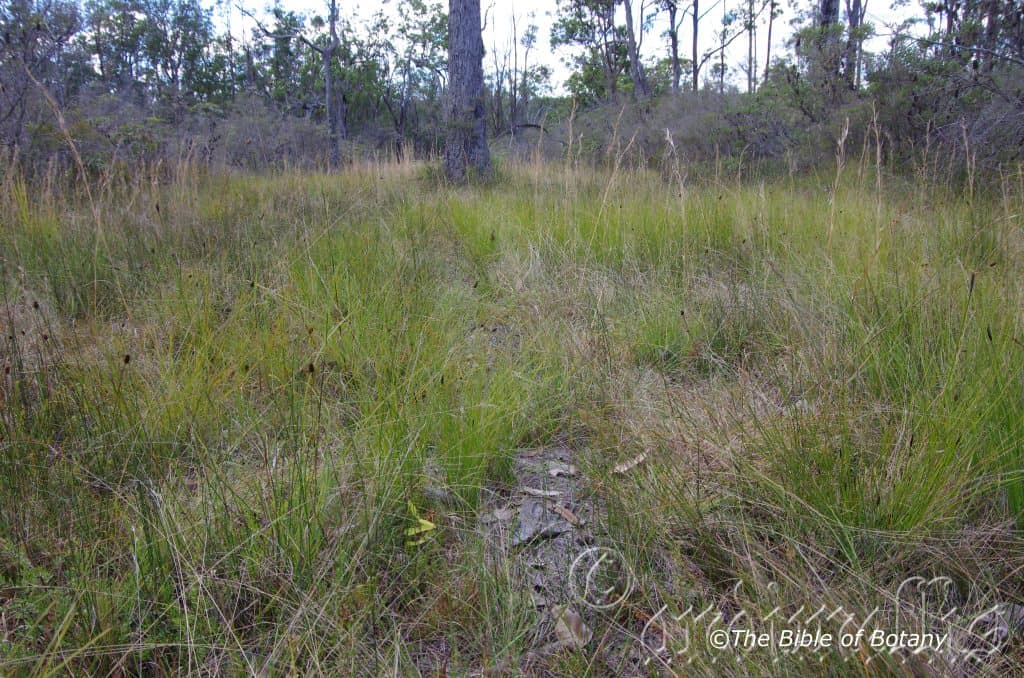
The Pinnacles NSW
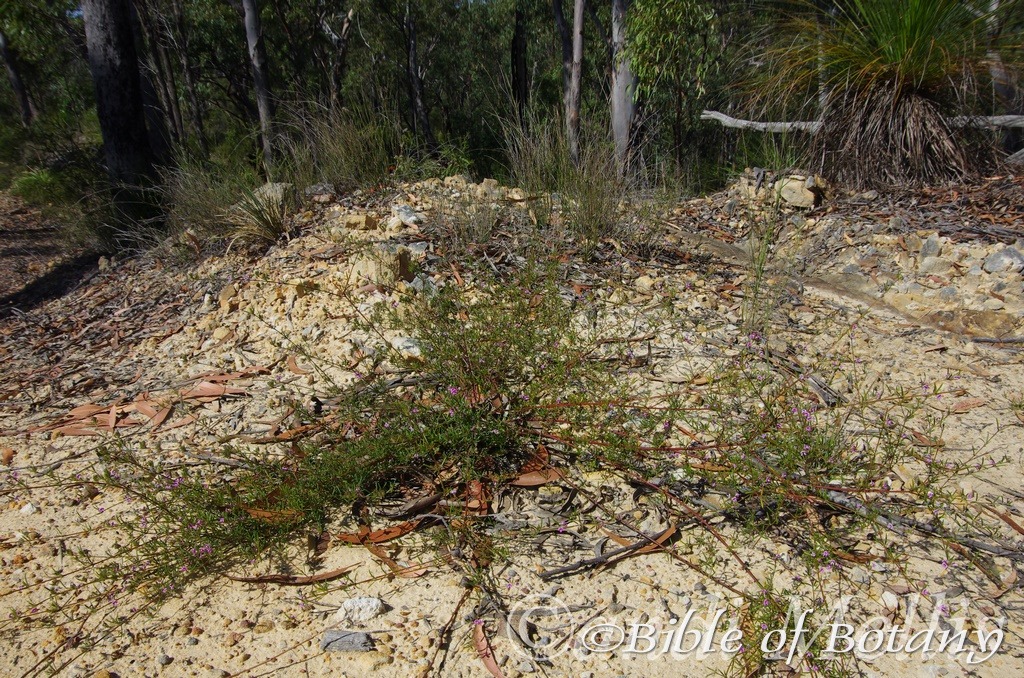
Morgan’s Camp Trail Fortis Creek National Park NSW

Morgan’s Camp Trail Fortis Creek National Park NSW
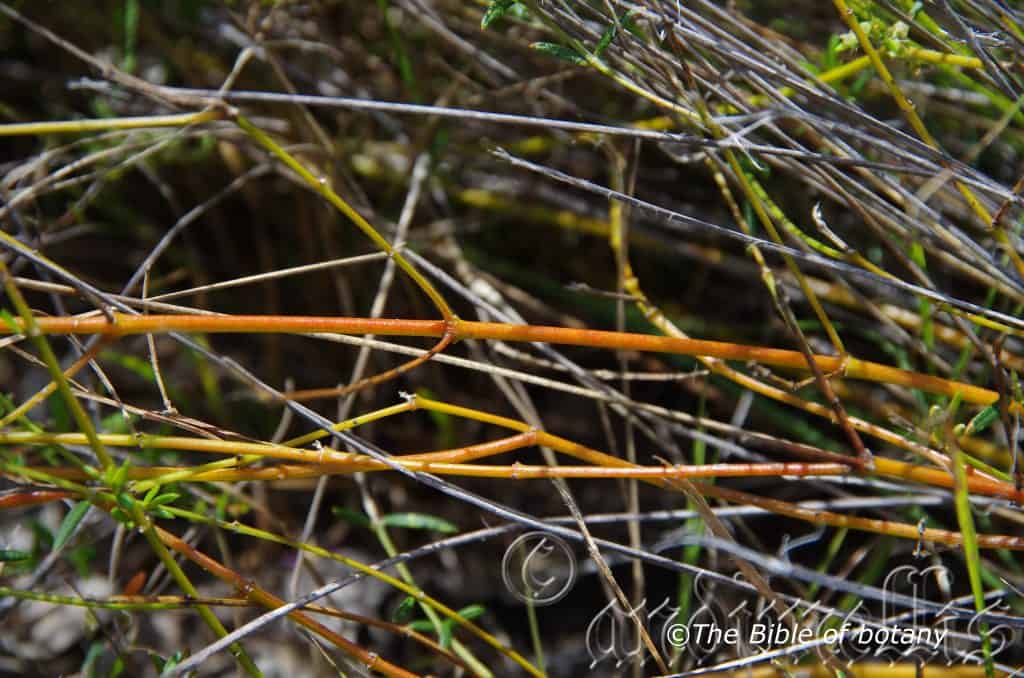
The Pinnacles NSW
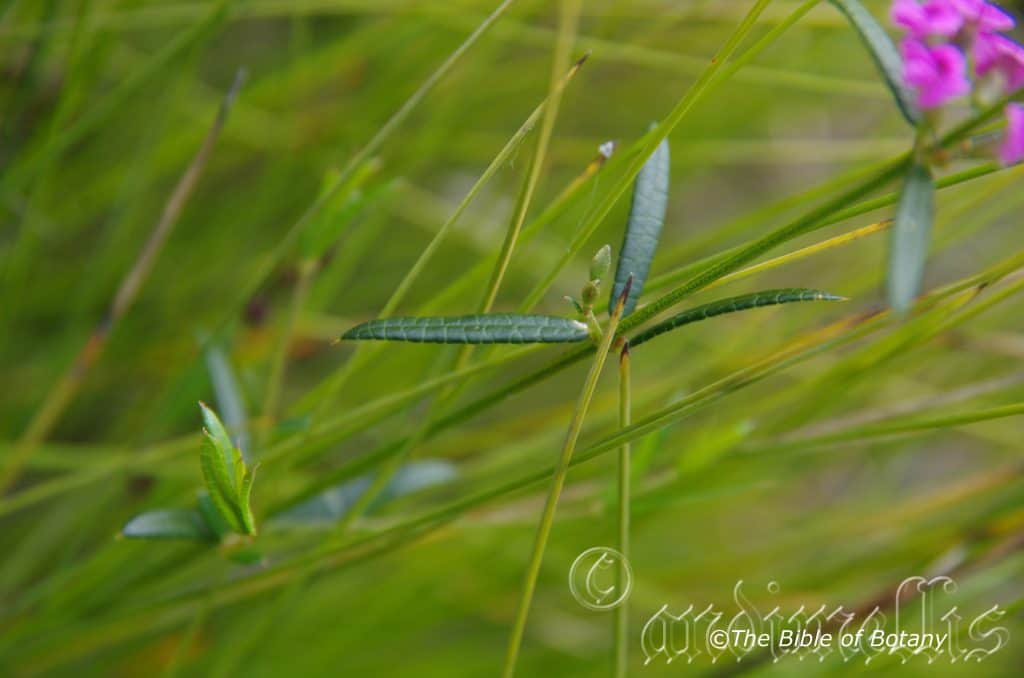
The Pinnacles NSW
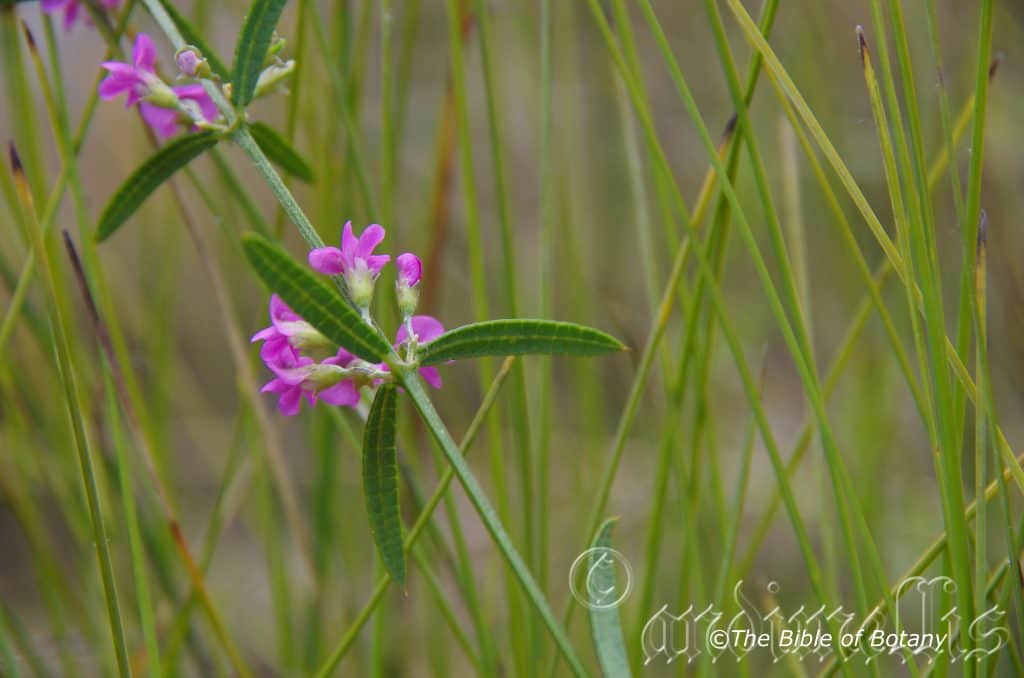
The Pinnacles NSW
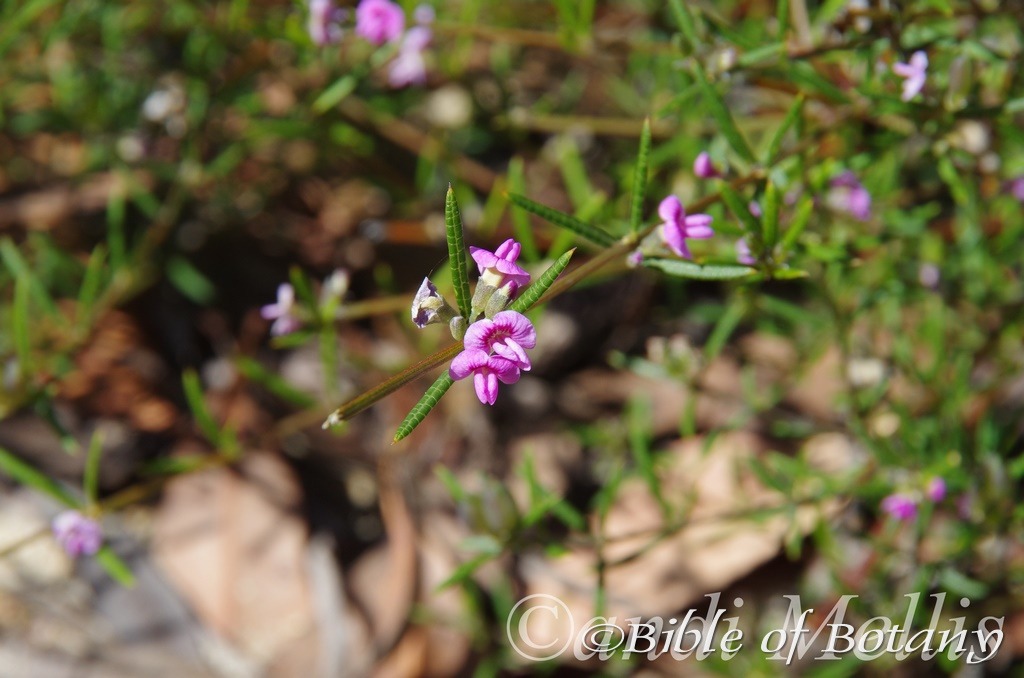
Morgan’s Camp Trail Fortis Creek National Park NSW
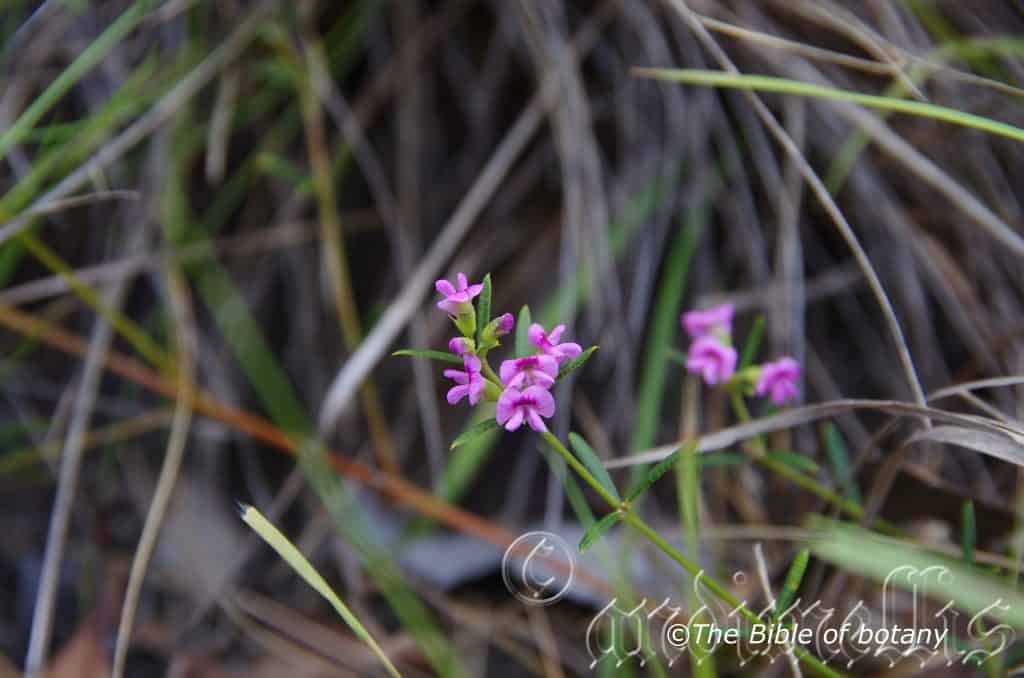
The Pinnacles NSW
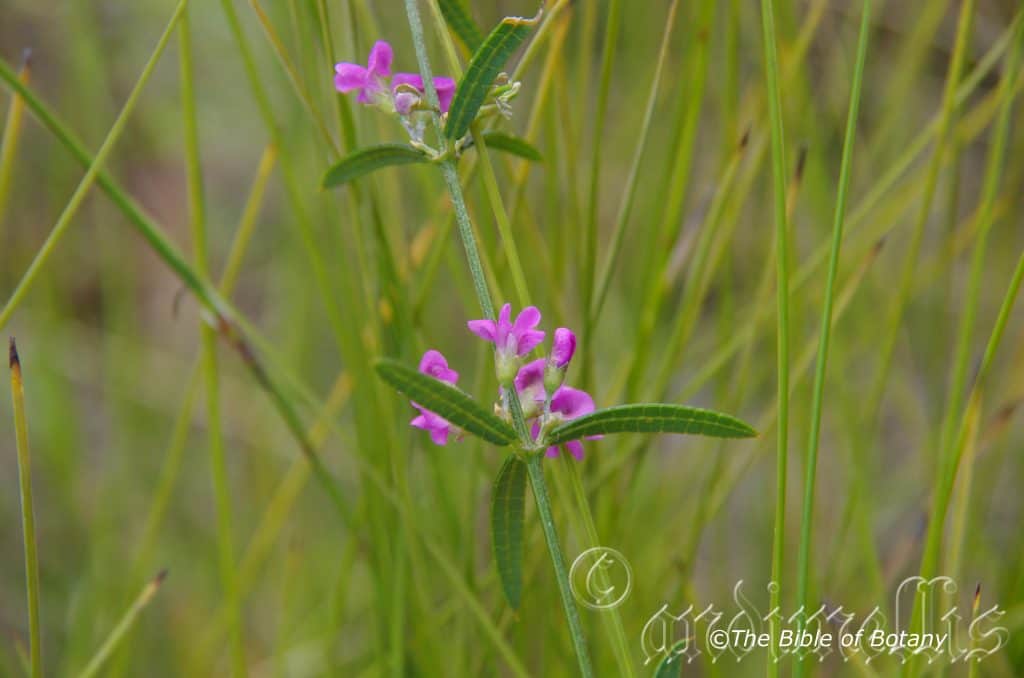
The Pinnacles NSW
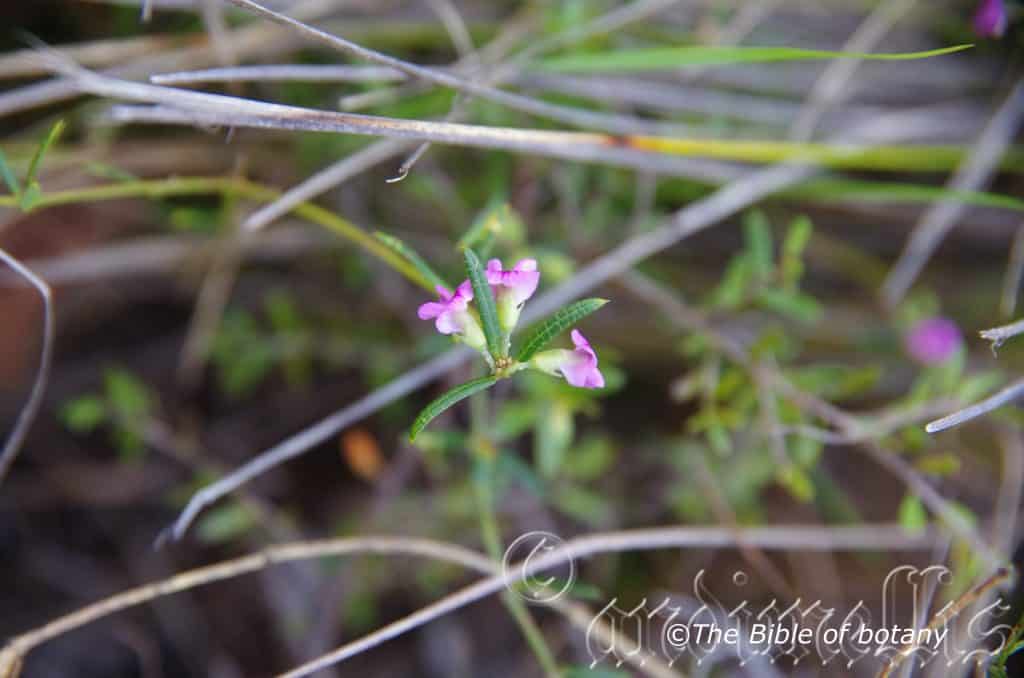
The Pinnacles NSW
Mirbelia rubiifolia
Classification:
Unranked: Eudicots
Unranked: Rosids
Order: Fabales
Family: Fabaceae
Subfamily: Faboideae
Tribe: Mirbelieae
Genus: Is named in honour of Charles-François Brisseau de Mirbel; 1776–1854, who was a French naturalist and botanist who at the age of 20 worked at the French National Natural Science museum and later with a short stint as a politician. He was a founder of the science of plant cytology.
Specie: From Rubēns, which is Latin for reddish or blushing and Folium, which is Latin for foliage. It refers to the new growth and leaves which have a brilliant red colour.
Sub species:
Common Name:
Distribution:
Mirbelia rubiifolia is found at Shoal Bay Passage in north west western Australia.
On the east coast it is found south from Shoal Water Bay passage north of Rockhampton in central coastal Queensland to Newtons Beach in the Bega Valley in southern coastal New South Wales and Croajingalong National Park in north western Victoria. It is mainly found on the Western Slopes, on and east of the Great Dividing Range to the coast.
https://avh.ala.org.au/occurrences/search?taxa=Mirbelia+rubiifolia#tab_mapView
Habitat Aspect Climate:
Mirbelia rubiifolia prefers light dappled shade to full sun. It grows in dry coastal heaths dry sclerophyll forest heaths or moist sclerophyll heaths. The altitude ranges from 5 meter ASL to 950 meters ASL.
The temperatures range from 3 degrees in August to 36 degrees in January.
The rainfall ranges from lows of 500mm to an average of 2100mm.
Soil Requirements:
Mirbelia rubiifolia prefers sand, sandy loams to light gritty clays. The soils are usually derived from decomposed sandstone, granite or accumulated sands. The soils pH ranges from 5pH to 6pH. It does not tolerate waterlogged soils. Non saline soils to very saline soils are tolerated.
Height & Spread:
Wild Plants: 0.3m to 0.5m by 0.5m to 0.9m.
Characteristics:
Mirbelia rubiifolia’s grey-green to reddish-brown diffuse stems are angular and glabrous or covered in minute, white puberulent hairs.
Mirbelia rubiifolia’s leaves are clustered in whirls of 3 and measure 10mm to 25mm in length by 2mm to 4mm in width. The leaves are narrow ovate to linear-oblong. The bases are broad cuneate to rounded while the apexes are broad acute to acute with a short pungent spine. The discolourous laminas are sea-green, dull to semi glossy and glabrous on the upper laminas while the lower laminas are much paler and glabrous to sparsely covered with short white puberulent hairs. The laminas are flat and straight or gently decurve slightly downwards on the apical half while the margins are entire. The mid vein is strongly prominent on the lower lamina and is distinctly visible on the upper lamina. The lateral veins are slightly prominent on the lower laminas and are deeply sunken on the upper laminas from the midvein to the margins. The pale olive-brown petioles measure 0.7mm to 1.5mm in length.
The inflorescence are small clusters of 2 to 6 flowers born in the leaf axils or umbel like terminal racemes. The rachises measure 3mm to 18mm in length while the pedicels measure 1mm to 2.5mm in length.
The calyxes are moderately covered in short, white puberulent hairs and measures 6mm to 7mm in length including the 1mm to 1.5mm receptacle. The 5 calyx lobes have acute apexes except for the central upper lobe which is obtuse. The corolla tube measures 8mm to 9mm in length. The broad falcate deep pink or rarely white standards may have a burgundy patch leading into the corolla tube. The standards measure 6mm to 9mm in height by 10mm to 15mm in width. The deep pink or rarely white, linear to spathulate wing petals run parallel to the keel and spread near the apex. The wings measure 6mm to 8mm in length by 2mm to 3mm in width. The deep pink or rarely white keel measures 1.5mm to 2.5mm in length by 1mm to 2mm in height.
The shortly stipitate ovary is glabrous with 2 locules. Mirbelia rubiifolia flowers appear from late September through to December.
Mirbelia rubiifolia’s fruits are obovoidal pods with rounded bases and acute apexes. The green coriaceous pods turn brown when ripe. They measure 4.5mm to 5.5mm in length by 3mm to 3.5mm in diameter.
Wildlife:
Mirbelia rubiifolia’s is a honey source for native bees while the Small Brown butterfly (Neolucia agricola occidens) has been frequently observed on the plants.
Cultivation:
Mirbelia rubiifolia is diffuse small brittle shrub that should be placed away from paths and where children are likely to play in the garden. It copes with light frosts with temperatures down to minus 3 degrees once established. It is also drought resistant once established and can cope with consistently low rainfall and are ideal on dry sandy escarpments, hills and ridges.
If it is given a little extra water moisture, plenty of mulch for moisture retention and an even soil temperature, applying native fertilizers on a regular basis the plants will respond with heavy flowering crops year after year. It often reaches its full potential in just 1 year and flower from the first year from seed. In cultivation it will grow from 0.3 meter to 0.5 meters by 0.6 meters to 0.8 meters in diameter when grown in the open. They can be lightly pruned to increase bushiness and flowering in the following season however it is better to mass plant it to make it look bushier.
Mirbelia rubiifolia is short lived to around 5 years so should be replaced from the 4th or 7th year to retain the flowering and habitat already created. It is ideal dry rockeries mixed with other small yellow flowering shrubs or under shrubs.
Planted in groups of 5 to 7 plants, back from a bend will become a very strong focal point in larger gardens particularly when in flower and gain a lot of attention whether you are coming or going because of the fresh clean look of the foliage even in the driest of times. Place them in the midground with large leaf, or fine leaf ground covers and very small shrubs or annuals in front. To the rear, use large leaf taller plants. Plants with pink, orange, red or purple flowers can be used in both the foreground and background. Plants with finer foliages in pale green or blue greys will also compliment the scene during periods when there are few flowers in the garden. This will lead the viewer’s eyes directly to the yellow flowers in spring and have them yearning to see what lies beyond the bend.
Propagation:
Seeds: Fresh seeds can be sown into a seed raising mix following pretreatment. Place the seeds in a glass of boiling water and allow to soak for 20 to 24 hours prior to sowing. Any seeds that have not swollen repeat the process.
Cover the seeds with 2mm to 4mm of fine weed free mulch and keep moist. Place the tray in a warm sunny position. When the seedlings are 30mm to 50mm tall, prick them out and plant them into 50mm native tubes using a good organic mix.
Once the seedlings reach 100mm to 150mm in height they can be planted out into their permanent position. Group plantings of three to five trees are particularly attractive and will give a good canopy in years to come.
Cuttings: Cuttings must be used if flowering in the following season are required or a particular flower colour of form is required. Fortunately Mirbelia rubiifolia strikes easy from cuttings. Use 100mm to 150mm long half ripened material when growing from cuttings from the present season’s growth. Take them in warmer months of the year. Remove half the leaves from the bottom section being careful not to tear the bark.
1 Prepare the cutting mix by adding one third sharp clean river sand, one third peat and one third perlite. These ingredients are sterilize,
2 Select good material from non diseased plants,
3 Select semi green stems for cuttings. Look for a stem with two or three nodes,
4 Place the cutting on a flat, hard surface, and make a clean cut down one side of the cutting at the base for 10mm with a sharp sterile knife or razor blade. – This scarification of the node will increase the chances of roots emerging from this spot. Now remove all but one or two the leaves, leaving the apex leaves in tact. If the leaves are very large in proportion to the stem, cut off the apical halves.
5 Fill a saucer with water, and place a little medium strength rooting hormone into another container like a milk bottle top. Dip the node end of the cutting into the water and then into the rooting hormone. Tap off any excess hormone,
6 Use a small dipple stick or old pencil to poke a hole into the soilless potting mix. Ensure the hole is slightly larger than the stem diameter and be careful not to wipe the rooting hormone off the cuttings base, place the cuttings in a pattern ensuring the cuttings are not touching each other,
7 I like to place the pots in Plastic bags to help maintain temperature and moisture. Place in a semi shaded place like under 50mm shade cloth.
8 When the cuttings have struck, open the bag to allow air circulation for a few days to a week,
9 Once hardened off remove the cuttings from the bag and allow to further hardening for a few more days,
10 Transplant into a good potting mix to grow on.
Fertilize using seaweed, fish emulsion or organic chicken pellets soaked in water on an alternate basis. Fertilize every two months until the plants are established then twice annually in early September or March to maintain health, vitality and better flowering.
Further Comments from Readers:
Hi reader, it seems you use The Bible of Botany a lot. That’s great as we have great pleasure in bringing it to you! It’s a little awkward for us to ask, but our first aim is to purchase land approximately 1,600 hectares to link several parcels of N.P. into one at The Pinnacles NSW Australia, but we need your help. We’re not salespeople. We’re amateur botanists who have dedicated over 30 years to saving the environment in a practical way. We depend on donations to reach our goal. If you donate just $5, the price of your coffee this Sunday, We can help to keep the planet alive in a real way and continue to bring you regular updates and features on Australian plants all in one Botanical Bible. Any support is greatly appreciated. Thank you.
In the spirit of reconciliation we acknowledge the Bundjalung, Gumbaynggirr and Yaegl and all aboriginal nations throughout Australia and their connections to land, sea and community. We pay our respect to their Elders past, present and future for the pleasures we have gained.
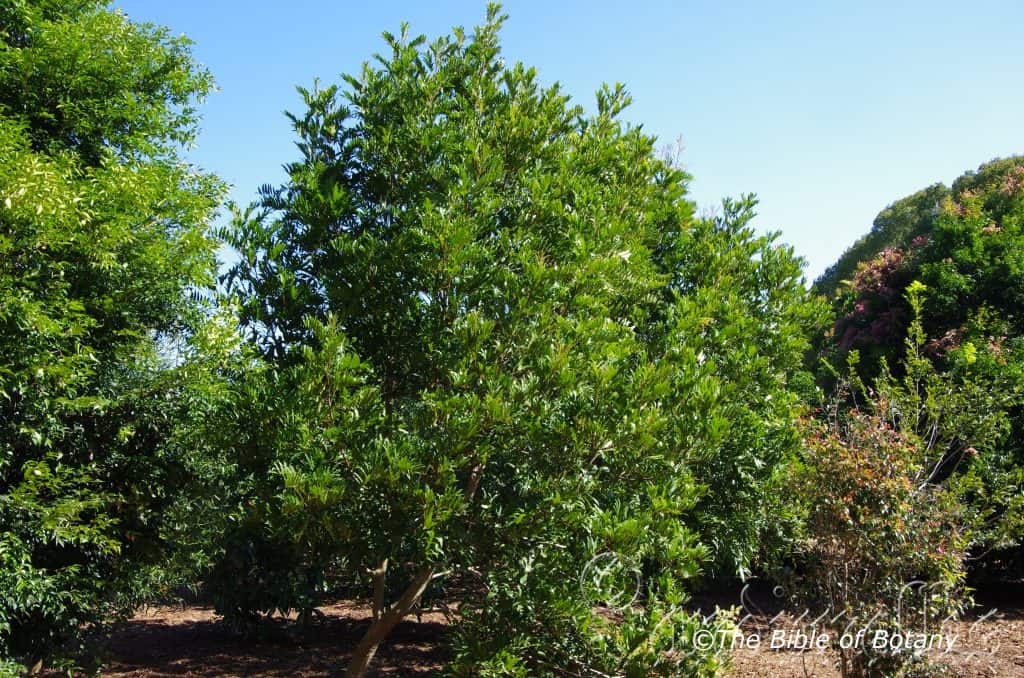
Rosser Gardens Benowa Qld.
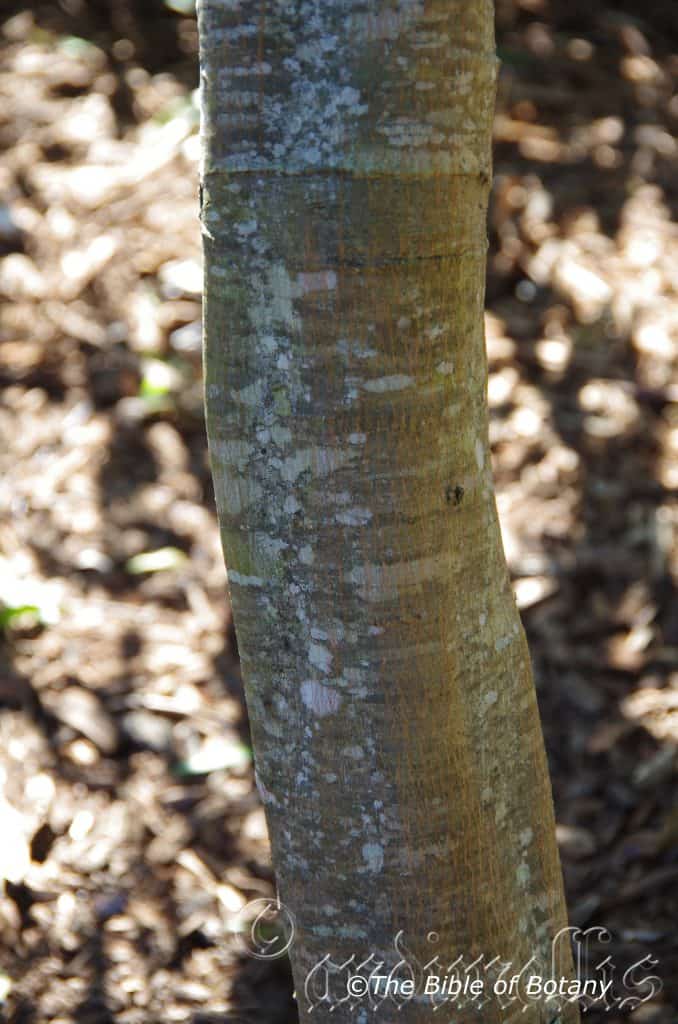
Rosser Gardens Benowa Qld.
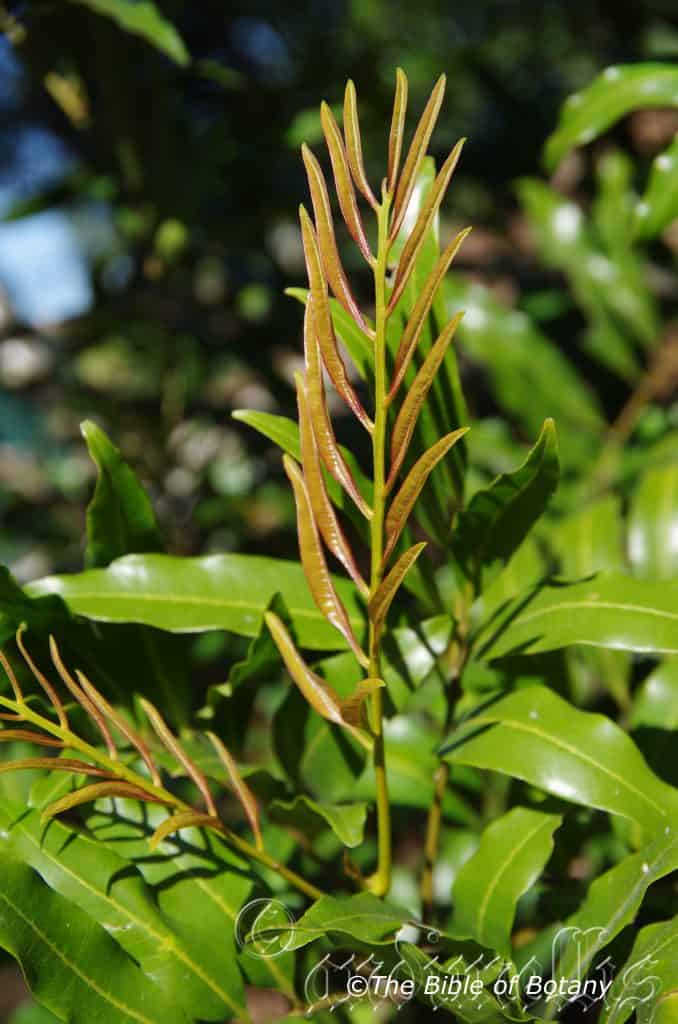
Rosser Gardens Benowa Qld.
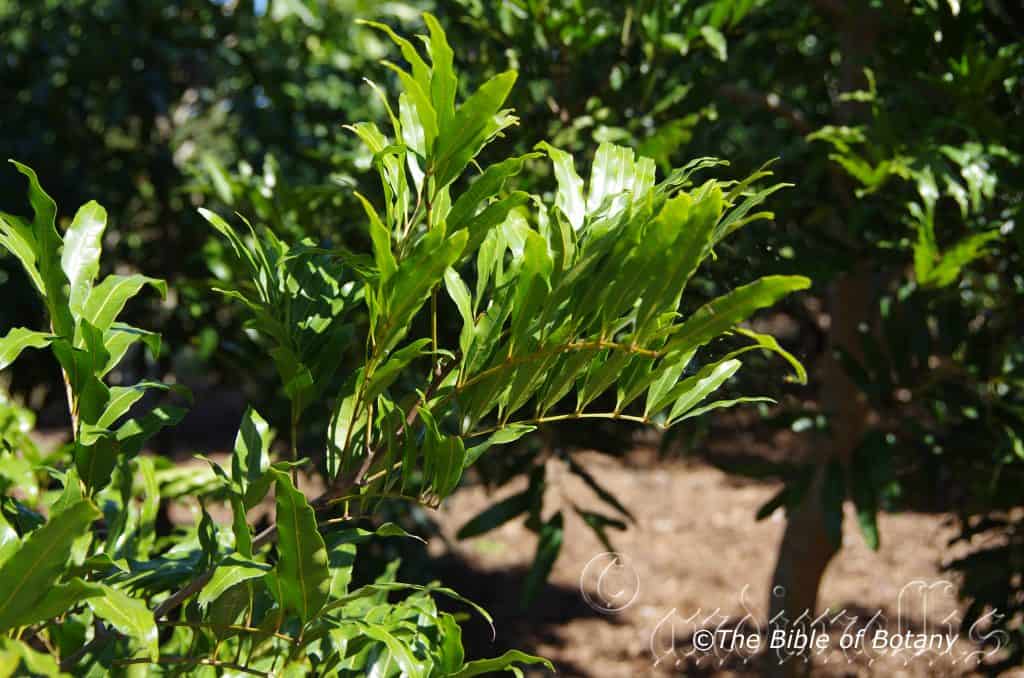
Rosser Gardens Benowa Qld.
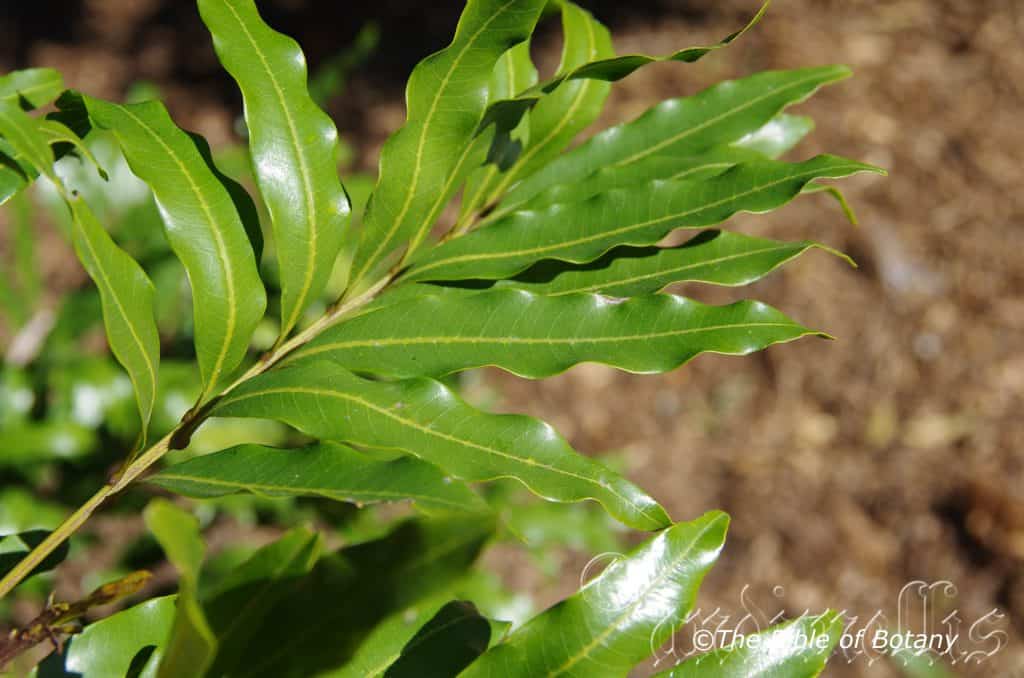
Rosser Gardens Benowa Qld.
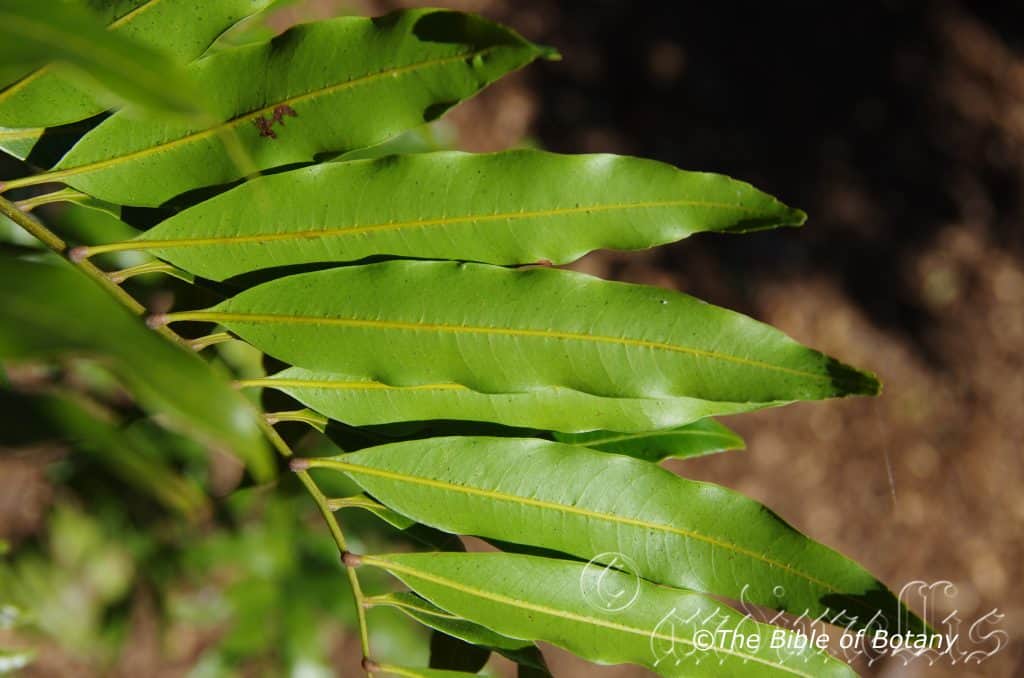
Rosser Gardens Benowa Qld.
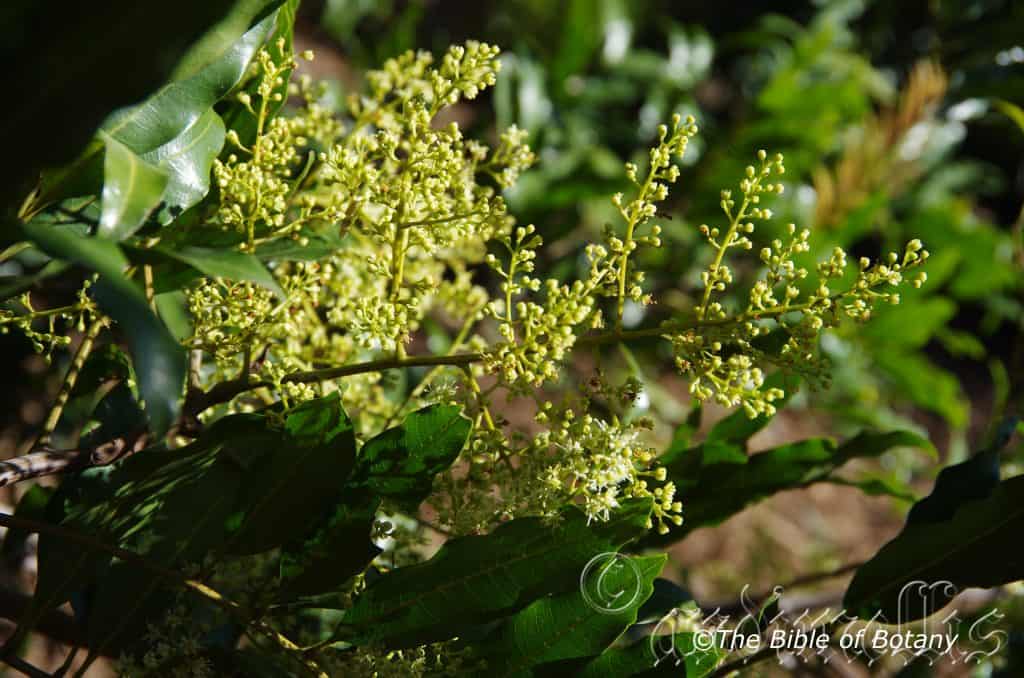
Rosser Gardens Benowa Qld.
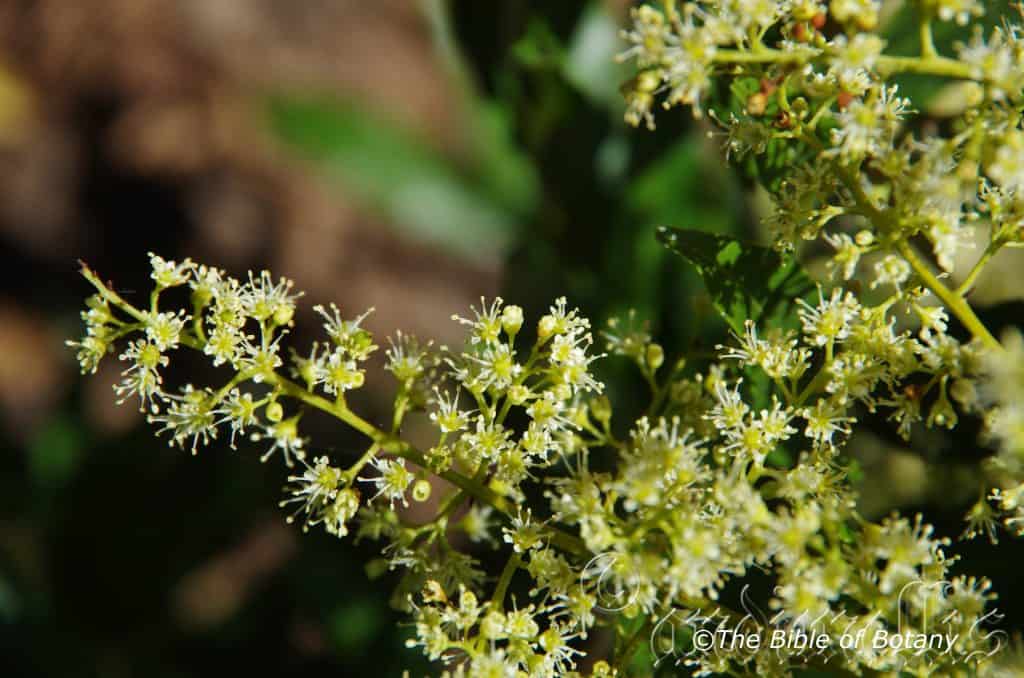
Rosser Gardens Benowa Qld.
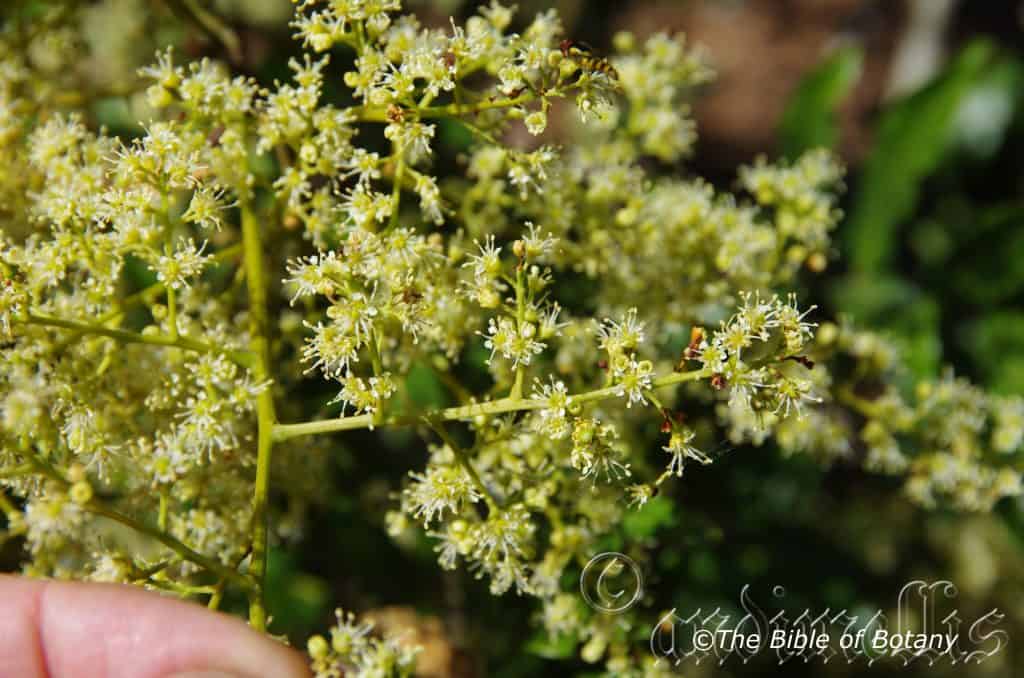
Rosser Gardens Benowa Qld.
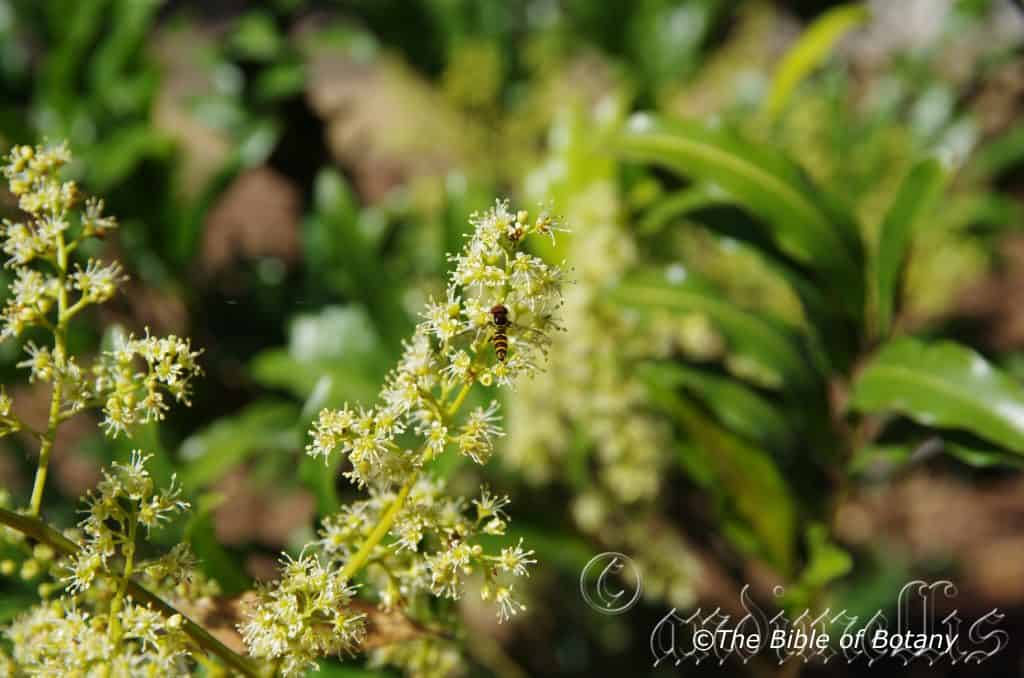
Mischarytera lauteriana
Classification:
Unranked: Eudicots
Unranked: Rosids
Order: Sapindales
Family: Sapindalaceae
Subfamily: Sapindoideae
Genus: From Mischos, which is Ancient Greek for a stalk, pedicel, petiole or stipe and Charytera, which maybe Latinized to mean charitable. If so it refers to the fruits on plants, which have very long pedicels that is have been charitable in receiving long strong pedicels.
Specie: From Lauter, which is Latinized for pure and clear and Ana, which is Latin for equal to. For a word that means pure and clear the reference here is unclear to me unless it refers to the clarity of the fruits.
Sub species:
Common Name: Corduroy Tamarind, Corduroy or Rose Tamarind.
Distribution:
Mischarytera lauteriana is found south from Mount Windsor Tableland in far north Queensland to the Brisbane River in far south east Queensland. It is mainly found on and east of the Great Dividing Range to the coast. https://avh.ala.org.au/occurrences/search?taxa=Mischocarpus+lauteriana#tab_mapView
Habitat Aspect Climate:
Mischarytera lauteriana prefers light dappled shade to full sun. It grows in in well developed upland and mountain rain forest. The altitude ranges from 600 meter ASL to 1200 meters ASL.
The temperatures range from 1 degree in August to 36 degrees in January.
The rainfall ranges from lows of 750mm to an average of 3200mm.
Soil Requirements:
Mischarytera lauteriana prefers better quality sandy loams to medium clays. The soils are rich in leaf litter and are usually derived from decomposed brown basalts, black basalts, metamorphic rocks or shales. The soils pH ranges from 5pH to 7pH. It does not tolerate waterlogged soils however moisture retentive soils are preferred. Non saline soils to slightly saline soils are tolerated.
Height & Spread:
Wild Plants: 10m to 12m by 8m to 12m.
Characteristics:
Mischarytera lauteriana grows as a medium tree with a greyish smooth, glabrous or at times mildly corrugated and usually covered in lichens on the trunk. Leaf bearing twigs are longitudinally grooved. The young branchlets are pale grey and glabrous. The young stems and new shoots are deep maroon to deep red, smooth and glabrous.
Mischarytera lauteriana’s alternate, pinnate leaves have 10 to 16 alternate leaflets which are elliptic to oblong and measure 50mm to 150mm in length by 15mm to 30mm in width. The petioles rachise and petiolules are pale green and glabrous. The petiole and rhachis have a median ridge with a groove either side on the upper surface. The petiole measures 30mm to 60mm while the terete petiolules measure 2mm to 6mm in length. The petiolules are swollen where they are attached to the rachis. The bases taper to the petiole, while the apexes are narrow acute. The discolourous laminas are deep green, glossy and glabrous on the upper lamina, while the lower lamina is paler and dull. The laminas are undulating and gently decurve downwards on the apical half while the margins are entire. The pale yellowish-green mid vein is prominent on the upper lamina and is more prominent on the lower lamina. The lateral veins are prominent adjacent to the mid vein and are distinctly visible on both laminas. The domatia are small foveoles that can be seen at the apical junction of the lateral veins and main vein.
The inflorescence of Mischarytera lauteriana are born on loose, racemes within a panicle from the terminals. The peduncles rachises and pedicels are pale green and glabrous. The pedicels measures 2mm to 3mm in length. The cupular pale yellowish hypanthium measure 0.5mm to 1mm in length by 1.5mm to 2.5mm in diameter. The hypanthia’s lobes are pale yellowish-green and measure 1mm to 1.2mm in length. The white, clawed petals measure 1mm to 1.5mm in length.
The 8 white filaments are sparsely covered in short, white hirtellus hairs and measure 2.5mm to 2.8mm in length. The pale yellow dorsifixed anthers are glabrous and dehisce longitudinally.
The ovary is sparsely covered in short white hirtellus hairs. The flowers appear from early August to mid September.
Mischarytera lauteriana’s fruits are glabrous, compressed, globose to obovoidal capsules. The thin, green shelled capsules measure 10mm to 20mm in length by 12mm to 40mm in diameter. The capsules dehisce irregularly to reveal the bright yellow-orange to reddish–orange aril surrounding the seeds.
Wildlife:
Mischarytera lauteriana’s fruits are eaten by the Lewin’s Honeyeater and probably other specie of medium to large size honeyeaters and pigeons as well. The ring tail possum has been seen eating the fruit so I would suspect the larger brush tail possum would also consume the fruits and flowers.
The aril surrounding the seeds is edible but personally one needs to be very hungry to enjoy them.
Cultivation:
Mischarytera lauteriana is a fairly slow growing plant which is worthwhile growing for the beautiful fragrance of its flowers which is sweet but not overpowering. It makes an excellent medium size tree for a park like scene or specimen tree in the garden. They always look green and fresh especially where adequate ground moisture is retained whether it is grown in light shade or full sun. It is very suitable on sandy clay soils. It is most suitable for small, medium and large gardens close to the coast in temperate, sub-tropical or tropical gardens. As garden subjects they will grow from 12m to 16m in height by 8m to 10m in diameter when grown in the open.
It is cold tolerant to temperatures at least as low as minus 2 degrees once established. They should be protected until they reach at least 2 meters in height.
It is best used adjacent to small areas of bush close to paths or the house where they make a great small avenue or park tree for smaller properties. They can be planted in small groups of 2 or 3 to enhance their appearance and make the area look larger than it really is.
It can be used as small shade trees in semi protected areas and are an excellent tree for starting a dry rainforest garden. When planting the trees in a rainforest try to place them in the center with other smaller dry rainforest trees.
If mild native fertilizers are used they will develop quickly after 3 or 4 years of stabilizing themselves.
It is useful as a backdrop small tree contrasting with smaller finer leaf shrubs that are planted in the foreground. Grey foliage plants contrast beautifully with the green leaves.
Propagation:
Seeds: Mischarytera lauteriana fresh seeds can be sown directly into a seed raising mix. Cover the seeds with 2mm to 6mm of fine weed free mulch and keep moist. Place the tray in a warm sunny position. When the seedlings are 30mm to 50mm tall, prick them out and plant them into 50mm native tubes using a good organic mix. Old seed will germinate over several months and is erratic even from the same tree.
Once the seedlings reach 100mm to 150mm in height they can be planted out into their permanent position. Group plantings of three to five trees are particularly attractive and will give a good canopy in years to come and can be planted at 8 meter centers for a rainforest look or 12meter to 16 meters for a park like scenario.
Fertilize using seaweed, fish emulsion or organic chicken pellets soaked in water on an alternate basis. Fertilize every two months until the plants are established then twice annually in early September and March to maintain better health, vitality and flowering.
Further Comments from Readers:
Hi reader, it seems you use The Bible of Botany a lot. That’s great as we have great pleasure in bringing it to you! It’s a little awkward for us to ask, but our first aim is to purchase land approximately 1,600 hectares to link several parcels of N.P. into one at The Pinnacles NSW Australia, but we need your help. We’re not salespeople. We’re amateur botanists who have dedicated over 30 years to saving the environment in a practical way. We depend on donations to reach our goal. If you donate just $5, the price of your coffee this Sunday, We can help to keep the planet alive in a real way and continue to bring you regular updates and features on Australian plants all in one Botanical Bible. Any support is greatly appreciated. Thank you.
In the spirit of reconciliation we acknowledge the Bundjalung, Gumbaynggirr and Yaegl and all aboriginal nations throughout Australia and their connections to land, sea and community. We pay our respect to their Elders past, present and future for the pleasures we have gained.
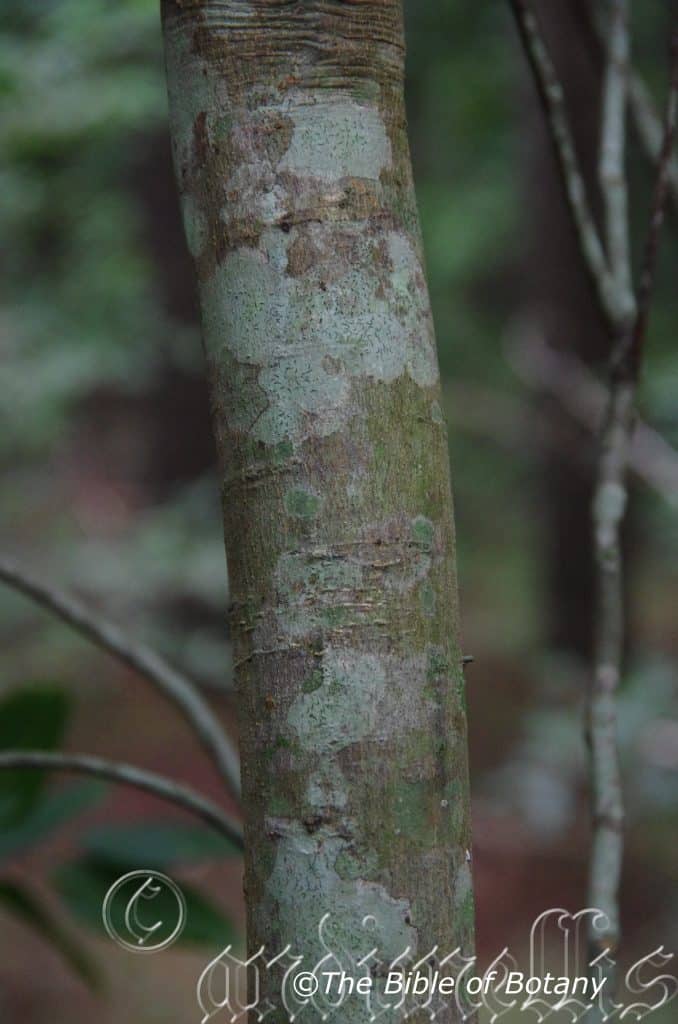
LBG Lismore NSW
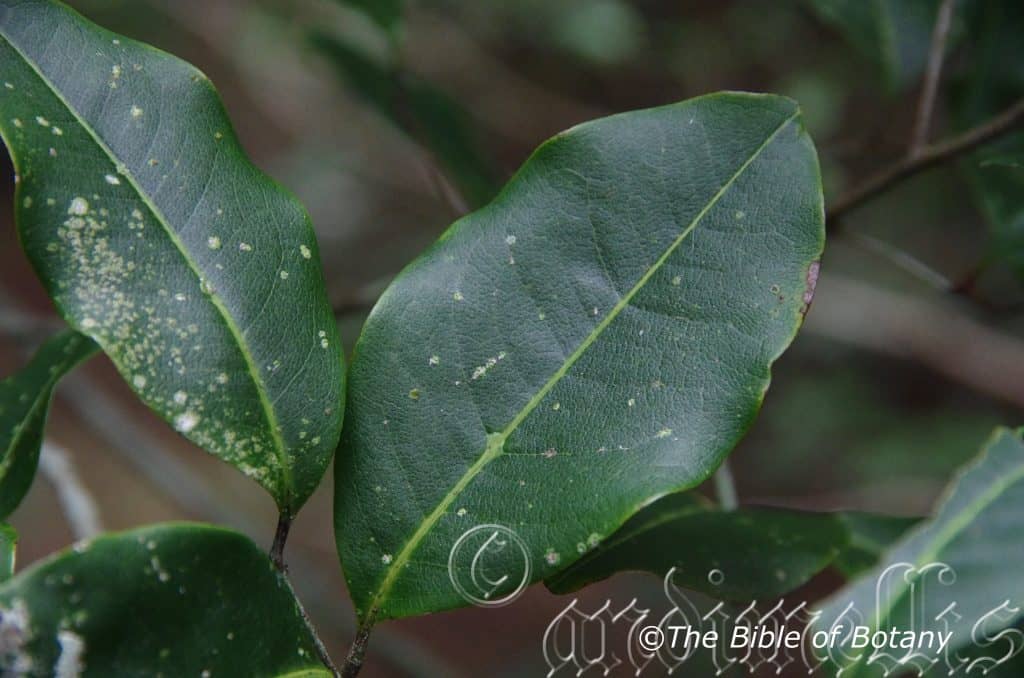
LBG Lismore NSW
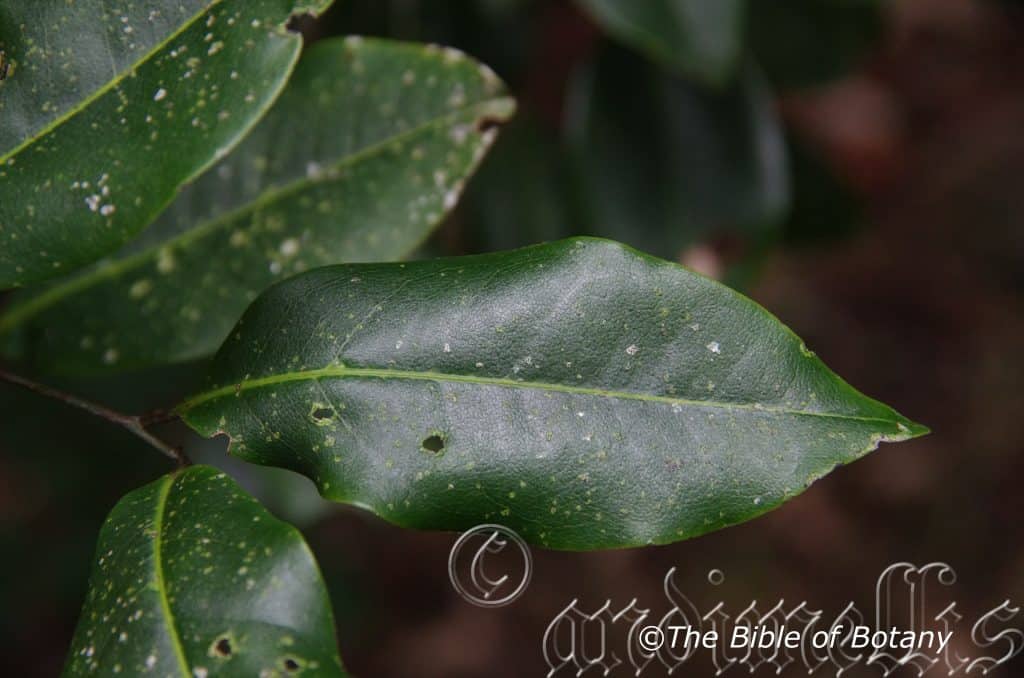
LBG Lismore NSW
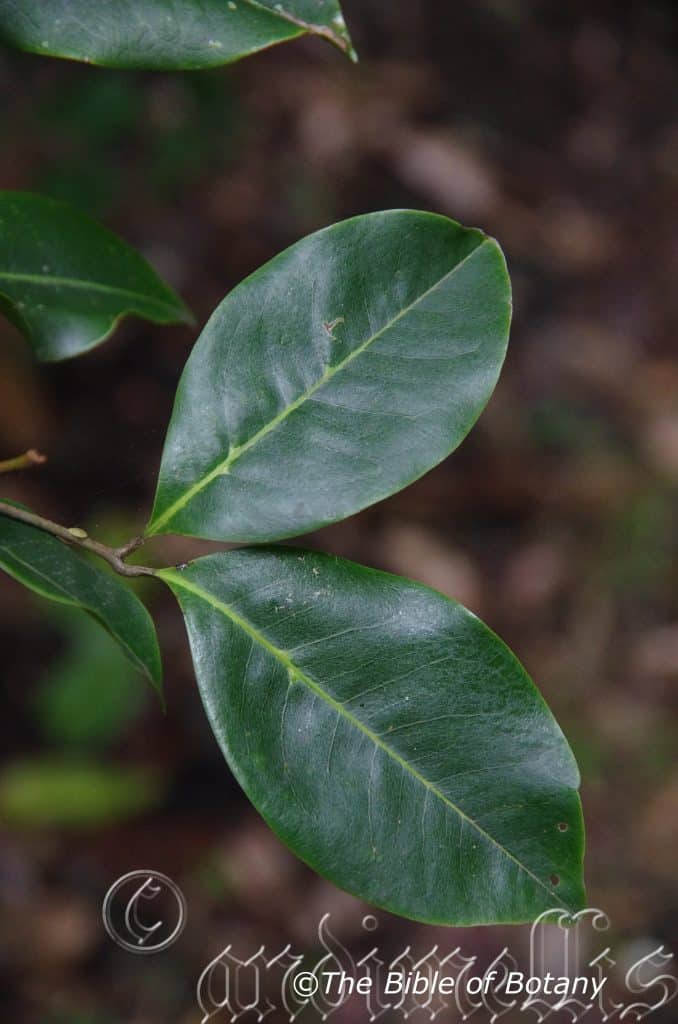
LBG Lismore NSW
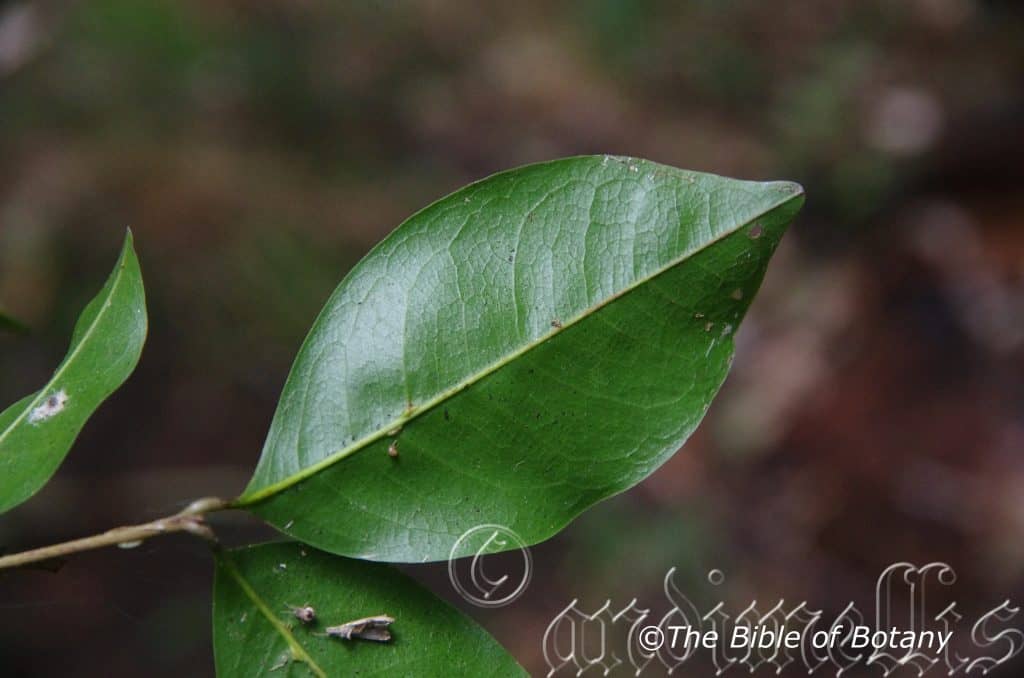
LBG Lismore NSW
Mischocarpus anodontus
Classification:
Unranked: Angiosperms
Unranked: Eudicots
Unranked: Rosids
Order: Sapindales
Family: Sapindalaceae
Subfamily: Sapindoideae
Genus: From Mischos, which is Ancient Greek for a stalk pedicel, petiole or stipe and Karpós, which is Ancient Greek for a fruit. It refers to fruits, which have a definite stalk which leads or tapers from the pedicel.
Specie: From A, which is Greek/Latin for without or not having and Dontos/Odontos, which is Ancient Greek for a tooth or teeth. It refers to leaf margins, which are entire.
Sub species:
Common Name:
Distribution:
Mischocarpus anodontus is found south from Mount Windsor Tableland in far north Queensland to the Brisbane River in far south east Queensland. It is mainly found on and east of the Great Dividing Range to the coast.
https://avh.ala.org.au/occurrences/search?taxa=Mischocarpus+anodontus#tab_mapView
Habitat Aspect Climate:
Mischocarpus anodontus prefers light dappled shade to full sun. It grows in dry rainforests or drier littoral rainforest. The altitude ranges from 1100 meter ASL to 1160 meters ASL.
The temperatures range from 1 degree in August to 36 degrees in January.
The rainfall ranges from lows of 1000mm to an average of 3200mm.
Soil Requirements:
Mischocarpus anodontus prefers better quality sandy loams to medium clays. The soils are usually derived from decomposed brown basalts, black basalts, metamorphic rocks, shales, or at times accumulated beach sands. The soils pH ranges from 5pH to 6.5pH. It does not tolerate waterlogged soils. Non saline soils to moderately saline soils are tolerated.
Height & Spread:
Wild Plants: 12m to 18m by 8m to 12m.
Characteristics:
Mischocarpus anodontus grows as a medium tree with a brownish smooth, glabrous or with some pustules on the trunk. The young stems are mid brown and glabrous. The branchlets and new shoots are pale yellow-green, glabrous to sparsely covered in short, white caducous, puberulent hairs.
The alternate, pinnate leaves measure 50mm to 150mm in length. There are 2 or 4 opposite leaflets which are elliptic to obovate and measure 40mm to 100mm in length by 20mm to 50mm in width. The petioles rachise and petiolules are pale greenish-yellow and glabrous. The petiole measures 10mm to 60mm while the rachise measures 6mm to 40mm in length and the petiolules measure 5mm to 10mm. The bases are broad rounded to attenuate while the apexes are obtuse to broad acute. The discolourous laminas are deep green to sea-green, dull and glabrous while the lower lamina is much paler. The laminas are undulating and gently decurve downwards on the apical half while the margins are entire. The pale yellowish-green mid vein is strongly prominent on the lower lamina and is distinctly visible on the upper lamina. The lateral veins are distinctly visible on both laminas. The venation is finely reticulate. There are 1 to 3 prominent domatia on most leaflets.
The monoecious or dioecious inflorescence of Mischocarpus anodontus are born in loose, raceme like cylindrical panicles from the leaf axils. There are 20 to 40 individual flowers on a panicle. The peduncles rachises and pedicels are pale green and covered in fine white puberulent hairs. The peduncles measure 5mm to 15mm in length while the rachises measure 45mm to 100mm in length and the pedicels measures 2mm to 3mm in length.
The cupular pale green hypanthium measure 2mm to 2.5mm in length. The hypanthia’s lobes pale green measure 1mm to 1.2mm in length. The annular disc is glabrous.
The 8 white stamens measure 1.5mm to 3.5mm in length while the spherical anthers are cream. The white pistil measures 3mm to 4mm in length. The flowers appear from mid February to the end of April.
The fruits are glabrous depressed globose, obovoidal to pyriform capsules. The green capsules turn bright yellow to yellow-orange with thick woody valves when ripe. The 3 ribbed capsules measure 20mm to 30mm in length by 10mm to 20mm in diameter. The capsules are glabrous externally and densely covered in long white, villous hairs internally. The glabrous yellowish-green pedicels measure 8mm to 15mm in length. The dehiscing capsules split to reveal the glossy brown seeds which are completely covered in a deep carmine-pink, scarlet-red to purple aril.
The ovoid-elliptical seeds are brown, glabrous, semi glossy and measures 9mm to 10mm in length by 7mm to 9mm in diameter.
Wildlife:
Mischocarpus anodontus’s fruits are eaten by the Lewin’s Honeyeater and probably other specie of medium to large size honeyeaters and pigeons as well. The ring tail possum has been seen eating the fruit so I would suspect the larger brush tail possum would also consume the fruits and flowers.
The aril surrounding the seeds is edible but personally one needs to be very hungry to enjoy them.
Cultivation:
Mischocarpus anodontus is a fairly slow growing plant which is worthwhile growing for the beautiful fragrance of its flowers which is sweet but not overpowering. It makes an excellent medium size tree for a park like scene or specimen tree in the garden. They always look green and fresh especially where adequate ground moisture is retained whether it is grown in light shade or full sun. It is very suitable on sandy clay soils. It is most suitable for small, medium and large gardens close to the coast in temperate, sub-tropical or tropical gardens. As garden subjects they will grow from 12m to 16m in height by 8m to 10m in diameter when grown in the open.
It is cold tolerant to temperatures at least as low as minus 2 degrees once established. They should be protected until they reach at least 2 meters in height.
It is best used adjacent to small areas of bush close to paths or the house where they make a great small avenue or park tree for smaller properties. They can be planted in small groups of 2 or 3 to enhance their appearance and make the area look larger than it really is.
It can be used as small shade trees in semi protected areas and are an excellent tree for starting a dry rainforest garden. When planting the trees in a rainforest try to place them in the center with other smaller dry rainforest trees.
If mild native fertilizers are used they will develop quickly after 3 or 4 years of stabilizing themselves.
It is useful as a backdrop small tree contrasting with smaller finer leaf shrubs that are planted in the foreground. Grey foliage plants contrast beautifully with the green leaves.
Propagation:
Seeds: Mischocarpus anodontus fresh seeds can be sown directly into a seed raising mix in 50mm native tubes. Cover the seeds with 5mm to 10mm of fine weed free mulch and keep moist and keep moist. Place the tubes in a warm sunny position. When the seedlings are 120mm to 180mm tall they can be planted out into prepared holes or repotted into 250mm pots, using a good organic mix.
Old seed will germinate over several months and is erratic even from the same tree.
Fertilize using seaweed, fish emulsion or organic chicken pellets soaked in water on an alternate basis. Fertilize every two months until the plants are established then twice annually in early September and March to maintain better health, vitality and flowering.
Further Comments from Readers:
Hi reader, it seems you use The Bible of Botany a lot. That’s great as we have great pleasure in bringing it to you! It’s a little awkward for us to ask, but our first aim is to purchase land approximately 1,600 hectares to link several parcels of N.P. into one at The Pinnacles NSW Australia, but we need your help. We’re not salespeople. We’re amateur botanists who have dedicated over 30 years to saving the environment in a practical way. We depend on donations to reach our goal. If you donate just $5, the price of your coffee this Sunday, We can help to keep the planet alive in a real way and continue to bring you regular updates and features on Australian plants all in one Botanical Bible. Any support is greatly appreciated. Thank you.
In the spirit of reconciliation we acknowledge the Bundjalung, Gumbaynggirr and Yaegl and all aboriginal nations throughout Australia and their connections to land, sea and community. We pay our respect to their Elders past, present and future for the pleasures we have gained.
Mischocarpus australis
Classification:
Unranked: Angiosperms
Unranked: Eudicots
Unranked: Rosids
Order: Sapindales
Family: Sapindalaceae
Genus: From Mischos, which is Ancient Greek for a stalk pedicel, petiole or stipe and Karpós, which is Ancient Greek for a fruit. It refers to fruits, which have a definite stalk which leads or tapers from the pedicel.
Specie: From Terra Australis, which is Latin for land of the south. It refers to plants, which were first discovered from the land down under.
Sub species:
Common Name:
Distribution:
Mischocarpus australis is found south from the Great Sandy National Park in central coastal Queensland to Newcastle in central coastal New South Wales on the eastern side of the Great Dividing Range.
https://avh.ala.org.au/occurrences/search?taxa=Mischocarpus+australis#tab_mapView
Habitat Aspect Climate:
Mischocarpus australis prefers light dappled shade to full sun. It grows in openings along dry and seasonal creeks and streams, gullies and troughs in moist subtropical rainforests, moist cool rainforests or at times in moist littoral rainforest. The altitude ranges from 60 meter ASL to 860 meters ASL.
The temperatures range from minus 3 degrees in August to 36 degrees in January.
The rainfall ranges from lows of 1000mm to an average of 2100mm.
Soil Requirements:
Mischocarpus australis prefers better quality sandy loams to light medium clays. The soils are usually derived from decomposed brown basalts or black basalts close to the parent rock. The soils pH ranges from 5pH to 6pH. It does not tolerate waterlogged soils. Non saline soils to moderately saline soils are tolerated.
Height & Spread:
Wild Plants: 15m to 28m by 10m to 15m.
Characteristics:
The trunk is pale fawnish to pale brownish-grey, smooth and glabrous with distinct, disjunct horizontal raised rings. The young stems are fawnish and glabrous. The branchlets and new shoots are deep olive-green to olive -brown, glabrous to sparsely covered in short, white caducous, puberulent hairs.
The pinnate leaves measure 80mm to 200mm in length. There are 2 or 4 nearly opposite to closely alternate leaflets are elliptic-oblong to ovate-oblong and measure 50mm to 120mm in length by 20mm to 40mm in width. The petioles rachise and petiolules are pale greenish-yellow and glabrous. The petiole measures 10mm to 40mm while the rachise measures 12mm to 50mm in length and the petiolules measure 2mm to 8mm. The bases taper to the petiolules while the apexes are obtuse to broad acute. The discolourous laminas are deep green to sea-green, semi glossy and glabrous while the lower laminas are paler and dull. The laminas are flat or undulating and gently recurve upwards from the midvein to the margins and decurve downwards on the apical quarter. The margins are entire. The pale yellowish-green mid vein is strongly prominent on the lower lamina and is distinctly visible on the upper lamina. The lateral veins are distinctly prominent on the lower lamina and faintly visible on the upper lamina. The venation is finely reticulate. The domatia are absent or inconspicuous.
The monoecious or dioecious inflorescence of Mischocarpus australis are born in loose, raceme like cylindrical panicles from the leaf axils. There are 20 to 40 individual flowers on a panicle. The persistent bracts measure 2mm to 4mm in length.The peduncles rachises and pedicels are pale green and covered in fine white puberulent hairs. The peduncles measure 5mm to 14mm in length while the rachises measure 45mm to 90mm in length and the pedicels measures 2mm to 4mm in length.
The cupular pale green hypanthium is covered in white puberulent hairs and measure 2mm to 3mm in length. The hypanthia’s lobes pale green measure 1.5mm to 2mm in length. The annular disc is glabrous.
The 8 white stamens measure 1.5mm to 3.5mm in length while the spherical anthers are cream. The white pistil measures 3mm to 4mm in length. The flowers appear from mid February to the end of April.
The fruits are glabrous pyriform to ellipsoidal slightly trigonous capsules. The green thick, coriaceous capsules turn reddish-orange to red and semi glossy when ripe. They measure 9mm to 14mm in length by 6mm to 8mm in diameter. The pedicels measure 3mm to 6mm in length. The dehiscing capsules split to reveal the glossy brown seeds which are almost completely covered in a scarlet-red to purplish-red aril.
The ovoid-elliptical seeds are brown, glabrous, semi glossy and measures 6mm to 8mm in length by 4mm to 5mm in diameter.
Wildlife:
Mischocarpus australis’s fruits are eaten by the Lewin’s Honeyeater and probably other specie of medium to large size honeyeaters and pigeons as well. The ring tail possum has been seen eating the fruit so I would suspect the larger brush tail possum would also consume the fruits and flowers.
The aril surrounding the seeds is edible but personally one needs to be very hungry to enjoy them.
Cultivation:
Mischocarpus australis is a fairly slow growing plant which is worthwhile growing for the beautiful fragrance of its flowers which is sweet but not overpowering. It makes an excellent medium size tree for a park like scene or specimen tree in the garden. They always look green and fresh especially where adequate ground moisture is retained whether it is grown in light shade or full sun. It is very suitable on sandy clay soils. It is most suitable for small, medium and large gardens close to the coast in temperate, sub-tropical or tropical gardens. As garden subjects they will grow from 12m to 20m in height by 6m to 12m in diameter when grown in the open.
It is cold tolerant to temperatures at least as low as minus 2 degrees once established. They should be protected until they reach at least 2 meters in height.
It is best used adjacent to small areas of bush close to paths or the house where they make a great small avenue or park tree for smaller properties. They can be planted in small groups of 2 or 3 to enhance their appearance and make the area look larger than it really is.
They can be used as small shade trees in semi protected areas and are an excellent tree for starting a dry rainforest garden. When planting the trees in a rainforest try to place them in the center with other smaller dry rainforest trees.
If mild native fertilizers are used they will develop quickly after 3 or 4 years of stabilizing themselves.
It is useful as a backdrop small tree contrasting with smaller finer leaf shrubs that are planted in the foreground. Grey foliage plants contrast beautifully with the green leaves.
Propagation:
Seeds: Mischocarpus australis fresh seeds can be sown directly into a seed raising mix in 50mm native tubes. Cover the seeds with 5mm to 10mm of fine weed free mulch and keep moist and keep moist. Place the tubes in a warm sunny position. When the seedlings are 120mm to 180mm tall they can be planted out into prepared holes or repotted into 250mm pots, using a good organic mix.
Old seed will lose viability with slower germinate over several months for seed that does remain viable.
Fertilize using seaweed, fish emulsion or organic chicken pellets soaked in water on an alternate basis. Fertilize every two months until the plants are established then twice annually in early September and March to maintain better health, vitality and flowering.
Further Comments from Readers:
Hi reader, it seems you use The Bible of Botany a lot. That’s great as we have great pleasure in bringing it to you! It’s a little awkward for us to ask, but our first aim is to purchase land approximately 1,600 hectares to link several parcels of N.P. into one at The Pinnacles NSW Australia, but we need your help. We’re not salespeople. We’re amateur botanists who have dedicated over 30 years to saving the environment in a practical way. We depend on donations to reach our goal. If you donate just $5, the price of your coffee this Sunday, We can help to keep the planet alive in a real way and continue to bring you regular updates and features on Australian plants all in one Botanical Bible. Any support is greatly appreciated. Thank you.
In the spirit of reconciliation we acknowledge the Bundjalung, Gumbaynggirr and Yaegl and all aboriginal nations throughout Australia and their connections to land, sea and community. We pay our respect to their Elders past, present and future for the pleasures we have gained.
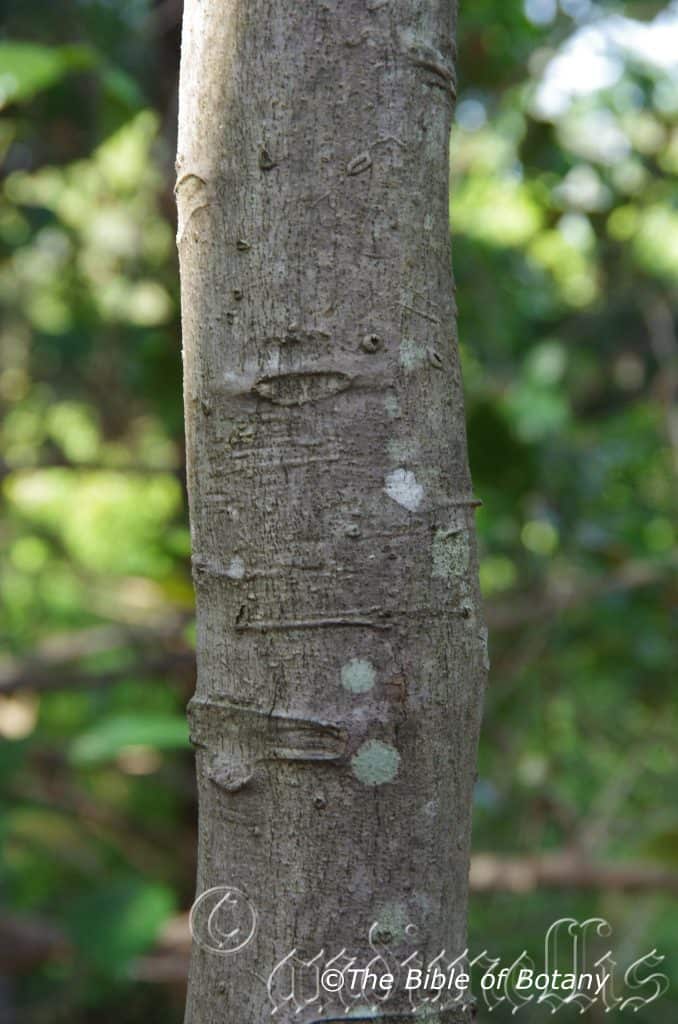
Mount Cootha Botanic Gardens Qld.
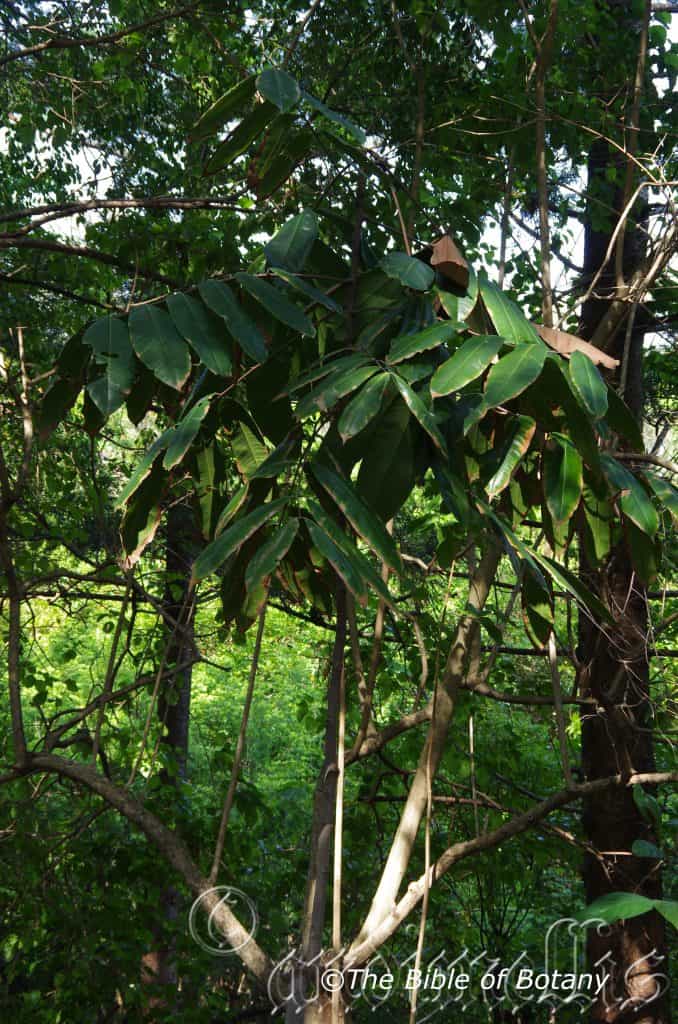
Mount Cootha Botanic Gardens Qld.
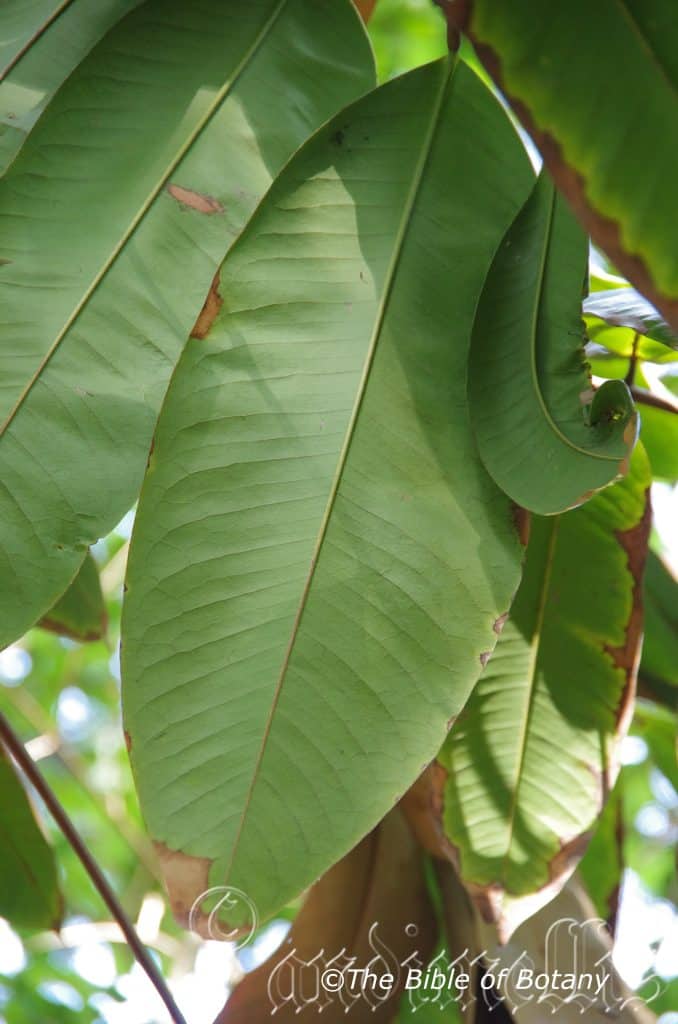
Mount Cootha Botanic Gardens Qld.
Mischocarpus grandissimus
Classification:
Unranked: Angiosperms
Unranked: Eudicots
Unranked: Rosids
Order: Sapindales
Family: Sapindalaceae
Genus: From Mischos, which is Ancient Greek for a stalk pedicel, petiole or stipe and Karpós, which is Ancient Greek for a fruit. It refers to fruits, which have a definite stalk which leads or tapers from the pedicel.
Specie: From Grandis, which is Latin for large, great, grandior or lofty, and Issimus, which is Latin for the surperlative. It refers to plants, which are the best looking tallest or most grandiose in the genus.
Sub specie:
Common Name: False Maple, Giant Leaved Tamarind or Large Leaf Mischocarp.
Distribution:
Mischocarpus grandissimus is found south from Monkhouse to Tinkle Creek in far north eastern Queensland. It is found on the Great Dividing Range.
https://avh.ala.org.au/occurrences/search?taxa=Mischocarpus+grandissimus#tab_mapView
Habitat Aspect Climate:
Mischocarpus grandissimus prefers light dappled shade to denser shady places in well-developed tropical rainforests and warm sub-tropical rainforests. It grows as an understory tree in well developed lowland and upland rain forest.
The altitude ranges from 5 meter ASL to 750 meters ASL.
The temperatures range from 3 degrees in August to 36 degrees in January.
The rainfall ranges from lows of 1250mm to an average of 3200mm.
Soil Requirements:
Mischocarpus grandissimus prefers better quality loams to light-medium clays. The soils are usually derived from decomposed brown basalts and black basalts close to the parent rock. The soils pH ranges from 5pH to 6pH. It does not tolerate waterlogged soils. Non saline soils to moderately saline soils are tolerated.
Height & Spread:
Wild Plants: 10m to 12m by 8m to 10m.
Characteristics:
The trunk is various shades of grey, basically smooth and glabrous with some horizontal leaf scars. The bole of the trunk is about a half the height on a mature tree cylindrical with some irregular fluting or flanging close to the ground. The branchlets are grey-green while the new shoots are deep green and glabrous or sparsely covered in pubescent hairs.
The alternate compound leaves measure 150mm to 600mm in length by 80mm to 200mm in width. There are 8 to 10 sub opposite leaflets are elliptic, oblong, subobovate or ovate-oblong and measure 25mm to 150mm in length by 20mm to 60mm in width. The brown petiolules are obviously swollen at the junction with its rachis, turning green near the junction with the leaf lamina. The petiole measures 180mm to 240mm in length, while the petiolules measure 8mm to 20mm in length. The base is broad cuneate to round-cuneate, while the apex is obtuse with an acuminate tip. The discolourous laminas are deep sea-green, dull to semi glossy and glabrous on the upper lamina, while the lower lamina is much paler. The immature leaves and newly emerging leaves are lime green and sparsely covered in rusty brown pubescent hairs. The margins are entire while the lamina curves downwards from the mid vein. The mid vein is strongly prominent on the lower lamina and is distinctly visible on the upper lamina. The lateral veins are prominent on the lower lamina and are visible on upper lamina and are set at 65 to 70 degrees and form an arch well away from the margin. The reticulation is dense and clearly visible on the lower lamina. The leaf bearing twigs are robust at more than 10mm in diameter and have a longitudinally groove on the upper side.
The inflorescence are born in a raceme within the panicle which develop axillary or are somewhat ramiflorous. The panicles measure 130m to 440mm in length. The panicles are glabrous. The cymules are sessile while the pedicels measure 2mm to 2.5mm in length. The calyx is deeply lobed, sparsely to moderately covered in in white, pubescent hairs and measure 2mm to 5mm in length. The elliptical to ovate petals are present or absent and measure 0mm to 3mm in length. The disk is lobed and glabrous.
The 8 white, erect stamins are sparsely covered in white, pilose hairs and measure 2.5mm to 3.5mm in length while the pale yellow oblong, dorsifixed anthers dehisce longitudinally.
The obovoid to ellipsoidalcapsules are glabrous, while the septa is sparsely covered in white villose hairs and measure 25mm to 40mm in length including the stipe by 12mm to 15mm in diameter. The pedicels measure 5mm to 10mm in length. The dehiscing capsules split irregularly to reveal the glossy orange aril, which completely surrounds the seeds.
The ovoidal to blunt elliptical seeds are brown, glabrous, semi glossy and measures 10mm to 20mm in length by 8mm to 10mm in diameter.
Wildlife:
Mischocarpus grandissimus’s flowers are visited by many different specie of butterflies, plus beetles, wasps and native bees.
The fruits are eaten by the Lewin’s Honeyeater and probably other medium size honeyeaters and fruitigrove pigeons as well.
The ring tail possum has been reported as eating the fruit and flowers so I would suspect the larger brush tail possum would also consume the fruits and flowers.
The aril surrounding the seeds is edible.
Cultivation:
Mischocarpus grandissimusis a fairly slow growing plant which is worthwhile growing for the beautiful fragrance of its flowers which are sweet but not overpowering. It makes an excellent medium size tree for a park like scene or specimen tree in the garden. It always looks green and fresh especially where adequate ground moisture is retained whether it is grown in light shade or full sun. It is very suitable on sandy clay soils. It is most suitable for small, medium and large gardens close to the coast in temperate, sub-tropical or tropical gardens. As a garden subject it will grow from 8m to 12m in height by 6m to 10m in diameter when grown in the open.
It is cold tolerant to temperatures at least as low as minus 2 degrees once established. It should be protected until it reaches at least 2 meters in height.
It is best used adjacent to small areas of bush close to paths or the house so the fragrance can radiate out and can be appreciated regularly. It can be planted in small groups of 2 or 3 to enhance its appearance.
It can be used as small shade trees in semi protected areas and are an excellent tree for starting a dry rainforest garden. When planting the trees in a rainforest try to place them in the center with other smaller dry rainforest trees so their scent lingers within the forest.
If mild native fertilizers are used it will develop quickly after 3 or 4 years following stabilisation.
In Native gardens it can be used for attracting butterflies, native bees, native flies or native beetles during flowering which are necessary for fertilization of the flowers.
It is useful as a backdrop small tree contrasting with smaller finer leaf shrubs that are planted in the foreground. Grey foliage plants contrast beautifully with the green leaves.
The trunks will develop the moss patterns at an early age and are most suitable for small epiphytic plants. Its biggest draw back is its slow growth in the initial years.
Propagation:
Seeds: Mischocarpus australis fresh seeds can be sown directly into a seed raising mix in 50mm native tubes. Cover the seeds with 5mm to 10mm of fine weed free mulch and keep moist and keep moist. Place the tubes in a warm sunny position. When the seedlings are 120mm to 180mm tall they can be planted out into prepared holes or repotted into 250mm pots, using a good organic mix.
Old seed will lose viability with slower germinate over several months for seed that does remain viable.
Fertilize using seaweed, fish emulsion or organic chicken pellets soaked in water on an alternate basis. Fertilize every two months until the plants are established then twice annually in early September and March to maintain better health, vitality and flowering.
Further Comments from Readers:
Hi reader, it seems you use The Bible of Botany a lot. That’s great as we have great pleasure in bringing it to you! It’s a little awkward for us to ask, but our first aim is to purchase land approximately 1,600 hectares to link several parcels of N.P. into one at The Pinnacles NSW Australia, but we need your help. We’re not salespeople. We’re amateur botanists who have dedicated over 30 years to saving the environment in a practical way. We depend on donations to reach our goal. If you donate just $5, the price of your coffee this Sunday, We can help to keep the planet alive in a real way and continue to bring you regular updates and features on Australian plants all in one Botanical Bible. Any support is greatly appreciated. Thank you.
In the spirit of reconciliation we acknowledge the Bundjalung, Gumbaynggirr and Yaegl and all aboriginal nations throughout Australia and their connections to land, sea and community. We pay our respect to their Elders past, present and future for the pleasures we have gained.
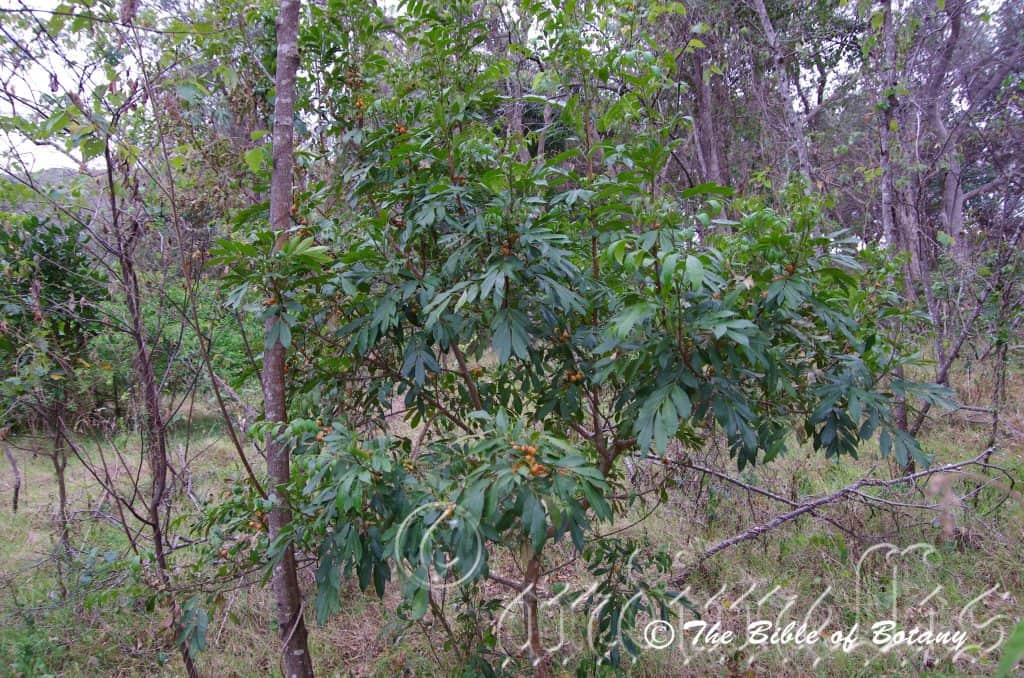
Innes Lake National Park NSW
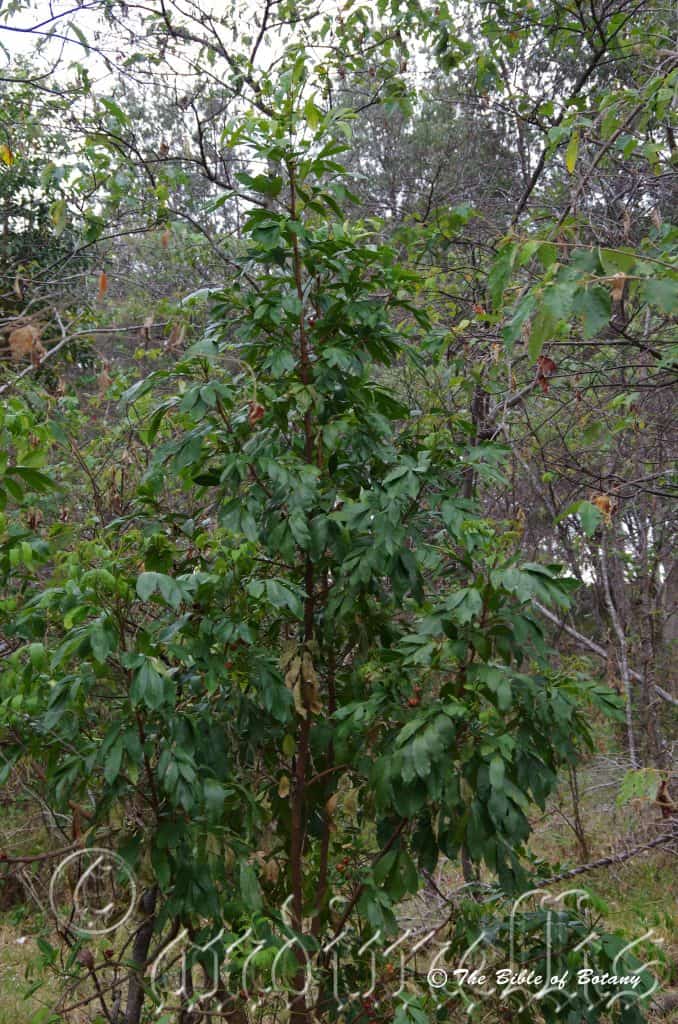
Innes Lake National Park NSW
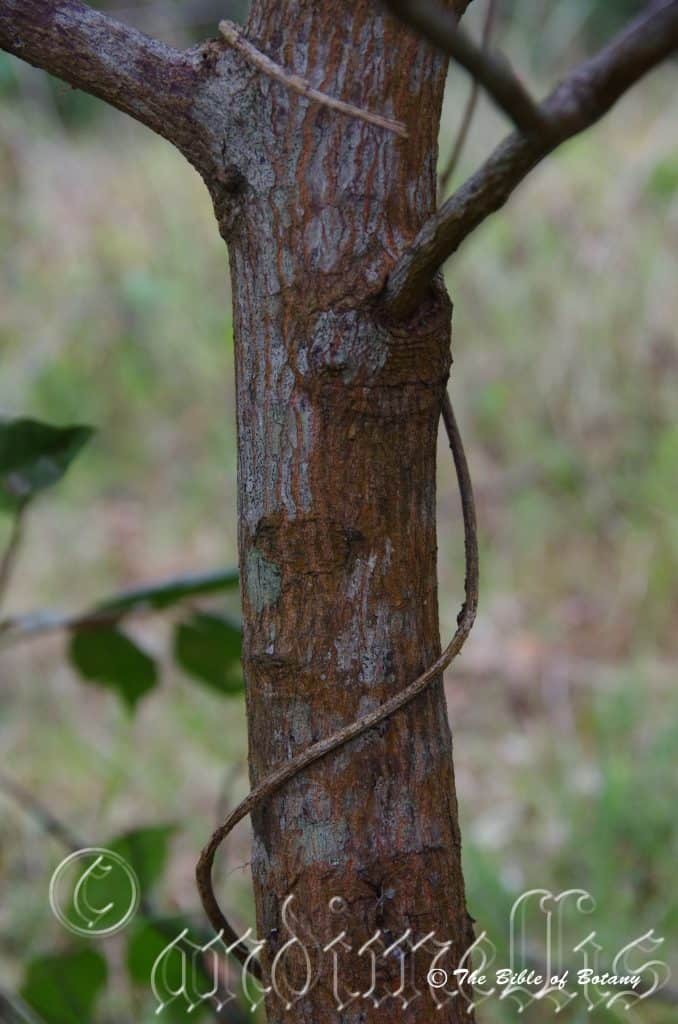
Innes Lake National Park NSW
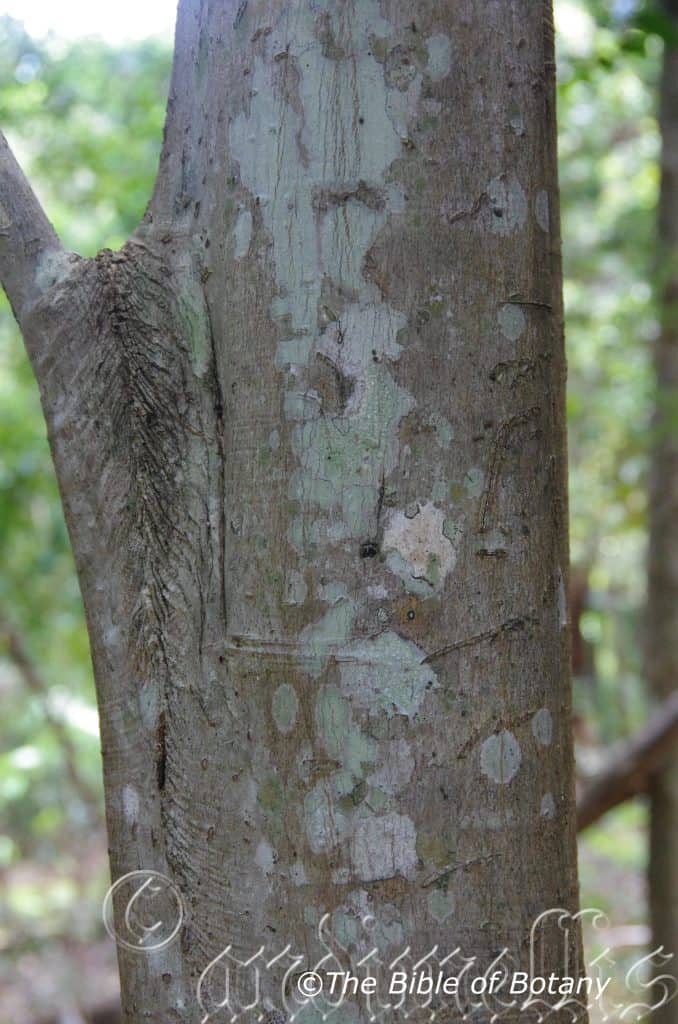
Innes Lake National Park NSW
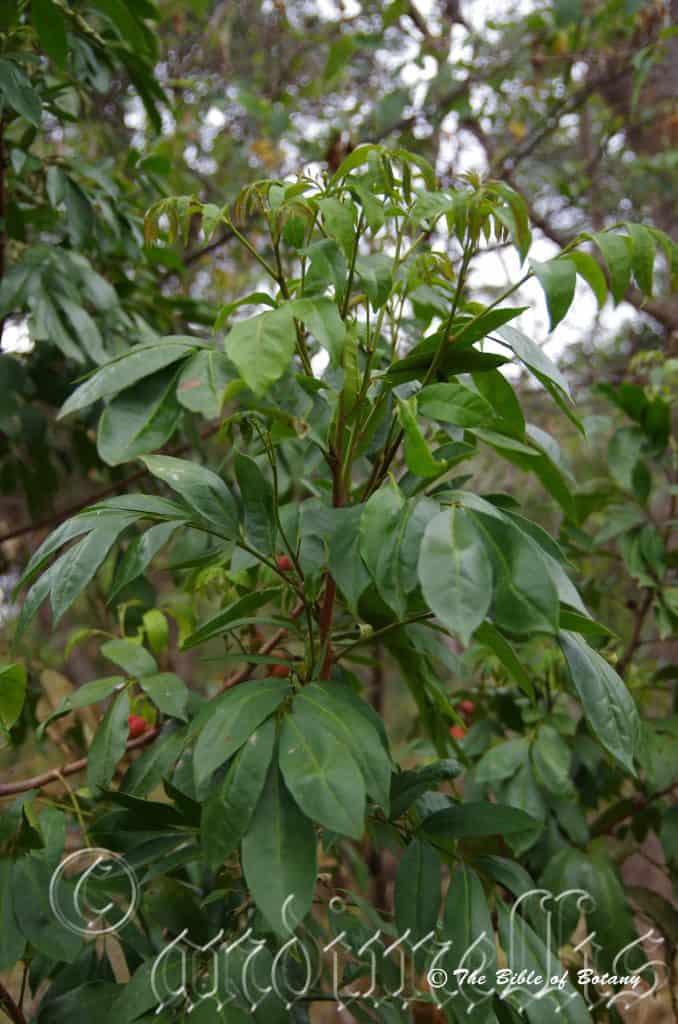
Innes Lake National Park NSW
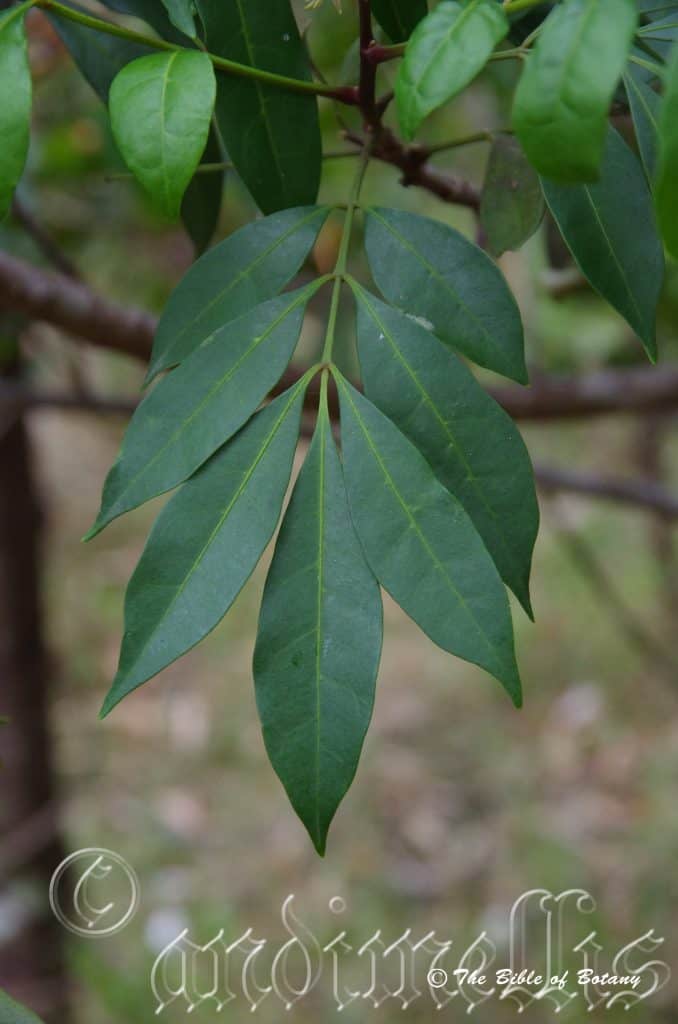
Innes Lake National Park NSW
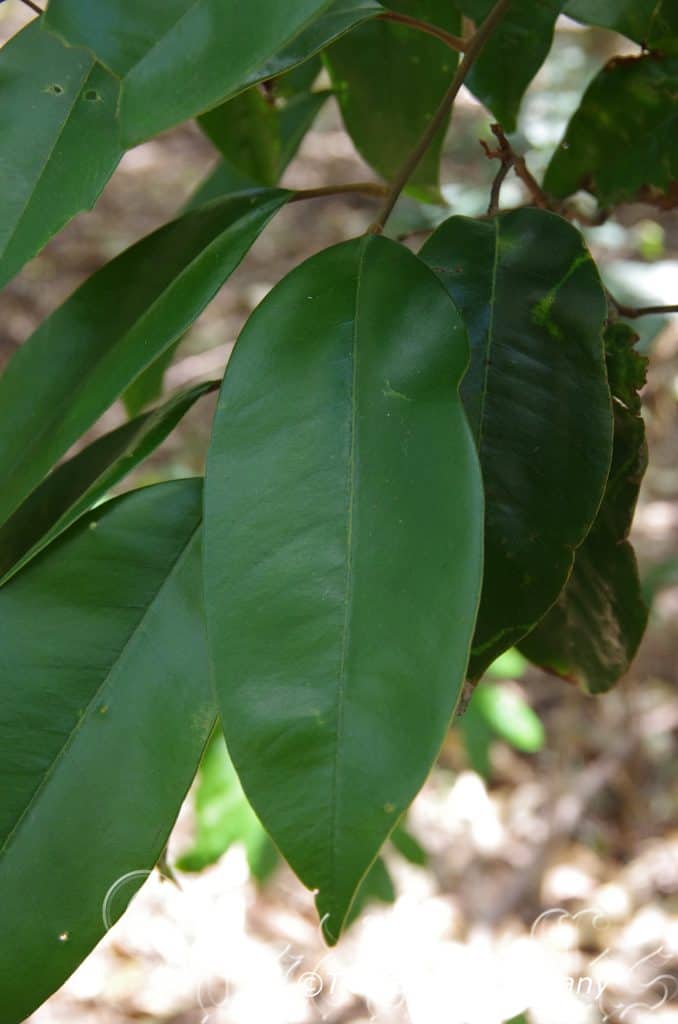
NCBG Coffs Harbour NSW
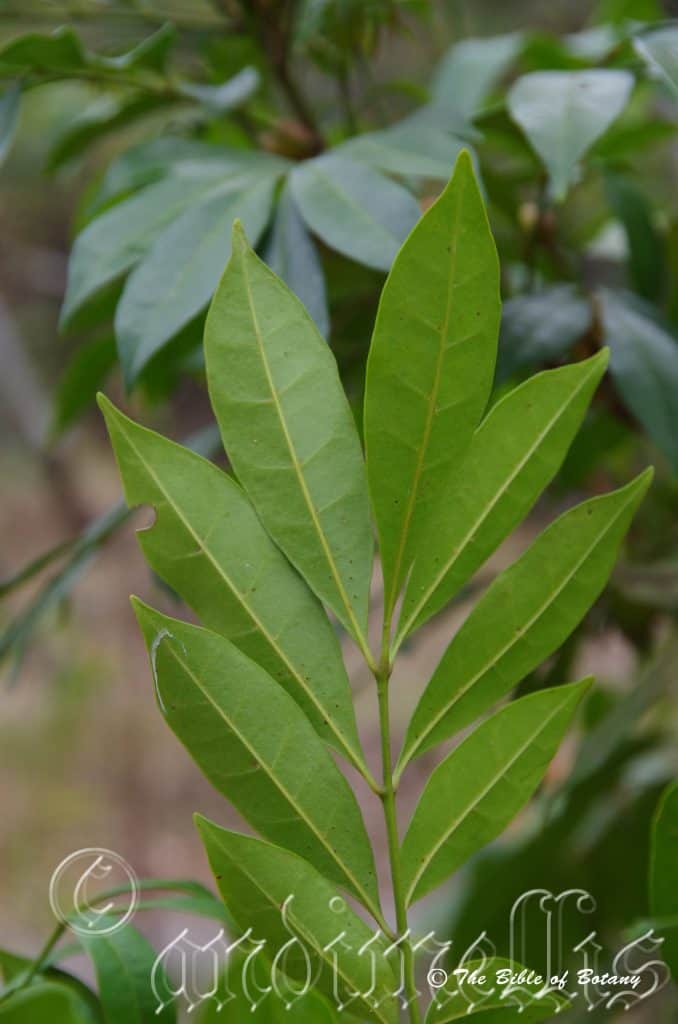
Innes Lake National Park NSW
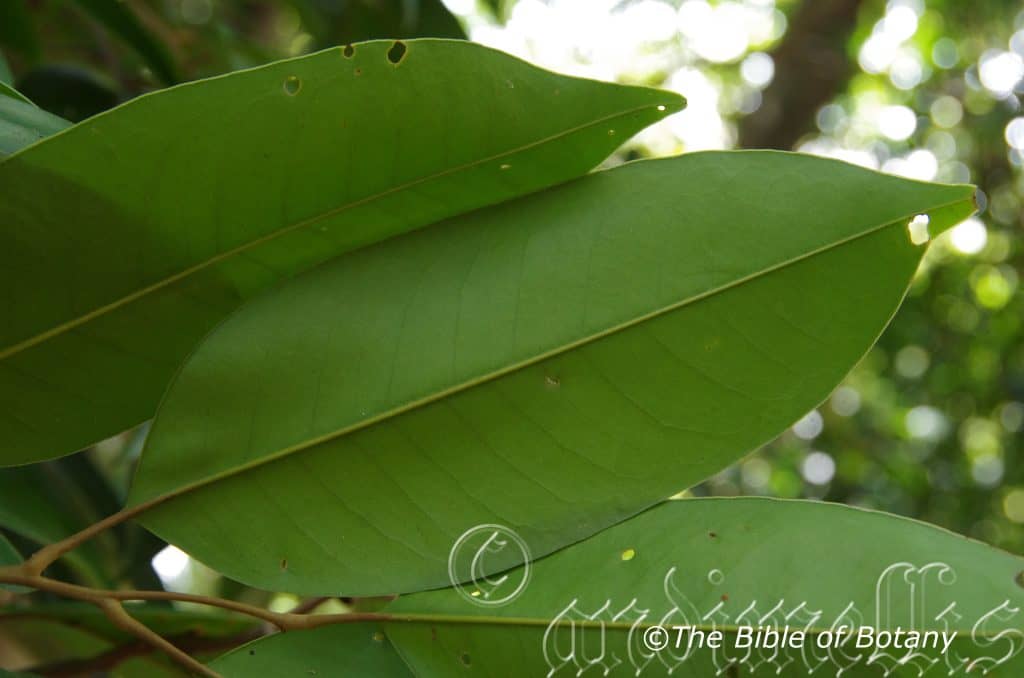
NCBG Coffs Harbour NSW
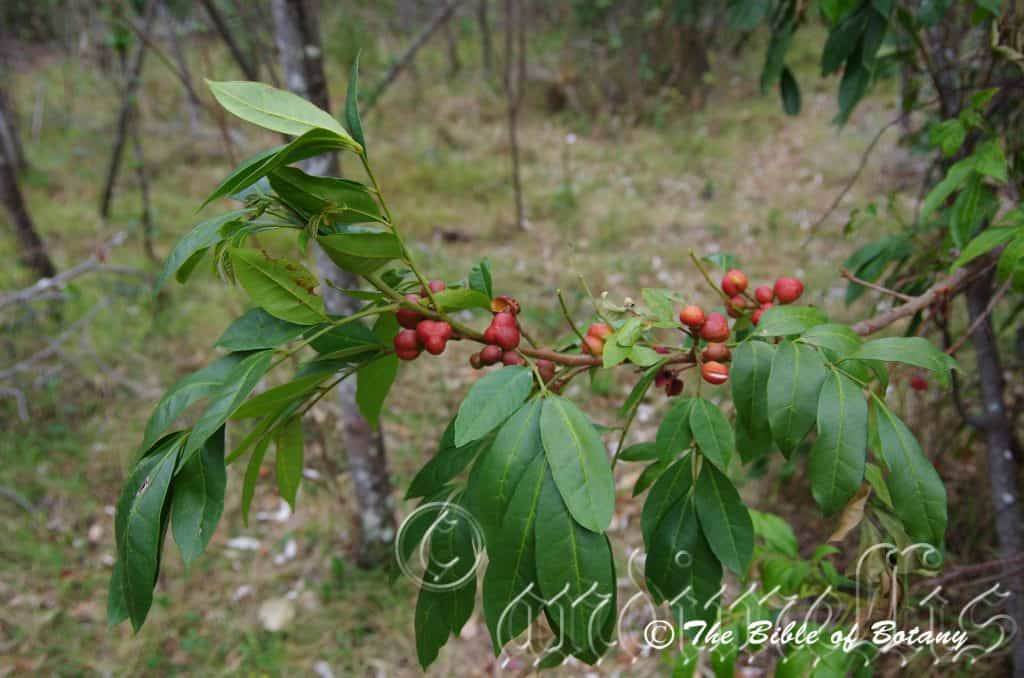
Innes Lake National Park NSW

Innes Lake National Park NSW
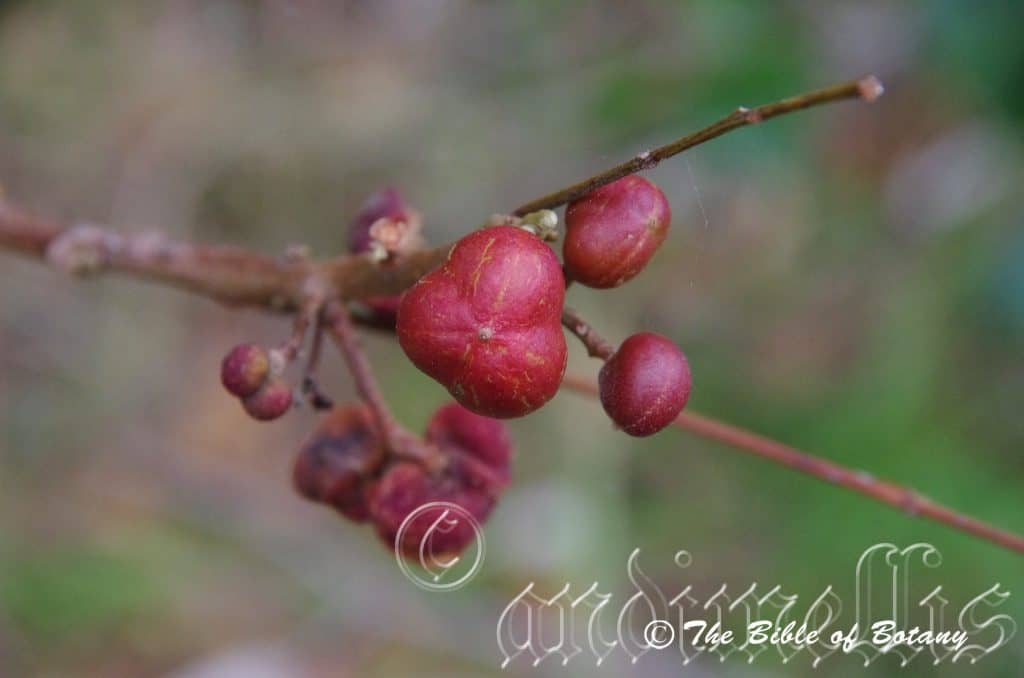
Innes Lake National Park NSW
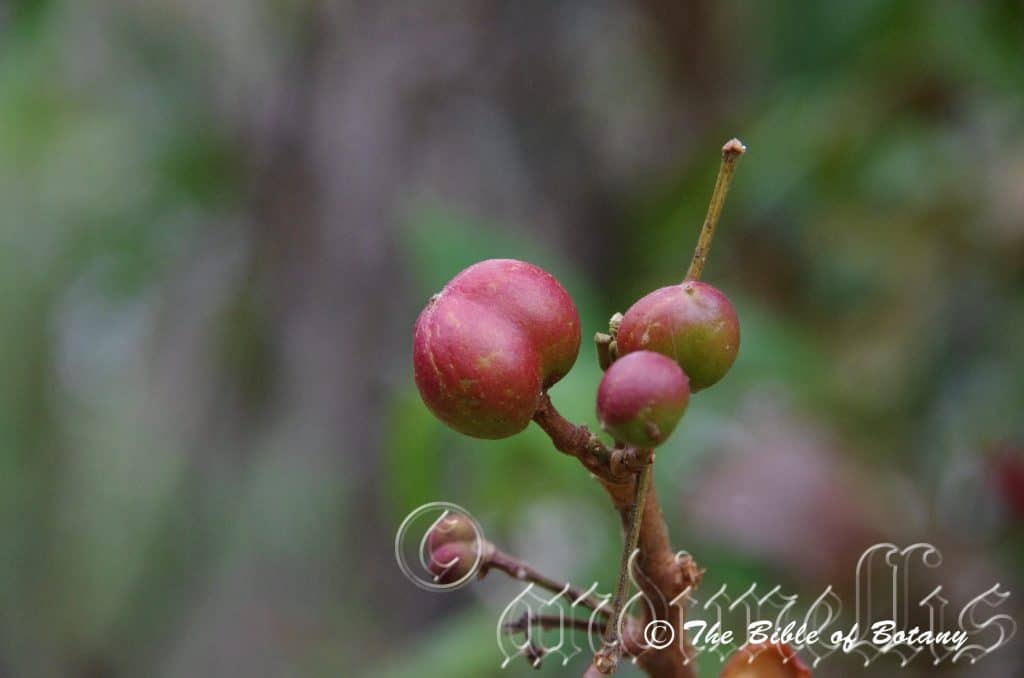
Innes Lake National Park NSW
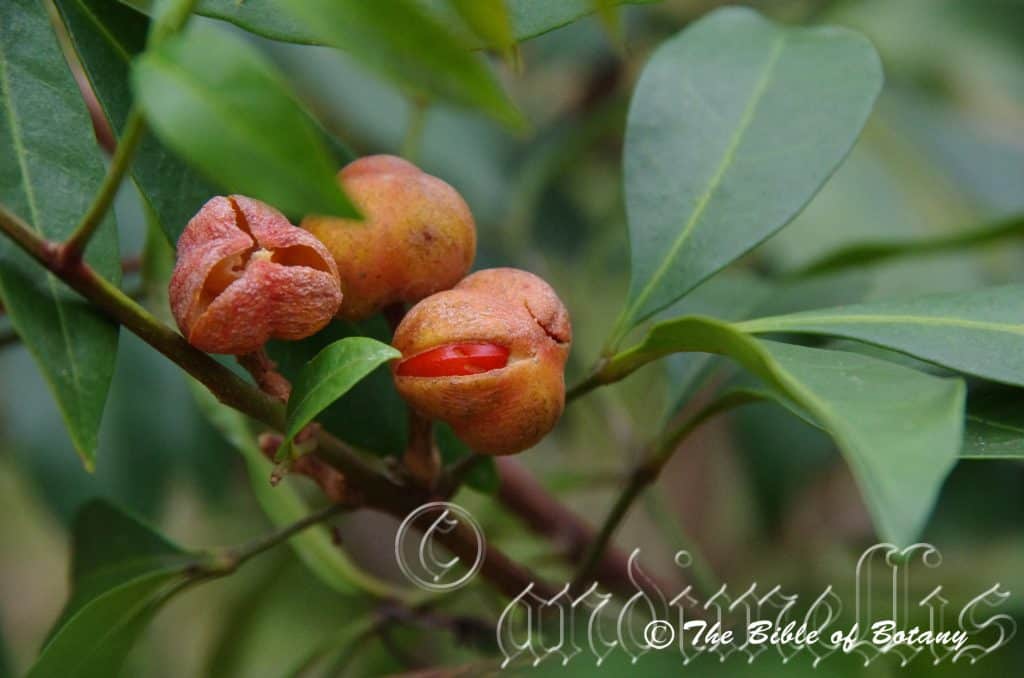
Innes Lake National Park NSW
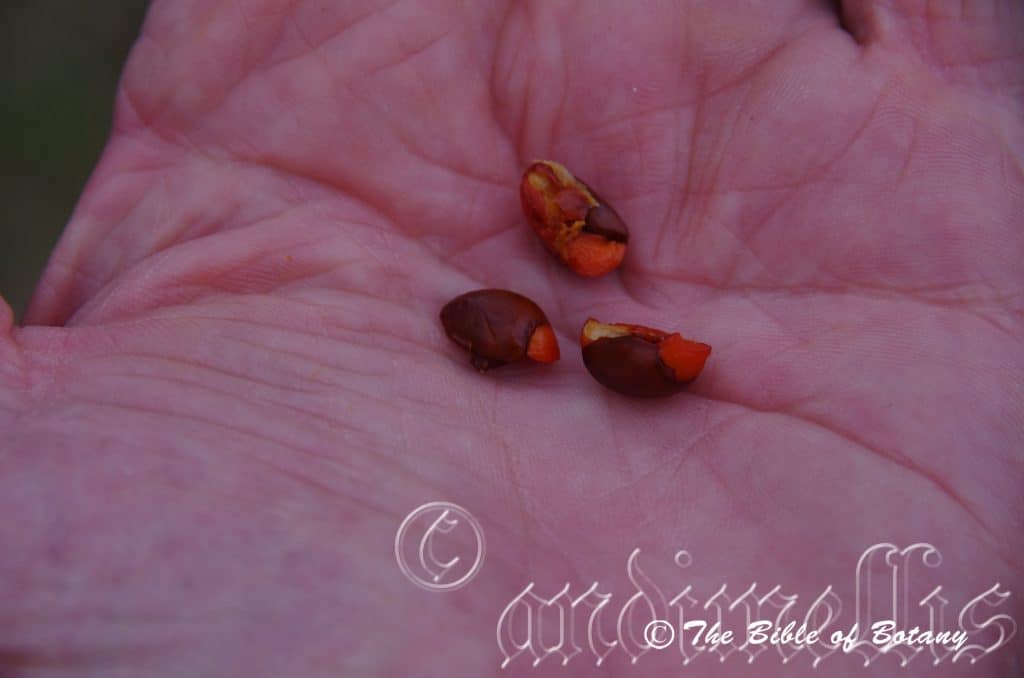
Innes Lake National Park NSW
Mischocarpus pyriformis
Classification:
Unranked: Angiosperms
Unranked: Eudicots
Unranked: Rosids
Order: Sapindales
Family: Sapindalaceae
Genus: From Mischos, which is Ancient Greek for a stalk pedicel, petiole or stipe and Karpós, which is Ancient Greek for a fruit. It refers to fruits, which have a definite stalk which leads or tapers from the pedicel.
Specie: From Pyros, which is Ancient Greek for a pear and Forme, which is Latin for a shape or take the form of. It refers to fruits, which are pear shaped.
Sub specie: Mischocarpus pyriformis subsp. pyriformis. From Pyros, which is Ancient Greek for a pear and Forme, which is Latin for a shape or take the form of. It refers to fruits, which are pear shaped.
Sub specie: Mischocarpus pyriformis subsp. retusus. From Retūsus, which is Latin for to make blunt. It refers to organs, usually the leaves or petals, which have obtuse apexes with a shallow notch as against emarginate which has a deep notch.
Common Name: Yellow Pear or Yellow Pear Fruit.
Distribution:
Mischocarpus pyriformis subsp. pyriformis is found south from Hope Vale in far north eastern Queensland to seal rocks in central coastal New South Wales. It is found on and east of the Great Dividing Range.
Mischocarpus pyriformis subsp. retusus is found south from Cape Tribulation to north east of Innisfail in north eastern Queensland.
It is also found in New Guinee.
https://avh.ala.org.au/occurrences/search?taxa=Mischocarpus+pyriformis#tab_mapView
Habitat Aspect Climate:
Mischocarpus pyriformis prefers light dappled shade to denser shady places in well-developed tropical rainforests and warm sub-tropical rainforests. It grows in drier conditions along dry riverine river beds and banks as well as littoral rainforest or on the margins of well-developed rainforests.
Mischocarpus pyriformis subsp. pyriformis’s altitude ranges from 20 meter ASL to 1200 meters ASL.
Mischocarpus pyriformis subsp. retusus’s altitude ranges from 1100 meter ASL to 1220 meters ASL.
The temperatures range from 3 degrees in August to 36 degrees in January.
The rainfall ranges from lows of 1250mm to an average of 3200mm.
Soil Requirements:
Mischocarpus pyriformis prefers better quality sandy loams to light-medium clays. The soils are usually derived from decomposed brown basalts and black basalts close to the parent rock. The soils pH ranges from 5pH to 6pH. It does not tolerate waterlogged soils. Non saline soils to moderately saline soils are tolerated.
Height & Spread:
Wild Plants: 8m to 18m by 4m to 9m.
Characteristics:
The trunk is various shades of grey and is smooth and glabrous with some pustules. The bole of the trunk is about a half the height on a mature tree cylindrical with some irregular fluting or flanging close to the ground. The trunk is deep brown, scabrous and sparsely covered in fine bumps and pustules. The young stems are pale grey-brown. The branchlets are rusty-brown while the new shoots are grass green and densely covered in short white to pale grey pubescent hairs.
The alternate leaves measure 80mm to 300mm in length. There are 4 to 9 alternate to almost opposite leaflets which are elliptical to ovate-oblong and measure 25mm to 150mm in length by 20mm to 60mm in width. The base is broad cuneate to rounded while the apex is acuminate with a retuse tip. The discolourous laminas are deep sea-green, dull to semi glossy and glabrous while the lower lamina is much paler and sparsely covered with rusty-brown hirtellous hairs. The immature leaves and newly emerging leaves are lime green and covered in rusty brown hirtellous hairs. The margins are entire and slightly undulating while the lamina curves upwards from the mid vein. The mid vein is strongly prominent on the lower lamina and is distinctly visible on the upper lamina. The lateral veins are distinctly visible on both laminas. The petioles are glabrous to sparsely covered in short white puberulent hairs. The brown petioles have a channel on the upper surface and measure 2mm to 9mm in length. The brown petiolules are obviously swollen at the junction with its petiole, have a pulvinus and measure 5mm to 16mm.
The monoecious or dioecious inflorescence are born in a loose panicle from the terminal or from the leaf axis from separate trees. There are 5 to 11 branches to a panicle with each bearing branch bearing 2 or 3 individual flowers. The panicles are glabrous. The peduncules measures 4mm to 7mm in length while the pedicels measure 5mm to 7mm in length. The 5 golden yellow sepals measure 1mm to 1.5mm in length.
The 8 white, erect staminodes are covered in white appressed hirsute hairs measure 4mm to 6mm in length while the fawnish dorsifixed anthers dehisce longitudinally and measure 1mm to 1.8mm in length.
The female flowers have 5 white obtuse, erect petals measure 2mm to 2.5mm in length by 3mm to 3.5mm in width. It is glabrous externally and densely covered in white pilose hairs internally. The 8 yellow, erect staminodes surround the ovary and measure 1mm to 1.5mm in length. The yellow-green globose ovary measures 3.5mm to 4.5mm in length by 3mm to 3.5mm in diameter. The trifid style is white. The flowers appear from February to April.
The fruits are glabrous pyriform to obovoidal capsules. The green coriaceous capsules turn yellow when ripe. They measure 20mm to 25mm in length by 7mm to 9mm in diameter. The pedicels measure 3mm to 5mm in length. The dehiscing capsules split to reveal the glossy brown seeds which are almost completely covered in an orange to scarlet red aril.
The ovoid-elliptical seeds are brown, glabrous, semi glossy and measures 9mm to 10mm in length by 7mm to 9mm in diameter.
Subspecie Differences:
Mischocarpus pyriformis subsp. pyriformis’s leaflets measure 70mm to 180mm by 25mm to 80mm in width. The fruits are strongly pyriform.
Mischocarpus pyriformis subsp. retusus’s leaflets measure 50mm to 90mm in length by measure 20mm to 40mm in width. The fruits are globose to weakly pyriform
Wildlife:
Mischocarpus pyriformis’s flowers are visited by many different specie of butterflies, plus beetles, wasps and native bees. The fruits are eaten by the Lewin’s Honeyeater and probably other specie of medium size honeyeaters and pigeons as well. The ring tail possum has been seen eating the fruit and flowers so I would suspect the larger brush tail possum would also consume the fruits and flowers.
The aril surrounding the seeds is edible but personally one needs to be very hungry to enjoy them.
Cultivation:
Mischocarpus pyriformis is a fairly slow growing plant which is worthwhile growing for the beautiful fragrance of its flowers which is sweet but not overpowering. It makes an excellent medium size tree for a park like scene or specimen tree in the garden. They always look green and fresh especially where adequate ground moisture is retained whether it is grown in light shade or full sun. It is very suitable on sandy clay soils. It is most suitable for small, medium and large gardens close to the coast in temperate, sub-tropical or tropical gardens. As a garden subject it will grow from 8m to 12m in height by 6m to 10m in diameter when grown in the open.
It is cold tolerant to temperatures at least as low as minus 2 degrees once established. They should be protected until they reach at least 2 meters in height.
It is best used adjacent to small areas of bush close to paths or the house so the fragrance can radiate out and can be appreciated regularly. They can be planted in small groups of 2 or 3 to enhance their appearance.
It can be used as small shade trees in semi protected areas and are an excellent tree for starting a dry rainforest garden. When planting the trees in a rainforest try to place them in the center with other smaller dry rainforest trees so their scent lingers within the forest.
If mild native fertilizers are used they will develop quickly after 3 or 4 years of stabilizing themselves.
In Native gardens it can be used for attracting butterflies, native bees, native flies or native beetles during flowering which are necessary for fertilization of the flowers.
It is useful as a backdrop small tree contrasting with smaller finer leaf shrubs that are planted in the foreground. Grey foliage plants contrast beautifully with the green leaves.
The trunks will develop the moss patterns at an early age and are most suitable for small epiphytic plants. Its biggest draw back is its slow growth in the initial years.
Propagation:
Seeds: Mischocarpus pyriformis fresh seeds can be sown directly into a seed raising mix in 50mm native tubes. Cover the seeds with 5mm to 10mm of fine weed free mulch and keep moist and keep moist. Place the tubes in a warm sunny position. When the seedlings are 120mm to 180mm tall they can be planted out into prepared holes or repotted into 250mm pots, using a good organic mix.
Old seed will lose viability with slower germinate over several months for seed that does remain viable.
Fertilize using seaweed, fish emulsion or organic chicken pellets soaked in water on an alternate basis. Fertilize every two months until the plants are established then twice annually in early September and March to maintain better health, vitality and flowering.
Further Comments from Readers:
Hi reader, it seems you use The Bible of Botany a lot. That’s great as we have great pleasure in bringing it to you! It’s a little awkward for us to ask, but our first aim is to purchase land approximately 1,600 hectares to link several parcels of N.P. into one at The Pinnacles NSW Australia, but we need your help. We’re not salespeople. We’re amateur botanists who have dedicated over 30 years to saving the environment in a practical way. We depend on donations to reach our goal. If you donate just $5, the price of your coffee this Sunday, We can help to keep the planet alive in a real way and continue to bring you regular updates and features on Australian plants all in one Botanical Bible. Any support is greatly appreciated. Thank you.
In the spirit of reconciliation we acknowledge the Bundjalung, Gumbaynggirr and Yaegl and all aboriginal nations throughout Australia and their connections to land, sea and community. We pay our respect to their Elders past, present and future for the pleasures we have gained.
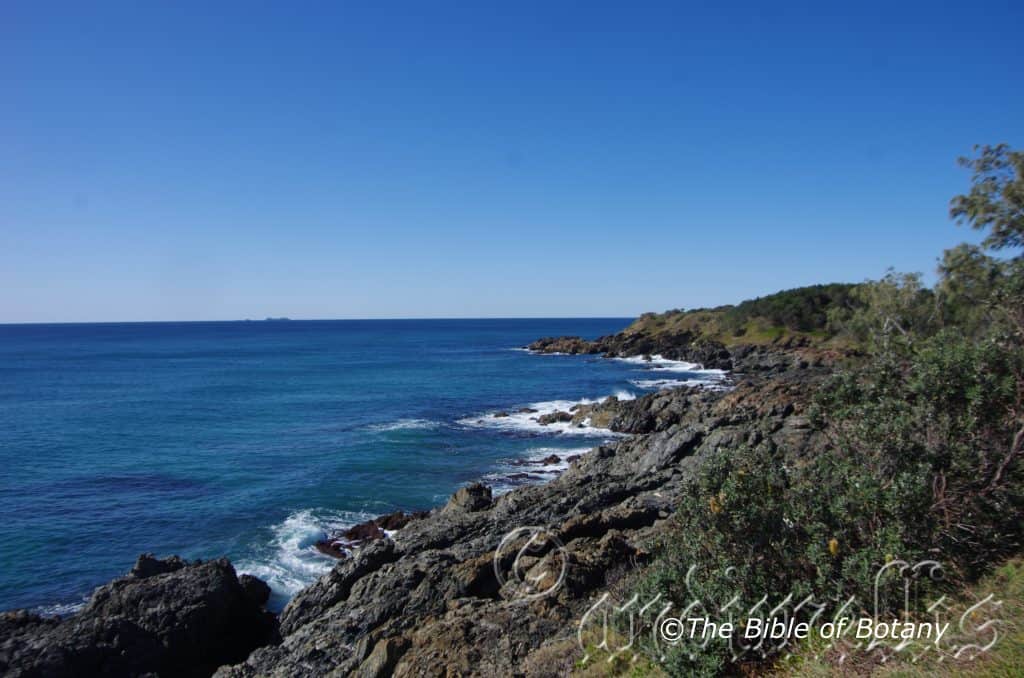
Yuraygir National Park NSW
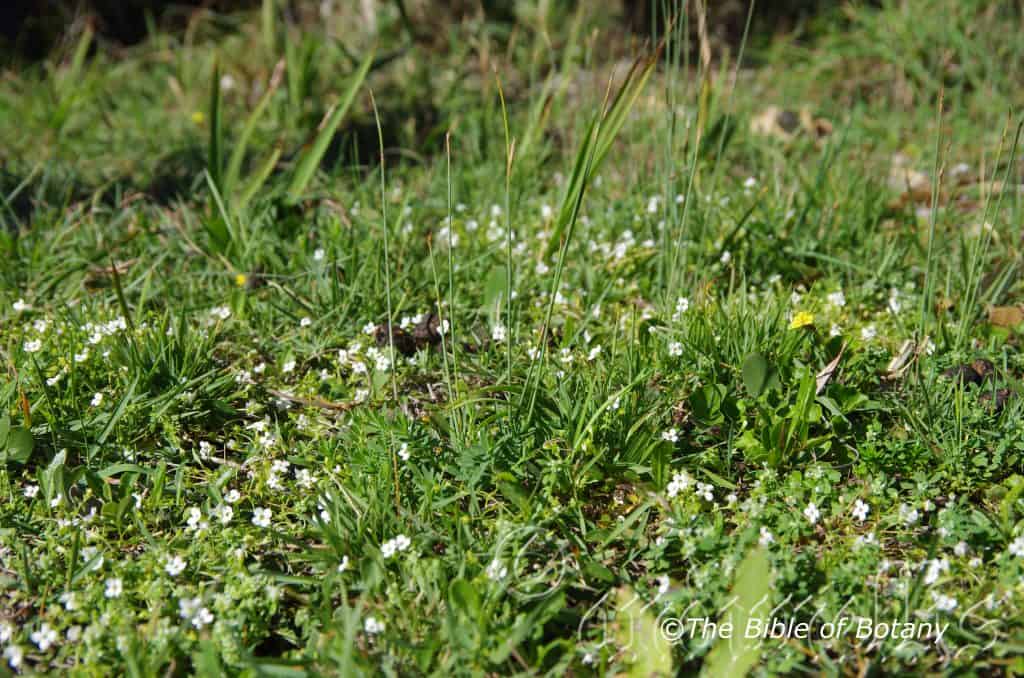
Yuraygir National Park NSW
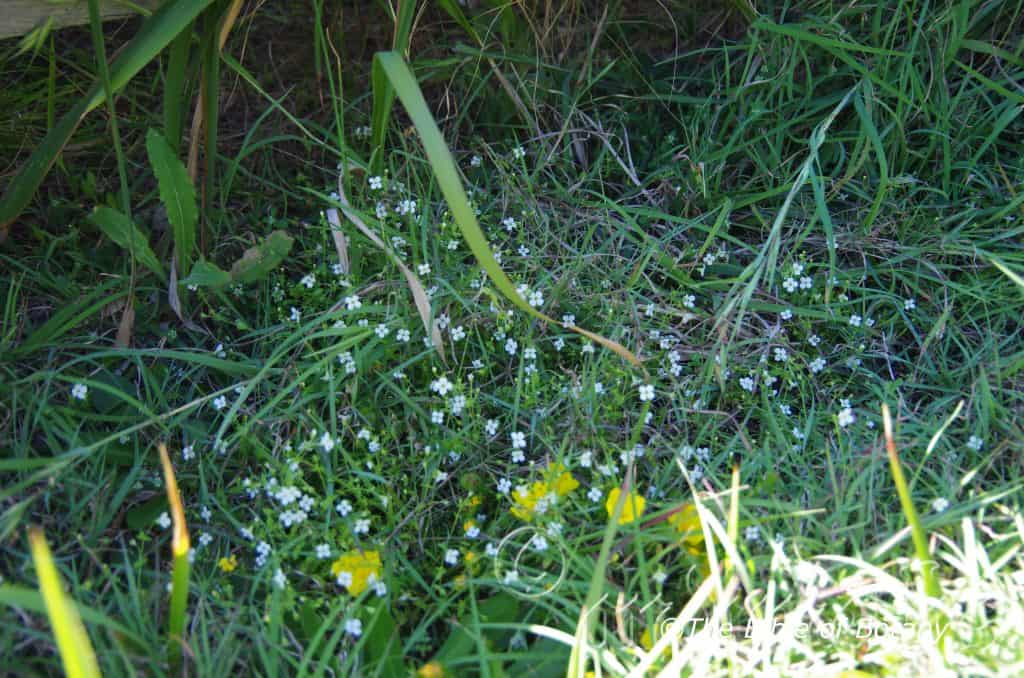
Yuraygir National Park NSW
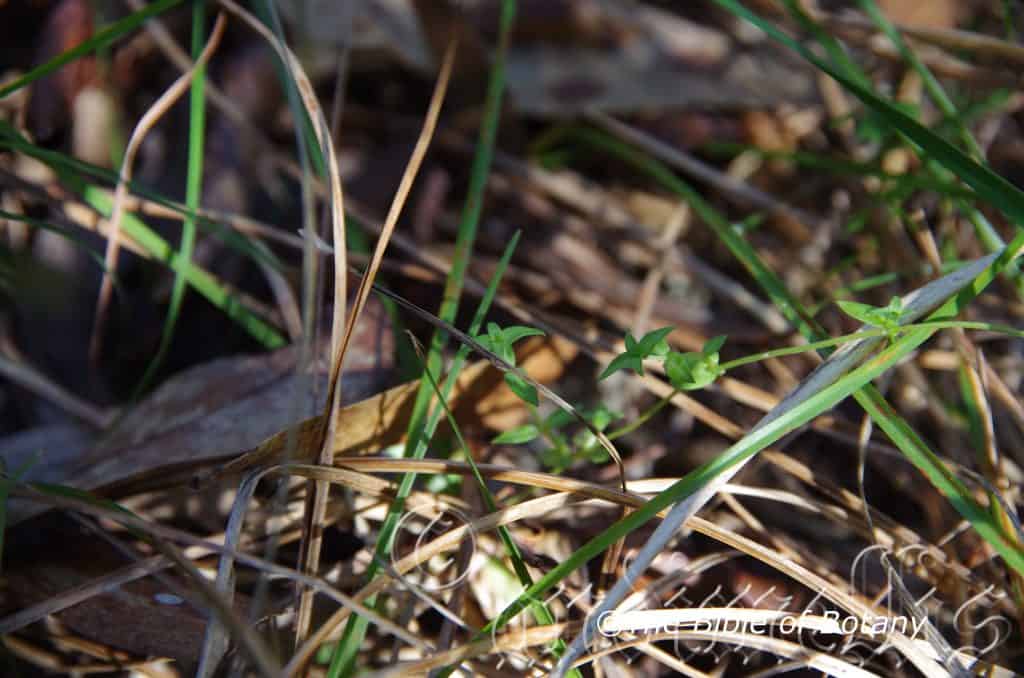
The Pinnacles NSW
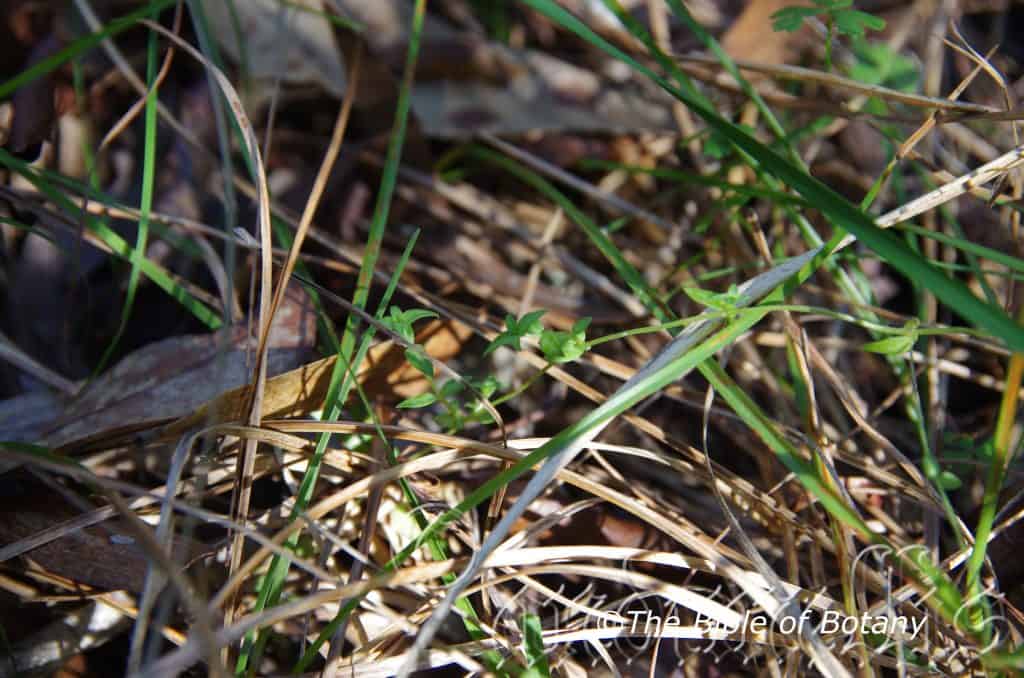
The Pinnacles NSW
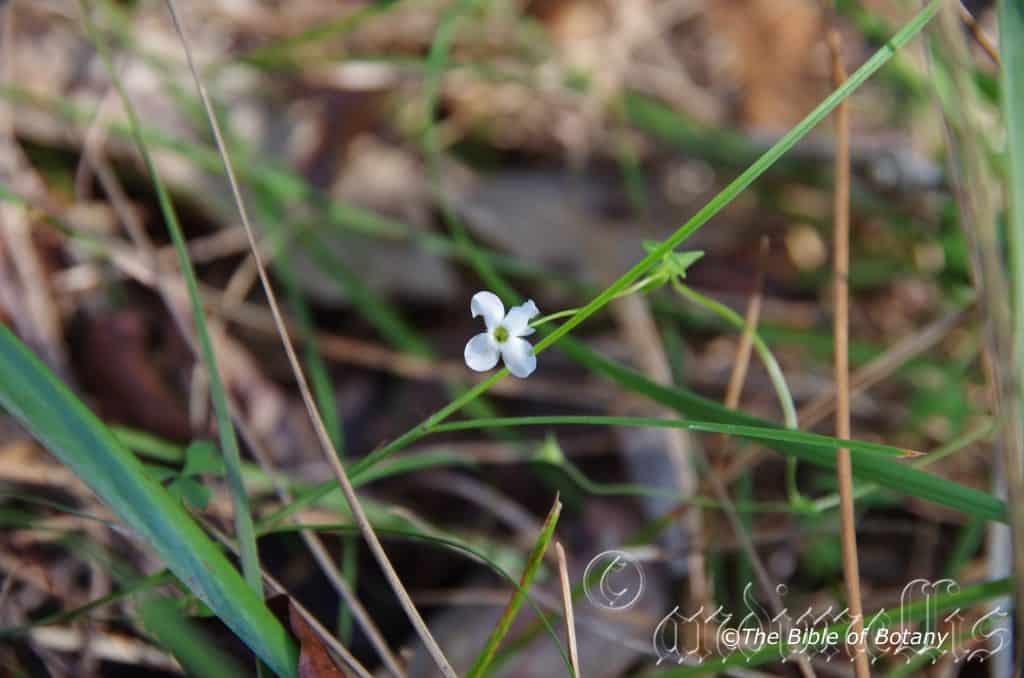
The Pinnacles NSW
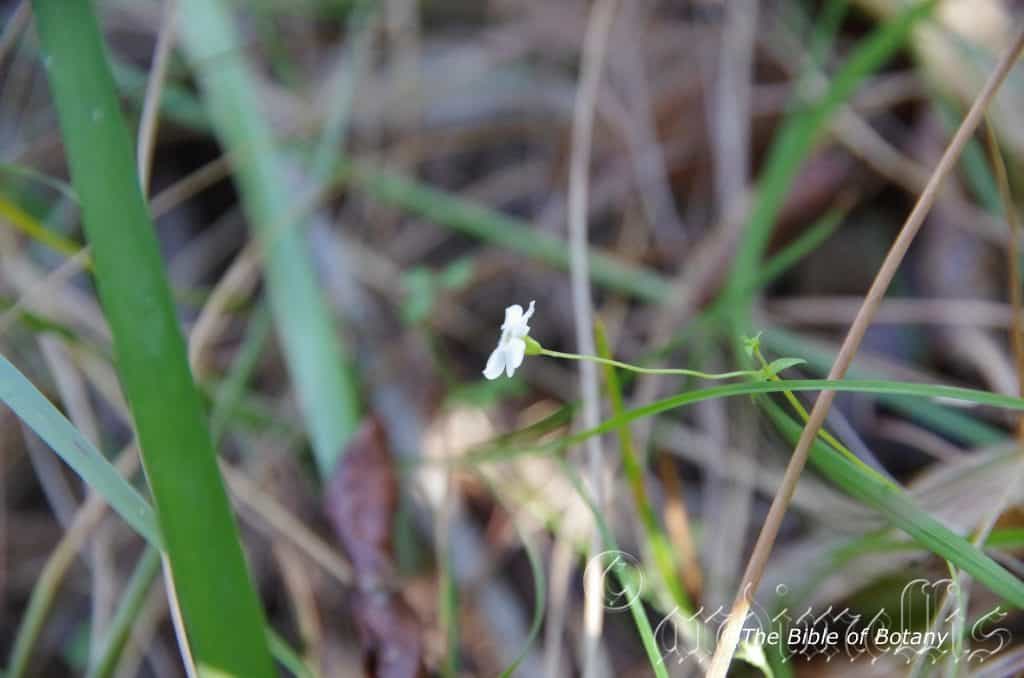
The Pinnacles NSW
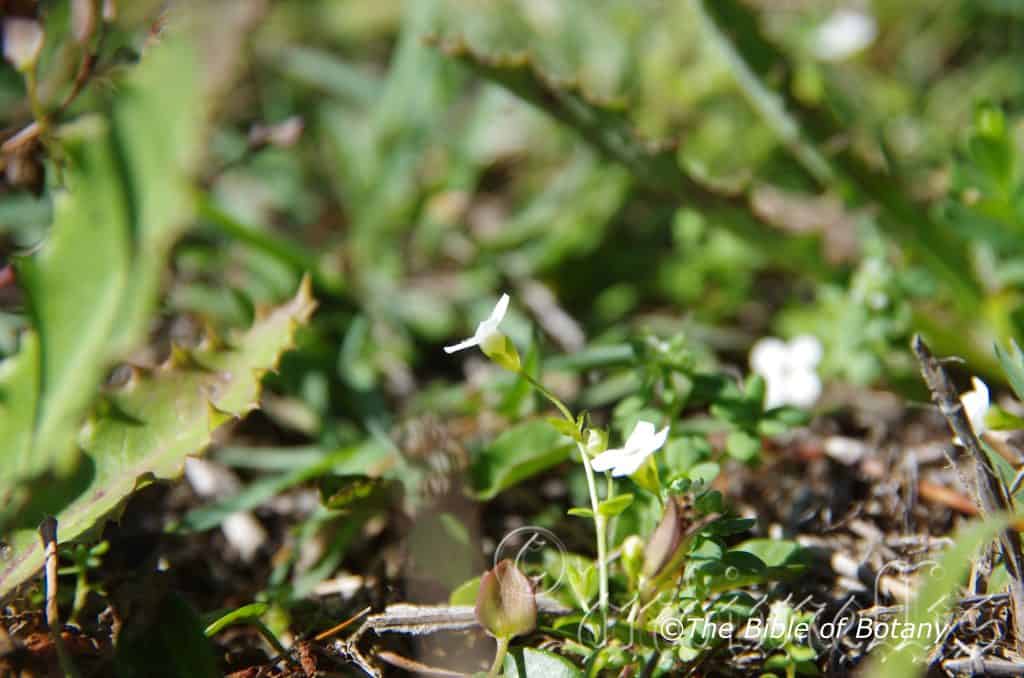
Yuraygir National Park NSW
Mitrasacme alsinoides
Classification:
Unranked: Eudicots
Unranked: Asterids
Order: Gentianales
Family: Loganiaceae
Genus: From Mitra, which is Ancient Greek fora bishop’s head dress and Akme, which is Ancient Greek for a summit. It refers to structures or organs, which are held erect and somewhat resemble a bishop’s hat.
Specie: From Alsínē which is Ancient Greek for an unknown plant probably the chickweeds and Eîdos/Oides, which is Ancient Greek for alike or similar to. It refers to plants especially the leaves, which somewhat resemble the European chickweeds.
Sub species:
Common Name:
Distribution:
Mitrasacme alsinoides is found near Darwin in the Northern Territory.
In the east it is found south from Bellinden Kerr in far north Queensland then further south it is bounded by Shoalwater Bay, Tambo, Charleville and back to the Great Dividing Range at Maryland then south and east of the range to Camden in Sydney. Despite covering a large area west of the range as well as large latitude it is not common.
https://avh.ala.org.au/occurrences/search?taxa=Mitrasacme+alsinoides#tab_mapView
Habitat Aspect Climate:
Mitrasacme alsinoides prefers light dappled shade to full sun. It usually grows in moist open Eucalyptus woodlands, moist open woodland heaths along creeks or stream banks associated with moist shallow depressions. The altitude ranges from 5 meters ASL to 850 meters ASL.
The temperatures range from minus 3 degrees in August to 40 degrees in January.
The rainfalls range from lows of 300mm to an average of 2100mm.
Soil Requirements:
Mitrasacme alsinoides prefers sandy loams to medium clays or light to heavy silts. The soils are usually derived from better quality decomposed sandstones, granites brown basalts, black basalts or alluvial deposits. The soils pH ranges from 5pH to 7pH. It tolerates seasonal waterlogged soils that are free draining. Non saline soils to moderately saline soils are tolerated.
Height & Spread:
Wild Plants: 0.1m to 0.2m by 0.2m to 0.3m.
Characteristics:
Mitrasacme alsinoides is a small weakly branched annual with divaricate stems. The stems are reddish-orange to grass-green and covered in white appressed sericeous hairs.
The opposite leaves are usually ovate or narrow ovate and measure 2mm to 10mm in length by 2mm to 5mm in width. The petioles measure 0mm to 1mm in length. The bases are truncate while the apexes are acute with a mucronate tip. The concolourous laminas are reddish-brown to mid green to deep green, semi glossy or dull and glabrous or sparsely covered in white appressed sericeous hairs. The laminas are slightly convex on the upper surface from the mid vein to the margins. The mid vein is strongly prominent on the lower lamina while the lateral veins are obscure.
The inflorescences are born singularly from the leaf axils. The pedicels are sparsely covered in white sericeous hairs and measure 4mm to 12mm in length. The hypanthia measure 4mm to 5mm in length. The calyx and 5 or 6 lobes are deep green or deep maroon-red, narrow triangular, membranous and measure 5mm to 7.5mm including the 2mm to 2.5mm lobes. The 5 or 6 deep pink to purple petals are obovate and measure 7mm to 10mm in length. The calyxes are sparsely covered in white sericeous hairs and measure 2mm to 3mm in length. The 4 calyx lobes are sparsely covered in white sericeous hairs and measure 2mm to 3mm in length. The corolla tube is white and glabrous externally and pale yellow and moderately covered in white appressed sericeous hairs internally. The corolla tubes measure 5mm to 7mm in length while the white obtuse lobes measure 2mm to 2.5mm in length.
The 4 white stamens level with the throat of the corolla or slightly exserted. It is erect or gently curve on the basal half towards the style. The filaments measure 5mm to 8mm in length. The anthers are white. The pastel yellow or white pistil is inserted in the corolla and measures 3mm to 5mm in length.
The fruits are small globose capsules. The pale green tinged reddish, fleshy capsules turn reddish-grey and are sparsely covered in white appressed hairs when ripe. The capsules measure 2.5mm to 4mm in length by 2mm to 3mm in diameter. The minute seeds are black.
Wildlife:
Mitrasacme alsinoides’s wildlife is unknown to the author.
Cultivation:
Mitrasacme alsinoides is a dainty little rockery plant. It always looks fresh especially where adequate ground moisture is retained whether it is grown in partial shade or full sun. It is very suitable on moisture problem acid soils. It is very suitable for small gardens close to the coast in sub-tropical to warm temperate areas. As garden subjects they will grow from 0.8 meters to 0.2 meters by 0.3 meters in height by 0.3 meters to 0.5 meters in diameter.
It is most suitable for use around swimming pools, courtyards, besides pathways, shady rockeries, along sandy clay banks or along drive ways or adjacent to natural bush gardens. Mass plantings of 15 or more plants; even in small areas, really do the plants justification especially when it is in flower. Small fish or frog ponds will benefit from Mitrasacme alsinoides white flowers. This can be greatly personified by planting small yellow or deep red, deep blue or violet flowering plants in the foreground and to the sides.
It looks particularly startling when planted as a border plant with deep coloured flowers to the rear. Cottage or English style garden can be created easily using Mitrasacme alsinoides as the main feature in the foreground or surrounding a formal tree planting beds. Here they can be used like the spokes of a wheel radiating out with deep red Lechenaultia formosa or for shades of blue try Lechenaultia biloba, Pattersonia glabrata, Scaevola tomentosa, or even yellow with Hibbertia linearis, Hibbertia diffusa or Hibbertia obtusifolia for a softer look.
Propagation:
Seeds: Mitrasacme alsinoides seeds can be sown directly into a seed raising mix. Cover the seeds with 5mm to 10mm of fine weed free mulch and keep moist. Place the tray in a warm sunny position. When the seedlings are 30mm to 50mm tall, prick them out and plant them into 50mm native tubes using a good organic mix.
Once the seedlings reach 100mm to 150mm in height they can be planted out into their permanent position.
Fertilize using seaweed, fish emulsion or organic chicken pellets soaked in water on an alternate basis. Fertilize every month until the plants are established and the flower buds are fully formed to maintain better health, vitality and flowering.
Cuttings: Cuttings must be used if flowering in the following season are required or a particular flower colour of form is required. Fortunately for those who want to grow Mitrasacme alsinoides from cuttings they strike very easy. Use 100mm to 150mm long half ripened material when growing from cuttings from the present season’s growth. Take them in warmer months of the year. Remove half the leaves from the bottom section being careful not to tear the bark.
1 Prepare the cutting mix by adding one third sharp clean river sand, one third peat and one third perlite. These ingredients are sterilize,
2 Select good material from non diseased plants,
3 Select semi green stems for cuttings. Look for a stem with two or three nodes,
4 Place the cutting on a flat, hard surface, and make a clean cut down one side of the cutting at the base for 10mm with a sharp sterile knife or razor blade. – This scarification of the node will increase the chances of roots emerging from this spot. Now remove all but one or two the leaves, leaving the apex leaves in tact. If the leaves are very large in proportion to the stem, cut off the apical halves.
5 Fill a saucer with water, and place a little medium strength rooting hormone into another container like a milk bottle top. Dip the node end of the cutting into the water and then into the rooting hormone. Tap off any excess hormone,
6 Use a small dipple stick or old pencil to poke a hole into the soilless potting mix. Ensure the hole is slightly larger than the stem diameter and be careful not to wipe the rooting hormone off the cuttings base, place the cuttings in a pattern ensuring the cuttings are not touching each other,
7 I like to place the pots in Plastic bags to help maintain temperature and moisture. Place in a semi shaded place like under 50mm shade cloth.
8 When the cuttings have struck, open the bag to allow air circulation for a few days to a week,
9 Once hardened off remove the cuttings from the bag and allow to further hardening for a few more days,
10 Transplant into a good potting mix to grow on.
Fertilize using seaweed, fish emulsion or organic chicken pellets soaked in water on an alternate basis. Fertilize every two months until the plants are established then twice annually in early September or March to maintain health, vitality and better flowering.
Further Comments from Readers:
Hi reader, it seems you use The Bible of Botany a lot. That’s great as we have great pleasure in bringing it to you! It’s a little awkward for us to ask, but our first aim is to purchase land approximately 1,600 hectares to link several parcels of N.P. into one at The Pinnacles NSW Australia, but we need your help. We’re not salespeople. We’re amateur botanists who have dedicated over 30 years to saving the environment in a practical way. We depend on donations to reach our goal. If you donate just $5, the price of your coffee this Sunday, We can help to keep the planet alive in a real way and continue to bring you regular updates and features on Australian plants all in one Botanical Bible. Any support is greatly appreciated. Thank you.
In the spirit of reconciliation we acknowledge the Bundjalung, Gumbaynggirr and Yaegl and all aboriginal nations throughout Australia and their connections to land, sea and community. We pay our respect to their Elders past, present and future for the pleasures we have gained.
Mitrasacme paludosa
Classification:
Unranked: Eudicots
Unranked: Asterids
Order: Gentianales
Family: Loganiaceae
Genus: From Mitra, which is Ancient Greek fora bishop’s head dress and Akme, which is Ancient Greek for a summit. It refers to structures or organs, which are held erect and somewhat resemble a bishop’s hat.
Specie: From Pēlós, which is Ancient Greek for muddy or swampy or Palūdōsa, which is Latin for a bog, fen or marsh. It refers to plants, which prefer to grow in swampy or wallum habitats.
Sub species:
Common Name:
Distribution:
Mitrasacme paludosa is found in several disjunct populations south from Cape York Peninsula in far north east Queensland to the Sydney basin in central coastal New South Wales.
https://avh.ala.org.au/occurrences/search?taxa=Mitrasacme+paludosa#tab_mapView
Habitat Aspect Climate:
Mitrasacme polymorpha prefers light dappled shade to full sun. It usually grows in moist open wallums or near swamps, moist heaths or natural shallow depressions. The altitude ranges from 5 meters ASL to 1250 meters ASL.
The temperatures range from minus 3 degrees in August to 42 degrees in January.
The rainfalls range from lows of 600mm to an average of 3200mm.
Soil Requirements:
Mitrasacme paludosa prefers sands, peaty sands, sandy loams to light fatty clays. The soils are usually derived from decomposed sandstones or at times granites or accumulated peaty beach sands. The soils pH ranges from 4.5pH to 8pH. It tolerates seasonal waterlogged soils that are free draining and seasonal high water tables. Non saline soils to slightly saline soils are tolerated.
Height & Spread:
Wild Plants: 0.1m to 0.2m by 0.2m to 0.3m
Characteristics:
Mitrasacme paludosa is a small strongly branched prostrate perennial with divaricate stems. The stems are yellowish to pale olive-green and sparsely to moderately covered in short and long, soft, white hirsute erect and appressed hairs.
The opposite, decussate, disjunct leaves are narrow oblong to narrow ovate and measure 4mm to 11mm in length by 1mm to 3mm in width. The bases are semi clasping while the apexes are acute. The concolourous laminas are pale green to mid green, dull and glabrous to sparsely covered in white appressed or erect hirsute hairs. The laminas recurve strongly near the margins, which are entire and thickened. The mid vein is prominent on the lower lamina and is faintly visible on the upper lamina while the lateral veins are obscure.
The inflorescences are born in the upper axils or terminals and are arranged in small leafy umbels of 3 to 6 individual flowers. The terete pedicels are sparsely to moderately covered in white, antrorse hairs and measure 3mm to 10mm in length. The inflorescence measure 100mm to 150mm in length. The hypanthia measure 2mm to 4mm in length. The calyx and lobes are deep green or pale orange-red, narrow triangular, glabrous and measure 2mm to 4mm. The lobes measure 2mm to 4mm lobes. The corolla tubes are white externally and yellow internally and are moderately covered in white hirsute to sericeous hairs internally and onto the base of the lobes. They measure 6mm to 7mm in length while the white lobes measure 3mm to 3.5mm in length.
The calyx is sparsely to moderately covered in white, antrorse hairs and measures 1.5mm to 2.8mm in length, the 4 narrow linear lobes 3mm to 5mm in length. The white corolla measures 3mm to 5mm in length, while the ovate lobes measure 2mm to 3mm in length.
The 4 white stamens are level with the throat of the corolla or slightly iexserted. The white filaments are erect and measure 2mm to 3mm in length. The compressed, white cuboidal anthers are basifixed.
The stout, white pistil is slightly inserted in the corolla and measures 2mm to 2.5mm in length.
The fruits are small globose capsules. The pale green tinged reddish, fleshy capsules turn reddish-grey and are sparsely covered in white appressed hairs when ripe. The capsules measure 2.5mm to 3mm in length by 2.5mm to 3mm in diameter. The minute seeds are black.
Wildlife:
Mitrasacme paludosa wildlife is unknown to the author.
Cultivation:
Mitrasacme paludosa is a dainty little perennial for rockeries. It always looks fresh especially where adequate ground moisture is retained whether it is grown in partial shade or full sun. It is very suitable on moisture problem acid soils. It is very suitable for small gardens close to the coast in sub-tropical to warm temperate areas. As garden subjects it will grow from 0.8 meters to 0.2 meters by 0.3 meters in height by 0.3 meters to 0.5 meters in diameter.
Propagation:
Seeds: Mitrasacme paludosa seeds can be sown directly into a seed raising mix. Cover the seeds with 5mm to 10mm of fine weed free mulch and keep moist. Place the tray in a warm sunny position. When the seedlings are 30mm to 50mm tall, prick them out and plant them into 50mm native tubes using a good organic mix.
Once the seedlings reach 100mm to 150mm in height they can be planted out into their permanent position.
Fertilize using seaweed, fish emulsion or organic chicken pellets soaked in water on an alternate basis. Fertilize every two months until the plants are established then twice annually in early September and March to maintain better health, vitality and flowering.
Cuttings:
Cuttings must be used if flowering in the following season are required or a particular flower colour of form is required. Fortunately for those who want to grow Mitrasacme paludosa from cuttings they strike very easy. Use 100mm to 150mm long half ripened material when growing from cuttings from the present season’s growth. Take them in warmer months of the year. Remove half the leaves from the bottom section being careful not to tear the bark.
1 Prepare the cutting mix by adding one third sharp clean river sand, one third peat and one third perlite. These ingredients are sterilize,
2 Select good material from non diseased plants,
3 Select semi green stems for cuttings. Look for a stem with two or three nodes,
4 Place the cutting on a flat, hard surface, and make a clean cut down one side of the cutting at the base for 10mm with a sharp sterile knife or razor blade. – This scarification of the node will increase the chances of roots emerging from this spot. Now remove all but one or two the leaves, leaving the apex leaves in tact. If the leaves are very large in proportion to the stem, cut off the apical halves.
5 Fill a saucer with water, and place a little medium strength rooting hormone into another container like a milk bottle top. Dip the node end of the cutting into the water and then into the rooting hormone. Tap off any excess hormone,
6 Use a small dipple stick or old pencil to poke a hole into the soilless potting mix. Ensure the hole is slightly larger than the stem diameter and be careful not to wipe the rooting hormone off the cuttings base, place the cuttings in a pattern ensuring the cuttings are not touching each other,
7 I like to place the pots in Plastic bags to help maintain temperature and moisture. Place in a semi shaded place like under 50mm shade cloth.
8 When the cuttings have struck, open the bag to allow air circulation for a few days to a week,
9 Once hardened off remove the cuttings from the bag and allow to further hardening for a few more days,
10 Transplant into a good potting mix to grow on.
Fertilize using seaweed, fish emulsion or organic chicken pellets soaked in water on an alternate basis. Fertilize every two months until the plants are established then twice annually in early September or March to maintain health, vitality and better flowering.
Further Comments from Readers:
Hi reader, it seems you use The Bible of Botany a lot. That’s great as we have great pleasure in bringing it to you! It’s a little awkward for us to ask, but our first aim is to purchase land approximately 1,600 hectares to link several parcels of N.P. into one at The Pinnacles NSW Australia, but we need your help. We’re not salespeople. We’re amateur botanists who have dedicated over 30 years to saving the environment in a practical way. We depend on donations to reach our goal. If you donate just $5, the price of your coffee this Sunday, We can help to keep the planet alive in a real way and continue to bring you regular updates and features on Australian plants all in one Botanical Bible. Any support is greatly appreciated. Thank you.
In the spirit of reconciliation we acknowledge the Bundjalung, Gumbaynggirr and Yaegl and all aboriginal nations throughout Australia and their connections to land, sea and community. We pay our respect to their Elders past, present and future for the pleasures we have gained.
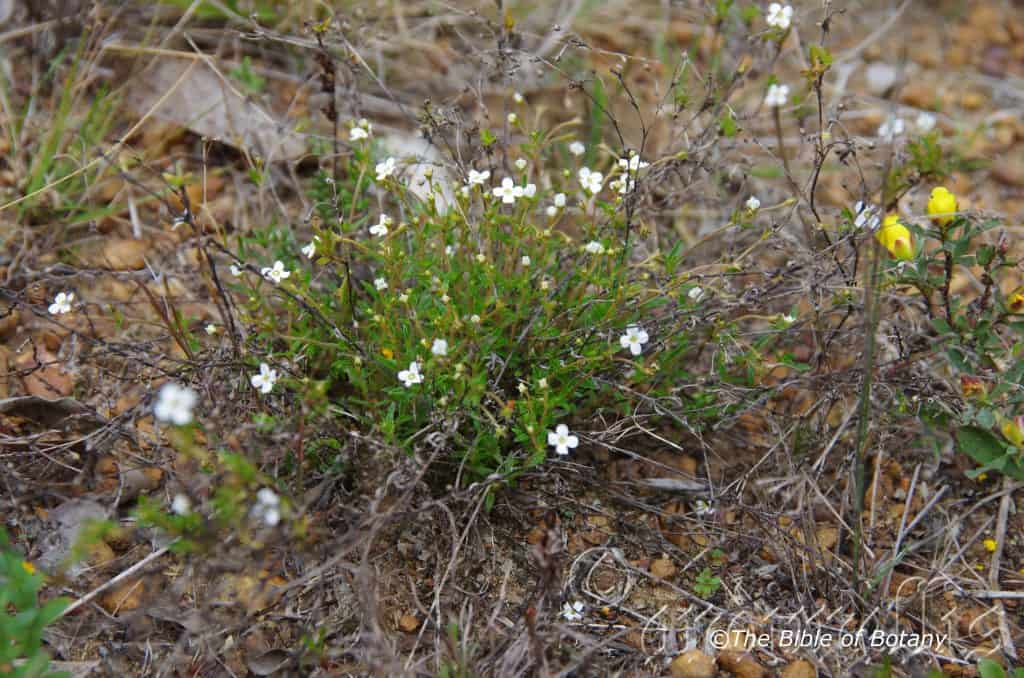
The Pinnacles NSW
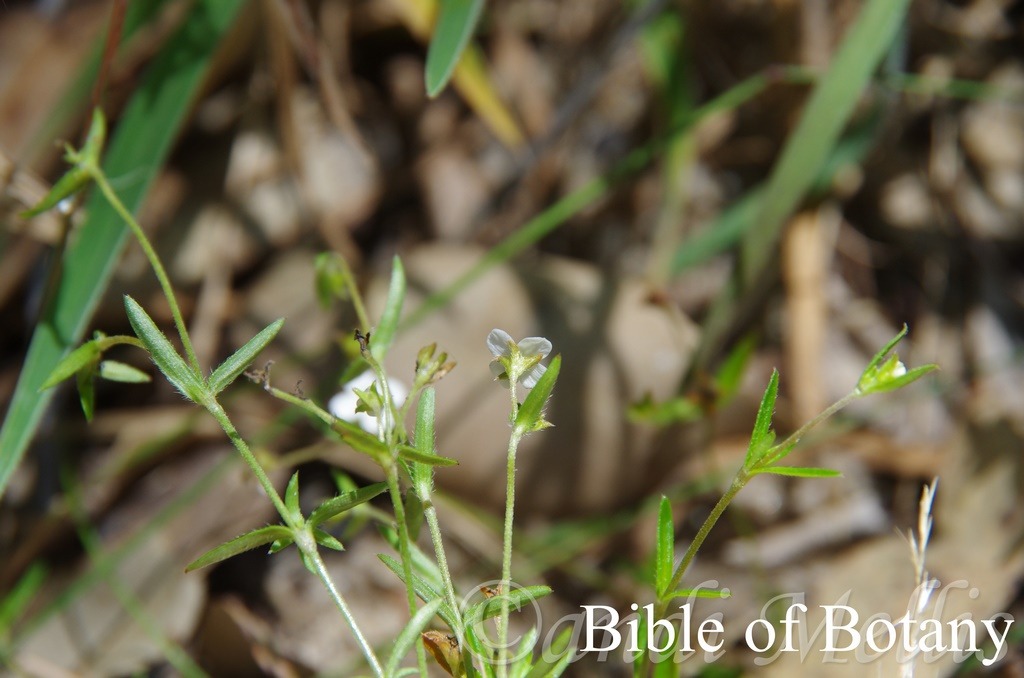
The Pinnacles NSW
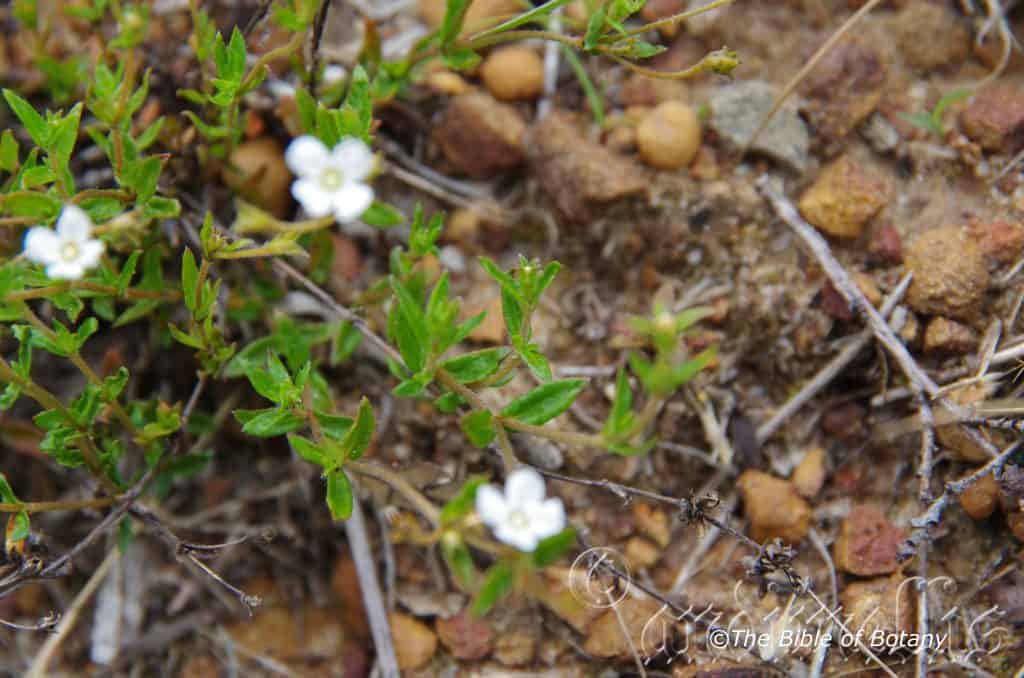
The Pinnacles NSW

The Pinnacles NSW
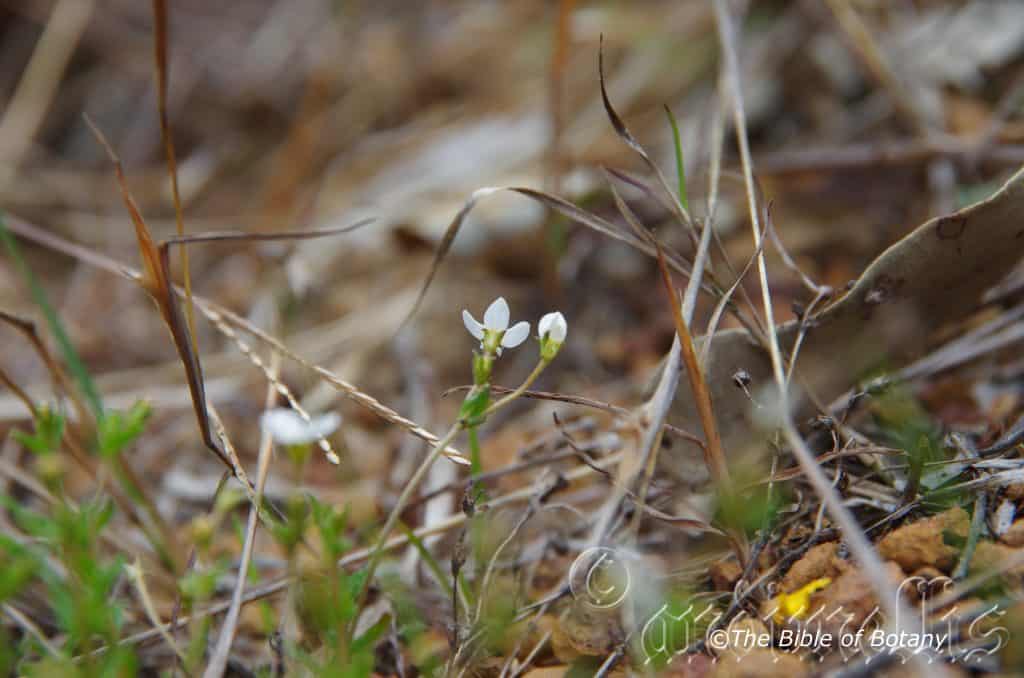
The Pinnacles NSW
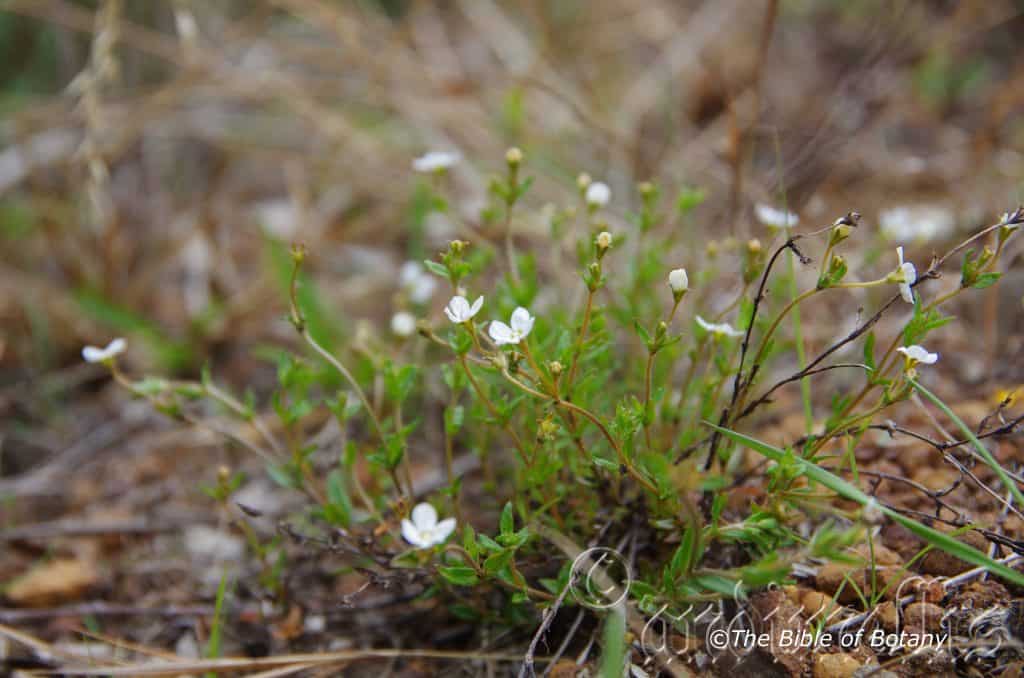
The Pinnacles NSW
Mitrasacme polymorpha
Classification:
Unranked: Eudicots
Unranked: Asterids
Order: Gentianales
Family: Loganiaceae
Genus: From Mitra, which is Ancient Greek fora bishop’s head dress and Akme, which is Ancient Greek for a summit. It refers to structures or organs, which are held erect and somewhat resemble a bishop’s hat.
Specie: From Polús, which is Ancient Greek for many and Morphos, which is Ancient Greek for form or to change form. It refers to the organs taking on many different forms.
Sub species:
Common Name:
Distribution:
Mitrasacme polymorpha is found south from Mount Lewis near Jullatten to the Hidden Valley in Paluma National Park in far north Queensland then further south from Mount Tempest on Moreton Island to Orbost in north eastern Victoria. It is mainly found on and east of the Great Dividing Range.
There are several isolated populations scattered throughout the mainland indicating this species was widespread at some stage in the past. These isolated populations include Yule River middle catchment and the Swan river plain near Subiaco in Western Australia, Oenpelli and Pine Creek near the UDP Falls in the Northern Territory, the Iron Range in far north Queensland on Cape York Peninsula and Wilson’s Promontory in far southern Victoria.
https://avh.ala.org.au/occurrences/search?taxa=Mitrasacme+polymorpha#tab_mapView
Habitat Aspect Climate:
Mitrasacme polymorpha prefers light dappled shade to full sun. It usually grows in moist open Eucalyptus woodlands along creek banks and stream banks near swamps, moist heaths ornatural shallow depressions. The altitude ranges from 10 meters ASL to 1250 meters ASL.
The temperatures range from minus 3 degrees in August to 40 degrees in January.
The rainfalls range from lows of 620mm to an average of 3000mm.
Soil Requirements:
Mitrasacme polymorpha prefers sands, peaty sands, sandy loams to light fatty clays. The soils are usually derived from decomposed sandstones or at times granites or accumulated beach sands. The soils pH ranges from 5pH to 7pH. It tolerates seasonal waterlogged soils that are free draining and seasonal high water tables. Non saline soils to moderately saline soils are tolerated.
Height & Spread:
Wild Plants: 0.1m to 0.2m by 0.2m to 0.3m
Characteristics:
Mitrasacme polymorpha is a small strongly branched perennial with divaricate stems. The stems are reddish-orange, olive-green to grass-green and sparsely to densely covered in long, white hirsute hairs. The stems are noticeably swollen at the leaf nodes.
The opposite almost decussate to decussate disjunct leaves are narrow ovate to oblong and measure 4mm to 15mm in length by 1mm to 6mm in width. The bases are semi clasping while the apexes are acute. The concolourous laminas are mid green to deep green, semi glossy or dull and sparsely to densely covered in white appressed hirsute hairs. The laminas bend strongly at the base 90 degrees to be divaricate. It is flat and straight while the margins are entire and thickened. The mid vein is prominent on the lower lamina and is faintly visible on the upper lamina while the lateral veins are obscure.
The inflorescences are born in terminal, irregular umbels of 3 to 6 individual flowers. The inflorescence measure 100mm to 150mm in length. The glabrous pedicels measure 30mm to 42mm in length. The hypanthia measure 2mm to 4mm in length. The calyx and lobes are deep green or pale orange-red, narrow triangular, glabrous and measure 2mm to 4mm. The lobes measure 2mm to 4mm lobes. The corolla tubes are white externally and yellow internally and are moderately covered in white hirsute to sericeous hairs internally and onto the base of the lobes. They measure 6mm to 7mm in length while the white lobes measure 3mm to 3.5mm in length.
The 4 white stamens are level with the throat of the corolla or slightly inserted. The filaments are erect and measure 4mm to 7mm in length. The anthers are white. The pastel yellow or white pistil is inserted in the corolla and measures 3mm to 4mm in length.
The fruits are small globose capsules. The pale green tinged reddish, fleshy capsules turn reddish-grey and are sparsely covered in white appressed hairs when ripe. The capsules measure 2.5mm to 4mm in length by 2mm to 3mm in diameter. The minute seeds are black.
Wildlife:
Mitrasacme polymorpha’s wildlife is unknown to the author.
Cultivation:
Mitrasacme polymorpha is a dainty little perennial for rockeries. They always look fresh especially where adequate ground moisture is retained whether it is grown in partial shade or full sun. It is very suitable on moisture problem acid soils. It is very suitable for small gardens close to the coast in sub-tropical to warm temperate areas. As garden subjects they will grow from 0.8 meters to 0.2 meters by 0.3 meters in height by 0.3 meters to 0.5 meters in diameter.
It is suitable for around swimming pools, courtyards, besides pathways, shady rockeries, along sandy clay banks or along drive ways or adjacent to natural bush gardens. Mass plantings of 15 or more plants; even in small areas, really do the plants justification especially when it is in flower. Small fish or frog ponds will benefit from Mitrasacme polymorpha white flowers. This can be greatly personified by planting small yellow or deep red, deep blue or violet flowering plants in the background and to the sides.
It looks particularly startling when planted as a border plant with deep coloured flowers to the rear. Cottage or English style garden can be created easily using Mitrasacme polymorpha as the main feature in the foreground or surrounding a formal tree planting beds. Here they can be used like the spokes of a wheel radiating out with deep red Lechenaultia formosa or deep blues Lechenaultia biloba or Pattersonia glabrata or Scaevola tomentosa, coloured flowers or even yellow Hibbertia linearis, Hibbertia diffusa or Hibbertia obtusifolia and for a softer look Scaevola aemula would look apealing.
Propagation:
Seeds: Mitrasacme polymorpha seeds can be sown directly into a seed raising mix. Cover the seeds with 5mm to 10mm of fine weed free mulch and keep moist. Place the tray in a warm sunny position. When the seedlings are 30mm to 50mm tall, prick them out and plant them into 50mm native tubes using a good organic mix.
Once the seedlings reach 100mm to 150mm in height they can be planted out into their permanent position.
Fertilize using seaweed, fish emulsion or organic chicken pellets soaked in water on an alternate basis. Fertilize every two months until the plants are established then twice annually in early September and March to maintain better health, vitality and flowering.
Cuttings:
Cuttings must be used if flowering in the following season are required or a particular flower colour of form is required. Fortunately for those who want to grow Mitrasacme polymorpha from cuttings they strike very easy. Use 100mm to 150mm long half ripened material when growing from cuttings from the present season’s growth. Take them in warmer months of the year. Remove half the leaves from the bottom section being careful not to tear the bark.
1 Prepare the cutting mix by adding one third sharp clean river sand, one third peat and one third perlite. These ingredients are sterilize,
2 Select good material from non diseased plants,
3 Select semi green stems for cuttings. Look for a stem with two or three nodes,
4 Place the cutting on a flat, hard surface, and make a clean cut down one side of the cutting at the base for 10mm with a sharp sterile knife or razor blade. – This scarification of the node will increase the chances of roots emerging from this spot. Now remove all but one or two the leaves, leaving the apex leaves in tact. If the leaves are very large in proportion to the stem, cut off the apical halves.
5 Fill a saucer with water, and place a little medium strength rooting hormone into another container like a milk bottle top. Dip the node end of the cutting into the water and then into the rooting hormone. Tap off any excess hormone,
6 Use a small dipple stick or old pencil to poke a hole into the soilless potting mix. Ensure the hole is slightly larger than the stem diameter and be careful not to wipe the rooting hormone off the cuttings base, place the cuttings in a pattern ensuring the cuttings are not touching each other,
7 I like to place the pots in Plastic bags to help maintain temperature and moisture. Place in a semi shaded place like under 50mm shade cloth.
8 When the cuttings have struck, open the bag to allow air circulation for a few days to a week,
9 Once hardened off remove the cuttings from the bag and allow to further hardening for a few more days,
10 Transplant into a good potting mix to grow on.
Fertilize using seaweed, fish emulsion or organic chicken pellets soaked in water on an alternate basis. Fertilize every two months until the plants are established then twice annually in early September or March to maintain health, vitality and better flowering.
Further Comments from Readers:
Hi reader, it seems you use The Bible of Botany a lot. That’s great as we have great pleasure in bringing it to you! It’s a little awkward for us to ask, but our first aim is to purchase land approximately 1,600 hectares to link several parcels of N.P. into one at The Pinnacles NSW Australia, but we need your help. We’re not salespeople. We’re amateur botanists who have dedicated over 30 years to saving the environment in a practical way. We depend on donations to reach our goal. If you donate just $5, the price of your coffee this Sunday, We can help to keep the planet alive in a real way and continue to bring you regular updates and features on Australian plants all in one Botanical Bible. Any support is greatly appreciated. Thank you.
In the spirit of reconciliation we acknowledge the Bundjalung, Gumbaynggirr and Yaegl and all aboriginal nations throughout Australia and their connections to land, sea and community. We pay our respect to their Elders past, present and future for the pleasures we have gained.
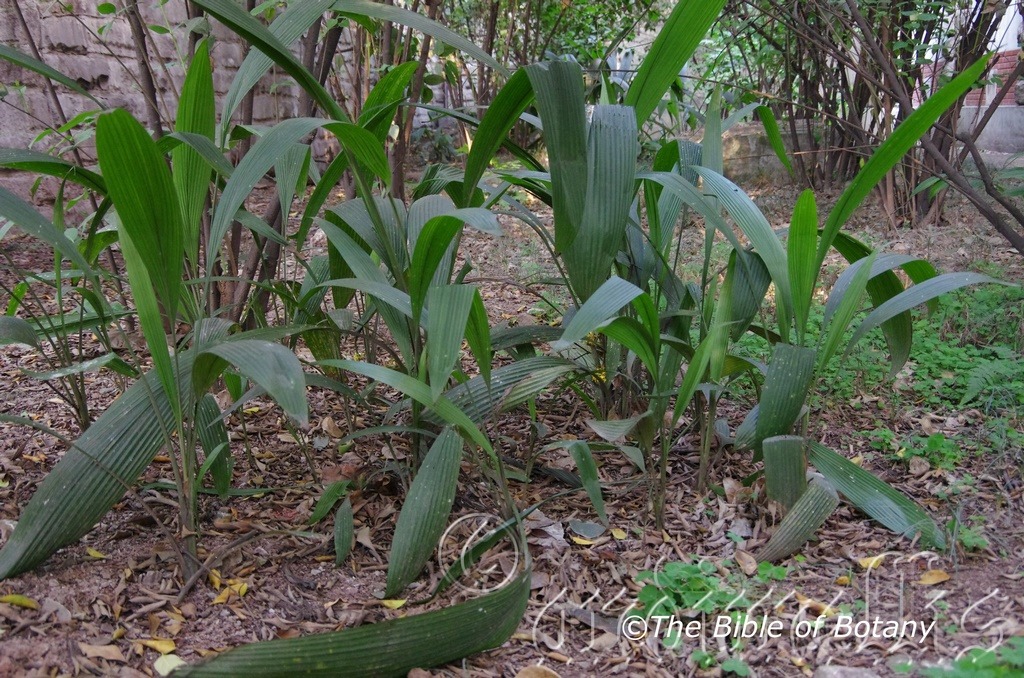
Chong Qing China
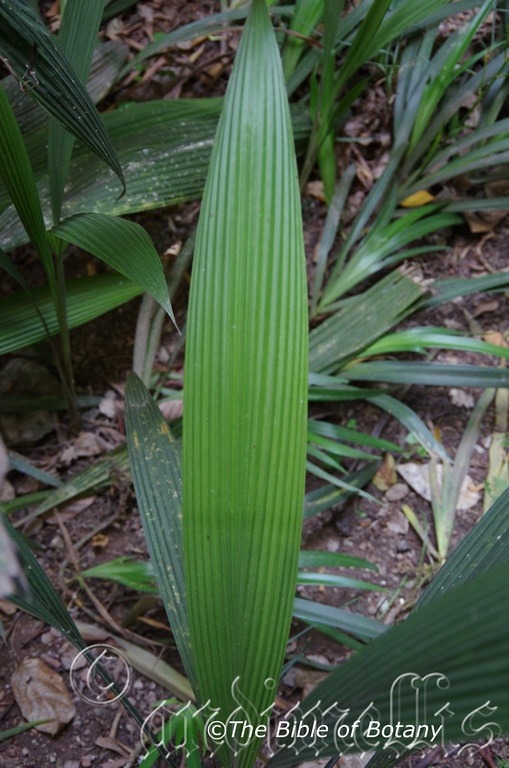
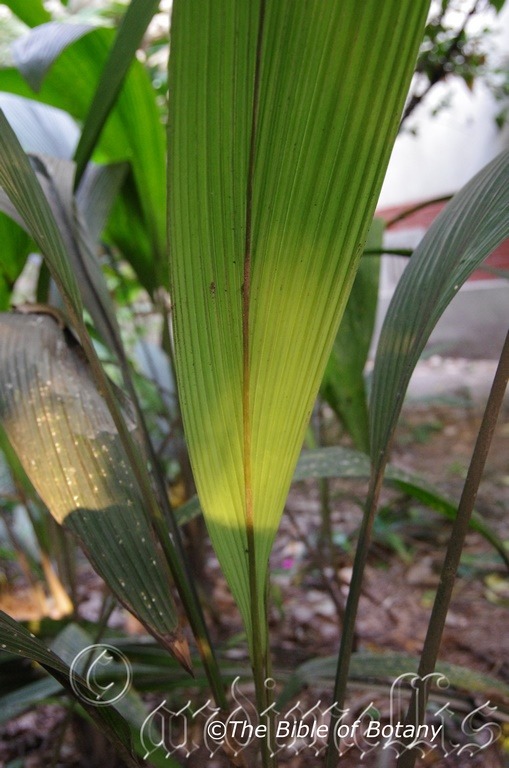
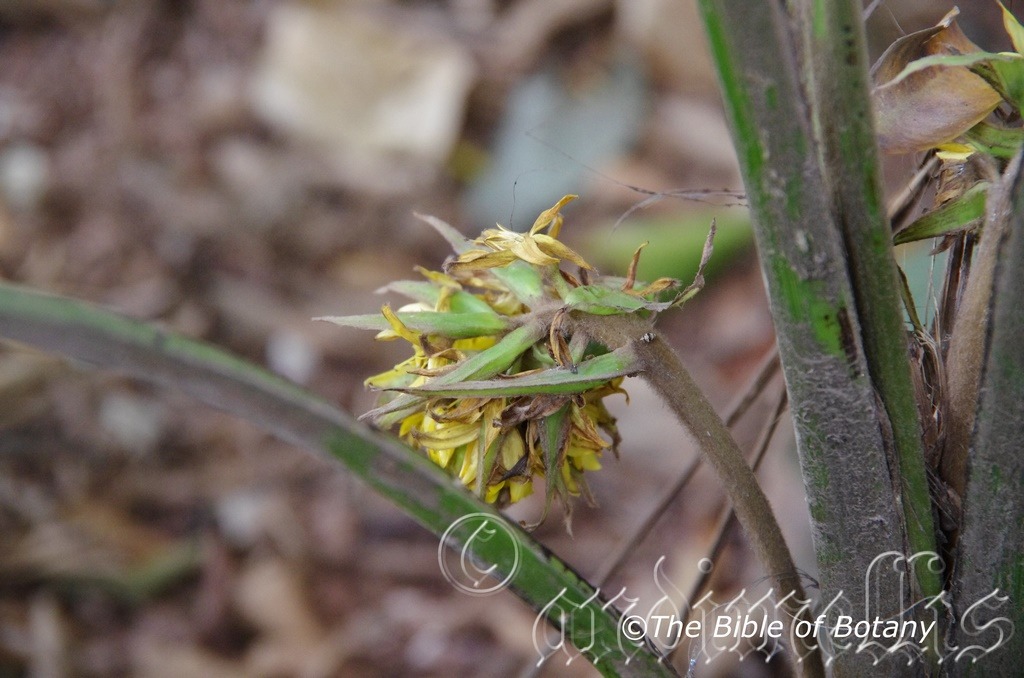
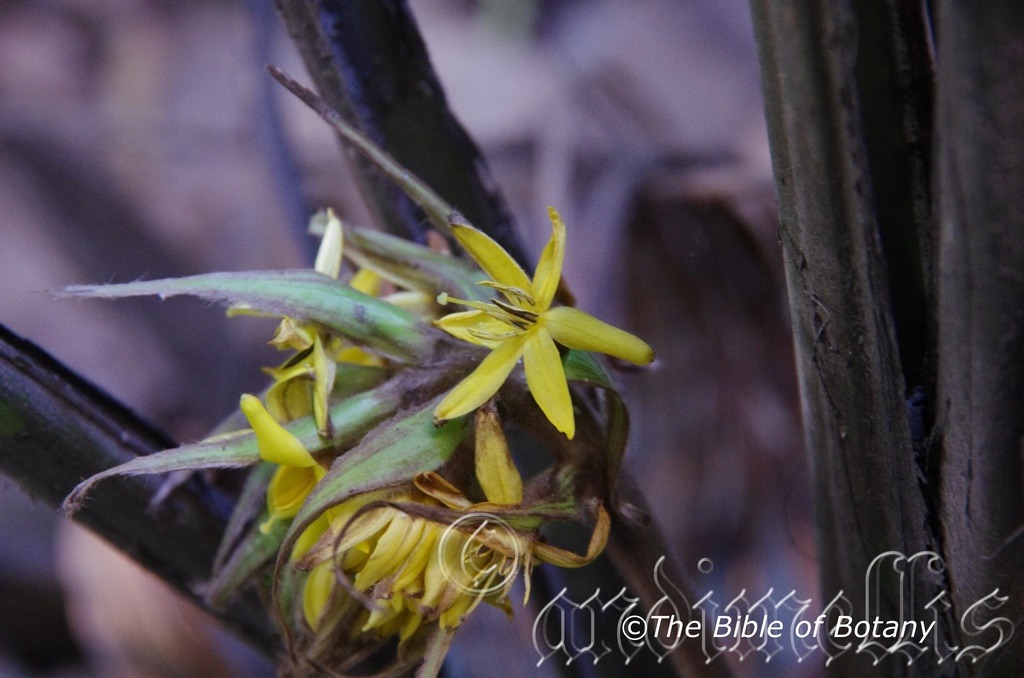
Molineria capitulata
Classification:
Division: Magnoliophyta
Class: Apogonia
Sub Class: Commelinideae
Order: Asparagales
Family: Hypoxidaceae
Genus: From Curvus, which is Latin for a weevil. It refers to the ovary, which resembles a weevil.
Specie: From Capillāta, which is Latin for a pin head. It refers to the flowers, which form in small, compact heads.
Sub specie:
Common Name: Palm Grass.
Distribution:
Molineria capitulata is unknown to the author. There are a number of entries referring to it being native to tropical Australia but I have no conclusive proof that the plant is actually native to the areas marked on the maps. It is in several Botanic gardens under the native sections and is reported as being found in Darwin in the Northern Territory and in Cook Town on Cape York Peninsula. However no modern scientific journal has it listed. It is also widespread from the Cook Islands in the east through to Indo-China in the west. Again its world distribution suggests it may be pan tropical and native to the top end and not feral. Fossil records from the ANBG fossils also show that Curciligo capitata at least did exist in Australia until very recently. I have included it here but will leave it up to the individual to make up their own mind as to whether or not it is native.
Habitat Aspect Climate:
Note: My observations, measurements and photographs are based on plants from south eastern China.
Molineria capitulata distribution worldwide appears to be decreasing at an alarming rate. Curculigo capitata prefer semi shaded position to dappled shade. It grows in or near coastal estuaries and littoral rainforests and well developed rainforests. The altitude ranges from 5 meters ASL. to 760 meters ASL.
The temperatures range from 12 degrees in July to 39 degrees in January.
The rainfall ranges from lows of 2200mm to 3600mm average per annum.
Soil Requirements:
Molineria capitulata prefers soils that have high sand content, sandy loams to light gravelly clays and medium clays where permanent moisture is available. The soils pH ranges from 6pH to 7pH. It is tolerant of waterlogged soils and is often inundated during the wet season and during frequent monsoonal rains. Mildly saline soils are tolerated as are salt laden winds.
Height & Spread:
Wild Plants: 0.3m to 1.2m by 0.6m x 1m
Characteristics:
Curculigo capitulata grows as a strong understory plant, amongst small shrub and grasses. It is perennial herbs growing from rhizomes. The tuberous rhizomes are thick with creeping, slender stolons that measure 45mm to 160mm in length by 6mm to 12mm in diameter.
The 4 to 7 oblong to oblanceolate leaves are strongly longitudinally plicate and measure 300mm to 800mm in length by 60mm to 140mm wide. The bases are tapering to a point while the apex taper and are acute. The concolourous laminas are grass-green, glabrous and sparsely covered in fawn puberulent hairs. The pseudo petiole measures 60mm to 100mm in length.
The 2 to 10 inflorescences of Molineria capitulata are clustered cymes. The peduncles arise from near the base of the leaves. The peduncles and pedicels are densely covered in long, soft, fawn to fawn-brown villous hairs. The peduncules measure 150mm to 300mm while the pedicels measure 7mm to 9mm in length. The nodding, capitate to sub ovoid heads measure 25mm to 50mm in diameter. The ovate-lanceolate to lanceolate bracts are densely covered in fawn to fawn-brown villous hairs and measure 15mm to 25mm. The yellow perianth segments are ovate-oblong and measure 8mm to 9mm in length by 3.5mm to 4mm in width. The apexes are obtuse with the outer teals are glabrous abasically and moderately to densely covered in fawn to brown villous hairs adaxially. The inner segments are glabrous abaxially and covered in fawn villous hairs adaxially along the midvein and at the base. The tepals measure 6mm to 7.5mm in length.
The 6 bright yellow filaments measure 1 mm in length while the linear anthers measure 4.5mm to 5mm in length.
The ovary is sub globose to oblong and covered in fawn villous hairs. The bright yellow, slender style measures 6mm to 7mm in length. The stigma is a subcapitate swelling. Flowering occurs from late October to early November. (We have reversed the flowering season from Chong Qing China to Australian seasons. )
The fruits of Molineria capitulata are sub globose berries. The berries measures 4mm to 5mm in length by 4mm to 5mm in diameter. The seeds are glossy black with a persistent stipe. The fruits ripen from late January to early February.
Wildlife:
Molineria capitulata’s wildlife is unknown to the author.
Cultivation:
Molineria capitulata is an interesting small foliage plant that warrants a place in every native rainforest garden or shaded place in the garden. It is ideal in almost every setting where Water is a feature near ponds, at the edge of a rain forest in semi shaded court yards or around shady swimming pools.
If it is given adequate moisture, plenty of mulch for moisture retention and an even soil temperature, applying native plant fertilizers on a regular basis the plants will respond with good lush foliage and bloom over a long period. Because of their size It is ideal for small courtyards or entries. Try planting them at the base of rainforest trees or palms to remove the starkness that is often seen with bare ground. Curculigo capitulata is a good indoor plant if the position isn’t too dark.
It often reaches its full potential in just 1 year and flower from the first year.
It is a great accent plant besides pathways, shady rockeries, along sandy clay banks or along drive ways or adjacent to natural bush gardens. Mass plantings of 5 or more plants even in small areas; really do the plants justification especially when it is in flower. Medium fish or frog ponds will benefit from Curculigo capitulata .
If it is placed around a pool, courtyards or other confined spaces then plant them in small groups or scatter plant them for a more informal natural look against walls to help soften them. Using rocks and small boulders can make the pool or any water feature appear like an oasis. The leaves and flowers can make a great start for the confined rain forest setting. They can be grown indoors in a well-lit environment.
Molineria capitulata can become quite vigorous when conditions are suitable so it is best placed where they can be confined especially in the tropics and monsoonal zones.
Propagation:
Seeds: Molineria capitulata seeds do not require treatment before sowing. Sow fresh seeds directly into a seed raising mix and cover with 5mm of the mix. When the seedlings are 25mm to 50mm tall, prick them out and plant them into 50mm native tubes using a seed raising mix.
Once the seedlings roots reach the bottom of the tubes plant them out into their permanent position. Mass plantings can be achieved with spacing of 0.5 meters.
Division: Plants are usually produced from the corms or division as these are easy and need little attention. Plants can be divided from division by simply digging up the old plants. With a sharp sterile knife cut them so each new plant has some root and a bunch of leaves. Remove the top of the leaves by cutting with sterile pair of scissors. Place them into a 150mm pot and cover the roots with potting mix to a depth of 20mm to 30mm. Water in using sea weed or fish emulsion extract. Place in a warm semi shaded spot. Once the roots reach the bottom of the pot plant them out in their permanent position.
Corms if small can be placed in an appropriate size pot and treated as a cutting. The best corms to use are those that have already sprouted or are showing signs of shoots emerging from the corm.
Fertilize using Seaweed, fish emulsion or organic chicken pellets soaked in water on an alternate basis. Fertilize every two months until the plants are established then twice annually in early September or March to maintain health, vitality and better flowering.
Further Comments from Readers:
Hi reader, it seems you use The Bible of Botany a lot. That’s great as we have great pleasure in bringing it to you! It’s a little awkward for us to ask, but our first aim is to purchase land approximately 1,600 hectares to link several parcels of N.P. into one at The Pinnacles NSW Australia, but we need your help. We’re not salespeople. We’re amateur botanists who have dedicated over 30 years to saving the environment in a practical way. We depend on donations to reach our goal. If you donate just $5, the price of your coffee this Sunday, We can help to keep the planet alive in a real way and continue to bring you regular updates and features on Australian plants all in one Botanical Bible. Any support is greatly appreciated. Thank you.
In the spirit of reconciliation we acknowledge the Bundjalung, Gumbaynggirr and Yaegl and all aboriginal nations throughout Australia and their connections to land, sea and community. We pay our respect to their Elders past, present and future for the pleasures we have gained.
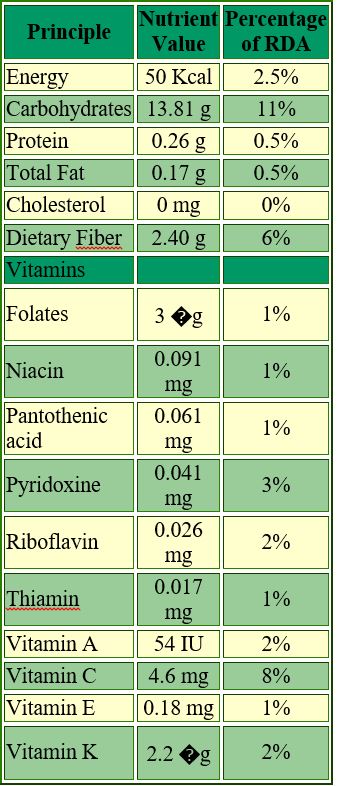
Momordica balsamina
Classification:
Unranked: Eudicots
Unranked: Rosids
Order: Cucurbitales
Family: Cucurbitaceae
Genus: From Momordica, which is Latin for to bite. It refers to the seeds, which look as though someone has taken a bite out of the margins.
Specie: From Balsamon, which is Ancient Greek or Balsamum, which is Latin for aromatic. It refers to plants, which usually have aromatic leaves or at times fruits.
Sub species:
Common Name: Balsam Apple or Little Bitter Gourd or Bitter Melon.
Distribution:
Momordica balsamina is a widespread species which is probably more common than reported. In western Australia it is found from Weedong Lake to Broome and Derby north of Carnarvon and on the Swan River Plain near Perth.
It is bounded by Darwin to the Macarther River, Uluru, in the Northern Territory and Coober Pedy, Murtamurta Homestead and Well in South Australia to near the border with New South Wales
In the east it is found south from Cranbrook in north Queensland to Cowra in New South Wales.
https://avh.ala.org.au/occurrences/search?taxa=Momordica+balsamina#tab_mapView
Habitat Aspect Climate:
Momordica balsamina prefers light dappled shade to full sun. It grows in riverine riparian zones in open woodlands or grass lands. The altitude ranges from 10 meter ASL to 460 meters ASL.
The temperatures range from minus 1 degree in August to 42 degrees in January.
The rainfall ranges from lows of 180mm to an average of 2600mm.
Soil Requirements:
Momordica balsamina prefers better quality sands to sandy loams to light fatty clays. The soils are usually derived from decomposed sandstones or calcareous limestones. The soils pH ranges from 5pH to 7.7pH. It does not tolerate waterlogged soils. Non saline soils to moderately saline soils are tolerated.
Height & Spread:
Wild Plants: 1m to 1.5m by 1m to 3m.
Characteristics:
Momordica balsamina grows as an annual or perennial creeper with pale green stems not exceeding 10mm in diameter. The stems are square in cross section near the apex and glabrous.
Momordica balsamina’s 50mm to 70mm diameter leaves have 5 to 7 deep lobes. The individual lobes are sinuately toothed or shallowly lobed with acute apexes. The petioles measure 10mm to 50mm in length. The concolourous laminas are pale green, dull and glabrous. The mid vein is prominent on the lower lamina and is distinctly visible on the upper lamina. The lateral lobe veins are distinctly visible on both laminas. The petioles are glabrous. Leaves emit a faint odour reminiscent of cold vomit when freshly crushed.
The tendrils are simple unbranched, attached near the leaf axils and are pale green similar to the leaves.
The inflorescence of Momordica balsamina are born solitary from the leaf axis. The male pedicels measure 20mm to 80mm in length with a 10mm to 15mm cordate to orbicular bract slightly below the middle of the pedicel. The calyx lobes measure 4mm to 6mm in length. The pale yellow petals are obovate to spathulate and measure 10mm to 15mm in length by 10mm to 15mm in diameter. The anthers are cohering while the filaments are free. There are two bilocular anthers to one unilocular anther.
The female flowers pedicles measure 8mm to 40mm in length. The bract is below the mid point of the petiole or is absent. The calyx lobes measure 4mm to 6mm in length. The yellow petals are ovate to obovate and measure 10mm to 12mm in length by 10mm to 12mm in diameter. The flowers appear from mid July right through to November.
Momordica balsamina fruit is a glabrous ovate to oblong drupe pointed at both ends. The pale green coriaceous capsules have longitudinal ridges with large papillate lumps along these ridges and sparsely and finely papillose lumps between the ridges. The drupes measure 30mm to 70mm in length by 30mm to 50mm in diameter. The dehiscing drupe splits into three equal parts. The inner white pulp turns to sweet scarlet viscous treacle as the dehiscing takes place. The woody brownish-grey, rectangular, dull seeds are covered in a scarlet red aril.
The seeds measure 10mm to 13mm in length by 7mm to 8mm in width and 3.5mm to 5mm in depth.
| Principle | Nutrient Value | Percentage of RDA |
| Energy | 50 Kcal | 2.5mm |
| Carbohydrates | 13.81 g | 11mm |
| Protein | 0.26 g | 0.5mm |
| Total Fat | 0.17 g | 0.5mm |
| Cholesterol | 0 mg | 0mm |
| Dietary Fiber | 2.40 g | 6mm |
| Vitamins | ||
| Folates | 3 �g | 1mm |
| Niacin | 0.091 mg | 1mm |
| Pantothenic acid | 0.061 mg | 1mm |
| Pyridoxine | 0.041 mg | 3mm |
| Riboflavin | 0.026 mg | 2mm |
| Thiamin | 0.017 mg | 1mm |
| Vitamin A | 54 IU | 2mm |
| Vitamin C | 4.6 mg | 8mm |
| Vitamin E | 0.18 mg | 1mm |
| Vitamin K | 2.2 �g | 2mm |
https://www.fruitsinfo.com/exotic-fruits.php
Wildlife:
Momordica balsamina’s wildlife is unknown to the author.
While Momordica balsamina fruits are edible the seeds and leaves are toxic when eaten. www.plantzafrica.com/plantklm/momordbalsam
The red arils are sweet with slight cucumber flavour. The flesh tastes similar to Momordica chararantia and becomes sweeter with age.
Cultivation:
Momordica balsamina is a fast growing plant which is worthwhile growing for the beautiful fruits when in fruit or for a culinary delight. They always look a little weedy no matter where or how it is placed even where adequate ground moisture is retained and whether it is grown in light shade or full sun. It is very suitable on sandy clay soils. It is most suitable for small, medium and large gardens in sub-tropical, tropical gardens or semi-arid gardens. As garden subjects they will grow from 2 meters to 3 meters in height by 1 meter to 2 meters across when grown in the open on a trellis.
The immature fruits and tender vine tips are used in a variety of culinary preparations. The fruits and shoots are soaked in salt water to remove some of their bitterness and then boiled, fried or pickled.
The fruit of bitter gourd fruit is similar in nutritional value compared to other cucurbits with the notable exceptions that it is much higher in folate and vitamin C.
Momordica balsamina are best planted out once the day time temperatures are maintained over 18 degrees centigrade and nocturnal temperatures remain above 6 degrees centigrade grass temperature.
The optimum pH. for the soil is between 6.0pH and 6.7pH.
Plant the seeds out in pre prepared beds that are a meter wide and 200mm high in sandy loams and 300 mm in height on heavier soils that receive greater rainfall. Plant the seeds at 400mm to 500mm centres with 2 or 3 seeds in a hole. In cooler areas strike the seeds in a hot house or warm sunny bush hose but make sure the temperatures remain above 6 degrees or the seeds will have a tendency to rot off. Plant seedlings planted at 400mm to 500mm centres. The seedlings should be ready for transplanting in 12 to 15 days. If it isn’t, discard them as slow growing seedlings in too cold of weather will not produce good fruit quantities.
Use pyramid trellis or wire trellis’s with 1 meter bases.
Remove the lateral shoots from the bottom 9 to 12 nodes has a positive effect on total yield as these usually only produce male flowers. The plants can have the lead shoot nipped out once it reaches 0.5 meters to 2meters in height.
Maintain a weed free zone around the plants by mulching with straw. Fertilize using full strength seaweed, fish emulsion or organic chicken pellets soaked in water and apply the liquid on an alternate basis. Fertilize every month until the plants until flowering ceases or the plants are in decline.
Plants are subject to aphids so make sure a good supply of lady beetles and Green lace wing are on hand. We never had to worry about aphids as these 2 predators were always on hand naturally.
Good healthy plants in well prepared and well maintained soil will produce between 8 tonne and 10.5 tonnes of fruit a hectare. This is a production rate of around 0.5 to 0.55 kilograms a plant. We have produced over this rate of fruit on our seed production area of the orchard using 100mm organic methods.
Propagation:
Seeds: Momordica balsamina seeds can be sown directly into a prepared plot.
Once the seedlings reach 100mm to 250mm in height they can be thinned out to two plants per plot.
Fertilize using seaweed, fish emulsion or organic chicken pellets soaked in water on an alternate basis. Fertilize every month until the female flower buds start to subside in autumn to maintain better health, vitality, flowering and fruit.
Further Comments from Readers:
Hi reader, it seems you use The Bible of Botany a lot. That’s great as we have great pleasure in bringing it to you! It’s a little awkward for us to ask, but our first aim is to purchase land approximately 1,600 hectares to link several parcels of N.P. into one at The Pinnacles NSW Australia, but we need your help. We’re not salespeople. We’re amateur botanists who have dedicated over 30 years to saving the environment in a practical way. We depend on donations to reach our goal. If you donate just $5, the price of your coffee this Sunday, We can help to keep the planet alive in a real way and continue to bring you regular updates and features on Australian plants all in one Botanical Bible. Any support is greatly appreciated. Thank you.
In the spirit of reconciliation we acknowledge the Bundjalung, Gumbaynggirr and Yaegl and all aboriginal nations throughout Australia and their connections to land, sea and community. We pay our respect to their Elders past, present and future for the pleasures we have gained.
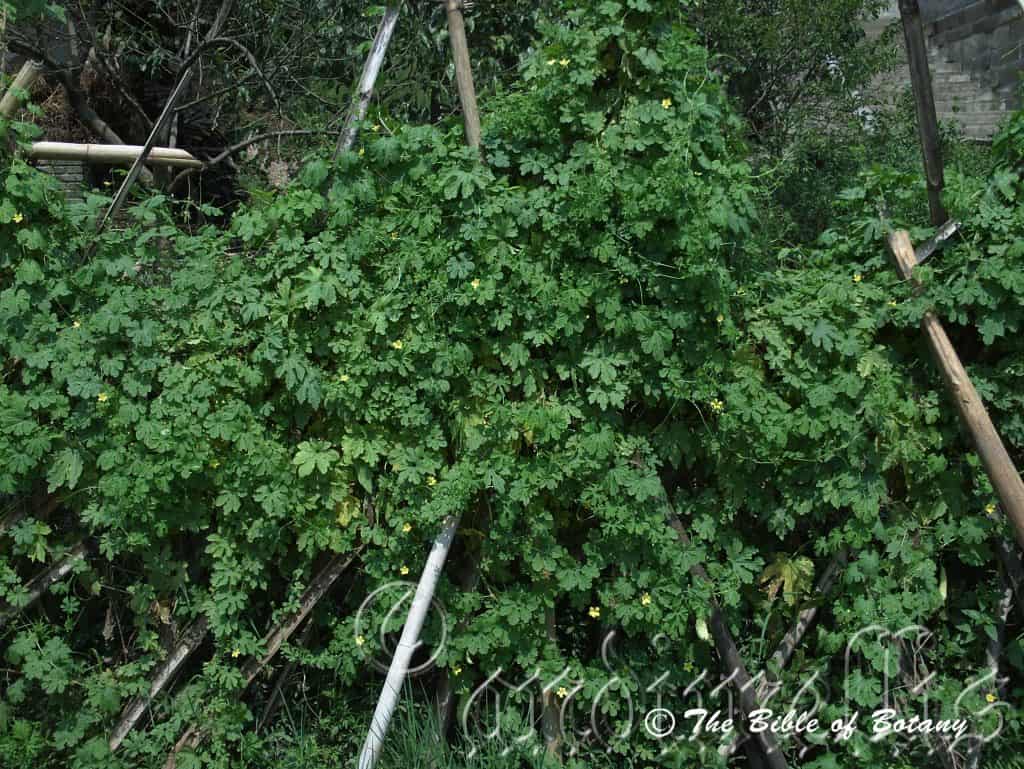
Lu Xian Xichuan China
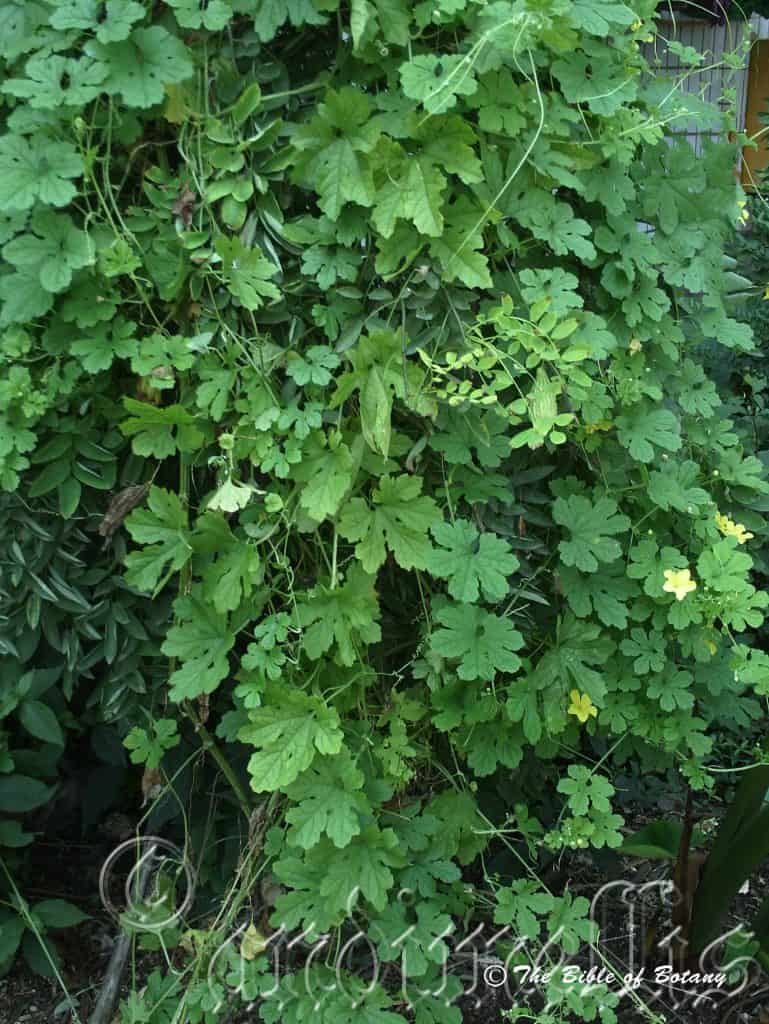
Lu Xian Xichuan China
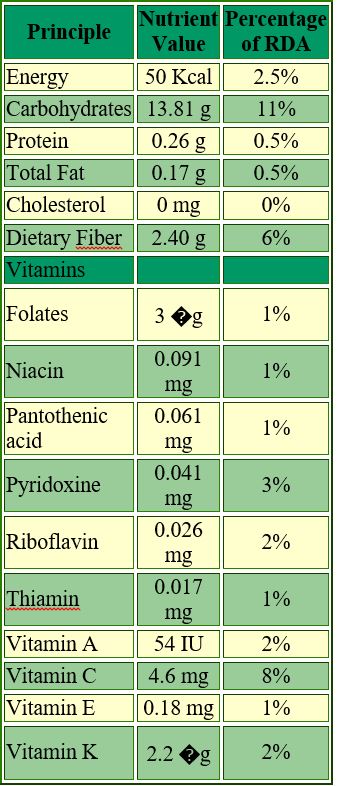
Momordica charantia
Classification:
Unranked: Eudicots
Unranked: Rosids
Order: Cucurbitales
Family: Cuccurbitacea
Genus: From Momordica, which is Latin for to bite. It refers to the seeds, which look as though someone has taken a bite out of the margins.
Specie: From Charanta, which is Latinized for the given of the bitter melon Mormordica charantica. It refers to the local name for the bitter melon and was adopted by Carl Linnaeus for the fruit.
Sub species:
Common Name: Bitter Melon.
Distribution:
Momordica charantia is a widespread species which is found in far north eastern Queensland. It is not conclusively proven that the plant is native to Australia or whether it was introduced prior to British occupation. It has a widespread distribution from China through to India and east to New Guinea so the plants in northern Queensland could very well be native. If not it is displaying many characteristics of the wild plants found further to the north.
https://avh.ala.org.au/occurrences/search?taxa=Momordica+charantia#tab_mapView
Habitat Aspect Climate:
Momordica charantia prefers light dappled shade to full sun. It recolonize disturbed ground quickly in well-developed tropical rainforests and warm sub-tropical rainforests. The altitude ranges from 10 meter ASL to 100 meters ASL in Australia.
The temperatures range from 6 degrees in August to 38 degrees in January.
The rainfall ranges from lows of 1800mm to an average of 3200mm.
Soil Requirements:
Momordica charantia prefers to grow on better quality sandy loams to light gritty clays. The soils are usually derived from decomposed granites or basalts. The soils pH ranges from 5pH to 6pH. It does not tolerate waterlogged soils. Non saline soils to moderately saline soils are tolerated.
Height & Spread:
Wild Plants: 2m to 6m by 1m to 3m.
Characteristics:
Momordica charantia grows as a small creeper with pale green stems not exceeding 20mm in diameter. The stems are square in cross section near the apex and covered in white hirtellous hairs.
Momordica charantia’s 30 to 100mm diameter leaves have 5 to 7 deep lobes. The concolourous laminas are pale green, dull and sparsely covered in white hirtellous to puberulent hairs. The margins are toothed and undulating while the lamina may or may not curve slightly upwards from the mid vein. The mid vein is prominent on the lower lamina and is distinctly visible on the upper lamina. The lateral lobe veins are distinctly visible on both laminas. The petioles are glabrous to sparsely covered in short white pubescent hairs. The petioles measure 30mm to 50mm in length. Leaves emit a rancid odour when freshly crushed.
The tendrils are simple unbranched, attached near the leaf axils and are pale green similar to the leaves.
The inflorescence of Momordica charantia are born solitary from the leaf axis. The male pedicels measure 50mm to 70mm in length with a 10mm to 20mm cordate to orbicular bract slightly below the middle of the pedicel. The calyx lobes measure 4mm to 6mm in length. The petals are obovate to spathulate and measure 10mm to 12mm in length by 10mm across the widest point and form a short funnel. The anthers are cohering while the filaments are free. There are two bilocular anthers to one unilocular anther.
The female flowers pedicles measure 5mm to 15mm in length. The calyx lobes measure 4mm to 6mm in length. The petals are ovate to obovate and measure 10mm to 12mm in diameter. The flowers appear from mid July right through to November.
Momordica charantia fruit is a glabrous ovate to oblong drupe pointed at both ends. The pale green coriaceous capsules have longitudinal ridges with papillate lumps along these ridges. The drupes measure 60mm to 100mm in length by 20mm to 30mm in diameter. The dehiscing drupe splits into three equal parts. The inner white pulp turns to sweet scarlet viscous treacle as the dehiscing takes place. The woody grey dull seeds are covered in a scarlet red aril.
The flat rhomboidal seeds are dull grey-fawn and measures 9mm to 12mm in length by 4mm to 6mm across by 3mm to 4mm in depth.
Wildlife:
Momordica charantia’s wildlife is unknown to the author.
While Momordica charantia fruits are edible the seeds and leaves have some toxins when eaten without treatment.
www.plantzafrica.com/plantklm/momordbalsam
The red arils are sweet with a slight cucumber flavour. The flesh tastes similar to Momordica chararantia and becomes sweeter with age.
Cultivation:
Momordica charantia is a fast growing plant which is worthwhile growing for the beautiful fruits when in fruit or for a culinary delight. They always look a little weedy no matter where or how it is placed even where adequate ground moisture is retained and whether it is grown in light shade or full sun. It is very suitable on sandy clay soils. It is most suitable for small, medium and large gardens close to the coast in temperate, subtropical or tropical gardens. As garden subjects they will grow from 2 meters to 3 meters in height by 4 meters to 6 meters across when grown in the open.
The fruits offered for sale are the exotic variety not the wild native forms. It is best treated as an annual and are a great plant grown with other permanent creepers. They can be steamed or filled with pork to help alleviate the bitterness of the fruit. Garden grown fruits can attain 200mm to 300mm in length by 40mm to 75mm in diameter and are very pale green to deep grass-green in colour.
It is best used adjacent to small areas of bush close to paths or the house so the fruits colour can be appreciated and regularly harvested. They can be planted in small groups of 2 or 3 to enhance their appearance and bushiness.
The immature fruits and tender vine tips are used in a variety of culinary preparations. The fruits and shoots are soaked in salt water to remove some of their bitterness and then boiled, fried or pickled.
The fruit of bitter gourd fruit is similar in nutritional value compared to other cucurbits with the notable exceptions that it is much higher in folate and vitamin C. The vine tips are an excellent source of vitamin A.
I believe the native forms would have similar nutrient content to their exotic cultivated cousins. Work is being done with the native forms due to the genetic pool offering a greater choice of colour, texture and flavours including the variation in bitterness.
| Principle | Nutrient Value | Percentage of RDA |
| Energy | 50 Kcal | 2.5mm |
| Carbohydrates | 13.81 g | 11mm |
| Protein | 0.26 g | 0.5mm |
| Total Fat | 0.17 g | 0.5mm |
| Cholesterol | 0 mg | 0mm |
| Dietary Fiber | 2.40 g | 6mm |
| Vitamins | ||
| Folates | 3 .mg | 1mm |
| Niacin | 0.091 mg | 1mm |
| Pantothenic acid | 0.061 mg | 1mm |
| Pyridoxine | 0.041 mg | 3mm |
| Riboflavin | 0.026 mg | 2mm |
| Thiamin | 0.017 mg | 1mm |
| Vitamin A | 54 IU | 2mm |
| Vitamin C | 4.6 mg | 8mm |
| Vitamin E | 0.18 mg | 1mm |
| Vitamin K | 2.2 mg | 2mm |
https://www.fruitsinfo.com/exotic-fruits.php
Momordica charantia are best planted out once the day time temperatures are maintained over 18 degrees centigrade and nocturnal temperatures remain above 6 degrees centigrade grass temperature.
The optimum pH. for the soil is between 6.0pH and 6.7pH.
Plant the seeds out in pre prepared beds that are a meter wide and 200mm high in sandy loams and 300 mm in height on heavier soils that receive greater rainfall. Plant the seeds at 400mm to 500mm centres with 2 or 3 seeds in a hole. In cooler areas strike the seeds in a hot house or warm sunny bush hose but make sure the temperatures remain above 6 degrees or the seeds will have a tendency to rot off. Plant the seedlings at 400mm to 500mm centres. The seedlings should be ready for transplanting in 12 to 15 days if it isn’t discard them as slow growing seedlings in too cold weather will not produce good fruit quantities.
Use pyramid trellis or wire trellis’s with 1 meter bases.
Remove the lateral shoots from the bottom 9 to 12 nodes has a positive effect on total yield as these usually only produce male flowers. The plants can have the lead shoot nipped out once it reaches 0.5 meters to 2meters in height.
Maintain a weed free zone around the plants by mulching with straw. Fertilize using full strength seaweed, fish emulsion or organic chicken pellets soaked in water and apply the liquid on an alternate basis. Fertilize every month until the plants until flowering ceases or the plants are in decline.
Plants are subject to aphids so make sure a good supply of lady beetles and Green lace wing are on hand. We never had to worry about aphids as these 2 predators were always on hand naturally.
Good healthy plants in well prepared and well maintained soil will produce between 8 tonne and 10.5 tonnes of fruit a hectare. This is a production rate of around 0.5 to 0.55 kilograms a plant. We have produced over this rate of fruit on our seed production area of the orchard using 100mm organic methods.
Propagation:
Seeds: Momordica charantia seeds can be sown directly into a prepared plot. Plant 4 or 5 seeds in each prepared plot. The plots should be between 2 meters and 3 meters apart. It is best grown on a small trellis to 2 meters in height.
Once the seedlings reach 100mm to 250mm in height they can be thinned out to two plants per plot.
Fertilize using seaweed, fish emulsion or organic chicken pellets soaked in water on an alternate basis. Fertilize every two months until the plants are established then twice annually in early September and March to maintain better health, vitality and better flowering.
Further Comments from Readers:
Hi reader, it seems you use The Bible of Botany a lot. That’s great as we have great pleasure in bringing it to you! It’s a little awkward for us to ask, but our first aim is to purchase land approximately 1,600 hectares to link several parcels of N.P. into one at The Pinnacles NSW Australia, but we need your help. We’re not salespeople. We’re amateur botanists who have dedicated over 30 years to saving the environment in a practical way. We depend on donations to reach our goal. If you donate just $5, the price of your coffee this Sunday, We can help to keep the planet alive in a real way and continue to bring you regular updates and features on Australian plants all in one Botanical Bible. Any support is greatly appreciated. Thank you.
In the spirit of reconciliation we acknowledge the Bundjalung, Gumbaynggirr and Yaegl and all aboriginal nations throughout Australia and their connections to land, sea and community. We pay our respect to their Elders past, present and future for the pleasures we have gained.
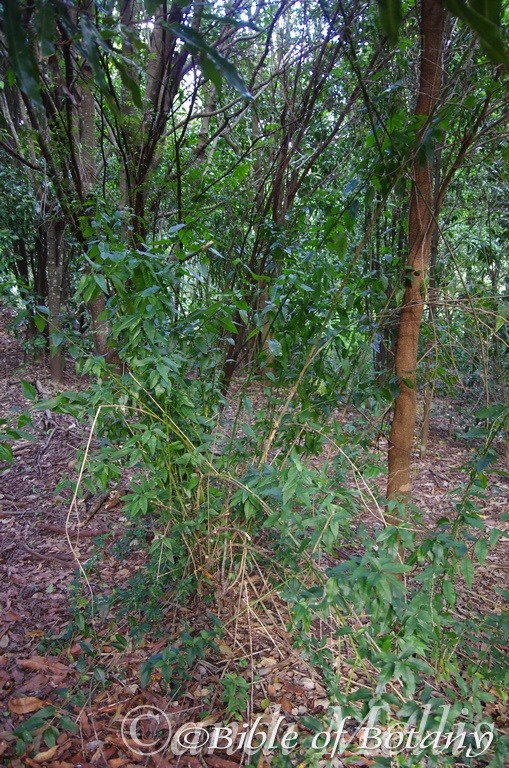
LBG Lismore NSW
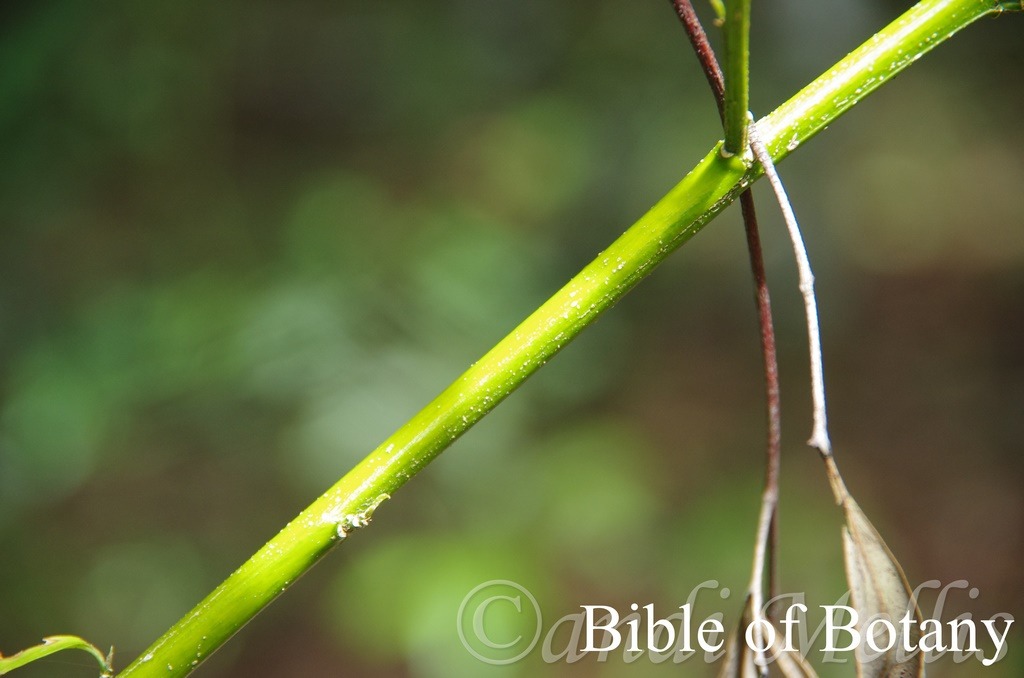
LBG Lismore NSW

LBG Lismore NSW

LBG Lismore NSW
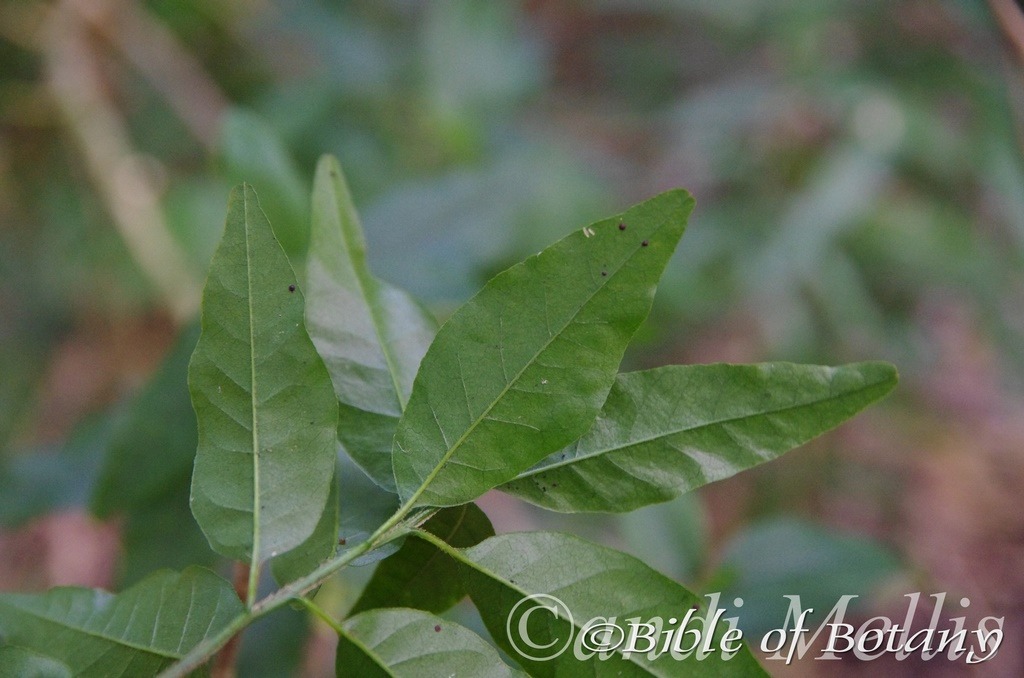
LBG Lismore NSW
Monococcus echinophorus
Classification:
Superorder: Caryophyllanae
Order: Caryophyllales
Family: Phytolaccaceae
Genus: From Monos, which is Ancient Greek for one or singular and Kokkos which is Ancient Greek for a berry or fruit. It usually refers to a dry berry type fruit.
Specie: From Ekhinos, which is Greek/Latin for a hedgehog or sea urchin and Phoros, which is a Greek suffix or Phorus, which is a Latin suffix for to bear or bearing. It refers to structures or organs, which are covered in spines.
Sub species:
Common Name:
Distribution:
Monococcus echinophorus is found south from Port Dennison near Bowen in central coastal Queensland to Swan Creek near Grafton in coastal north eastern New South Wales with 2 disjunct populations further south along the Macleay River near Kempsey and Cherry Tree Track Wellington.
https://avh.ala.org.au/occurrences/search?taxa=Monococcus+echinophorus#tab_mapView
Habitat Aspect Climate:
Monococcus echinophorus prefers dense shade to light dappled shade. It grows in moist sub-tropical rainforests especially in the riparian zones along creeks, streams or coastal creeks and streams. The altitude ranges from 5 meter ASL to 380 meters ASL.
The temperatures range from minus 1 degree in August to 36 degrees in January.
The rainfall ranges from lows of 600mm to an average of 2100mm.
Soil Requirements:
Monococcus echinophorus prefers better quality sandy loams to medium clays to medium silts. The soils are usually derived from decomposed granites, sandstones, metamorphic rocks brown basalt, black basalts or shale. The soils pH ranges from 4.5pH to 6pH. It does not tolerate waterlogged soils though seasonal inundations for short periods are tolerated. Non saline soils to very saline soils are tolerated.
Height & Spread:
Wild Plants: 1m to 3m by 2m to 3m.
Characteristics:
Monococcus echinophorus grows as a small shrub with deep green to sea-green, glabrous stems. The new shoots are deep green semi glossy and moderately covered in fine soft pulverulent hairs.
The alternate leaves are simple ovate to lanceolate and measure 30mm to 100mm in length by 10mm to 30mm wide. The glabrous petioles measure 5mm to 15mm in length. The bases are rounded-cuneate to rounded while the apexes are bluntly acuminate to mucronate. The discolourous laminas are deep green to sea-green, dull to semi glossy and glabrous on the upper lamina while the lower lamina is paler. The immature leaves and newly emerging leaves are bright glossy green and glabrous or at times sparsely to moderately covered in soft, fine white pulverulent hairs. The laminas are flat or at times are undulating and straight or decurve gently downwards on the apical half. The margins are entire to irregularly crenate. The mid vein and lateral veins are prominent on the lower laminas and are distinctly visible on the upper laminas often being sunken into the laminas. The mid vein may be slightly prominent. The domatia is pit like and is visible near the point where the lateral and main veins unite.
The inflorescences are born on disjunct elongated racemes of 15 to 25 individual flowers from the leaf axils. The flowers are sessile. The pendent racemes measure 15mm to 25mm in length after anthesis at the time of the first fruit begin to ripen. The very small greenish-blue calyx lobes are obtuse. The 4 lobes measure 1mm to 1.5mm in length by 1mm to 1.5mm in width. The lobes are divaricate and shallowly cupular.
The 12, 16 or 20 pastel green filaments measure 0.5mm to 0.7mm in length while the adnately pastel pink to pale pink or cream anthers measure 0.5mm to 0.7mm in length. The pastel green pistil measures 0.5mm to 1mm in length. The sweetly scented flowers appear from June to September.
The fruits are irregularly shaped capsules. The green coriaceous capsules turn brownish-grey when ripe. The capsules measure 4mm to 6mm in length by 5mm to 6mm in width. The styles are persistent on the burr like capsules.
Wildlife:
Monococcus echinophorus’s wildlife is unknown to the author.
Cultivation:
Monococcus echinophorus is a fast growing dense shrub for helping to establish small rainforests. It always looks green and fresh especially where adequate ground moisture is retained whether it is grown in light shade or dappled light. In cultivation it will grow 2 meters to 2.5 meters in height by 1.5 meters to 2 meters in diameter when grown in a sheltered spot in the open.
It is cold tolerant to temperatures at least as low as minus 3 degrees once established but is slow to kick on in the spring once the warmer weather returns. It should be protected until it reaches at least 2 meters in height.
If mild native fertilizers are used it will develop quickly as an understory rainforest plant.
In Native gardens it can be used for attracting butterflies, native bees, native flies or native beetles during flowering which are necessary for fertilization of the flowers.
Propagation:
Seeds: Monococcus echinophorus seeds can be sown directly into a seed raising mix. Cover the seeds with 2mm to 3mm of fine weed free mulch and keep moist. Place the tray in a warm shady position. When the seedlings are 30mm to 50mm tall, prick them out and plant them into 50mm native tubes using a good organic mix.
Once the seedlings reach 100mm to 150mm in height they can be planted out into their permanent position. Group plantings of three to five trees are particularly attractive and will give a better appearance and a stronger scent.
Cuttings: Fortunately Melaleuca viridiflora strikes easy from cuttings. Use 100mm to 150mm long half ripened material when growing from cuttings from the present season’s growth. Take them in warmer months of the year. Remove half the leaves from the bottom section being careful not to tear the bark.
1 Prepare the cutting mix by adding one third sharp clean river sand, one third peat and one third perlite. These ingredients are sterilize,
2 Select good material from non diseased plants,
3 Select semi green stems for cuttings. Look for a stem with two or three nodes,
4 Place the cutting on a flat, hard surface, and make a clean cut down one side of the cutting at the base for 10mm with a sharp sterile knife or razor blade. – This scarification of the node will increase the chances of roots emerging from this spot. Now remove all but one or two the leaves, leaving the apex leaves in tact. If the leaves are very large in proportion to the stem, cut off the apical halves.
5 Fill a saucer with water, and place a little medium strength rooting hormone into another container like a milk bottle top. Dip the node end of the cutting into the water and then into the rooting hormone. Tap off any excess hormone,
6 Use a small dipple stick or old pencil to poke a hole into the soilless potting mix. Ensure the hole is slightly larger than the stem diameter and be careful not to wipe the rooting hormone off the cuttings base, place the cuttings in a pattern ensuring the cuttings are not touching each other,
7 I like to place the pots in Plastic bags to help maintain temperature and moisture. Place in a semi shaded place like under 50mm shade cloth.
8 When the cuttings have struck, open the bag to allow air circulation for a few days to a week,
9 Once hardened off remove the cuttings from the bag and allow to further hardening for a few more days,
10 Transplant into a good potting mix to grow on.
Fertilize using seaweed, fish emulsion or organic chicken pellets soaked in water on an alternate basis. Fertilize every two months until the plants are established then twice annually in early September or March to maintain health, vitality and better flowering.
Further Comments from Readers:
Hi reader, it seems you use The Bible of Botany a lot. That’s great as we have great pleasure in bringing it to you! It’s a little awkward for us to ask, but our first aim is to purchase land approximately 1,600 hectares to link several parcels of N.P. into one at The Pinnacles NSW Australia, but we need your help. We’re not salespeople. We’re amateur botanists who have dedicated over 30 years to saving the environment in a practical way. We depend on donations to reach our goal. If you donate just $5, the price of your coffee this Sunday, We can help to keep the planet alive in a real way and continue to bring you regular updates and features on Australian plants all in one Botanical Bible. Any support is greatly appreciated. Thank you.
In the spirit of reconciliation we acknowledge the Bundjalung, Gumbaynggirr and Yaegl and all aboriginal nations throughout Australia and their connections to land, sea and community. We pay our respect to their Elders past, present and future for the pleasures we have gained.
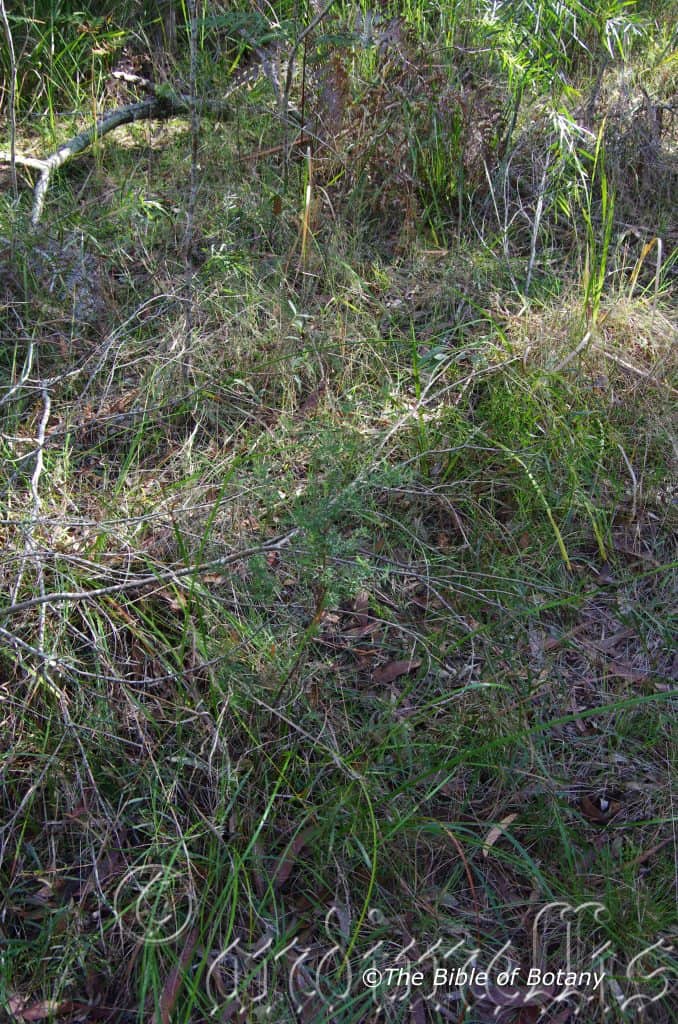
Pillar Valley NSW
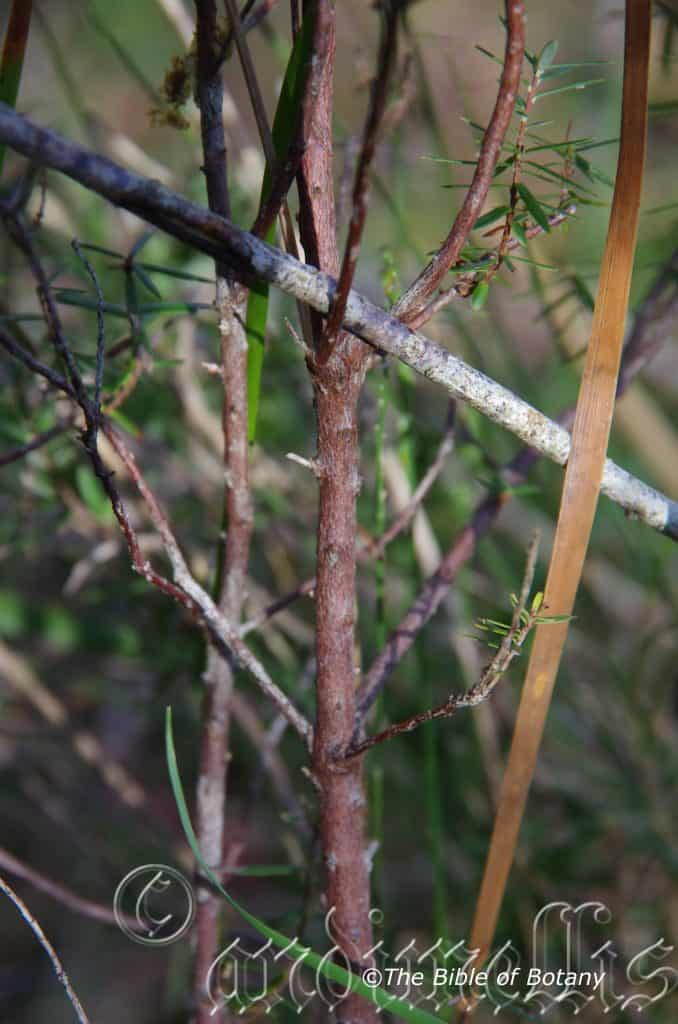
Pillar Valley NSW
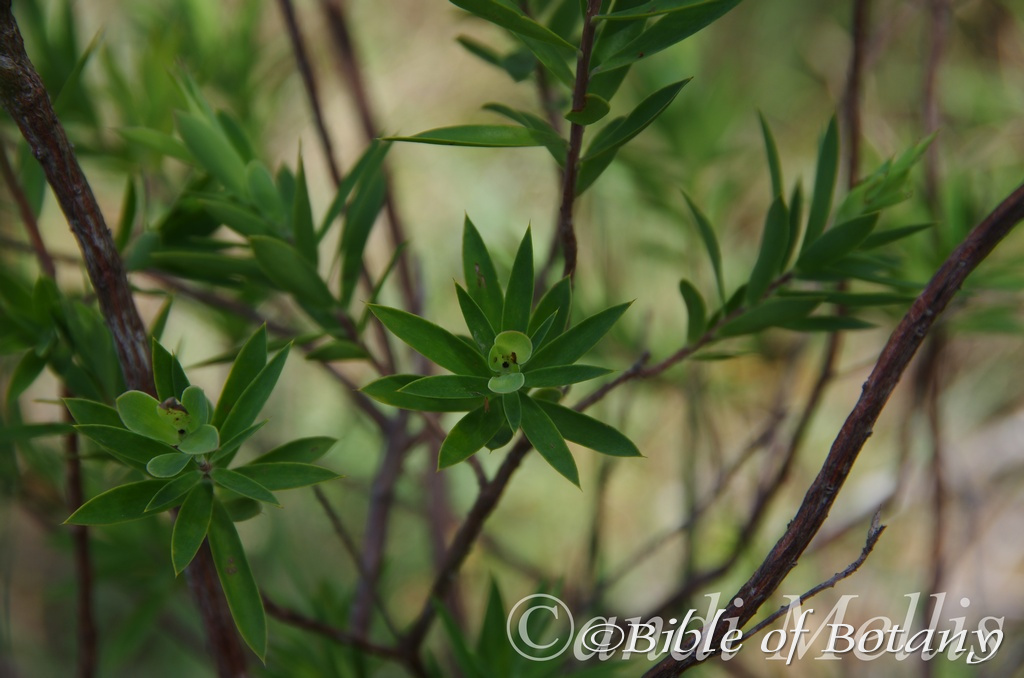
Fortis Creek National Park NSW
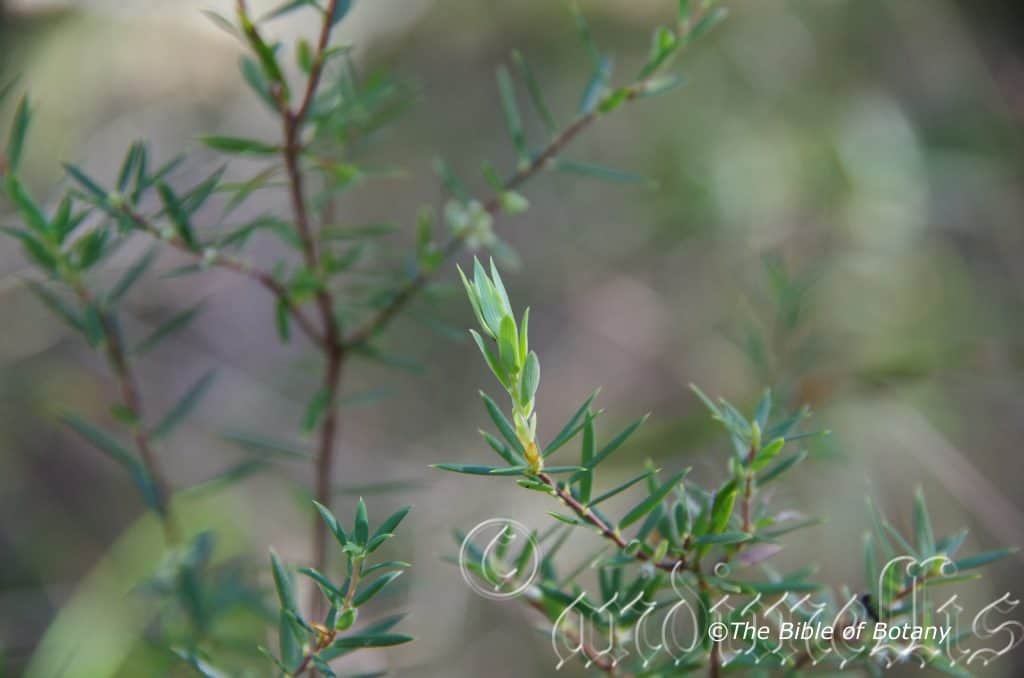
Pillar Valley NSW
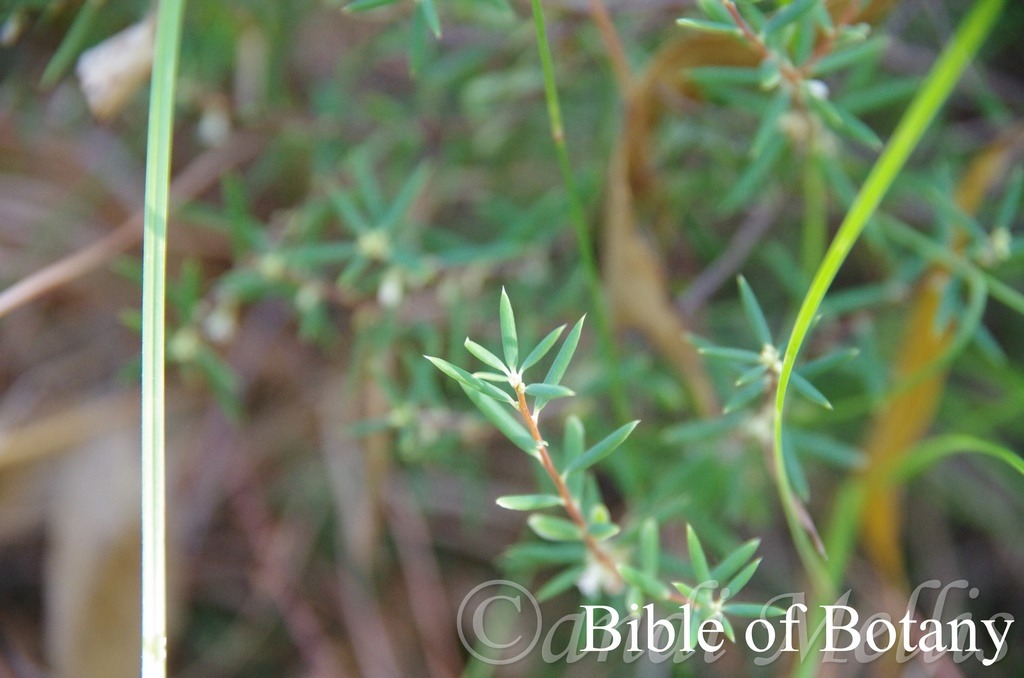
Sherwood Forest Reserve North NSW
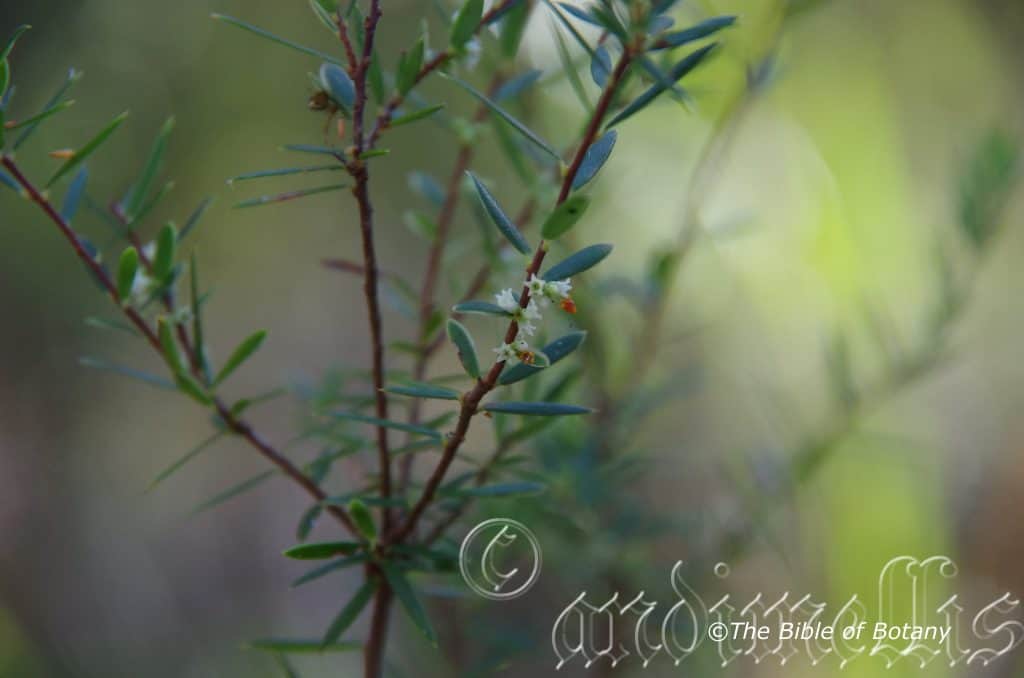
Pillar Valley NSW
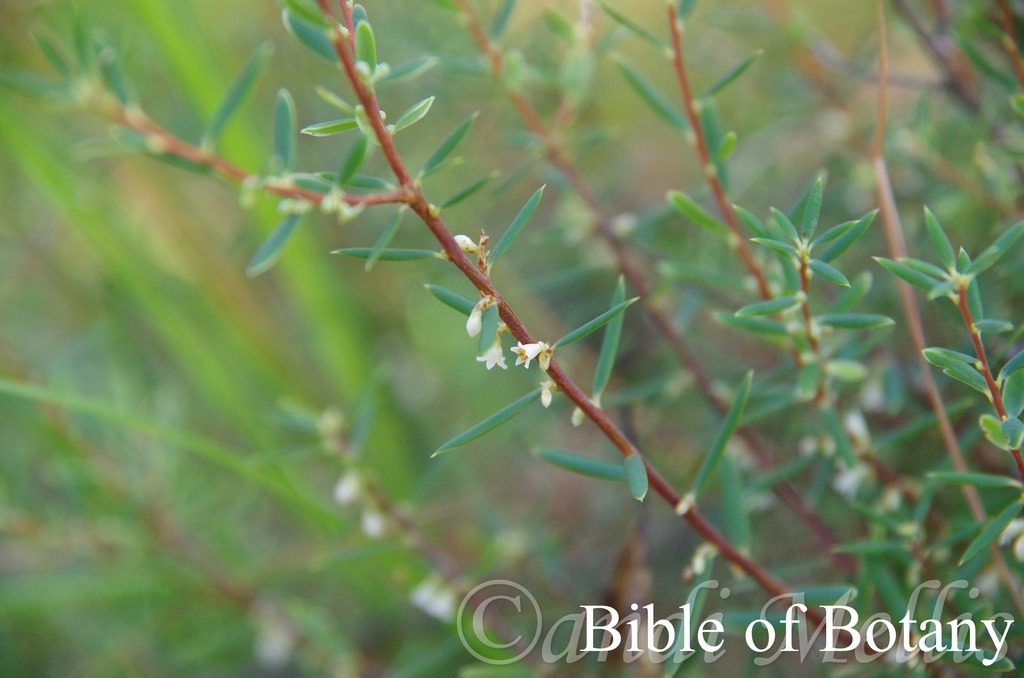
Sherwood Forest Reserve North NSW
Monotoca scoparia
Classification:
Unranked: Eudicots
Unranked: Asterids
Order: Ericales
Family: Ericaceae
Genus: From Monos which is Ancient Greek for one or singular and Tokos which is Ancient Greek for a birth. It refers to the single celled ovary.
Specie: From Scoparia, which is Latin for to be like a broom. It refers to smaller branches and twigs, which are similar looking to a broom or could be used as a broom.
Sub species:
Common Name:
Distribution:
Monotoca scoparia is found south from the Windsor Tableland in far north Queensland to the Naracoorte Coastal Plain in south eastern South Australia. There are several isolated populations further west on the Cox River In the Northern Territory, Tarcombe near Longreach in Queensland and Munghorn Gap Nature Reserve near Cobar in New South Wales.
In Tasmania it is found along the north and north eastern coast from Curries River near George Town to Scamander near Saint Helens with an isolated population on Mount Wellington.
https://avh.ala.org.au/occurrences/search?taxa=Monotoca+scoparia#tab_mapView
Habitat Aspect Climate:
Monotoca scoparia prefers light dappled shade to full sun. It grows in dry sclerophyll forest, woodland heaths or coastal heaths. The altitude ranges from 5 meter ASL to 1380 meters ASL.
The temperatures range from minus 5 degree in August to 40 degrees in January.
The rainfall ranges from lows of 250mm to an average of 2600mm.
Soil Requirements:
Monotoca scoparia prefers better quality sandy loams to light gritty clays or medium silts. The soils are usually derived from decomposed granites, sandstones, metamorphic rocks brown basalt, black basalts, shale or alluviums. The soils pH ranges from 4.5pH to 6pH. It does not tolerate waterlogged soils. Non saline soils to moderately saline soils are tolerated.
Height & Spread:
Wild Plants: 1m to 3m by 1m to 3.5m.
Characteristics:
Monotoca scoparia grows as a small, densely compact spreading shrub which forms a lignotuber just beneath the ground. The stems are reddish-brown and scabrous while the new shoots are pinkish-brown and densely covered in short, soft, white pulverulent hairs.
The alternate leaves are simple erect to spreading, narrow oblong or narrow elliptic and measure 7mm to 15mm in length by 1mm to 2.6mm in width. The scabrous petioles measure 0.5mm to 1.5mm in length. The bases are tapering to cuneate while the apexes are narrow obtuse to acute with a pungent, yellow or reddish spine. The discolourous laminas are deep green to sea-green, dull to semi glossy and glabrous on the upper lamina while the lower lamina is paler with 3 to 7 glaucous, longitudinal veins. The laminas are convex on the upper surface while the margins are entire or finely toothed on the apical third. The mid vein is obscure while the lateral veins are distinctly visible.
The inflorescence are born short racemes of 2 to 5 from the leaf axis. The peduncles measures 0.7mm to 1.1mm in length. The pale fawnish-green bracteoles measure 0.7mm to 1.1mm in length. The 5 pale fawnish-green sepals measure 1mm to 2mm in length. The cream to cream corolla measures 1.5mm to 2.5mm in length. The 4 or sometimes 5 lobes are oblong and measure 2mm to 3mm in length by 1mm to 2mm in width. The lobes are strongly recurved back onto the globose carpels. The 5 white to pastel fawnish cream corolla tube is glabrous, campanulate and measures 1mm to 2.6mm in length. The white corolla lobes are glabrous or sparsely covered in fines papillose lumps and measure 0.8mm to1.5mm in length.
The 5 white, slightly exserted to inserted anthers are opposite the corolla lobes and turn reddish-brown after dehiscing. The anthers measure 0.5mm to 0.8mm in length.
The pale lime-green, dome ovary measures 0.4mm to 0.5mm in length by 0.4mm to 0.5mm in diameter. The white pistil measures 1mm to 0.1mm to 0.15mm. The flowers appear from June to September.
The fruits are ovoidal to obloidal capsules. The green coriaceous capsules turn yellow-orange when ripe. The capsules measure 2.8mm to 3.1mm in length by 2.6mm to 3mm in diameter. The peduncle measures 2mm to 5mm in length.
Wildlife:
Monotoca scoparia’s wildlife is unknown to the author.
Cultivation:
Monotoca scoparia is a fast growing dense shrub for helping to establish small rainforests. It always look green and fresh especially where adequate ground moisture is retained whether it is grown in light shade or dappled light. In cultivation it will grow 2.5 meters to 2.8 meters in height by 2.5meters to 3 meters in diameter when grown in a sheltered spot in the open.
It is cold tolerant to temperatures at least as low as minus 3 degrees once established but is slow to kick on in the spring once the warmer weather returns. It should be protected until they reach at least 1.5 meters in height.
If mild native fertilizers are used they will develop quickly on most soils.
In Native gardens they can be used for attracting butterflies, native bees, native flies or native beetles during flowering which are necessary for fertilization of the flowers.
Propagation:
Seeds: Monotoca scoparia seeds can be sown directly into a seed raising mix. Cover the seeds with 2mm to 3mm of fine weed free mulch and keep moist. Place the tray in a warm shady position. When the seedlings are 30mm to 50mm tall, prick them out and plant them into 50mm native tubes using a good organic mix.
Once the seedlings reach 100mm to 150mm in height they can be planted out into their permanent position. Group plantings of three to five trees are particularly attractive and will give a better appearance and a stronger scent.
Cuttings: Unfortunately Monotoca scoparia does not strike so some patience will be required. Use 100mm to 200mm long tip cuttings or lateral shoots from the present season’s growth. Take them in warmer months of the year. Remove half the leaves from the bottom section being careful not to tear the bark.
1 Prepare the cutting mix by adding two thirds sharp clean river sand, one third peat or one third perlite. These ingredients must be sterilized,
2 Select good material from non diseased plants,
3 Select semi green stems for cuttings. Look for a stem with two or three nodes,
4 Place the cutting on a flat, hard surface, and make a clean cut down one side of the cutting at the base for 10mm with a sharp sterile knife or razor blade. – This scarification of the node will increase the chances of roots emerging from this spot. Now remove all but one or two the leaves, leaving the apex leaves in tact. If the leaves are very large in proportion to the stem, cut off the apical halves.
5 Fill a saucer with water, and place a little medium strength rooting hormone into another container like a milk bottle top. Dip the node end of the cutting into the water and then into the rooting hormone. Tap off any excess hormone,
6 Use a small dipple stick or old pencil to poke a hole into the soilless potting mix. Ensure the hole is slightly larger than the stem diameter and be careful not to wipe the rooting hormone off the cuttings base. Place 2 to 4 cuttings in each of the 50mm native tubes,
7 I like to place the tubes in bucket with holes drilled in the bottom to allow excess water to drain out. A plastic bag that fits over the bucket is ideal to help maintain temperature and moisture. Place in a semi shaded, warm position like under 50mm shade cloth.
8 When the cuttings have struck, open the bag to allow air circulation for a few days to a week,
9 Once hardened off remove the cuttings from the bag and allow to further hardening for a few more days to a week,
10 Transplant into a good potting mix to grow on.
Fertilize using seaweed, fish emulsion or organic chicken pellets soaked in water on an alternate basis. Fertilize every two months until the plants are established then twice annually in early September or March to maintain health, vitality and better flowering.
Further Comments from Readers:
Hi reader, it seems you use The Bible of Botany a lot. That’s great as we have great pleasure in bringing it to you! It’s a little awkward for us to ask, but our first aim is to purchase land approximately 1,600 hectares to link several parcels of N.P. into one at The Pinnacles NSW Australia, but we need your help. We’re not salespeople. We’re amateur botanists who have dedicated over 30 years to saving the environment in a practical way. We depend on donations to reach our goal. If you donate just $5, the price of your coffee this Sunday, We can help to keep the planet alive in a real way and continue to bring you regular updates and features on Australian plants all in one Botanical Bible. Any support is greatly appreciated. Thank you.
In the spirit of reconciliation we acknowledge the Bundjalung, Gumbaynggirr and Yaegl and all aboriginal nations throughout Australia and their connections to land, sea and community. We pay our respect to their Elders past, present and future for the pleasures we have gained.
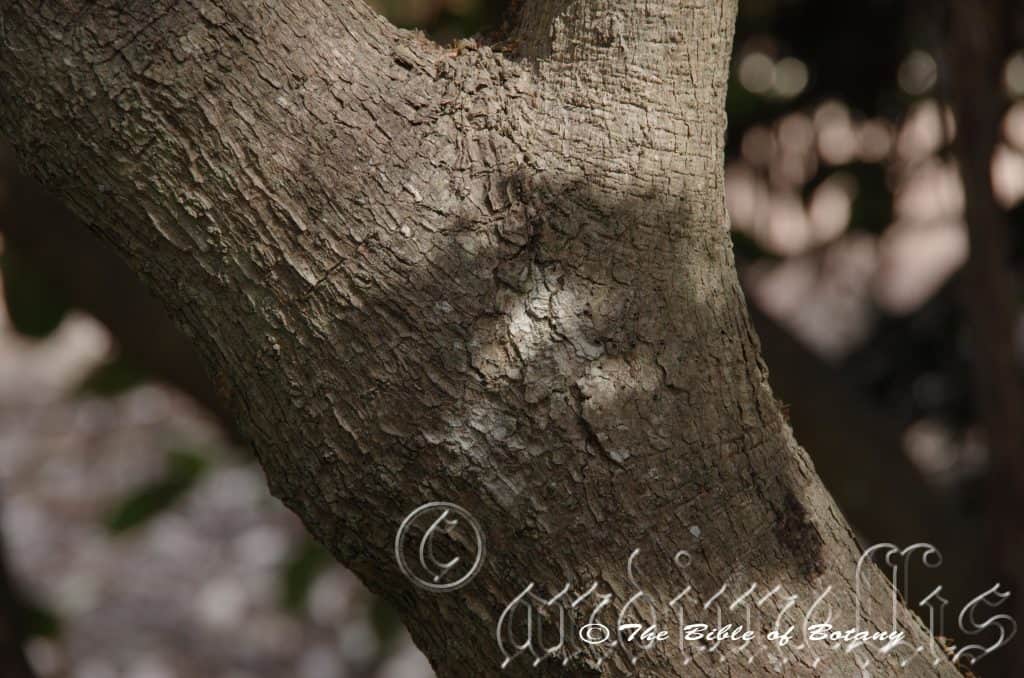
Anderson Botanic Gardens Townsville Qld.
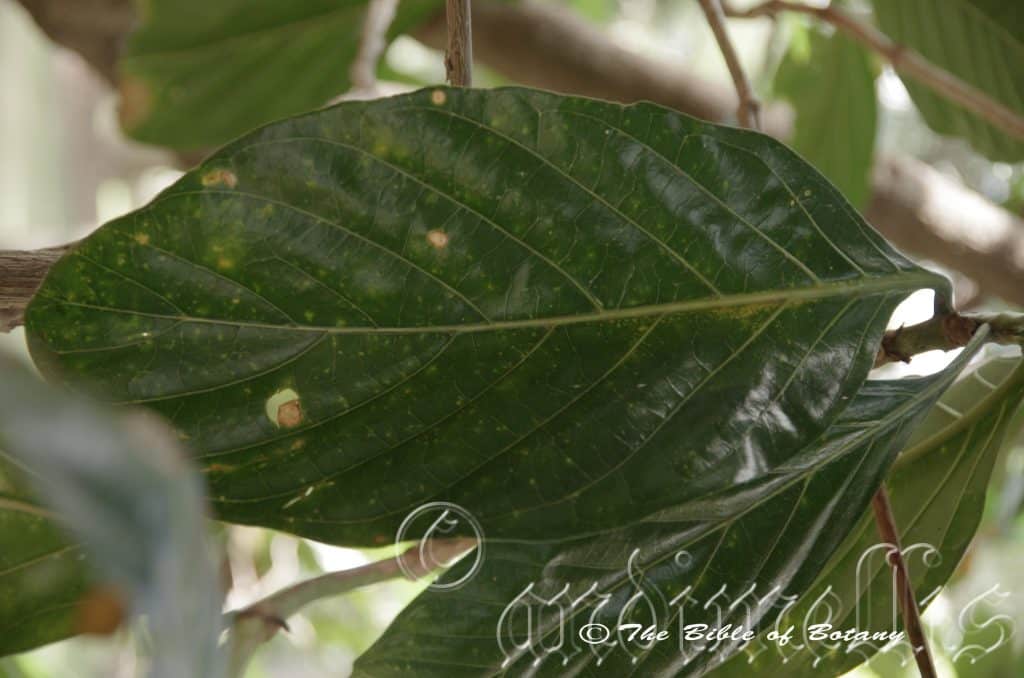
Anderson Botanic Gardens Townsville Qld.
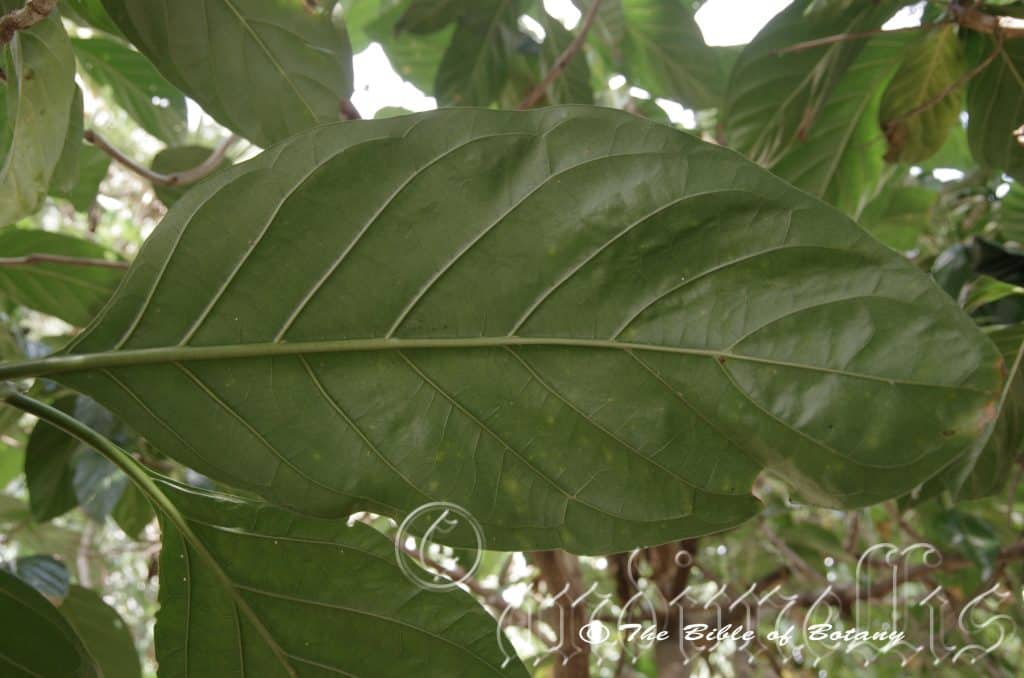
Anderson Botanic Gardens Townsville Qld.
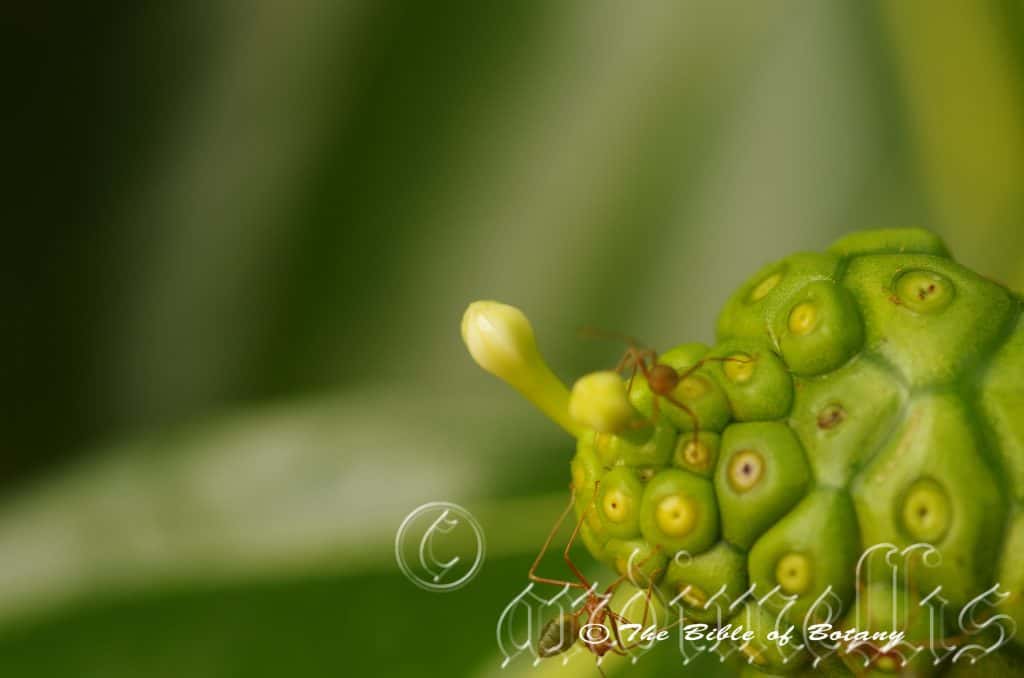
Anderson Botanic Gardens Townsville Qld.
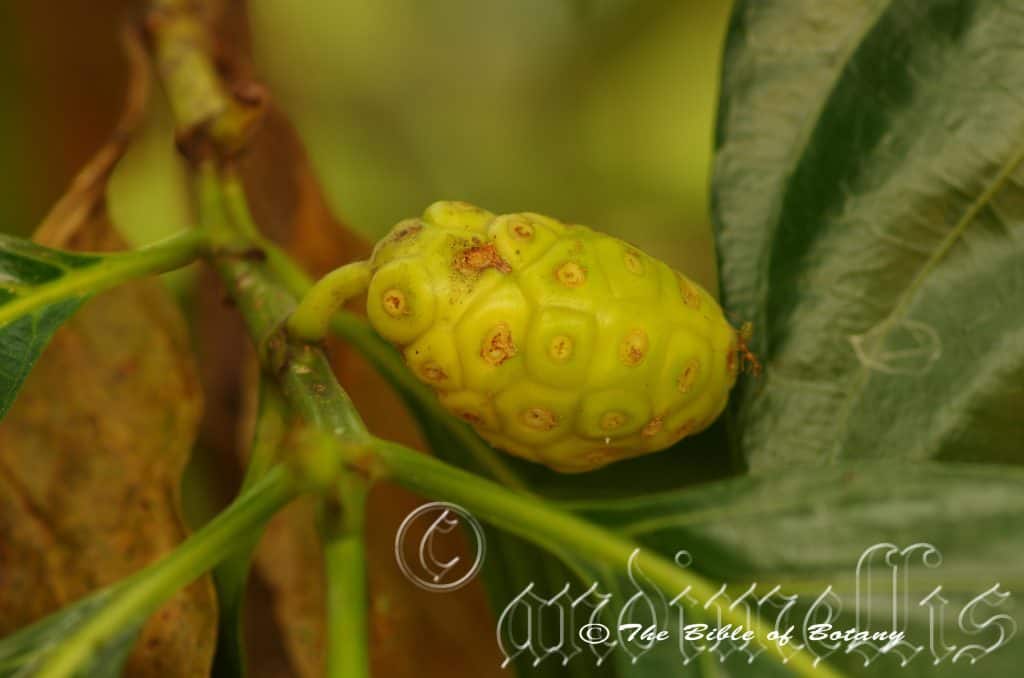
Anderson Botanic Gardens Townsville Qld.
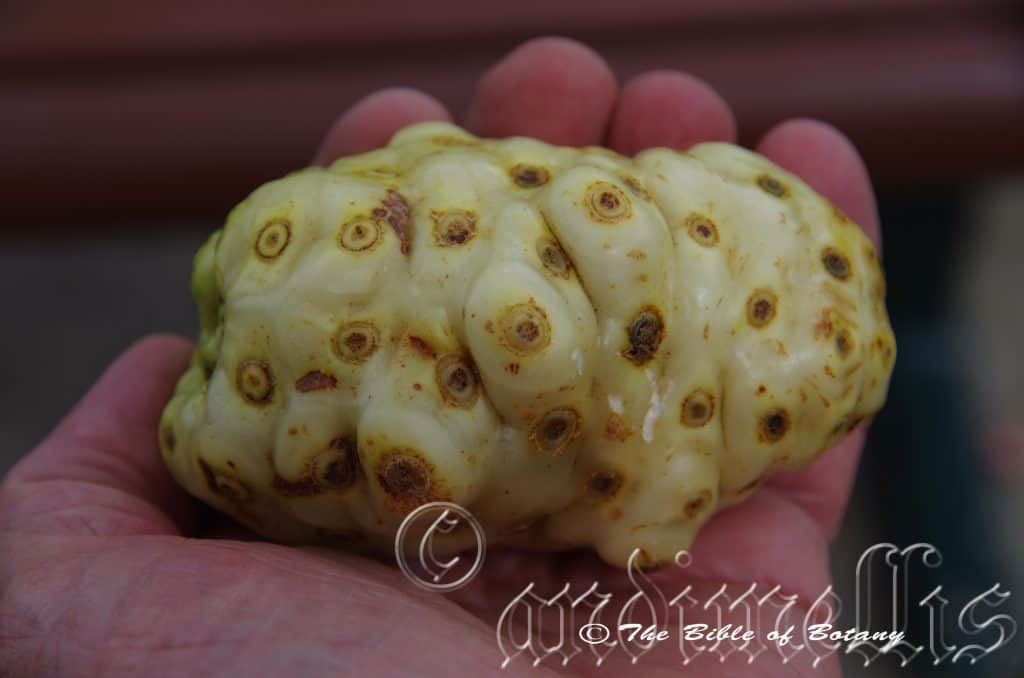
Anderson Botanic Gardens Townsville Qld.
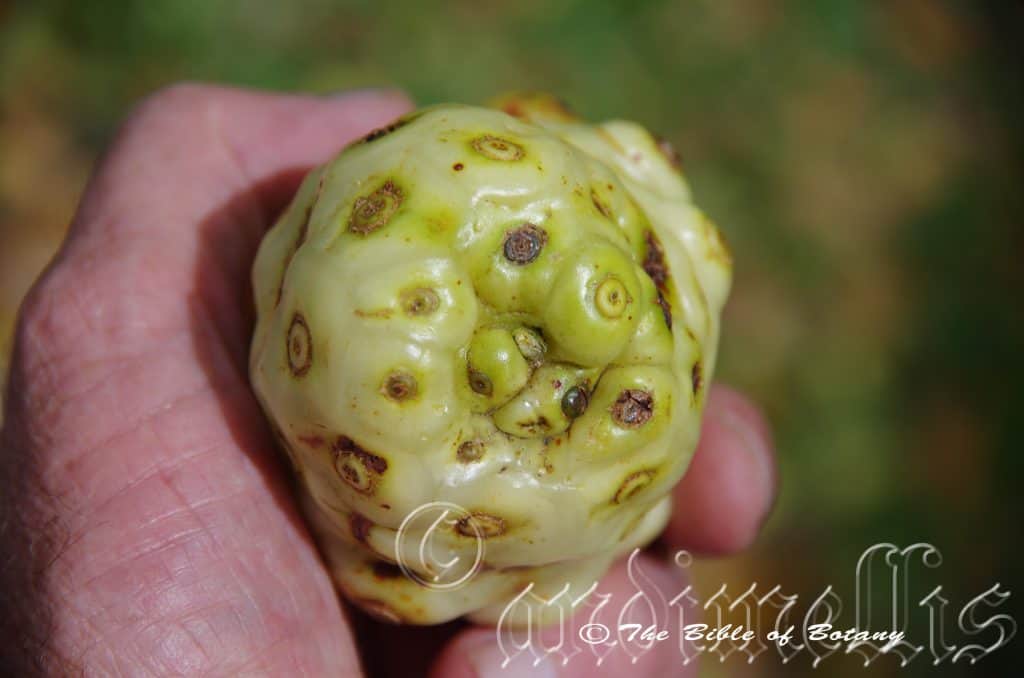
Anderson Botanic Gardens Townsville Qld.
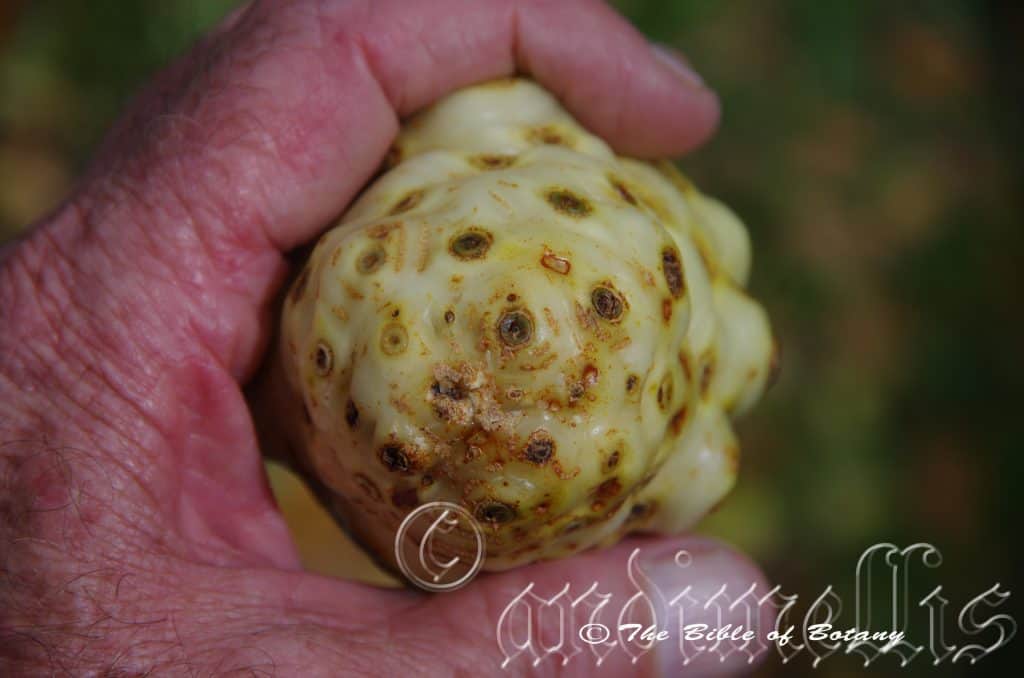
Anderson Botanic Gardens Townsville Qld.
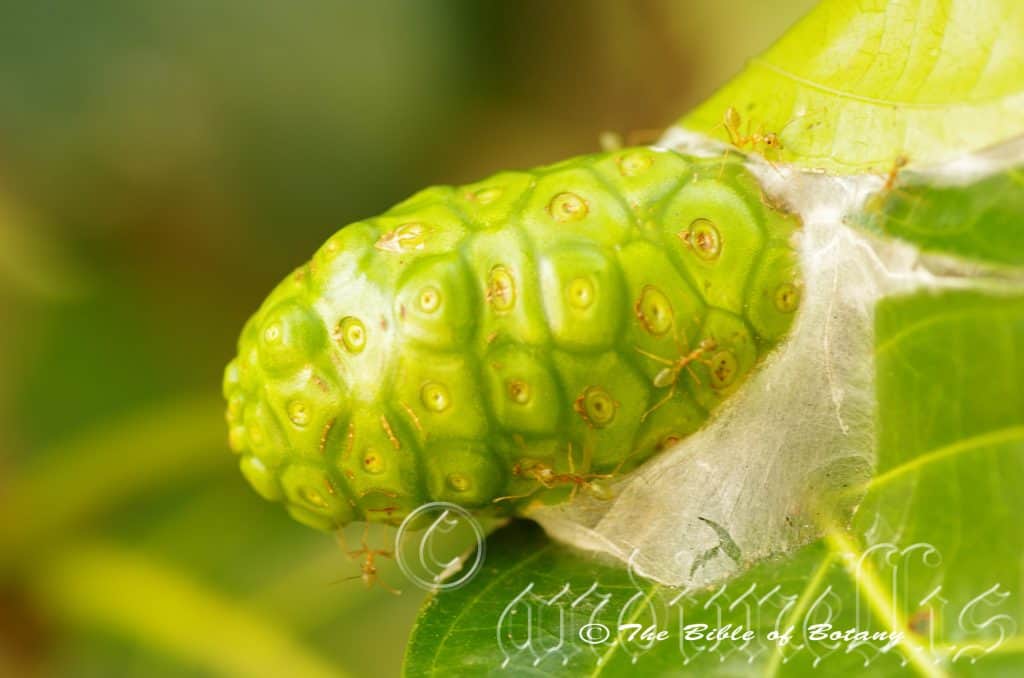
Anderson Botanic Gardens Townsville Qld.
Morinda citrifolia
Classification:
Unranked: Angiosperms
Unranked: Eudicots
Unranked: Asterids
Order: Gentianales
Family: Rubiaceae
Genus: From Morus, which is Latin for a mulberry and Indicus, which is Latin for India. It refers to plant’s fruits, which are similar to the horticultural mulberry.
Specie: From Citrinus, which is old Anglo-French for yellow and later Citrinus, which is Latin for Citrus and Folium, which is Latin for foliage. It refers to the foliage looking somewhat like a lemon tree from a distance.
Sub specie: Morinda citrifolia subsp. bracteata. From Bractea, which is Latin for a thin plate of shiny metal. It refers to special type of leaves which surround the flower or pedicel and are further from the flower than petals and bracteoles.
Sub specie: Morinda citrifolia subsp. citrifolia. From Citrinus, which is old Anglo-French for yellow and later Citrinus, which is Latin for Citrus and Folium, which is Latin for foliage. It refers to the foliage looking somewhat like a lemon tree from a distance.
Sub species:
Common Name: Great Mulberry or Native Mulberry or Noni or Vomit Fruit.
Distribution:
Morinda citrifolia subsp. bracteata is a widespread species which is found north and east of a line from the Finniss River in north western Northern territory to Cairns in far north Queensland.
Morinda citrifolia subsp. citrifolia is found mainly along the coastal strip from Sunday Island in the Buccaneer Archipelago in far north eastern Western Australia to Northumberland Islands in Broad Sound and off shore Islands in coastal central Queensland.
It is also very common through most the tropical Islands east from Christmas Island Kocos Keeling Islands, India, Pitcairn Islands, Sri Lanka, Thailand, Vietnam, tropical China, Malaysia, Philippines, Indonesia, Timor, Papua, New Guinee and many of the Island Nations in the western Pacific Ocean like Fiji, Lord Howe Island and Norfolk Island.
https://avh.ala.org.au/occurrences/search?q=taxamm3Amm22Morinda+citrifoliamm22#tab_mapView
Habitat Aspect Climate:
Morinda citrifolia prefers light dappled shade to full sun. It grows in disturbed forests, dry vine forests, open areas that are devoid of grasses, monsoonal forests, coral atolls, beach front sands or exposed coastlines.
Morinda citrifolia sub sp. citrifolia’s altitude ranges from 5 meter ASL to 150 meters ASL.
Morinda citrifolia sub sp. bracteata’s altitude ranges from 10 meter ASL to 240 meters ASL.
The temperatures range from 5 degrees in August to 40 degrees in January.
The rainfall ranges from lows of 750mm to an average of 3000mm.
Soil Requirements:
Morinda citrifolia prefers better quality sandy loams to medium clays. The soils are usually derived from decomposed granites, sandstones, metamorphic rocks brown basalts or black basalts. The soils pH ranges from 4.5pH to 6pH. It tolerates seasonal waterlogged soils. Non saline soils to moderately saline soils are tolerated.
Height & Spread:
Wild Plants: 4m to 10m by 3m to 6m.
Characteristics:
Morinda citrifolia are extremely variable in fruit quality, quantity, leaf size and shape along with habit of growth. Morinda citrifolia’s trunk is just as variable varying in shades of pale brown to fawn or grey and is rather corky on older trees. The bole of the trunk is about a half the height on a mature tree cylindrical with some irregular fluting close to the ground. The young stems are pale brown turning green near the apex where the leaves are situated. Immature stems are bright green, glabrous, square and semi glossy to glossy.
Morinda citrifolia’s opposite leaves are simple, elliptical to ovate and measure 180mm to 250mm in length by 110mm to 130mm in width. The base is broad cuneate to shortly attenuate while the apex is broadly acuminate to mucronate. The concolourous laminas are deep sea-green, glabrous and semi glossy to glossy. The immature leaves and newly emerging leaves are a paler green and glossy. The upper lamina is convex between the lateral veins. The margins are entire and curves slightly upwards from the mid vein. The mid vein is prominent on the both laminas and is paler yellow-green. The lateral veins are prominent below and distinctly visible on the upper lamina. The petioles square in cross section are glabrous and measure 15mm to 30mm in length. The large stipules are broadly spathulate and measure 20mm to 30mm in length by 20mm to 30mm in width at the wide section and 8mm to 15mm near the base.
Morinda citrifolia’s opposite leaves are simple, elliptical to ovate and measure 120mm to 250mm in length by 110mm to 130mm in width. The base is broad cuneate to shortly attenuate while the apex is broadly acuminate to mucronate. The concolourous laminas are deep sea-green, glabrous and semi glossy to glossy. The immature leaves and newly emerging leaves are a paler green and glossy. The upper lamina is convex between the lateral veins. The margins are entire and curves slightly upwards from the mid vein. The mid vein is prominent on the both laminas and is paler yellow-green. The lateral veins are prominent below and distinctly visible on the upper lamina. The petioles are square in cross section with a groove on the upper surface, glabrous and measure 15mm to 30mm in length. The large stipules are broadly triangular with an acuminate apex and measure 15mm to 28mm in length.
The inflorescences of Morinda citrifolia are born in a tight globular head from the leaf axis. Each globose head contains 48 to 60 flowers. The peduncle measures 8mm to 18mm in length. The calyx is indistinguishable from the corolla. The corollas measure 3mm to 7mm in length. The corolla lobes are glabrous externally and are covered in fine white hirsute hairs internally becoming denser as they approach the apex and measure 3mm to 7mm in length.
The creamy white stamens measure 1.5mm to 2mm in length. The stigma is bi-lobed. The sweetly scented flowers appear throughout the year.
Morinda citrifolia fruits are edible though some plants have a very strong blue vein cheese or vomit odour. Morinda citrifolia fruit is a green, long to oblong aggregate. The green coriaceous syncarps turn soft and fetid, pale yellow then creamy white when ripe. The aggregates measure 40mm to 70mm in length by 30mm to 40mm in diameter. The peduncle measures 20mm to 28mm in length. The fruits have a distinct circular scar left from the calyx tubes.
The aggregates rot to reveal the brown seeds. The highly variable seeds are brown, glabrous, semi glossy and measures 4mm to 8mm in length by 5.5mm to 6.5mm in length. The seeds have an air chamber inside which allows them to float on water and remain viable for a long time even if soaked in water.
Morinda citrifolia fruits are edible though some plants have a strong semi rotting odour. Morinda citrifolia fruit is a green ovoidal aggregate. The green coriaceous syncarps turn soft and fetid, pale yellow then creamy white when ripe. The aggregates measure 30mm to 40mm in length by 30mm to 40mm in diameter. The peduncle measures 20mm to 28mm in length. The fruits have a distinct circular scar left from the calyx tubes.
The aggregates rot to reveal the brown ellipsoidal seeds. The highly variable seeds are brown, glabrous, semi glossy and measures 8mm to 9mm in length by 5.5mm to 6.5mm in length. The seeds have an air chamber inside which allows them to float on water and remain viable for a long time even if soaked in water.
Confusing Subspecies Varieties:
Morinda citrifolia sub sp. citrifolia’s leaves 180mm to 250mm by 120mm to 130mm. Flowers corolla tube 3mm to 7mm in length. Lobes 3mm to 7mm in length. The fruit has a strong odour like rotten blue vein cheese and measure 4-mm to 7-mm by 30mm to 4-mm in diameter. The seeds measure 5mm to 6mm in length by 3mm to 5mm in diameter.
Morinda citrifolia sub sp. bracteata’s leaves 120mm to 250mm by 40mm to 100mm. Flowers calyx tube 3mm to 4mm in length. Lobes usually absent or at times 10mm to 30mm in length. Corolla 0.5mm to 1mm. Lobes 2mm to 3mm in length. The fruits are soft, fleshy and malodorous when ripe. The seeds are immersed in pulp and measure 9mm in length by 3.5mm in diameter.
Wildlife:
Morinda citrifolia’s flowers are visited by many are eaten by the Lewin’s Honeyeater and probably other specie of medium size honeyeaters and pigeons as well as the Cassowary. Both the ring tail possum and its larger cousin the brush tail possum consume the fruits. Flying foxes also relish the fruits.
When the plants are grown in a natural environment it is seldom attacked but when grown in a monoculture for the fruits it is susceptible to a wide range of diseases including aphids, citrus leaf minor, birds and bats. The leaves are a food source for the Hawk Moth (Macroglossum corythus).
The art of eating the fruit is to take a deep breath, hold the nose, bite chew and swallow the first mouth full. Once this is done, like garlic the odour subsides and the fruits are rather sweet and pleasant.
100ml of the juice contains:
- Calories: 47 calories
- Carbs: 11 grams
- Protein: less than 1 gram
- Fat: less than 1 gram
- Sugar: 8 grams
- Vitamin C: 33mm of the RDI
- Folate: 6mm of the RDI
- Magnesium: 4mm of the RDI
- Potassium: 3mm of the RDI
- Calcium: 3mm of the RDI
- Vitamin E: 3mm of the RDI
- Reduces total cholesterol and triglycerides
- Reduces high blood pressure
Which makes it an excellent blood neutraliser as well as a good natural vitamin pill.
Cultivation:
Morinda citrifolia is a fairly fast growing plant which is worthwhile growing for the beautiful fruits. It makes an excellent medium size tree for a park like scene or specimen tree in the garden. They always look green and fresh especially where adequate ground moisture is retained whether it is grown in light shade or full sun. It is very suitable for all soil types. It is most suitable for small, medium and large gardens close to the coast in warm sub-tropical, tropical or monsoonal gardens. As garden subjects they will grow from 4 meters to 6 meters in height by 4 meters to 6 meters in diameter when grown in the open.
It is cold sensitive and dislike temperatures below 3 degrees. They should be protected until they reach at least 2 meters in height.
It is best used adjacent to small areas of bush especially adjacent to rainforests. Planting close to the house will also allow you to keep an eye on the fruit as it begins to ripen. They can be planted in small groups of 2 or 3 to enhance their appearance.
It can be used as small shade trees in semi protected areas and are an excellent tree for starting a dry or wet rainforest garden. When planting the trees in a rainforest place them on the outer perimeter so they can maintain a leafy canopy and better fruit crop.
It is useful as a backdrop small tree contrasting with smaller finer leaf shrubs that are planted in the foreground. Grey foliage plants contrast beautifully with the green leaves.
This is a good tree along the coast on skeletal sands and decomposed sandstones based soils. Their biggest drawback is that their branches are very brittle and subject to breaking in strong winds or when it is in heavy fruit.
Many new varieties are being grown to develop fruits at specific times of the year and for fruit flavour in China. The plants with milder scented fruits are also being favoured.
The more trees that are grown the more susceptible are the trees to insect attack and other pathogens. The brown Aphid (Toxoptera citricidus) and the Black Aphid (Toxoptera aurantii) are the 2 most common Aphids that give problems along with citrus leaf miner (Phyllocnistis citrella) are the two biggest problems when young. Phyllocnistis citrella is usually more prevalent on young trees that are being heavily fertilized. We found that this problem resolved itself over 2 or 3 years as beneficial predatory insects re-established the balance in the orchard. Melon aphid, Katydid, thrips and plant Mites can cause severe set backs on young trees if the gardener is not vigilant. The tree is the favoured source of food for the Green Scale (Coccus viridis).
For fruit annual pruning is required to maintain shrubs at 2 meters to 3 meters in height is favoured for picking. If mild native fertilizers are used they will develop quickly and yield good quantities of fruit. They would make ideal companion plants in a mixed orchard where it is planted at 5 meter centers. Minimum winter temperatures should not drop below 5 degrees. A good orchard can produce 8 metric tonnes of fruit a year per hectare.
The fruits can be used for juice either fresh or fermented, cosmetics and fresh fruit. The seeds can be crushed to extract oil while the leaves can be used for medicinal uses or food flavouring, the bark and stems are used for the extraction of organic red dyes while the roots have a similar function producing a yellow dye.
Once eaten or smelt never forgotten. I had secured some real bush fruits, while visiting my daughter in Townsville. I showed a friend from China how to overcome the smell when eating it. Like garlic once you have eaten some the smell vanishes for the person eating it. Once over the odour the fruits have a mild sweet pleasant flavour reminiscent of Limburger cheese with a dash of Monsterio deliciosus and a crisp portion of citrus. A friend of my daughter arrived and enquired to what that ghastly odour was and asked whether Toby had been vomiting. I immediately shown him the fruit, which he declined to eat. 12 months later I was consuming more of the fruit out back, when my daughters friend again arrived with my grandson. His first remark was “Strewth, is your father here again” Obviously, I left an impression on him!
Propagation:
Seeds: When growing Morinda citrifolia select seeds from the type of plant you wish to grow as the trees are extremely variable. Even then some variation will occur. If the fruit is required then it is advised to grow the plants from cuttings which strike readily. I admit I have tried to grow it on two separate occasions from seed and failed on both occasions.
Morinda citrifolia seeds must be scarified prior to sowing into a seed raising mix. Cover the seeds with 2mm to 6mm of fine weed free mulch and keep moist. Place the tray in a warm sunny position where temperatures will remain above 28 degrees. Germination will take from 20 days to 120 days depending on temperature and the genetic source of the seeds. Non scarified seeds may take two years or longer to germinate. When the seedlings are 30mm to 50mm tall, be careful in pricking them out as not to damage the tap root. Plant them into 50mm native tubes using a good organic mix.
Once the seedlings reach 100mm to 150mm in height they can be planted out into their permanent position again being careful not too damage the tap root.
Group plantings of three to five trees are particularly attractive and will give a good canopy in years to come. Group plantings also help to minimize wind damage.
Cuttings: Unfortunately Morinda citrifolia does not strike easilly so some patience will be required. Use 150mm to 250mm long tip cuttings or lateral shoots from the present season’s growth. Take them in warmer months of the year. Remove half the leaves from the bottom section being careful not to tear the bark.
1 Prepare the cutting mix by adding two thirds sharp clean river sand, one third peat or one third perlite. These ingredients must be sterilized,
2 Select good material from non diseased plants,
3 Select semi green stems for cuttings. Look for a stem with two or three nodes,
4 Place the cutting on a flat, hard surface, and make a clean cut down one side of the cutting at the base for 10mm with a sharp sterile knife or razor blade. – This scarification of the node will increase the chances of roots emerging from this spot. Now remove all but one or two the leaves, leaving the apex leaves in tact. If the leaves are very large in proportion to the stem, cut off the apical halves.
5 Fill a saucer with water, and place a little medium strength rooting hormone into another container like a milk bottle top. Dip the node end of the cutting into the water and then into the rooting hormone. Tap off any excess hormone,
6 Use a small dipple stick or old pencil to poke a hole into the soilless potting mix. Ensure the hole is slightly larger than the stem diameter and be careful not to wipe the rooting hormone off the cuttings base. Place 2 to 4 cuttings in each of the 50mm native tubes,
7 I like to place the tubes in bucket with holes drilled in the bottom to allow excess water to drain out. A plastic bag that fits over the bucket is ideal to help maintain temperature and moisture. Place in a semi shaded, warm position like under 50mm shade cloth.
8 When the cuttings have struck, open the bag to allow air circulation for a few days to a week,
9 Once hardened off remove the cuttings from the bag and allow to further hardening for a few more days to a week,
10 Transplant into a good potting mix to grow on.
Fertilize using seaweed, fish emulsion or organic chicken pellets soaked in water on an alternate basis. Fertilize every two months until the plants are established then twice annually in early September or March to maintain health, vitality and better flowering.
Further Comments from Readers:
Hi reader, it seems you use The Bible of Botany a lot. That’s great as we have great pleasure in bringing it to you! It’s a little awkward for us to ask, but our first aim is to purchase land approximately 1,600 hectares to link several parcels of N.P. into one at The Pinnacles NSW Australia, but we need your help. We’re not salespeople. We’re amateur botanists who have dedicated over 30 years to saving the environment in a practical way. We depend on donations to reach our goal. If you donate just $5, the price of your coffee this Sunday, We can help to keep the planet alive in a real way and continue to bring you regular updates and features on Australian plants all in one Botanical Bible. Any support is greatly appreciated. Thank you.
In the spirit of reconciliation we acknowledge the Bundjalung, Gumbaynggirr and Yaegl and all aboriginal nations throughout Australia and their connections to land, sea and community. We pay our respect to their Elders past, present and future for the pleasures we have gained.
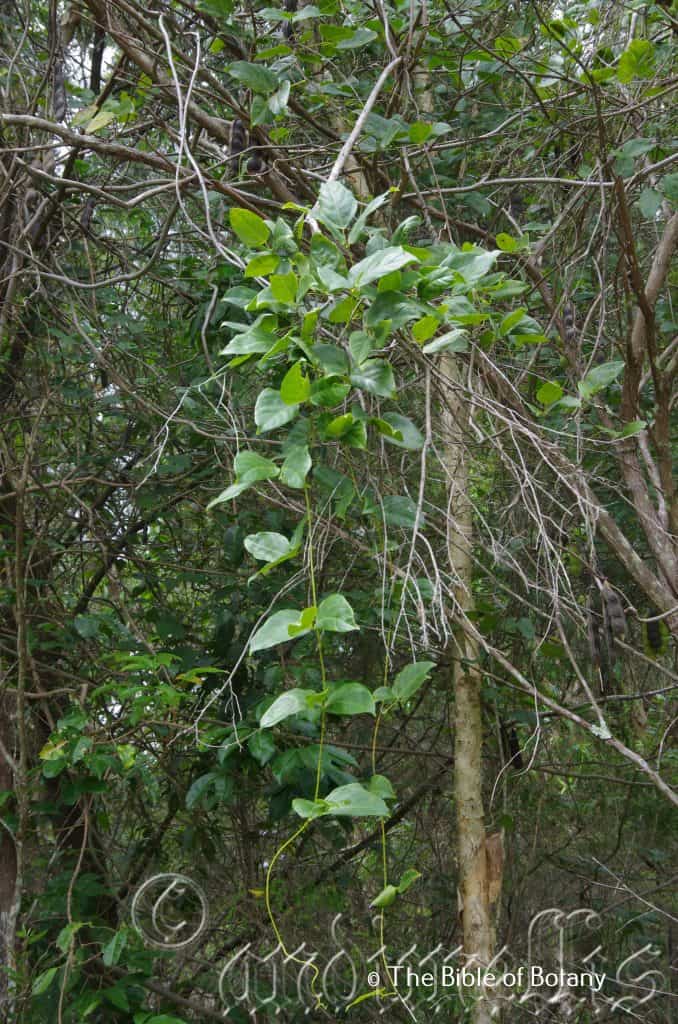
Pacific Highway Ballina NSW
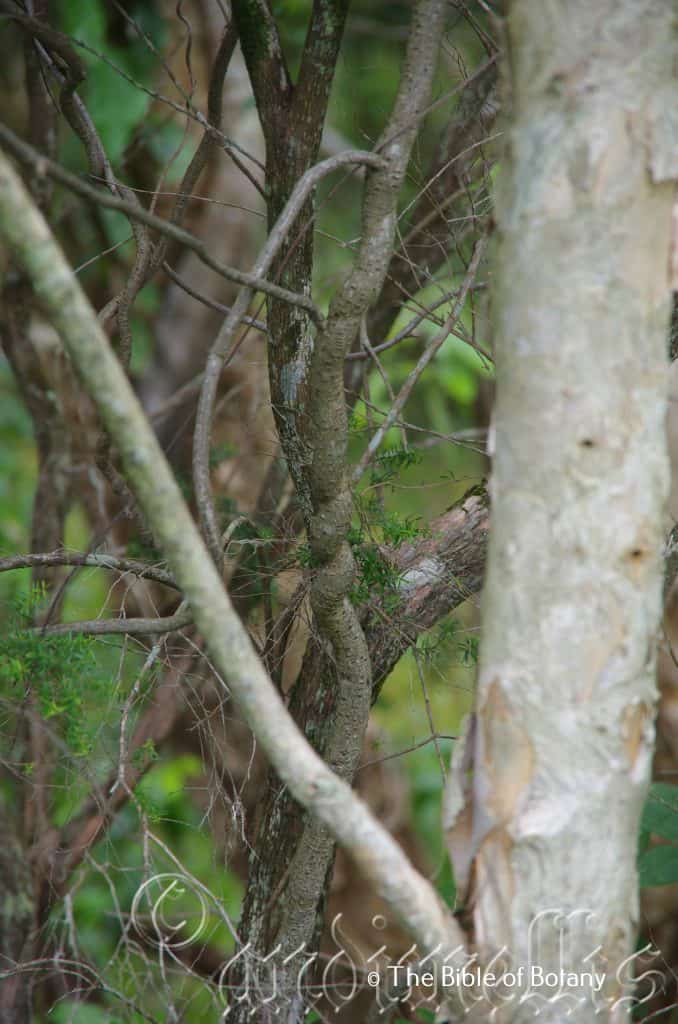
Pacific Highway Ballina NSW
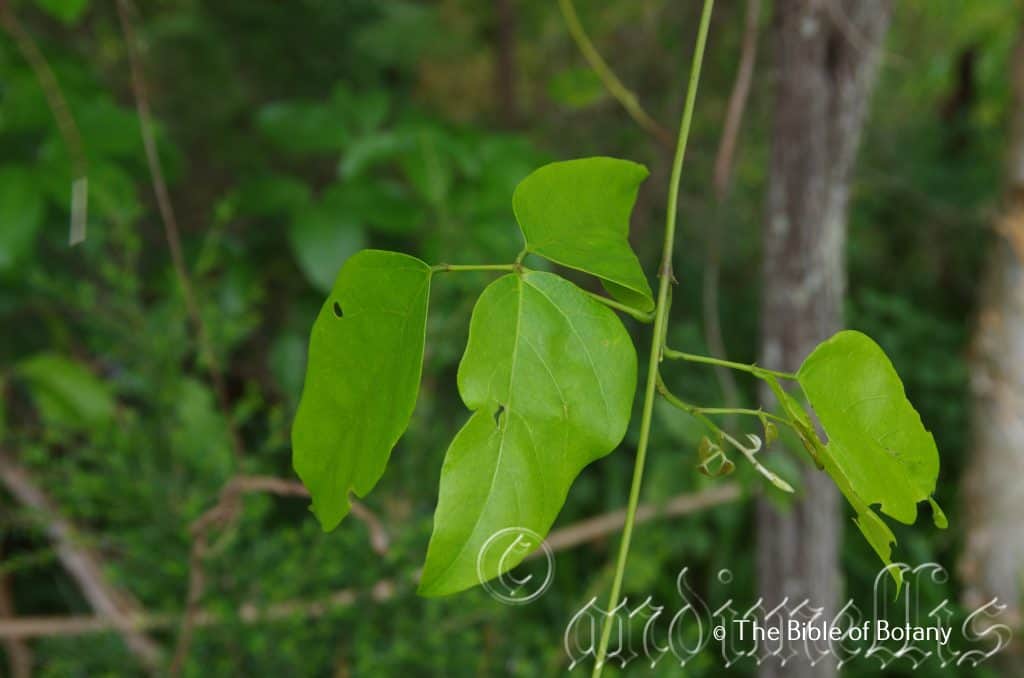
Pacific Highway Ballina NSW
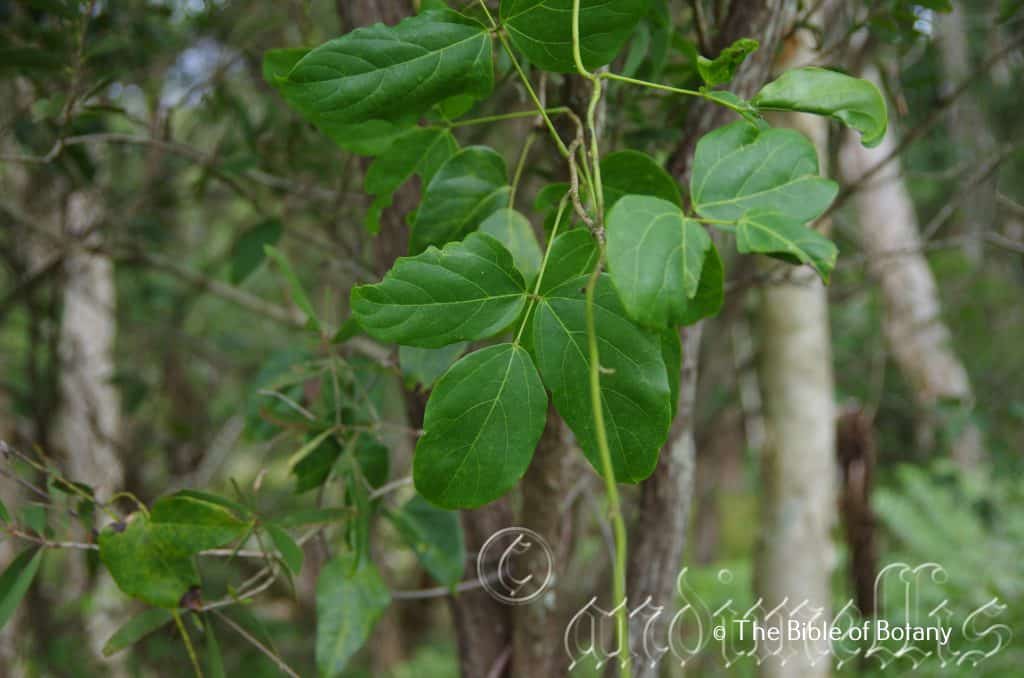
Pacific Highway Ballina NSW
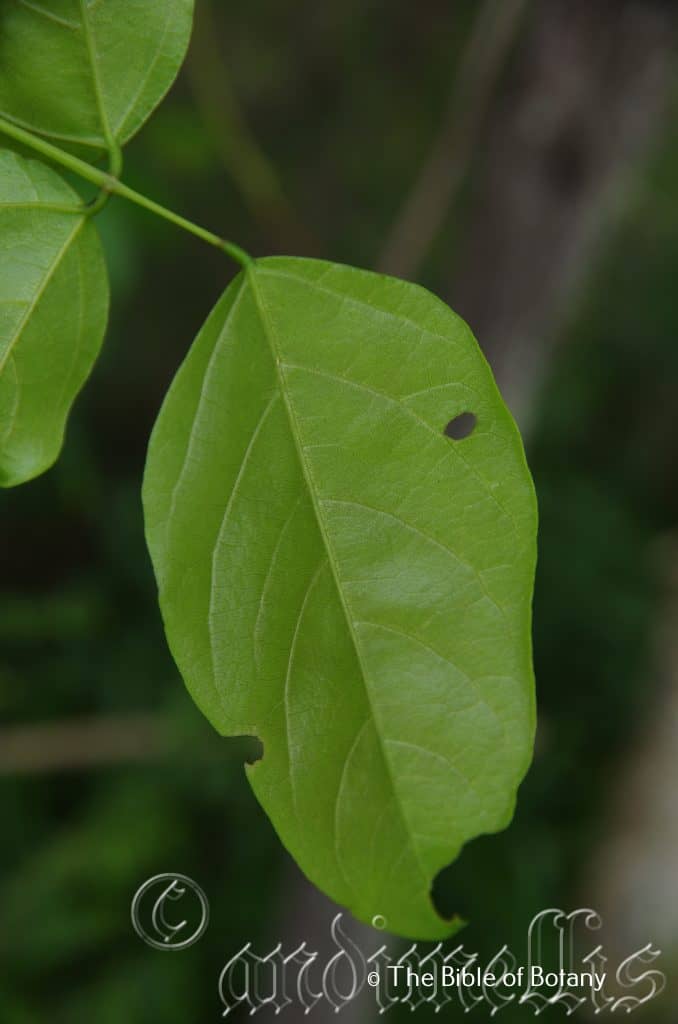
Pacific Highway Ballina NSW
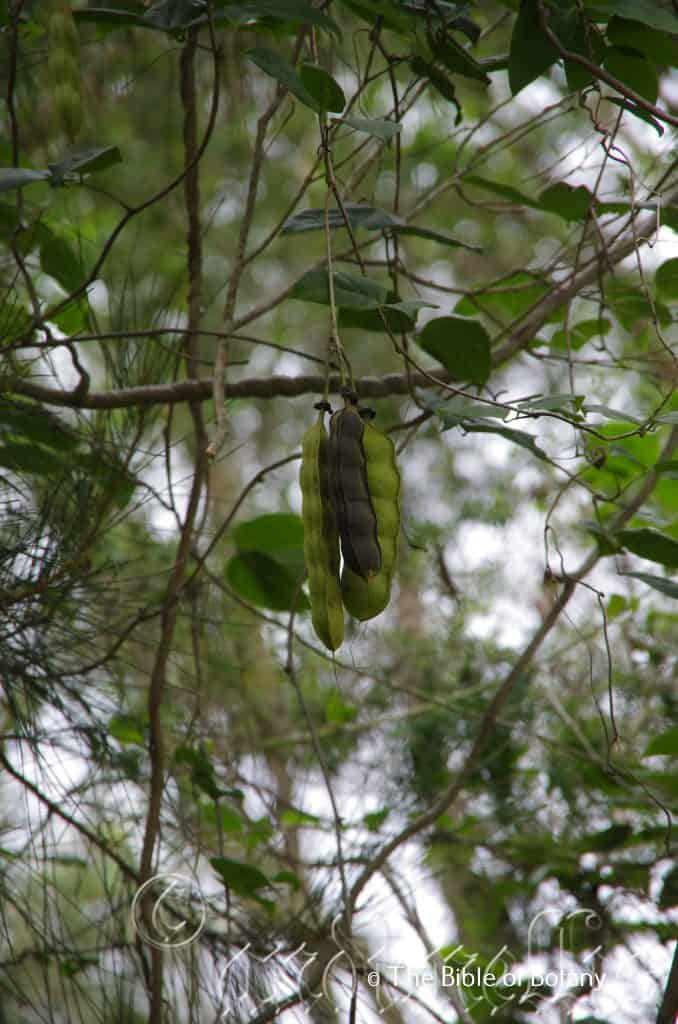
Pacific Highway Ballina NSW
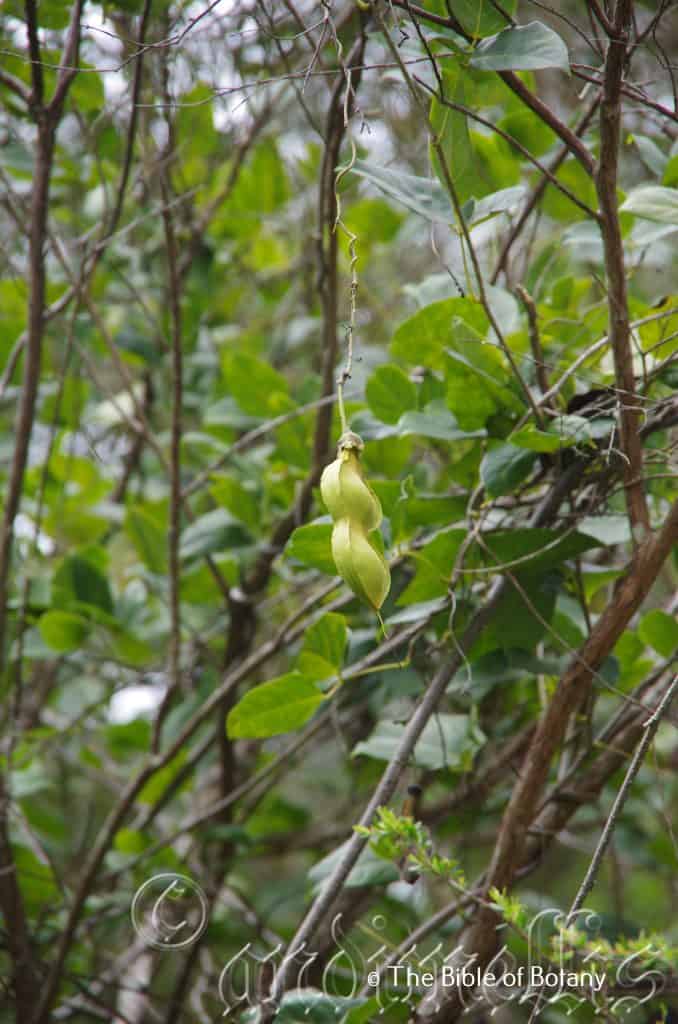
Pacific Highway Ballina NSW
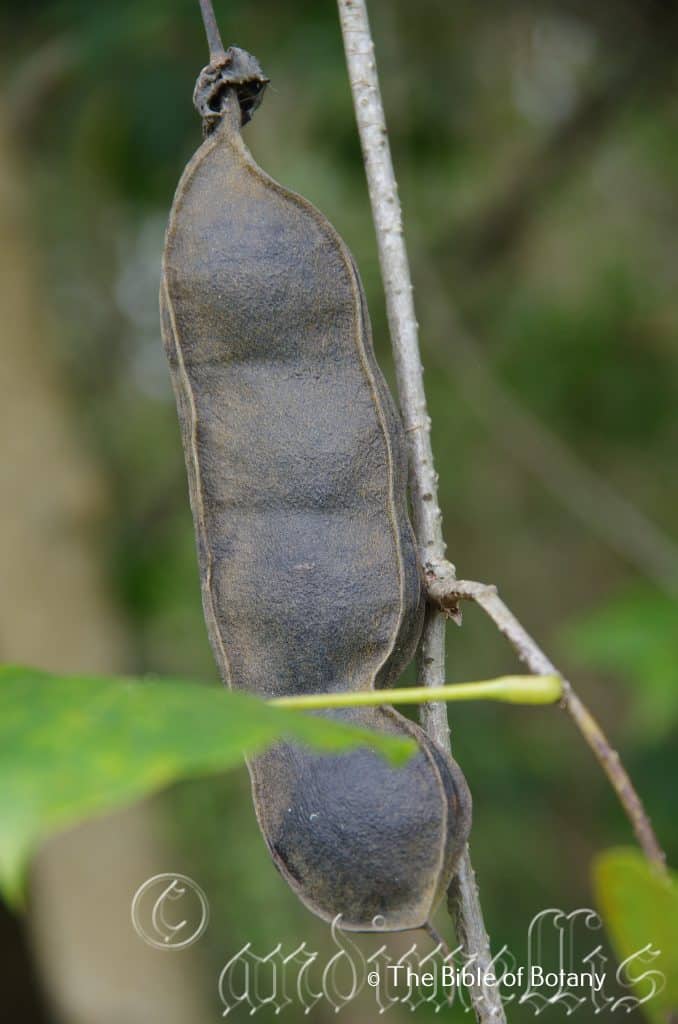
Pacific Highway Ballina NSW
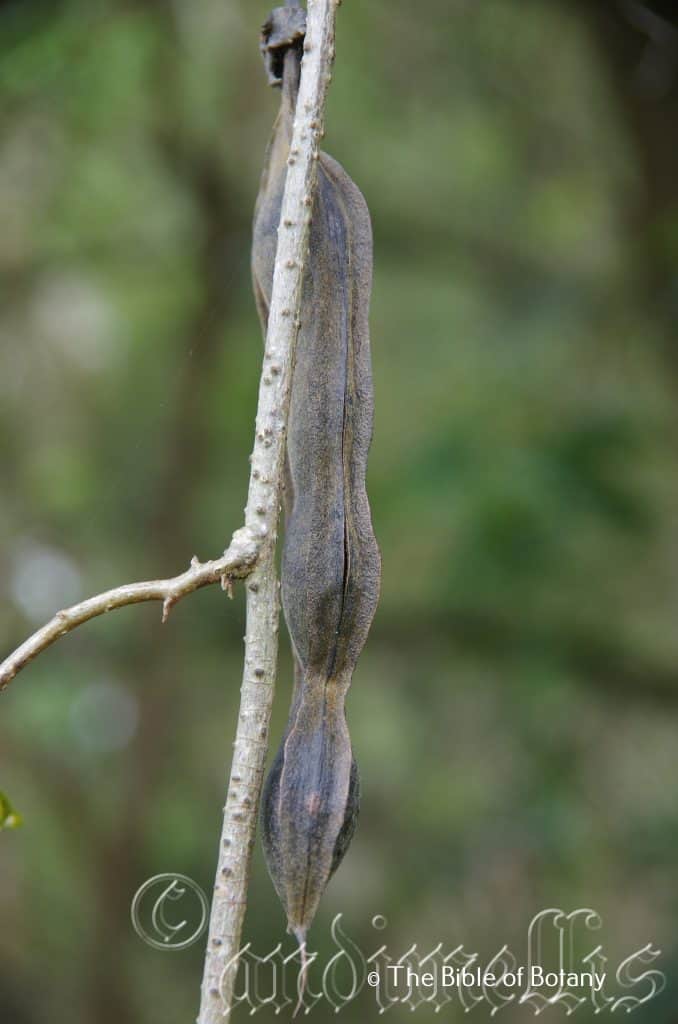
Pacific Highway Ballina NSW
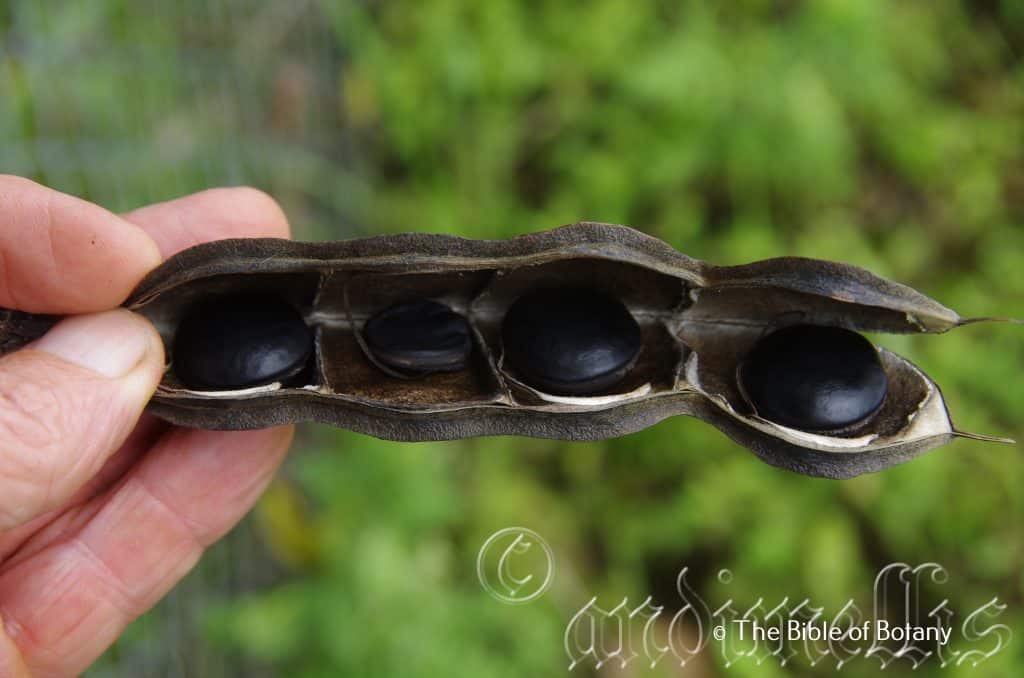
Pacific Highway Ballina NSW
Mucuna gigantea
Classification:
Unranked: Eudicots
Unranked: Rosids
Order: Fabales
Family: Fabaceae
Subfamily: Faboideae
Tribe: Phaseoleae
Genus: From Mucana, which is Latinized for the Brazilian vernacular for a species growing in Brazil.
Specie: From Giganteus, which is Latin for enormous or very large. It refers to plant, structures or organs, which is exceptionally large compared to other species in the genus.
Sub species: Mucuna gigantea subsp. gigantea is the only sub species found in Australia.
Common Name: Sea Bean or Velvet Bean or Black Bean.
Distribution:
Mucuna gigantea a widespread species in south eastern East Asia through to the top end of Australia. It is found east from the Kimberley coast in Western Australia through the coastal regions of the Northern Territory to Groote Eylandt.
In the east it is found south from the Torres Strait Islands in far north eastern Queensland to the Macleay River near Kempsey in north eastern New South Wales.
It is also found on Lord Howe Island.
It is also found on Andaman Is., Bangladesh, Bismarck Archipelago, Comoros, Cook Islands, East Himalaya, Fiji, Gilbert Island, Hainan, India, Kazan-retto, Kenya, KwaZulu-Natal, Lesser Sunda Island, Madagascar, Malaya, Marianas, Mozambique, Myanmar, Nansei-shoto, New Caledonia, New Guinea, Nicobar Is., Niue, Norfolk Island, Ogasawara-shoto, Philippines, Rodrigues, Réunion, Samoa, Seychelles, Solomon Islands, Sri Lanka, Taiwan, Tanzania, Thailand, Tonga, Uganda, Vanuatu, Vietnam, Wallis-Futuna Islands and Zaïre.
https://avh.ala.org.au/occurrences/search?taxa=Mucuna+gigantea#tab_mapView
Habitat Aspect Climate:
Mucuna gigantea prefers light dappled shade to full sun. It grows in well-developed tropical rainforests, littoral rainforests or monsoonal vine forests both close to the coast and adjacent mountains. The altitude ranges from 10 meter ASL to 750 meters ASL.
The temperatures range from 6 degrees in August to 40 degrees in January.
The rainfall ranges from lows of 1250mm to an average of 3200mm.
Soil Requirements:
Mucuna gigantea prefers better quality sandy loams, medium clays fine silt to heavy silts. The soils are usually derived from decomposed granites, sandstones, metamorphic rocks, shales, mudstones brown basalt or black basalts deposited as muds and silts. The soils pH ranges from 4.5pH to 6pH. It does not tolerate waterlogged soils. Non saline soils to extremely saline soils are tolerated.
Height & Spread:
Wild Plants: 15m to 25m by 3m to 10m.
Characteristics:
Mucuna gigantea’s trunk is pale grey to almost black. The bole of the main stem measures 80mm to 100mm in diameter. The stems are often bumpy and irregularly shaped and covered in lenticels. Young stems are brown-grey and glabrous. The younger stems and growing tips are pale green tending to be pale green-brown near the apex due to being densely covered in rusty brown hirsute hairs.
Mucuna gigantea’s adjacent leaves of this legume are typical trifoliate. The 3 leaflets are ovate to ovate-elliptical or rarely lanceolate. The central leaflet is marginally shorter or longer than the 2 lateral leaflets and measure 90mm to 160mm in length by 50 to 90mm in width. The base is asymmetrical rounded while the apexes are bluntly asymmetrical cuspidate. The concolourous laminas are pale lime-green to sea-green, dull to semi glossy and glabrous. The immature leaves, newly emerging leaves and young stems are covered in rusty brown hirsute hairs. The margins are entire and undulating while the lamina curves slightly upwards from the mid vein and is undulating between the lateral veins. The mid vein is prominent on the lower lamina and is distinctly visible on the upper lamina being a yellow-green. The lateral veins are visible on both laminas. The petioles are glabrous to sparsely covered in short rusty-brown hirsute hairs when young. The petioles measure 20mm to 110mm in length while the petiolules measure 2mm to 16mm in length and distinctly swollen compared to the petiole. The linear caduceus stipules measure 2mm to 5mm in length. Stipels are also present on the leaflet’s petiolules and measure less than 0.3mm.
The inflorescence of Mucuna gigantea are born in tight umbellate clusters from the leaf axis. The peduncles measure 250mm to 300mm long. There are 9 to 15 individual flowers in an umbel. The pedicels measure 50mm to 70mm in length. The calyx is broad shortly lobed and measures 16mm to 22mm in length by 8mm to 12mm in width. The calyx is covered in white pannate hairs and the longer golden to rusty gold highly irritating hirsute hairs which contain proteolyticenzyme mucunian. The individual flowers are typical legume measuring 65mm to 70mm in length by 25mm to 33mm in width. It is pale cream to pale creamy green or white and maybe sparsely blotched in burgundy or maroon. The oval reflex standard petals measures 20mm to 25mm in length by 25mm to 30mm in width. The linear wing petals run parallel to the keel and hang vertically down measure 37mm to 42mm in length by 14mm to 17mm in width. The keel measures 42mm in length by 18mm to 22mm in width.
The flowers have 10 stamens of which 9 are united to form a tube 33mm to 36mm in length. The 1 free stamen is slightly longer than the others. The anthers are deep purple to burgundy.
The ovaries are densely covered in white hirtellous to pilose hairs and measure 8mm to 10mm in length. The styles measure 42mm to 46mm in length and are sparsely covered in white pilose hairs. Mucuna gigantea flowers from late September through to late November.
Mucuna gigantea fruit is a large flattened pod. The green coriaceous pods turn deep grey to black when ripe. The flattened pods measure 60mm to 150mm in length by 35mm to 50mm across and 12mm to 18mm thick with short wings on the corners. The outer surface is densely covered in golden to rusty-yellow hirsute hairs. It is moderately restricted between the seeds. The calyx is persistent on the petiole but remains aloof from the pod itself. The dehiscing pods split along two of the wings on the same side to reveal 3 glossy black or deep brown marked with black seeds. The aril extends about 3/4 of the way around the seed.
The rhomboidal seeds are semi glossy and measures 25mm to 30mm in diameter by 12mm to 15mm thick.
Wildlife:
Mucuna gigantea’s flowers are produce copious quantities of nectar and are visited by Pteropus mariannus and Glossophaga commissarisi two of Australia’s fruit eating bats. The irritating hairs are most likely protection against smaller animals from approaching the flowers from above who would eat the flowers.
Cultivation:
Mucuna gigantea is a fast growing plant which is worthwhile growing for the sheer beauty of its flowers. It makes an excellent medium size vine in the garden. It is most suitable for small, medium and large gardens close to the coast in sub-tropical or tropical gardens. As garden subjects they will grow from 2m to 2.5m in height by 6m to 8m wide. It is cold tolerant to temperatures at least as low as minus 2 degrees once established. They should be protected until they reach at least 2 meters in height. It is not suitable for frosty areas.
It is best used adjacent to small areas of bush away from paths or the house so the hairs do not become a problem but in full view so the beauty of their flowers can be appreciated regularly. They can be planted in small groups of 2 or 3 to enhance their appearance and make a bushier faster coverage of a log pile or fence. They blend in well with other creepers and are best used over a pergola with mixed creepers. In this way the sparseness of leaves will be unnoticed yet the beauty of the flowers will still be on full display every year. It is best planted with creepers that do not flower at the same time as most creepers will over power the flowers of Mucuna gigantea
If mild native fertilizers are used they will develop quickly in 3 or 4 years of stabilizing themselves.
In Native gardens they can be used for attracting flying foxes during flowering which are necessary for the fertilization of the flowers.
It is useful as a backdrop on a fence contrasting with smaller finer leaf shrubs that are planted in the foreground with deep green leaves. Grey foliage plants contrast beautifully with the pale green leaves.
These are good vines along the coast on skeletal sands and decomposed sandstone based soils.
There biggest draw back is their irritating hairs which must be taken into consideration when planting. Think of prevailing winds, pets and children. On the good side it is excellent at repelling unwanted cats and dogs if correctly positioned.
Propagation:
Seeds: Mucuna gigantea seeds should be first nicked so that the inner testa is almost showing. This can be done with a very fine file. They can then be sown directly into a seed raising mix with one seed to each 60mm native tube or 3 seeds to a deep 250mm pot. Cover the seeds with 5mm to 10mm of fine weed free mulch and keep moist not wet. Place the tray in a warm sunny position. When the seedlings are 100mm to 500mm tall and with the roots first appearing at the base of the tubes or pot, plant them directly into their permanent position.
Fertilize using seaweed, fish emulsion or organic chicken pellets soaked in water on an alternate basis. Fertilize every two months until the plants are established then twice annually in early September and March to maintain better health, vitality and better flowering.
Further Comments from Readers:
Hi reader, it seems you use The Bible of Botany a lot. That’s great as we have great pleasure in bringing it to you! It’s a little awkward for us to ask, but our first aim is to purchase land approximately 1,600 hectares to link several parcels of N.P. into one at The Pinnacles NSW Australia, but we need your help. We’re not salespeople. We’re amateur botanists who have dedicated over 30 years to saving the environment in a practical way. We depend on donations to reach our goal. If you donate just $5, the price of your coffee this Sunday, We can help to keep the planet alive in a real way and continue to bring you regular updates and features on Australian plants all in one Botanical Bible. Any support is greatly appreciated. Thank you.
In the spirit of reconciliation we acknowledge the Bundjalung, Gumbaynggirr and Yaegl and all aboriginal nations throughout Australia and their connections to land, sea and community. We pay our respect to their Elders past, present and future for the pleasures we have gained.
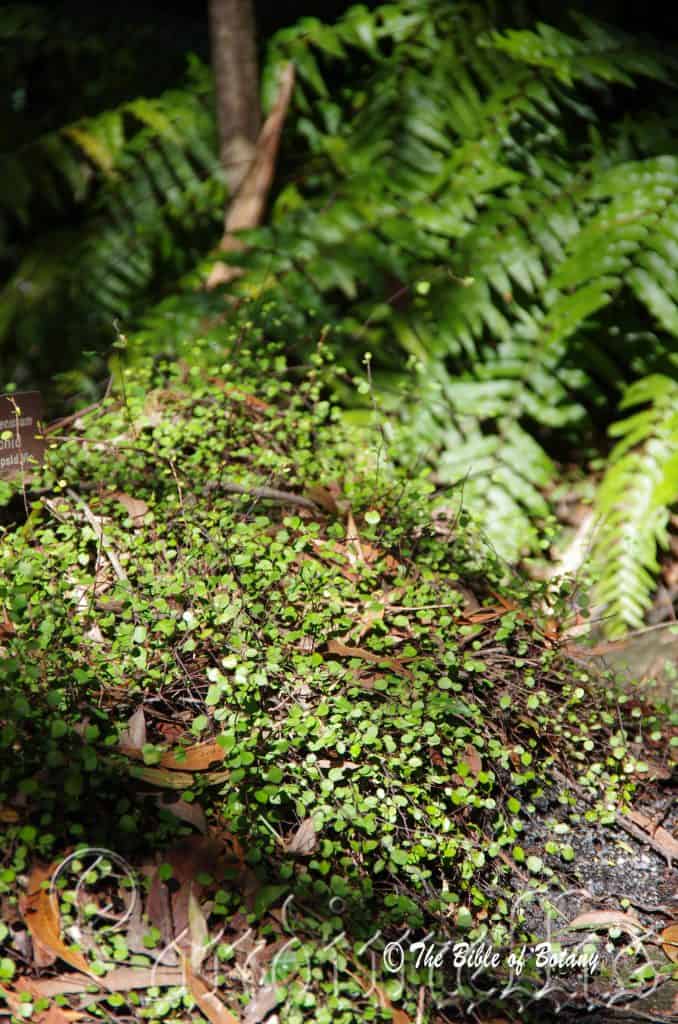
NCBG Coffs Harbour NSW
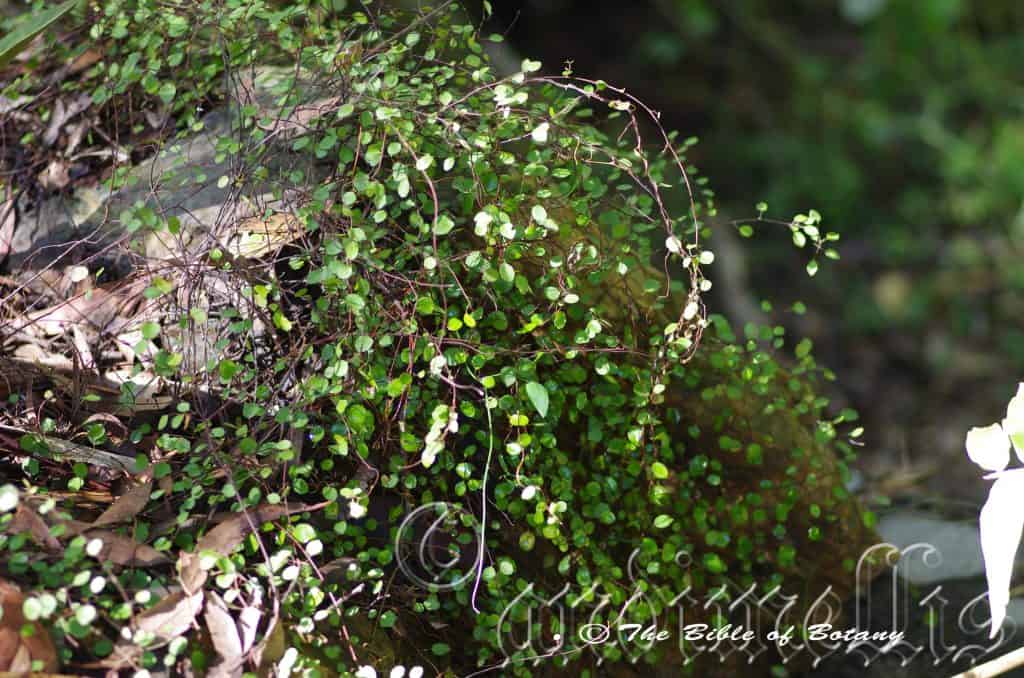
NCBG Coffs Harbour NSW
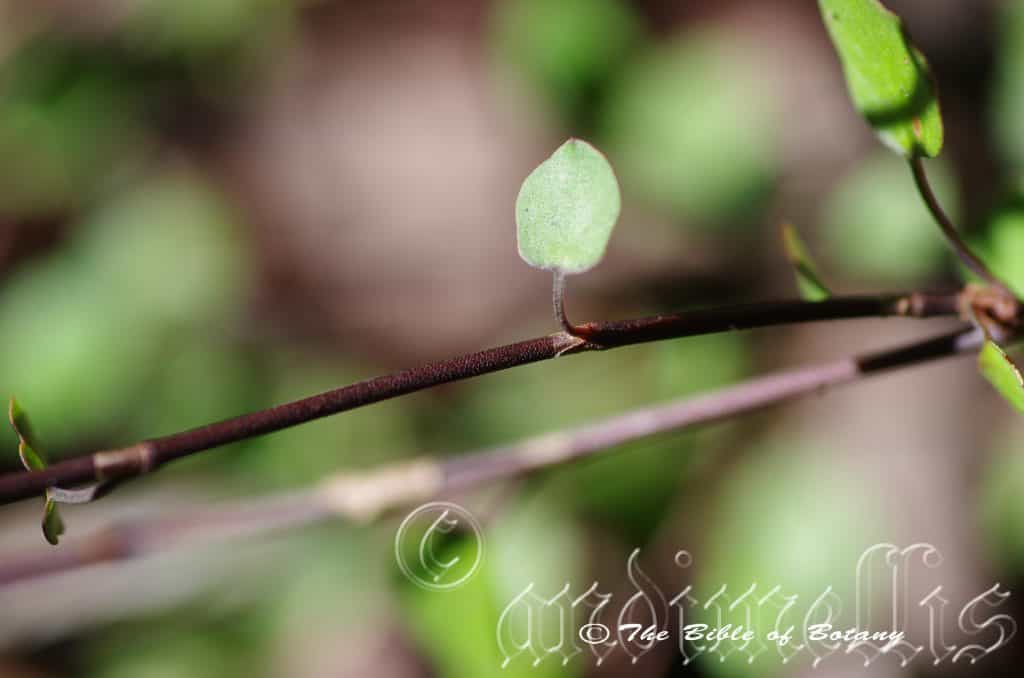
NCBG Coffs Harbour NSW
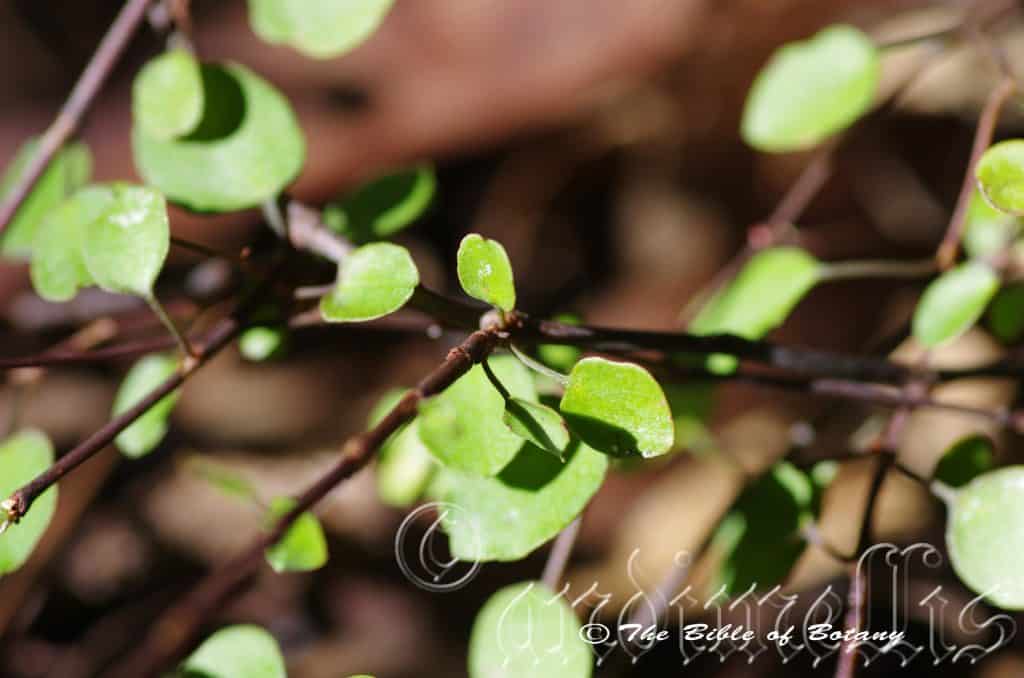
NCBG Coffs Harbour NSW
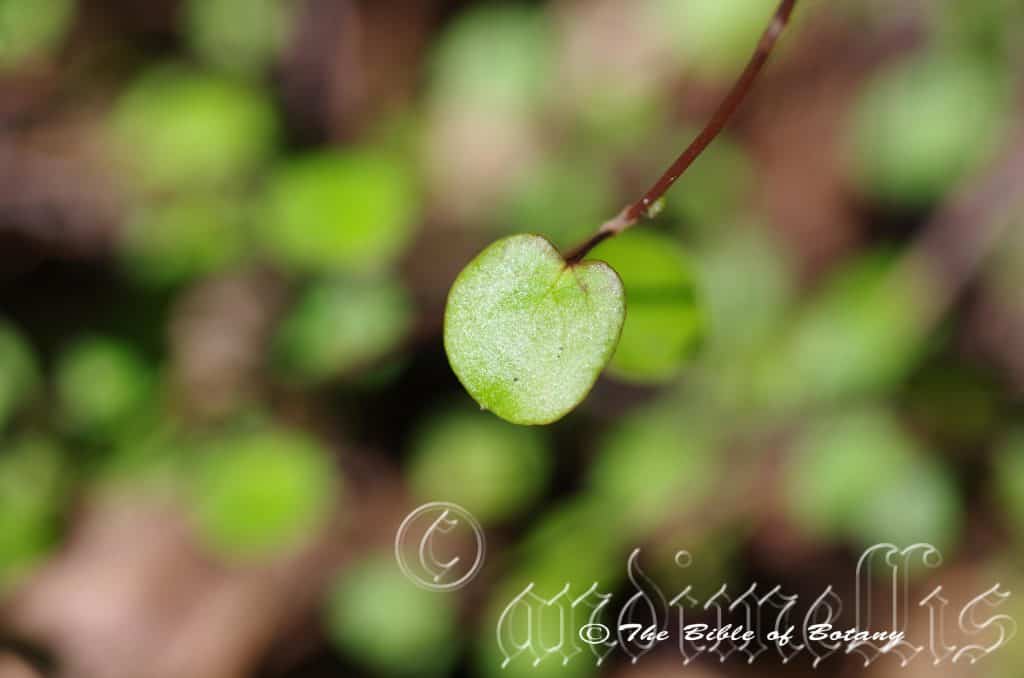
NCBG Coffs Harbour NSW
Muehlenbeckia axillaris
Classification:
Unranked: Angiosperms
Unranked: Eudicots
Unranked: Core eudicots
Order: Caryophyllales
Family: Polygonaceae
Genus: Is named in honour of Gustave Muehlenbeck; 1798-1845, who was a French physician and botanist.
Specie: From Axis, which is Latin for a leaf axil. It refers to bracts or auxiliary shoots which are all in the leaf axils
Sub species:
Common Name: Wire Vine or Slender Lignum.
Distribution:
Muehlenbeckia axillaris is found south from Canberra to Mount Buller in the Victorian Alps. There is a disjunct population further north near Walca in north eastern New South Wales.
https://avh.ala.org.au/occurrences/search?taxa=Muehlenbeckia+axillaris#tab_mapView
Habitat Aspect Climate:
Muehlenbeckia axillaris prefers light dappled shade to full sun. It grows cool temperate forests to open highland woodlands and open highland Eucalyptus forests. The altitude ranges from 700 meters ASL to 1500 meters ASL.
The temperatures range from minus 6 degrees in August to 33 degrees in January.
The rainfall ranges from lows of 800mm to an average of 2000mm.
Soil Requirements:
Muehlenbeckia axillaris prefers sandy loams to light clays. The soils are usually derived from decomposed granites or at times sandstones and metamorphic rocks. The soils pH ranges from 5pH to 6.5pH. It does not tolerate waterlogged soils but is found in soils that retain good moisture throughout the year. Non saline soils to moderately saline soils are tolerated.
Height & Spread:
Wild Plants: 1m to 3m by 1m to 3m.
Characteristics:
Muehlenbeckia axillaris’s stems are deep reddish-brown to deep purple-brown through to green close to the apexes. Large old plants may attain a stem diameter of 12mm. The young stems are pale green glabrous to moderately covered in minute, white, scales and or sessile stellate hairs. It is a straggling or prostrate low creeper twinning through other shrubs or forming wiry mats on the ground.
Muehlenbeckia axillaris’s alternate, disjunct leaves are hemi orbicular to ovate or oblong-ovate and measure 8mm to 10mm in length by 4mm to 8mm in width. The deep reddish-brown to deep purple-brown petioles and nearby stem is often surrounded by a sheath which is densely covered in reddish to reddish-fawn pubescent hairs. The petioles are thicker at the leaf base than the stem and measure 3mm to 6.5mm in length. The bases are rounded-cordate or attenuate while the apexes are obtuse to obtuse-truncate often with an emarginate or acute tip. The concolourous or discolourous laminas are deep grass-green to sea-green and glabrous to sparsely covered in minute, white, scales and or sessile stellate hairs. The laminas are flat or decurve slightly downwards at the margins while the margins are entire and thickened. The mid vein is faintly prominent on the lower lamina and is faintly recessed on the upper lamina. The lateral veins are faintly visible on the lower lamina.
The inflorescences of Muehlenbeckia axillaris are born singularly or in small clusters of 2 or 3 flowers from the leaf axis.
The male flowers have 5 white to creamy petals and measure 5mm to 6mm in diameter. The 5 stamens are opposite the petals. The stamens measure 2.5mm to 3mm in length while the cream obloidal anthers measure 0.4 to 0.6mm in length.
The cupular female flowers are translucent white with 5 minute erect lobes. The individual flowers measure 5mm to 6mm in diameter. The flowers appear throughout the warmer months of the year.
Muehlenbeckia axillaris fruits are black subglobose nut. The green 3 ribbed nuts are granulated or rugose and measure 2mm to 2.5mm in length.
Wildlife:
Muehlenbeckia axillaris’s flowers are visited by many different species of small beetles, wasps and native bees. The fruits are eaten by the Lewin’s Honeyeater and probably other specie of medium size honeyeaters and pigeons as well.
The flowers are succulent and filled with nectar making them a titbit of sweetness for the hungry.
Cultivation:
Muelenbeckia axillaris is a fairly fast growing plant which is worthwhile growing for the attractive leaves. It makes an excellent hanging basket plant that looks more delicate than it really is. It always looks green and fresh especially when drip irrigation is placed on the baskets.
In the ground it prefers a moist sunny to dappled light moist position. It is very suitable on all types of soil in small, medium and large gardens close to the coast or high in the mountains in cool temperate to warm sub-tropical gardens. As garden subjects it grows from 0.8 meter to 2 meters in height by 0.5m to 1m in width when grown on an open fence or pool surround. My parents in Seaford had a magnificent front hedge made from Muehlenbeckia axillaris that was nearly 2 meters high 300mm thick and 25 odd meters wide planting them out at 0.5 meter centers.
It is cold tolerant to temperatures at least as low as minus 7 degrees once established. It should be protected until they reach at least 0.5 of a meter in height.
It is best used adjacent to small areas of bush close to paths or the house so that their leaves can be appreciated. It can be planted in small groups of 2 or 3 to enhance their appearance.
If mild native fertilizers are used they will develop quickly after being planted out.
In Native gardens they can be used for attracting smaller butterflies, native bees, native flies or native beetles during flowering which are necessary for fertilization of the flowers. It is a micro photographer’s dream, from the small flowers to the myriad of small insects it attracts.
Propagation:
Seeds: Muehlenbeckia axillaris seeds can be sown directly into a seed raising mix after some pre-treatment. Scarify the seeds by placing them in a sock with clean course sand and placing them in the washing machine on Saturday morning is very affective. Cover the seeds with 1mm to 2mm of fine weed free mulch and keep moist. Place the tray in a warm sunny position. When the seedlings are 30mm to 50mm tall, prick them out and plant 2 or 3 into 50mm native tubes using a good organic mix.
Once the seedlings reach 100mm to 150mm in height the tips can be nipped out. When they again reach 100mm to 150mm they can be planted out into their permanent position. Nip the growing tips out again to create bushier plants. Group plantings of three to five plants planted at 0.6 meters to 0.8 meters centers will provide a quick ground cover.
Fertilize using seaweed, fish emulsion or organic chicken pellets soaked in water on an alternate basis. Fertilize every two months until the plants are established then twice annually in early September and March to maintain better health, vitality and better flowering.
Further Comments from Readers:
Hi reader, it seems you use The Bible of Botany a lot. That’s great as we have great pleasure in bringing it to you! It’s a little awkward for us to ask, but our first aim is to purchase land approximately 1,600 hectares to link several parcels of N.P. into one at The Pinnacles NSW Australia, but we need your help. We’re not salespeople. We’re amateur botanists who have dedicated over 30 years to saving the environment in a practical way. We depend on donations to reach our goal. If you donate just $5, the price of your coffee this Sunday, We can help to keep the planet alive in a real way and continue to bring you regular updates and features on Australian plants all in one Botanical Bible. Any support is greatly appreciated. Thank you.
In the spirit of reconciliation we acknowledge the Bundjalung, Gumbaynggirr and Yaegl and all aboriginal nations throughout Australia and their connections to land, sea and community. We pay our respect to their Elders past, present and future for the pleasures we have gained.
Muehlenbeckia gracillima
Classification:
Unranked: Angiosperms
Unranked: Eudicots
Unranked: Core eudicots
Order: Caryophyllales
Family: Polygonaceae
Genus: Is named in honour of Gustave Muehlenbeck; 1798-1845, who was a French physician and botanist.
Specie: From Gracilis, which is Latin for slender and graceful. It refers to plants especially the stems, which are more slender and graceful than other species in the genus.
Sub species:
Common Name: Wire Vine or Slender Lignum.
Distribution:
Muehlenbeckia gracillima is found in 3 disjunct populations on the Western Slopes, on and east of the Great Dividing Range from Port Douglas and Mareeba to Innisfail in far north eastern Queensland, Along the Fitzroy River near Rockhampton and south from Maryborough in southern coastal Queensland to Mallacoota in far north eastern Victoria.
https://avh.ala.org.au/occurrences/search?taxa=Muehlenbeckia+gracillima#tab_mapView
Habitat Aspect Climate:
Muehlenbeckia gracillima prefers light dappled shade. It grows on the margins of well-developed tropical rainforests, warm sub-tropical rainforests or wet schlerophyll forests or littoral rainforests in moister conditions along dry riverine river beds and banks. The altitude ranges from 5 meter ASL to 750 meters ASL.
Temperatures range from minus 3 degrees in August to 35 degrees in January.
Rainfall ranges from lows of 1000mm to an average of 2400mm.
Soil Requirements:
Muehlenbeckia gracillima prefers better quality sandy loams to light clays. The soils are usually derived from decomposed granites, sandstones, metamorphic rocks, brown basalt or black basalts. The soils pH ranges from 5pH to 7pH. It does not tolerate waterlogged soils. Non saline soils to moderately saline soils are tolerated.
Height & Spread:
Wild Plants: 1m to 2m by 1m to 2m.
Characteristics:
Muehlenbeckia gracillima’s stems are deep reddish-brown to deep purple-brown through to green close to the apexes. Large old plants may attain a stem diameter of 20mm. The young stems are pale green glabrous and irregularly striated.
Muehlenbeckia gracillima’s alternate, disjunct leaves are narrowly to broadly sagittate and measure 25mm to 95mm in length by 15mm to 55mm in width near the base. The base is sagittate to almost truncate while the apex is narrowly acuminate to narrowly acute. The concolourous laminas are mid green to pale green, dull, semi glossy and glabrous. The immature leaves and newly emerging leaves are similar to the adult leaves. The margins are entire to finely irregularly crenulate and slightly undulating. The lamina is flat, curves slightly upwards from the mid vein or is convex. The mid vein is prominent on the lower lamina and is distinctly visible on the upper lamina. The lateral veins are indistinct. The petioles are glabrous and measure 10mm to 50mm in length.
The inflorescence of Muehlenbeckia gracillima are monoecious or dioecious. It is born in loose disjunct spikes from the terminal or from the leaf axis. There are 1 to 3 flowers produced at each node on the spike which number 3 to 9 per spikes. The spikes measure 40mm to 140mm in length. The flowers measure 5mm to 6mm in diameter. The 5 creamy green to pale green obtuse petals measure 2.5mm to 2.5mm in length by 1mm to 1.5mm in width. The petals spread widely at right angles to the globose carpels. It is glabrous externally with the green style swelling to release the 3 spreading white stigma.
The male flowers have 8 white stamens 5 opposite the petals and 3 inside the outer ring. The stamens measure 2.5mm to 3mm in length while the white anthers measure 0.4 to 0.6mm in length.
The female flowers are similar to the male flowers but have 8 staminodes instead of the 8 stamens. The flowers appear all year especially after rain and in the warmer months.
Muehlenbeckia gracillima fruit is a black subglobose nut. The green 3 ribbed nuts are granulated and rugose and measure 2mm to 2.5mm in length.
Wildlife:
Muehlenbeckia gracillima’s flowers are visited by many different species of small beetles, wasps and native bees. The fruits are eaten by the Lewin’s Honeyeater and probably other specie of medium size honeyeaters and pigeons as well.
Cultivation:
Muehlenbeckia gracillima is a fairly fast growing plant which is worthwhile growing for the attractive leaves. It makes an excellent hanging basket plant that looks more delicate than it really is. They always look green and fresh especially when drip irrigation is placed on the baskets.
In the ground they prefer a moist sunny to very light shaded position. It is very suitable on all types of soil. It is most suitable for small, medium and large gardens close to the coast in cool temperate to warm sub-tropical gardens. As garden subjects they will grow from 0.8 meter to 1.2 meter in height by 1m to 1.5m in diameter when grown on an open fence or pool surround.
It is cold tolerant to temperatures at least as low as minus 3 degrees once established. They should be protected until they reach at least 0.5meters in height.
It is best used adjacent to small areas of bush close to paths or the house so that their leaves can be appreciated. They can be planted in small groups of 2 or 3 to enhance their appearance.
If mild native fertilizers are used they will develop quickly after being planted out.
In Native gardens they can be used for attracting smaller butterflies, native bees, native flies or native beetles during flowering which are necessary for fertilization of the flowers. It is a micro photographer’s dream, from the small flowers to the myriad of small insects they attract.
Propagation:
Seeds: Muehlenbeckia gracillima seeds can be sown directly into a seed raising mix after some pre-treatment. Scarify the seeds by placing them in a sock with clean course sand and placing them in the washing machine on Saturday morning is very affective. Cover the seeds with 1mm to 2mm of fine weed free mulch and keep moist. Place the tray in a warm sunny position. When the seedlings are 30mm to 50mm tall, prick them out and plant them into 50mm native tubes using a good organic mix.
Once the seedlings reach 100mm to 150mm in height prune them back to half their size. When they again reach 100mm to 150mm they can be planted out into their permanent position. Nip the growing tips out again to create bushier plants. Group plantings of three to five plants planted at 0.6 meters to 0.8 meters centers will provide a quick ground cover.
Fertilize using seaweed, fish emulsion or organic chicken pellets soaked in water on an alternate basis. Fertilize every two months until the plants are established then twice annually in early September and March to maintain better health, vitality and better flowering.
Further Comments from Readers:
Hi reader, it seems you use The Bible of Botany a lot. That’s great as we have great pleasure in bringing it to you! It’s a little awkward for us to ask, but our first aim is to purchase land approximately 1,600 hectares to link several parcels of N.P. into one at The Pinnacles NSW Australia, but we need your help. We’re not salespeople. We’re amateur botanists who have dedicated over 30 years to saving the environment in a practical way. We depend on donations to reach our goal. If you donate just $5, the price of your coffee this Sunday, We can help to keep the planet alive in a real way and continue to bring you regular updates and features on Australian plants all in one Botanical Bible. Any support is greatly appreciated. Thank you.
In the spirit of reconciliation we acknowledge the Bundjalung, Gumbaynggirr and Yaegl and all aboriginal nations throughout Australia and their connections to land, sea and community. We pay our respect to their Elders past, present and future for the pleasures we have gained.
Muellerina celastroides
Classification:
Unranked: Angiosperms
Unranked: Eudicots
Unranked: Core eudicots
Order: Santalales
Family: Loranthaceae
Genus: Is named in honour of Ferdinand Von Mueller; 1825-1896, who was a German born Australian Botanist who named over 2000 new species and was director of the Melbourne Botanic Gardens.
Specie: From Kelastros, which is Ancient Greek for bitter-sweet and Eîdos/Oides, which is Ancient Greek for alike or similar too. It refers to parasitic plants, which resemble the Celastrus genus. A good example is the leaves of the parasitic plant which mimics its host’s leaves often being plants in the Ligustrum genus.
Sub species:
Common Name:
Distribution:
Muellerina celastroides is found south from Fraser Island in central coastal Queensland to Ninety Mile Beach in eastern coastal Victoria. There are 2 disjunct populations one around Melbourne and the other at Corio Bay north of Yeppoon. It is mainly found on and east of the Great Dividing Range to the coast with a few populations on the Western Slopes like the Bunya Mountains and Narrabri.
https://avh.ala.org.au/occurrences/search?taxa=Muellerina+celasroides#tab_mapView
Habitat Aspect Climate:
Muellerina celastroides prefer light dappled shade. It grows in sclerophyll forest, dry rainforests, well-developed rainforest margins or littoral rainforest. It grows as a parasitic plant usually growing on Banksia, Casuarinaceae or on various rainforest trees. The altitude ranges from 5 meter ASL to 720 meters ASL.
Temperatures range from minus 3 degrees in August to 37 degrees in January.
Rainfall ranges from lows of 800mm to an average of 2100mm.
Soil Requirements:
Muellerina celastroides host trees prefer to grow on better quality sandy loams to medium clays. The soils are usually derived from decomposed granites, sandstones, metamorphic rocks brown basalt and black basalts. The soils pH ranges from 5pH to 7pH. It does not tolerate waterlogged soils. Non saline soils to moderately saline soils are tolerated.
Height & Spread:
Wild Plants: 1m to 2m by 2m to 3m.
Characteristics:
Muellerina celastroides is usually a spreading parasite but can be erect. The stems are silvery grey and glabrous. The new growth is crimson, red or orange.
The opposite leaves are oblong to elliptic and measure 25mm to 70mm in length by 15mm to 45mm in width. The bases are attenuate while the apexes are obtuse. The concolourous laminas are mid green, dull to semi glossy and glabrous. The immature leaves and newly emerging leaves are similar to the adult leaves with a bronze tinge. The laminas recurve slightly upwards from the midvein to the margins and are slightly undulating while the margins are entire. The mid vein is slightly prominent on the lower lamina and is visible on the upper lamina. The lateral veins are obscurely pinnate. The petioles are glabrous and measure 3mm to 8mm in length.
The inflorescence are short racemes born from the leaf axils with 1 to 3 pairs of triads. The racemes and pedicels are sparsely covered in minute, pale brown, tomentose hairs. The racemes measure 5mm to 12mm in length while the pedicels measure 5mm to 8mm in length. The cupuliform calyxes measure 0.7mm to 1.2mm in length. The usually cylindrical or at times weakly clavate corolla is white and pale pink, white and pale green or white, pale pink and pale green. The corolla tubes measures 10mm to 16mm in length. The 5 or 6 linear lobes have acute apexes and measure 12mm to 20mm in length.
The 5 deep red to burgundy-maroon form a tube at the base and are free for 8mm to 13mm of their length. The yellow anthers measure 1.2 to 1.6mm in length. The white pistil is surrounded by the stamens and measures 8mm to 13mm in length. The flowers appear from September to November.
The fruit are pyriform berries. The green berries turn pale reddish-yellow to pale reddish-orange and measure 7mm to 11mm in length.
Wildlife:
Muellerina celastroides is the host plant for the Northern Jezabella butterfly (Delias argenthona), the Northern Purple Azure (Ogyris zosine), Margarita’s Blue (Candalides margarita), Silky Jewel (Hypochrysops digglesii) and Dark purple Azure (Ogyris abrota).
The beautiful little Mistletoe Bird (Dicaeum hirundinaceum) is the main distributor of the seeds however other small honeyeaters can also be involved.
Cultivation:
Muellerina celastroides is not a favourite many people and just as many appreciate the real beauty they have to offer.
However if one commences life on a tree close to the ground where the flowers and fruits can be viewed easily it may be worthwhile leaving there as a curiosity. The fruits can then be controlled when ripe or they can be left to nature. They make an interesting addition to the garden. It is a great talking point for children and adults alike. The seeds must be placed onto an Acacia specie to survive.
Propagation:
Seeds: Muellerina celastroides seeds can be placed directly onto the branch of an appropriate host tree. See list under parasites and their hosts. Do not remove the sticky flesh from the seed as this helps with the adhering process of the seed to the host and with the absorption of moisture until the little seedling is capable of supporting itself. Alternatively the seeds can be removed from the ripe berries by eating them and spitting the seeds out. The seeds can be placed directly onto the branch where you want it to grow. Use the fruit as the adhesive or flour and water to stick the seed to the branch. Seeds usually germinate in a few days to a week.
Further Comments from Readers:
Hi reader, it seems you use The Bible of Botany a lot. That’s great as we have great pleasure in bringing it to you! It’s a little awkward for us to ask, but our first aim is to purchase land approximately 1,600 hectares to link several parcels of N.P. into one at The Pinnacles NSW Australia, but we need your help. We’re not salespeople. We’re amateur botanists who have dedicated over 30 years to saving the environment in a practical way. We depend on donations to reach our goal. If you donate just $5, the price of your coffee this Sunday, We can help to keep the planet alive in a real way and continue to bring you regular updates and features on Australian plants all in one Botanical Bible. Any support is greatly appreciated. Thank you.
In the spirit of reconciliation we acknowledge the Bundjalung, Gumbaynggirr and Yaegl and all aboriginal nations throughout Australia and their connections to land, sea and community. We pay our respect to their Elders past, present and future for the pleasures we have gained.
Muellerina eucalyptoides
Classification:
Unranked: Angiosperms
Unranked: Eudicots
Unranked: Core eudicots
Order: Santalales
Family: Loranthaceae
Genus: Is named in honour of Ferdinand Von Mueller; 1825-1896, who was a German born Australian Botanist who named over 2000 new species and was director of the Melbourne Botanic Gardens.
Specie: From Eu, which is Greek a prefix for good or well, Kaluptos, which is Ancient Greek for to cover up and Eîdos/Oides, which is Ancient Greek for alike or similar to. It refers to the similarity of the leaves to those of the Eucalyptus genus.
Sub species:
Common Name:
Distribution:
Muellerina eucalyptoides is found south from the Boyne River near Kingaroy in southern Queensland to Mount Scott National Park in south eastern South Australia. It is found on the Western Slopes, on and east of the Great Dividing Range to the coast. There is an isolated population in the Eungella National Park in central eastern Queensland.
https://avh.ala.org.au/occurrences/search?taxa=Muellerina+eucalyptoides#tab_mapView
Habitat Aspect Climate:
Muellerina eucalyptoides prefers light dappled shade on the margins of well-developed tropical rainforests, warm sub-tropical rainforests or wet schlerophyll forests. It grows in moister conditions along dry riverine river beds and banks as well as littoral rainforest. The altitude ranges from 5 meter ASL to 950 meters ASL.
Temperatures range from minus 4 degrees in August to 35 degrees in January.
Rainfall ranges from lows of 400mm to an average of 2000mm.
Soil Requirements:
Muellerina eucalyptoides host trees prefers better quality sandy loams to medium clays. The soils are usually derived from decomposed granites, sandstones, metamorphic rocks brown basalt and black basalts. The soils pH ranges from 5pH to 7pH. They do not tolerate waterlogged soils. Non saline soils to moderately saline soils are tolerated.
Height & Spread:
Wild Plants: 1m to 2m by 1m to 2m.
Characteristics:
Muellerina eucalyptoides is usually a spreading parasite but can be erect. The stems are silvery grey and glabrous. The new growth is crimson, red or orange.
The opposite leaves are lanceolate to narrow oblong and measure 55mm to 250mm in length by 7mm to 28mm in width. The bases are asymmetrical, oblique and attenuate while the apexes are acute. The concolourous laminas are olive-green, yellow-green, mid green to blue-green dull to semi glossy and glabrous. The immature leaves and newly emerging leaves are similar to the adult leaves with a bronze tinge. The laminas are flat and straight while the margins are entire. The mid vein and lateral veins are obscure. The petioles are glabrous and measure 5mm to 30mm in length.
The inflorescence are short racemes born from the leaf axils with 3 to 4 pairs of triads or at times are single flowered. The peduncle, raceme and pedicels are glabrous while the racemes are swollen at the junction with the pedicels. The peduncle measures 5mm to 10mm in length while the raceme measures 12mm to 35mm in length and the pedicels measure 5mm to 10mm in length. The cupuliform calyxes measure 0.6mm to 1mm in length. The usually cylindrical or at times weakly clavate corolla is yellow and orange, yellow and red, yellowish–green and orange or yellowish-green and red. The corolla tubes measures 18mm to 27mm in length. The 5 linear lobes have acute apexes and measure 1.2mm to 18mm in length.
The 5 yellow exserted filaments form a tube at the base and are free for 18mm to 13mm of their length. The yellow narrow obloidal anthers measure 4 to 7mm in length. The yellow style turns red near the red stigma is free from the stamens and measures 8mm to 13mm in length. The flowers appear from September to November.
The fruits are pyriform berries. The green berries are glabrous and turn yellow when ripe. The rudimentary style is persistent on the ripe fruits. The berries measure 8mm to 15mm in length by 5mm to 9mm in diameter.
Wildlife:
Muellerina eucalyptoides’s host to the White Imperial (Delias harpalyce), and the Purple Azure (Ogyris genoveva)
The beautiful little Mistletoe Bird (Dicaeum hirundinaceum) is the main distributor of the seeds however other small honeyeaters can also be involved.
Cultivation:
Muellerina eucalyptoides is not a favourite many people and just as many appreciate the real beauty they have to offer.
However if one commences life on a tree close to the ground where the flowers and fruits can be viewed easily it may be worthwhile leaving there as a curiosity. The fruits can then be controlled when ripe or they can be left to nature. They make an interesting addition to the garden. It is a great talking point for children and adults alike. The seeds must be placed onto an Acacia specie to survive.
Propagation:
Seeds: Muellerina eucalyptoides seeds can be placed directly onto the branch of an appropriate host tree. See list under parasites and their hosts. Do not remove the sticky flesh from the seed as this helps with the adhering process of the seed to the host and with the absorption of moisture until the little seedling is capable of supporting itself. Alternatively the seeds can be removed from the ripe berries by eating them and spitting the seeds out. The seeds can be placed directly onto the branch where you want it to grow. Use the fruit as the adhesive or flour and water to stick the seed to the branch. Seeds usually germinate in a few days to a week.
Further Comments from Readers:
Hi reader, it seems you use The Bible of Botany a lot. That’s great as we have great pleasure in bringing it to you! It’s a little awkward for us to ask, but our first aim is to purchase land approximately 1,600 hectares to link several parcels of N.P. into one at The Pinnacles NSW Australia, but we need your help. We’re not salespeople. We’re amateur botanists who have dedicated over 30 years to saving the environment in a practical way. We depend on donations to reach our goal. If you donate just $5, the price of your coffee this Sunday, We can help to keep the planet alive in a real way and continue to bring you regular updates and features on Australian plants all in one Botanical Bible. Any support is greatly appreciated. Thank you.
In the spirit of reconciliation we acknowledge the Bundjalung, Gumbaynggirr and Yaegl and all aboriginal nations throughout Australia and their connections to land, sea and community. We pay our respect to their Elders past, present and future for the pleasures we have gained.
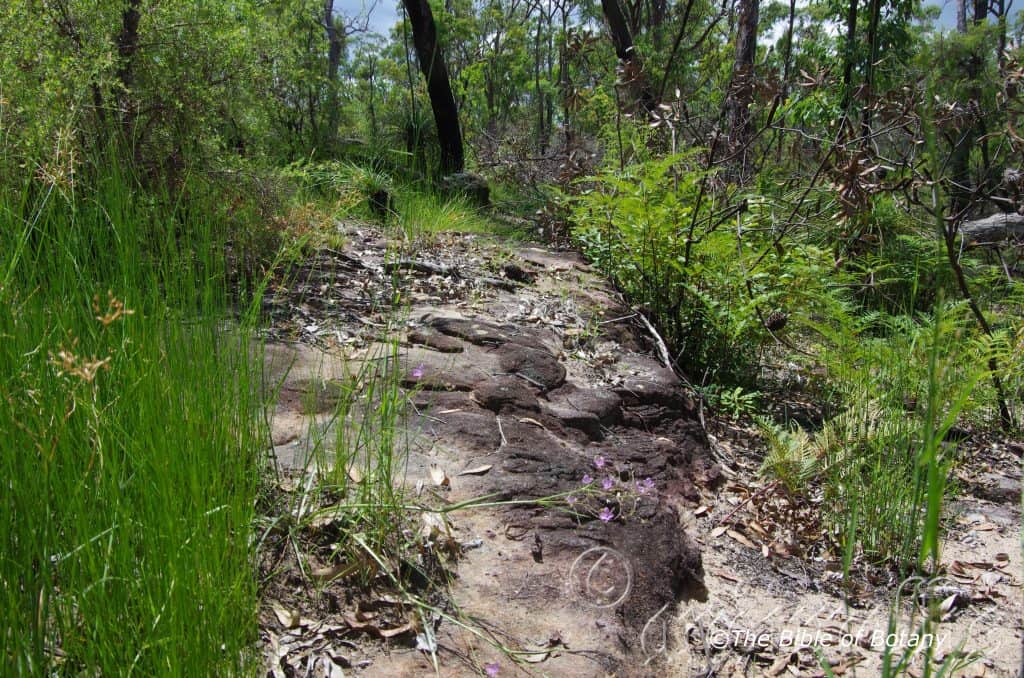
Fortis Creek National Park NSW.
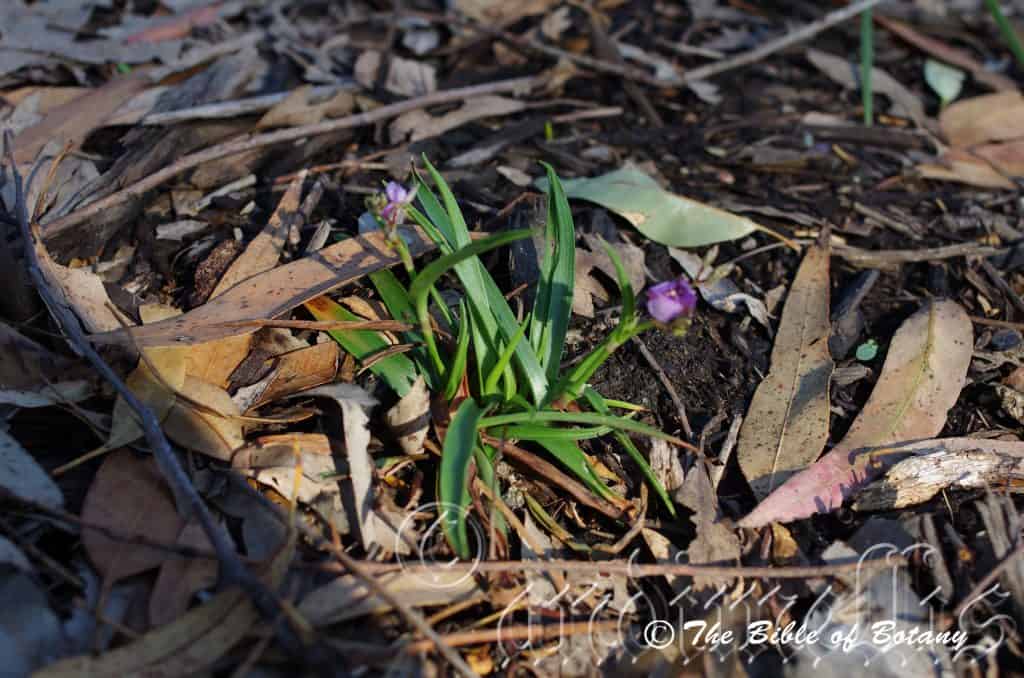
Mount Cootha Botanic gardens Qld.

Wombat Creek Conservation Park NSW
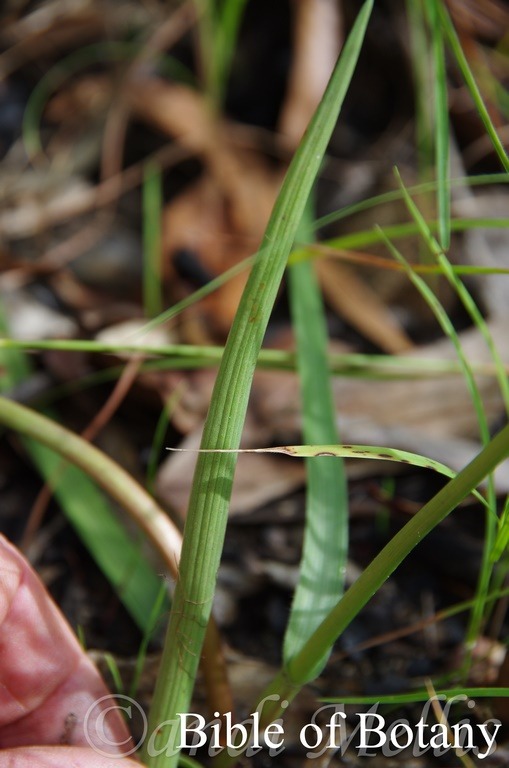
Wombat Creek Conservation Park NSW
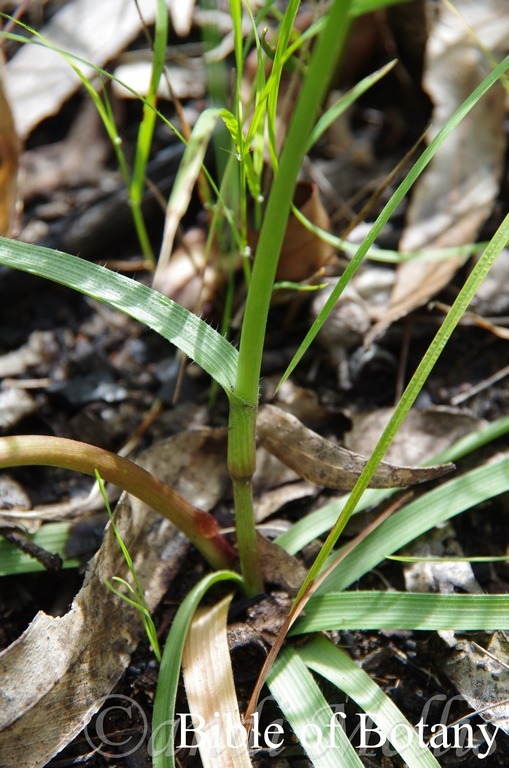
Wombat Creek Conservation Park NSW
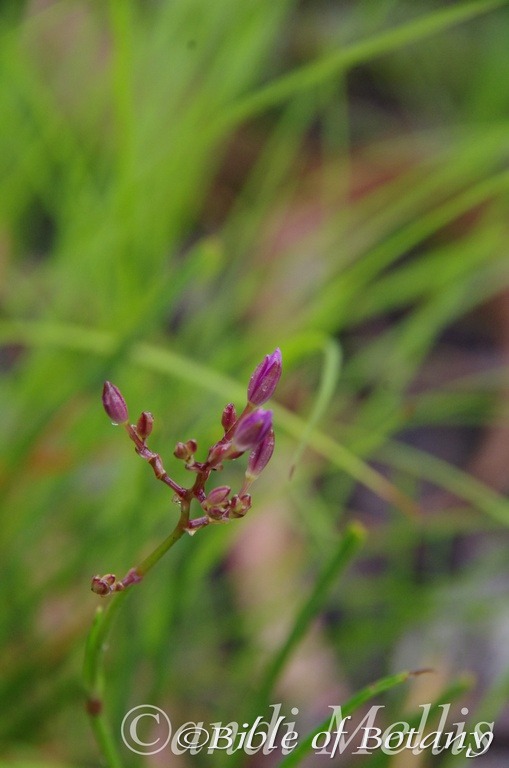
Fortis Creek National Park NSW
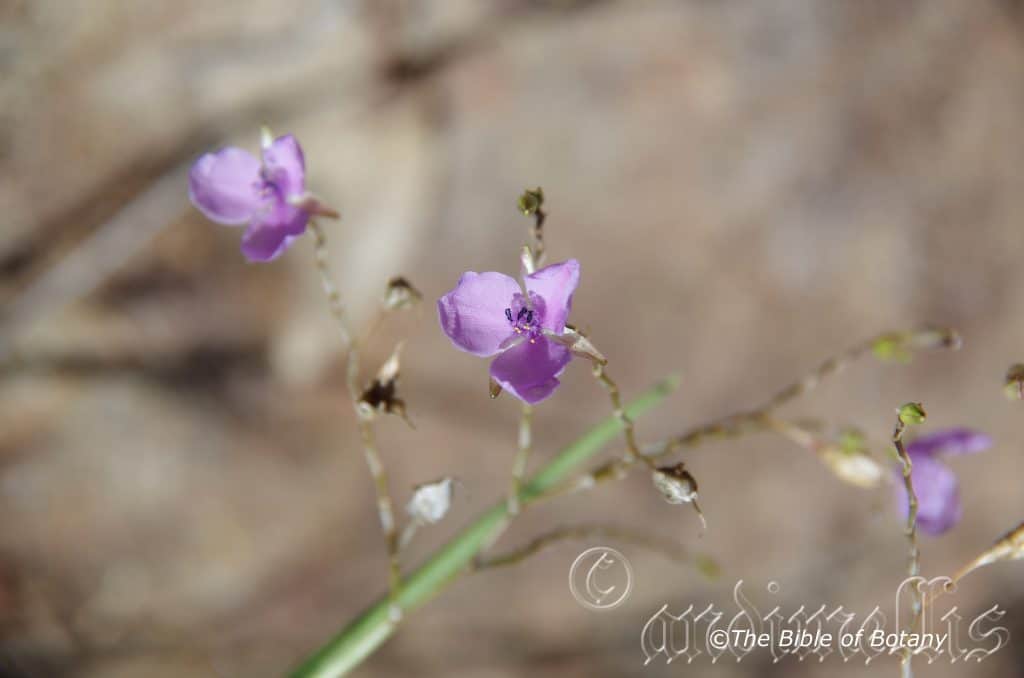
Fortis Creek National Park NSW.
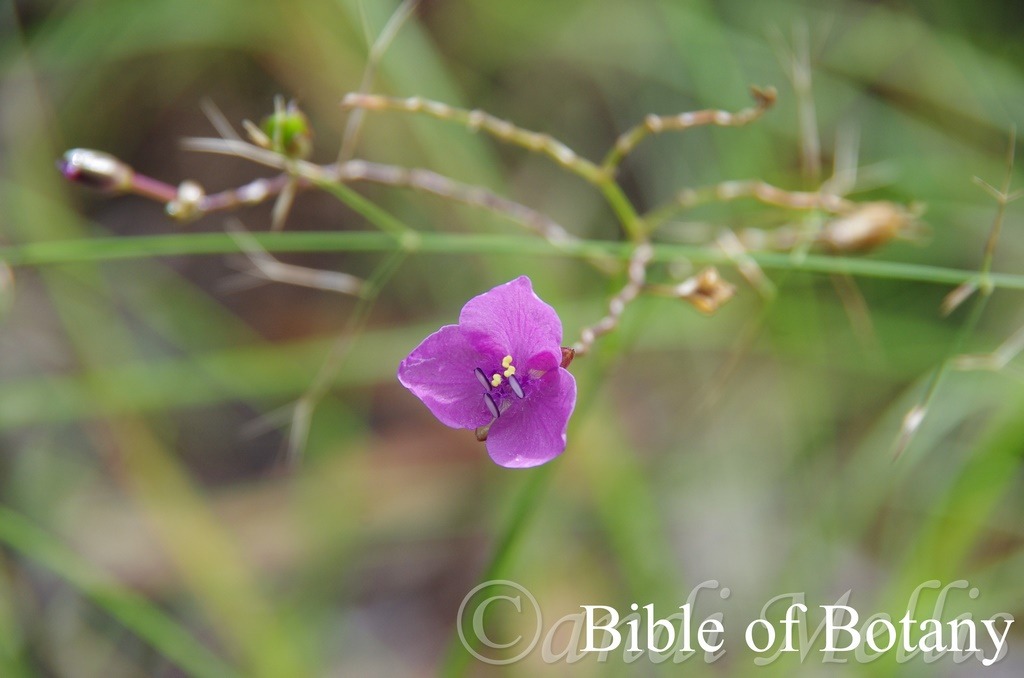
Wombat Creek Conservation Park NSW
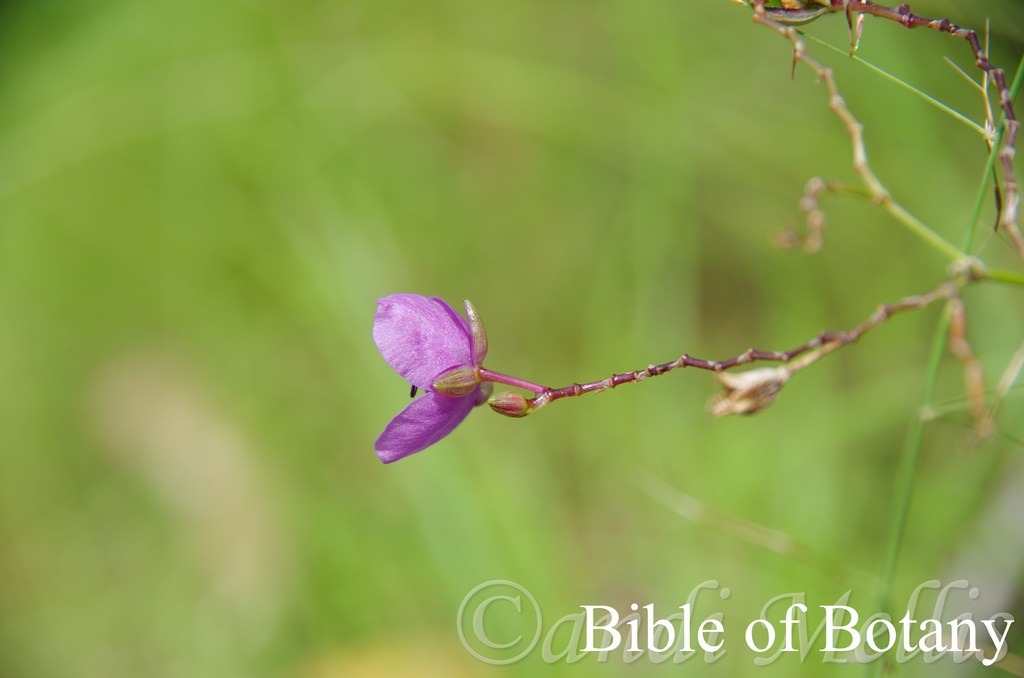
Wombat Creek Conservation Park NSW
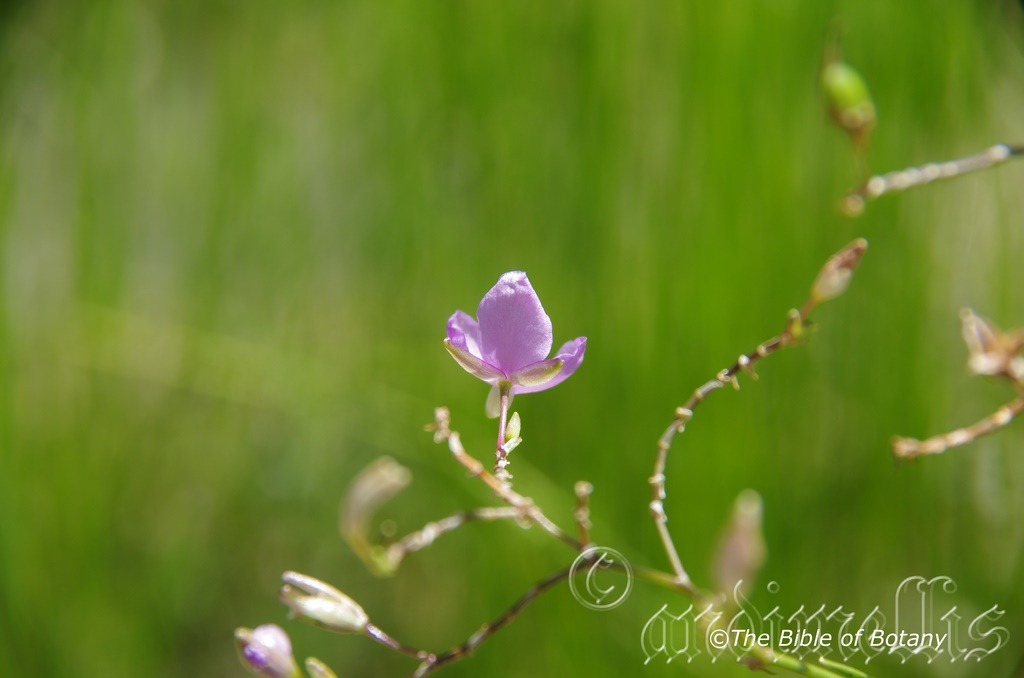
Fortis Creek National Park NSW.
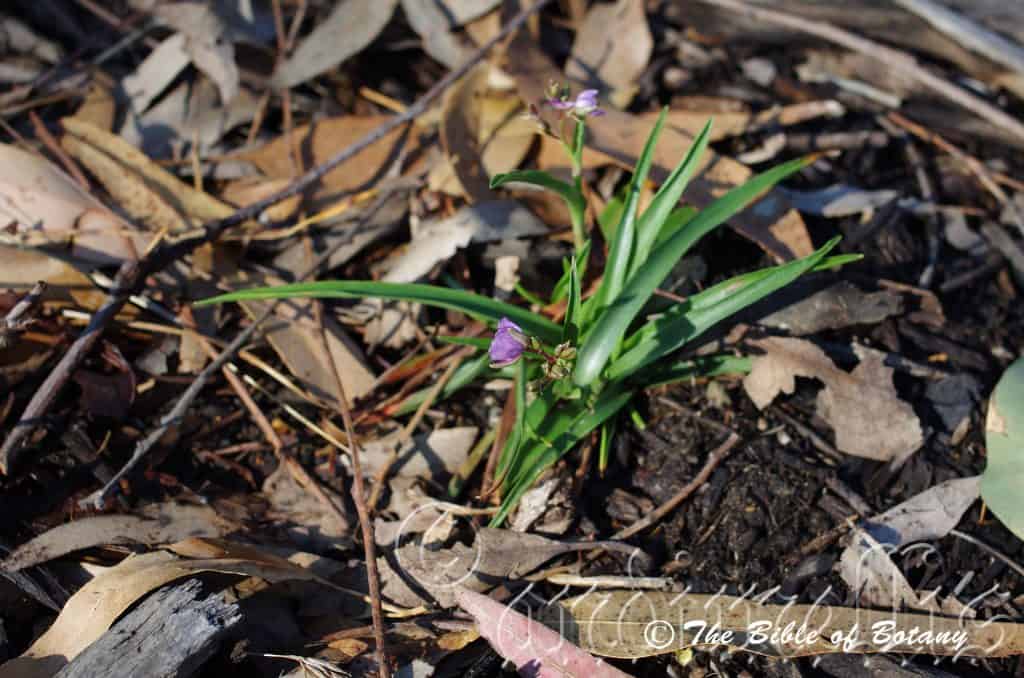
Mount Cootha Botanic gardens Qld.
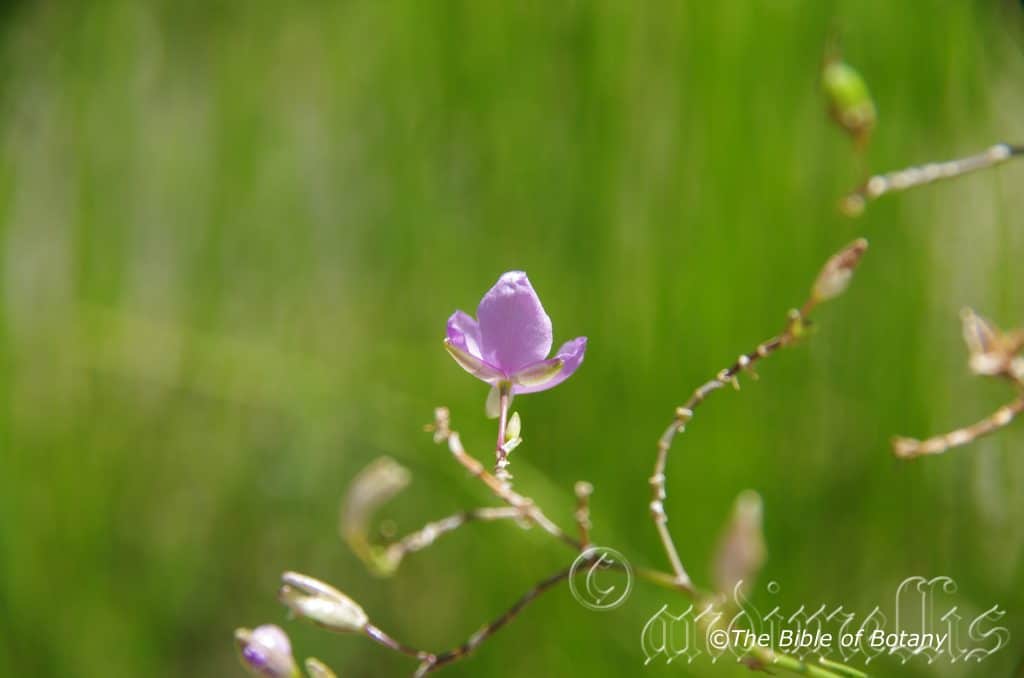
Fortis Creek National Park NSW.
Murdannia graminea
Classification:
Unranked: Monocots
Unranked: Commelinids
Order: Commelinales
Family: Commelinaceae
Genus: Is named in honour of Murdan Aly; who was probably the first and best known of the Indian botanical herbarium collectors in the 1800’s.
Specie: From Gramine, which is Latin for a grass like. It refers to plants, which produce grains resembling some cereals and/or the leaves resembling some grasses.
Sub species:
Common Name: Slug Herb or Blue Murdannia.
Distribution:
Murdannia graminea is found north of a line from the Dampier Peninsula in north west Western Australia to the Paroo Council area then south to Wellington then east to south Sydney in central coastal new South Wales.
It is also found further south around Karratha in central coastal Western Australia.https://avh.ala.org.au/occurrences/search?taxa=Murdannia+graminea#tab_mapView
Habitat Aspect Climate:
Murdannia graminea prefers light filtered sun to full sun. It grows in moist schlerophyll forests to dry sclerophyll forests. The altitude ranges from 10 meter ASL to 1280 meters ASL.
The temperatures range from minus 3 degrees in August to 44 degrees in January.
The rainfall ranges from lows of 400mm to an average of 3200mm.
Soil Requirements:
Murdannia graminea prefers sandy loams to medium clays. The soils are usually derived from decomposed granites, sandstones, metamorphic rocks or conglomerates. The soils pH ranges from 4.5pH to 6pH. It does not tolerate waterlogged soils. Non saline soils to moderately saline soils are tolerated.
Height & Spread:
Wild Plants: 0.3m to 0.7m by 0.4m to 0.5m when in bloom.
Characteristics:
Murdannia graminea is erect slender herbaceous perennial flax like plant. The roots are thick and tuberous and can extend several meters into sandy soils for moisture. The deep green stems measure 100m to 600mm in length.
Murdannia graminea’s leaves are for the greater part basal however some most plants may have a number of cauline leaves along the stems. The linear leaves measure 50mm to 300mm by 5mm to 12mm in width. The base is short basal clasping and measure from 6mm to 15mm in length while the apex is acute. The base is covered in white ciliate hairs. The concolourous laminas are blue-green or at times have a purplish sheen. The laminas are slightly scabrous. The immature leaves and newly emerging leaves are paler. The margins are entire while the lamina curves slightly upwards from the mid vein especially in plants that are growing in full sun. The mid vein is prominent on the lower lamina and is distinctly visible on the upper lamina.
The inflorescence of Murdannia graminea are born in a loose panicle. There are 18 to 33 flowers in a panicle. The long, slender peduncle measures 60mm to 200mm in length while the pedicillate measure 10mm to 20mm in length and the pedicles measure 3mm to 10mm in length. The 3 narrow elliptical outer tepals are deep green with a pink or purple tinge and measure 6mm to 8mm in length by 2.6mm to 3.6mm in width. The tepals have 3 prominent parallel veins below which are visible from above. The margins are entire and sparsely covered in short white ciliate hairs while the apexes are acute. The margins and apex curve slightly upwards near the edges.
The 3 inner tepals are pink, purple and rarely white and measure 8mm to 11mm in length by 7mm to 10mm in width. The tepals spread widely and are round to very broadly spathulate. The margins are entire flat, slightly recurved or slightly reflexed or slightly wavy. It is glabrous.
The 6 dimorphic white, pink or purple stamens are glabrous and measure 5mm to 6mm in length for the fertile stamens and 3mm to 3.5mm for the staminodes. Both the stamens and staminodes filaments are covered in long white, pilose hairs. The staminodes divide into three near the apex where the cream or white anthers are. The stamens anthers are deep purple. It is larger and strongly recurved towards the margins.
The single, glabrous, white pink or purple style tapers towards the stigma and measures 4.5mm to 6mm in length. The style is erect or curved. The flowering varies throughout its range from mid-November right through to early May.
Murdannia graminea’s fruit is an ellipsoidal capsule. The green capsules turn grey to black when ripe surrounded by the persistent outer tepals. The capsules measure 6mm to 10mm in length by 2mm to 3mm in diameter. The roughly circular seeds are grey-brown, glabrous pitted, and measures 1mm to 1.5mm in diameter. There 4 to 5 seeds in each of the 3 locules.
Wildlife:
Murdannia graminea’s flowers are visited by many different species of small butterflies plus wasps and native bees. The roots are edible and have a mild but good flavour. The roots are also eaten by several unidentified mice probably in the Notomys family.
Cultivation:
Murdannia graminea make excellent small flax like plants for the rockery or other sunny spot. They always look green and fresh especially where adequate ground moisture is retained in the soil. It is very suitable on medium light clays to pure sandy soils provided there is plenty of mulch available at all times. It is most suitable for small medium and large gardens close to the coast or in semi-arid inland areas in cool temperate, warm sub-tropical, tropical or monsoonal gardens. As garden subjects they will grow from 0.5m to 0.7m by 0.4m to 0.5m when in bloom and grown in the open.
It is cold tolerant to temperatures as low as minus 4 degree once established. They add variation to the shrubbery with the strap leaves giving a vertical look.
It is most suitable for use around sunny swimming pools, courtyards, besides pathways, sunny rockeries, along sandy clay banks or along drive ways or adjacent to natural bush gardens. Mass plantings of 5 to 20 or more plants even in small areas; really do the plants justification especially when it is in flower. Medium fish or frog ponds will benefit from Murdannia graminea.
If it is placed around a pool, courtyards or other confined spaces then plant them in small groups and scatter plant them in groups or 3 or more for a more informal natural look against walls to help soften them. Using rocks and small boulders can make the pool or any water feature appear like an oasis. The leaves and flowers can make a great start for the larger heath setting.
If companion plants are sought then the choice of plants to use either side is limited only by size of the area to be landscaped and the size of the other plants as they add something soft to the garden. The foliage and the flowers would complement each other yet give a strong 3 dimensional feature with plenty of character in a small area. Avoid reds, oranges, deep yellows, should be no more than 500mm in height to high light the Murdannia. Beneath a mallee tree they can be mass planted for a natural bush setting adding good colour during the flowering season.
It is great to break up horizontal lines along driveways. They can be used to great affect where a dry creek bed is the theme by using them to mark out the banks. This is especially so where a pool and small stream have been created.
Another method would be to mass plant them mixing them with prostrate or small broad leaf shrubs. Use shrubs with pale yellow or deep cream coloured flowers to deep purples and blues as they will absorb the soft colours of Murdannia flowers and all their beauty will be lost. Regular fertilizing will increase bloom sizes and prolong the flowering season in any given area.
Propagation:
Seeds: Murdannia graminea seeds can be sown into a seed raising mix. Cover the seeds with 2mm to 3mm of fine weed free mulch and keep moist. Place the tray in a warm sunny position in spring. When the seedlings are 30mm to 50mm tall, prick them out and plant them into 50mm native tubes using a good organic mix.
Once the seedlings reach 100mm to 150mm in height they can be planted out into their permanent position.
Fertilize using seaweed, fish emulsion or organic chicken pellets soaked in water on an alternate basis. Fertilize every two months until the plants are established then twice annually in early September and March to maintain better health, vitality and better flowering.
Further Comments from Readers:
Hi reader, it seems you use The Bible of Botany a lot. That’s great as we have great pleasure in bringing it to you! It’s a little awkward for us to ask, but our first aim is to purchase land approximately 1,600 hectares to link several parcels of N.P. into one at The Pinnacles NSW Australia, but we need your help. We’re not salespeople. We’re amateur botanists who have dedicated over 30 years to saving the environment in a practical way. We depend on donations to reach our goal. If you donate just $5, the price of your coffee this Sunday, We can help to keep the planet alive in a real way and continue to bring you regular updates and features on Australian plants all in one Botanical Bible. Any support is greatly appreciated. Thank you.
In the spirit of reconciliation we acknowledge the Bundjalung, Gumbaynggirr and Yaegl and all aboriginal nations throughout Australia and their connections to land, sea and community. We pay our respect to their Elders past, present and future for the pleasures we have gained.
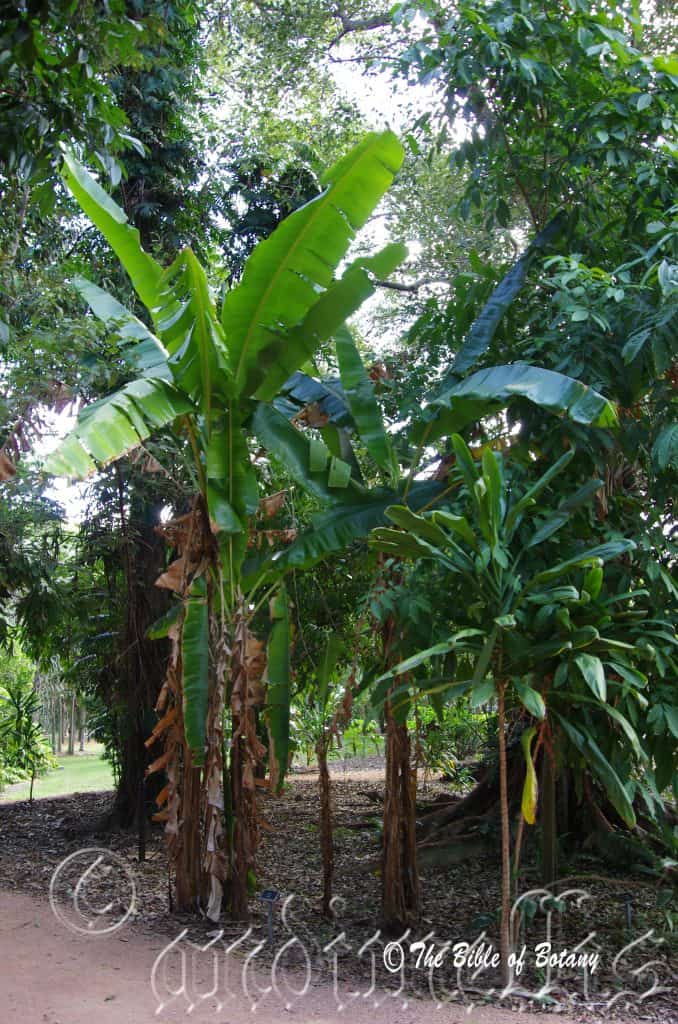
Anderson Gardens Townsville Qld.
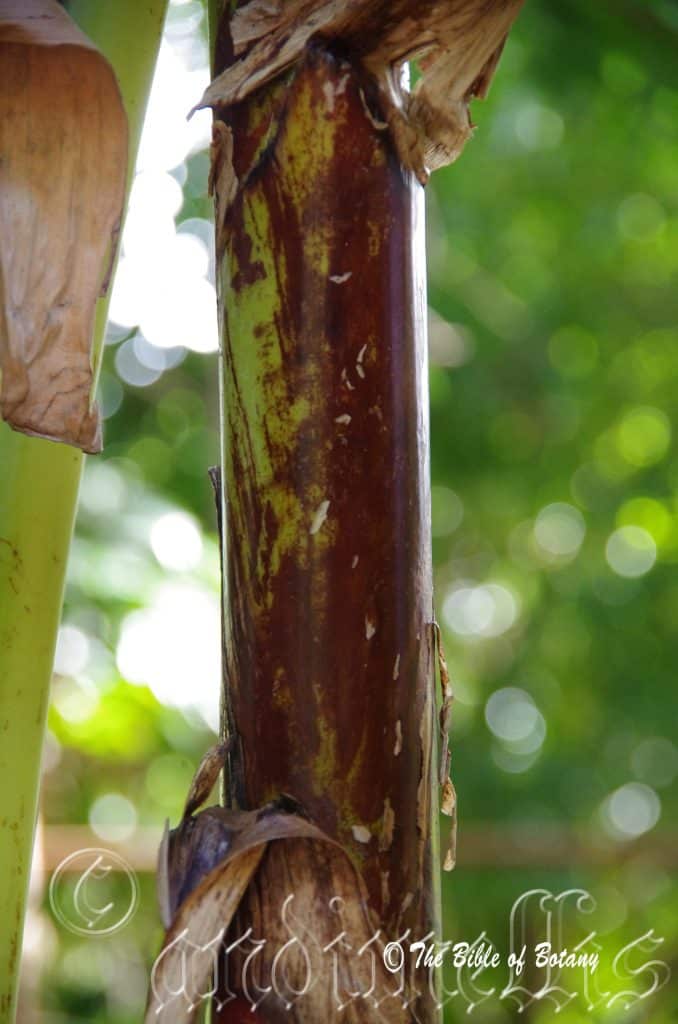
Anderson Gardens Townsville Qld.
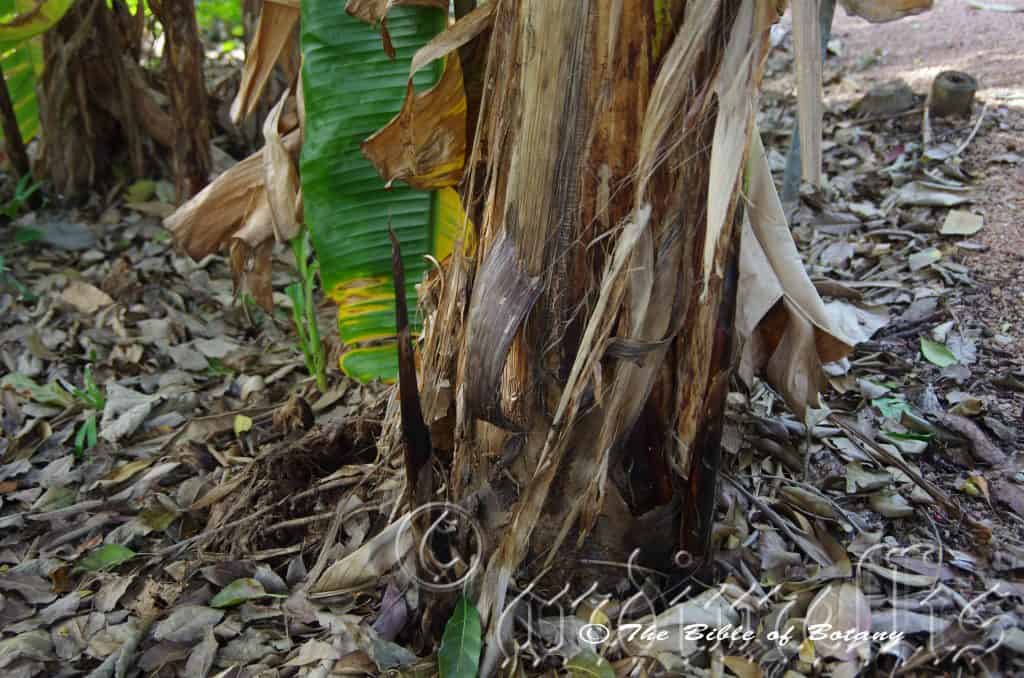
Anderson Gardens Townsville Qld.
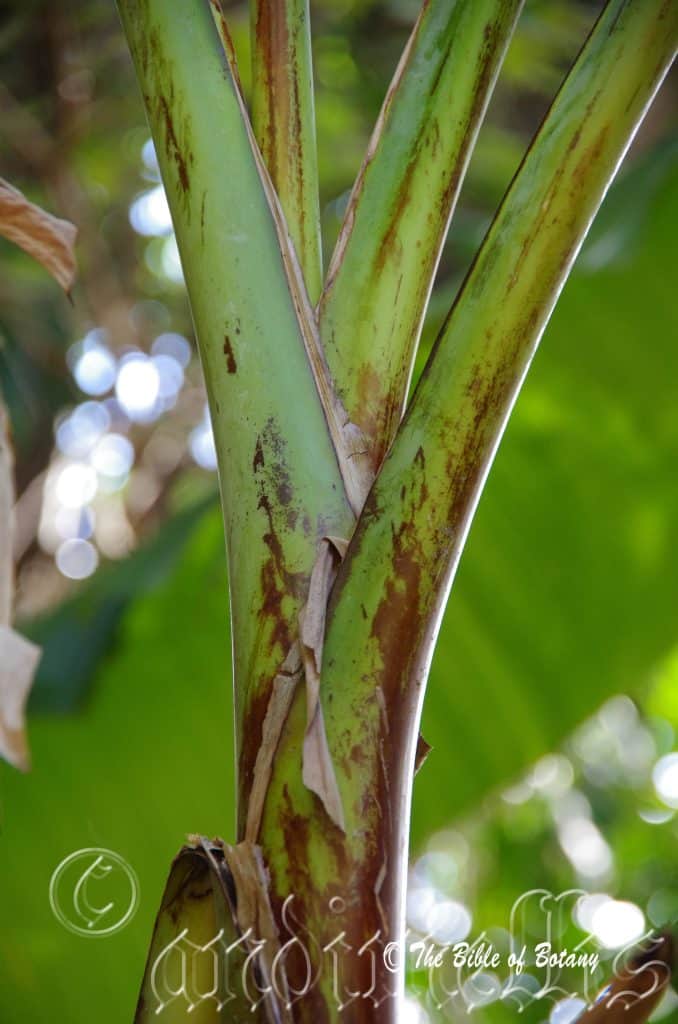
Anderson Gardens Townsville Qld.
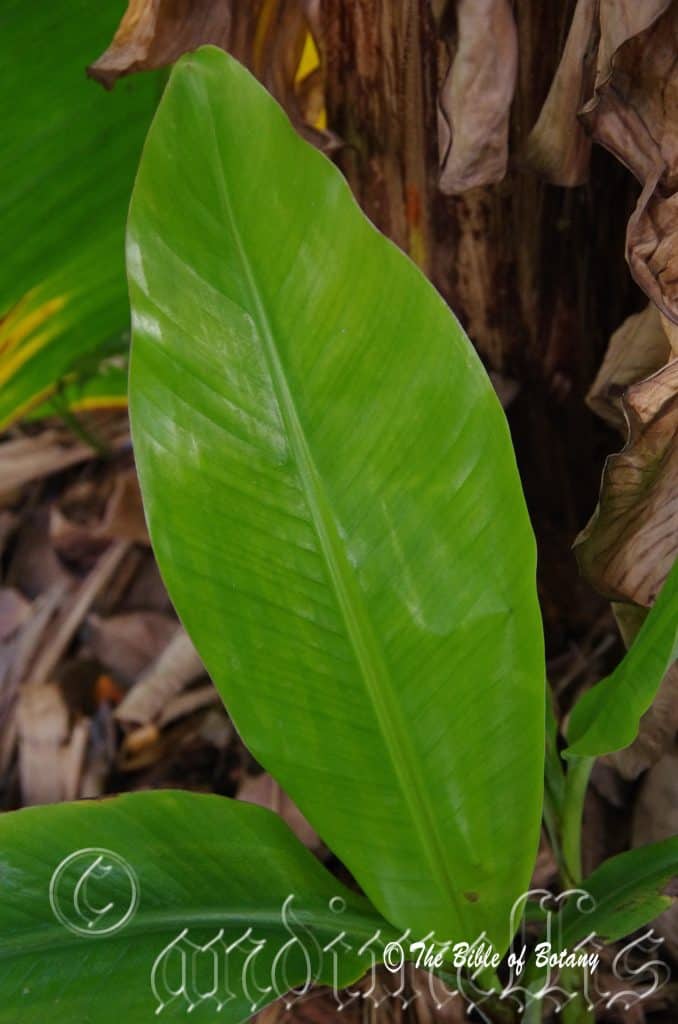
Anderson Gardens Townsville Qld.
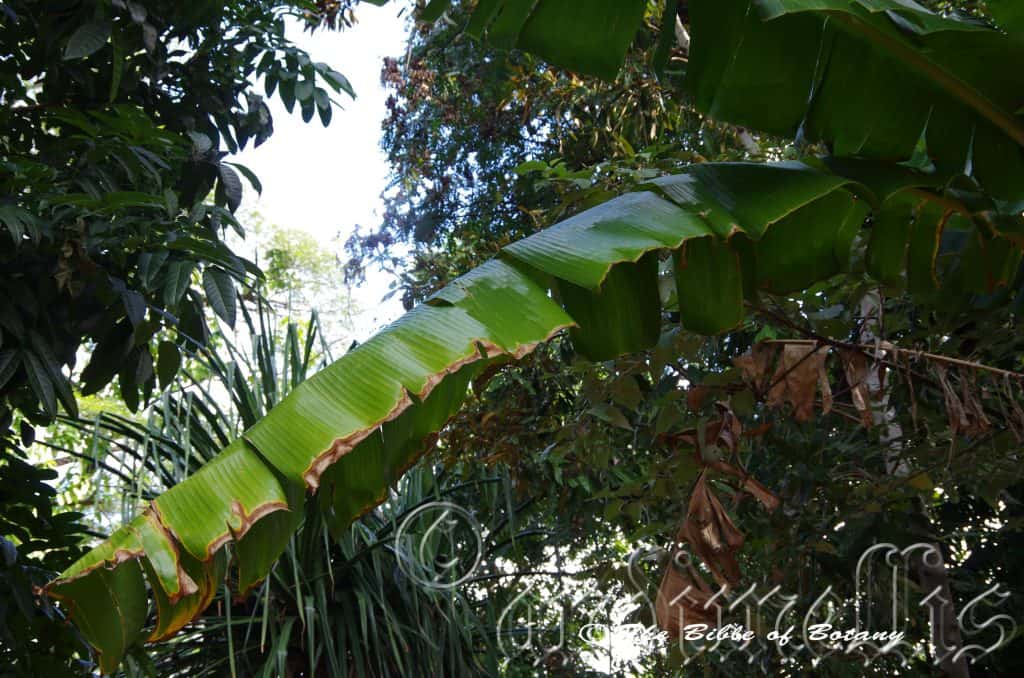
Anderson Gardens Townsville Qld.
Musa banksii
Classification:
Unranked: Monocots
Unranked: Commelinids
Order: Zingiberales
Family: Musaceae
Genus: Is named in honour of Antonius Musa; 63BC–14BC, who was the Arabic physician to the first Roman Emperor Octavius Augusta.
Specie: Is named in honour of Sir Joseph Banks; 1743-1820, who was an English Naturalist and patron of botany who travelled with Captain Cook on the Endeavour to explore the east coast of Australia.
Sub species:
Common Name: Native Banana.
Distribution:
Musa banksii is a widespread species which is found south from the tip of Cape York Peninsula and the Torres Strait Islands to Mount Elliot near Townsville in northern and central eastern Queensland.
It is also found in Papua, New Guinee and the Samoan Islands.
https://avh.ala.org.au/occurrences/search?taxa=Musa+banksii#tab_mapView
Habitat Aspect Climate:
Musa banksii prefers light dappled shade. It grows in spaces created in well-developed tropical rainforests and warm sub-tropical rainforests. The plants die after flowering and setting fruit. The altitude ranges from 10 meter ASL to 750 meters ASL.
The temperatures range from 5 degrees in August to 38 degrees in January.
The rainfall ranges from lows of 950mm to an average of 4200mm.
Soil Requirements:
Musa banksii prefers sandy loams to medium clays. The soils are usually derived from decomposed granites, sandstones, metamorphic rocks brown basalts, black basalts or podzolics. The soils pH ranges from 4.5pH to 6pH. It does not tolerate waterlogged soils. Non saline soils to moderately saline soils are tolerated.
Height & Spread:
Wild Plants: 5m to 6.5m by 3m to 4m.
Characteristics:
Musa banksii’s main trunk is green with deep purple or red markings glabrous and semi glossy. The bole of the trunk is about 80mm of the height on a mature tree. In fact the trunk is not a true trunk but a collection of leaf petioles tightly clasping and overlapping each other to give the appearance of a single palm like trunk.
Musa banksii’s leaves emerge spirally near the crown of the plant. The leaves are oblong and measure 1200mm to 2350mm by 400mm to 800mm in width. The older leaf blades are lacinate meaning that they split from near the midrib at right angles to the leaf margins. The base is broad cuneate to rounded while the apex is acute. The laminas are discolourous laminas are mid green, deep green to blue-green and occasionally tinged with purple, semi glossy to dull on the upper lamina while the lower lamina is paler. The immature leaves and newly emerging leaves are paler being a pale grass green. The margins are entire while the lamina curves strongly downwards from the mid vein. The mid vein is prominent on the lower lamina and is visible on the upper lamina. The lateral veins run at right angles to the mid vein and are visible on both laminas. The petioles are glabrous and measure 450mm to 800mm in length. The petioles are deeply channeled on the upper surface running from the clasping point right through to the tip of the lamina on the upper surface.
The inflorescence of Musa banksii are born in a long, pendulous spike from the terminal. There are between 400 and 900 male flowers and 90 to 300 female flowers to a spike. The spikes measure 1200mm to 2300mm in length by 55mm to 70mm in diameter near the base tapering to 20mm to 30mm closer to the apex when fully extended. The peduncle measures 80mm to 130mm in length to the first female flowers.
The male flowers are enclosed in elongated ovoid to broadly elliptical overlapping bracts towards the terminal of the spike. The deep purple to purple-pink bracts measure 80mm to 140mm in length by 50mm to 100mm in width at the widest point. The longer tepals measure 28mm to 42mm by 8mm to 12mm in width with 4 small teeth at the apex. The 5 shorter tepals measure 12mm to 22mm by 7.5mm to 14mm. The pedicles measure 7mm to 15mm in length.
In the female and hermaphrodite flowers the perianth consists of two parts, the longer part is an open tube of four or five fused lobes and the shorter part, which is about half as long, consists of one lobe only.
The longer tepals measure 35mm to 45mm by 10mm to 12mm in width with 4 small teeth at the apex. The 5 shorter tepals measures 18mm to 23mm by 15mm to 16mm. The pedicles measure 12mm to 16mm in length. Flowering occurs throughout the year under favourable conditions.
Musa banksii’s fruit is a long linear almost square in cross section berry. They hang pendulously from the spike and are curved typical of a banana. The berries are green turning pale to deep yellow when ripe. They measure 80mm to 140mm in length by 15mm to 25mm in diameter. The petiole measures 20mm to 50mm in length. The flesh surrounding the seeds is creamy white. The ovoid seeds are black, glabrous, semi glossy and measure 4mm to 5mm in diameter. The testa is very hard and when removed reveals a white endosperm.
Wildlife:
Musa banksii’s flowers are visited by many different species of butterflies and beetles. The leaves are the main food source several specie of butterflies including Hypocompe albescens. The fruits are eaten by the Cassowary (Casuarius casuarius), Possums and Fruit Bats.
Cultivation:
The fruits are edible having a distinctive banana flavour. You need to be careful not to bite into the fruit too hard as the seeds are very hard and can break weak teeth. Seeds are easily collected through fermentation of the flesh or passing through the bowel. They were a staple part of north eastern Australian aborigine diets.
Musa banksii makes an excellent large herb (tree) where there is filtered light or shade. They always look green and fresh and add interest to the native tropical garden. It is very suitable on medium clays to heavy clay soils provided there is plenty of mulch available at all times. It is most suitable for medium and large gardens close to the coast in warm temperate, warm sub-tropical or tropical gardens which are frost free. As garden subjects they will grow from 5 meters to 7 meters in height by 3 meters to 4 meters in diameter.
It is cold tolerant to temperatures as low as 3 degree once established.
They can be used as a rainforest understory tree but will need good well-developed trees to supply shade. On the edge of a forest they will develop into the typical banana shape adding interest to the garden.
They look spectacular when grown around semi shaded swimming pools and courtyards to break up hard lines and to supply much needed shade to a corner of the pool. It is relatively pest free quick growing and offer a strong contrast with the large palm like leaves.
Along sandy clay banks or adjacent to natural bush gardens they can be used to great affect where a dry creek bed is the theme by using them to mark out the banks or even a manmade stream. They can be used to stabilize banks along creeks and streams or to help soak up water in wet areas. They will thrive below septic trenches and aid in the natural distribution of nutrients. The stems of old plants, along with the leaves and fruit peels make excellent compost and disintegrating rapidly once lying on the ground.
Propagation:
Seeds: Musa banksii seeds can be sown directly into a seed raising mix after some preparation. Place the seeds into an old sock with sand and sharp sand. Place the sock in the washing machine and wash several times with the weekly washing. Cover the seeds with 2mm to 3mm of fine weed free mulch and keep moist. Place the tray in a warm sunny position in spring. Germination is rapid taking 20 to 40 days. When the seedlings are 30mm to 50mm tall, prick them out and plant them into 50mm native tubes using a good organic mix.
Once the seedlings reach 100mm to 150mm in height they can be planted out into their permanent position.
Fertilize using seaweed, fish emulsion or organic chicken pellets soaked in water on an alternate basis. Fertilize every two months until the plants are established then twice annually in early September and March to maintain better health, vitality, better flowering and fruit set.
Further Comments from Readers:
Hi reader, it seems you use The Bible of Botany a lot. That’s great as we have great pleasure in bringing it to you! It’s a little awkward for us to ask, but our first aim is to purchase land approximately 1,600 hectares to link several parcels of N.P. into one at The Pinnacles NSW Australia, but we need your help. We’re not salespeople. We’re amateur botanists who have dedicated over 30 years to saving the environment in a practical way. We depend on donations to reach our goal. If you donate just $5, the price of your coffee this Sunday, We can help to keep the planet alive in a real way and continue to bring you regular updates and features on Australian plants all in one Botanical Bible. Any support is greatly appreciated. Thank you.
In the spirit of reconciliation we acknowledge the Bundjalung, Gumbaynggirr and Yaegl and all aboriginal nations throughout Australia and their connections to land, sea and community. We pay our respect to their Elders past, present and future for the pleasures we have gained.
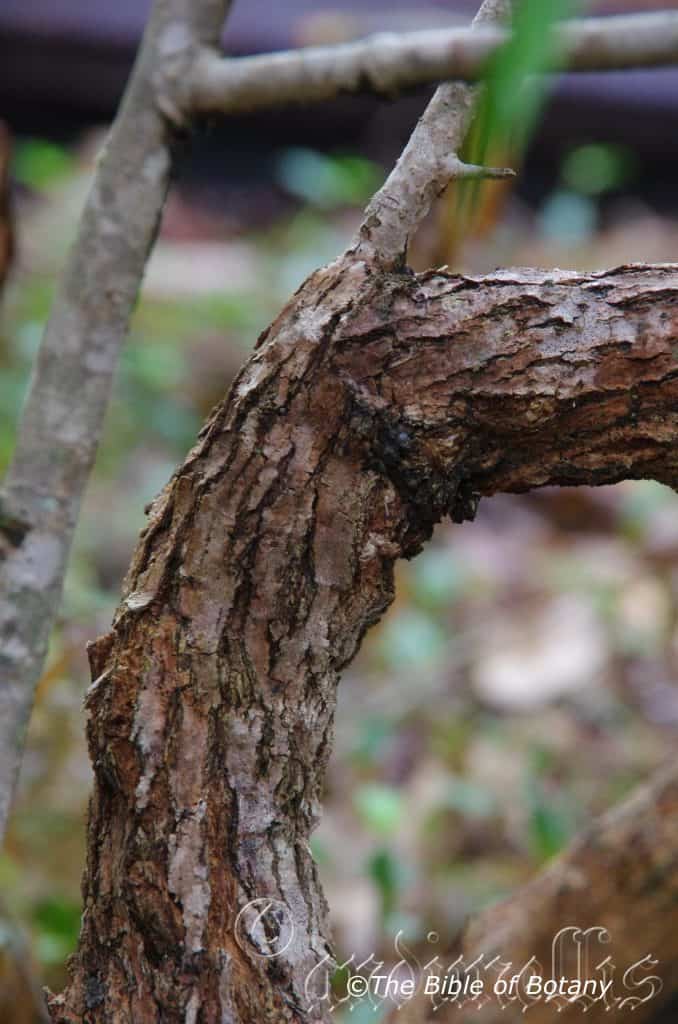
Greening Australia Norman Park Qld.
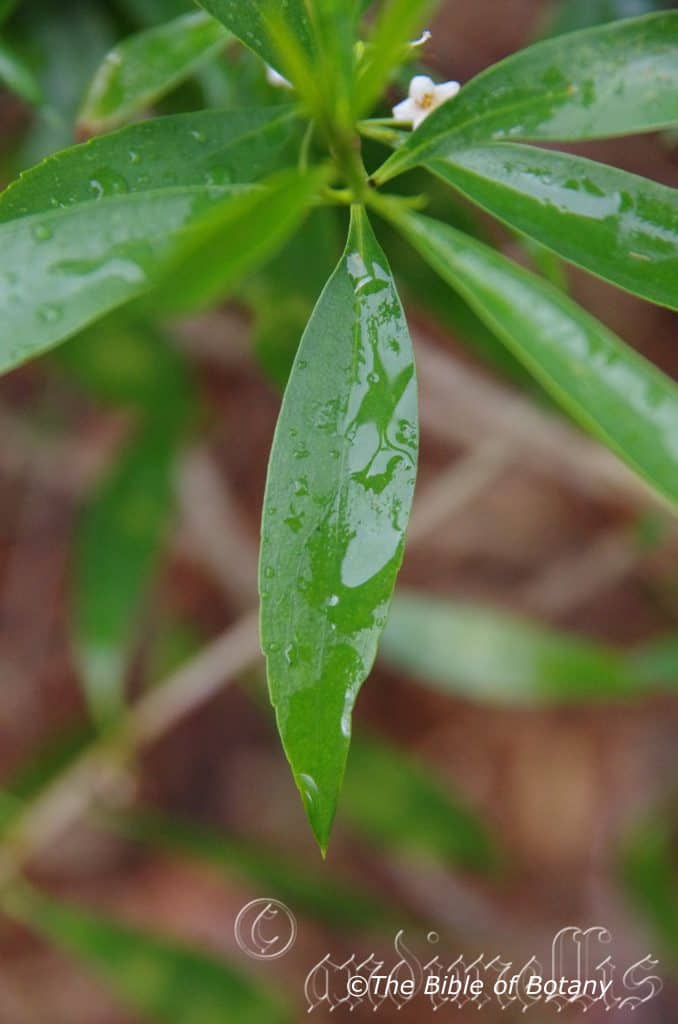
Greening Australia Norman Park Qld.
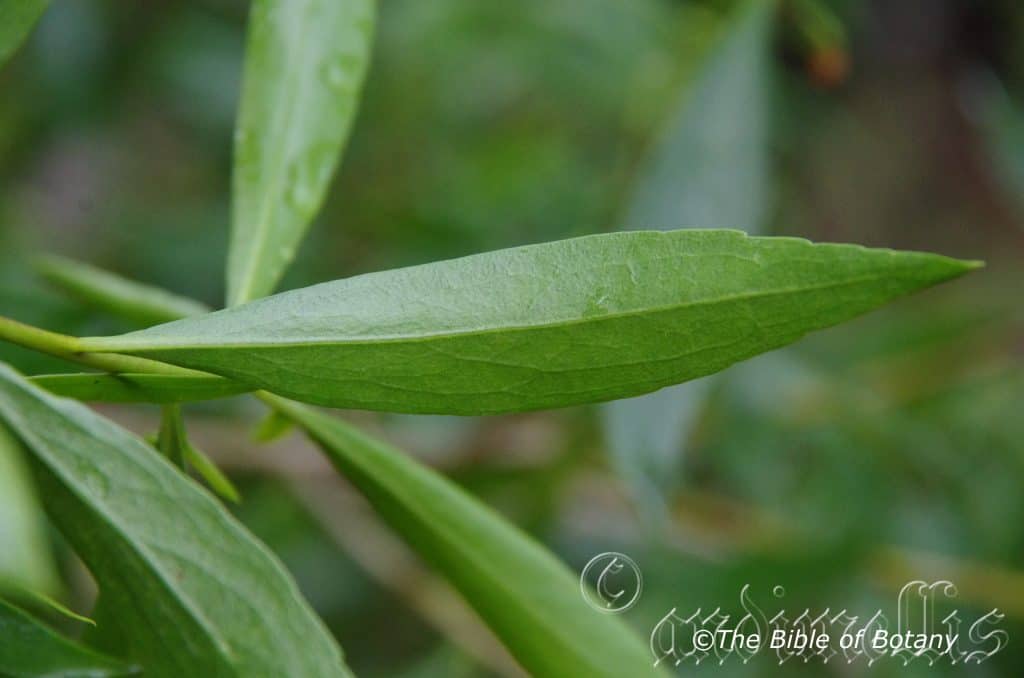
Greening Australia Norman Park Qld.
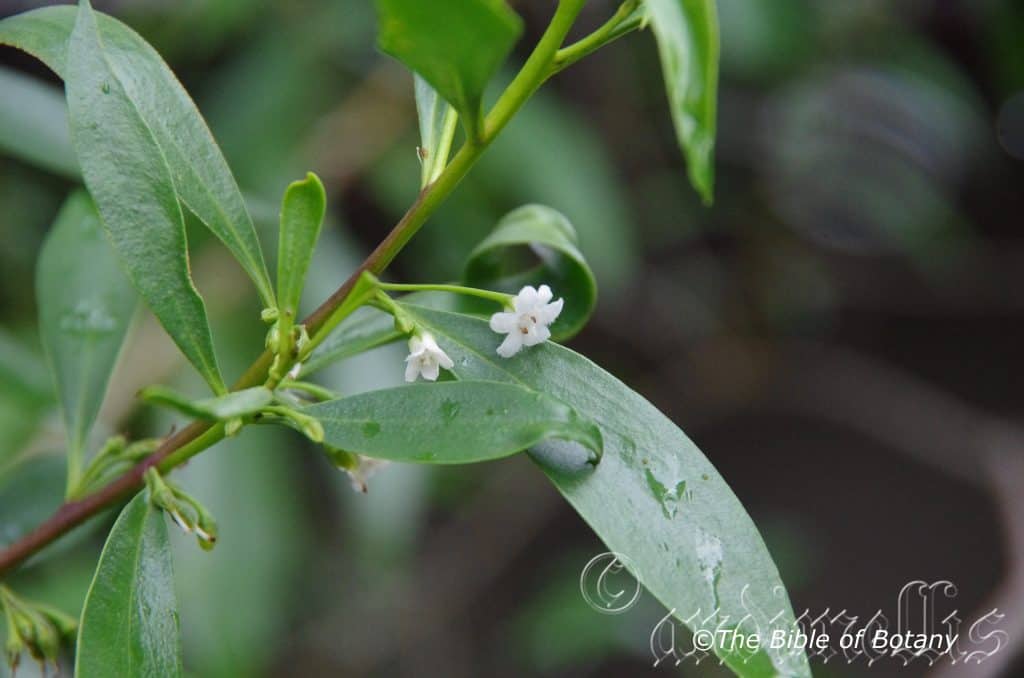
Greening Australia Norman Park Qld.
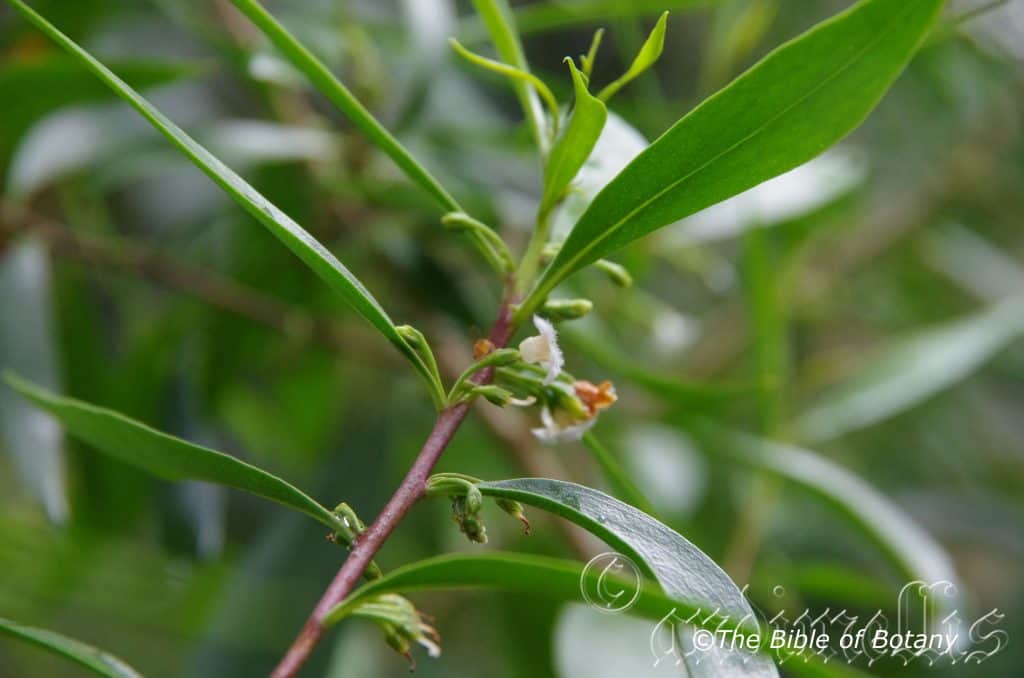
Greening Australia Norman Park Qld.
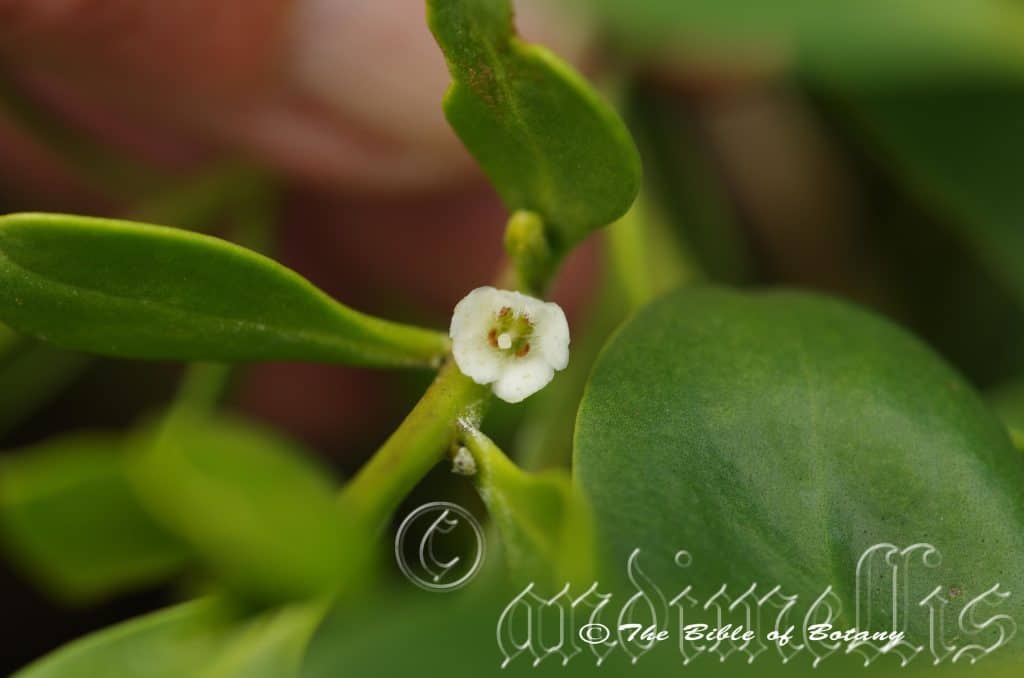
Greening Australia Norman Park Qld.
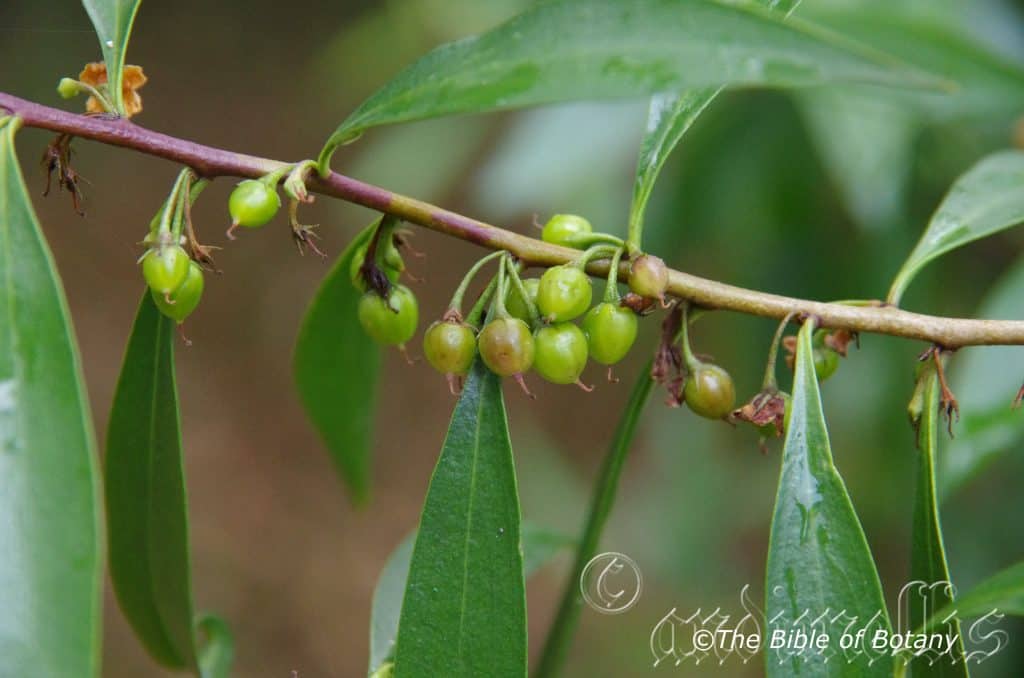
Greening Australia Norman Park Qld.
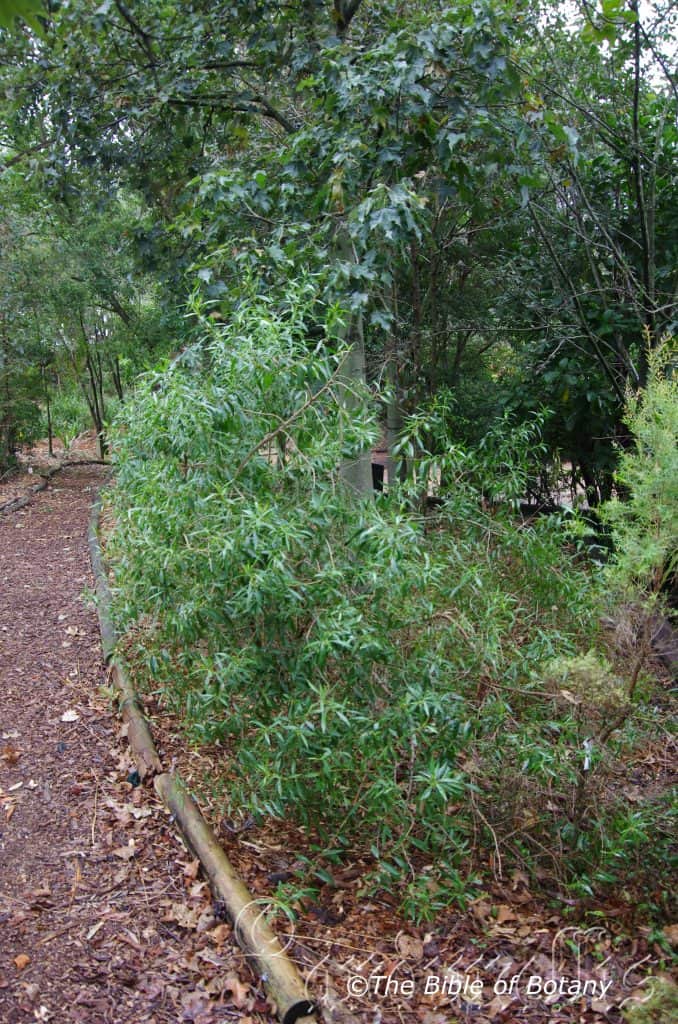
Greening Australia Norman Park Qld.
Myoporum acuminatum
Classification:
Class: Equisetopsida
Subclass: Magnoliidae
Superorder: Asteranae
Order: Lamiales
Genus: From Myo, which is Ancient Greek for to close or closed and Poros, which is Ancient Greek for a pore. It refers to the tiny pores, which appear to be closed all the time.
Specie: From Acūminātum, which is Latin for being contracted or concave on the sides before protracting to a short, sharp point. It refers to apexes on the leaves or phyllodes, which have short sharp points.
Sub species:
Common Name: Boobialla.
Distribution:
Myoporum acuminatum is a widespread species which is found north of a line from Onslo in Western Australia to Elsey Park in the Northern Territory and north and east of a line from Barkers Crater, Boulia, Old Tickalara Homestead. There are 2 isolated populations found near Meekatharra and Mundrabilla Station on the Nullarbor Plains in the southern half of Western Australia.
It is also found in an area bounded by Trephina Gorge to Palm Valley, 20 kilometers SW of Hermannsburg in the northern Territory and Dalhousie Springs in South Australia. Further south it is found between Aroda Valley to Port Augusta, Milang and Winnininnie Creek near Yunata in South Australia.
In Queensland it is found south from Yarrawonga and Womboyne to Nadgee in Victoria.
https://avh.ala.org.au/occurrences/search?taxa=Myoporum+acuminatum#tab_mapView
Habitat:
Myoporum acuminatum prefers light filtered sun to full sun. It grows in moist schlerophyll forests adjacent to subtropical rainforests, tropical rainforests, dry sclerophyll forests, open woodlands, grasslands along creeks and streams and along seasonal creeks or streams in gorges. The altitude ranges from 10 meter ASL to 940 meters ASL.
The temperatures range from minus 3 degrees in August to 44 degrees in January.
The rainfall ranges from lows of 200mm to an average of 3000mm.
Soil Requirements:
Myoporum acuminatum prefers sandy loams to medium clays. The soils are usually derived from decomposed granites, sandstones, metamorphic rocks, shales, conglomerates, accumulated peaty beach sands or accumulated coral sands. The soils pH ranges from 4.5pH to 7.5pH. It does not tolerate waterlogged soils. Non saline soils to very saline soils are tolerated.
Height & Spread:
Wild Plants: 4m to 13m by 4m to 7m.
Characteristics:
Myoporum acuminatum is a small erect tree with coarsely fissured pale grey-brown to pale grey bark. The branches are usually smooth and glabrous or rarely sparsely to moderately covered in obscure or prominent tuberculate lumps.
The alternate, elliptical leaves measure 50mm to 140mm by 7mm to 28mm in width. The petioles measure 6mm to10mm in length. The bases are tapering attenuate while the apexes are acute. The concolourous or slightly discolourous laminas are blue-green mid green or grass-green and glabrous. The immature leaves and newly emerging leaves are paler. The laminas recurve slightly upwards from the mid vein to the margins while the margins are entire or obscurely toothed. The mid vein is prominent on the lower lamina and is distinctly visible on the upper lamina.
The inflorescence are born in loose clusters of 2 or 3 individual flowers from the leaf axils. The pedicels measure 4mm to 10mm in length. The sepals are valvate or slightly imbricate at base. The ovate to oblong triangular sepals measure 1.5mm to 2.5mm in length by 1mm to 1.5mm in width. The corolla tube and lobes are white and glabrous externally while internally it is white with purple spots and small blotches and sparsely to moderately covered in white pilose hairs especially around the throat. The corolla tubes measures 6mm to 8mm in length by 5mm to 7mm diameter. The obtuse lobes measure 6mm to 9mm in length by 6mm to 8mm in width.
The 4 white filaments are slightly exserted, glabrous and measure 6mm to 8mm in length while the purple basifixed anthers are compressed and orbicular.
The single, white slightly is exserted style is sparsely to moderately covered in white pilose hairs and measures 6mm to 9mm in length. The style is erect and crooked near the pastel yellow or white stigma. The flowers appear from July to October.
The fruits are ovoidal drupes. The green capsules turn deep purplish-carmine to deep purplish-black when ripe while the sepals are persistent at the base while the style is persistent at the apex. The drupes measure 4.5mm to 7.5mm in length by 4mm to 7mm in diameter. The 4 circular seeds are brown, rugose and measure 1mm to 2mm in diameter.
Wildlife:
Myoporum acuminatum’s flowers are visited by many different species of small butterflies plus wasps, pollen flies and native bees.
Cultivation:
Myoporum acuminatum is a fairly fast growing plant which is worthwhile growing for the beautiful fragrance of its flowers which is sweet but not overpowering. It makes an excellent small tree for a park like scene or specimen tree in the garden or large shrub. It always looks green and fresh even when grown in semi-arid areas whether it is grown in light shade or full sun. It is very suitable on sandy to medium clay soils and are ideal for small, medium and large gardens close to the coast in temperate, sub-tropical or tropical gardens. As garden subjects they will grow from 4m to 6m in height by 4m to 6m in diameter when grown in the open.
It is cold tolerant to temperatures at least as low as minus 3 degrees once established. They should be protected until they reach at least 2 meters in height and the trunk begins to thicken.
It is best used adjacent to small areas of bush close to paths or the house where they make a great small avenue or park tree for smaller properties. It can be planted in small groups of 2 or 3 to enhance their appearance and make the area look larger than it really is.
It can be used as small shade trees in semi protected areas and are an excellent tree for starting a dry arid garden. When planting the trees in an arid scene try to place them in the center for a formal look or to one side for an informal look. A larger bed could have four planted with 3 to one side and a little to the rear and the odd one on the other side and a little closer to the front for balance. Use small shrubs sparsely planted below with colourful annuals between to complete the scene.
If mild native fertilizers are used they will develop quickly.
It can be used as a hedge and responds well to pruning. As a hedge it can be maintained at 1 meter to 2 meters in height by 1 meter to 3 meters in width.
Propagation:
Seeds: Myoporum acuminatum seeds can be sown directly into a seed raising mix after the flesh has been removed and the seeds washed thoroughly. Cover the seeds with 2mm to 3mm of fine weed free mulch and keep moist. Place the tray in a warm sunny position in spring. When the seedlings are 30mm to 50mm tall, prick them out and plant them into 50mm native tubes using a good organic mix.
Once the seedlings reach 100mm to 150mm in height they can be planted out into their permanent position.
Fertilize using seaweed, fish emulsion or organic chicken pellets soaked in water on an alternate basis. Fertilize every two months until the plants are established then twice annually in early September and March to maintain better health, vitality and better flowering.
Further Comments from Readers:
Hi reader, it seems you use The Bible of Botany a lot. That’s great as we have great pleasure in bringing it to you! It’s a little awkward for us to ask, but our first aim is to purchase land approximately 1,600 hectares to link several parcels of N.P. into one at The Pinnacles NSW Australia, but we need your help. We’re not salespeople. We’re amateur botanists who have dedicated over 30 years to saving the environment in a practical way. We depend on donations to reach our goal. If you donate just $5, the price of your coffee this Sunday, We can help to keep the planet alive in a real way and continue to bring you regular updates and features on Australian plants all in one Botanical Bible. Any support is greatly appreciated. Thank you.
In the spirit of reconciliation we acknowledge the Bundjalung, Gumbaynggirr and Yaegl and all aboriginal nations throughout Australia and their connections to land, sea and community. We pay our respect to their Elders past, present and future for the pleasures we have gained.
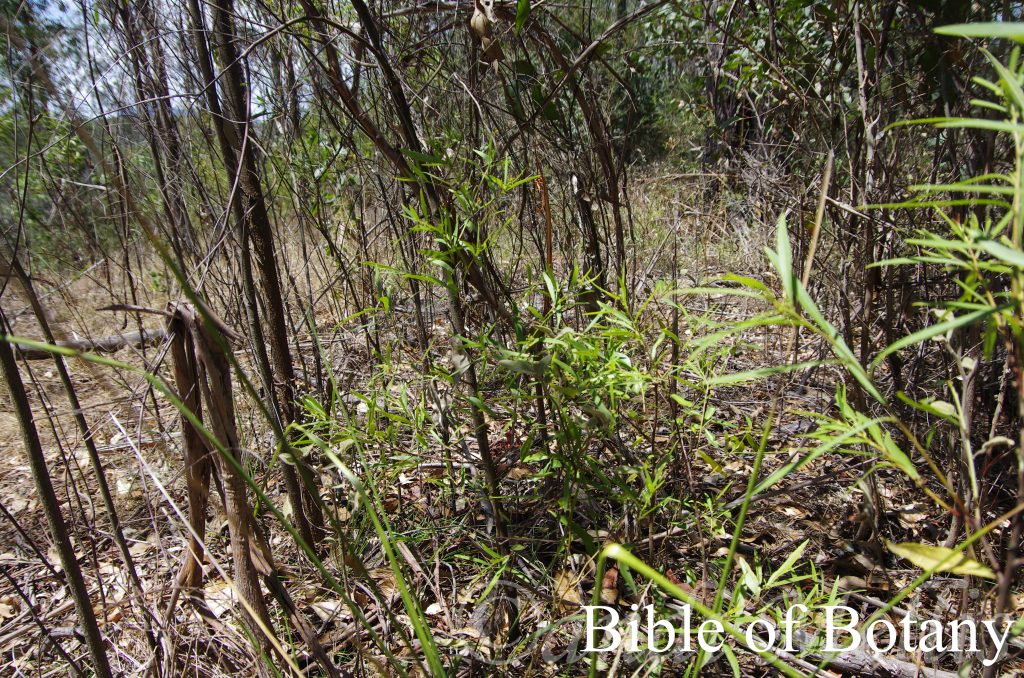
Mount Lyndesay NSW
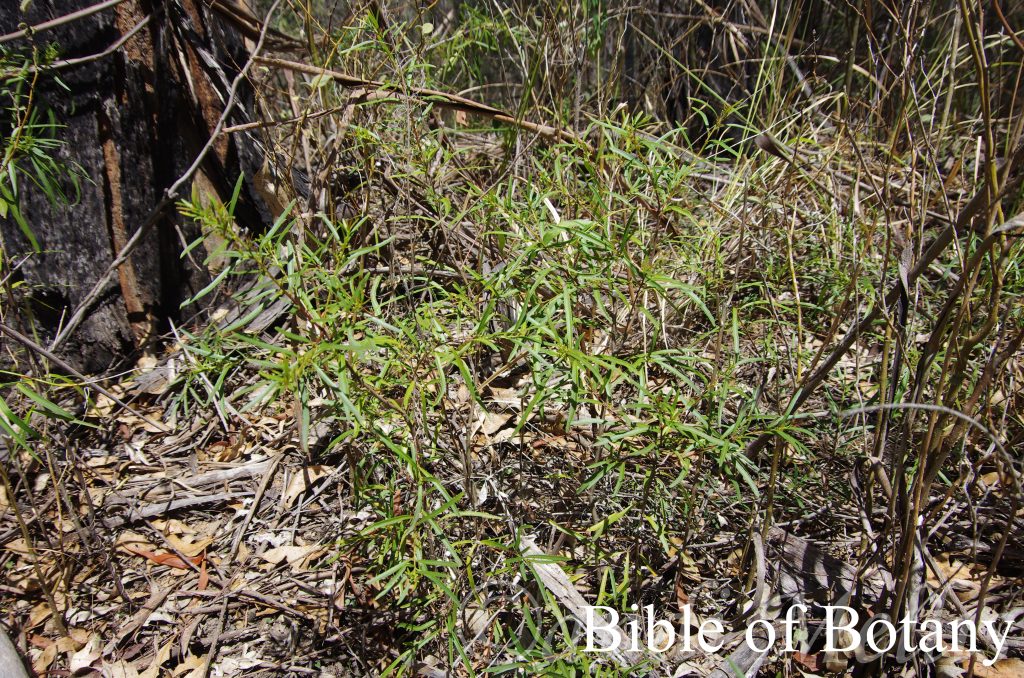
Mount Lyndesay NSW
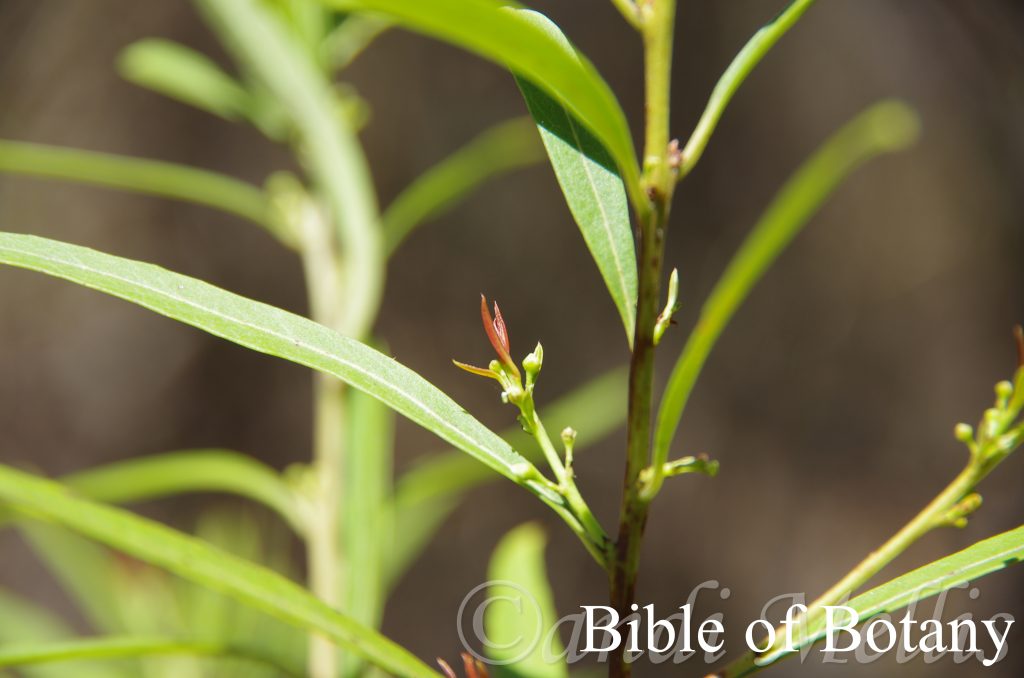
Mount Lyndesay NSW
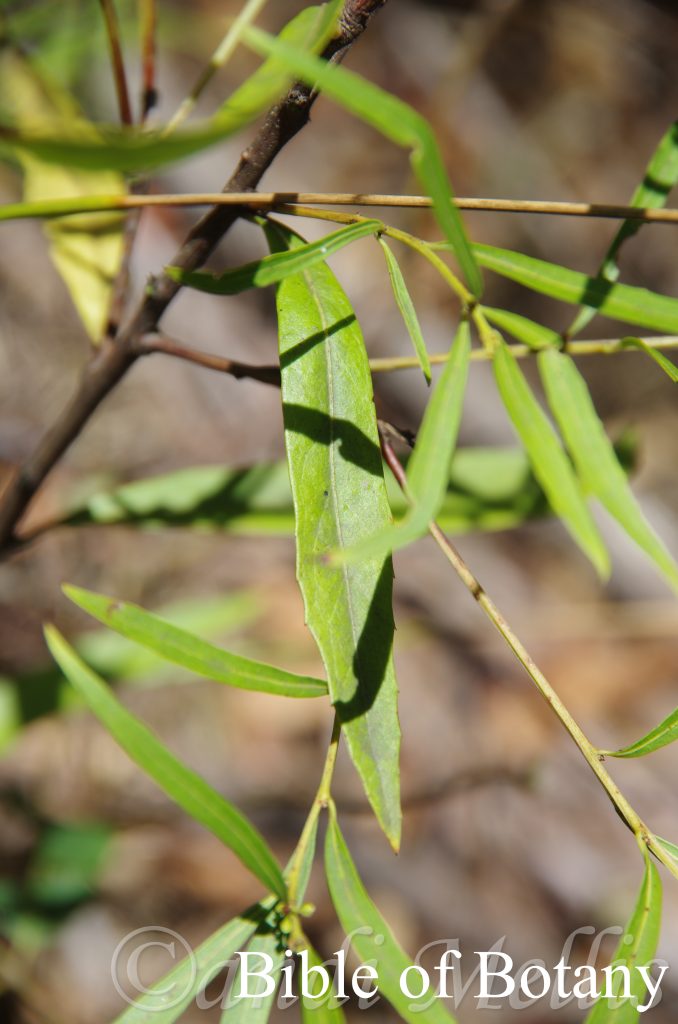
Mount Lyndesay NSW
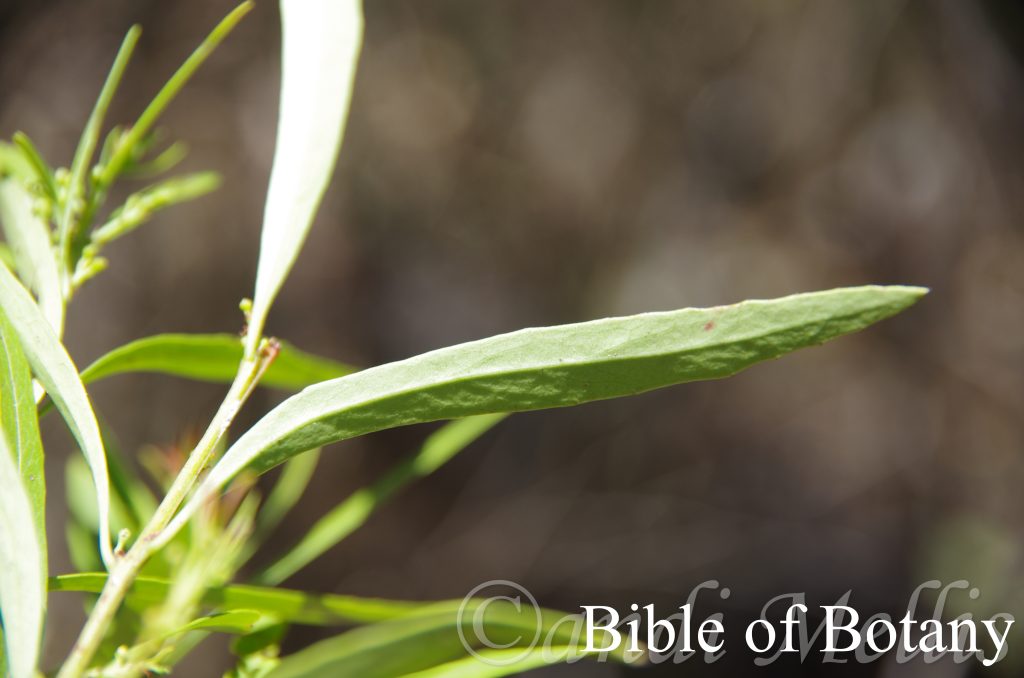
Mount Lyndesay NSW
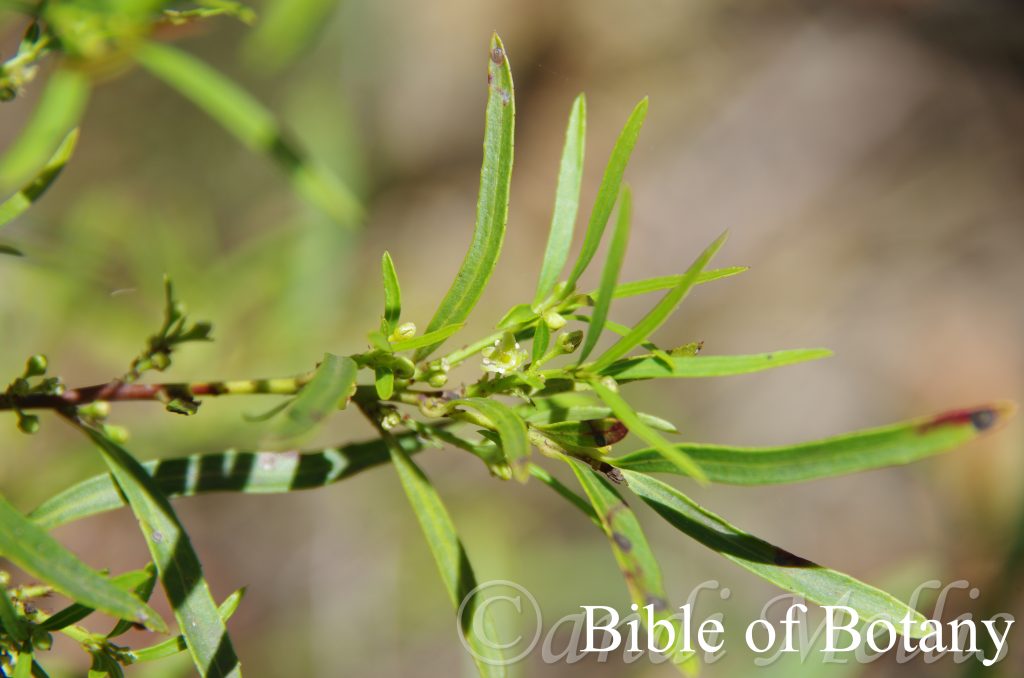
Mount Lyndesay NSW
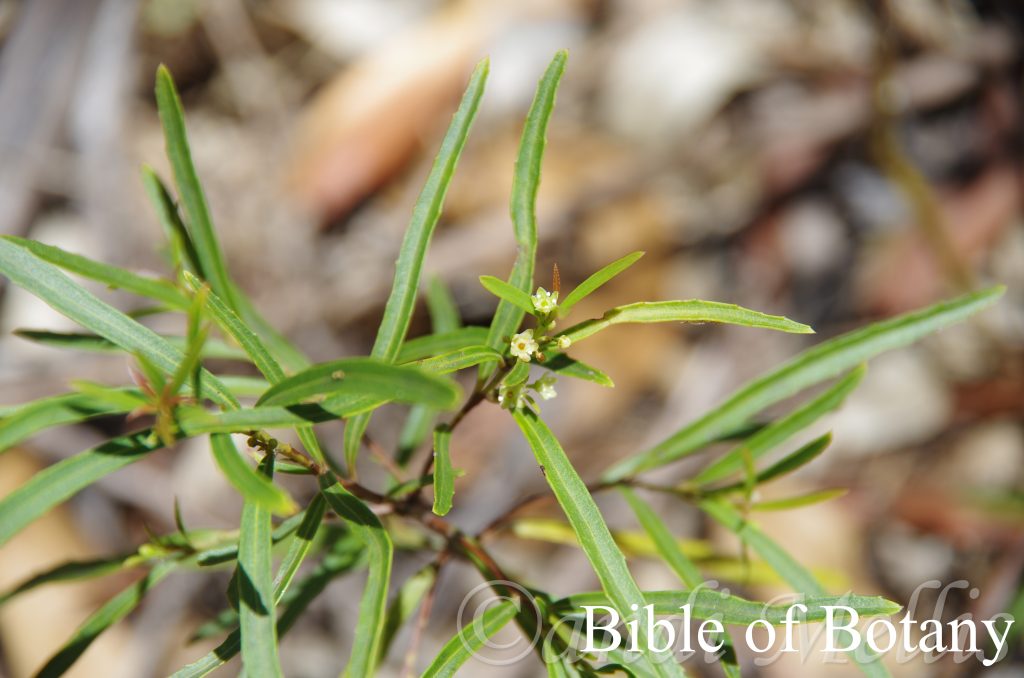
Mount Lyndesay NSW
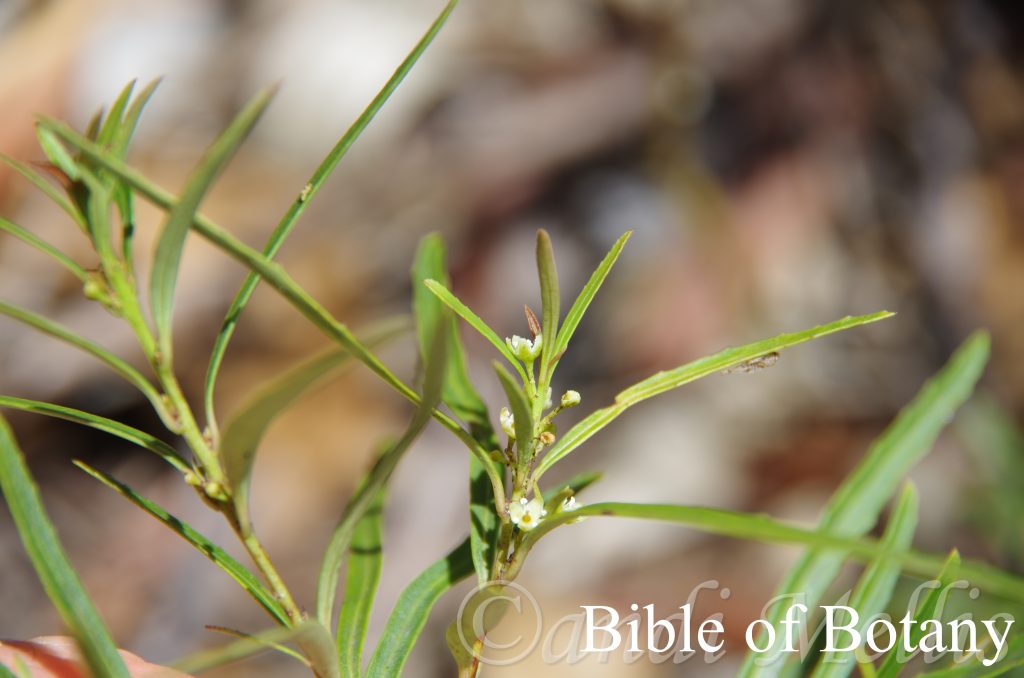
Mount Lyndesay NSW
Myoporum betcheanum
Classification:
Class: Equisetopsida
Subclass: Magnoliidae
Superorder: Asteranae
Order: Lamiales
Family: Scrophulariaceae
Genus: From Myo, which is Ancient Greek for to close or closed and Poros, which is Ancient Greek for a pore. It refers to the tiny pores, which appear to be closed all the time.
Specie: Is named in honour of Daniel Ludwig Ernst Betch; 1851-1913, who was a German born Australian botanist who studied plants in the Goodeneacea family.
Sub species: Myoporum betcheanum var. betcheanum Is named in honour of Daniel Ludwig Ernst Betch; 1851-1913, who was a German born Australian botanist who studied plants in the Goodeneacea family.
Myoporum betcheanum var. pubescens From Pūbēscēns, which is Latin for to matue or downy. It refers to organs or structures, which are covered in soft downy type hairs.
Common Name: Boobialla.
Distribution:
Myoporum betcheanum is restricted to an area between Mount Bald to Mount Mistake in south eastern Queensland and Kyogle to the Bellinger Valley and Vinegar Hill in far north eastern New South Wales.
https://avh.ala.org.au/occurrences/search?taxa=Myoporum+betcheanum#tab_mapView
Habitat Aspect Climate:
Myoporum betcheanum prefers light filtered sun to full sun. It grows in moist schlerophyll forests adjacent to subtropical rainforests or tropical rainforests. The altitude ranges from 446 meter ASL to 1198 meters ASL.
The temperatures range from minus 3 degrees in August to 36 degrees in January.
The rainfall ranges from lows of 650mm to an average of 1600mm.
Soil Requirements:
Myoporum betcheanum prefers better quality sandy loams to medium clays. The soils are usually derived from decomposed brown basalts, black basalts or at times granites. The soils pH ranges from 5pH to 6pH. It does not tolerate waterlogged soils. Non saline soils to moderately saline soils are tolerated.
Height & Spread:
Wild Plants: 6m to 8m by 4m to 6m
Characteristics:
Myoporum betcheanum is a small erect tree with coarsely fissured pale grey-brown to pale grey bark. The branches are usually smooth and covered in white pulverulent hairs are sparsely to moderately covered in obscure to prominent tuberculate lumps.
The alternate, narrow elliptic or rarely lanceolate leaves measure 40mm to 165mm by 6mm to 19mm in width. The petioles measure 4mm to 10mm in length. The bases are tapering attenuate while the apexes are acute. The discolourous laminas are blue-green mid green or grass-green and glabrous to finely covered in white puberulent hairs on the upper laminas while the lower laminas slightly pale and sparsely to moderately covered in white pulverulent hairs. The immature leaves and newly emerging leaves are paler and glossy. The laminas recurve slightly upwards from the mid vein to the margins and gently decurve downwards on the apical third while the margins are finely toothed. The mid vein is prominent on the lower lamina and is distinctly visible on the upper lamina. The lateral veins are obscure on both laminas.
The inflorescence are born in loose clusters of 1 or 8 individual flowers from the leaf axils. The pedicels measure 8mm to 10mm in length. The sepals are imbricate at the base. The triangular to lanceolate sepals measure 2mm to 7mm in length by 1mm to 1.5mm in width. The corolla tube and lobes are white and glabrous externally while internally it is white to pastel pink with fine purple spots and sparsely to moderately covered in long, white pilose hairs especially around the throat and at the base of the lobes. The corolla tubes measures 4mm to 8mm in length by 7mm to 12mm diameter. The obtuse lobes measure 7mm to 9mm in length by 7mm to 9mm in width.
The 4 white filaments are slightly exserted, glabrous and measure 4.5mm to 8mm in length while the white to pale purple basifixed anthers are compressed and orbicular.
The single, white exserted style is glabrous and measures 5mm to 9mm in length. The style is crooked near the white stigma. The flowers appear from September to January.
The fruits are ovoidal to depressed globose drupes. The green capsules turn white, white tinged pink or at times pastel pink when ripe while the sepals are persistent at the base and the and style is persistent at the apex. The drupes measure 4.5mm to 7mm in length by 4.5mm to 10mm in diameter. The 4 circular seeds are brown and glabrous.
Wildlife:
Myoporum betcheanum’s flowers are visited by many different specie of small butterflies plus wasps, pollen flies and native bees.
Cultivation:
Myoporum betcheanum is a fairly fast growing plant which is worthwhile growing for the beautiful fragrance of its flowers which is sweet but not overpowering. It makes an excellent small tree for a park like scene or specimen tree in the garden or large shrub. It always looks green and fresh even when grown in semi-arid areas whether it is grown in light shade or full sun. It is very suitable on sandy to medium clay soils and are ideal for small, medium and large gardens close to the coast in temperate, sub-tropical or tropical gardens. As garden subjects they will grow from 4m to 6m in height by 4m to 6m in diameter when grown in the open.
It is cold tolerant to temperatures at least as low as minus 3 degrees once established. They should be protected until they reach at least 2 meters in height and the trunk begins to thicken.
It is best used adjacent to small areas of bush close to paths or the house where they make a great small avenue or park tree for smaller properties. It can be planted in small groups of 2 or 3 to enhance their appearance and make the area look larger than it really is.
It can be used as small shade trees in semi protected areas and are an excellent tree for starting a dry arid garden. When planting the trees in an arid scene try to place them in the center for a formal look or to one side for an informal look. A larger bed could have four planted with 3 to one side and a little to the rear and the odd one on the other side and a little closer to the front for balance. Use small shrubs sparsely planted below with colourful annuals between to complete the scene.
If mild native fertilizers are used they will develop quickly.
It can be used as a hedge and responds well to pruning. As a hedge it can be maintained at 1 meter to 2 meters in height by 1 meter to 3 meters in width.
Propagation:
Seeds: Myoporum betcheanum seeds can be sown directly into a seed raising mix after the flesh has been removed and the seeds washed thoroughly. Cover the seeds with 2mm to 3mm of fine weed free mulch and keep moist. Place the tray in a warm sunny position in spring. When the seedlings are 30mm to 50mm tall, prick them out and plant them into 50mm native tubes using a good organic mix.
Once the seedlings reach 100mm to 150mm in height they can be planted out into their permanent position.
Fertilize using seaweed, fish emulsion or organic chicken pellets soaked in water on an alternate basis. Fertilize every two months until the plants are established then twice annually in early September and March to maintain better health, vitality and better flowering.
Further Comments from Readers:
Hi reader, it seems you use The Bible of Botany a lot. That’s great as we have great pleasure in bringing it to you! It’s a little awkward for us to ask, but our first aim is to purchase land approximately 1,600 hectares to link several parcels of N.P. into one at The Pinnacles NSW Australia, but we need your help. We’re not salespeople. We’re amateur botanists who have dedicated over 30 years to saving the environment in a practical way. We depend on donations to reach our goal. If you donate just $5, the price of your coffee this Sunday, We can help to keep the planet alive in a real way and continue to bring you regular updates and features on Australian plants all in one Botanical Bible. Any support is greatly appreciated. Thank you.
In the spirit of reconciliation we acknowledge the Bundjalung, Gumbaynggirr and Yaegl and all aboriginal nations throughout Australia and their connections to land, sea and community. We pay our respect to their Elders past, present and future for the pleasures we have gained.
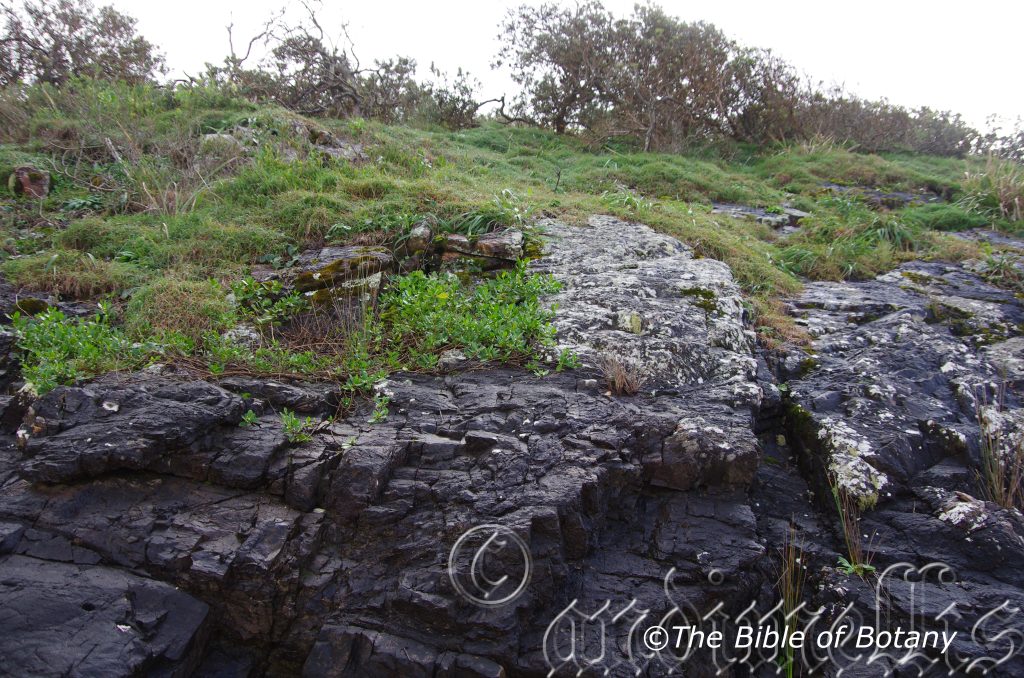
Goolawah National Park Foreshore NSW
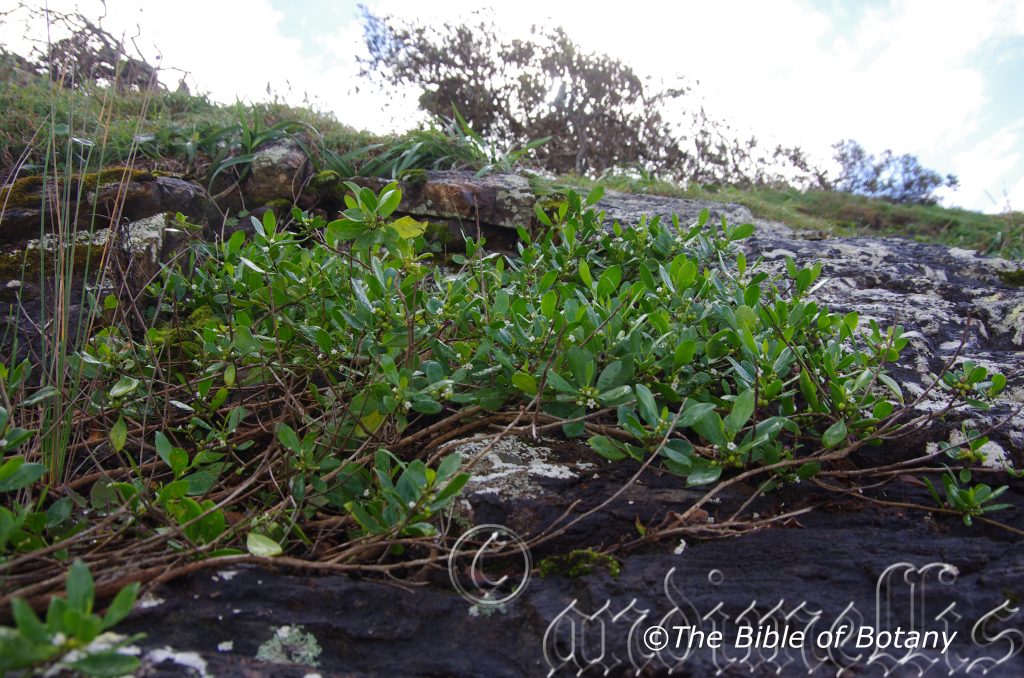
Goolawah National Park Foreshore NSW
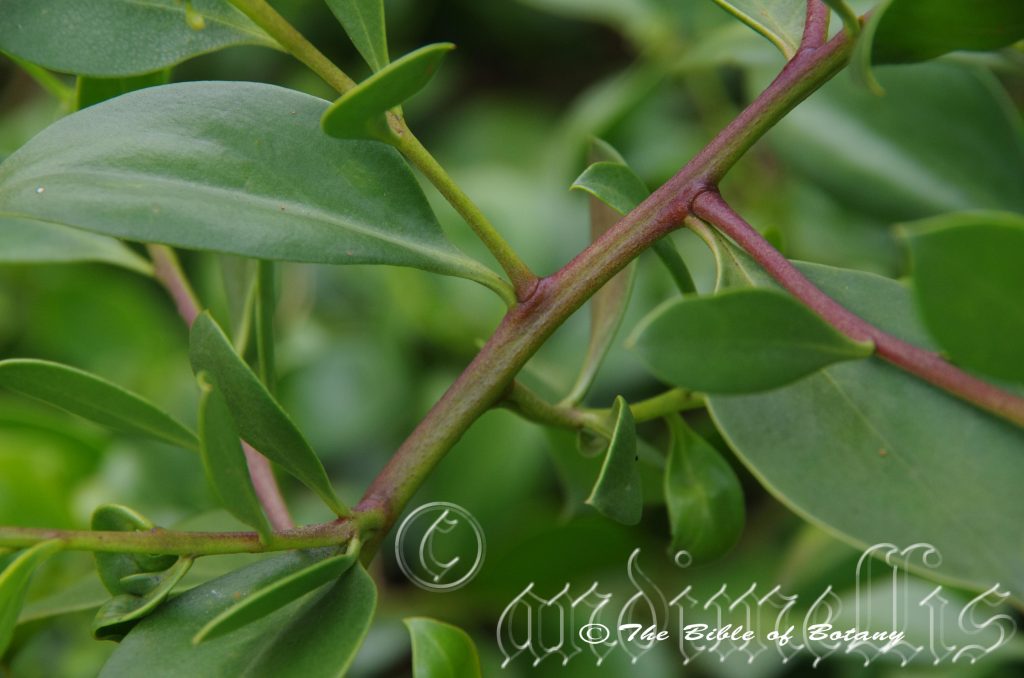
Brisbane River Kangaroo Point Qld.
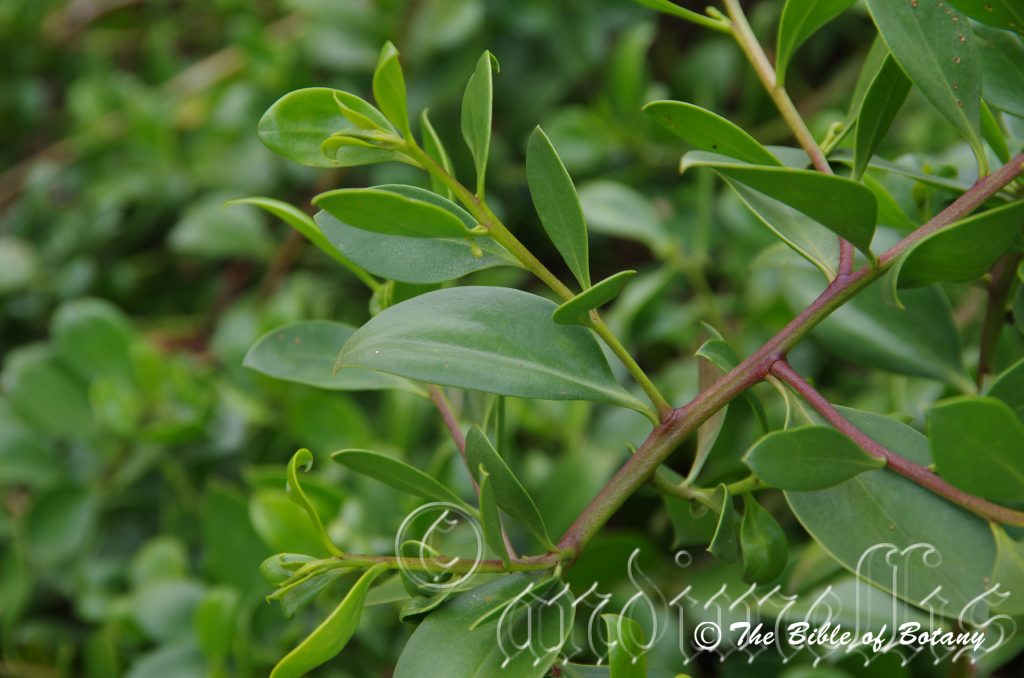
Brisbane River Kangaroo Point Qld.
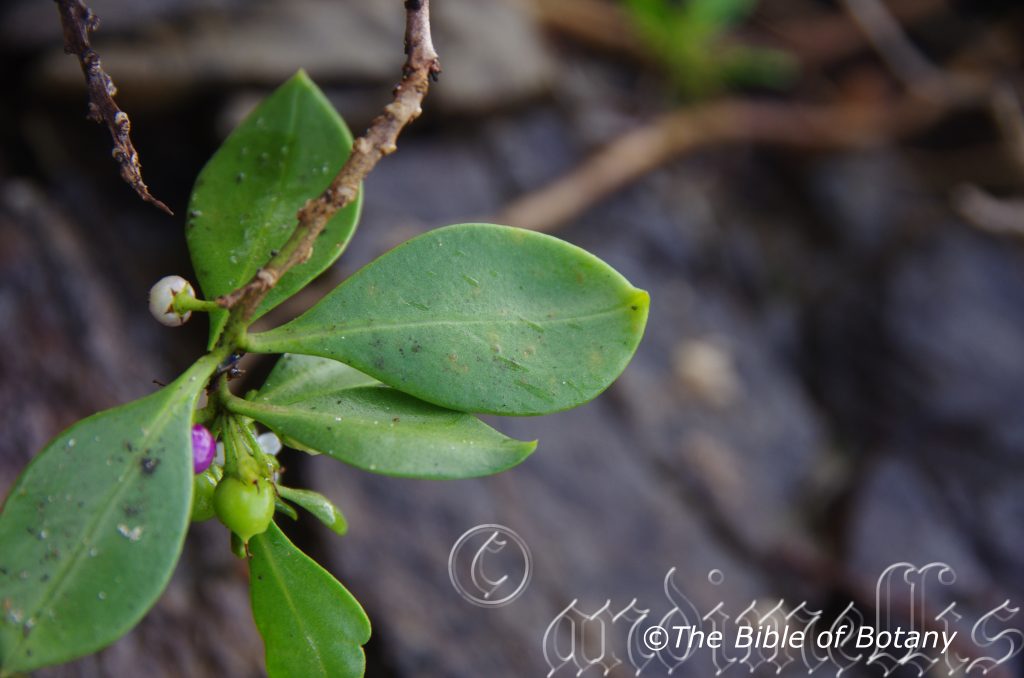
Brisbane River Kangaroo Point Qld.
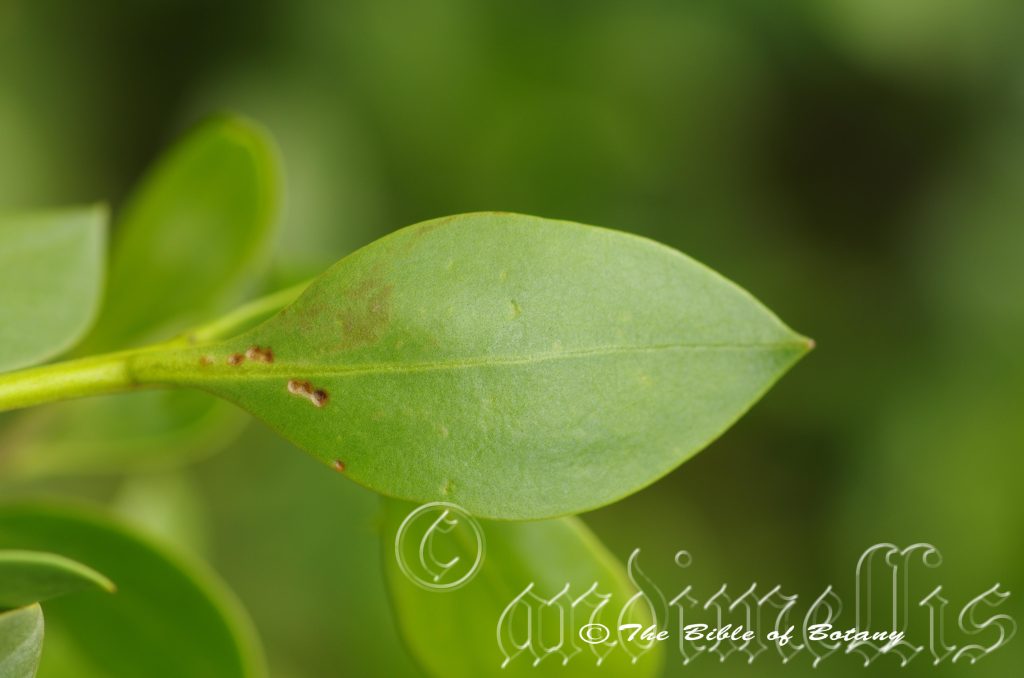
Brisbane River Kangaroo Point Qld.
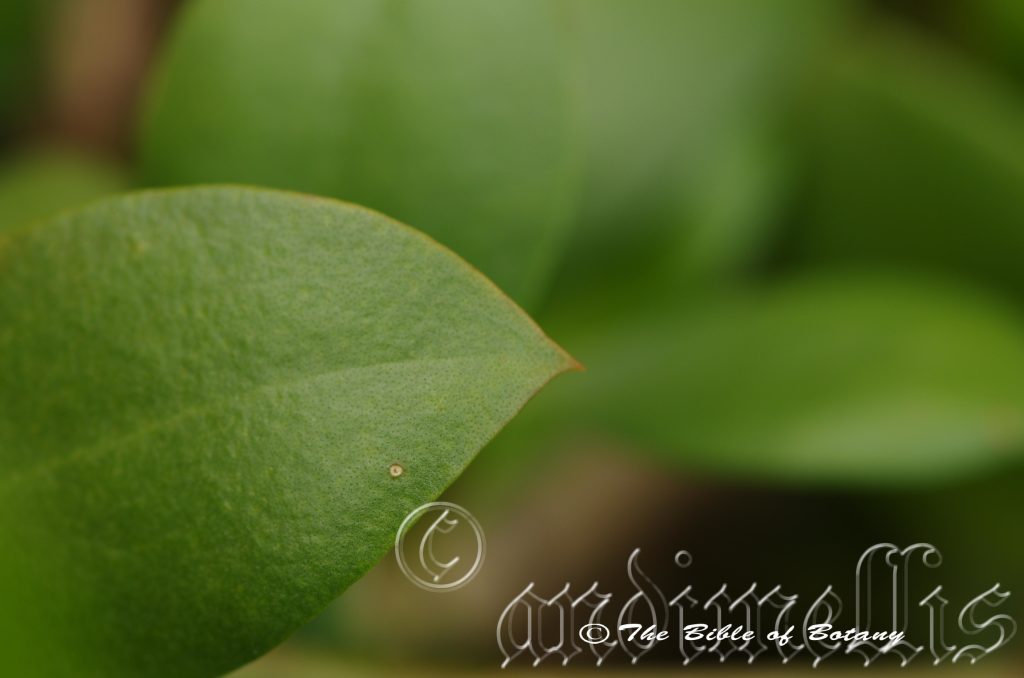
Brisbane River Kangaroo Point Qld.
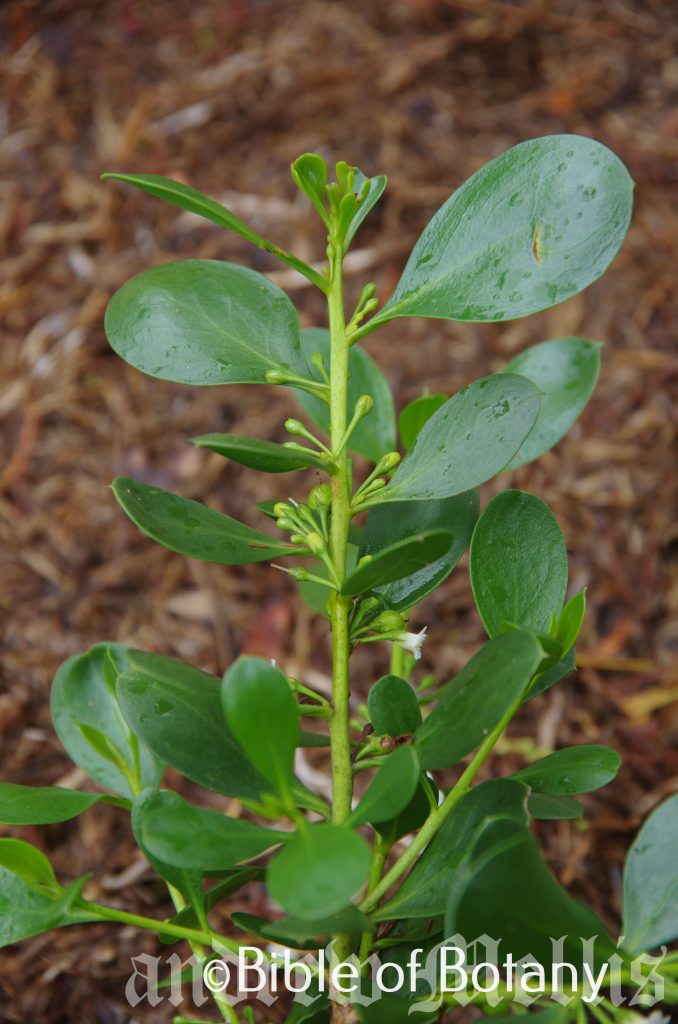
Author’s Garden The Pinnacles NSW
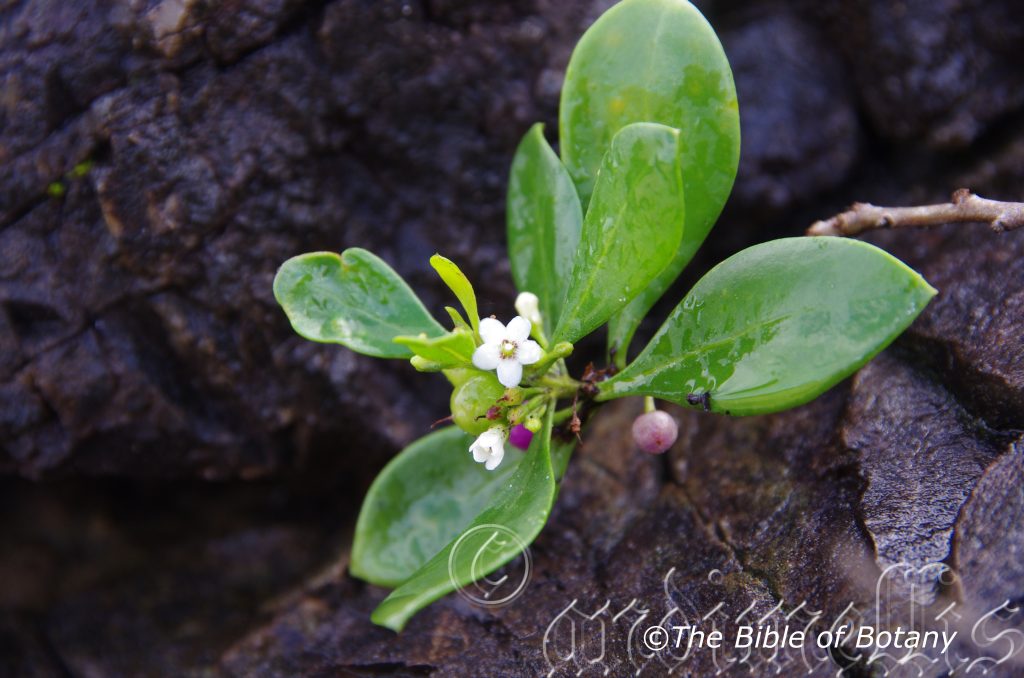
Goolawah National Park Foreshore NSW
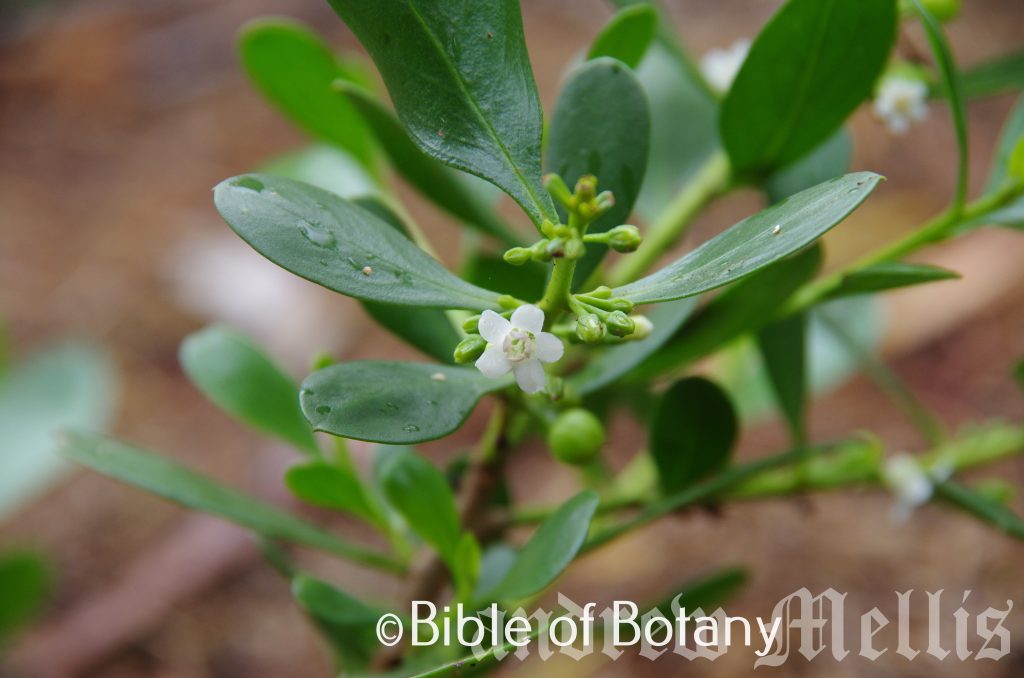
Author’s Garden The Pinnacles NSW
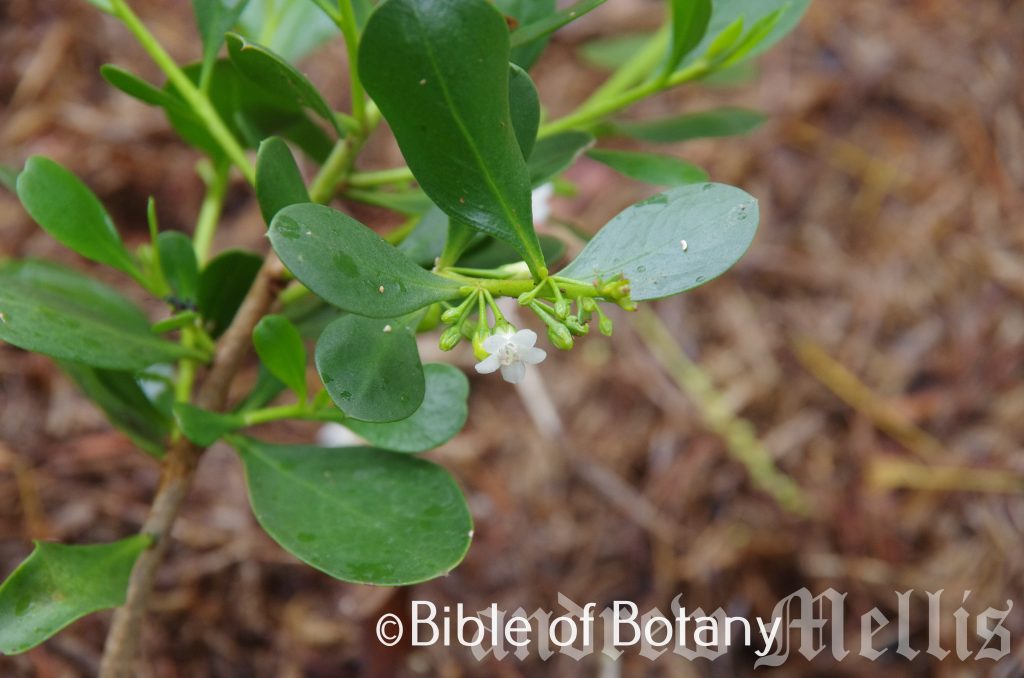
Goolawah National Park Foreshore NSW
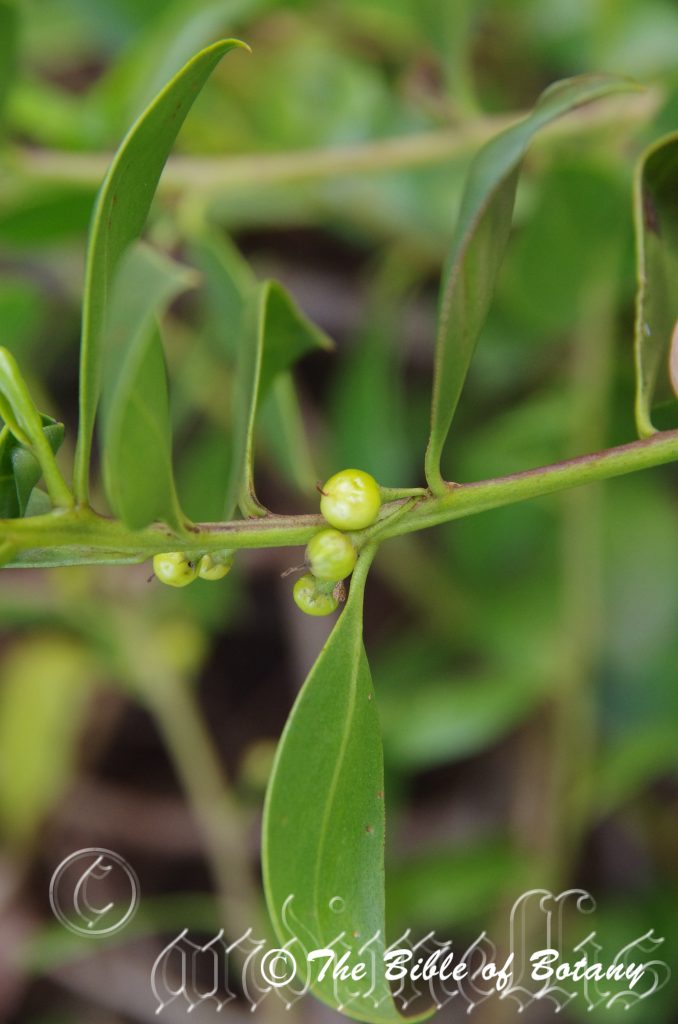
Author’s Garden The Pinnacles NSW
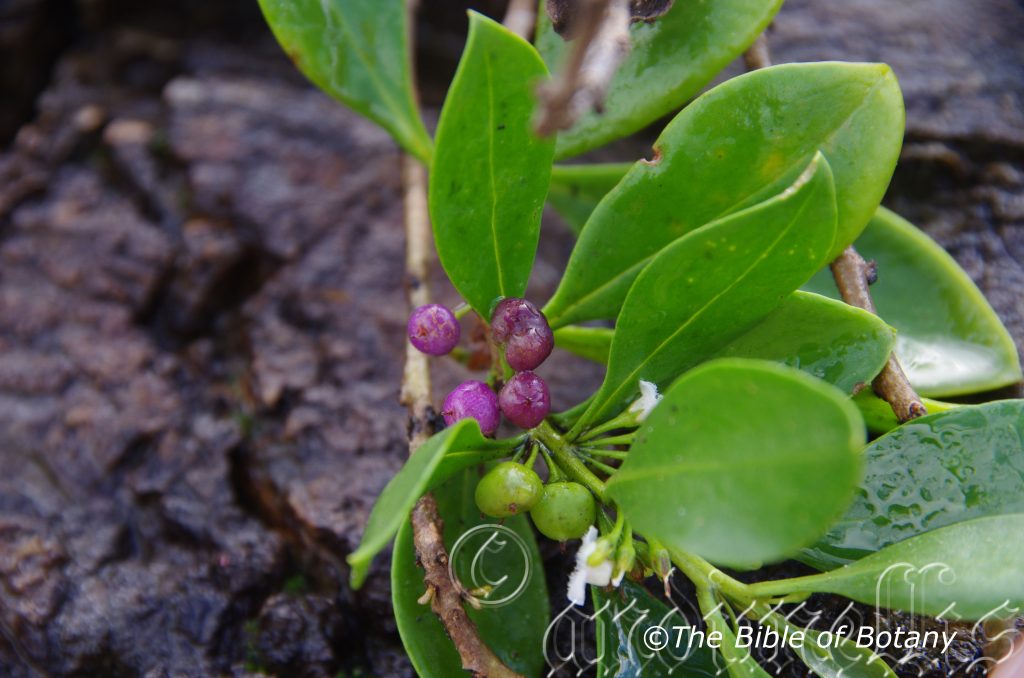
Goolawah National Park Foreshore NSW
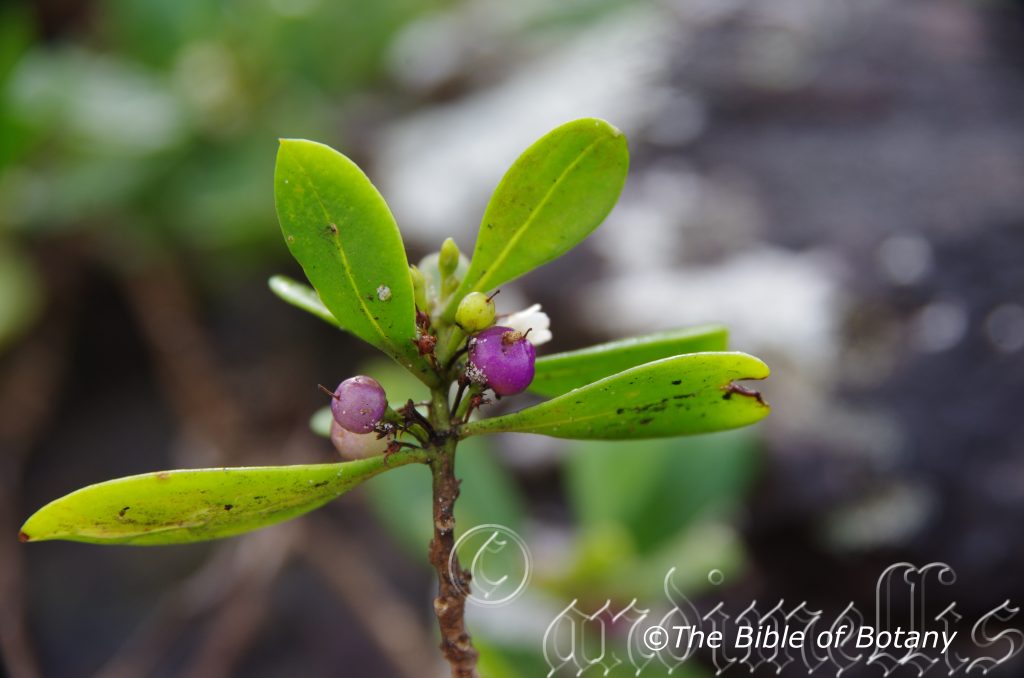
Goolawah National Park Foreshore NSW
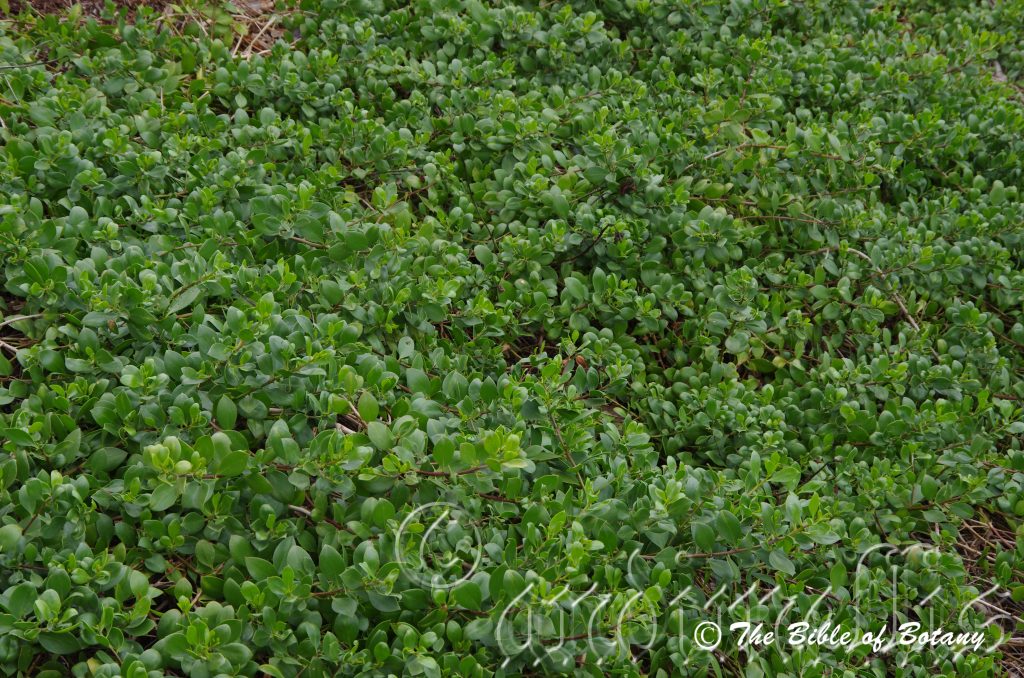
Brisbane River Kangaroo Point Qld.
Myoporum boninense
Classification:
Class: Equisetopsida
Subclass: Magnoliidae
Superorder: Asteranae
Order: Lamiales
Family: Scrophulariaceae
Genus: From Myo, which is Ancient Greek for to close or closed and Poros, which is Ancient Greek for a pore. It refers to the tiny pores, which appear to be closed all the time.
Specie: From Bonin, which is Latinized from the local name for the Islands and Anum/Ensis, which is Latin for originating from. It refers to plants which were originally discovered around the Bonin Islands which are also known as the Ogasawara Islands.
Sub species: Myoporum boninense subsp. australe is the only sub species found in Australia.
Common Name: Boobialla.
Distribution:
Myoporum boninense is found south from Flinders Island at the southern end of Princess Charlotte Bay in far north Queensland to Ben Boyde National Park on the Bega Valley coast. It is mainly found along the foreshore and coastal Islands except for an isolated population on the Beylando River near Charters Towers and near Point Peron south of Perth.
https://avh.ala.org.au/occurrences/search?taxa=Myoporum+boninense#tab_mapView
Habitat Aspect Climate:
Myoporum boninense prefer light filtered sun to full sun. It grows in coastal woodland heaths and open coastal heaths, on back dunes or occasionally on the frontal sand dunes, in Casuarina woodland near estuarine inlets or often on coastal headlands. The altitude usually ranges from 4 meter ASL to 50 meters ASL with the exception being the plants found around Charters Towers at 310 meters ASL and a population on the Herberton River at 889 meters ASL.
The temperatures range from minus 1 degree in August to 40 degrees in January.
The rainfall ranges from lows of 800mm to an average of 3000mm except for the Perth and Charters Tower plants which may receive as little as 500mm of rain in a drought year.
Soil Requirements:
Myoporum boninense prefer to grow on white sands, sandy loams to gravelly or rocky loams. The soils are usually derived from accumulated peaty beach sands, accumulated coral sands or decomposed granites. The soils pH ranges from 5pH to 7.5pH. It does not tolerate waterlogged soils. Non saline soils to very saline soils are tolerated as are salt laden winds.
Height & Spread:
Wild Plants: 1m to 2m by 2m to 3m
Characteristics:
Myoporum boninense grows as a small spreading prostrate shrub or at times erect shrub. The branches are purplish-green while the new growth is grass-green. It is usually smooth and glabrous or rarely sparsely covered in obscure tuberculate lumps.
The alternate, elliptic, ovate to obovate or oblanceolate or rarely orbicular leaves measure 12mm to 70mm by 5.5mm to 36mm in width. The petioles measure 3mm to 7mm in length. The bases are tapering attenuate while the apexes are acute, bluntly acute or at times obtuse. The concolourous laminas are blue-green mid green or grass-green and glabrous and semi glossy to glossy. The immature leaves and newly emerging leaves are grass-green and glossy. The laminas recurve slightly upwards from the mid vein to the margins and decurve downwards at the apex while the margins are entire. The mid vein is prominent on the lower lamina and is distinctly visible on the upper lamina. The lateral veins are obscure on both laminas.
The inflorescence are born in loose clusters of 1 or 8 individual flowers from the leaf axils. The pedicels measure 10mm to 15mm in length. The sepals are valvate to slightly imbricate at the base. The ovate to triangular sepals measure 1.5mm to 2.5mm in length by 0.5mm to 1.5mm in width. The corolla tube and lobes are white and glabrous externally while internally it is sparsely to moderately covered in long, white pilose hairs especially around the throat and on the lower basal section of the lobes. The corolla tubes measures 5.5mm to 7mm in length by 6mm to 8mm diameter. The obtuse lobes measure 9mm to 12mm in length by 7mm to 14mm in width.
The 4 white filaments are slightly exserted, glabrous and measure 6mm to 7.5mm in length while the white basifixed anthers are compressed and orbicular.
The single, white exserted style is glabrous and measures 7mm to 9mm in length. The style is crooked near the white stigma. The dome ovary is yellow-green. The flowers appear from September to January.
The fruits are ovoidal to globose drupes. The green capsules turn pinkish–purple to mid-purple when ripe while the sepals are persistent at the base while the style is persistent at the apex. The drupes measure 5mm to 10mm in length by 5mm to 9mm in diameter. The 4 circular seeds are deep brownish-black and glabrous.
Wildlife:
Myoporum boninense’s flowers are visited by many different species of small butterflies plus wasps, pollen flies and native bees.
Cultivation:
Myoporum boninense is a fairly fast growing plant which is worthwhile growing for the beautiful fragrance of its flowers which is sweet but not overpowering. It makes an excellent small tree for a park like scene or specimen tree in the garden or large shrub. It always looks green and fresh even when grown in semi-arid areas whether it is grown in light shade or full sun. It is very suitable on sandy exposed soils and are ideal for small, medium and large gardens close to the coast in temperate, sub-tropical, tropical or semi-arid zones. As garden subjects they will grow from 4m to 6m in height by 4m to 6m in diameter when grown in the open.
It is cold tolerant to temperatures at least as low as minus 2 degrees once established. They should be protected until they reach at least 1 meter in height or diameter and the trunk begins to thicken.
It is best used adjacent to small areas of bush close to paths or the house where they make a great small avenue or park tree for smaller properties. It can be planted in small groups of 2 or 3 to enhance their appearance and make the area look larger than it really is.
If mild native fertilizers are used it will develop quickly.
It can be used as a hedge and responds well to pruning. As a hedge it can be maintained at 1 meter to 2 meters in height by 1 meter to 3 meters in width.
Propagation:
Seeds: Myoporum boninense seeds can be sown directly into a seed raising mix after the flesh has been removed and the seeds washed thoroughly. Cover the seeds with 2mm to 3mm of fine weed free mulch and keep moist. Place the tray in a warm sunny position in spring. When the seedlings are 30mm to 50mm tall, prick them out and plant them into 50mm native tubes using a good organic mix.
Once the seedlings reach 100mm to 150mm in height they can be planted out into their permanent position.
Cuttings: Fortunately Myoporum boninense strikes easily from cuttings and would be a good plant for beginners to start and practice on. Use 100mm to 200mm long tip cuttings or lateral shoots from the present season’s growth. Take them in warmer months of the year. Remove half the leaves from the bottom section being careful not to tear the bark.
1 Prepare the cutting mix by adding two thirds sharp clean river sand, one third peat or one third perlite. These ingredients must be sterilized,
2 Select good material from non diseased plants,
3 Select semi green stems for cuttings. Look for a stem with two or three nodes,
4 Place the cutting on a flat, hard surface, and make a clean cut down one side of the cutting at the base for 10mm with a sharp sterile knife or razor blade. – This scarification of the node will increase the chances of roots emerging from this spot. Now remove all but one or two the leaves, leaving the apex leaves in tact. If the leaves are very large in proportion to the stem, cut off the apical halves.
5 Fill a saucer with water, and place a little weak rooting hormone into another container like a milk bottle top. Dip the node end of the cutting into the water and then into the rooting hormone. Tap off any excess hormone,
6 Use a small dipple stick or old pencil to poke a hole into the soilless potting mix. Ensure the hole is slightly larger than the stem diameter and be careful not to wipe the rooting hormone off the cuttings base. Place 2 to 4 cuttings in each of the 50mm native tubes,
7 I like to place the tubes in bucket with holes drilled in the bottom to allow excess water to drain out. A plastic bagthat fits over the bucket is ideal to help maintain temperature and moisture. Place in a semi shaded, warm position like under 50mm shade cloth.
8 When the cuttings have struck, open the bag to allow air circulation for a few days to a week,
9 Once hardened off remove the cuttings from the bag and allow to further hardening for a few more days to a week,
10 Transplant into a good potting mix to grow on.
Fertilize using seaweed, fish emulsion or organic chicken pellets soaked in water on an alternate basis. Fertilize every two months until the plants are established then twice annually in early September or March to maintain health, vitality and better flowering.
Further Comments from Readers:
Hi reader, it seems you use The Bible of Botany a lot. That’s great as we have great pleasure in bringing it to you! It’s a little awkward for us to ask, but our first aim is to purchase land approximately 1,600 hectares to link several parcels of N.P. into one at The Pinnacles NSW Australia, but we need your help. We’re not salespeople. We’re amateur botanists who have dedicated over 30 years to saving the environment in a practical way. We depend on donations to reach our goal. If you donate just $5, the price of your coffee this Sunday, We can help to keep the planet alive in a real way and continue to bring you regular updates and features on Australian plants all in one Botanical Bible. Any support is greatly appreciated. Thank you.
In the spirit of reconciliation we acknowledge the Bundjalung, Gumbaynggirr and Yaegl and all aboriginal nations throughout Australia and their connections to land, sea and community. We pay our respect to their Elders past, present and future for the pleasures we have gained.
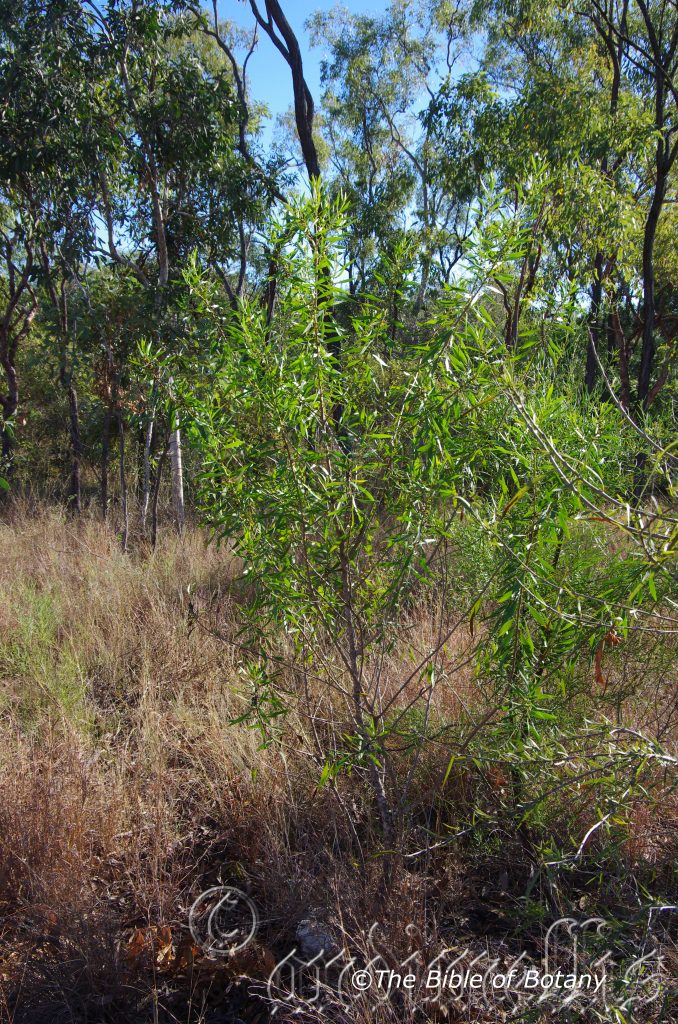
North of Toolakea Beach North Qld.
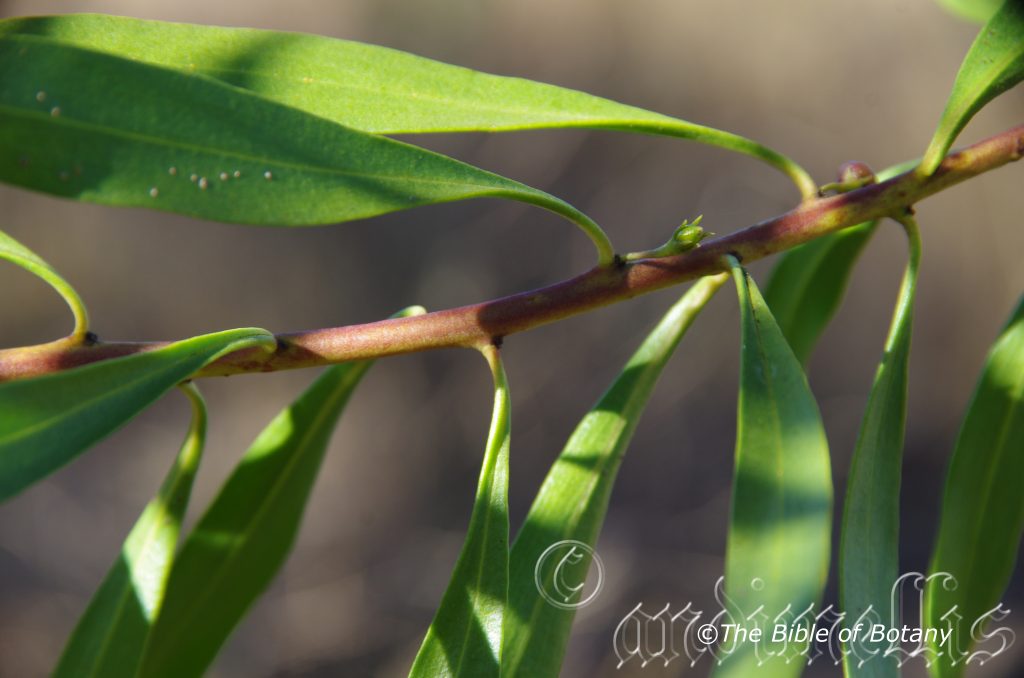
North of Toolakea Beach North Qld.
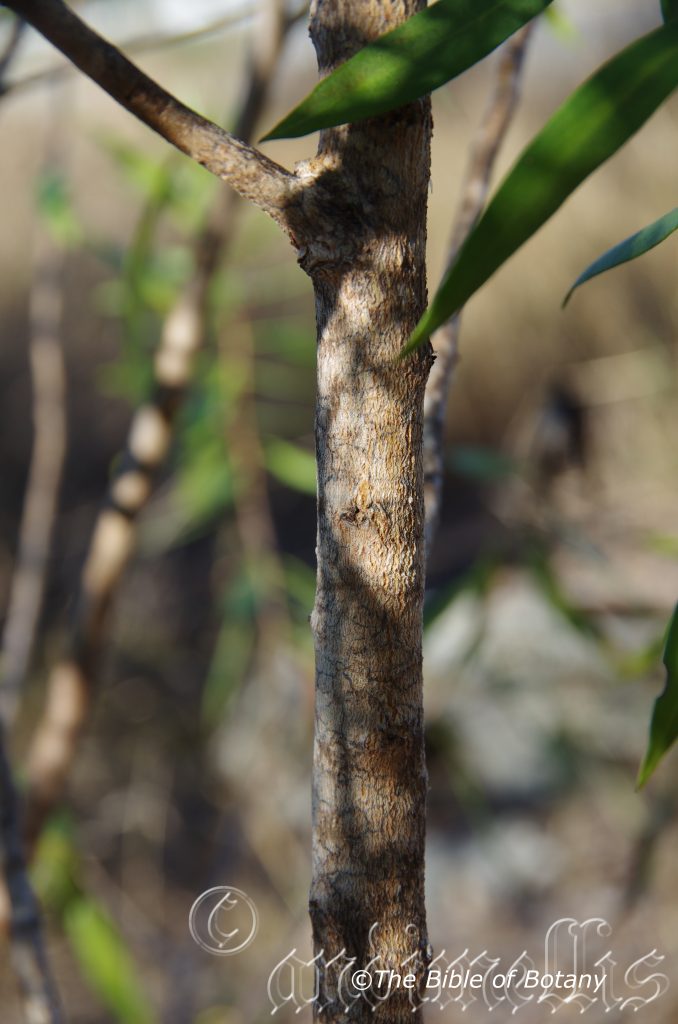
North of Toolakea Beach North Qld.

North of Toolakea Beach North Qld.
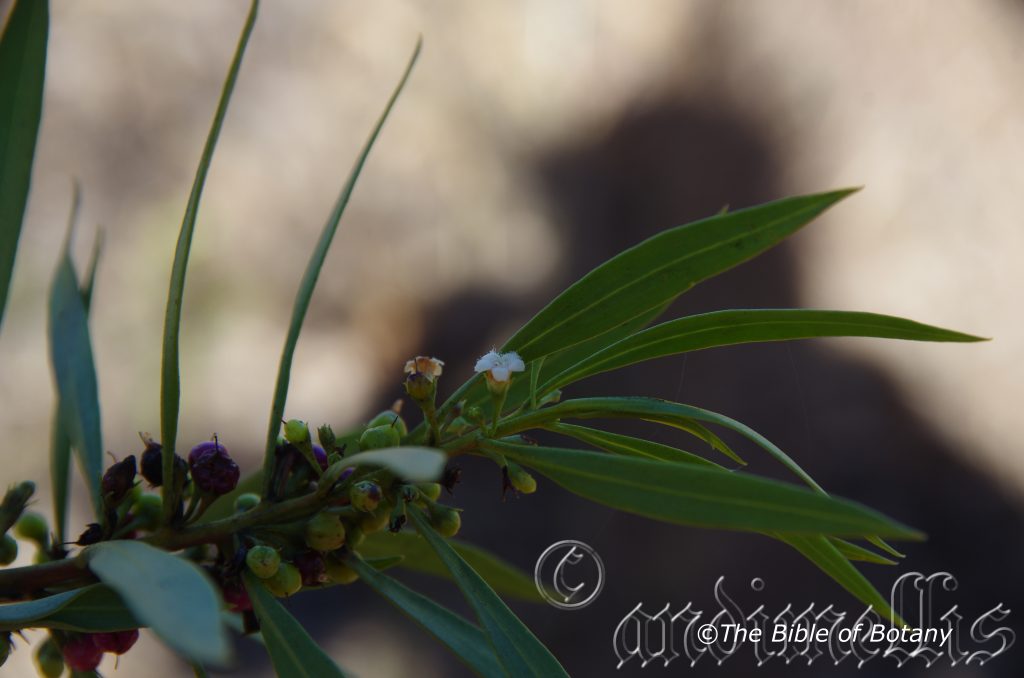
North of Toolakea Beach North Qld.
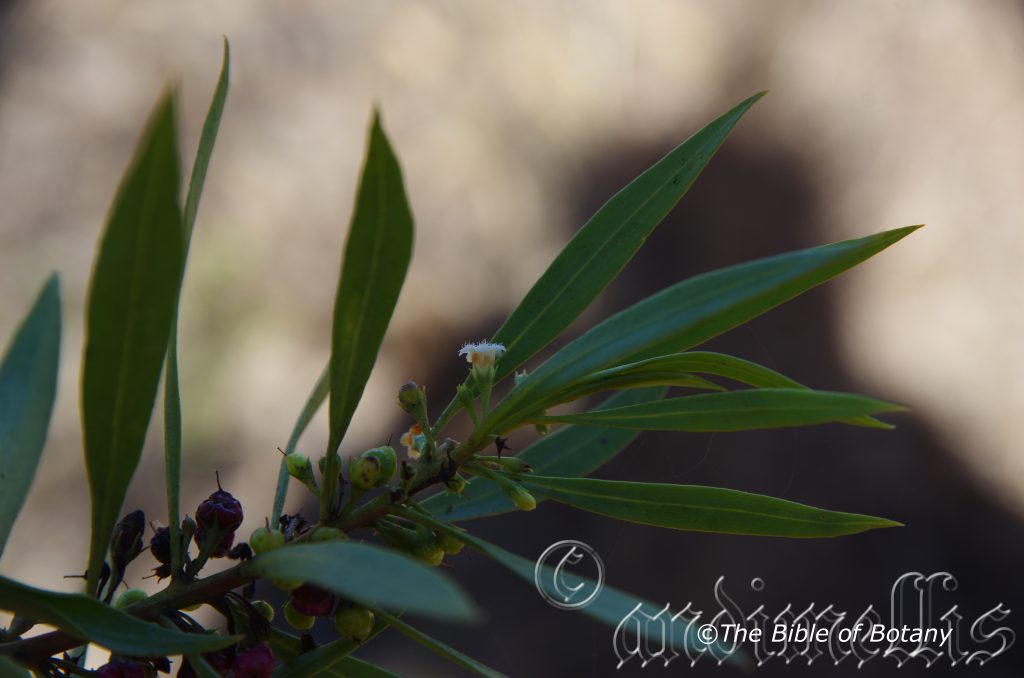
North of Toolakea Beach North Qld.
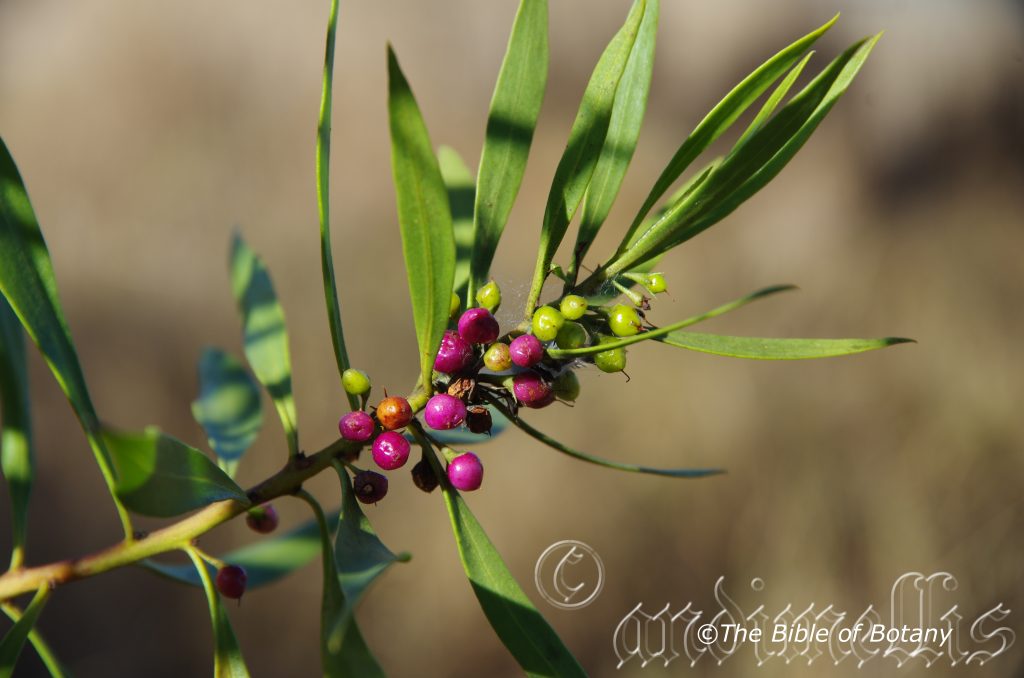
North of Toolakea Beach North Qld.
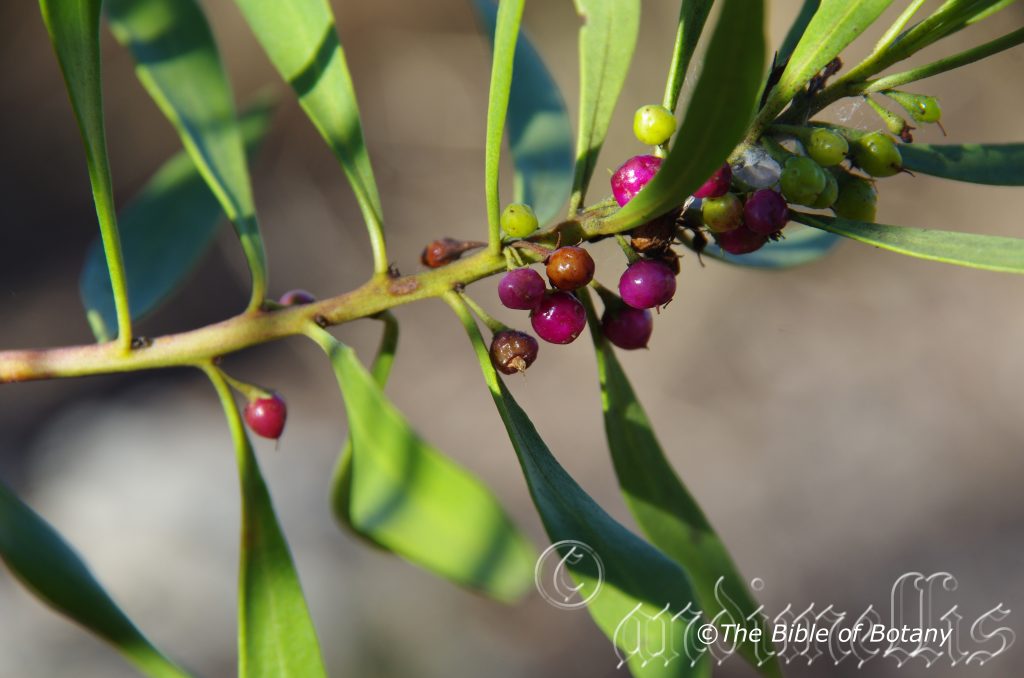
North of Toolakea Beach North Qld.
Myoporum montanum
Classification:
Class: Equisetopsida
Subclass: Magnoliidae
Superorder: Asteranae
Order: Lamiales
Family: Scrophulariaceae
Genus: From Myo, which is Ancient Greek for to close or closed and Poros, which is Ancient Greek for a pore. It refers to the tiny pores, which appear to be closed all the time.
Specie: From Montana, which is Latinized from the Spanish word for a mountain. It refers to plants, which have mountainous habitats.
Sub species:
Common Name: Western Boobialla or Water Bush.
Distribution:
Myoporum montanum is widespread throughout mainland Australia except for the true deserts and the true monsoonal zones in the far north.
https://avh.ala.org.au/occurrences/search?taxa=Myoporum+montanum#tab_mapView
Habitat Aspect Climate:
Myoporum montanum prefer light filtered sun to full sun. It grows in moist sclerophyll forests, dry sclerophyll forest, dry Eucalyptus woodlands, mallee scrubs especially where Bimble Box and White Cypress communities exist. The altitude ranges from 2 meter ASL to 1280 meters ASL.
The temperatures range from minus 4 degrees in August to 44 degrees in January.
The rainfall ranges from lows of 120mm to an average of 3200mm.
Soil Requirements:
Myoporum montanum prefers to grow on white or grey sands, sandy loams to medium clays. The soils are usually derived from decomposed granites, sandstones, brown basalts, black basalts, metamorphic rocks, shales, conglomerates accumulated peaty beach sands or accumulated coral sands. The soils pH ranges from 4.5pH to 7.5pH. It does not tolerate waterlogged soils. Non saline soils to very saline soils are tolerated as are salt laden winds.
Height & Spread:
Wild Plants: 5m to 8m by 4m to 5m
Characteristics:
Myoporum montanum grows as a small erect compact tree with finely fissured pale grey-brown to pale grey bark. The branches are usually smooth, glabrous and are sparsely to moderately covered in obscure or rarely prominent tuberculate lumps. The branchlets are purplish-green turning grass-green at the apexes.
The alternate, elliptic to lanceolate or rarely linear leaves measure 35mm to 140mm by 2mm to 38mm in width. The petioles measure 4mm to 10mm in length. The bases are tapering attenuate while the apexes are narrow acute to tapering acute. The concolourous laminas are blue-green mid green or grass-green and glabrous. The immature leaves and newly emerging leaves are paler and glossy. The laminas are flat, straight and twisted while the margins are entire. The mid vein is strongly prominent on the lower lamina and is prominent on the upper lamina. The lateral veins are obscure on both laminas.
The inflorescence are born in loose clusters of 1 or 7 individual flowers from the leaf axils. The pedicels measure 6mm to 15mm in length. The sepals are valvate, ovate to triangular and measure 1.5mm to 2.5mm in length by 0.5mm to 1.5mm in width. The corolla tube and lobes are white and glabrous externally while internally it is white with fine pinkish-purple to reddish-brown spots and sparsely covered in long, white pilose hairs especially around the throat and at the base of the lobes. The corolla tubes measures 8mm to 10.5mm in length by 6mm to 8mm diameter. The obtuse lobes measure 6mm to 8mm in length by 6mm to 8mm in width.
The 4 white filaments are slightly exserted, glabrous and measure 8.5mm to 11mm in length while the white to pale brownish basifixed anthers are compressed and orbicular.
The single, white to pastel green, exserted style is glabrous and measures 10mm to 12mm in length. The style is crooked near the white stigma. The flowers appear from July to January.
The fruits are ovoidal to sub globose drupes. The green capsules turn pale purple to reddish purple when ripe the sepals are persistent at the base while the style is persistent at the apex. The drupes measure 4.5mm to 7.5mm in length by 4.5mm to 7mm in
Wildlife:
Myoporum montanum’s flowers are visited by many different specie of small butterflies plus wasps, pollen flies and native bees.
Cultivation:
Myoporum montanum is a fairly fast growing plant which is worthwhile growing for the beautiful fragrance of its flowers which is sweet but not overpowering. It makes an excellent small tree for a park like scene or specimen tree in the garden or large shrub. It always looks green and fresh even when grown in semi-arid areas whether it is grown in light shade or full sun. It is very suitable on sandy exposed soils and are ideal for small, medium and large gardens close to the coast in temperate, sub-tropical, tropical or semi-arid zones. As garden subjects they will grow from 5m to 8m in height by 4m to 6m in diameter when grown in the open.
It is cold tolerant to temperatures at least as low as minus 3 degrees once established. They should be protected until they reach at least 1 meter in height or diameter and the trunk begins to thicken.
It is best used adjacent to small areas of bush close to paths or the house where they make a great small avenue or park tree for smaller properties. It can be planted in small groups of 2 or 3 to enhance their appearance and make the area look larger than it really is.
If mild native fertilizers are used they will develop quickly.
It can be used as a hedge and responds well to pruning. As a hedge it can be maintained at 1 meter to 2 meters in height by 1 meter to 3 meters in width.
Propagation:
Seeds: Myoporum montanum seeds can be sown directly into a seed raising mix after the flesh has been removed and the seeds washed thoroughly. Cover the seeds with 2mm to 3mm of fine weed free mulch and keep moist. Place the tray in a warm sunny position in spring. When the seedlings are 30mm to 50mm tall, prick them out and plant them into 50mm native tubes using a good organic mix.
Once the seedlings reach 100mm to 150mm in height they can be planted out into their permanent position.
Cuttings: Fortunately Myoporum montanum strikes easily from cuttings so it is a good plant for beginners to practice their techniques with. Use 100mm to 200mm long tip cuttings or lateral shoots from the present season’s growth. Take them in warmer months of the year. Remove half the leaves from the bottom section being careful not to tear the bark.
1 Prepare the cutting mix by adding two thirds sharp clean river sand, one third peat or one third perlite. These ingredients must be sterilized,
2 Select good material from non diseased plants,
3 Select semi green stems for cuttings. Look for a stem with two or three nodes,
4 Place the cutting on a flat, hard surface, and make a clean cut down one side of the cutting at the base for 10mm with a sharp sterile knife or razor blade. – This scarification of the node will increase the chances of roots emerging from this spot. Now remove all but one or two the leaves, leaving the apex leaves in tact. If the leaves are very large in proportion to the stem, cut off the apical halves.
5 Fill a saucer with water, and place a little medium strength rooting hormone into another container like a milk bottle top. Dip the node end of the cutting into the water and then into the rooting hormone. Tap off any excess hormone,
6 Use a small dipple stick or old pencil to poke a hole into the soilless potting mix. Ensure the hole is slightly larger than the stem diameter and be careful not to wipe the rooting hormone off the cuttings base. Place 2 to 4 cuttings in each of the 50mm native tubes,
7 I like to place the tubes in bucket with holes drilled in the bottom to allow excess water to drain out. A plastic bag that fits over the bucket is ideal to help maintain temperature and moisture. Place in a semi shaded, warm position like under 50mm shade cloth.
8 When the cuttings have struck, open the bag to allow air circulation for a few days to a week,
9 Once hardened off remove the cuttings from the bag and allow to further hardening for a few more days to a week,
10 Transplant into a good potting mix to grow on.
Fertilize using seaweed, fish emulsion or organic chicken pellets soaked in water on an alternate basis. Fertilize every two months until the plants are established then twice annually in early September or March to maintain health, vitality and better flowering.
Further Comments from Readers:
Hi reader, it seems you use The Bible of Botany a lot. That’s great as we have great pleasure in bringing it to you! It’s a little awkward for us to ask, but our first aim is to purchase land approximately 1,600 hectares to link several parcels of N.P. into one at The Pinnacles NSW Australia, but we need your help. We’re not salespeople. We’re amateur botanists who have dedicated over 30 years to saving the environment in a practical way. We depend on donations to reach our goal. If you donate just $5, the price of your coffee this Sunday, We can help to keep the planet alive in a real way and continue to bring you regular updates and features on Australian plants all in one Botanical Bible. Any support is greatly appreciated. Thank you.
In the spirit of reconciliation we acknowledge the Bundjalung, Gumbaynggirr and Yaegl and all aboriginal nations throughout Australia and their connections to land, sea and community. We pay our respect to their Elders past, present and future for the pleasures we have gained.
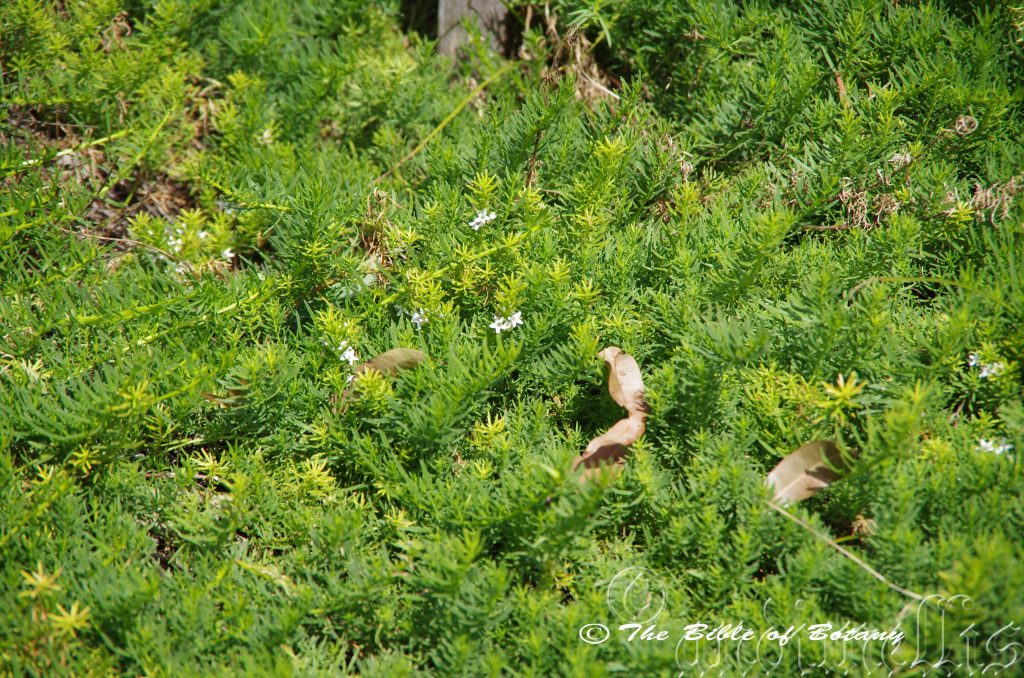
Rosser Gardens Benowa Qld.
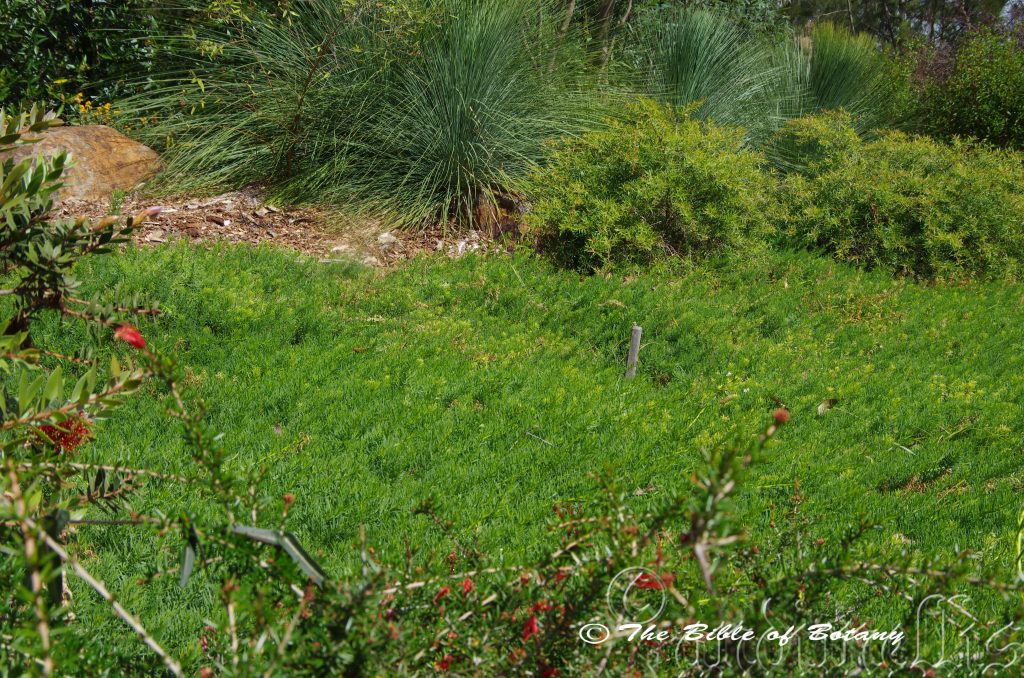
Rosser Gardens Benowa Qld.
Myoporum parvifolium
Classification:
Class: Equisetopsida
Subclass: Magnoliidae
Superorder: Asteranae
Order: Lamiales
Family: Scrophulariaceae
Genus: From Myo, which is Ancient Greek for to close or closed and Poros, which is Ancient Greek for a pore. It refers to the tiny pores, which appear to be closed all the time.
Specie: From Parvis, which is Latin for small and Phúllon, which is Ancient Greek or later Folium, which is Latin for a leaf. It refers to plants, which have small leaves compared to other specie in the genus.
Sub species:
Common Name: Boobialla or creeping Boobialla.
Distribution:
Myoporum parvifolium is found east of a line from Fowlers Bay in southern South Australia across to the western half of Victoria and the very far south western corner of New South Wales.
https://avh.ala.org.au/occurrences/search?q=taxamm3Amm22Myoporum+parvifolium22#tab_mapView
The temperatures range from minus 4 degrees in August to 40 degrees in January.
The rainfall ranges from lows of 150mm to an average of 900mm.
Soil Requirements:
Myoporum parvifolium on clay soils. The soils are usually derived from sediments derived from various parent rocks. The soils pH ranges from 5pH to 8.5pH. It does not tolerate waterlogged soils. Non saline soils to very saline soils are tolerated as are salt laden winds.
Height & Spread:
Wild Plants: 100mm to 200m by 1.2m to 2.8m
Characteristics:
Myoporum parvifolium grows as a tightly pact, prostrate, ground cover. The stems are at first bluish-green turning mid brown and are smooth, glabrous or at times covered in fine tuberculate lumps.
The alternate, sub opposite or loose whirl, linear to oblanceolate leaves measure 10mm to 60mm in length by 2mm to 8mm in width. The petioles measure 4mm to 10mm in length. The bases taper to the stem, while the apexes are obtuse to bluntly acute. The concolourous laminas are blueish-green and glabrous. The laminas are flat, straight and twisted while the margins are entire. The mid vein and lateral veins are not visible on either laminas.
The inflorescence are born in loose clusters of 1 or 3 individual flowers from the leaf axils. The pedicels measure 6mm to 18mm in length. The ovate to lanceolate sepals are valvate and slightly imbricate near the base and measure 1.5mm to 3mm in length by 1mm to 1.5mm in width. The corolla tube and lobes are white and glabrous externally while internally it is white with fine pinkish-purple to reddish-brown spots. Internally they are glabrous to moderately covered in white pilose hairs near the throat. The corolla tubes measures 6mm to 20mm in length by 7mm to 9mm diameter. The obtuse lobes measure 3mm to 10mm in length.
The 4 white filaments are strongly exserted, glabrous and measure 8mm to 20mm in length while the oblong basifixed anthers are cream. The base of the anthers are glabrous to moderately covered in white pilose hairs.
The single, white to deep pink, exserted style is glabrous and measures 10mm to 20mm in length. The flowers appear from late November to early March depending on local conditions.
The fruits are semi translucent, depressed globose drupes. The green capsules turn deep purple to reddish-purple when ripe. The sepals are persistent at the base and become broad linear on the ripe fruits, while the style is persistent at the apex or its rudiment base is persistent. The drupes measure 5mm to 7mm in length by 6mm to 8mm in diameter.
Wildlife:
Myoporum parvifolium’s flowers are visited by many different species of native bees on the coast in gardens.
Cultivation:
Myoporum parvifolium is a fast growing ground cover, which is worthwhile growing where water is scarce. It is ideal for semi-arid to arid gardens whether it is grown in light shade or full sun. It is very suitable on sandy exposed soils and is ideal for small, medium and large gardens close to the coast in temperate dry areas.
It is cold tolerant to temperatures at least as low as minus 3 degrees once established. It should be protected until it reaches at least 1 meter in diameter.
If mild native fertilizers are used they will develop quickly.
Propagation:
Seeds: Myoporum parvifolium seeds can be sown directly into a seed raising mix after the flesh has been removed and the seeds washed thoroughly. Cover the seeds with 2mm to 3mm of fine weed free mulch and keep moist. Place the tray in a warm sunny position in spring. When the seedlings are 30mm to 50mm tall, prick them out and plant them into 50mm native tubes using a good organic mix.
Once the seedlings reach 100mm to 150mm in height they can be planted out into their permanent position.
Cuttings: Fortunately Myoporum parvifolium strikes easily from cuttings so it is a good plant for beginners to practice their techniques with. Use 100mm to 200mm long tip cuttings or lateral shoots from the present season’s growth. Take them in warmer months of the year. Remove half the leaves from the bottom section being careful not to tear the bark.
1 Prepare the cutting mix by adding two thirds sharp clean river sand, one third peat or one third perlite. These ingredients must be sterilized,
2 Select good material from non diseased plants,
3 Select semi green stems for cuttings. Look for a stem with two or three nodes,
4 Place the cutting on a flat, hard surface, and make a clean cut down one side of the cutting at the base for 10mm with a sharp sterile knife or razor blade. – This scarification of the node will increase the chances of roots emerging from this spot. Now remove all but one or two the leaves, leaving the apex leaves in tact. If the leaves are very large in proportion to the stem, cut off the apical halves.
5 Fill a saucer with water, and place a little medium strength rooting hormone into another container like a milk bottle top. Dip the node end of the cutting into the water and then into the rooting hormone. Tap off any excess hormone,
6 Use a small dipple stick or old pencil to poke a hole into the soilless potting mix. Ensure the hole is slightly larger than the stem diameter and be careful not to wipe the rooting hormone off the cuttings base. Place 2 to 4 cuttings in each of the 50mm native tubes,
7 I like to place the tubes in bucket with holes drilled in the bottom to allow excess water to drain out. A plastic bag that fits over the bucket is ideal to help maintain temperature and moisture. Place in a semi shaded, warm position like under 50mm shade cloth.
8 When the cuttings have struck, open the bag to allow air circulation for a few days to a week,
9 Once hardened off remove the cuttings from the bag and allow to further hardening for a few more days to a week,
10 Transplant into a good potting mix to grow on.
Fertilize using seaweed, fish emulsion or organic chicken pellets soaked in water on an alternate basis. Fertilize every two months until the plants are established then twice annually in early September or March to maintain health, vitality and better flowering.
Further Comments from Readers:
Hi reader, it seems you use The Bible of Botany a lot. That’s great as we have great pleasure in bringing it to you! It’s a little awkward for us to ask, but our first aim is to purchase land approximately 1,600 hectares to link several parcels of N.P. into one at The Pinnacles NSW Australia, but we need your help. We’re not salespeople. We’re amateur botanists who have dedicated over 30 years to saving the environment in a practical way. We depend on donations to reach our goal. If you donate just $5, the price of your coffee this Sunday, We can help to keep the planet alive in a real way and continue to bring you regular updates and features on Australian plants all in one Botanical Bible. Any support is greatly appreciated. Thank you.
In the spirit of reconciliation we acknowledge the Bundjalung, Gumbaynggirr and Yaegl and all aboriginal nations throughout Australia and their connections to land, sea and community. We pay our respect to their Elders past, present and future for the pleasures we have gained.
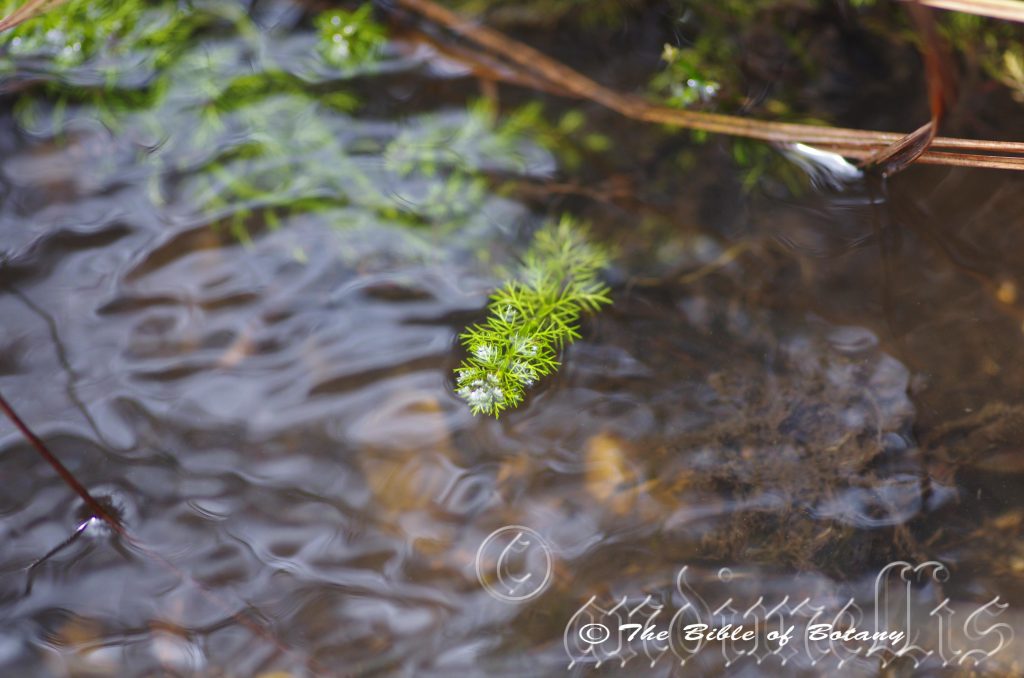
Cathedral Rocks National Park NSW
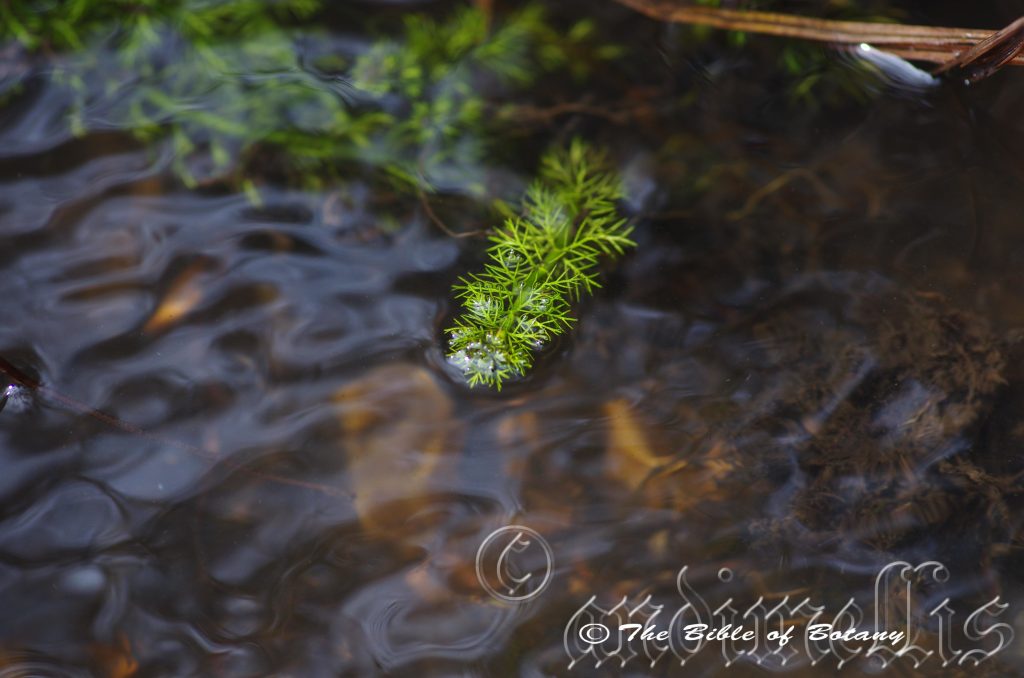
Cathedral Rocks National Park NSW
Myriophyllum alpinum
Classification:
Unranked: Eudicots
Unranked: Core Eudicots
Order: Saxifragales
Family: Haloragaceae
Genus: From Myrios, which is Greek/Latin for countless or very many (10,000) and Phullon/Phýllon, which is Ancient Greek for a leaf. It refers to leaves/leaflets or pinnules which are produced in abundant numbers along the stems.
Specie: From Alpinium, which is Latin for the alps or snow-capped mountains. It refers to plants, which prefer to grow in the alps or on the higher peaks.
Sub species:
Common Name: Upright Water Milfoil or Erect Milfoil.
Distribution:
Myriophyllum alpinum is found in several disjunct populations south from busby’s Flats in north eastern New South wales to Bairnsdale in east Gippsland in Victoria.
https://avh.ala.org.au/occurrences/search?taxa=Myriophyllum+alpinum#tab_mapView
Habitat Aspect Climate:
Myriophyllum alpinum prefers light filtered sun to full sun. It grows in still water or on wet mud that is seasonally submerged. The altitude ranges from 80 meter ASL to 1800 meters ASL.
The temperatures range from minus 6 degrees in August to 34 degrees in January.
The rainfall ranges from lows of 400mm to an average of 1200mm however this is not as important as the flow in the streams it is found.
Soil Requirements:
Myriophyllum alpinum prefers to grow on course sand, sandy loams to medium clays or fine to course silts. The soils are usually derived from decomposed granites. The soils pH ranges from 4.5pH to 5pH. It tolerates waterlogged soils growing in shallow water. Non saline soils to slightly saline soils are tolerated.
Height & Spread:
Wild Plants: 0.2m to 1 m by 1m to 2m when in bloom.
Characteristics:
Myriophyllum alpinum is an erect slender herbaceous perennial aquatic emergent plant. The upper sections bear scattered, small, white, crisped hairs. The terete stems usually measure 1mm to 2.5mm in diameter. Fully emergent plants and those plants where the stems make contact with the ground root readily from the nodes.
Myriophyllum alpinum’s reddish, emergent leaves are usually in whorls of 3 or 4. The ovate, deeply pinnatifid leaves divide into 6 to 9 segments and measure 4mm to 8mm in length by 3mm to 5mm in width. The submergent, linear to lanceolate leaves are toothed and measure 20mm to 35mm in length by 1mm to 1.2mm in width. The bases are joined directly onto the stems while the apexes are acute. The concolourous laminas are pale blue-green. The laminas curve upwards from the base to the apexes while the margins are entire.
The inflorescence are monoecious and are born solitary from the leaf axils. The male and female flowers are sessile and born from the same axis on the stem.
The reddish, sessile male flowers have 4 triangular to ovate sepals that measure 2.5mm to 3mm in length. The reddish or yellowish petals measure 3mm to 3.5mm in length.
The reddish purple, sessile, female flowers are without sepals and petals. The stigmas are white, while the ovoidal mericarps are sparsely covered in pappilose hairs and measure 0.8mm to 1mm in length. The flowers appear throughout the year but are more prevalent in the warmer months.
Wildlife:
Myriophyllum alpinum’s flowers are visited by several unidentified beetles. The plants are an important fish habitat and food resource for many ducks and waterfowl.
Cultivation:
Myriophyllum alpinum make excellent water plants for the fish or frog pond. It is also ideal as a bog plant where its base is submerged and it is allowed to emerge onto the surrounding ground.
This plant has a beautiful blue-green colour for the indoor fish tank. Its fine leaves are very delicate looking. It will grow very rapidly in the aquarium that is at least 250mm in height. It requires medium to good light growing better in hard nutrient rich water than soft poor water. It requires a moderate level of light of 5 to 7 watts per 10 liters provided by full spectrum 5000-7000K lamps.
This makes it ideal for fish tanks and out door aquariums that have fish. It is an excellent oxygen carbon plant.
The Myriophyllum pinnatum is a rapid, dense foliage grower that is ideal for planting in the background of the aquarium to hide equipment. It is also ideal in hatcheries providing refuge for fish fry.
Propagation:
Seeds: Myriophyllum alpinum can be reproduced by transplanting rooted cuttings or mature stems. Simply cut the plant at the height that you desire. Make sure the lower portion has some roots for rapid none interrupted growth. Strip the leaves from the bottom 50mm to 70mm section from the bottom and peg it down in the gravel or potting mix if in a larger outdoor pond. Cover the surface with pebbles to prevent clouding of the water. If allowed to grow out of the water flowers will be produced on the emergent sections.
Further Comments from Readers:
Hi reader, it seems you use The Bible of Botany a lot. That’s great as we have great pleasure in bringing it to you! It’s a little awkward for us to ask, but our first aim is to purchase land approximately 1,600 hectares to link several parcels of N.P. into one at The Pinnacles NSW Australia, but we need your help. We’re not salespeople. We’re amateur botanists who have dedicated over 30 years to saving the environment in a practical way. We depend on donations to reach our goal. If you donate just $5, the price of your coffee this Sunday, We can help to keep the planet alive in a real way and continue to bring you regular updates and features on Australian plants all in one Botanical Bible. Any support is greatly appreciated. Thank you.
In the spirit of reconciliation we acknowledge the Bundjalung, Gumbaynggirr and Yaegl and all aboriginal nations throughout Australia and their connections to land, sea and community. We pay our respect to their Elders past, present and future for the pleasures we have gained.
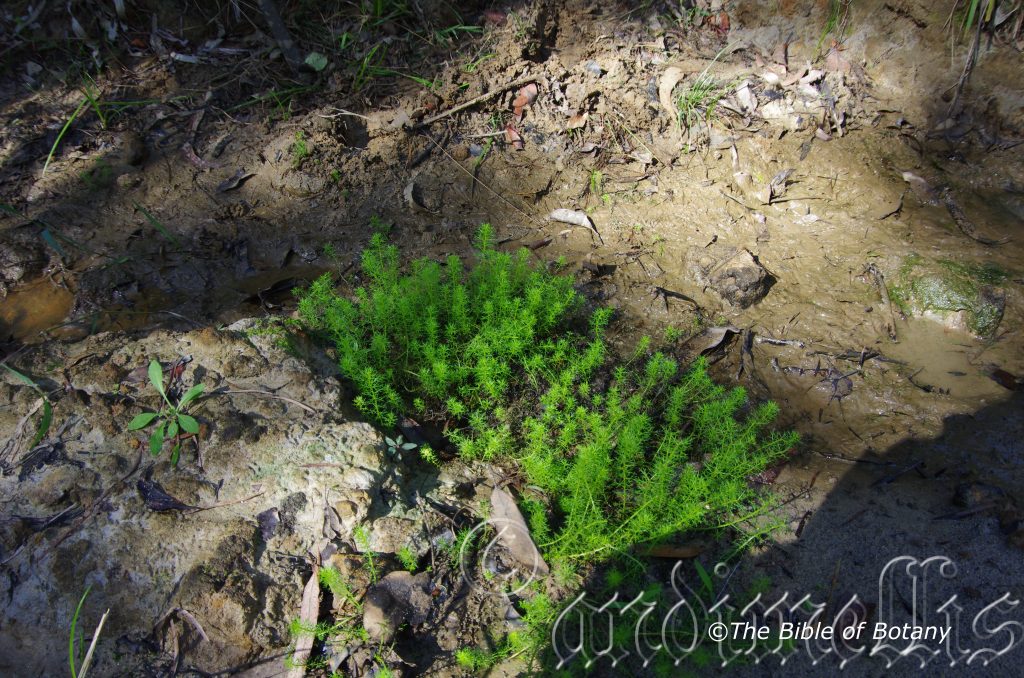
Pillar Valley NSW
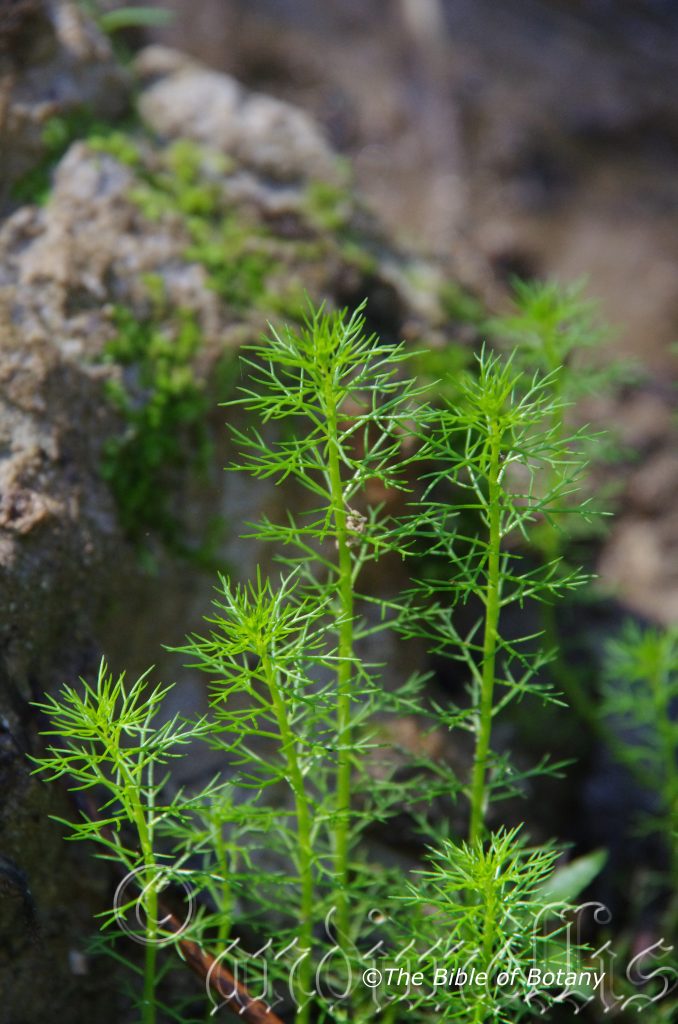
Pillar Valley NSW
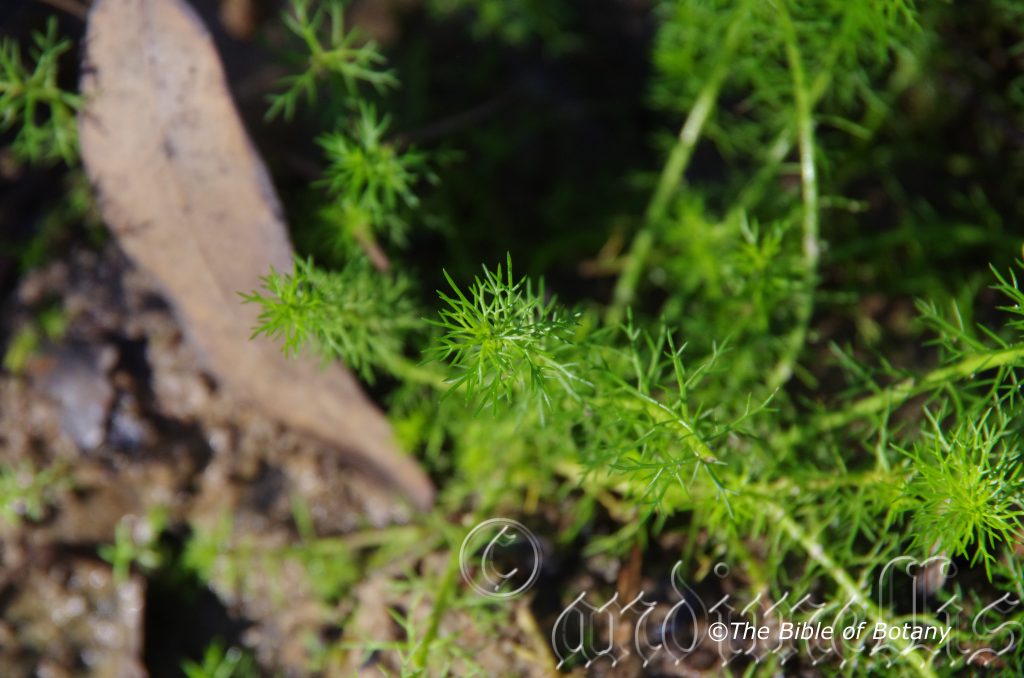
Pillar Valley NSW
Myriophyllum crispatum
Classification:
Unranked: Eudicots
Unranked: Core Eudicots
Order: Saxifragales
Family: Haloragaceae
Genus: From Myrios, which is Greek/Latin for countless or very many (10,000) and Phullon/Phýllon, which is Ancient Greek for a leaf. It refers to leaves/leaflets or pinnules which are produced in abundant numbers along the stems.
Specie: From Crispum, which is Latin for a curl, curly or wavy. It refers to structures or organs, which have curly, wavy or ruffled surface or margin.
Sub species:
Common Name: Upright Water Milfoil or Erect Milfoil.
Distribution:
Myriophyllum crispatum is found west of a line from Midland Junction on the Swan River Plain to the Kalgan River in the south west corner of Western Australia with an isolated population in the far north west on the King Edward River on the Mitchel Plateau.
In the east it is found east of a line form Miriam Vale in central eastern Queensland to the Murray River Reserve on the Murray River then west along the River to Lake Alexandrina with a further population east of Adelaide and to the south at Victor Harbour. There is also 3 isolated populations further north at Kidston, north of Hughenden and Shoalwater Bay.
https://avh.ala.org.au/occurrences/search?taxa=Myriophyllum+crispatum#tab_mapView
Habitat Aspect Climate:
Myriophyllum crispatum prefers light filtered sun to full sun. It grows in still water or on wet mud that is seasonally submerged. The altitude ranges from 10 meter ASL to 1280 meters ASL.
The temperatures range from minus 3 degrees in August to 44 degrees in January.
The rainfall ranges from lows of 400mm to an average of 3200mm.
Soil Requirements:
Myriophyllum crispatum prefers to grow on course sand, sandy loams to medium clays or fine to course silts. The soils are usually derived from decomposed granites, sandstones, metamorphic rocks being laid down as alluvial silts. The soils pH ranges from 4.5pH to 6pH. It tolerates waterlogged soils growing in shallow water. Non saline soils to moderately saline soils are tolerated.
Height & Spread:
Wild Plants: 0.2m to 1 m by 1m to 2m when in bloom.
Characteristics:
Myriophyllum crispatum is an erect slender herbaceous perennial aquatic or fully emergent plant. The upper sections bear scattered, small, white, crisped hairs. The stems usually measure 3mm to 5mm in diameter. Fully emergent plants and those plants where the stems make contact with the ground root readily from the nodes.
The leaves are usually in whorls of 5 to 8. The terete or pinnatifid emergent leaves have 6 to 8 short segments and measure 5mm to 20mm in length. The submerged leaves are pectinate. The bases are joined directly onto the stems while the apexes are acute. The concolourous laminas are blue-green or at times are grass-green. The laminas curve upwards from the base to the apexes while the margins are entire or shortly lobed.
The inflorescence are monoecious and are born solitary from the leaf axils. The male and female flowers are sessile and born along the same stem.
The male flowers 4 ovate to oblong sepals are caducous. The oblong petals are cream to reddish brown or purple. They measure 2mm to 3mm in length. The 8 stamens are cream.
The female flowers are positioned below the male flowers. The sepals and petals are absent on this species. The stigma is white to pink. The flowers appear throughout the year but are more prevalent in warmer weather.
Myriophyllum crispatum’s fruits are cylindrical mericarps. The green mericarps turn yellow-brown to deep red, prickly with sharp papillae. The mericarps measure 0.7mm to 1mm in length.
Wildlife:
Myriophyllum crispatum’s flowers are visited by several unidentified beetles. The plants are an important fish habitat and food resource for many ducks and waterfowl.
Cultivation:
Myriophyllum crispatum make excellent water plants for the fish or frog pond. It is also ideal as a bog plant where its base is submerged and it is allowed to emerge onto the surrounding ground.
This plant has a beautiful blue-green colour for the indoor fish tank. Its fine leaves are very delicate looking. It will grow very rapidly in the aquarium that is at least 250mm in height. It requires medium to good light growing better in hard nutrient rich water than soft poor water. It requires a moderate level of light of 5 to 7 watts per 10 liters provided by full spectrum 5000-7000K lamps.
This makes it ideal for fish tanks and out door aquariums that have fish. It is an excellent oxygen carbon plant.
The Myriophyllum pinnatum is a rapid, dense foliage grower that is ideal for planting in the background of the aquarium to hide equipment. It is also ideal in hatcheries providing refuge for fish fry.
Propagation:
Seeds: Myriophyllum crispatum can be reproduced by transplanting rooted cuttings or mature stems. Simply cut the plant at the height that you desire. Make sure the lower portion has some roots for rapid none interrupted growth. Strip the leaves from the bottom 50mm to 70mm section from the bottom and peg it down in the gravel or potting mix if in a larger outdoor pond. Cover the surface with pebbles to prevent clouding of the water. If allowed to grow out of the water flowers will be produced on the emergent sections.
Further Comments from Readers:
Hi reader, it seems you use The Bible of Botany a lot. That’s great as we have great pleasure in bringing it to you! It’s a little awkward for us to ask, but our first aim is to purchase land approximately 1,600 hectares to link several parcels of N.P. into one at The Pinnacles NSW Australia, but we need your help. We’re not salespeople. We’re amateur botanists who have dedicated over 30 years to saving the environment in a practical way. We depend on donations to reach our goal. If you donate just $5, the price of your coffee this Sunday, We can help to keep the planet alive in a real way and continue to bring you regular updates and features on Australian plants all in one Botanical Bible. Any support is greatly appreciated. Thank you.
In the spirit of reconciliation we acknowledge the Bundjalung, Gumbaynggirr and Yaegl and all aboriginal nations throughout Australia and their connections to land, sea and community. We pay our respect to their Elders past, present and future for the pleasures we have gained.
Myriophyllum gracile
Classification:
Unranked: Eudicots
Unranked: Core Eudicots
Order: Saxifragales
Family: Haloragaceae
Genus: From Myrios, which is Greek/Latin for countless or very many (10,000) and Phullon/Phýllon, which is Ancient Greek for a leaf. It refers to leaves/leaflets or pinnules which are produced in abundant numbers along the stems.
Specie: From Kilentia, which is Ancient Greek for slim or slender or Gracilis, which is Latin for slender and graceful. It refers to flower spikes, which are more slender and graceful than other species in the genus.
Variety: Myriophyllum gracile var. gracile. From Kilentia, which is Ancient Greek for slim or slender or Gracilis, which is Latin for slender and graceful. It refers to flower spikes, which are more slender and graceful than other species in the genus.
Variety: Myriophyllum gracile var. lavae. From Kilentia, which is Ancient Greek for slim or slender or Gracilis, which is Latin for slender and graceful. It refers to flower spikes, which are more slender and graceful than other species in the genus.
Variety: Myriophyllum gracile var. lineare. From Kilentia, which is Ancient Greek for slim or slender or Gracilis, which is Latin for slender and graceful. It refers to flower spikes, which are more slender and graceful than other species in the genus.
Common Name: Upright Water Milfoil.
Distribution:
Myriophyllum gracile var. gracile is found in several disjunct populations south from Bundaberg in southern Queensland to The Piliga Scrub near Narrabri on the western slopes. On and east of the Great Dividing Range in New South Wales.
Myriophyllum gracile var. lavae is Goondawindi and Inglewood and the other south west of Stanthorpe.
Myriophyllum gracile var. lineare. is found south from Mount Garnet in far north eastern Queensland to south east of Echuca in northern Victoria.
https://avh.ala.org.au/occurrences/search?taxa=Myriophyllum+gracile#tab_mapView
Habitat Aspect Climate:
Myriophyllum gracile prefers light filtered sun to full sun. It grows in still water or on wet mud that is seasonally submerged. The altitude ranges from 5 meter ASL to 780 meters ASL.
The temperatures range from minus 3 degrees in August to 40 degrees in January.
The rainfall ranges from lows of 400mm to an average of 2000mm.
Soil Requirements:
Myriophyllum gracile prefers course sand, sandy loams to medium clays or fine to medium silts. The soils are usually derived from decomposed granites, sandstones, metamorphic rocks being laid down as alluvial silts. The soils pH ranges from 4.5pH to 6pH. It tolerates waterlogged soils preferring to grow in shallow water. Non saline soils to very saline soils are tolerated.
Height & Spread:
Wild Plants: 0.1m to 0.25m by 0.3m to 0.5m.
Characteristics:
Myriophyllum gracile is an erect slender herbaceous perennial aquatic or fully emergent plant. The stems are grass-green and semi glossy and usually measure 0.9mm to 1.2mm in diameter. Fully emergent plants and those plants where the stems make contact with the ground root readily from the nodes.
The emergent leaves are alternate, linear to narrow lanceolate or pinnately divided into 3 to 7 segments. The leaves measure 5mm to 10mm in length while the lobes measure 5mm to 10mm in length. The bases are joined directly onto the stems while the apexes are acute. The concolourous laminas are grass-green glabrous and glossy.
The inflorescence are usually monoecious or at times dioecious and are born solitary from the leaf axils.
The male flowers are sessile and born along the same stems as the female flowers. The male flowers 4 linear to lanceolate sepals are caducous. The oblong petals are creamy yellow tipped reddish or reddish-purple. The petals measure 2mm to 2.5mm in length.
The female flowers are sessile or subsessile and are positioned below the male flowers. The sepals and petals are absent on this species. The pistils are white. The flowers appear throughout the year but are more prevalent in warmer weather.
The fruits are cylindrical mericarps. The green mericarps turn yellow-brown to deep reddish-brown. The mericarps measure 0.5mm to 0.8mm in length.
Subspecie Differences:
Myriophyllum gracile var. gracile’s leaves are usually pinnately divided into 5 narrow segments and measure 5mm to 10mm in length. The male and female flowers are usually on the same shoot or at times on separate shoots. The mericarps are deep reddish-brown and sparsely covered in papillose lumps.
Myriophyllum gracile var. lavae’s male and female flowers usually on the same shoot. The fruits are smooth, apart from a faint dorsal rib.
Myriophyllum gracile var. lineare’s leaves are linear to narrow lanceolate with entire or shortly toothed margins. They measure 5mm to 8mm in length. The male and female flowers on the same shoot or at times the shoots only bear female flowers. The mericarps are deep reddish-brown and are densely covered in papillose lumps.
Wildlife:
Myriophyllum gracile’s flowers are visited by several unidentified beetles. The plants are an important fish habitat and food resource for many ducks and waterfowl.
Cultivation:
Myriophyllum gracile make excellent water plants for the fish or frog pond. It is also ideal as a bog plant where its base is submerged and it is allowed to emerge onto the surrounding ground.
This plant has a beautiful bright green colour for the indoor fish tank. Its fine leaves have a delicate almost plastic appearance. It will grow very rapidly in the aquariums that are at least 250mm in height. It requires medium to good light growing better in hard nutrient rich water than soft poor water. It requires a moderate level of light of 7 to 10 watts per 10 litres provided by full spectrum 5000-7000K lamps.
This makes it ideal for fish tanks and outdoor aquariums that have fish. It is an excellent oxygen carbon plant.
Seeds: Myriophyllum gracile can be reproduced by transplanting rooted cuttings. Simply cut the plant at the height that you desire. Make sure the lower portion has some roots for rapid none interrupted growth. Strip the leaves from the bottom 50mm to 70mm section from the bottom and peg it down in the gravel or potting mix if in a larger outdoor pond. Cover the surface with pebbles to prevent clouding of the water. If allowed to grow out of the water flowers will be produced on the emergent sections.
gracile is a rapid, dense foliage grower that is ideal for planting in the background of the aquarium to hide equipment. It is also ideal in hatcheries providing refuge for fish fry.
Propagation:
Seeds: Myriophyllum gracile can be reproduced by transplanting rooted cuttings. Simply cut the plant at the height that you desire. Make sure the lower portion has some roots for rapid none interrupted growth. Strip the leaves from the bottom 50mm to 70mm section from the bottom and peg it down in the gravel or potting mix if in a larger outdoor pond. Cover the surface with pebbles to prevent clouding of the water. If allowed to grow out of the water flowers will be produced on the emergent sections.
Further Comments from Readers:
Hi reader, it seems you use The Bible of Botany a lot. That’s great as we have great pleasure in bringing it to you! It’s a little awkward for us to ask, but our first aim is to purchase land approximately 1,600 hectares to link several parcels of N.P. into one at The Pinnacles NSW Australia, but we need your help. We’re not salespeople. We’re amateur botanists who have dedicated over 30 years to saving the environment in a practical way. We depend on donations to reach our goal. If you donate just $5, the price of your coffee this Sunday, We can help to keep the planet alive in a real way and continue to bring you regular updates and features on Australian plants all in one Botanical Bible. Any support is greatly appreciated. Thank you.
In the spirit of reconciliation we acknowledge the Bundjalung, Gumbaynggirr and Yaegl and all aboriginal nations throughout Australia and their connections to land, sea and community. We pay our respect to their Elders past, present and future for the pleasures we have gained.
Myriophyllum latifolium
Classification:
Unranked: Eudicots
Unranked: Core Eudicots
Order: Saxifragales
Family: Haloragaceae
Genus: From Myrios, which is Greek/Latin for countless or very many (10,000) and Phullon/Phýllon, which is Ancient Greek for a leaf. It refers to leaves/leaflets or pinnules which are produced in abundant numbers along the stems or rachis.
Specie: From Latus, which is Latin for broad and Folium, which is Latin for foliage. It refers to leaves which are much broader than other species in the genus.
Sub species:
Common Name: Broad Leaf Milfoil.
Distribution:
Myriophyllum latifolium is found south from Highgate Hill in Brisbane to Longneck Swamp at Windsor in Sydney. It is found east of the Great Dividing Range except for an isolated population on the Castlereagh River near Walgett.
https://avh.ala.org.au/occurrences/search?taxa=Myriophyllum+latifolium#tab_mapView
Habitat Aspect Climate:
Myriophyllum latifolium prefers light filtered sun to full sun. It grows in still water or on wet mud that is seasonally submerged. The altitude ranges from 7 meter ASL to 131 meters ASL.
The temperatures range from minus 2 degrees in August to 40 degrees in January.
The rainfall ranges from lows of 350mm to an average of 2100mm. The rainfall is not as important as the flow in the creeks maintaining a reasonable level.
Soil Requirements:
Myriophyllum latifolium prefers course sand, sandy loams to medium clays or fine to medium silts. The soils are usually derived from decomposed granites, sandstones, metamorphic rocks being laid down as alluvial silts. The soils pH ranges from 4.5pH to 6pH. It tolerates waterlogged soils preferring to grow in shallow water. Non saline soils to very saline soils are tolerated.
Height & Spread:
Wild Plants: 0.3m to 0.7m by 0.4m to 0.5m when in bloom.
Characteristics:
Myriophyllum latifolium is an erect slender herbaceous perennial aquatic or fully emergent plant. The stems are reddish-green to olive-green and semi glossy to glossy and usually measure 3mm to 3.8mm in diameter. Fully emergent plants and those plants where the stems make contact with the ground root readily from the nodes.
The emergent leaves are usually in whirls of 2 or 3 or at times 4.The lanceolate or rarely elliptical leaves have short linear teeth on the apical two thirds when emergent and are linear and deeply divided from near the base when submerge. The leaves measure 15mm to 45mm in length by 3mm to 12mm in width while the lobes on the submerged plants measure 5mm to 10mm in length. The bases are joined directly onto the stems while the apexes are obtuse to broad acute. The concolourous laminas are reddish-brown to grass-green glabrous and dull to semi glossy.
The inflorescences are usually dioecious. The male flowers are sessile and are born solitary from the leaf axils along the same stems as the female flowers. The male flowers 4 lanceolate sepals are caducous. The oblong petals are cream and measure 3.5mm to 4mm in length.
The female flowers are sessile, are born in small clusters of 1 to 3 individual flowers from the leaf axils below the male flowers and are positioned below the male flowers. The sepals are minute and triangular while the petals are absent on this species. The pistils are white. The flowers appear throughout the year but are more prevalent in warmer weather.
Myriophyllum latifolium’s rarely set fruit and are unknown to the author.
Wildlife:
Myriophyllum latifolium’s flowers are visited by several unidentified beetles. The plants are an important fish habitat and food resource for many ducks and waterfowl.
Cultivation:
Myriophyllum latifolium make excellent water plants for the fish or frog pond. It is also ideal as a bog plant where its base is submerged and it is allowed to emerge onto the surrounding ground.
This plant has a beautiful bright green colour for the indoor fish tank. Its fine leaves have a delicate almost plastic appearance. It will grow very rapidly in the aquariums that are at least 250mm in height. It requires medium to good light growing better in hard nutrient rich water than soft poor water. It requires a moderate level of light of 7 to 10 watts per 10 litres provided by full spectrum 5000-7000K lamps.
This makes it ideal for fish tanks and outdoor aquariums that have fish. It is an excellent oxygen carbon plant.
It is a rapid, dense foliage grower that is ideal for planting in the background of the aquarium to hide equipment. It is also ideal in hatcheries providing refuge for fish fry.
Propagation:
Seeds: Myriophyllum latifolium can be reproduced by transplanting rooted cuttings. Simply cut the plant at the height that you desire. Make sure the lower portion has some roots for rapid none interrupted growth. Strip the leaves from the bottom 50mm to 70mm section from the bottom and peg it down in the gravel or potting mix if in a larger outdoor pond. Cover the surface with pebbles to prevent clouding of the water. If allowed to grow out of the water flowers will be produced on the emergent sections.
Further Comments from Readers:
Hi reader, it seems you use The Bible of Botany a lot. That’s great as we have great pleasure in bringing it to you! It’s a little awkward for us to ask, but our first aim is to purchase land approximately 1,600 hectares to link several parcels of N.P. into one at The Pinnacles NSW Australia, but we need your help. We’re not salespeople. We’re amateur botanists who have dedicated over 30 years to saving the environment in a practical way. We depend on donations to reach our goal. If you donate just $5, the price of your coffee this Sunday, We can help to keep the planet alive in a real way and continue to bring you regular updates and features on Australian plants all in one Botanical Bible. Any support is greatly appreciated. Thank you.
n the spirit of reconciliation we acknowledge the Bundjalung, Gumbaynggirr and Yaegl and all aboriginal nations throughout Australia and their connections to land, sea and community. We pay our respect to their Elders past, present and future for the pleasures we have gained.
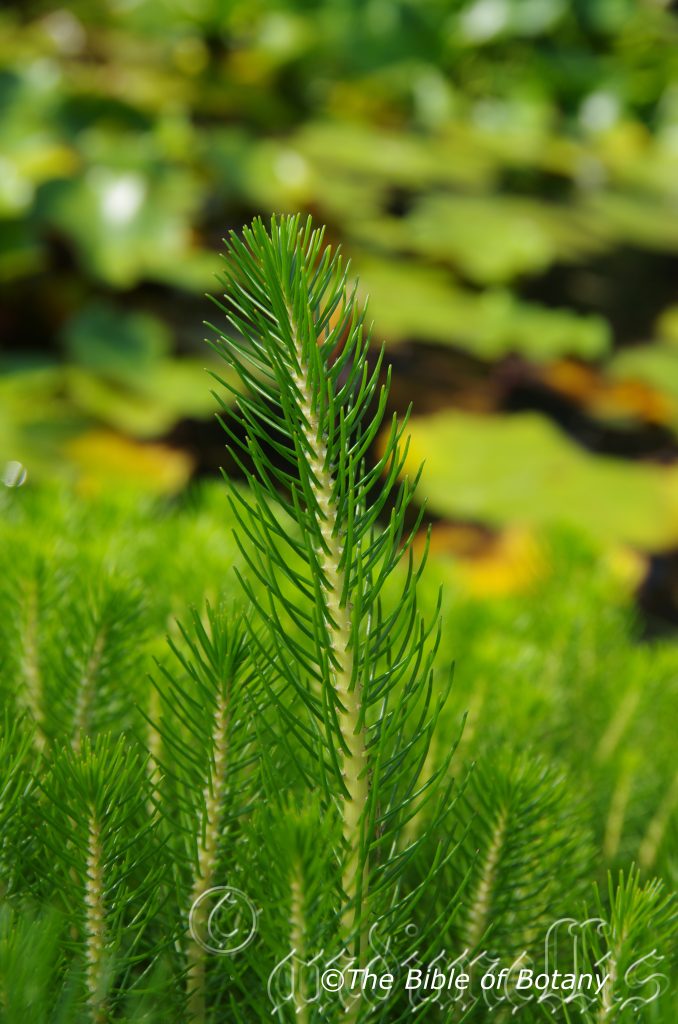
Mount Cootha Botanic Gardens Qld.
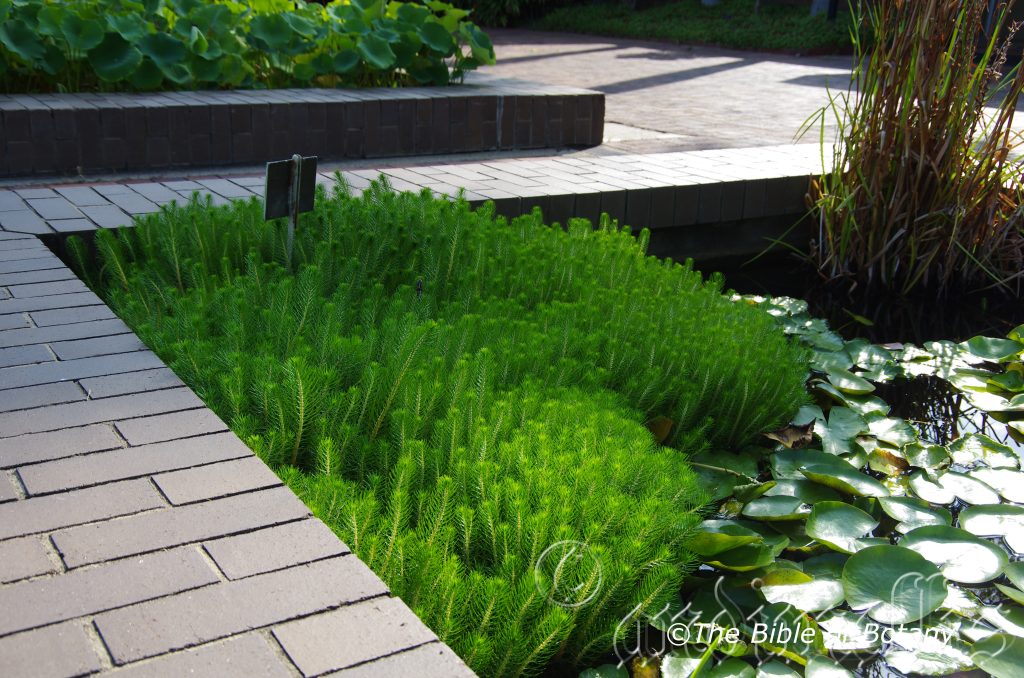
Mount Cootha Botanic Gardens Qld.
Myriophyllum papillosum
Classification:
Unranked: Eudicots
Unranked: Core Eudicots
Order: Saxifragales
Family: Haloragaceae
Genus: From Myrios, which is Greek/Latin for countless or very many (10,000) and Phullon/Phýllon, which is Ancient Greek for a leaf. It refers to leaves/leaflets or pinnules which are produced in abundant numbers along the stems or rachis.
Specie: From Papillōsum, which is Latin for having papillae, being papillose in that there are small lumps similar to around a nipple on the areolar. It refers to organs or structures, which have small protrusions similar to the bumps on an areolar.
Sub species:
Common Name:
Distribution:
Myriophyllum papillosum is found south from Shoalwater Bay in central coastal Queensland basically in a south, south west direction to Adelaide. It is mainly found on and west of the Great Dividing Range along the Murry darling River Basin.
https://avh.ala.org.au/occurrences/search?taxa=Myriophyllum+latifolium#tab_mapView
Habitat Aspect Climate:
Myriophyllum papillosum prefers light filtered sun to full sun. It grows in still water or on wet mud that is seasonally submerged. The altitude ranges from 5 meter ASL to 470 meters ASL.
The temperatures range from minus 6 degrees in August to 40 degrees in January.
The rainfall ranges from lows of 350mm to an average of 2100mm. The rainfall is not as important as the flow in the creeks maintaining a reasonable level.
Soil Requirements:
Myriophyllum papillosum prefers course sand, sandy loams to medium clays or fine to medium silts. The soils are usually derived from decomposed granites, sandstones, metamorphic rocks being laid down as alluvial silts. The soils pH ranges from 4.5pH to 6pH. It tolerates waterlogged soils preferring to grow in shallow water. Non saline soils to slightly saline soils are tolerated.
Height & Spread:
Wild Plants: 0.3m to 0.7m by 0.4m to 0.5m when in bloom.
Characteristics:
Myriophyllum papillosum is an erect slender, herbaceous, perennial aquatic or fully emergent plant. The reddish to reddish–yellow emergent stems are sparsely to densely covered in papillose lumps and measure 5mm to 6mm in diameter. The stems readily root from the nodes on fully emergent plants.
The emergent leaves are in whirls of 5 or 6. The linear leaves have numerous short teeth and measure 25mm to 45mm in length by 3mm to 4mm in width. The concolourous laminas are reddish-brown to grass-green glabrous and dull to semi glossy.
The inflorescences are monoecious. The male and female flowers on the same shoot and often in groups of 2 or 3 in from the axis.
The white male flowers are sessile, with lanceolate sepals and petals and measure 2.5mm to 3.5mm in length.
The flowers appear throughout the year but are more prevalent in warmer weather.
The female flowers very shortly pedicellate, without sepals and petals. The stigmas are deep reddish-purple to reddish-brown, while the green-purple to reddish-purple mericarps are narrowly ovoid, covered in course papillose lumps and measure 0.8mm to 1mm in length.
Wildlife:
Myriophyllum papillosum’s flowers are visited by several unidentified beetles. The plants are an important fish habitat and food resource for many ducks and waterfowl.
Cultivation:
Myriophyllum make excellent water plants for the fish or frog pond. It is also ideal as a bog plant where its base is submerged and it is allowed to emerge onto the surrounding ground.
This plant has a beautiful bright green colour for the indoor fish tank. Its fine leaves have a delicate almost plastic appearance. It will grow very rapidly in the aquariums that are at least 250mm in height. It requires medium to good light growing better in hard nutrient rich water than soft poor water. It requires a moderate level of light of 7 to 10 watts per 10 litres provided by full spectrum 5000-7000K lamps.
This makes it ideal for fish tanks and outdoor aquariums that have fish. It is an excellent oxygen carbon plant.
It is a rapid, dense foliage grower that is ideal for planting in the background of the aquarium to hide equipment. It is also ideal in hatcheries providing refuge for fish fry.
Propagation:
Seeds: Myriophyllum papillosum can be reproduced by transplanting rooted cuttings or older stems. Simply cut the plant at the height that you desire. Make sure the lower portion has some roots for rapid none interrupted growth. Strip the leaves from the bottom 50mm to 70mm section from the bottom and peg it down in the gravel or potting mix if in a larger outdoor pond. Cover the surface with pebbles to prevent clouding of the water. If allowed to grow out of the water flowers will be produced on the emergent sections.
Further Comments from Readers:
Hi reader, it seems you use The Bible of Botany a lot. That’s great as we have great pleasure in bringing it to you! It’s a little awkward for us to ask, but our first aim is to purchase land approximately 1,600 hectares to link several parcels of N.P. into one at The Pinnacles NSW Australia, but we need your help. We’re not salespeople. We’re amateur botanists who have dedicated over 30 years to saving the environment in a practical way. We depend on donations to reach our goal. If you donate just $5, the price of your coffee this Sunday, We can help to keep the planet alive in a real way and continue to bring you regular updates and features on Australian plants all in one Botanical Bible. Any support is greatly appreciated. Thank you.
In the spirit of reconciliation we acknowledge the Bundjalung, Gumbaynggirr and Yaegl and all aboriginal nations throughout Australia and their connections to land, sea and community. We pay our respect to their Elders past, present and future for the pleasures we have gained.
Myriophyllum variifolium
Classification:
Unranked: Eudicots
Unranked: Core Eudicots
Order: Saxifragales
Family: Haloragaceae
Genus: From Myrios, which is Greek/Latin for countless or very many (10,000) and Phullon/Phýllon, which is Ancient Greek for a leaf. It refers to leaves/leaflets or pinnules which are produced in abundant numbers along the stems or rachis.
Specie: From Varietas, which is Latin for variant or have a difference and Folium, which is Latin for foliage. It refers to leaves, which display great variation within the same species and at times on the same plant.
Sub species:
Common Name: Variable Milfoil
Distribution:
Myriophyllum variifolium is mainly found on the west side, on and east of the Great Dividing Range from Miriam Vale in central coastal Queensland to Cheltenham a south eastern Melbourne suburb. It is also found from in South Australia to near Lake George to Lake Cadnite, Yarrum, Warnambool and Portland in south western Victoria. It is also found sporadically along the Murray Darling River system.
In Tasmania it is found in an area bounded by the Break O’day River to Longford, The Pelion Plains and Safety Cove on Tasman Peninsula. Further west it is found at Hibbs Lagoon on the west coast and the Ouse River while in the north there is a population on the Tomahawk River.
https://avh.ala.org.au/occurrences/search?taxa=Myriophyllum+variifolium#tab_mapView
Habitat Aspect Climate:
Myriophyllum variifolium prefers light filtered sun to full sun. It grows in still or slow running water often in seasonal flowing stretches of creeks and streams. The altitude ranges from 2 meter ASL to 1750 meters ASL.
The temperatures range from minus 5 degrees in August to 40 degrees in January.
The rainfall ranges from lows of 150mm to an average of 2100mm. The rainfall is not as important as the flow in the creeks maintaining a reasonable level.
Soil Requirements:
Myriophyllum variifolium prefers to grow on course sand, sandy loams to medium clays or fine to medium silts. The soils are usually derived from decomposed granites and sandstones being laid down as alluvial deposits. The soils pH ranges from 5pH to 6.5pH. It tolerates waterlogged soils preferring to grow in shallow water. Non saline soils to moderately saline soils are tolerated.
Height & Spread:
Wild Plants: 0.3m to 0.5m by 0.4m to 0.5m when in bloom.
Characteristics:
It grows as an erect slender herbaceous aquatic or fully emergent perennial herb. The stems are reddish-green to olive-green or grass-green and semi glossy to glossy. It usually measure 4mm to 5mm in diameter. Fully emergent plants and those plants where the stems make contact with the ground root readily from the nodes.
The emergent leaves are usually in whirls of 5. The linear to terete leaves margins are entire or have a few short linear teeth when emergent with the teeth being more linear and more deeply divided from near the base when submerge. The leaves measure 8mm to 16mm in length by 0.8mm to 1.2mm in width while the lobes on the submerged plants measure 5mm to 10mm in length. The bases are joined directly onto the stems while the apexes are obtuse to broad acute or bluntly acute. The concolourous laminas are grass-green tinged maroon-red to deep grass-green with maroon-red or burgundy-red on the tips and margins, glabrous and semi glossy.
The inflorescences are usually monoecious. The male and female flowers are usually on the same shoots or rarely all female. The flowers are sessile and are born solitary from the leaf axils.
The sessile male flowers 4 circular to oblong sepals are caducous. The oblong cupular petals are yellow to reddish and measure 2mm to 3.5mm in length.
The female flowers are sessile. The sepals and petals are absent on this species. The pistils are white. The flowers appear throughout the year but are more prevalent in warmer weather.
The fruits are cylindrical mericarps. The green mericarps turn yellow-brown to pale reddish-brown. The mericarps are smooth and glabrous or are sparsely covered in minute papillose lumps. The mericarps measure 1.2mm to 1.8mm in length.
Wildlife:
Myriophyllum variifolium’s flowers are visited by several unidentified beetles. The plants are an important fish habitat and food resource for many ducks and waterfowl.
Cultivation:
Myriophyllum variifolium make good water plants for the fish or frog pond. It is also ideal as a bog plant where its base is submerged and it is allowed to emerge onto the surrounding ground.
It is a good oxygen carbon plant for outdoor ponds.
The Myriophyllum latifolium is a rapid, dense foliage grower that is ideal for planting in the background of the aquarium to hide equipment. It is also ideal in hatcheries providing refuge for fish fry.
Propagation:
Seeds: Myriophyllum variifolium can be reproduced by transplanting rooted cuttings. Simply cut the plant at the height that you desire. Make sure the lower portion has some roots for rapid none interrupted growth. Strip the leaves from the bottom 50mm to 70mm section from the bottom and peg it down in the gravel or potting mix if in a larger outdoor pond. Cover the surface with pebbles to prevent clouding of the water. If allowed to grow out of the water flowers will be produced on the emergent sections.
Further Comments from Readers:
Hi reader, it seems you use The Bible of Botany a lot. That’s great as we have great pleasure in bringing it to you! It’s a little awkward for us to ask, but our first aim is to purchase land approximately 1,600 hectares to link several parcels of N.P. into one at The Pinnacles NSW Australia, but we need your help. We’re not salespeople. We’re amateur botanists who have dedicated over 30 years to saving the environment in a practical way. We depend on donations to reach our goal. If you donate just $5, the price of your coffee this Sunday, We can help to keep the planet alive in a real way and continue to bring you regular updates and features on Australian plants all in one Botanical Bible. Any support is greatly appreciated. Thank you.
If you donate just $5, the price of your coffee this Sunday, We can help to keep the planet alive in a real way and continue to bring you regular updates and features on Australian plants all in one Botanical Bible.
Myriophyllum verrucosum
Classification:
Unranked: Eudicots
Unranked: Core Eudicots
Order: Saxifragales
Family: Haloragaceae
Genus: From Myrios, which is Greek/Latin for countless or very many (10,000) and Phullon/Phýllon, which is Ancient Greek for a leaf. It refers to leaves/leaflets or pinnules which are produced in abundant numbers along the stems or rachis.
Specie: From Verracose, which is Latin for warty or ulcerated lumps. It refers to structures or organs, which have swellings or enlargements on the surface.
Sub species:
Common Name: Red Water Milfoil
Distribution:
Myriophyllum verrucosum is the most widespread of the Australian Milfoils growing across Australian in all the mainland states in all areas except the true deserts of Western Australia and South Australia. It is not as common in the warmer waters or the tropics.
https://avh.ala.org.au/occurrences/search?taxa=Myriophyllum+verrucosum#tab_mapView
Habitat Aspect Climate:
Myriophyllum verrucosum prefers light filtered sun to full sun. It grows in still or slow running water often in seasonal flowing stretches of creeks and streams, in deeper billabongs and lakes or on wet bogs associated with periodic flooding or seasonal inundations. The altitude ranges from 5 meter ASL to 1250 meters ASL.
The temperatures range from minus 3 degrees in August to 42 degrees in January.
The rainfall ranges from lows of 150mm to an average of 2100mm. The rainfall is not as important as the flow in the creeks maintaining a reasonable level.
Soil Requirements:
Myriophyllum verrucosum prefers to grow on course sand, sandy loams to medium clays or fine to medium silts. The soils are usually derived from decomposed granites, sandstones, brown basalts, black basalts, shales, metamorphic rocks often being laid down as alluvial deposits. The soils pH ranges from 4.5pH to 7.5pH. It tolerates waterlogged soils preferring to grow in shallow water. Non saline soils to very saline soils are tolerated.
Height & Spread:
Wild Plants: 0.1m to 1.5m by 0.2m to 1.5m when in bloom.
Characteristics:
Myriophyllum verrucosum is an erect slender herbaceous perennial aquatic or fully emergent plant. The stems are creamy to pastel green or pale green with a pale pink tinge and semi glossy to glossy. The stems usually measure 1mm to 2mm in diameter. Fully emergent plants and those plants where the stems make contact with the ground root readily from the lower nodes.
The emergent leaves are usually in whirls of 3 or 4.The lanceolate to ovate leaves are deeply pinnatifid to almost entire. The emergent leaves measure 3mm to 10mm in length by 2mm to 3mm in width. The submerged leaves are pinnatifid with deep linear lobes and measure 10mm to 18mm in length by 6mm to 15mm in width. The bases are joined directly onto the stems while the apexes are obtuse to broad acute or bluntly acute. The concolourous laminas are mid green, glaucous-green or reddish-purple, glabrous and dull.
The inflorescences are usually monoecious with a few bisexual flowers mixed in on the same shoots. The male and female flowers are sessile and are born solitary from the leaf axils.
The male flowers 4 triangular sepals are caducous. The oblong cupular petals are yellow and measure 1.5mm to 2.5mm in length. The female sepals and petals are minute and caducous. The pistils are white. The flowers appear throughout the year but are more prevalent in warmer weather.
The fruits are obloidal mericarps. The green mericarps turn yellow-fawn, reddish or greyish. The mericarps usually have 2 ridges and are sparsely to moderately covered in obscure and prominent farinaceous lumps. The mericarps measure 1mm to 1.2mm in length.
Wildlife:
Myriophyllum verrucosum’s flowers are visited by several unidentified beetles. The plants are an important fish habitat and food resource for many ducks and waterfowl.
Cultivation:
Myriophyllum verrucosum make good water plants for the fish or frog pond. It is also ideal as a bog plant where its base is submerged and it is allowed to emerge onto the surrounding ground.
It is a good oxygen carbon plant for outdoor ponds.
The Myriophyllum verrucosum is a rapid, dense foliage grower that is ideal for planting in the background of the aquarium to hide equipment. It is also ideal in hatcheries providing refuge for fish fry.
Propagation:
Seeds: Myriophyllum verrucosum can be reproduced by transplanting rooted cuttings. Simply cut the plant at the height that you desire. Make sure the lower portion has some roots for rapid none interrupted growth. Strip the leaves from the bottom 50mm to 70mm section from the bottom and peg it down in the gravel or potting mix if in a larger outdoor pond. Cover the surface with pebbles to prevent clouding of the water. If allowed to grow out of the water flowers will be produced on the emergent sections.
Further Comments from Readers:
Hi reader, it seems you use The Bible of Botany a lot. That’s great as we have great pleasure in bringing it to you! It’s a little awkward for us to ask, but our first aim is to purchase land approximately 1,600 hectares to link several parcels of N.P. into one at The Pinnacles NSW Australia, but we need your help. We’re not salespeople. We’re amateur botanists who have dedicated over 30 years to saving the environment in a practical way. We depend on donations to reach our goal. If you donate just $5, the price of your coffee this Sunday, We can help to keep the planet alive in a real way and continue to bring you regular updates and features on Australian plants all in one Botanical Bible. Any support is greatly appreciated. Thank you.
In the spirit of reconciliation we acknowledge the Bundjalung, Gumbaynggirr and Yaegl and all aboriginal nations throughout Australia and their connections to land, sea and community. We pay our respect to their Elders past, present and future for the pleasures we have gained.
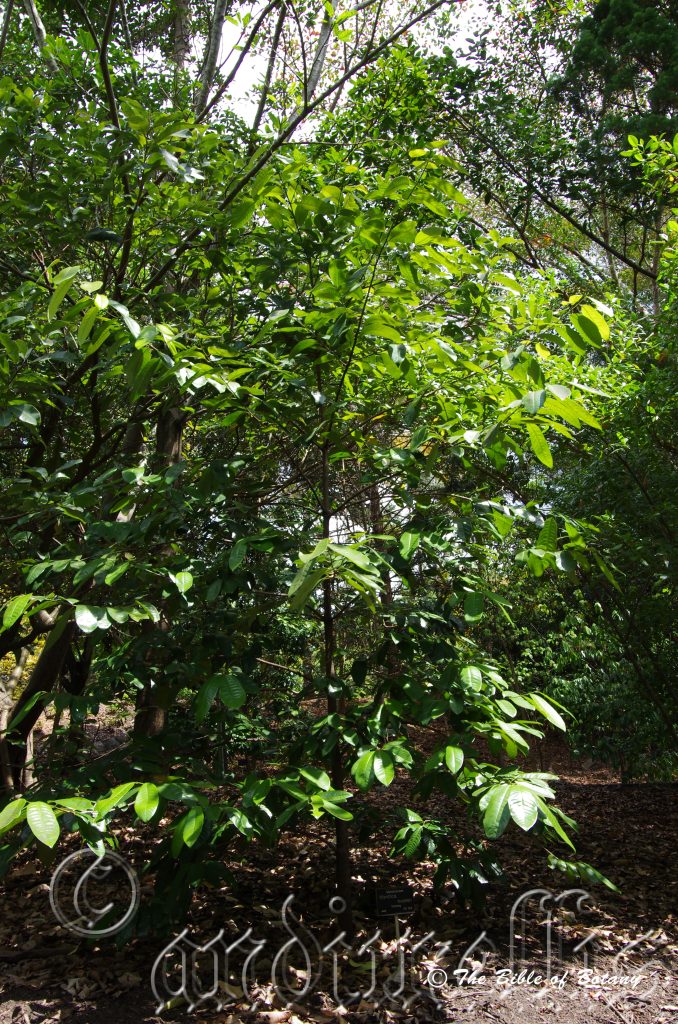
Mount Cootha Botanical Gardens Qld.
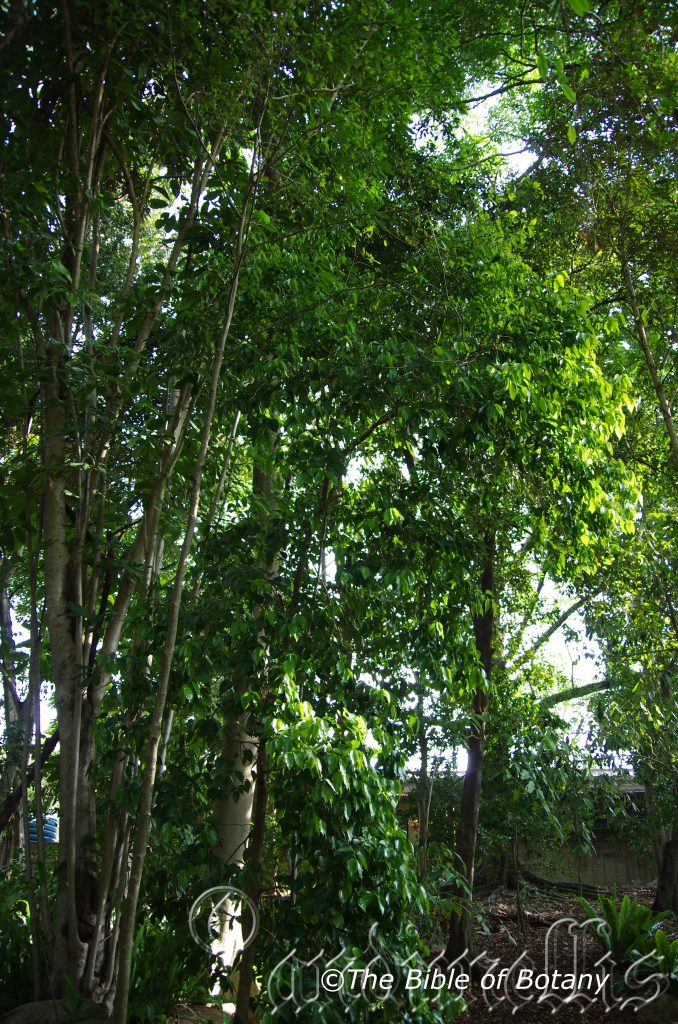
Mount Cootha Botanical Gardens Qld.
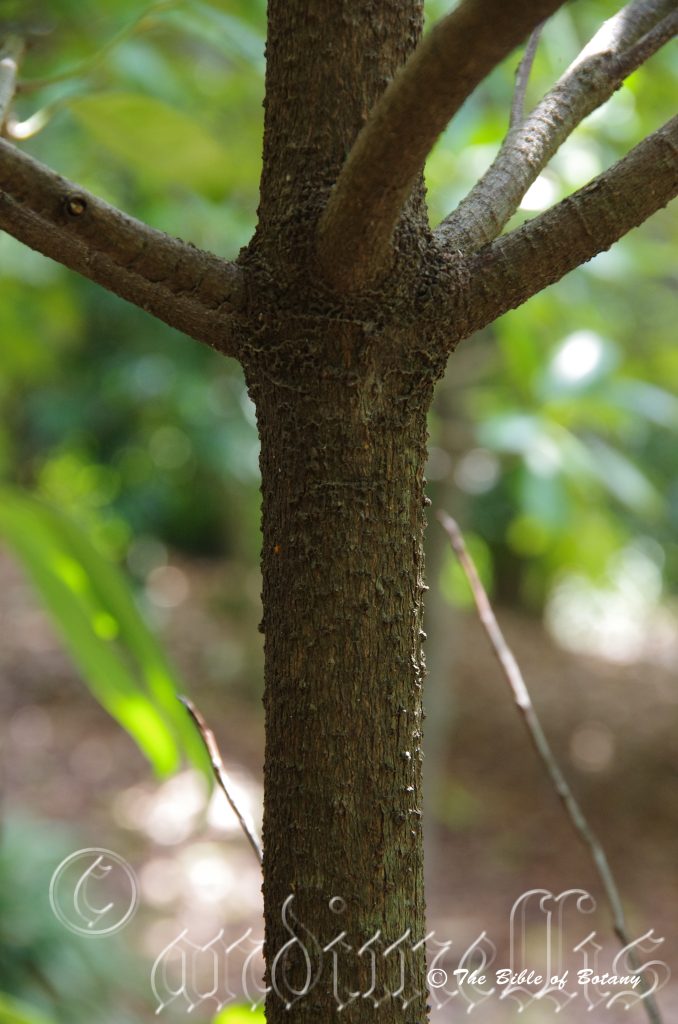
Mount Cootha Botanical Gardens Qld.
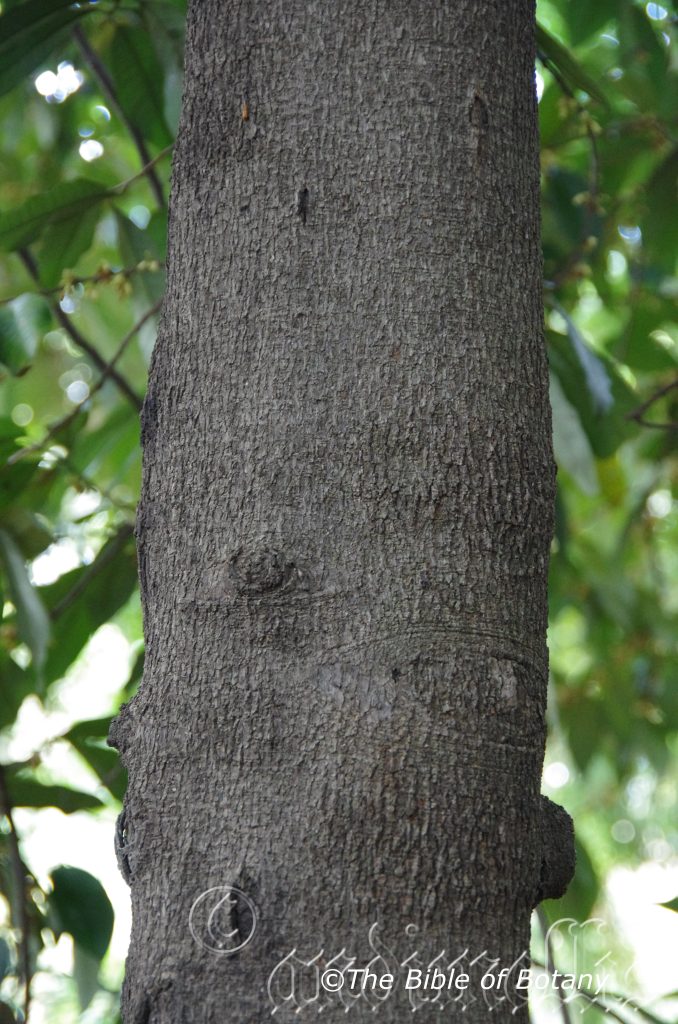
Mount Cootha Botanical Gardens Qld.
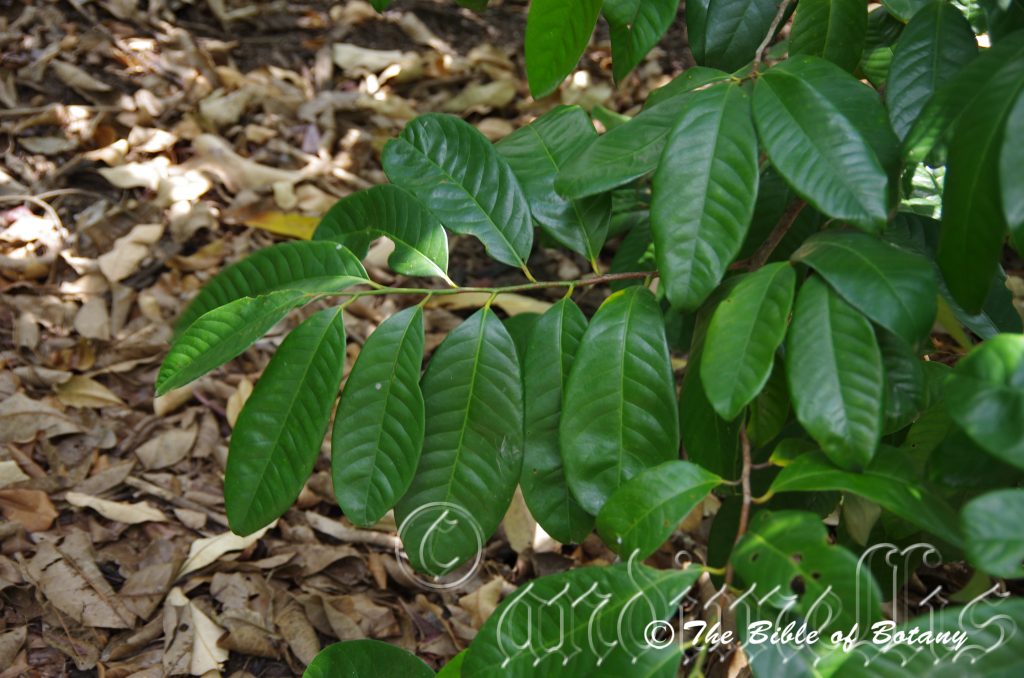
Mount Cootha Botanical Gardens Qld.
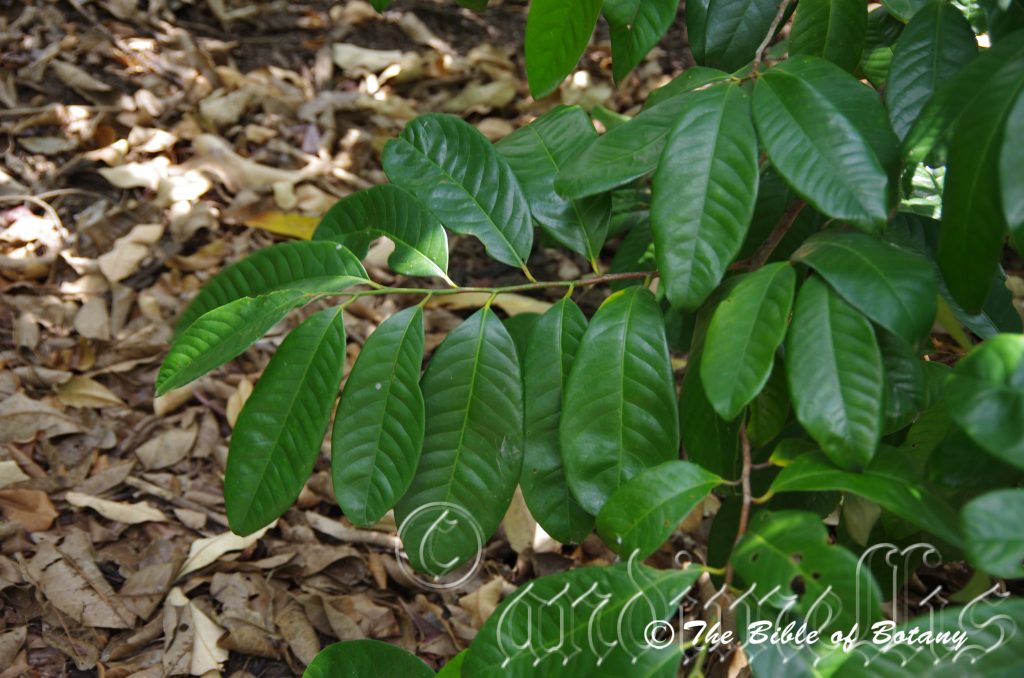
Mount Cootha Botanical Gardens Qld.
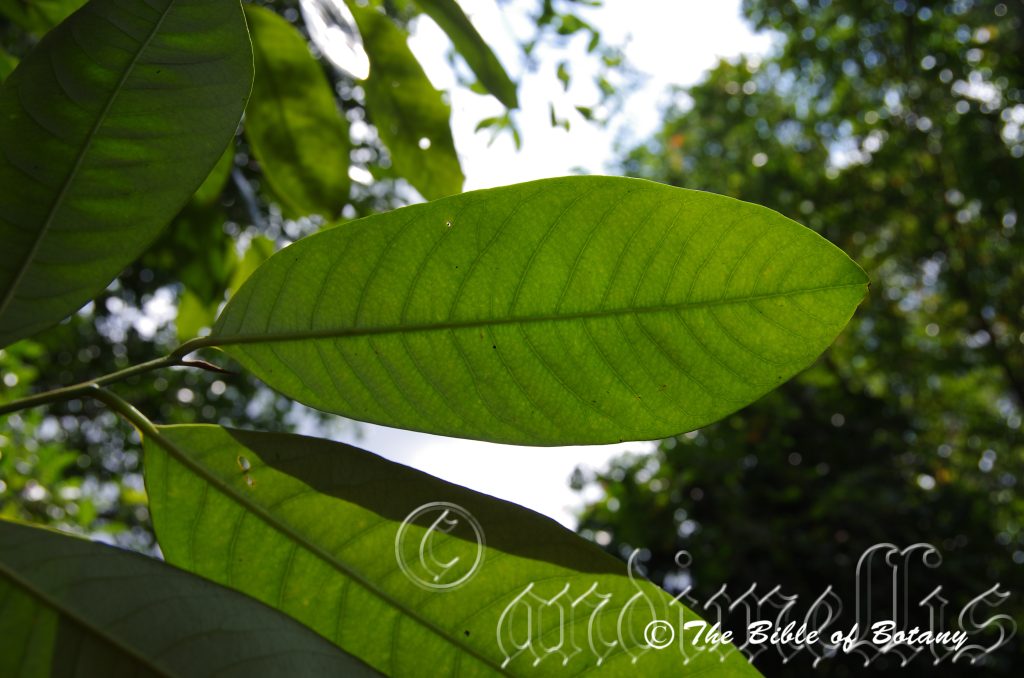
Mount Cootha Botanical Gardens Qld.
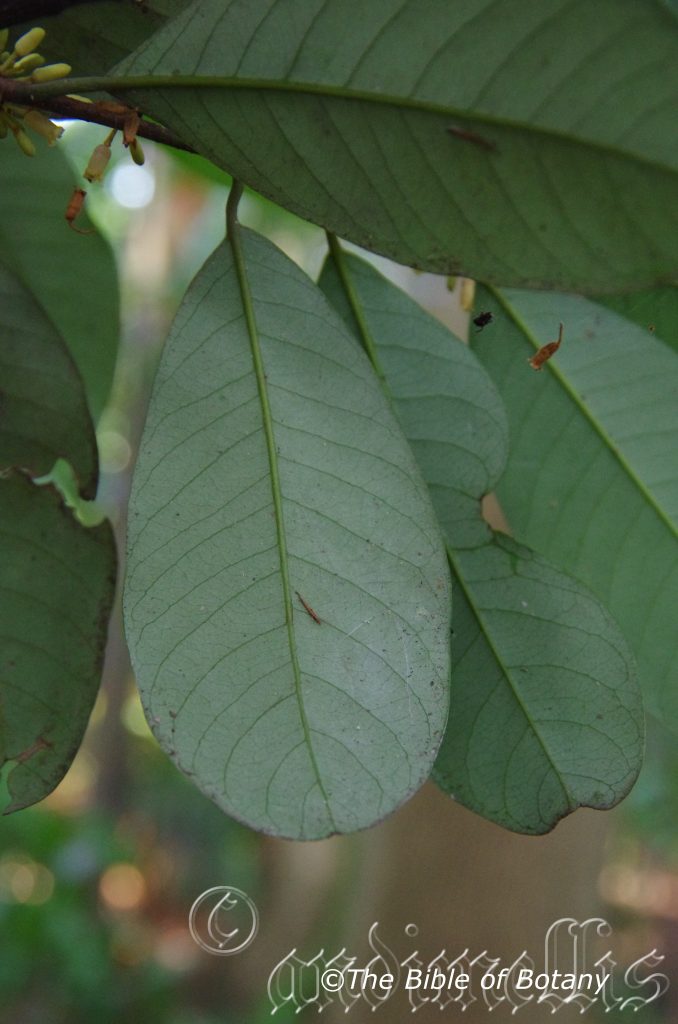
Mount Cootha Botanical Gardens Qld.
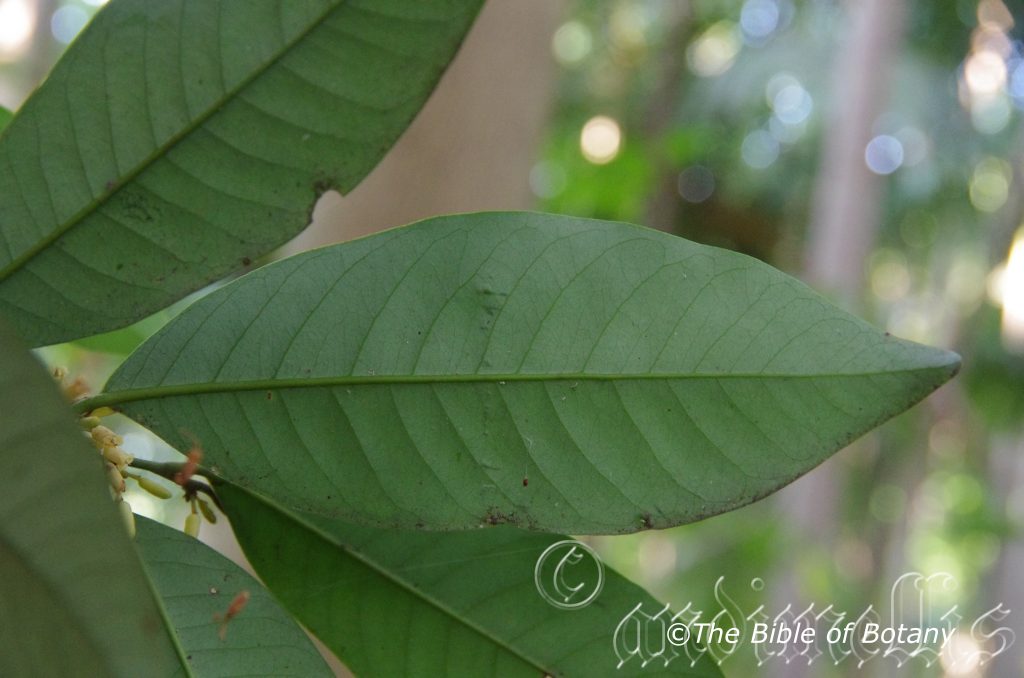
Mount Cootha Botanical Gardens Qld.
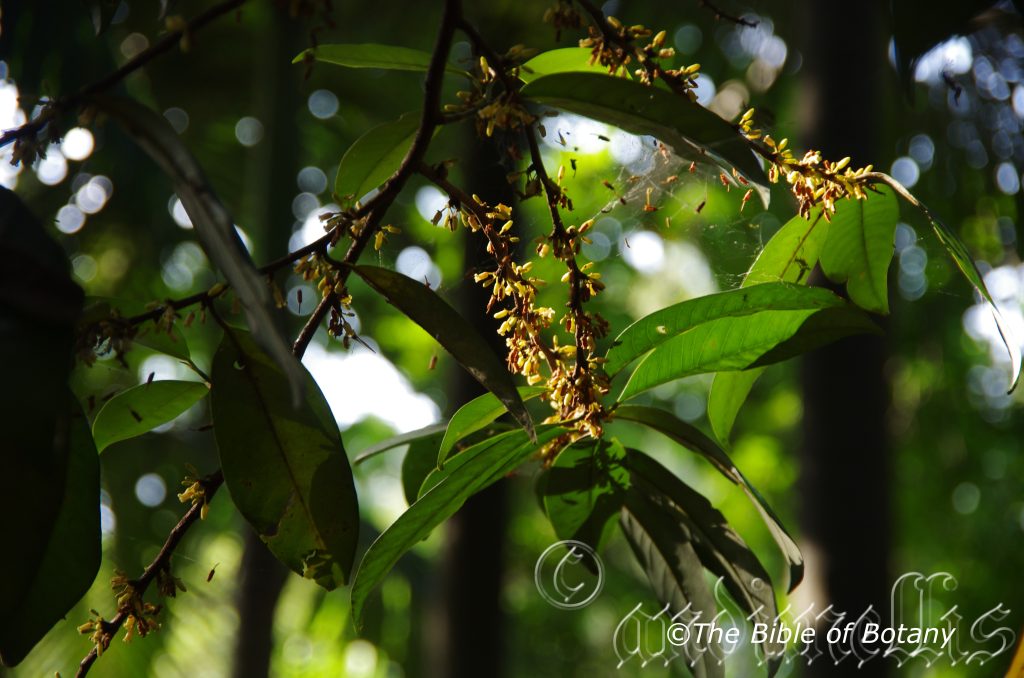
Mount Cootha Botanical Gardens Qld.
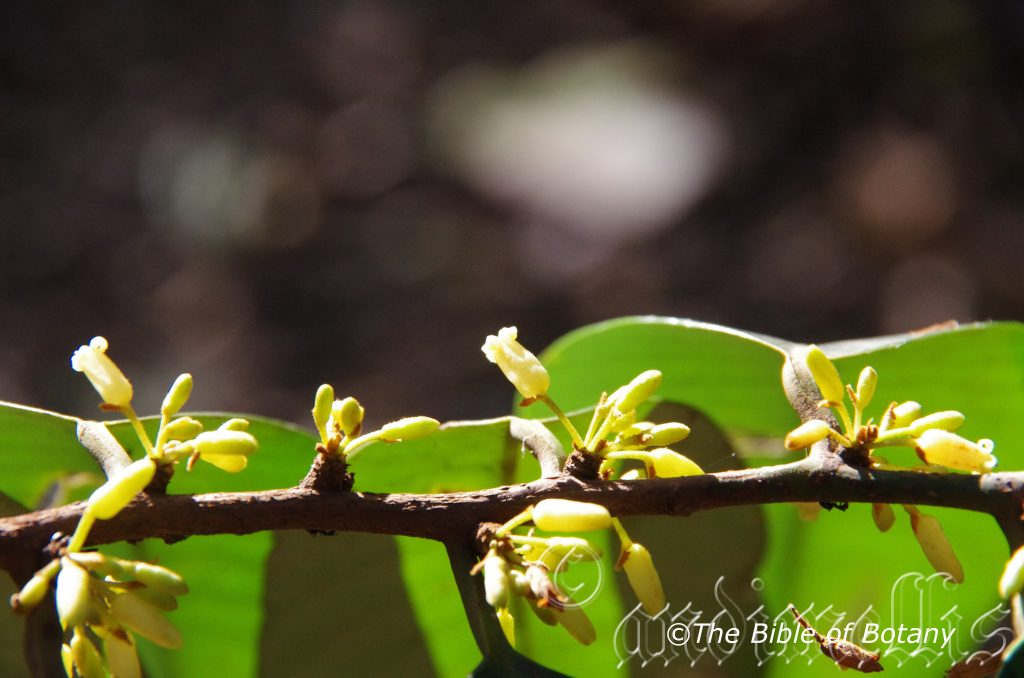
Mount Cootha Botanical Gardens Qld.
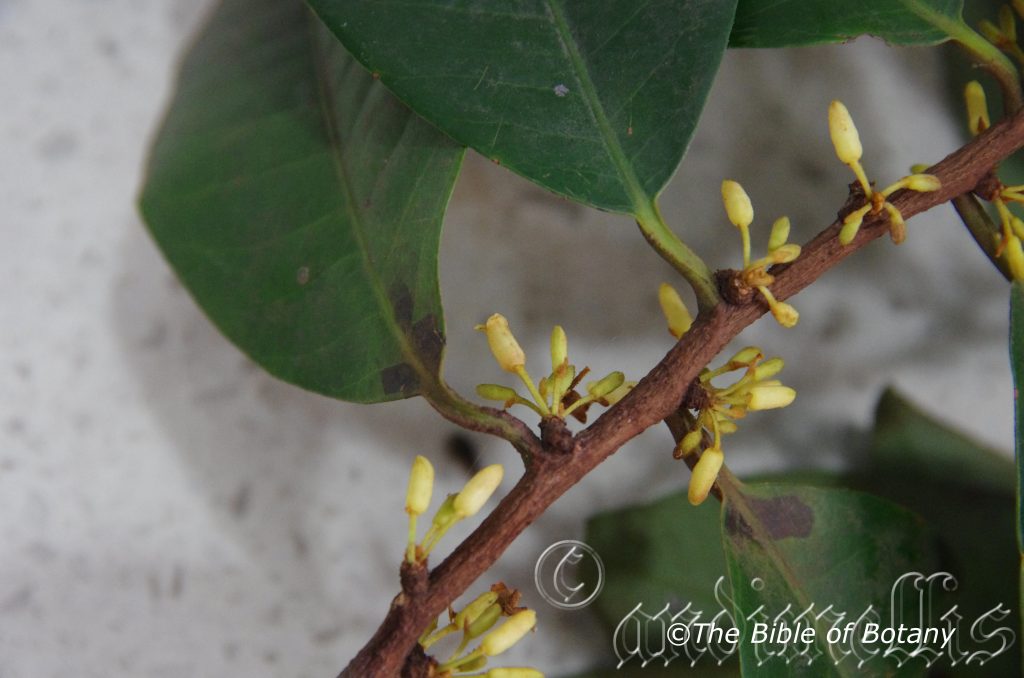
Mount Cootha Botanical Gardens Qld.
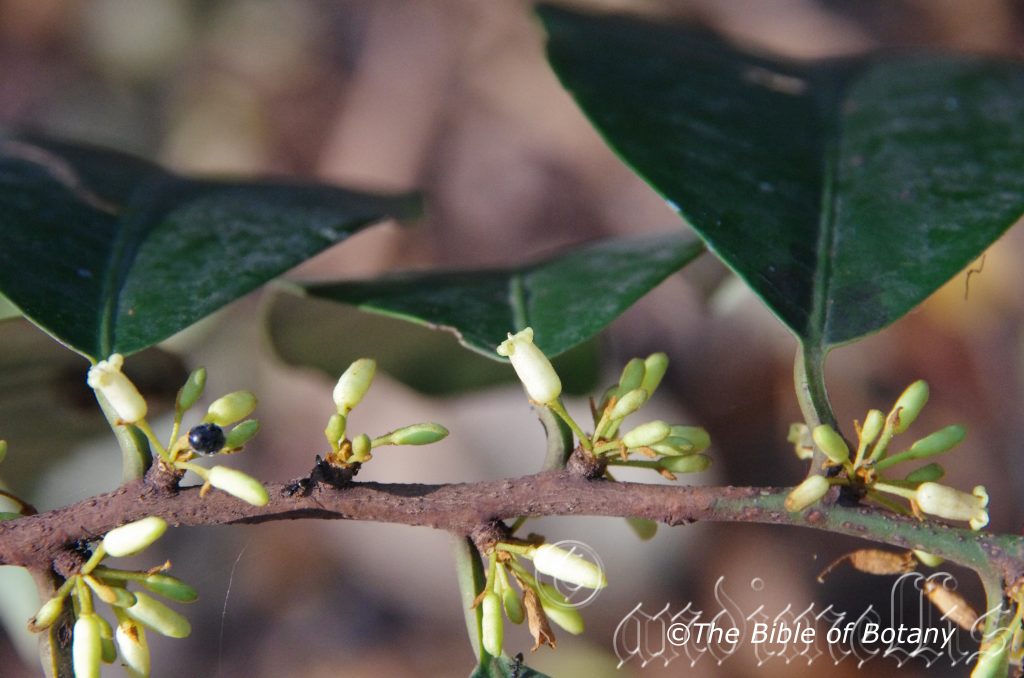
Mount Cootha Botanical Gardens Qld.
Myristica globosa
Classification:
Unranked: Magnoliids
Order: Magnoliales
Family: Myristicaceae
Genus: From Myrizo, which is Ancient Greek for to rub and Myron, which is Ancient Greek for a balsamic oil. It refers to a warming liniment, which is made from the oil.
Specie: From Globose, which is Latin for a globe shape. It usually refers to fruits, which are shaped like a globe.
Sub specie: Myristica globosa subsp. muelleri. Is named in honour of Ferdinand Von Mueller; 1825-1896, who was a German born Australian Botanist who named over 2000 new species and was director of the Melbourne Botanic Gardens. It is the only sub species found in Australia.
Common Name: Queensland Nutmeg or Native Nutmeg.
Distribution:
Myristica globosa is found from the tip of Cape York Peninsula to Mount Barker Peninsula in central Coastal Queensland.
It is also found in New Guinee and Bougainville Island.
https://avh.ala.org.au/occurrences/search?taxa=Myristica+globosa#tab_mapView
Habitat Aspect Climate:
Myristica globosa prefer light dappled shade to full sun. It grows in spaces created in well-developed tropical rainforests, warm sub-tropical rainforests littoral rainforests and monsoonal rainforests. The altitude ranges from 10 meter ASL to 1000 meters ASL.
The temperatures range from 8 degrees in August to 40 degrees in January.
The rainfall ranges from lows of 1250mm to an average of 3200mm.
Soil Requirements:
Myristica globosa prefer to grow on fertile sandy loams to medium clays and screes. The soils are usually derived from decomposed granites, sandstones, brown basalts or black basalts. The soils pH ranges from 4.5pH to 6pH. It does not tolerate waterlogged soils. Non saline soils to moderately saline soils are tolerated.
Height & Spread:
Wild Plants: 8m to 30m by 4m to 15m.
Characteristics:
Myristica globosa’s main trunk is deep grey to deep grey-brown, scabrous to rough and with pustules. The bole of the trunk is about a half the height on a mature tree. Branches and stems arise at almost right angles before growing out at 70 to 75 degrees. The young stems are brown then deep green and finally a mid-green near the apex. The terminal shoots are covered in short rusty-brown pannate hairs. The trunk and larger branches are often mottled in green and blue greens of mosses and lichens which will grow there. The trunk is slightly fluted close to the base on mature trees.
Myristica globosa’s simple adjacent leaves are elliptical-oblong to oblong-lanceolate and measure 110mm to 205mm in length by 70mm to 100mm in width. The base is rounded while the apex is broadly accuminate. The discolourous laminas are mid grass-green to a deep grass-green, glossy and glabrous. The lower lamina is glaucous to white. The immature leaves and newly emerging leaves are pale grass green, glossy and covered in short rusty-brown pannate hairs. The margins are entire and flat or curves slightly upwards from the mid vein. The mid vein and lateral veins are prominent on the lower lamina while only the mid vein is visible on the upper lamina. The petioles are covered in short rusty-brown pannate hairs. The petioles are channelled on the upper surface and measure 8mm to 15mm in length.
Myristica globosa trees are dioecious with male trees producing about three times the number of flowers as female trees. The inflorescence of Myristica insipida are born in groups of up to 5 for male flowers and 3 for female flowers. It is born from axillary fascicles in the case of male flowers or on short woody fascicles in the case of female flowers. Both male and female flowers are sessile or on short pedunculates which measure 1.5mm to 3mm in length.
The calyx tubes on the male flowers measure 4mm to 4.5mm in length. The outer surface is densely covered in short rusty-golden pannate hairs near the base. The lobes measure 1.5mm to 2mm in length. The pale yellow to yellow androphore stamens; meaning it is united at the base to form a column or tube, are sparsely covered in short rusty-golden hairs near base and are glabrous on the remainder. The stamens are attached to the calyx tube.
The female flowers are born on short pedicles measuring 0.5mm to 1.5mm in length. The urn shaped calyx tube measures 3.8mm to 4.2mm in length by 3mm to 3.5mm in width at the widest point. The lobes measure 1.5mm to 2mm in length in length. The flowers are densely covered in short rusty-brown tomentose hairs. The sweet scent of the flowers will linger over a wide area. The flowers appear in February or April or August.
Myristica globosa’s fruit is a large ovoidal capsule. The creamy green capsules turn rusty brown when ripe. They measure 30mm to 50mm in length by 20mm to 27mm in diameter. There is a distinct line on the outer capsule where the dehiscing takes place. The capsule splits down one side to reveal white flesh which stays attached to the capsule. The deep brown glossy seed is surrounded by bright red, deeply lacinated aril (mesh or net like). The ovoid to ellipsoidal seeds are deep brown, glabrous, glossy and measures 15mm to 25mm in length by 10mm to 20mm in diameter.
The pedicle measures 0.5mm to 15mm in length.
Wildlife:
Myristica globosa’s flowers are visited by many different species of butterflies plus beetles, wasps and native bees. The main pollinators are a diverse range of small pollen attracted beetles. The beetles are attracted to the flowers by the sweet scent resembling that of the female beetles. Unusual is the fact that the trees attract the beetles for different periods and for different lengths of time. First the male trees attract the beetles and then the female trees will attractant increases while on the male trees the perfume dwains. The seeds are distributed by Cassowary (Casuarius casuarius) eating the fruits. The fruits are also eaten by Musky Rat kangaroo, Victoria’s Rifle bird and all of the fruit eating pigeons.
Cultivation:
Myristica globosa makes an excellent medium to large tree where there is filtered light or a tall straight tree in dense shade. They always look green and fresh especially where adequate ground moisture is retained in the soil. It is very suitable on medium clays to heavy clay soils provided there is plenty of mulch available at all times. It is most suitable for larger medium to large gardens or parks close to the coast in warm temperate, warm sub-tropical or tropical gardens. I know of some magnificent trees growing in Mount Isa so semi-arid areas with additional watering will see the trees develop and maintain their dense foliage down to the ground. As garden subjects they will grow from 12 meters to 15 meters in height by 10 meters to 12 meters in diameter when grown in the open.
It is cold tolerant to temperatures as low as 1 degree once established.
They can be used as a rainforest trees but will need plenty of mulch and additional watering in drier localities. On the edge of a forest or in a park they will develop into a large well rounded shade tree.
Placed on the edge of a rainforest garden they will develop quickly. The trees are suitable for all orchids and epiphytic ferns especially those that prefer darker conditions like Pyrossia rupestre, Pyrossia longifolia and Asplenium sp. or the climbing Microsorum scandens. In a rainforest situation they will also support many different varieties of lichens and mosses.
It is excellent when used as shade trees in semi protected areas. Strong winds can cause limbs to break but planting in groups or with other trees can alleviate this problem. It is an excellent tree for starting a rainforest garden and are often found recolonizing cleared rainforests in the natural habitat.
It is best used as a small park tree, placed in the background or planted centrally as a small feature tree in medium size gardens. Placed at the rear of a bush garden their striking foliage display and perfume will draw your attention so that you will want to investigate further. Plants with small white, pink or lavender flowers and large or fine leaves can be used in the midground while small white, pink or mauve flowering prostrate shrubs are best in the front. Whether it is in flower or not these trees will catch your attention because of the pale green glossy foliage.
Another idea is to plant small or prostrate Acacias in the foreground mixed with red flowering Grevillea. In fact they would be a very strong complementary contrast if the prostrate or smaller Acacias were to flower in a different season as you do not want the different perfumes to clash.
Propagation:
Seeds: Myristica globosa seeds need to be sown into a deep seed raising mix following the nicking of the testa. Cover the seeds with 10mm to 15mm of fine weed free mulch and keep moist. Place the tray in a warm to hot shady position. When the seedlings are 50mm to 70mm tall, prick them out and plant them into 60mm native tubes using a good organic mix. Alternatively they can be sown directly into the 60mm tubes.
Once the seedlings reach 200mm to 250mm in height they can be planted out into their permanent position.
Fertilize using seaweed, fish emulsion or organic chicken pellets soaked in water on an alternate basis. Fertilize every month until the female flower buds start to subside in autumn to maintain better health, vitality, flowering and fruit.
Further Comments from Readers:
Hi reader, it seems you use The Bible of Botany a lot. That’s great as we have great pleasure in bringing it to you! It’s a little awkward for us to ask, but our first aim is to purchase land approximately 1,600 hectares to link several parcels of N.P. into one at The Pinnacles NSW Australia, but we need your help. We’re not salespeople. We’re amateur botanists who have dedicated over 30 years to saving the environment in a practical way. We depend on donations to reach our goal. If you donate just $5, the price of your coffee this Sunday, We can help to keep the planet alive in a real way and continue to bring you regular updates and features on Australian plants all in one Botanical Bible. Any support is greatly appreciated. Thank you.
In the spirit of reconciliation we acknowledge the Bundjalung, Gumbaynggirr and Yaegl and all aboriginal nations throughout Australia and their connections to land, sea and community. We pay our respect to their Elders past, present and future for the pleasures we have gained.
Myristica insipida
Classification:
Unranked: Magnoliids
Order: Magnoliales
Family: Myristicaceae
Genus: From Myrizo, which is Ancient Greek for to rub and Myron, which is Ancient Greek for a balsamic oil. It refers to a warming liniment, which is made from the oil.
Specie: From In, which is Latin for in, into or ante and Sapida, which is Latin for without distinction or bland. It refers to the taste of the fruits, which are rather bland or having very little flavour.
Variety: Myristica insipida var. cimicifera. From Cimex/Cimiicis, which is Latin for a bed bug and Ferae/Ferārum which is Latin for to bear or bearing. It refers to the plants, which resemble the Cimicina genus in that they were used to help control bed bugs overseas. I have included it here as some reference books still claim it to be a separate variety whereas the latest research includes it as a synonym of Myristica insipida var. insipida
Variety: Myristica insipida var. insipida. From In, which is Latin for in, into or ante and Sapida, which is Latin for without distinction or bland. It refers to the taste of the fruits, which are rather bland or having very little flavour.
Common Name: Queensland Nutmeg or Native Nutmeg.
Distribution:
Myristica insipida var. cimicifera is found south from all the Torres Strait Islands to Hinchinbrook Island in far north Queensland. It is found east of the Great Dividing Range.
Myristica insipida var. insipida is found south from all the Torres Strait Islands to Hinchinbrook Island in far north Queensland. It is found east of the Great Dividing Range.
https://avh.ala.org.au/occurrences/search?taxa=Myristica+in sipida#tab_mapView
Habitat Aspect Climate:
Myristica insipida prefer light dappled shade to full sun. It grows in spaces created in well-developed tropical rainforests, warm sub-tropical rainforests littoral rainforests and monsoonal rainforests. The altitude ranges from 10 meter ASL to 1000 meters ASL.
The temperatures range from 8 degrees in August to 40 degrees in January.
The rainfall ranges from lows of 1250mm to an average of 3200mm.
Soil Requirements:
Myristica insipida prefer to grow on fertile sandy loams to medium clays and screes. The soils are usually derived from decomposed granites, sandstones, brown basalts or black basalts. The soils pH ranges from 4.5pH to 6pH. It does not tolerate waterlogged soils. Non saline soils to moderately saline soils are tolerated.
Height & Spread:
Wild Plants: 8m to 30m by 4m to 15m.
Characteristics:
Myristica insipida’s main trunk is deep grey to deep grey-brown, scabrous to rough and with pustules. The bole of the trunk is about a half the height on a mature tree. Branches and stems arise at almost right angles before growing out at 70 to 75 degrees. The young stems are brown then deep green and finally a mid-green near the apex. The terminal shoots are covered in short rusty-brown pannate hairs. The trunk and larger branches are often mottled in green and blue greens of mosses and lichens which will grow there. The trunk is slightly fluted close to the base on mature trees.
Myristica insipida’s simple adjacent leaves are elliptical-oblong to oblong-lanceolate and measure 110mm to 205mm in length by 70mm to 100mm in width. The base is rounded while the apex is broadly accuminate. The discolourous laminas are mid grass-green to a deep grass-green, glossy and glabrous. The lower lamina is glaucous to white. The immature leaves and newly emerging leaves are pale grass green, glossy and covered in short rusty-brown pannate hairs. The margins are entire and flat or curves slightly upwards from the mid vein. The mid vein and lateral veins are prominent on the lower lamina while only the mid vein is visible on the upper lamina. The petioles are covered in short rusty-brown pannate hairs. The petioles are channelled on the upper surface and measure 8mm to 15mm in length.
Myristica insipid trees are dioecious with male trees producing about three times the number of flowers as female trees. The inflorescence of Myristica insipida are born in groups of up to 5 for male flowers and 3 for female flowers. It is born from axillary fascicles in the case of male flowers or on short woody fascicles in the case of female flowers. Both male and female flowers are sessile or on short pedunculates which measure 1.5mm to 3mm in length.
The calyx tubes on the male flowers measure 4mm to 4.5mm in length. The outer surface is densely covered in short rusty-golden pannate hairs near the base. The lobes measure 1.5mm to 2mm in length. The pale yellow to yellow androphore stamens; meaning it is united at the base to form a column or tube, are sparsely covered in short rusty-golden hairs near base and are glabrous on the remainder. The stamens are attached to the calyx tube.
The female flowers are born on short pedicles measuring 0.5mm to 1.5mm in length. The urn shaped calyx tube measures 3.8mm to 4.2mm in length by 3mm to 3.5mm in width at the widest point. The lobes measure 1.5mm to 2mm in length in length. The flowers are densely covered in short rusty-brown tomentose hairs. The sweet scent of the flowers will linger over a wide area. The flowers appear in February or April or August.
Myristica insipida’s fruit is a large ovoidal capsule. The creamy green capsules turn rusty brown when ripe. They measure 30mm to 50mm in length by 20mm to 27mm in diameter. There is a distinct line on the outer capsule where the dehiscing takes place. The capsule splits down one side to reveal white flesh which stays attached to the capsule. The deep brown glossy seed is surrounded by bright red, deeply lacinated aril (mesh or net like). The ovoid to ellipsoidal seeds are deep brown, glabrous, glossy and measures 15mm to 25mm in length by 10mm to 20mm in diameter.
The pedicle measures 0.5mm to 15mm in length.
Wildlife:
Myristica insipida’s flowers are visited by many different species of butterflies plus beetles, wasps and native bees. The main pollinators are a diverse range of small pollen attracted beetles. The beetles are attracted to the flowers by the sweet scent resembling that of the female beetles. Unusual is the fact that the trees attract the beetles for different periods and for different lengths of time. First the male trees attract the beetles and then the female trees will attractant increases while on the male trees the perfume dwains. The seeds are distributed by Cassowary (Casuarius casuarius) eating the fruits. The fruits are also eaten by Musky Rat kangaroo, Victoria’s Rifle bird and all of the fruit eating pigeons.
Cultivation:
Myristica insipida makes an excellent medium to large tree where there is filtered light or a tall straight tree in dense shade. They always look green and fresh especially where adequate ground moisture is retained in the soil. It is very suitable on medium clays to heavy clay soils provided there is plenty of mulch available at all times. It is most suitable for larger medium to large gardens or parks close to the coast in warm temperate, warm sub-tropical or tropical gardens. I know of some magnificent trees growing in Mount Isa so semi-arid areas with additional watering will see the trees develop and maintain their dense foliage down to the ground. As garden subjects they will grow from 12 meters to 15 meters in height by 10 meters to 12 meters in diameter when grown in the open.
It is cold tolerant to temperatures as low as 1 degree once established.
They can be used as a rainforest trees but will need plenty of mulch and additional watering in drier localities. On the edge of a forest or in a park they will develop into a large well rounded shade tree.
Placed on the edge of a rainforest garden they will develop quickly. The trees are suitable for all orchids and epiphytic ferns especially those that prefer darker conditions like Pyrossia rupestre, Pyrossia longifolia and Asplenium sp. or the climbing Microsorum scandens. In a rainforest situation they will also support many different varieties of lichens and mosses.
It is excellent when used as shade trees in semi protected areas. Strong winds can cause limbs to break but planting in groups or with other trees can alleviate this problem. It is an excellent tree for starting a rainforest garden and are often found recolonizing cleared rainforests in the natural habitat.
It is best used as a small park tree, placed in the background or planted centrally as a small feature tree in medium size gardens. Placed at the rear of a bush garden their striking foliage display and perfume will draw your attention so that you will want to investigate further. Plants with small white, pink or lavender flowers and large or fine leaves can be used in the midground while small white, pink or mauve flowering prostrate shrubs are best in the front. Whether it is in flower or not these trees will catch your attention because of the pale green glossy foliage.
Another idea is to plant small or prostrate Acacias in the foreground mixed with red flowering Grevillea. In fact they would be a very strong complementary contrast if the prostrate or smaller Acacias were to flower in a different season as you do not want the different perfumes to clash.
Propagation:
Seeds: Myristica insipida seeds need to be sown into a deep seed raising mix following the nicking of the testa. Cover the seeds with 10mm to 15mm of fine weed free mulch and keep moist. Place the tray in a warm to hot shady position. When the seedlings are 50mm to 70mm tall, prick them out and plant them into 60mm native tubes using a good organic mix. Alternatively they can be sown directly into the 60mm tubes.
Once the seedlings reach 200mm to 250mm in height they can be planted out into their permanent position.
Fertilize using seaweed, fish emulsion or organic chicken pellets soaked in water on an alternate basis. Fertilize every month until the female flower buds start to subside in autumn to maintain better health, vitality, flowering and fruit.
Further Comments from Readers:
Hi reader, it seems you use The Bible of Botany a lot. That’s great as we have great pleasure in bringing it to you! It’s a little awkward for us to ask, but our first aim is to purchase land approximately 1,600 hectares to link several parcels of N.P. into one at The Pinnacles NSW Australia, but we need your help. We’re not salespeople. We’re amateur botanists who have dedicated over 30 years to saving the environment in a practical way. We depend on donations to reach our goal. If you donate just $5, the price of your coffee this Sunday, We can help to keep the planet alive in a real way and continue to bring you regular updates and features on Australian plants all in one Botanical Bible. Any support is greatly appreciated. Thank you.
In the spirit of reconciliation we acknowledge the Bundjalung, Gumbaynggirr and Yaegl and all aboriginal nations throughout Australia and their connections to land, sea and community. We pay our respect to their Elders past, present and future for the pleasures we have gained.
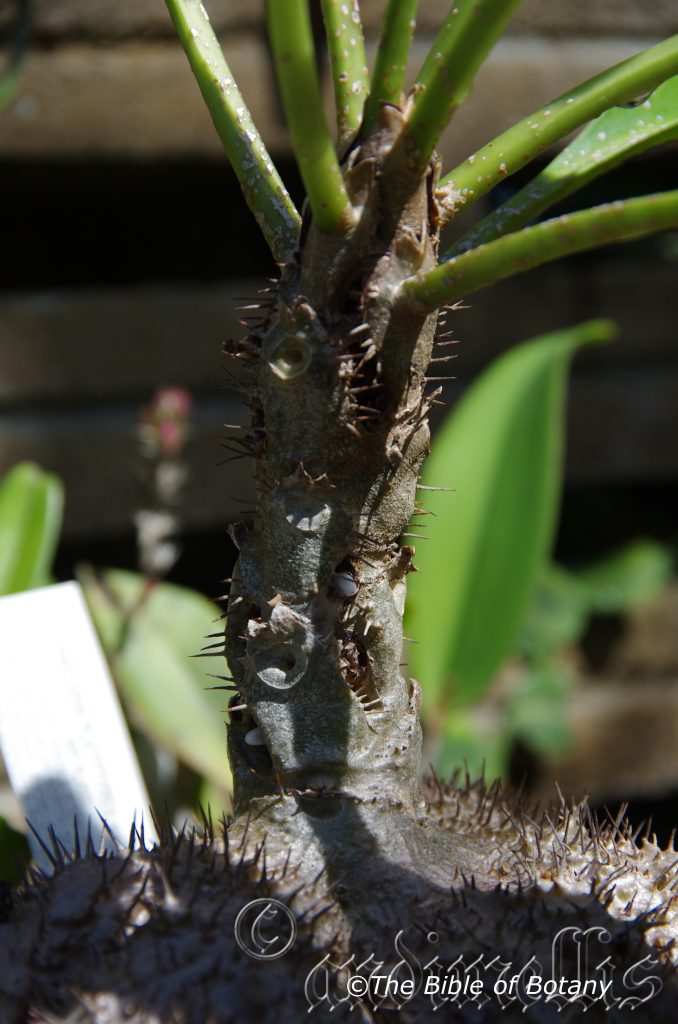
(Northern form) Townsville Botanic Gardens Qld.
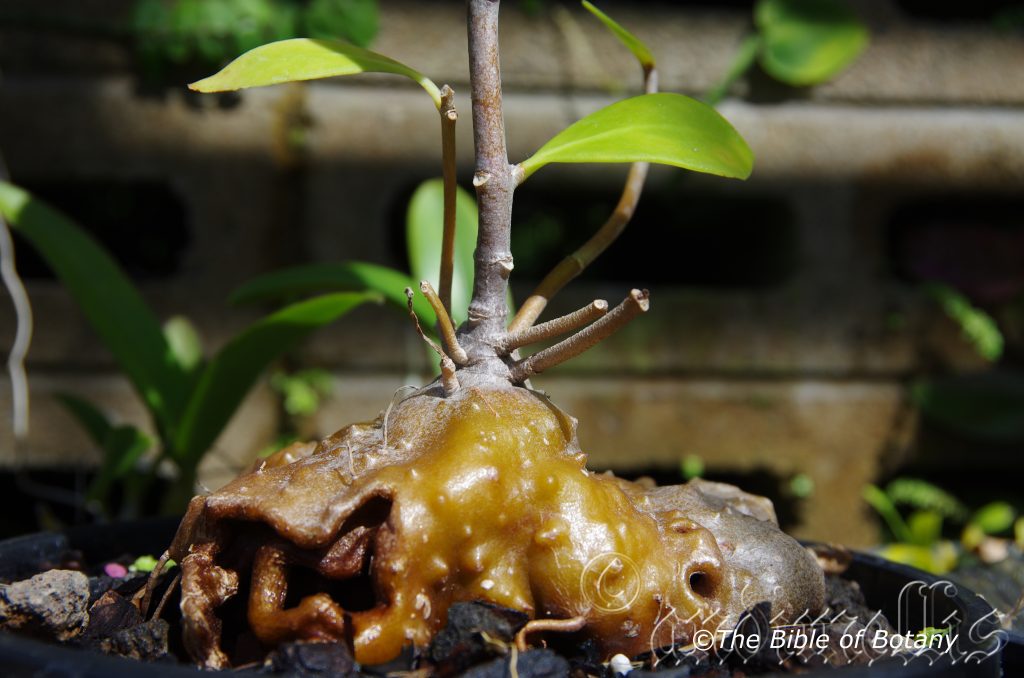
(Southern form) Townsville Botanic Gardens Qld.
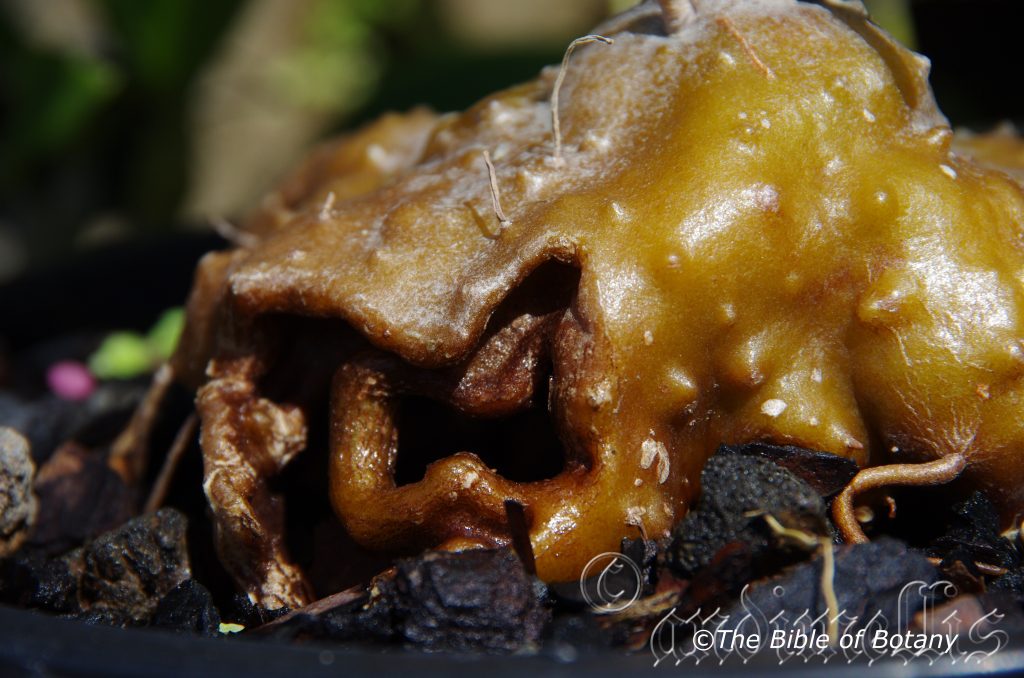
(Southern form) Townsville Botanic Gardens Qld.
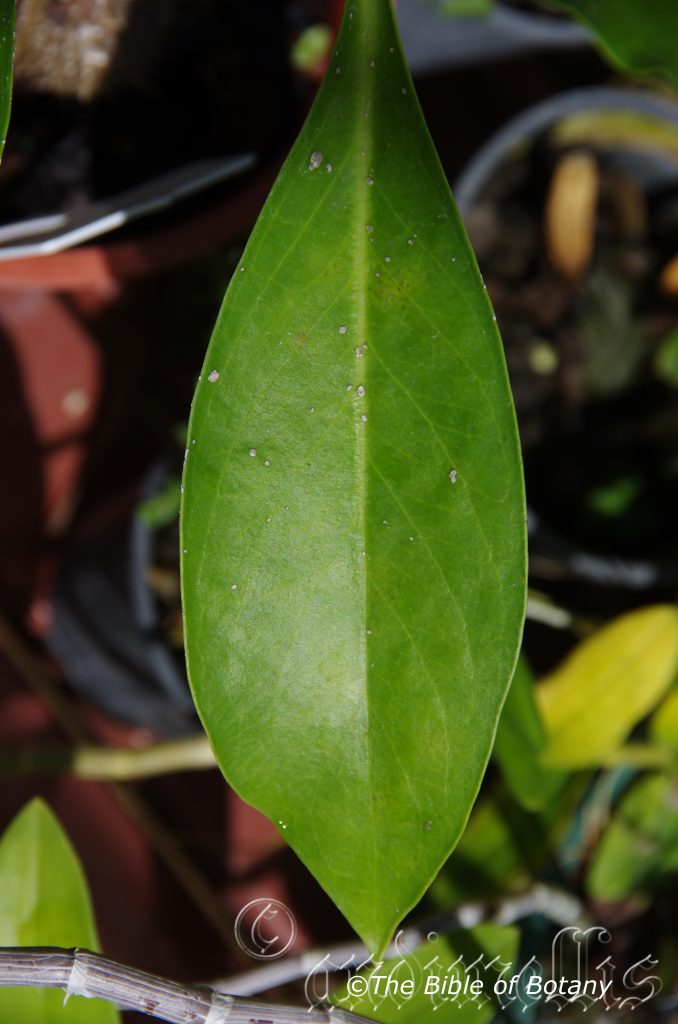
(Northern form) Townsville Botanic Gardens Qld.
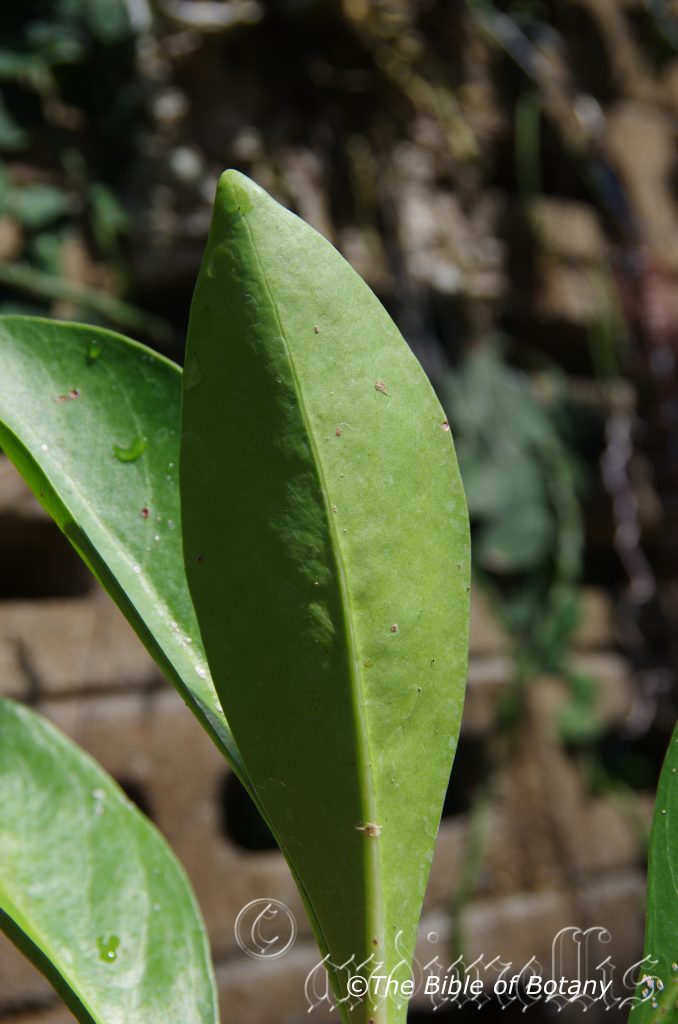
(Northern form) Townsville Botanic Gardens Qld.
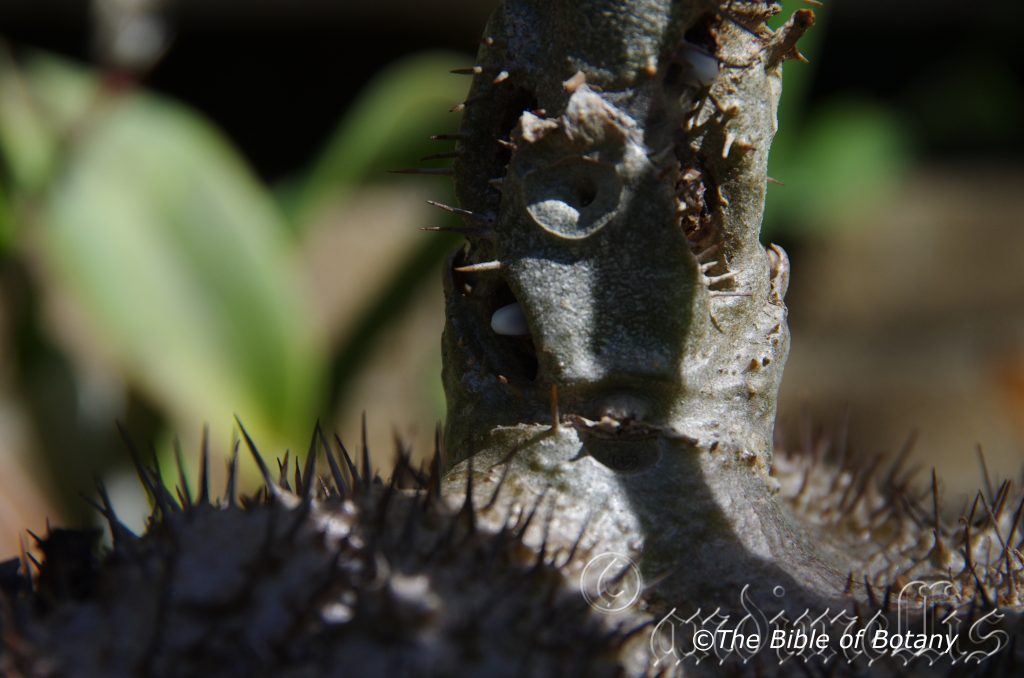
(Northern form) Townsville Botanic Gardens Qld.
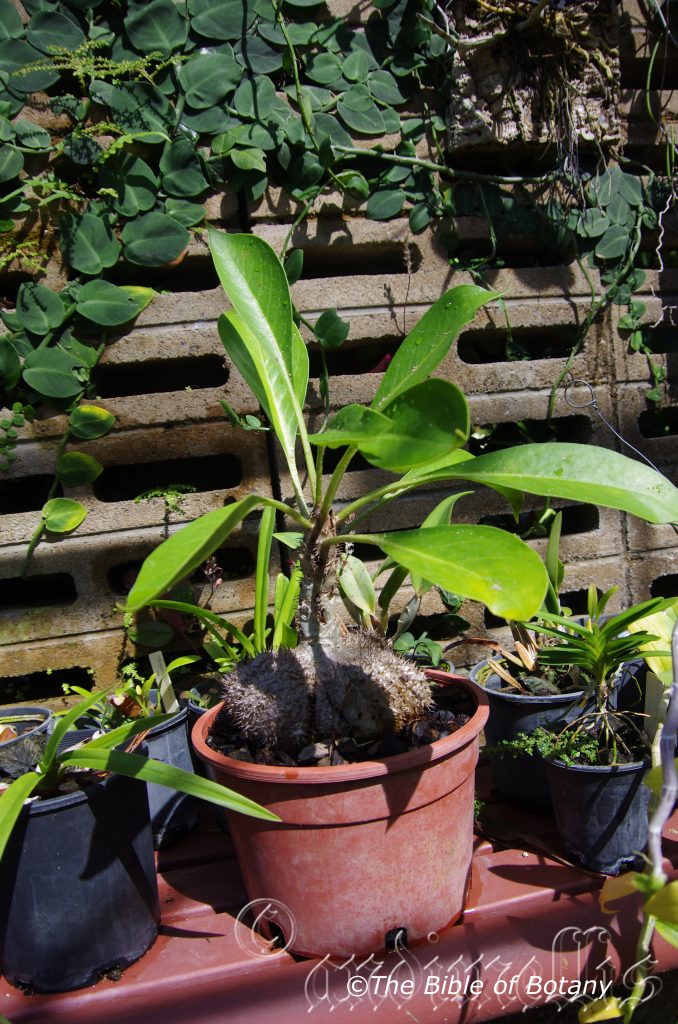
(Northern form) Townsville Botanic Gardens Qld.
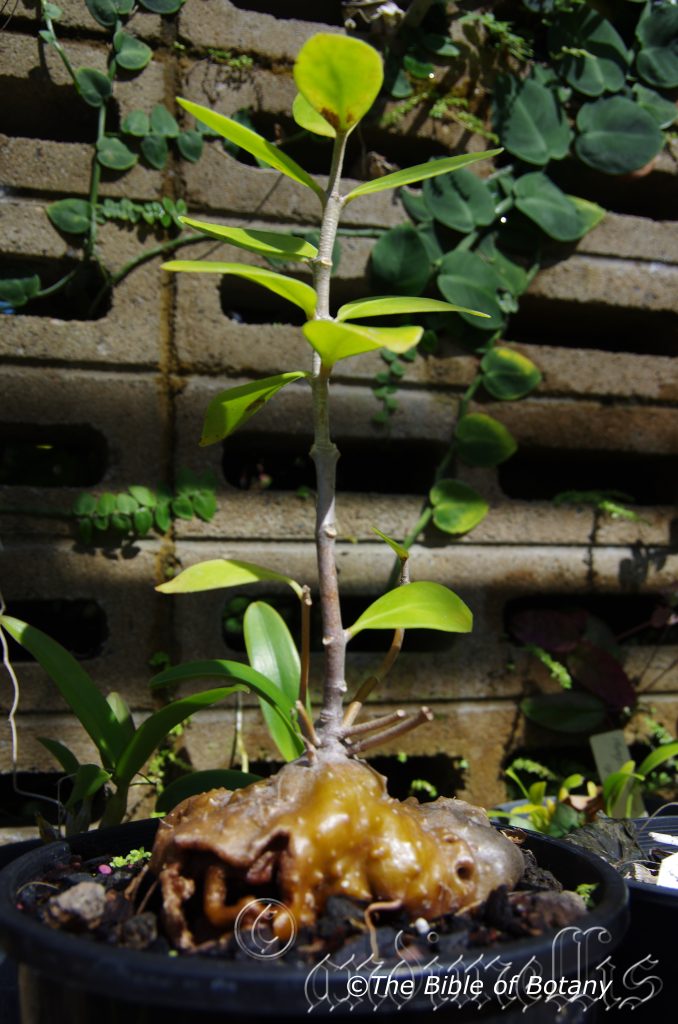
(Southern form) Townsville Botanic Gardens Qld.
Myrmecodia beccarii
Classification:
Unranked: Eudicots
Unranked: Asterids
Class:
Order: Gentianales
Family: Rubiacea
Tribe: Clauseneae
Genus: From Múrmēkos/Myrmeco, which is Ancient Greek for ants and Kṓdeia, which is Ancient Greek for a poppy head. It refers to structures, which somewhat resemble the fruits of the opium poppy and contain an ant colony within.
Specie: Is named in honour the botanist Oleardo Beccari.
Sub species:
Common Name: Ant Plant.
Distribution:
Myrmecodia beccarii has a restricted distribution in two disjunct localities south from the tip of Cape York Peninsula including some of the Torres Strait Islands and between Cairns and Cooktown.
https://avh.ala.org.au/occurrences/search?taxa=Myrmecodia+beccarii#tab_mapView
Habitat Aspect Climate:
Myrmecodia beccarii prefers light dappled shade to light filtered light. It grows on Avicenna and other mangrove swamp specie or different specie of Melaleuca growing in fresh water swamps or wallums behind the frontal dunes. The altitude ranges from 5 meter ASL to 280 meters ASL.
The temperatures range from 20 degrees in August to 42 degrees in January.
The rainfall ranges from lows of 2000mm to an average of 4200mm.
Soil Requirements:
Myrmecodia beccarii prefers the forks of mangrove trees and various Melaleuca trees as its host. Its hosts tolerate waterlogged soils and thrive when inundated.
Height & Spread:
Wild Plants: 0.3m to 0.5m by 0.15m to 0.2m.
Characteristics:
Myrmecodia beccarii has 2 to 5 stems called aveolae. It is hypocotyls meaning they look like tubers of a potato. The hypocotyls and base are honeycombed inside. The hypocotyls are grey to deep grey, glabrous and are covered in ridges hollows and short blunt spines externally.
Myrmecodia beccarii simple leaves appear randomly around the stems. The leaves are obovate, ovate, broad lanceolate to narrow elliptical and measure 40mm to 120mm in length by 15mm to 25mm in width. The base is symmetrical or slightly asymmetrical and cuneate to attenuate while the apex is acute, broadly acute to obtuse with an apiculate to mucronate tip. The concolourous or discolourous laminas are mid olive-green to deep green, dull and glabrous on the upper lamina while the lower lamina maybe slightly paler. The immature leaves are similar to the mature leaves except that it is semi glossy. The margins are entire while the lamina curves slightly upwards from the mid vein and recurves as it approaches the apex. The mid vein is strongly prominent on the lower lamina and is distinctly visible on the upper lamina. The petioles measure 8mm to 18mm in length.
The inflorescence of Myrmecodia beccarii are born singularly in the aveolae of discarded leaves. The white flowers are sessile. The 4 thick fleshy sepals are united to form a column with the 4 lobes being perpendicular to the corolla tube. The flowers measure 8mm to 10mm in total length by 3mm to 3.5mm in diameter while the lobes measure 3mm in length.
The 4 white stamens are glabrous and measure 2mm to 3.5mm in length.
The single, glabrous, white style has a white stigma and measures 1mm to 1.5mm in length. The flowers appear randomly throughout the year.
Myrmecodia beccarii’s fruit is an ovoid drupe. The translucent drupes are usually white but can be red, orange or pink. The drupes are glabrous with 3 or 4 longitudinal grooves. They measure 10mm to 13mm in length by 3.5mm to 5mm in diameter.
The round seeds are deep brown to black, glabrous, semi glossy and measures 6mm to 7mm in length by 4mm to 5mm in diameter.
Wildlife:
Myrmecodia beccarii’s is a very unusual plant in that it has 2 symbiotic relationships and hosts a parasite which is raised by one of its hosts. The little golden ant Iridomyrmex cordatus protect the plants from aphids and other sap sucking insects and in return the plants absorb waste from the ants. The plants can live successfully without the ants however the ants rely on the plants for their nest.
The next unusual relationship is te one it has with the northern Mistletoe bird Dicaeum hirundinaceum. Because the plant is an epiphyte in salt or fresh water marshes, wallums or estuaries it needs the service of the birds to distribute its seeds to other trees. Seeds that fall to the ground or water will not survive. The bizarre relationships do not stop there.
The eggs of the Apollo Jewel Butterfly are laid on the stems close to the entrance of the ant’s nests. The eggs look and smell similar to the eggs of the ants so the ants quickly gather them up and place them in the ant nursery. The eggs hatch with the larvae growing and being fed by the ants later to pupate and leave the nest to commence the cycle all over again.
Cultivation:
Myrmecodia beccarii is one of the more interesting plants species in Australia. Apart from their grotesque appearance that is so awe inspiring it is relatively easy to grow from seed. They make an excellent and unusual plant where there is filtered light. In saying that, I do not recommend these most unusual specimens to anyone outside the successful enthusiasts who can maintain high temperatures in their garden or bush house throughout the year. Minimum night temperatures should be above 6 degrees centigrade even on coldest days in winter. Humidity is another criterion which must be met if the plants are to remain healthy, flower and seed.
It makes an unusual garden subjects and great conversation pieces in tropical and warm subtropical gardens. It can be grown on slabs of cork with Melaleuca bark placed between the plant and the cork or in pots and hanging baskets using cork pieces and Melaleuca bark.
When placing plants into trees ensure the trees offer some good late afternoon or early morning filtered sunlight. Plants should be securely fixed into the fork of trees that have a spongy bark. I would recommend filling the space if any between the plant and the tree fork with scoria, cork or Melaleuca species bark pieces.
Plants grown on cork slabs should be gently watered on a daily basis until well established.
Plants can be very successfully grown in pots using 4 parts well weathered hard wood chips, 2 parts coconut fibre and 5 parts volcanic scoria. Wash the scoria to ensure that there are no salts remaining. As larger plants seem to resent disturbance place the plants directly into a 200mm or 250mm pot.
Plants we grew in Capalaba succumbed when we moved. These plants were grown both on slabs and in pots. This was despite them growing well for several years flowering and fruiting and being placed in a similar glass house on moving.
Propagation:
Seeds: Myrmecodia beccarii seeds can be sown directly onto the above mix of scoria hardwood chips and coconut fibre. Do not cover the seeds and keep them moist at all times, not wet. Place the tray in a warm position that gets plenty of filtered light. When the seedlings are 30mm to 50mm tall, prick them out and plant them into 100mm native pots using the above mix. When the plants reach the sides of the pot re pot them into 250mm pots.
Further Comments from Readers:
Hi reader, it seems you use The Bible of Botany a lot. That’s great as we have great pleasure in bringing it to you! It’s a little awkward for us to ask, but our first aim is to purchase land approximately 1,600 hectares to link several parcels of N.P. into one at The Pinnacles NSW Australia, but we need your help. We’re not salespeople. We’re amateur botanists who have dedicated over 30 years to saving the environment in a practical way. We depend on donations to reach our goal. If you donate just $5, the price of your coffee this Sunday, We can help to keep the planet alive in a real way and continue to bring you regular updates and features on Australian plants all in one Botanical Bible. Any support is greatly appreciated. Thank you.
In the spirit of reconciliation we acknowledge the Bundjalung, Gumbaynggirr and Yaegl and all aboriginal nations throughout Australia and their connections to land, sea and community. We pay our respect to their Elders past, present and future for the pleasures we have gained.
Myrsine benthamiana
Classification:
Unranked: Eudicots
Unranked: Asterids
Class:
Order: Ericales
Family: Primulaceae
Sub Family: Myrsinoideae
Genus: From Myrsine, which is Ancient Greek for the old name of a myrtle. Many of the old Myrtle genus in Australia were transferred to this Genus.
Specie: Is named in honour of George Bentham; 1800-1884, who was an English botanist who undertook the re Classification: of seed plants into families.
Sub species:
Common Name:
Distribution:
Myrsine benthamiana is found in 5 disjunct locations across the top end of Australia. The western populations are found around East Arnhem, southern and western Kakadu, from Darwin south to south of Dundee Beach and Wadeye west to the Western Australian border.
It is also found around Weipa on the western side of Cape York Peninsula in northern Queensland. Only a few isolated collections have been made and few photos exist so the plant could be more vulnerable than reports indicate.
https://avh.ala.org.au/occurrences/search?taxa=Myrsine+benthamiana#tab_mapView
Habitat Aspect Climate:
Myrsine benthamiana prefers light dappled shade to full sun. It grows in gallery forests along permanent water courses or seepages. A gallery forest is one where the vegetation varies from the rest of the vegetation in a forest because of soil, moisture or geographically aspect. The altitude ranges from 5 meter ASL to 100 meters ASL.
The temperatures range from 10 degrees in August to 44 degrees in January.
The rainfall ranges from lows of 1250mm to an average of 2600mm. Rainfall is not the main criteria as continuous moisture from capillary action near rivers or seepages are preferred.
Soil Requirements:
Myrsine benthamiana prefers sandy loams to medium clays. The soils are usually derived from decomposed sandstones. The soils pH ranges from 5pH to 6pH. It does not tolerate waterlogged soils. Non saline soils to moderately saline soils are tolerated.
Height & Spread:
Wild Plants: 2m to 6m by 1.5m to 2.5m.
Characteristics:
Myrsine benthamiana’s main trunk is pale grey to mid-grey and glabrous. The bole of the trunk is over half the height on a mature tree. The young stems are pale grey to mid-grey-brown and covered in lenticels. Immature stems are olive-green to mid-grass green and glabrous. The trunk and larger branches are often mottled in green and blue greens of mosses and lichens which will grow quickly under ideal conditions.
Myrsine benthamiana’s alternate simple lanceolate to elliptical to obovate leaves measure 60mm to 150mm by 18mm to 40mm in width. The base is asymmetrical and attenuate with the section near and including the attenuate section being recurved while the apex is broadly acuminate. The discolourous laminas are green to mid-grass green, glossy and glabrous von the upper lamina while the lower lamina is paler, glaucous blue-green. The immature leaves and newly emerging leaves are pale grass-green and semi glossy. The margins are entire, slightly undulating while the lamina curves slightly downwards near the margin and are decurve near the apex. The mid vein is strongly prominent on the lower lamina and is distinctly visible on the upper lamina. The petioles are glabrous and measure 8mm to 18mm in length.
The inflorescence of Myrsine benthamiana trees are dioecious with male and female flowers numbering about the same. The inflorescence of Myrsine benthamiana are born in groups of 3 to 5 flowers from axillary woody stump like burrs, in the leaf axils or old leaf scars. Both male and female flowers are sessile. The corolla measures 2mm to 2.2mm in length by 2mm to 2.3mm in diameter. The 5 oblong calyx lobes measure 0.8mm to 1mm in length.
The male flowers measures 5mm to 6mm in diameter. The 5 petals are white, mottled in rusty-brown or purple oil glands and measure 2.5mm to 3mm in length and 2mm to 2.5mm in width and are strongly decurve. The pale yellow to yellow anthers are sessile in that it is attached directly to the base of the petals and measure 1.2mm to 1.5mm in length. The pollen is fawn.
The female flowers measures 6.5mm to 7.5mm in diameter. The semi lanceolate petals measure 3.5mm to 4.5mm in length. The petals are densely covered in long elongated oil glands and are strongly recurved. The blue-green, translucent erect style is exerted prior to the petals unfolding. The style tapers towards the stigma and curves as it approaches its apex. The style measures 4mm to 6mm in length. The pale fawn anthers are sterile and sessile in that it is attached directly to the base of the petals and measure 1.2mm to 1.5mm in length. The sweet scent of the flowers will linger over a wide area. The flowers appear throughout the year.
Myrsine benthamiana’s fruit is a flattened globular drupe with a sunken apex. The green drupes turn pink then a deep purple-black when ripe while the flesh is white. They measure 4.5mm to 7mm in length by 5mm to 8mm in diameter. The calyx is persistent at the base of the fruit.
The spherical seeds are grey, glabrous and measure 4mm to 5mm in length by 4mm to 4.5mm in diameter.
Wildlife:
Myrsine benthamiana’s fruits are eaten by fruitigrove Pigeons and honeyeaters.
It is not known whether the fruits have long term toxicity or not so should be treated with care. Fruits I have tested on the skin and eaten had no complications other than having a very bad taste when finally eaten. There is little flesh surrounding the seeds.
Cultivation:
Myrsine benthamiana would make an excellent small where there is filtered light and poor drainage due to seasonal seepage. It may also be very suitable for growing below septic trenches. This could be the one area where they will excel with the sweetly scented flowers and use of water and nutrient from the septic. It is very suitable on medium clays to heavy clay soils provided there is plenty of mulch available at all times. It is most suitable for small, medium to large gardens close to the coast in warm temperate, warm sub-tropical or tropical gardens. As garden subjects they will grow from 5 meters to 6 meters in height by 3 meters to 5 meters in diameter when grown in the open.
It will not develop a wide spreading canopy being tall and narrow with dense foliage. The cold tolerance is not known.
It can be used as a rainforest understory shrub or on the edge of a forest they will develop into a small densely foliaged tree. The trees are suitable for all orchids and epiphytic ferns especially those that prefer darker conditions like Pyrossia rupestre, Pyrossia longifolia and Asplenium sp. or some of the climbing Microsorum scandens. In a rainforest situation they will also support many different varieties of lichens and mosses.
If grown as a small tree in moist situations areas companion planting with ferns will give a cool scene to ponder and also help to drain the area as ferns are an excellent source for water reduction.
Propagation:
Seeds: Myrsine benthamiana seeds can be sown into a seed raising mix. Cover the seeds with 2mm to 3mm of fine weed free mulch and keep moist. Place the tray in a hot sunny position. Do not allow the trays to dry out. When the seedlings are 30mm to 50mm tall, prick them out and plant them into 50mm native tubes using a good organic mix.
Once the seedlings reach 100mm to 150mm in height they can be planted out into their permanent position.
Fertilize using seaweed, fish emulsion or organic chicken pellets soaked in water on an alternate basis. Fertilize every month until the female flower buds start to subside in autumn to maintain better health, vitality, flowering and fruiting.
Further Comments from Readers:
Hi reader, it seems you use The Bible of Botany a lot. That’s great as we have great pleasure in bringing it to you! It’s a little awkward for us to ask, but our first aim is to purchase land approximately 1,600 hectares to link several parcels of N.P. into one at The Pinnacles NSW Australia, but we need your help. We’re not salespeople. We’re amateur botanists who have dedicated over 30 years to saving the environment in a practical way. We depend on donations to reach our goal. If you donate just $5, the price of your coffee this Sunday, We can help to keep the planet alive in a real way and continue to bring you regular updates and features on Australian plants all in one Botanical Bible. Any support is greatly appreciated. Thank you.
In the spirit of reconciliation we acknowledge the Bundjalung, Gumbaynggirr and Yaegl and all aboriginal nations throughout Australia and their connections to land, sea and community. We pay our respect to their Elders past, present and future for the pleasures we have gained.
Myrsine howittiana
Classification:
Unranked: Eudicots
Unranked: Asterids
Order: Ericales
Family: Myrsinaceae
Genus: From Myrsine, which is Ancient Greek for the old name of a myrtle. Many of the old Myrtle genus in Australia were transferred to this Genus.
Specie: Is probably named in honour of Dr. Godfrey Howitt; 1800-1873, who was an English born Australian physician, botanist and entomologist in Melbourne.
Sub specie:
Common Name: Brush Muttonwood or Muttonwood
Distribution:
Myrsine howittiana is found south from Fraser Island in south eastern coastal Queensland to Werribee in southern Victoria. It is mainly found on the Western Slopes, on and east of the Great Dividing Range to the coast.
https://avh.ala.org.au/occurrences/search?taxa=Myrsine+howittiana#tab_mapView
Habitat Aspect Climate:
Myrsine howittiana prefers dappled shade to full sun. It grows in warm well-developed rainforests, littoral rainforests and immediately behind mangrove forests. It is common along riparian zones of creek, stream and river estuary flats. The altitude ranges from 2 meter ASL to 1200 meters ASL.
The temperatures range from minus 3 degrees in July to 36 degrees in January.
The rainfall ranges from lows of 500mm to 2100mm average per annum.
Soil Requirements:
Myrsine howittiana prefer to grow on shallow or deep sandy loams to medium clays. The soils are usually derived from decomposed granites, sandstones, metamorphic rocks brown basalts, black basalts or accumulated beach sands. The soils pH ranges from 4.5pH to 6.5pH. It does not tolerate waterlogged soils. Non saline soils to moderately saline soils are tolerated as are salt laden winds.
Height & Spread:
Wild Plants: 8m to 12m by 3m to 7m.
Characteristics:
Myrsine howittiana’s main trunk is mottled pale grey and mid grey and is glabrous. The trunk and larger branches are often mottled in green and blue greens of mosses and lichens which will grow quickly under ideal conditions. The bole of the trunk is over half the height on a mature tree. The young stems are mid olive-grey to mid-grey-brown and covered in lenticels. The immature stems are olive-green to mid reddish-green and densely covered in reddish-brown to rusty-red pulverulent hairs.
Myrsine howittiana’s alternate to almost opposite simple obovate to oblanceolate or elliptic leaves measure 40mm to 130mm in length by 20mm to 40mm in width. The petioles are glabrous and measure 7mm to 15mm in length. The bases are tapering to cuneate while the apexes are bluntly acute to tapering obtuse. The discolourous laminas are grass-green to deep green, glossy and glabrous on the upper lamina while the lower lamina is paler to blue-green and dull. The immature leaves and newly emerging leaves are deep bronze and glossy. The laminas are undulating, slightly recurve upwards from the midvein to the margins and decurve gently near the apexes. The margins are entire and transluscent to transparent. The mid vein is strongly prominent on the upper lamina and is distinctly visible on the lower lamina. The lateral veins are obscure on both laminas.
The inflorescences of Myrsine howittiana trees are born as fascicles’ of 6 to 10 flowers born cauliflorously along the branches of the previous season’s growth. The flowers are usually 5 merous or at times are 4 merous. The corolla is usually greenish to greenish-pink, greenish-white or at times cream.
The stigma is inserted in the tube with the 5 stamens. The flowers appear from September to February.
Myrsine howittiana’s fruit is a flattened globular drupe with a sunken apex. The green drupes turn purple-blue when ripe while the flesh is greenish. They measure 5mm to 7mm in length by 5mm to 7mm in diameter. The calyx is persistent at the base of the fruit. The fruits ripen from December to June.
The ovate, grey, glabrous seeds measure 2mm to 3mm in length by 2mm to 3mm in diameter.
Wildlife:
Myrsine howittiana’s fruits are eaten by fruitigrove Pigeons including the Rose Crowned Pigeon (Ptilinopus regina) and Honeyeaters including Lewin’s Honeyeater (Meliphaga lewinii) and the Emerald Dove (Chalcophaps indica). The long term edibility of the fruit is unknown however eaten in small quantities have had no effect on me apart from the taste which is not one I fancy.
Cultivation:
Myrsine howittiana would make an excellent small tree shrub where there is filtered light and poor drainage due to seasonal seepage. It may also be very suitable for growing below septic trenches. This could be the one area where they will excel with sweetly scented flowers and utilization of water and nutrient from the septic trenches. It is very suitable on medium clays to heavy clay soils provided there is plenty of mulch available at all times. It is most suitable for small medium and large gardens close to the coast in warm temperate, warm sub-tropical or tropical gardens. As garden subjects they will usually grow from 8 meters to 10 meters in height by 5 meters to 7 meters in diameter when grown in the open.
It can be used as a rainforest understory tree, on the edge of a forest where they will develop into a small densely foliaged tree or the starter tree for a small suburban rainforest. The trees are suitable for all orchids and epiphytic ferns especially those that prefer darker conditions like Pyrossia rupestre, Pyrossia longifolia and Asplenium sp. or the climbing Microsorum scandens. In a rainforest situation they will also support many different varieties of lichens and mosses.
If grown as a small tree in moist situations areas companion planting with ferns will give a cool scene to ponder and also help to drain the area as ferns are an excellent source for water reduction.
Propagation:
Seeds: Myrsine howittiana seeds can be sown into a seed raising mix. Cover the seeds with 2mm to 3mm of fine weed free mulch and keep moist. Place the tray in a warm sunny position. Do not allow the trays to dry out. When the seedlings are 30mm to 50mm tall, prick them out and plant them into 50mm native tubes using a good organic mix.
Once the seedlings reach 100mm to 150mm in height they can be planted out into their permanent position.
Fertilize using seaweed, fish emulsion or organic chicken pellets soaked in water on an alternate basis. Fertilize every month until the female flower buds start to subside in autumn to maintain better health, vitality, flowering and fruit.
Further Comments from Readers:
Hi reader, it seems you use The Bible of Botany a lot. That’s great as we have great pleasure in bringing it to you! It’s a little awkward for us to ask, but our first aim is to purchase land approximately 1,600 hectares to link several parcels of N.P. into one at The Pinnacles NSW Australia, but we need your help. We’re not salespeople. We’re amateur botanists who have dedicated over 30 years to saving the environment in a practical way. We depend on donations to reach our goal. If you donate just $5, the price of your coffee this Sunday, We can help to keep the planet alive in a real way and continue to bring you regular updates and features on Australian plants all in one Botanical Bible. Any support is greatly appreciated. Thank you.
In the spirit of reconciliation we acknowledge the Bundjalung, Gumbaynggirr and Yaegl and all aboriginal nations throughout Australia and their connections to land, sea and community. We pay our respect to their Elders past, present and future for the pleasures we have gained.
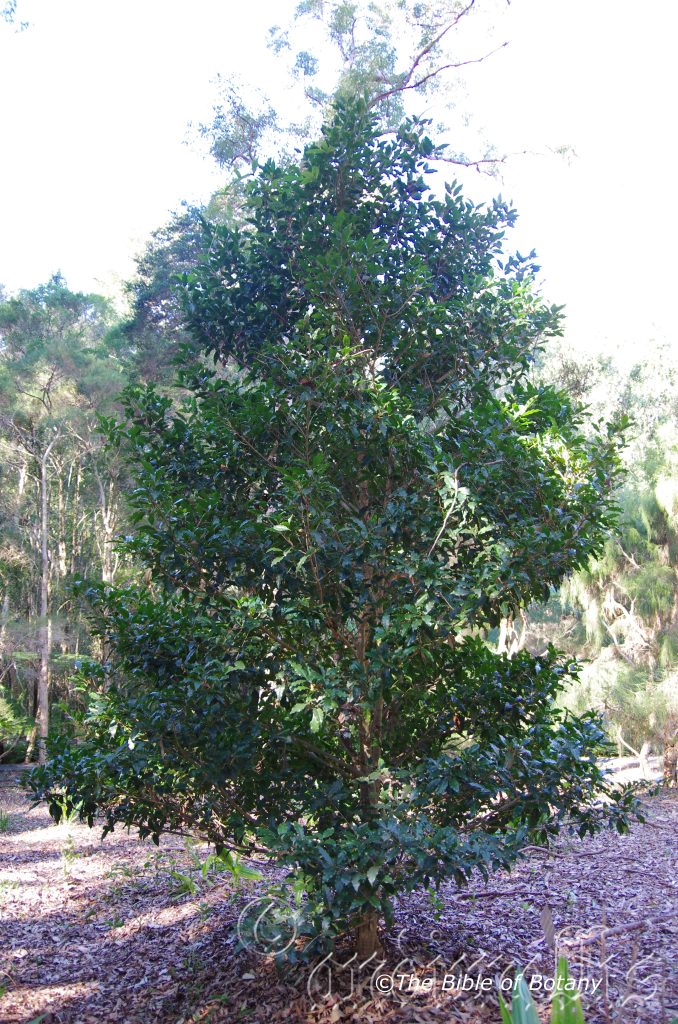
NCBG Coffs Harbour NSW
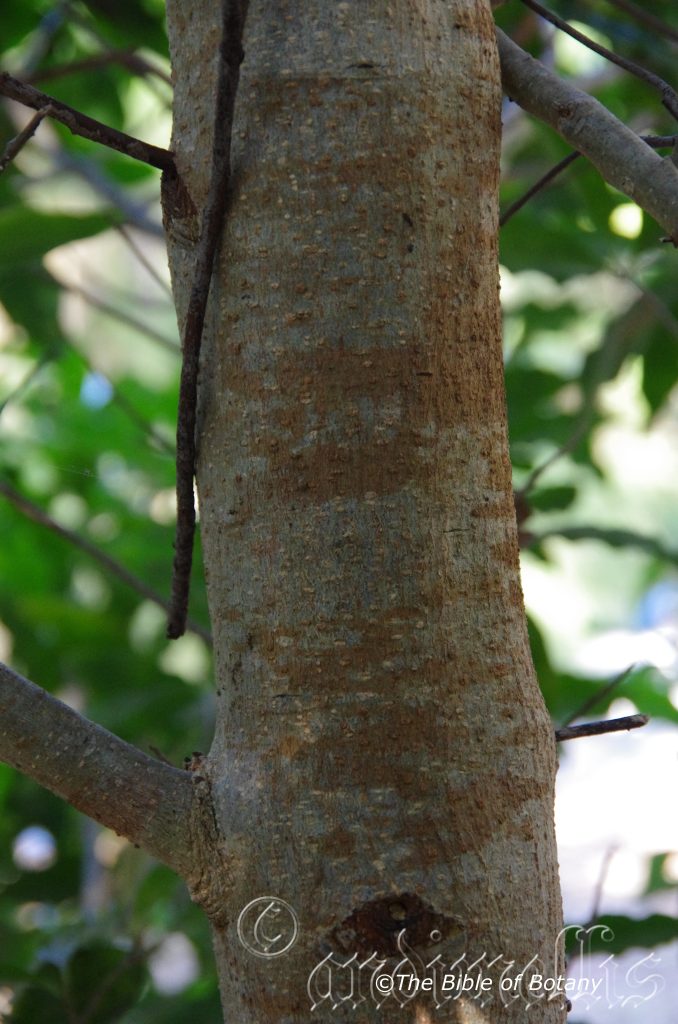
NCBG Coffs Harbour NSW
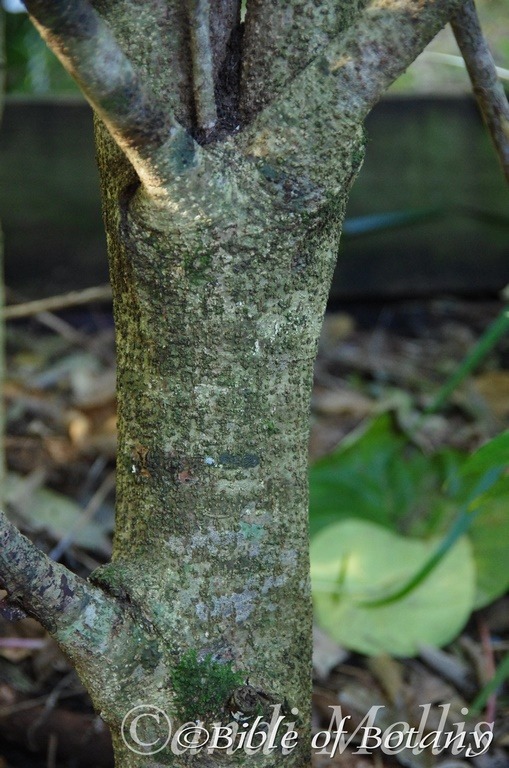
NCBG Coffs Harbour NSW
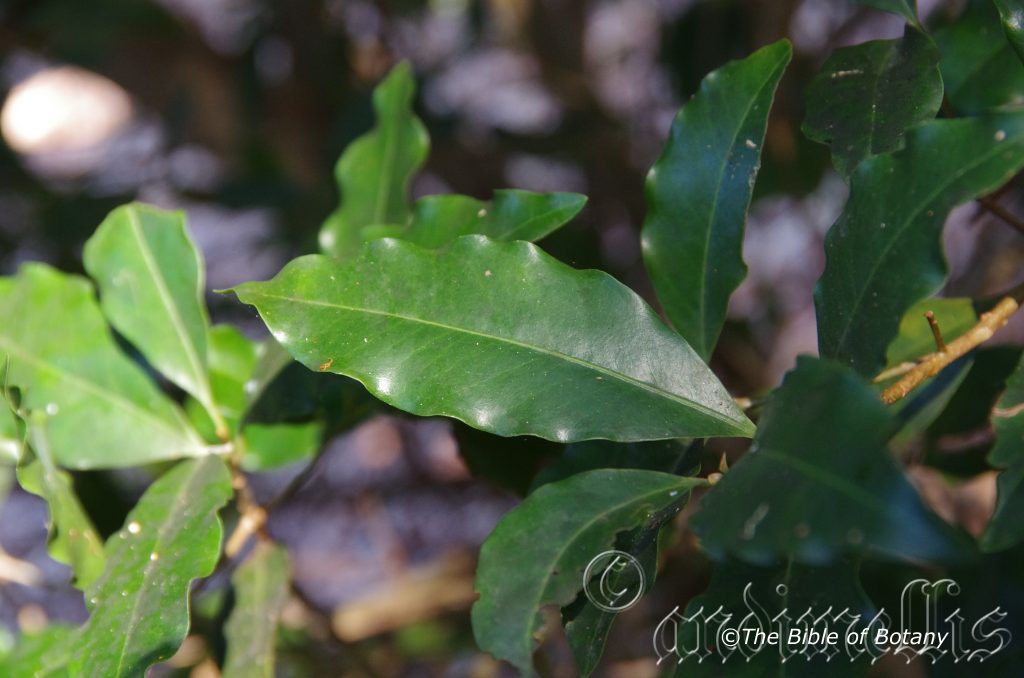
NCBG Coffs Harbour NSW
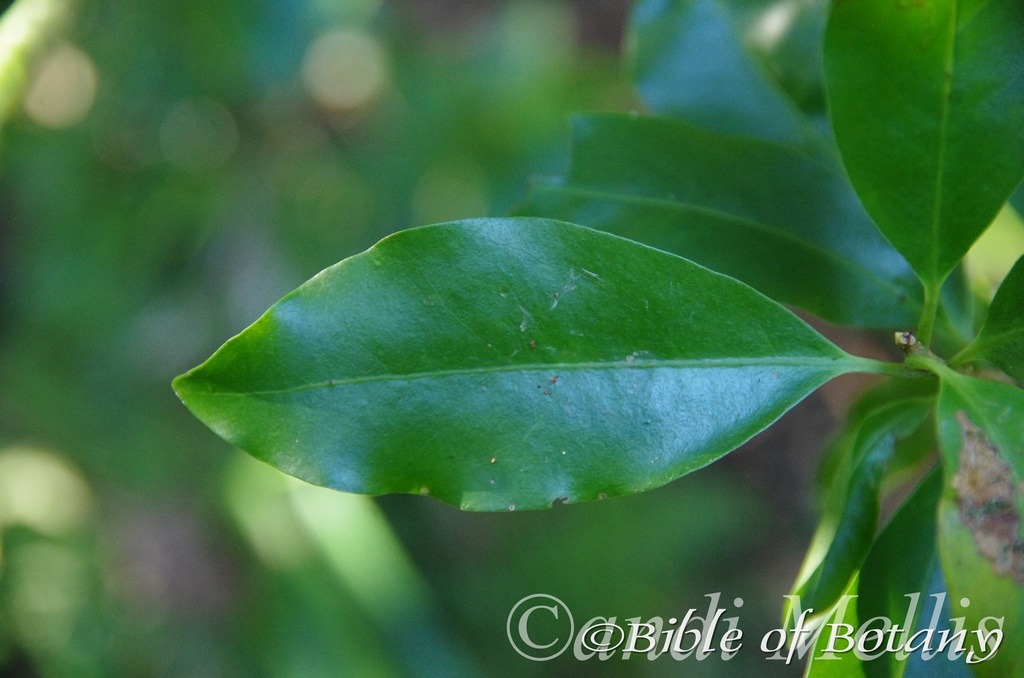
LBG Lismore NSW
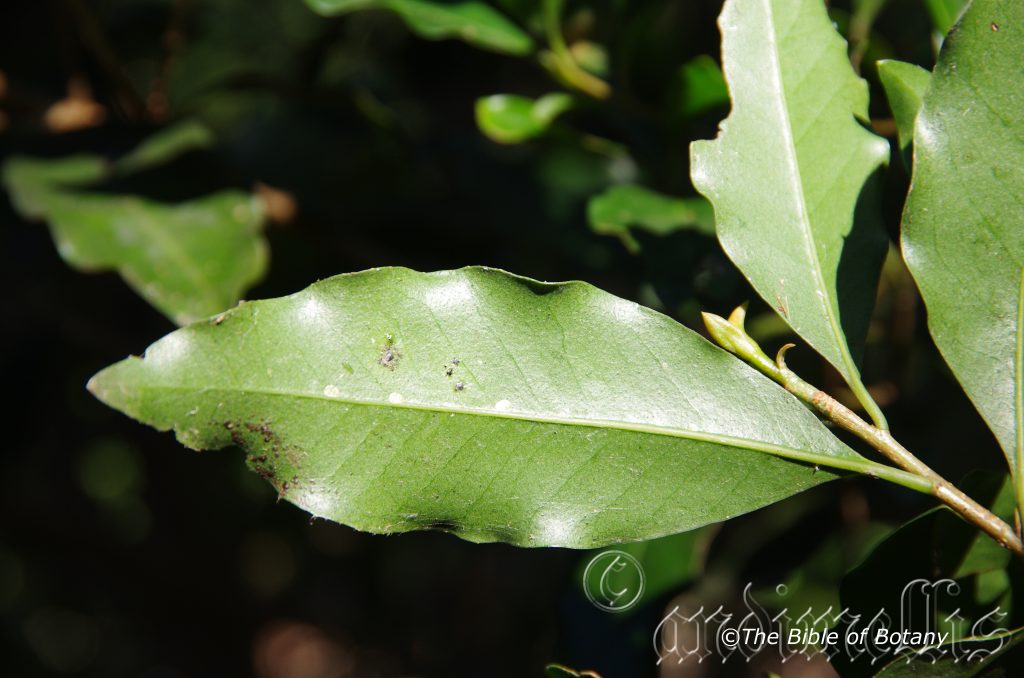
NCBG Coffs Harbour NSW
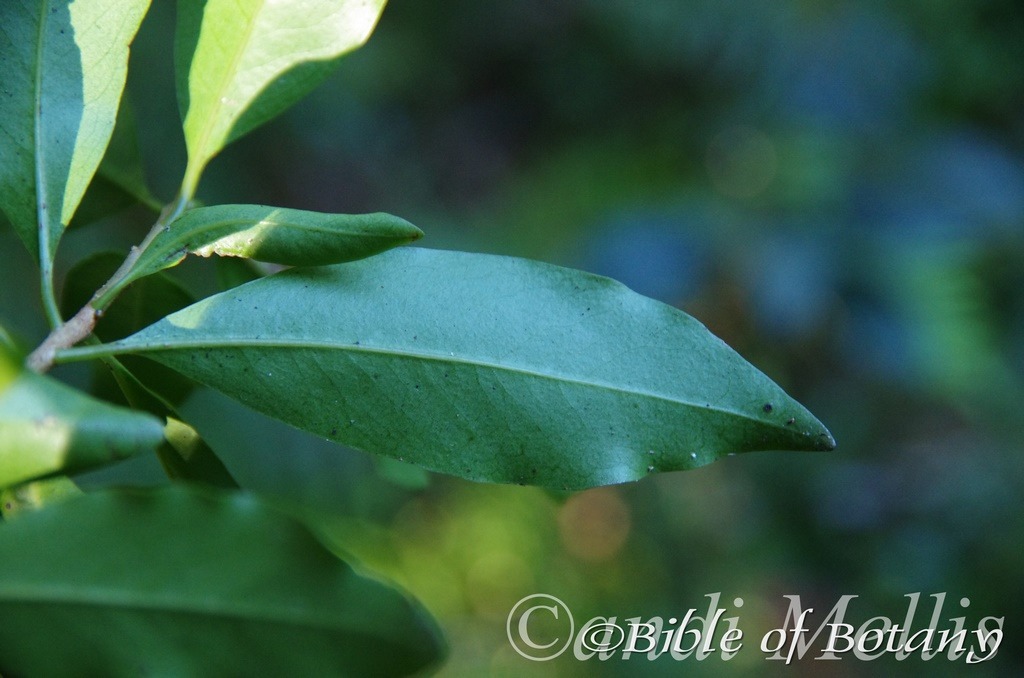
LBG Lismore NSW
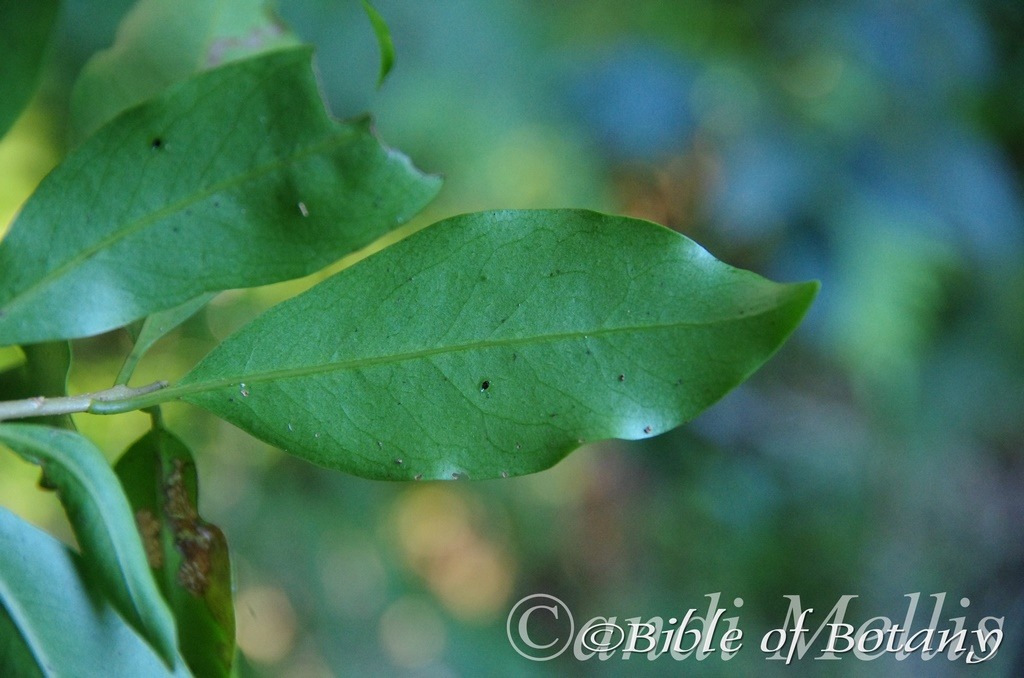
LBG Lismore NSW
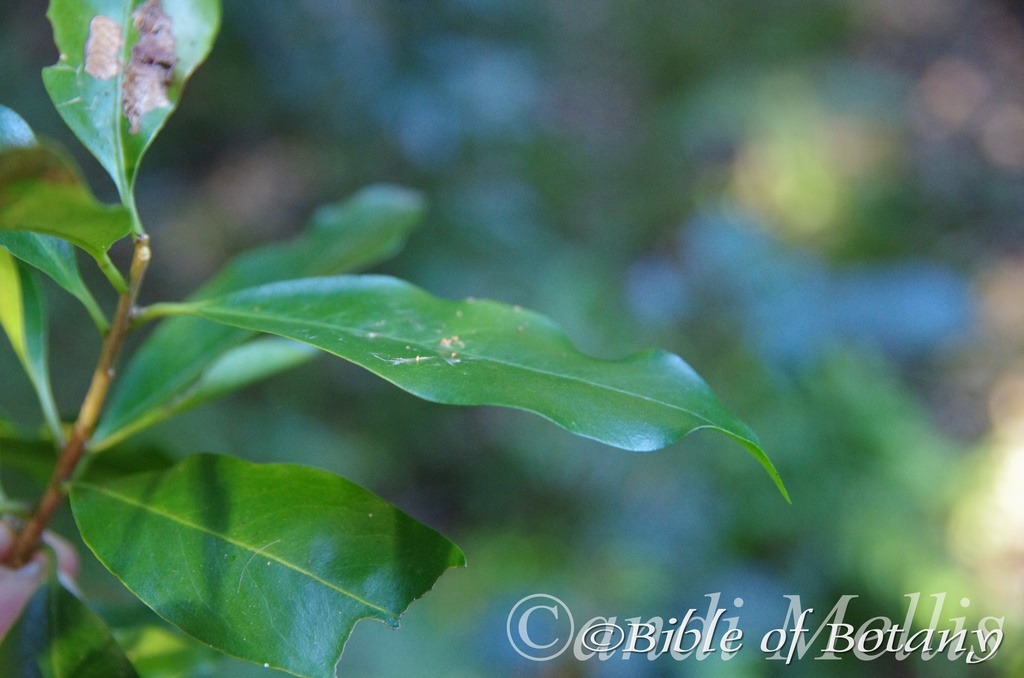
LBG Lismore NSW
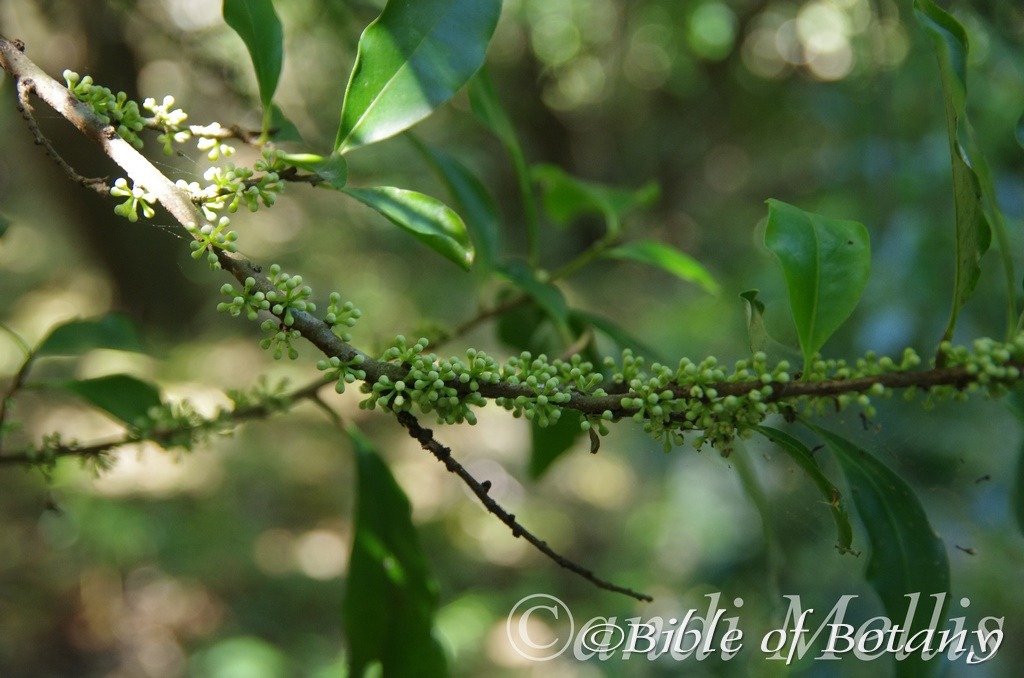
Boat Harbour Nature Reserve Lismore NSW
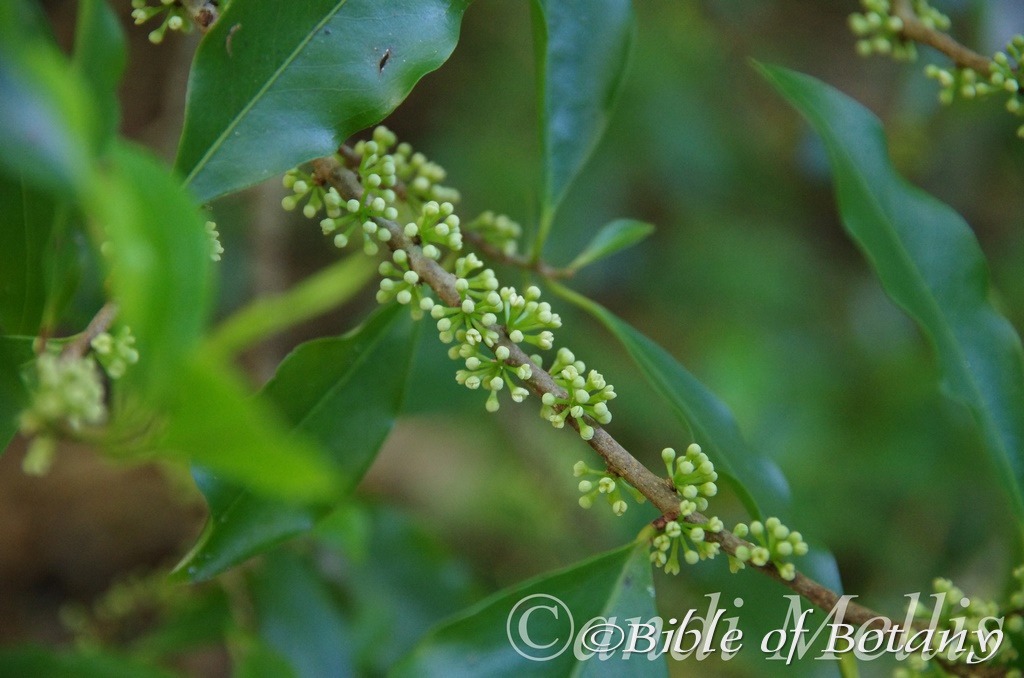
Boat Harbour Nature Reserve Lismore NSW
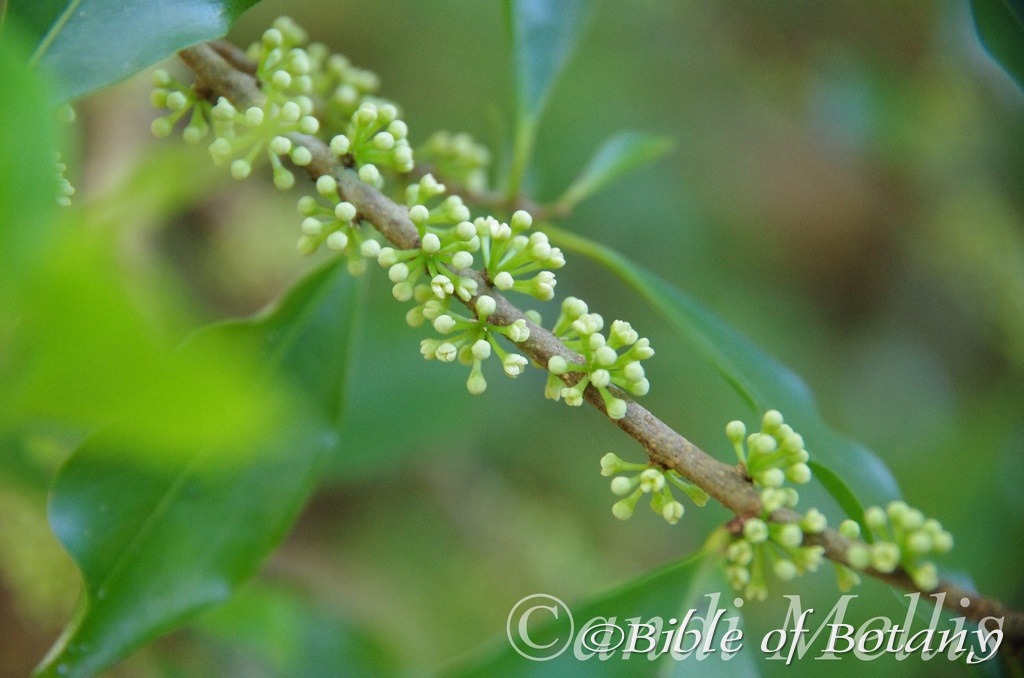
Boat Harbour Nature Reserve Lismore NSW
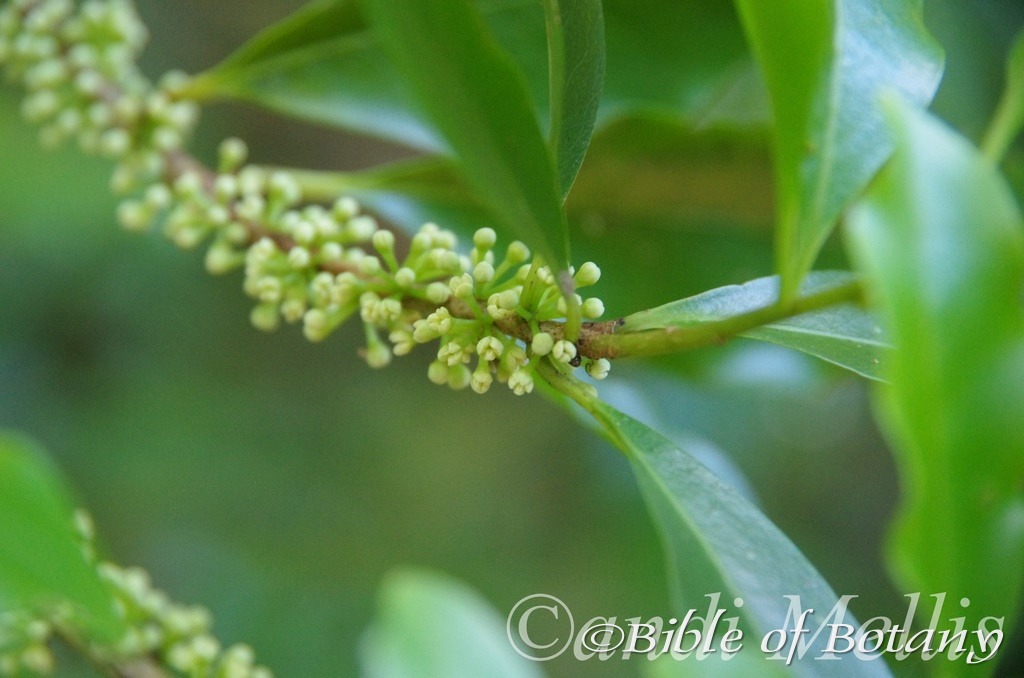
Boat Harbour Nature Reserve Lismore NSW
Myrsine richmondensis
Classification:
Unranked: Eudicots
Unranked: Asterids
Order: Ericales
Family: Myrsinaceae
Genus: From Myrsine, which is Ancient Greek for the old name of a myrtle. Many of the old Myrtle genus in Australia were transferred to this Genus.
Specie: From Richmond, which is Latin for the Richmond River in far north eastern New South Wales and Ensis, which is Latin for to originate from a topographical name of a place. It refers to plants, which were first discovered along the Richmond river.
Sub specie:
Common Name: Ripple Leaf Muttonwood or Purple Leaf Muttonwood.
Distribution:
Myrsine richmondensis is found in a few scattered populations around Lismore and the Richmond River catchment in far north eastern coastal New South Wales.
https://avh.ala.org.au/occurrences/search?taxa=Myrsine+richmondensis#tab_mapView
Habitat Aspect Climate:
Myrsine richmondensis prefers dappled shade to full sun. It grows in warm well-developed rainforests, littoral rainforests and along riparian zones creek, stream and river estuary flats. The altitude ranges from 10 meter ASL to 80 meters ASL.
The temperatures range from 3 degrees in July to 40 degrees in January.
The rainfall ranges from lows of 1000mm to 1600mm average per annum.
Soil Requirements:
Myrsine richmondensis prefers to grow on shallow to deep loams to medium lateritic clays. The soils are usually derived from decomposed brown basalts or black basalts. The soils pH ranges from 5pH to 6pH. It does not tolerate waterlogged soils. Non saline soils to moderately saline soils are tolerated.
Height & Spread:
Wild Plants: 4m to 12m by 3m to 7m.
Characteristics:
Myrsine richmondensis’s pale grey to mid-grey main trunk is blotched in brown and is moderately to densely covered in cream horizontal lenticels. The young stems are pale brown, semi glossy smooth and covered in cream lenticels. The immature stems are olive-green to and glabrous. The trunk and larger branches are often mottled in green and blue greens of mosses and lichens which will grow quickly under ideal conditions.
The immature leaves and newly emerging leaves are deep bronze and glossy.
Myrsine richmondensis’s alternate elliptic to oblanceolate leaves measure 50mm to 140mm in length by 15mm to 30mm in width. The somewhat terete petioles are glabrous, grooved on the upper surface and measure 4mm to 7mm in length. The base tapers to the petiole, while the apex is bluntly acute. The discolourous laminas are deep green, glossy and glabrous on the upper lamina, while the lower lamina is paler, and semi glossy. The margins are entire and slightly undulating. The lamina curves slightly upwards from the mid vein. The mid vein is prominent on both laminas, while the lateral veins faintly visible, set at 55 degrees and curve well inside the margins. The numerous minute oil dots are numerous and prominent nearer the mid vein.
The cream inflorescence of Myrsine richmondensis are 5 merous. dioecious with male and female flowers numbering about the same. The calyx and corolla are prominently covered in glands. The stigma is short and capitate while the 5 stamens are inserted. The flowers appear from mid-July to mid-November.
Myrsine richmondensis’s fruit is a globular drupe often with a sunken apex. The glabrous pedicel measures 2mm to 4mm in length. The green drupes turn white before turning bright purple-blue when ripe while the flesh is white. They measure 3mm to 4.5mm in diameter by 3mm to 4.5mm in depth. The calyx is persistent at the base of the fruit, while the style is persistent at the apex.
Wildlife:
Myrsine richmondensis’s fruits are eaten by fruitigrove Pigeons and Honeyeaters including Lewin’s Honeyeater and the Emerald dove. The long term edibility of the fruit is unknown however eaten in small quantities have had no affect on me apart from the taste which is not one I fancy.
Cultivation:
Myrsine richmondensis would make an excellent small tree where there is filtered light and poor drainage due to seasonal seepage. It may also be very suitable for growing below septic trenches. This could be the one area where they will excel with their sweetly scented flowers and utilization of water and nutrient from the septic trenches. It is very suitable on medium clays to heavy clay soils provided there is plenty of mulch available at all times. It is most suitable for small medium and large gardens close to the coast in warm temperate, warm sub-tropical or tropical gardens. As garden subjects they will grow from 6 meters to 8 meters in height by 5 meters to 6 meters in diameter when grown in the open.
It can be used as a rainforest understory shrub or on the edge of a forest where they will develop into a small densely foliaged tree. The trees are suitable for all orchids and epiphytic ferns especially those that prefer darker conditions like Pyrossia rupestre, Pyrossia longifolia and Asplenium sp. or some of the climbing Microsorum scandens. In a rainforest situation they will also support many different varieties of lichens and mosses.
If grown as a small tree in moist situations areas companion planting with ferns will give a cool scene to ponder and also help to drain the area as ferns are an excellent source for water reduction.
Propagation:
Seeds: Myrsine richmondensis seeds can be sown into a seed raising mix. Cover the seeds with 2mm to 3mm of fine weed free mulch and keep moist. Place the tray in a warm sunny position. Do not allow the trays to dry out. When the seedlings are 30mm to 50mm tall, prick them out and plant them into 50mm native tubes using a good organic mix.
Once the seedlings reach 100mm to 150mm in height they can be planted out into their permanent position.
Fertilize using full strength seaweed, fish emulsion or organic chicken pellets soaked in water and apply the liquid on an alternate basis. Fertilize every month until the plants are established then once a year there after in spring or autumn to maintain health, vigor and better flowering.
Further Comments from Readers:
Hi reader, it seems you use The Bible of Botany a lot. That’s great as we have great pleasure in bringing it to you! It’s a little awkward for us to ask, but our first aim is to purchase land approximately 1,600 hectares to link several parcels of N.P. into one at The Pinnacles NSW Australia, but we need your help. We’re not salespeople. We’re amateur botanists who have dedicated over 30 years to saving the environment in a practical way. We depend on donations to reach our goal. If you donate just $5, the price of your coffee this Sunday, We can help to keep the planet alive in a real way and continue to bring you regular updates and features on Australian plants all in one Botanical Bible. Any support is greatly appreciated. Thank you.
In the spirit of reconciliation we acknowledge the Bundjalung, Gumbaynggirr and Yaegl and all aboriginal nations throughout Australia and their connections to land, sea and community. We pay our respect to their Elders past, present and future for the pleasures we have gained.

Mount Cootha Botanic Gardens Qld.
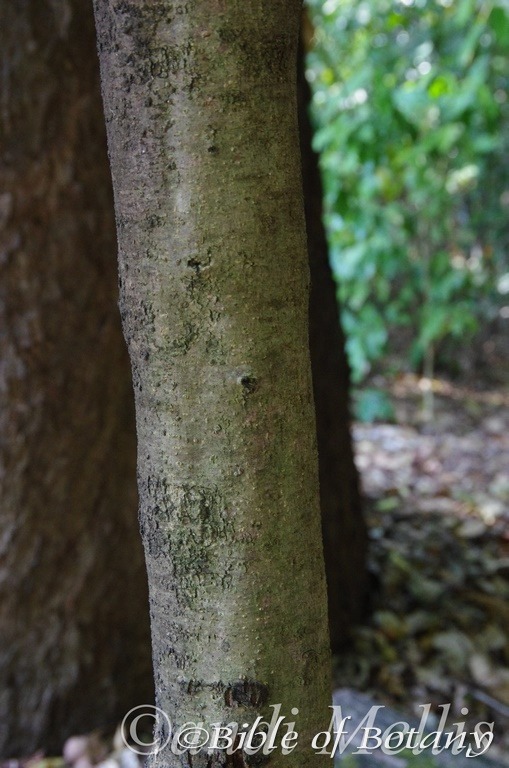
Mount Cootha Botanic Gardens Qld.
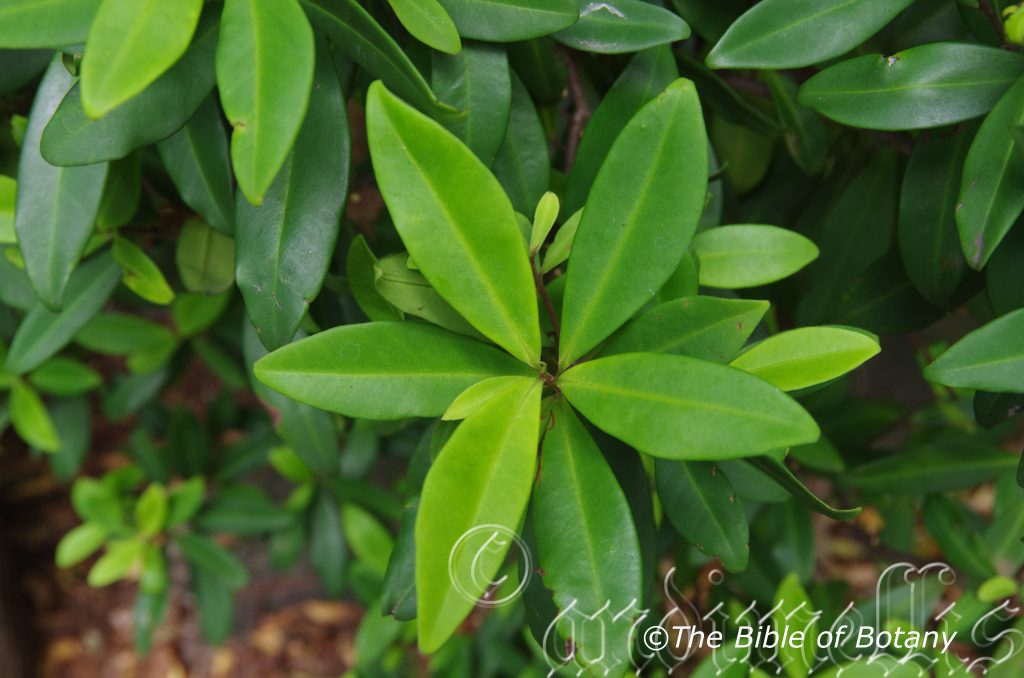
Mount Cootha Botanic Gardens Qld.
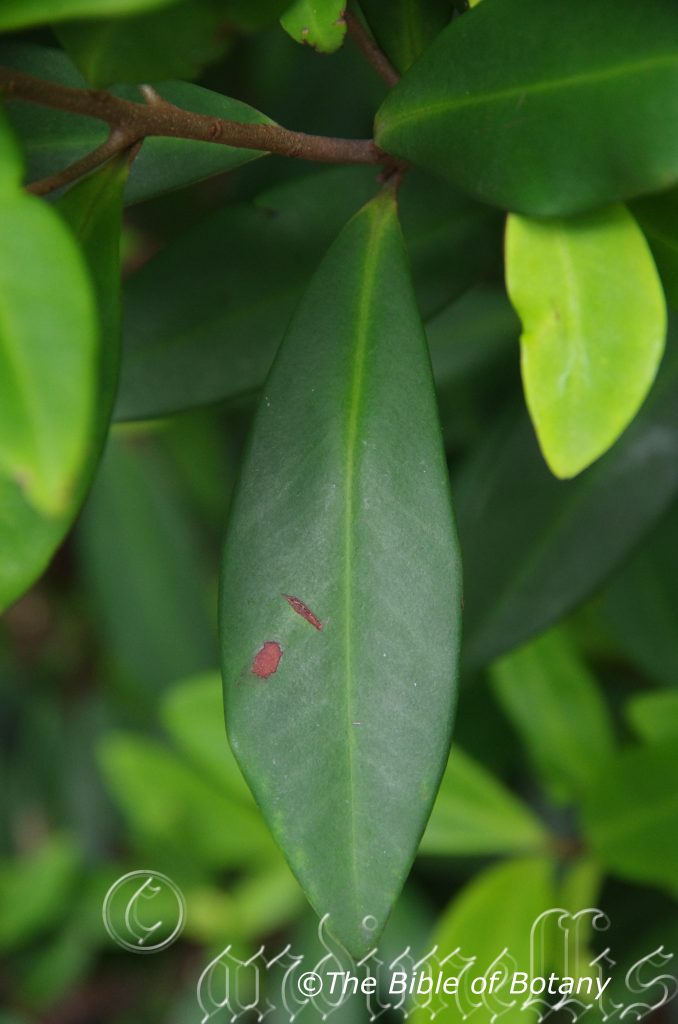
Mount Cootha Botanic Gardens Qld.
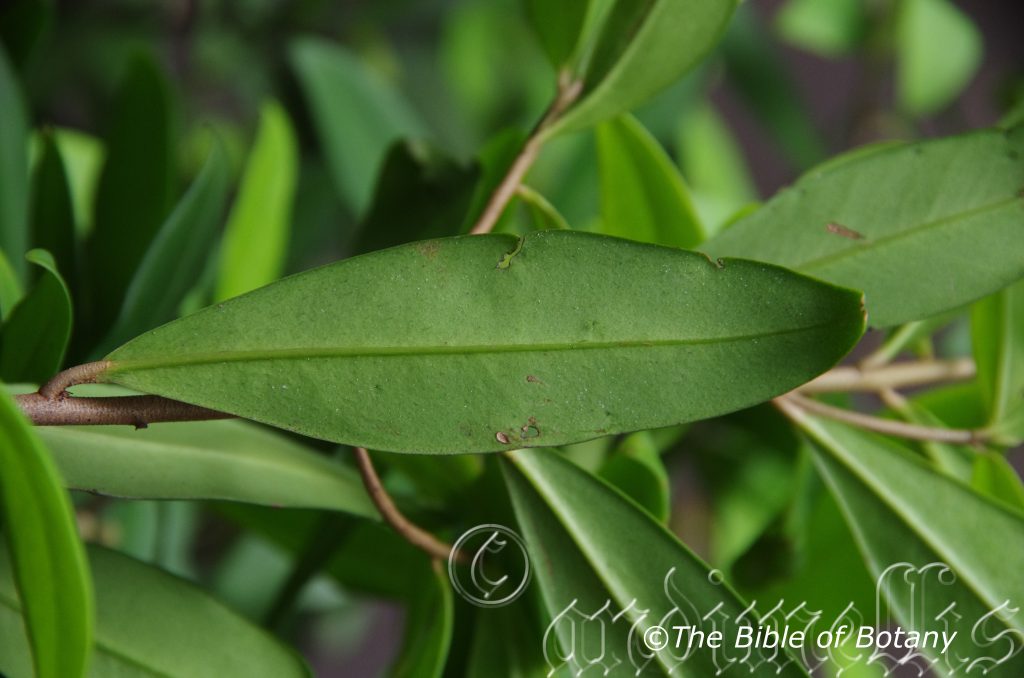
Mount Cootha Botanic Gardens Qld.
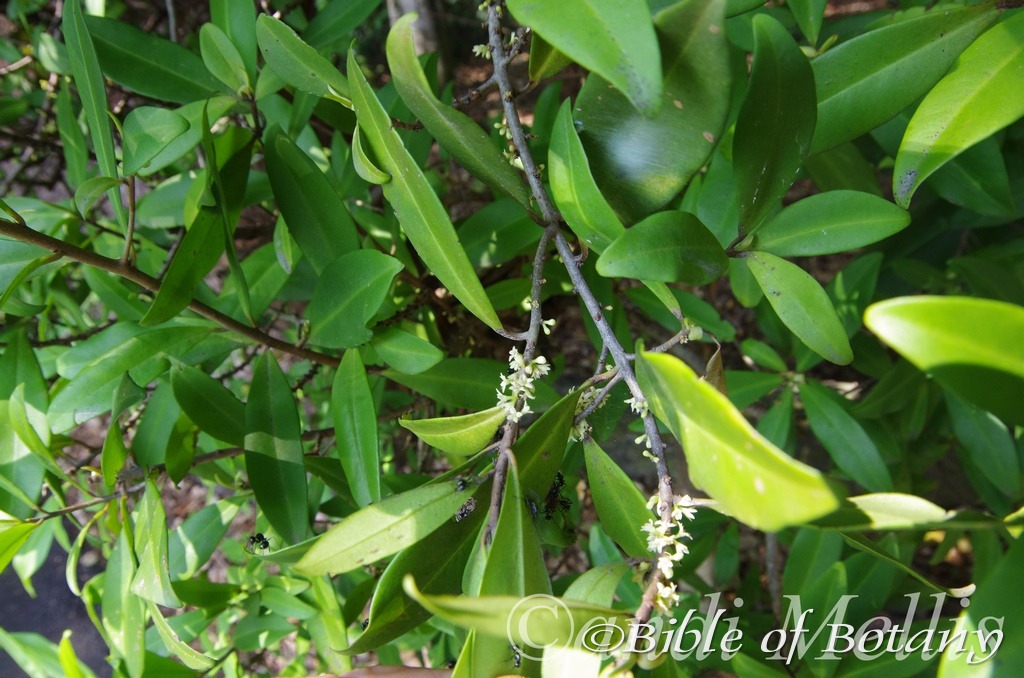
Mount Cootha Botanic Gardens Qld.
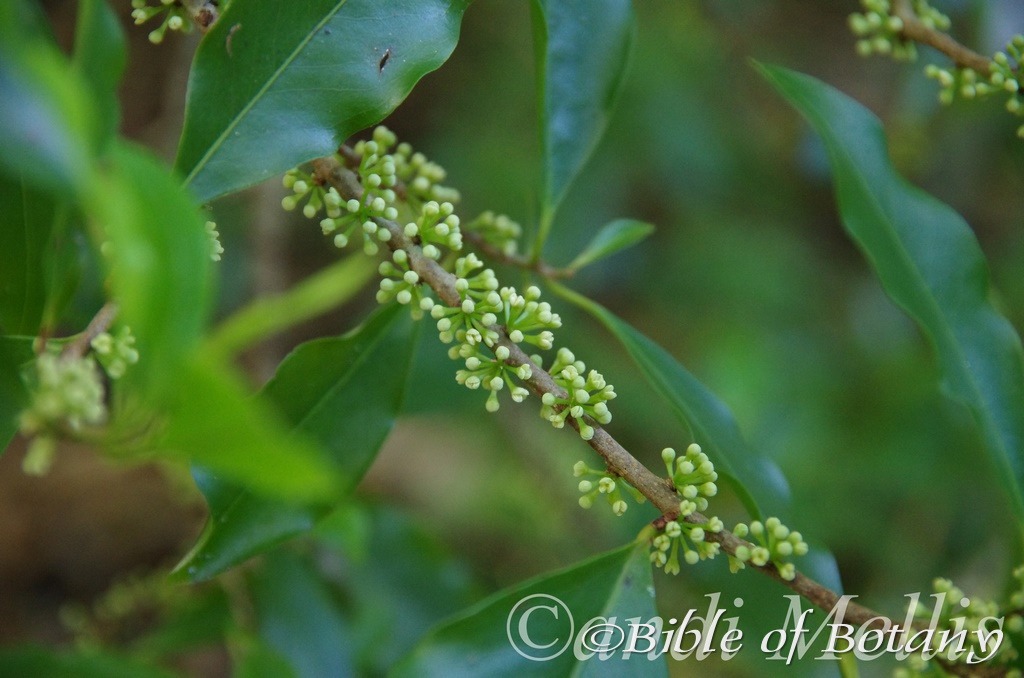
Mount Cootha Botanic Gardens Qld.

Mount Cootha Botanic Gardens Qld.
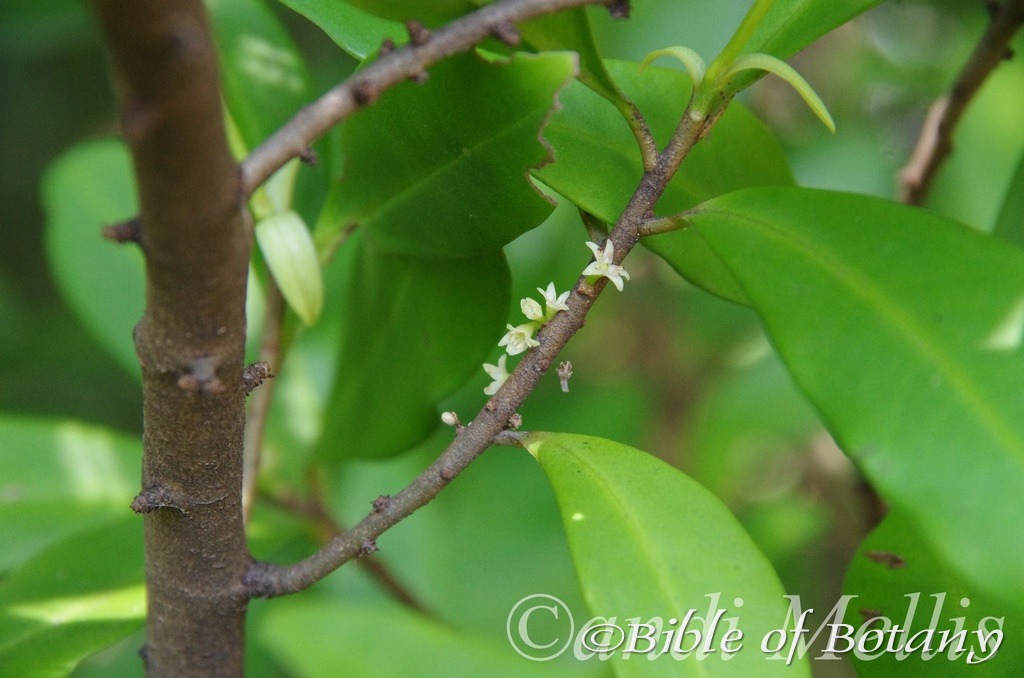
Mount Cootha Botanic Gardens Qld.

Mount Cootha Botanic Gardens Qld.

Mount Cootha Botanic Gardens Qld.
Myrsine subsessilis
Classification:
Unranked: Eudicots
Unranked: Asterids
Order: Ericales
Family: Myrsinaceae
Genus: From Myrsine, which is Ancient Greek for the old name of a myrtle. Many of the old Myrtle genus in Australia were transferred to this Genus.
Specie: From Sub, which is Ancient Greek/Latin for beneath, below or lower and Sessilis, which is Latin for sitting or to sit. It refers to an organ or structure that has a short distance, connecting strip between it and another organ or structure.
Sub specie: From Sub, which is Ancient Greek/Latin for beneath, below or lower and Sessilis, which is Latin for sitting or to sit. It refers to an organ or structure that has a short distance, connecting strip between it and another organ or structure.
Sub specie: Fromkruptós, which is Ancient Greek for secret or hidden and stoma or stêma, which are Ancient Greek or later stāmen, which is Latin for I stand or the male parts of a flower. It refers to the stamens being smaller and often hidden amongst the petals.
Common Name: Mutton wood.
Distribution:
Myrsine subsessilis subspecies subsessilis is found south from Gympie in south eastern Queensland to Ballina in far north eastern New South Wales New South Wales.
There is an isolated population on the Iron Range, on Cape York Peninsula in far north eastern Queensland
Myrsine subsessilis subspecies crptostamen is found on the Iron Range, on Cape York Peninsula in far north eastern Queensland south to the Paluma Range in north eastern Queensland.
They are both found on and east of the Great Dividing Range.
https://avh.ala.org.au/occurrences/search?taxa=Myrsine+subsessilis#tab_mapView
Habitat Aspect Climate:
Myrsine subsessilis prefers dappled shade to full sun. It grows warm well-developed rainforests, littoral rainforests or. It is common along riparian zones creek, stream and river estuary flats. The altitude ranges from 10 meter ASL to 800 meters ASL.
Myrsine subsessilis subspecies subsessilis. The temperatures range from 2 degrees in July to 40 degrees in January.
The rainfall ranges from lows of 850mm to 1600mm average per annum.
Myrsine subsessilis subspecies crptostamen. The temperatures range from 6 degrees in July to 38 degrees in January.
The rainfall ranges from lows of 1800mm to 3200mm average per annum.
Soil Requirements:
Myrsine subsessilis subspecies subsessilis prefers to grow on shallow to deep better quality loams to medium clays. The soils are usually derived from decomposed brown basalts or black basalts.
Myrsine subsessilis subspecies crptostamen prefers to grow on shallow to deep sandy loams to medium clays. The soils are usually better quality sandy loams derived from decomposed granites or average brown basalts and black basalts.
The soils pH ranges from 4.5pH to 6pH. It does not tolerate waterlogged soils. Non saline soils to moderately saline soils are tolerated.
Height & Spread:
Wild Plants: Myrsine subsessilis subspecies subsessilis 1.5m to 4m x 1.5m to 2.5.
Myrsine subsessilis subspecies crptostamen 1m to 3m x 1m to 2.5 but has been known to grow to 6 meters.
Characteristics:
Myrsine subsessilis’s main trunk and larger branches are pale grey and sparsely covered in fine lenticels. The young stems are pinkish turning pale green and covered in lenticels.
Myrsine subsessilis subspecies subsessilis elliptic to lanceolate leaves measure 62mm to 142mm long, 18mm to 44mm in width. The deep pink to reddish-pink coloured petiole extends though onto the midrib. It usually has a fine depression on the upper surface and measures 1mm to 4mm in length. The bases are cuneate to somewhat asymmetrical, while the acute apexes curve strongly downwards. The discolorous laminas are deep green and dull to semi glossy on the upper lamina, while the lower lamina is paler and dull. The new growth is reddish. The mid vein is prominent on the lower lamina, while the lateral veins form loops close to the margins.
The 5 merous, ramiflorous inflorescences of Myrsine subsessilis subspecies subsessilis are fascicles, which comprise of 2 to 9 and up to 21 individual flowers born from below the leaves. The terete peduncles measure 1mm to 2mm in length, while the pedicels 2mm to 5mm in length. The floral bracts measure 1mm to 1.5mm in length. The creamy-green, white to dull yellow, dusty pink or at times fawn calyx is cupular. The corolla of staminate flowers are pyriform to ovoid. The obtuse lobes measure 0.75mm to 1.5mm in length and are covered in numerous, minute red glands. The corolla of pistillate flowers are campanulate with spreading, obtuse lobes.
The globular berries turn black when ripe and measure 3mm to 6mm in length by 5mm to 7mm in diameter.
Myrsine subsessilis subspecies crptostamen elliptic to lanceolate leaves are subopposite to almost forming whirls and measure 100mm to 170mm by 26mm to 60mm in width. The petioles measure about 0.2mm to 0.3mm in length. The minute, red oil dots are circular in outline. The mid vein is prominent on the upper and lower lamina, while the lateral veins form loops close to the margins.
The inflorescences are born in the leaf axis or on the smaller branches immediately behind the leaves. The flower are born singularly or in small clusters and are much shorter than the leaves, barely exceeding the petioles. The pedicels measure 0mm or where present are 2mm to 5mm in length. The calyx and ovary are covered in minute red, orange or brownish oil dots. The corolla tube measures 0.4mm to 0.6mm in length, while the corolla lobes measure 2mm to 2.5mm in length. The anthers are sessile on the corolla tube. The 5 ovule ovaries measure 0.6mm in length by 0.5mm in diameter.
The calyx lobes are persistent at the base of the berries. The green, globular or depressed globular berries turn white then deep purple or royal blue when ripe and measure 5mm to 8mm in length by 6mm to 9mm in diasmeter.
Wildlife:
Myrsine subsessilis’s fruits are eaten by fruitigrove Pigeons and Honeyeaters including Lewin’s Honeyeater and the Emerald dove.
The fruit is edible and apparently makes a fine stewed fruit.
Cultivation:
Myrsine subsessilis would make an excellent small tree or medium shrub where there is filtered light and reasonable drainage and can cope with seasonal seepage. It may also be very suitable for growing below septic trenches. This could be the one area where it will excel with their sweetly scented flowers and utilization of water and nutrient from the septic trenches will suffice admirably. It is very suitable on medium clays to heavy clay soils provided there is plenty of mulch available at all times. It is most suitable for small medium and large gardens close to the coast in warm temperate, warm sub-tropical or tropical gardens. As a garden subject it will grow from 2 meters to 4 meters in height by 1.5 meters to 2.5 meters in diameter when grown in the open.
It can be used as a rainforest understory shrub or on the edge of a forest where it will develop into a small densely foliaged tree. The trees are suitable for all smaller type orchids and epiphytic ferns especially those that prefer darker conditions like Pyrossia rupestre and Pyrossia longifolia. In a rainforest situation it will also support many different varieties of lichens and mosses, which will eventually grow on the trunk and older branches.
Myrsine subsessilis lends itself beautifully for growing as a small tree in a small garden. 2 or 3 placed across the back yard in a moist situation with small ferns beneath will give a cool scene to ponder and make the area look much larger.Some of the smaller ferns could include Adiantum capillaris, Adiantum hispidulum, Adiantum aethiopicum, small Pteris ferns like the various forms of Pteris cretica, Dictymia brownii, Blechnum patersonii, Blechnum rupestre, Blechnum parrisiae and Pellaea falcata var. nana are a just a few ferns that come to mind that would be really worth the effort to find and plant. Many of our beautiful native ferns have diverse foliage forms and would add a lot of interest. Larger ferns would look out of place in a small garden with small trees like this Myrsine as a feature would look out of place.
Propagation:
Seeds: Myrsine subsessilis seeds can be sown into a seed raising mix. Cover the seeds with 2mm to 3mm of fine weed free mulch and keep moist. Place the tray in a warm sunny position. Do not allow the trays to dry out. When the seedlings are 30mm to 50mm tall, prick them out and plant them into 50mm native tubes using a good organic mix.
Once the seedlings reach 100mm to 150mm in height they can be planted out into their permanent position.
Fertilize using full strength seaweed, fish emulsion or organic chicken pellets soaked in water and apply the liquid on an alternate basis. Fertilize every month until the plants are established then once a year there after in spring or autumn to maintain health, vigor and better flowering.
Further Comments from Readers:
Hi reader, it seems you use The Bible of Botany a lot. That’s great as we have great pleasure in bringing it to you! It’s a little awkward for us to ask, but our first aim is to purchase land approximately 1,600 hectares to link several parcels of N.P. into one at The Pinnacles NSW Australia, but we need your help. We’re not salespeople. We’re amateur botanists who have dedicated over 30 years to saving the environment in a practical way. We depend on donations to reach our goal. If you donate just $5, the price of your coffee this Sunday, We can help to keep the planet alive in a real way and continue to bring you regular updates and features on Australian plants all in one Botanical Bible. Any support is greatly appreciated. Thank you.
In the spirit of reconciliation we acknowledge the Bundjalung, Gumbaynggirr and Yaegl and all aboriginal nations throughout Australia and their connections to land, sea and community. We pay our respect to their Elders past, present and future for the pleasures we have gained.
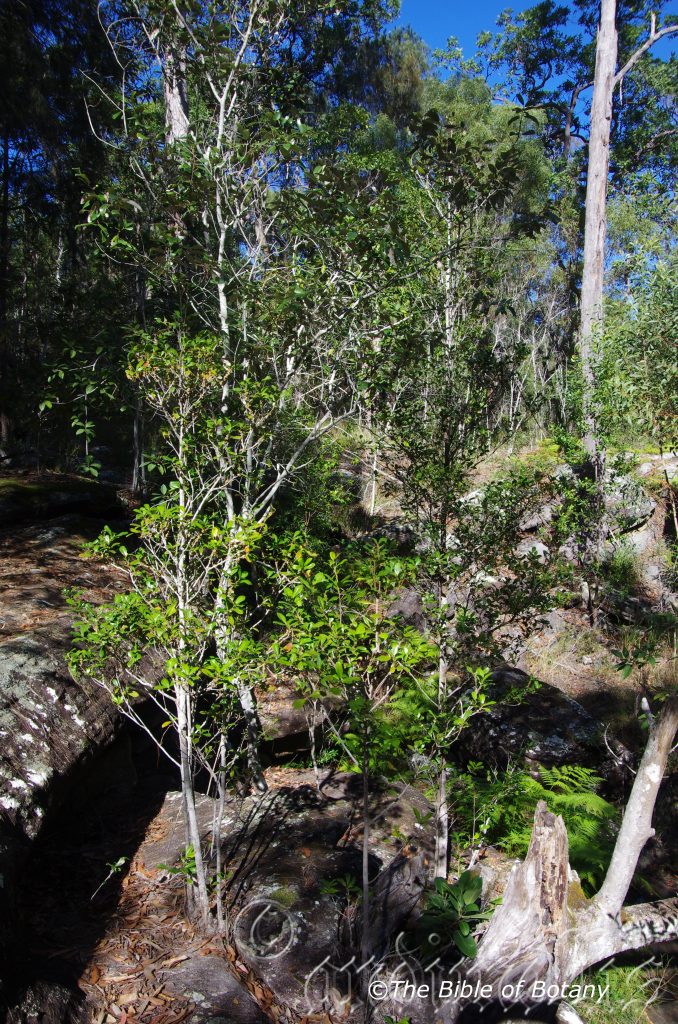
The Pinnacles NSW
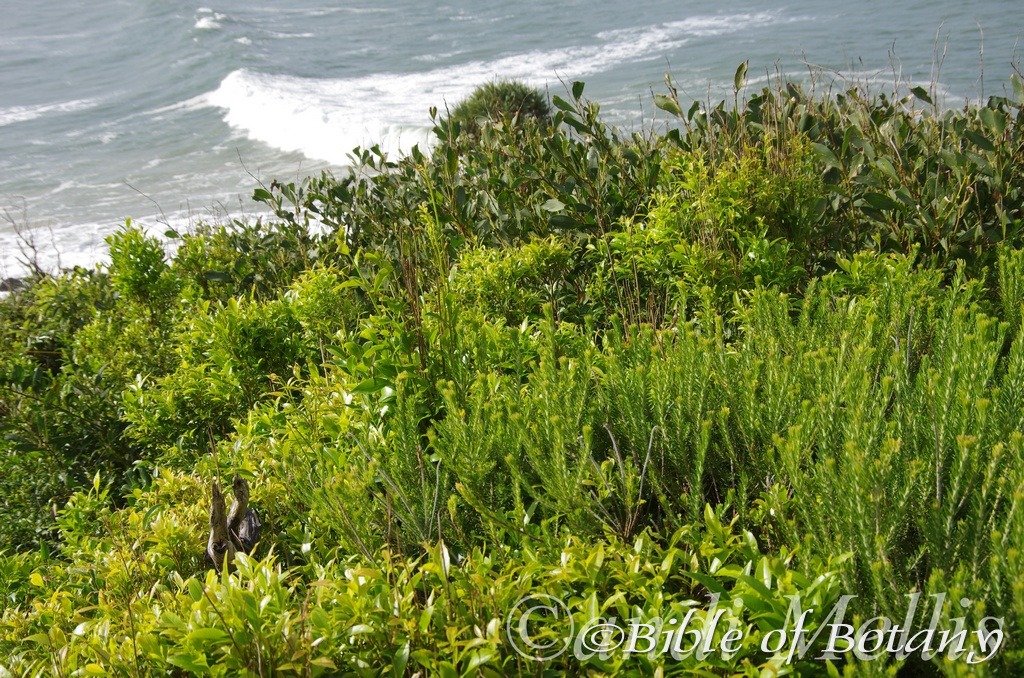
North Yuraygir National Park NSW
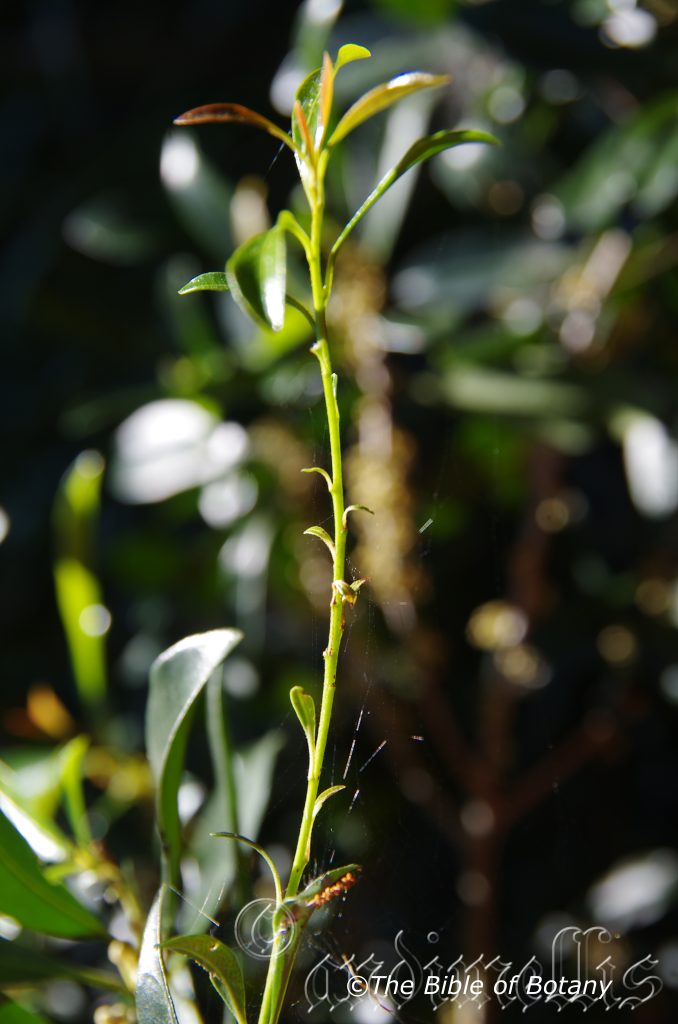
Rosser Gardens Benowa Qld.
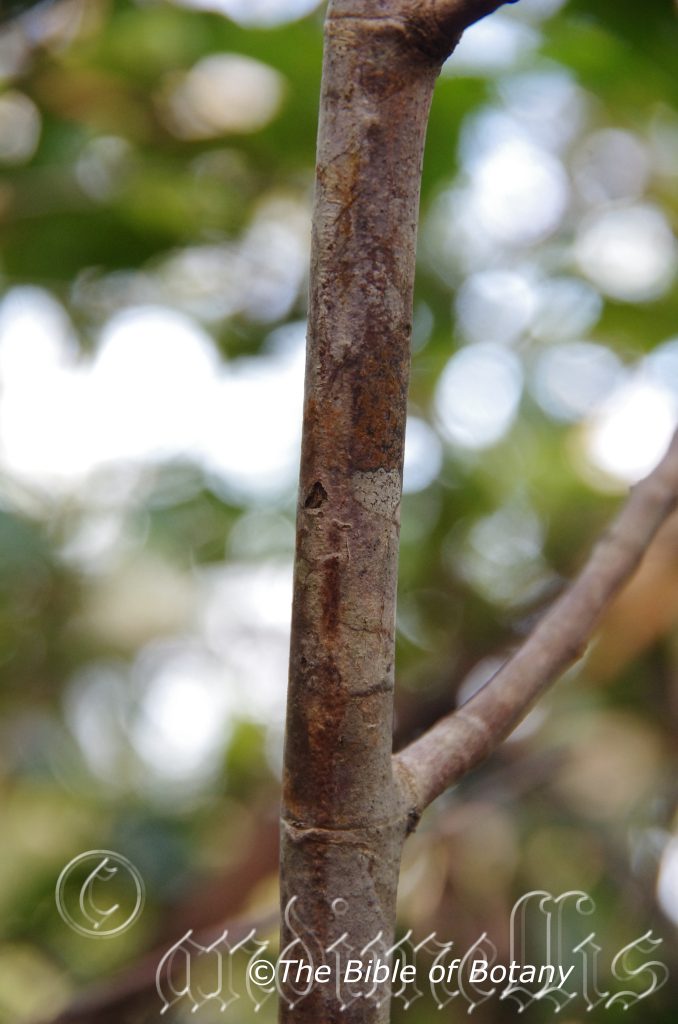
The Pinnacles NSW
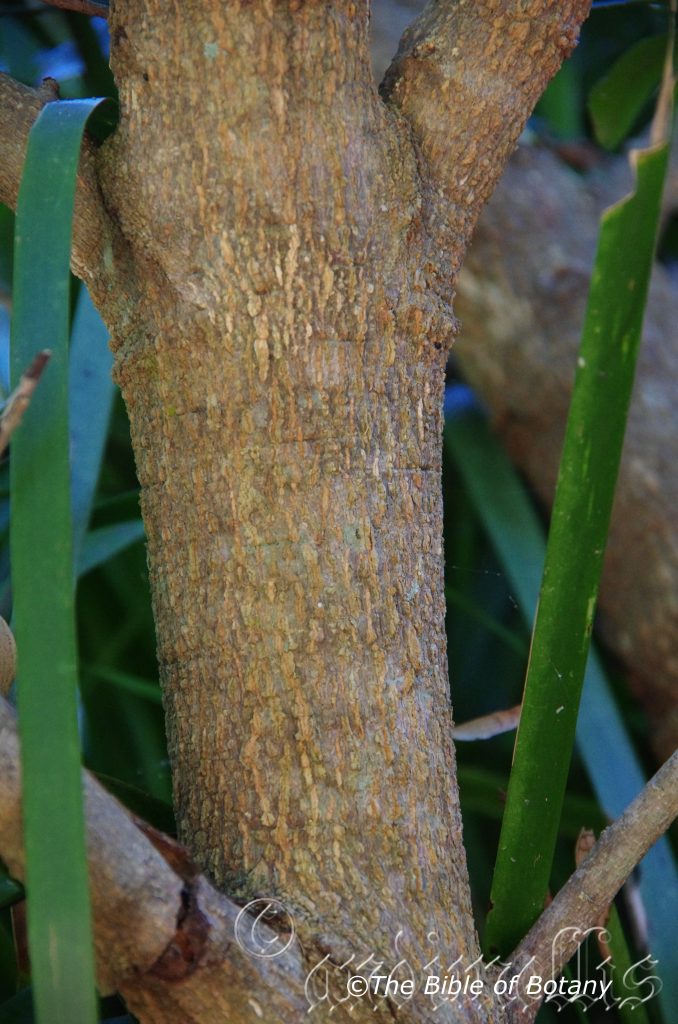
Rosser Gardens Benowa Qld.
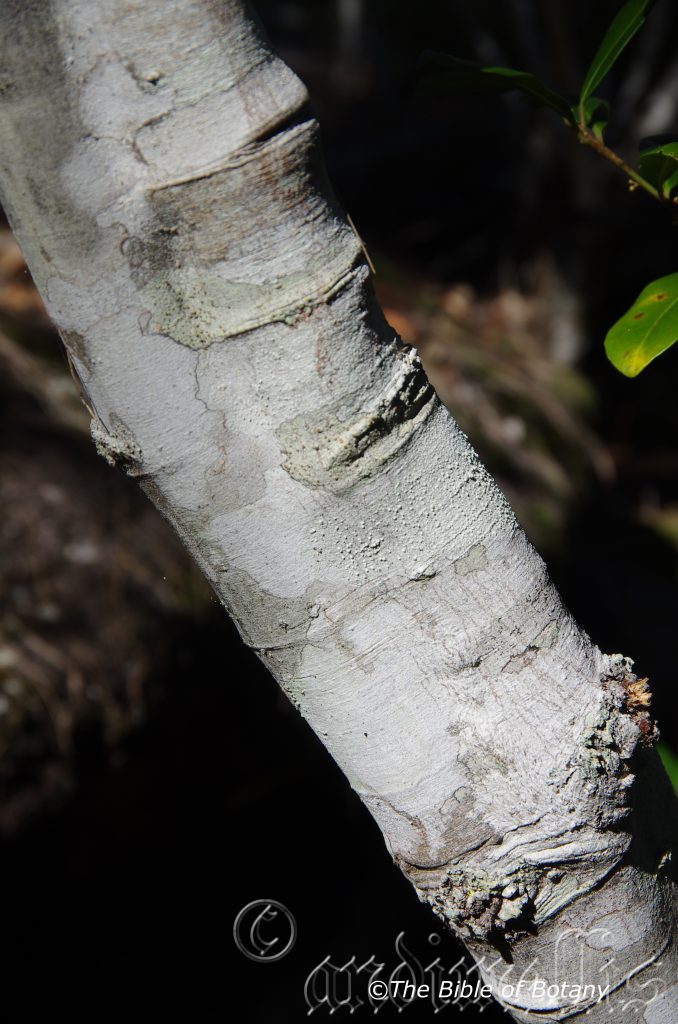
The Pinnacles NSW
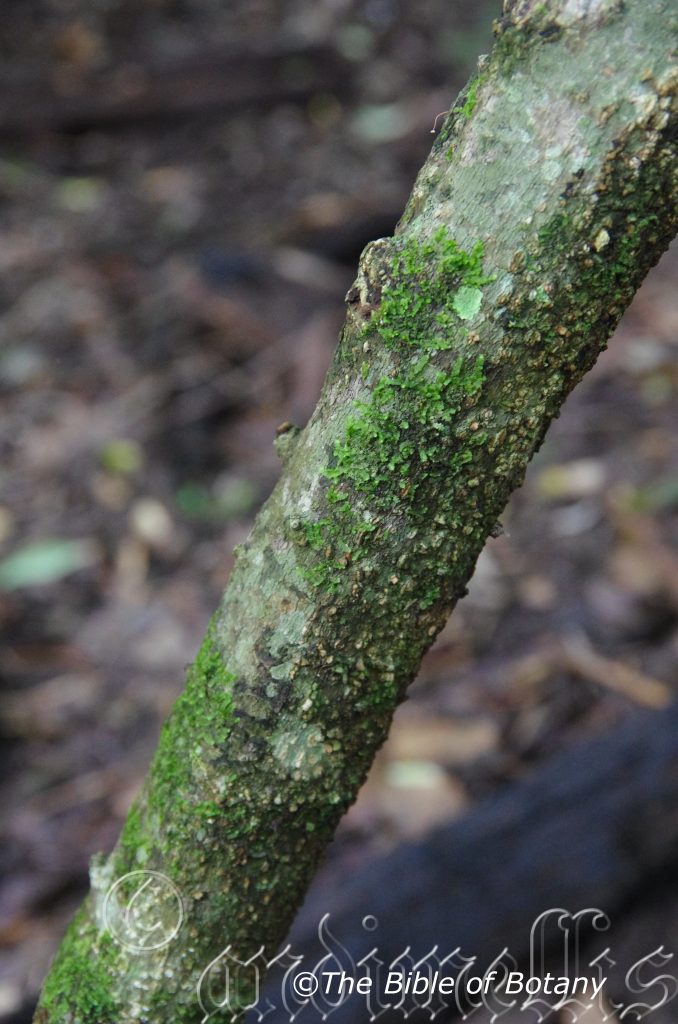
LBG Lismore NSW
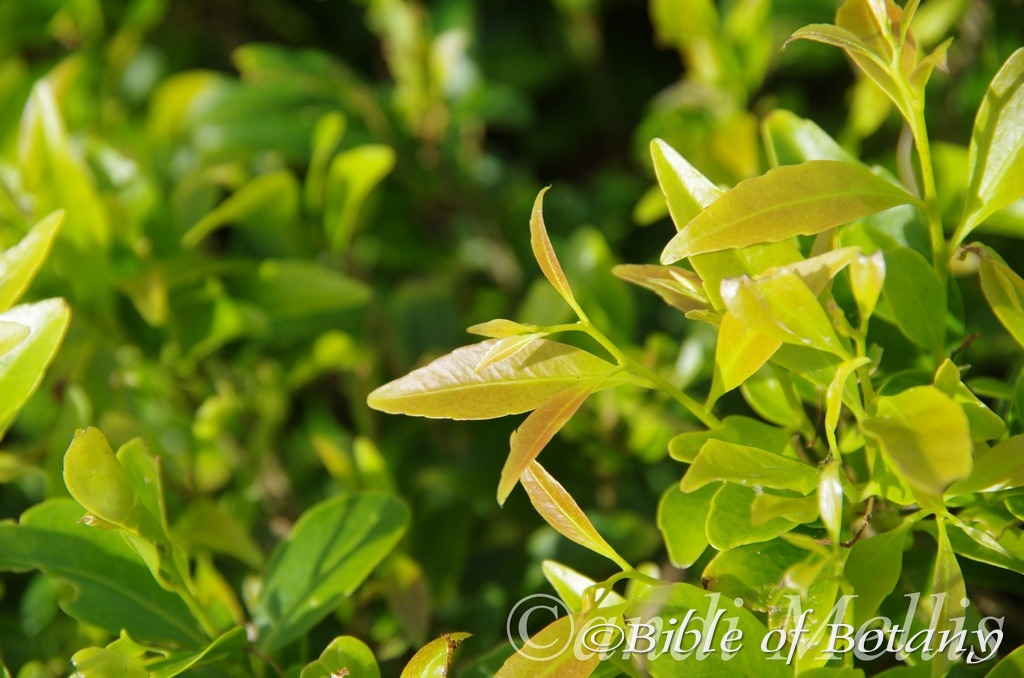
North Yuraygir National Park NSW
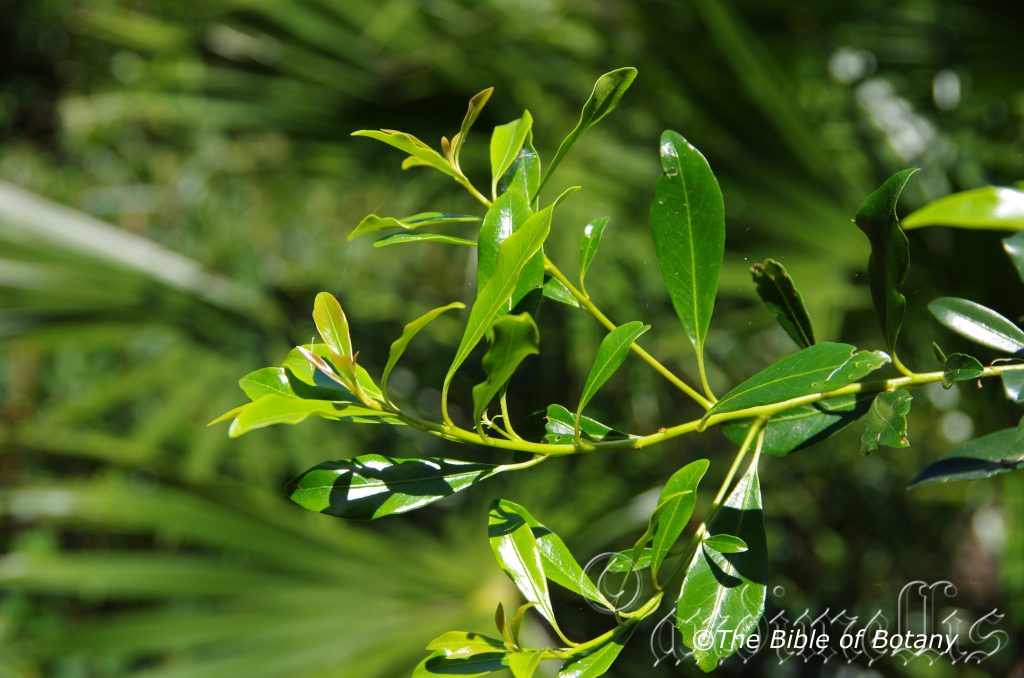
Rosser Gardens Benowa Qld.
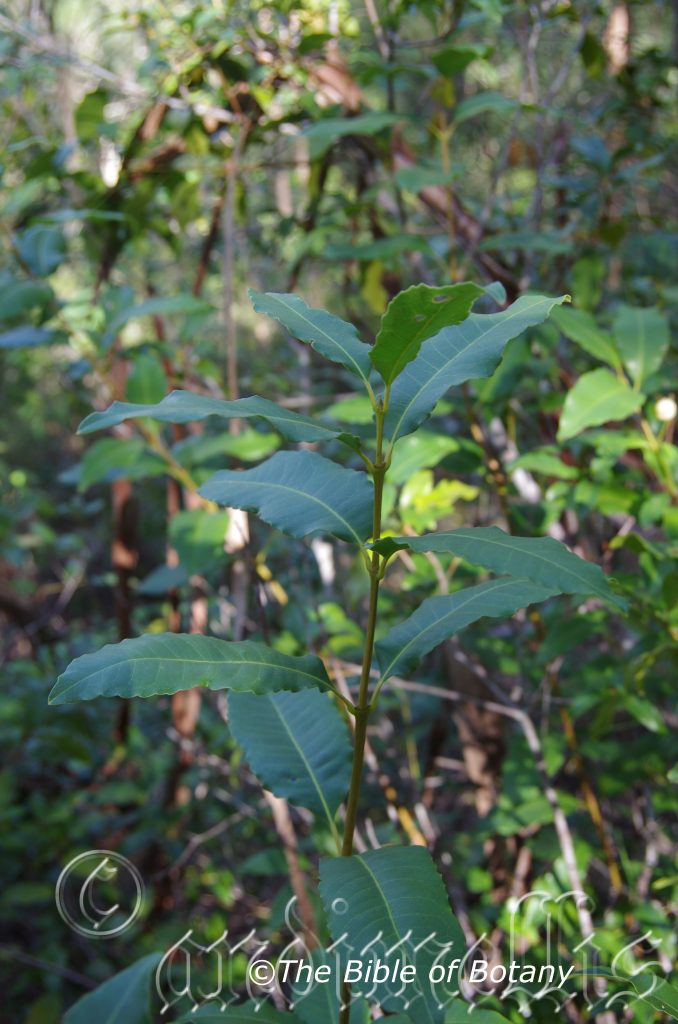
The Pinnacles NSW
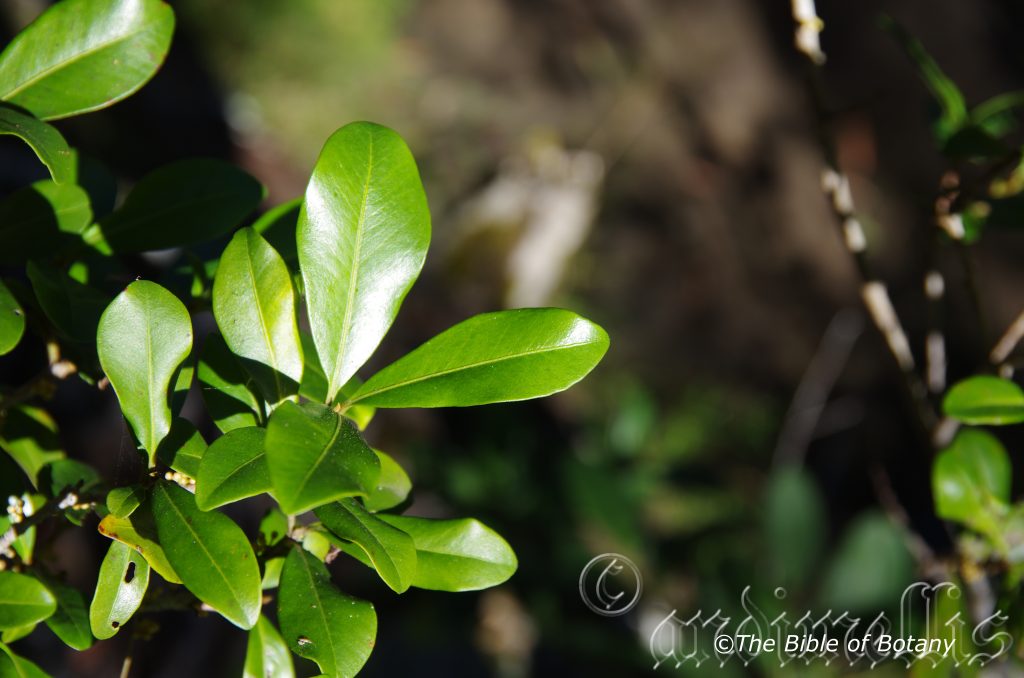
The Pinnacles NSW
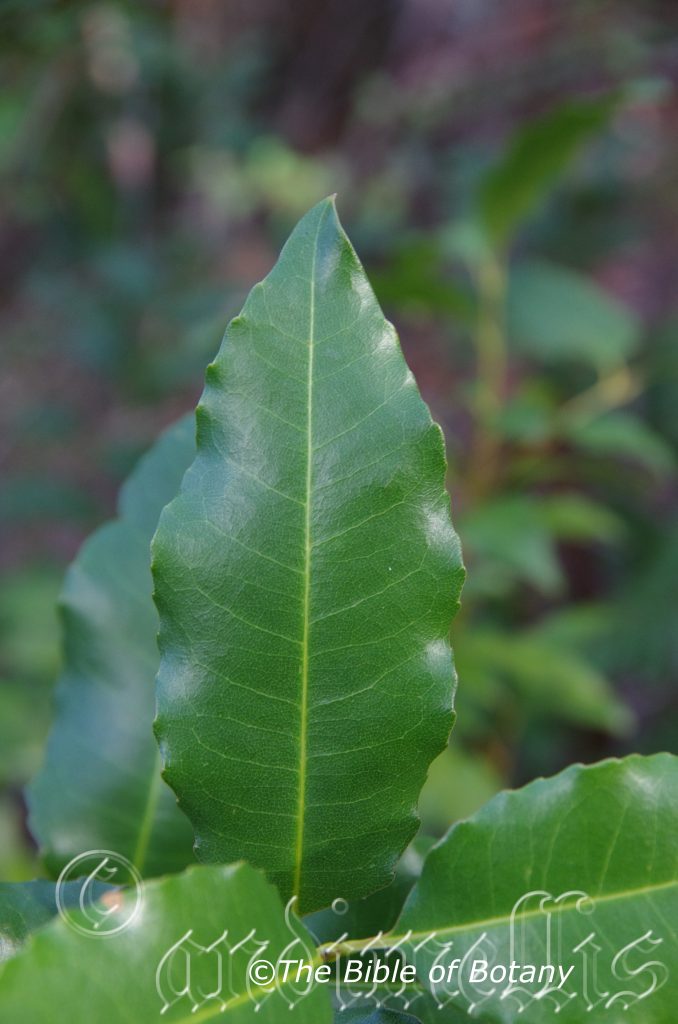
The Pinnacles NSW
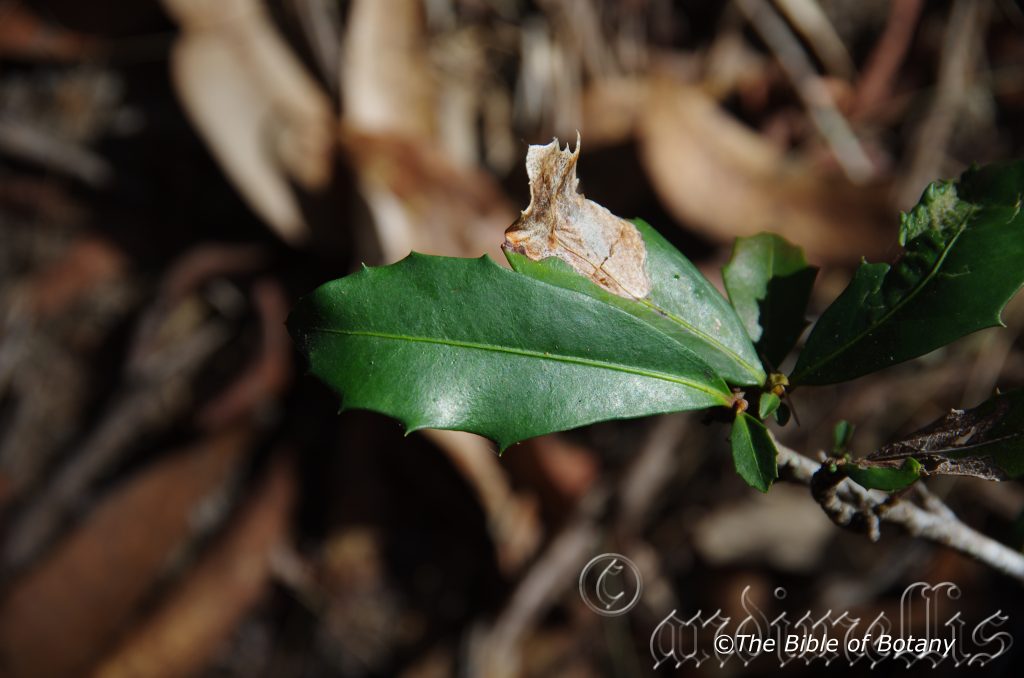
The Pinnacles NSW
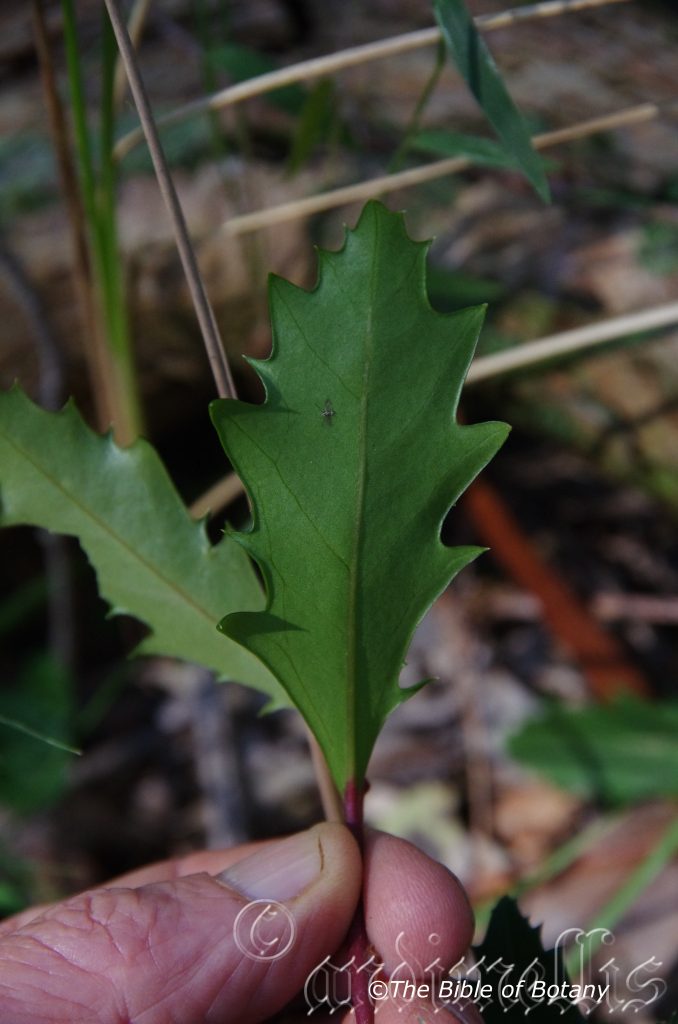
The Pinnacles NSW
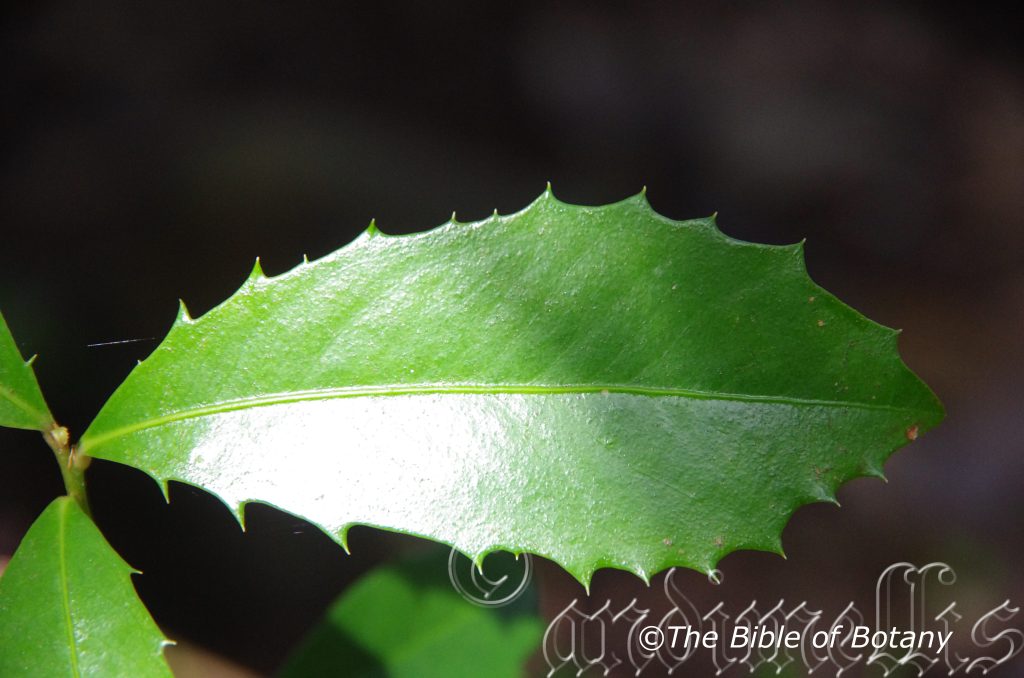
LBG Lismore NSW
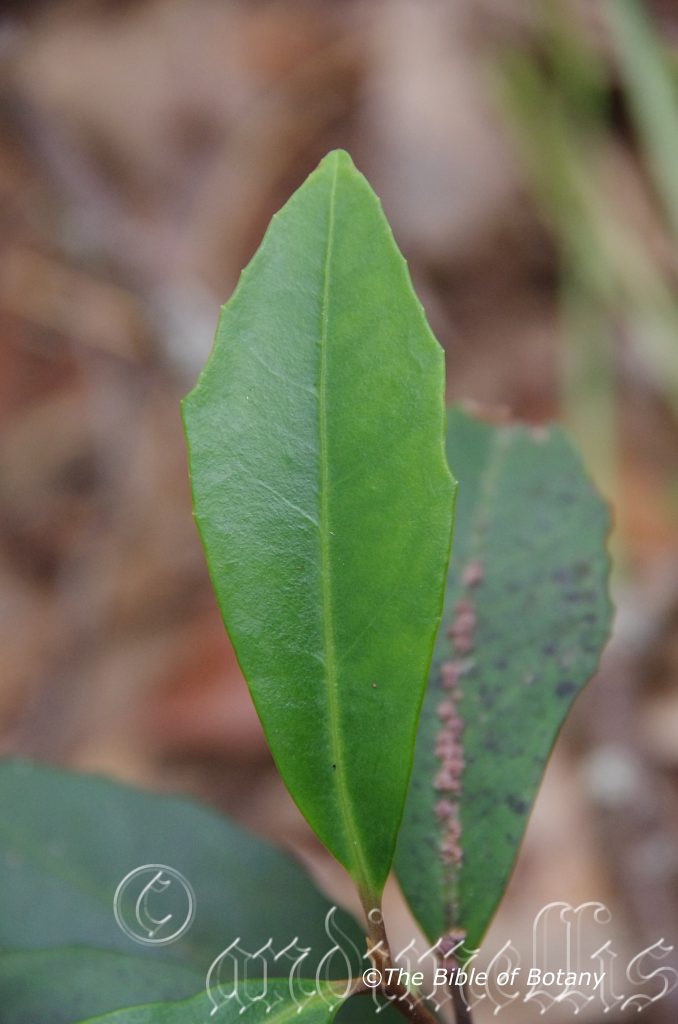
Pillar Valley NSW
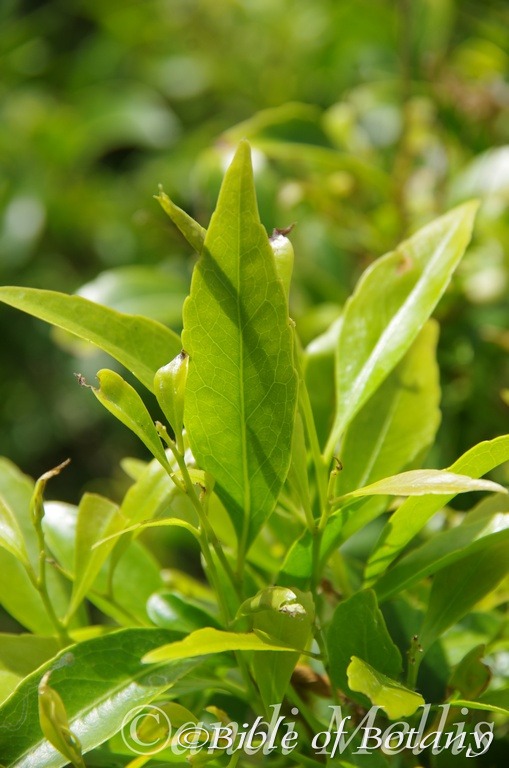
North Yuraygir National Park NSW
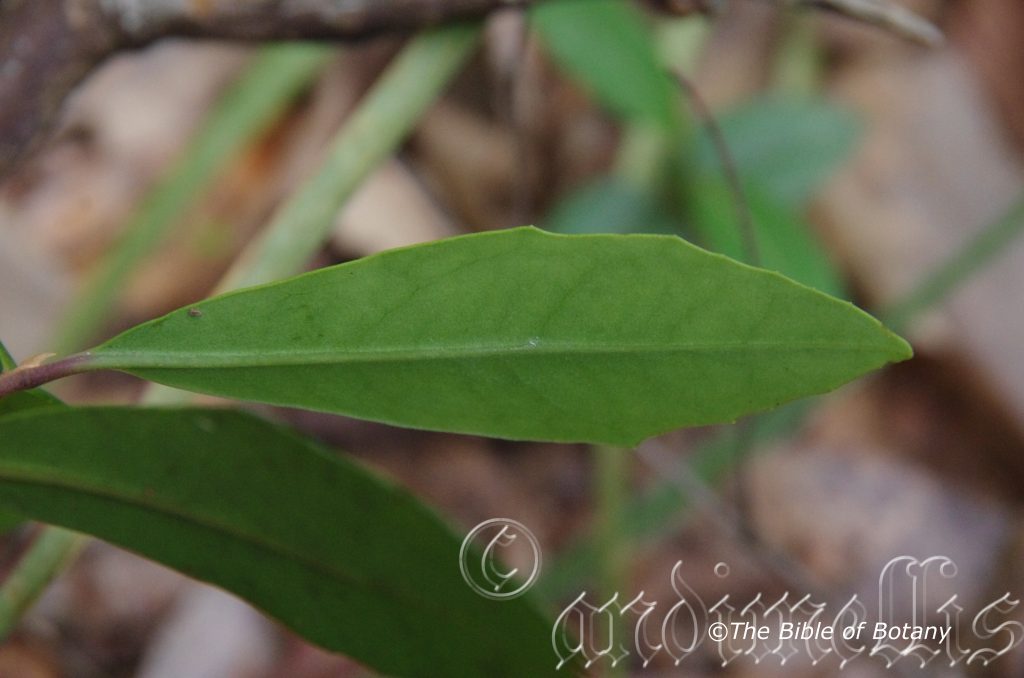
Pillar Valley NSW
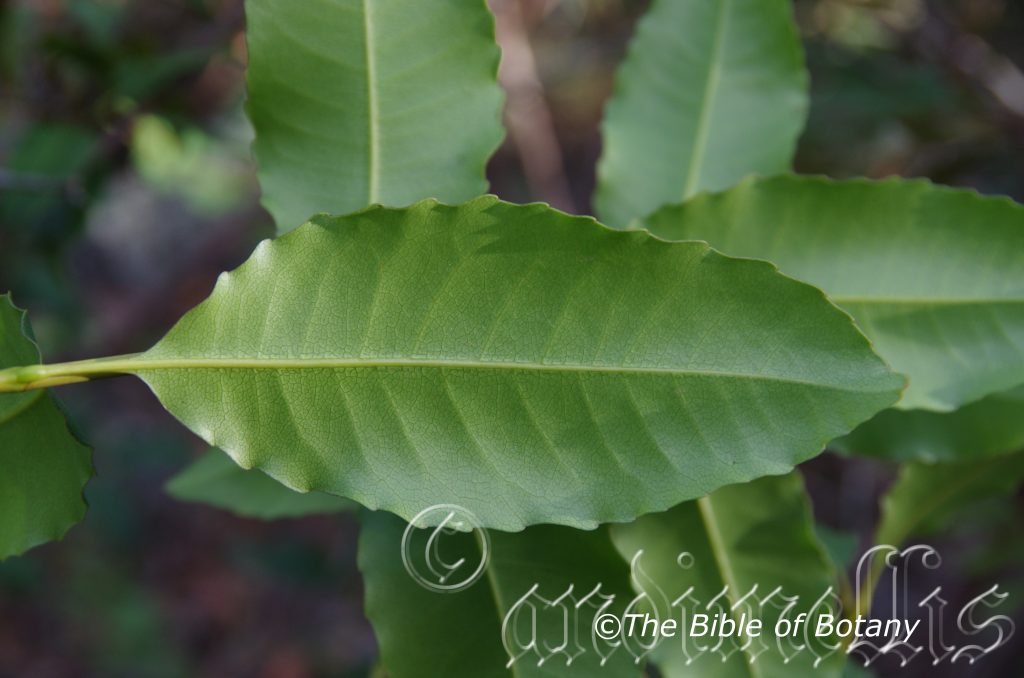
The Pinnacles NSW
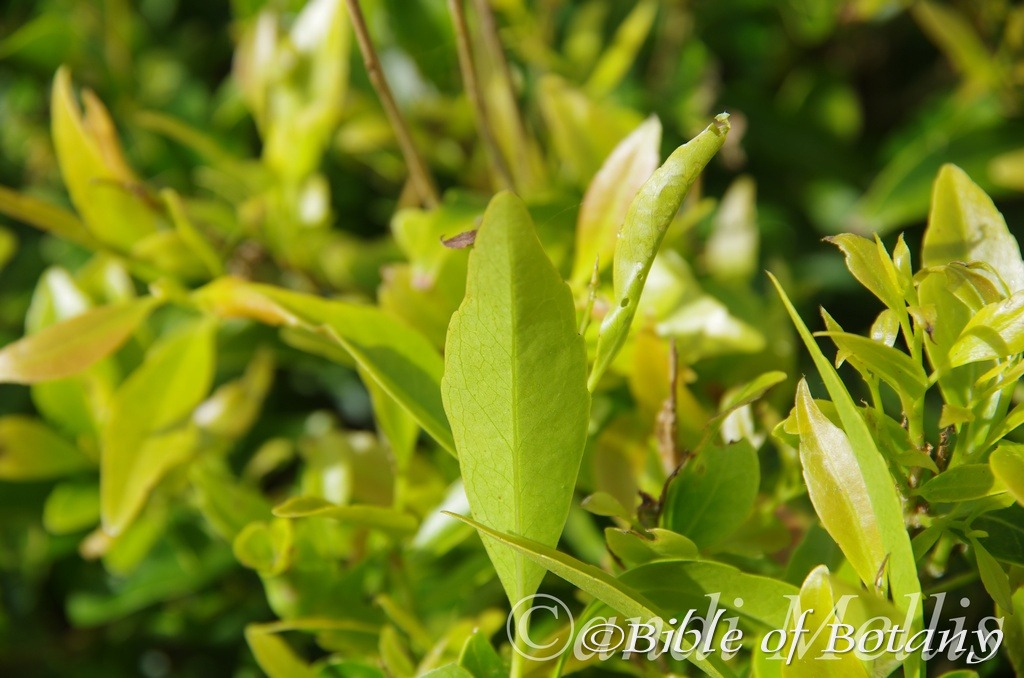
North Yuraygir National Park NSW
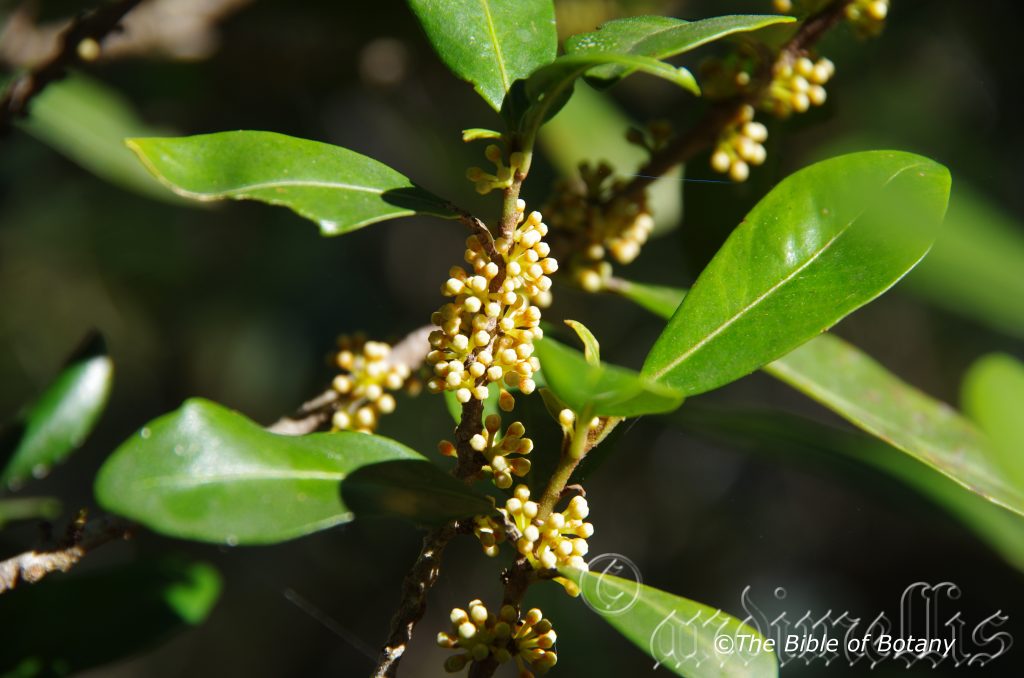
The Pinnacles NSW
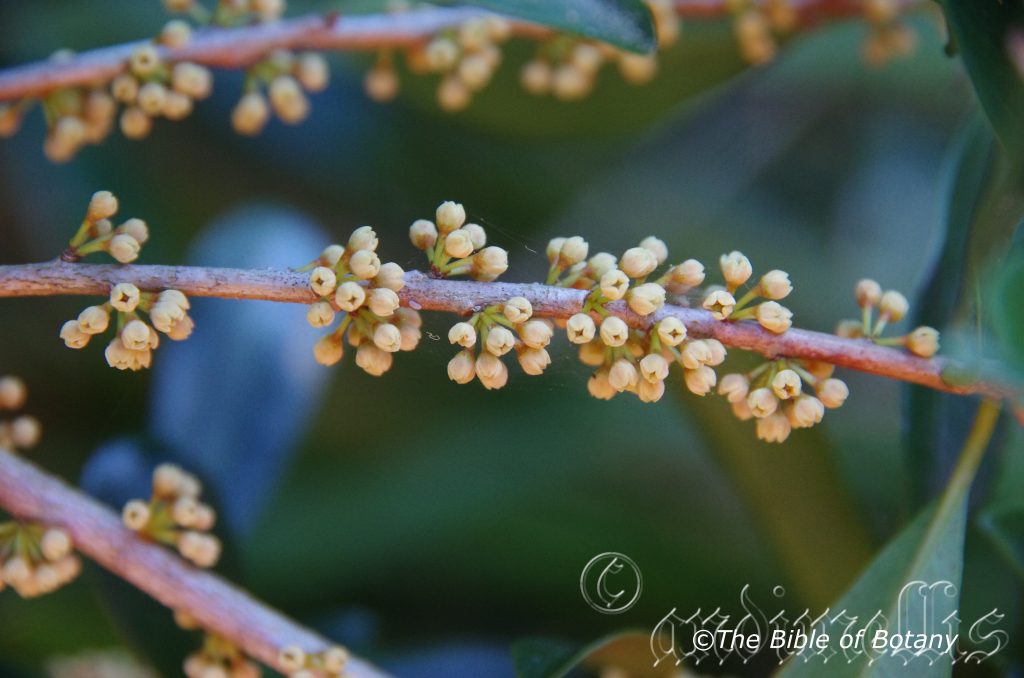
Rosser Gardens Benowa Qld.
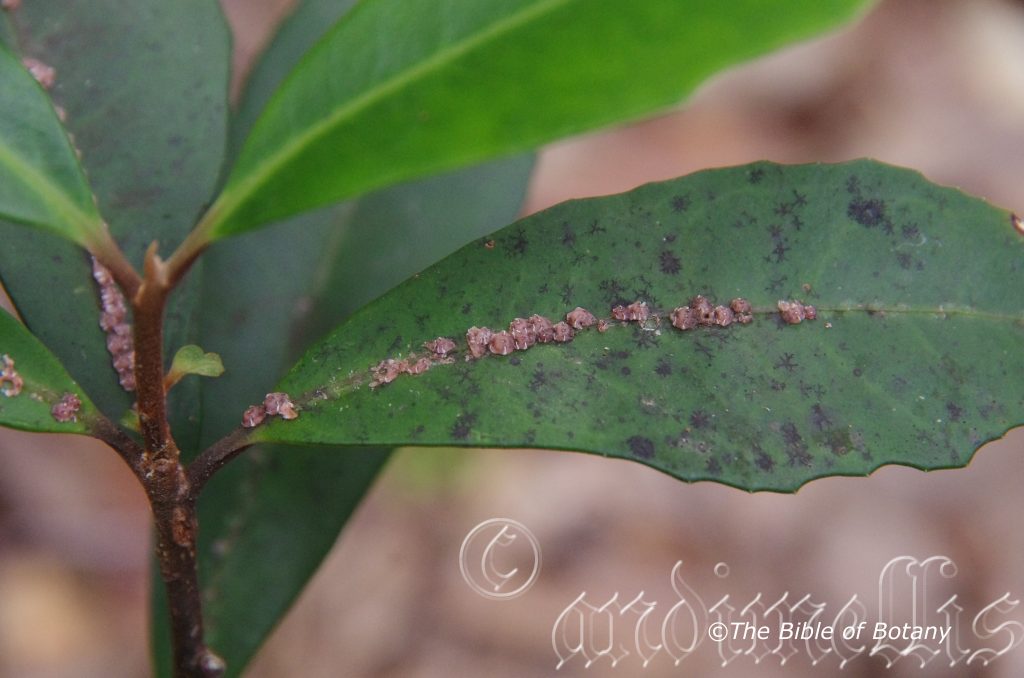
Pillar Valley NSW
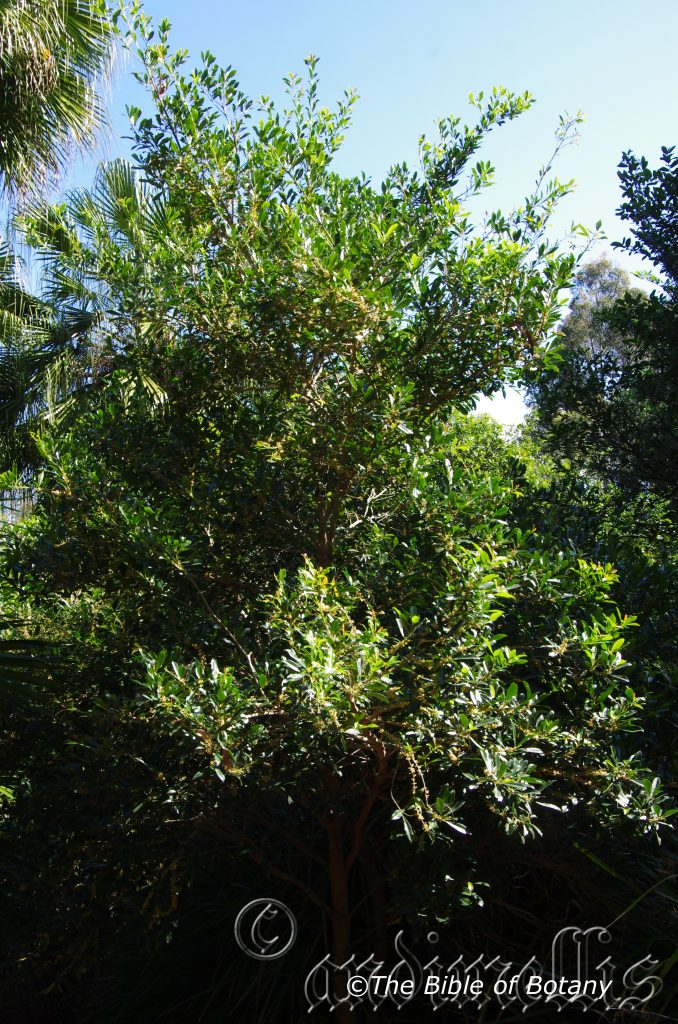
Rosser Gardens Benowa Qld.
Myrsine variabilis
Classification:
Unranked: Eudicots
Unranked: Asterids
Order: Ericales
Family: Myrsinaceae
Genus: From Myrsine, which is Ancient Greek for the old name of a myrtle. Many of the old Myrtle genus in Australia were transferred to this Genus.
Specie: From Varius which is Latin for different. It refers to the juvenile leaves to the adult leaves, which have great variation.
Sub specie:
Common Name: Mutton wood.
Distribution:
Myrsine variabilis is found south from Proserpine and Hamilton Island to Milton in central coastal New South Wales. It is mainly found on both sides of the Great Dividing Range to the coast.
https://avh.ala.org.au/occurrences/search?taxa=Myrsine+variabilis#tab_mapView
Habitat Aspect Climate:
Myrsine variabilis prefers dappled shade to full sun. It grows warm well-developed rainforests, littoral rainforests or immediately behind mangrove forests. It is common along riparian zones creek, stream and river estuary flats. The altitude ranges from 10 meter ASL to 800 meters ASL.
The temperatures range from minus 3 degrees in July to 36 degrees in January.
The rainfall ranges from lows of 1200mm to 1800mm average per annum.
Soil Requirements:
Myrsine variabilis prefers to grow on shallow to deep sandy loams to medium clays. The soils are usually derived from decomposed granites, sandstones, metamorphic rocks brown basalts or black basalts. The soils pH ranges from 4.5pH to 6pH. It does not tolerate waterlogged soils. Non saline soils to moderately saline soils are tolerated.
Height & Spread:
Wild Plants: 4m to 12m by 3m to 7m.
Characteristics:
Myrsine variabilis’s main trunk is pale grey to mid-grey and glabrous. The bole of the trunk is over half the height on a mature tree. The young stems are pale grey to mid-grey-brown and covered in lenticels. The immature stems are olive-green to mid grass-green and glabrous. The trunk and larger branches are often mottled in green and blue greens of mosses and lichens which will grow quickly under ideal conditions.
Myrsine variabilis’s alternate to almost opposite simple oblanceolate to obovate leaves measure 30mm to 110mm in length by 15mm to 40mm in width. The base is tapering to cuneate while the apex is bluntly acute. The discolourous laminas are pale grass-green to mid grass-green, glossy and glabrous on the upper lamina while the lower lamina is slightly paler, and dull. The immature leaves and newly emerging leaves are deep bronze and glossy. The margins are entire or slightly undulating or sparsely covered in stiff, prickly teeth. The margins on juvenile plants are strongly in prickles teeth. The lamina curves slightly upwards from the mid vein. The mid vein is prominent on the upper lamina and is distinctly visible on the lower lamina. There are 18 to 22 lateral veins evenly spaced either side of the main vein. The petioles are glabrous and measure 3mm to 7mm in length. Oil dots are numerous and prominent near the leaf margins.
The inflorescence of Myrsine variabilis trees are dioecious with male and female flowers numbering about the same. The inflorescence of Myrsine variabilis are born in groups of 4 to 8 flowers from the previous year’s growth. Both male and female flowers pedicels measure 3mm to 5mm in length. The creamy yellow to pale cream corolla tubes measure 1.5mm to 2mm in length. The 5 elliptical calyx lobes measure 0.6mm to 1mm in length. The corolla and lobes are covered in fine pappilose lumps externally.
The stigma is short and capitate while the 5 stamens are inserted
The sweet scent of the flowers will linger over a wide area. The flowers appear from mid-July right through to mid-November.
Myrsine variabilis’s fruit is a flattened globular drupe with a sunken apex. The green drupes turn pink then a deep purple-blue when ripe while the flesh is white. They measure 4.5mm to 5mm in diameter by 4mm to 4.5mm in depth. The calyx is persistent at the base of the fruit. The fruits ripen from September to January.
The ovate seeds are brown, glabrous and measure 2mm to 3mm in length by 2mm to 3mm in diameter.
Wildlife:
Myrsine variabilis’s fruits are eaten by fruitigrove Pigeons and Honeyeaters including Lewin’s Honeyeater Meliphaga lewinii, the Emerald dove Chalcophaps indica, the brown pigeon Macropygia phasianella and the fig bird Sphecotheres vieilloti. The pink wax scale Ceroplastes rubens has been observed on the leaves.
The fruits are edible.
Cultivation:
Myrsine variabilis would make an excellent small tree where there is filtered light and poor drainage due to seasonal seepage. It may also be very suitable for growing below septic trenches. This could be the one area where they will excel with their sweetly scented flowers and utilization of water and nutrient from the septic trenches. It is very suitable on medium clays to heavy clay soils provided there is plenty of mulch available at all times. It is most suitable for small medium and large gardens close to the coast in warm temperate, warm sub-tropical or tropical gardens. As garden subjects they will grow from 6 meters to 8 meters in height by 5 meters to 6 meters in diameter when grown in the open.
It can be used as a rainforest understory shrub or on the edge of a forest where they will develop into a small densely foliaged tree. The trees are suitable for all orchids and epiphytic ferns especially those that prefer darker conditions like Pyrossia rupestre, Pyrossia longifolia and Asplenium sp. or some of the climbing Microsorum scandens. In a rainforest situation they will also support many different varieties of lichens and mosses.
If grown as a small tree in moist situations areas companion planting with ferns will give a cool scene to ponder and also help to drain the area as ferns are an excellent source for water reduction.
Propagation:
Seeds: Myrsine variabilis seeds can be sown into a seed raising mix. Cover the seeds with 2mm to 3mm of fine weed free mulch and keep moist. Place the tray in a warm sunny position. Do not allow the trays to dry out. When the seedlings are 30mm to 50mm tall, prick them out and plant them into 50mm native tubes using a good organic mix.
Once the seedlings reach 100mm to 150mm in height they can be planted out into their permanent position.
Fertilize using full strength seaweed, fish emulsion or organic chicken pellets soaked in water and apply the liquid on an alternate basis. Fertilize every month until the plants are established then once a year there after in spring or autumn to maintain health, vigor and better flowering.
Further Comments from Readers:
Hi reader, it seems you use The Bible of Botany a lot. That’s great as we have great pleasure in bringing it to you! It’s a little awkward for us to ask, but our first aim is to purchase land approximately 1,600 hectares to link several parcels of N.P. into one at The Pinnacles NSW Australia, but we need your help. We’re not salespeople. We’re amateur botanists who have dedicated over 30 years to saving the environment in a practical way. We depend on donations to reach our goal. If you donate just $5, the price of your coffee this Sunday, We can help to keep the planet alive in a real way and continue to bring you regular updates and features on Australian plants all in one Botanical Bible. Any support is greatly appreciated. Thank you.
In the spirit of reconciliation we acknowledge the Bundjalung, Gumbaynggirr and Yaegl and all aboriginal nations throughout Australia and their connections to land, sea and community. We pay our respect to their Elders past, present and future for the pleasures we have gained.